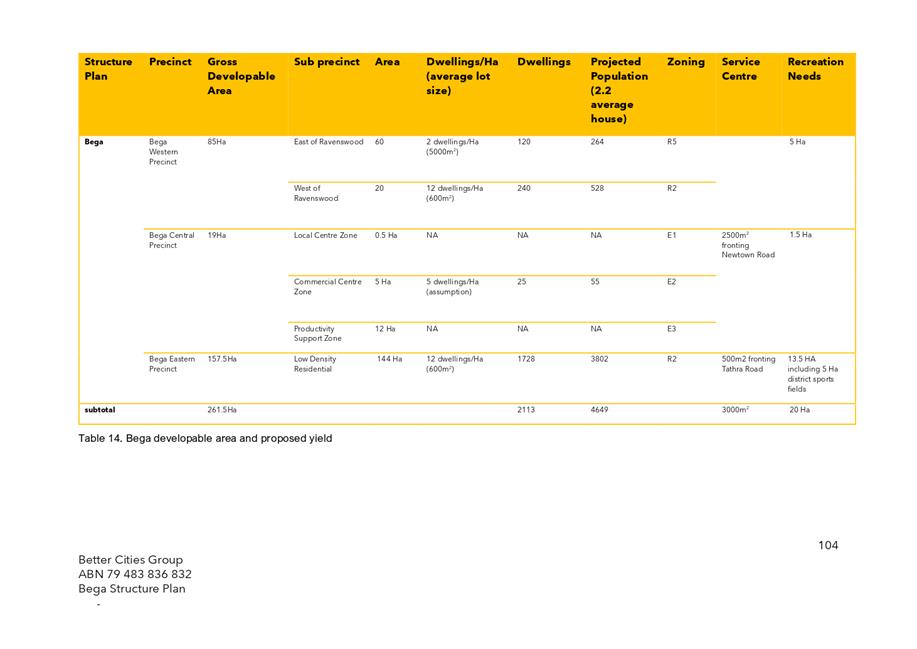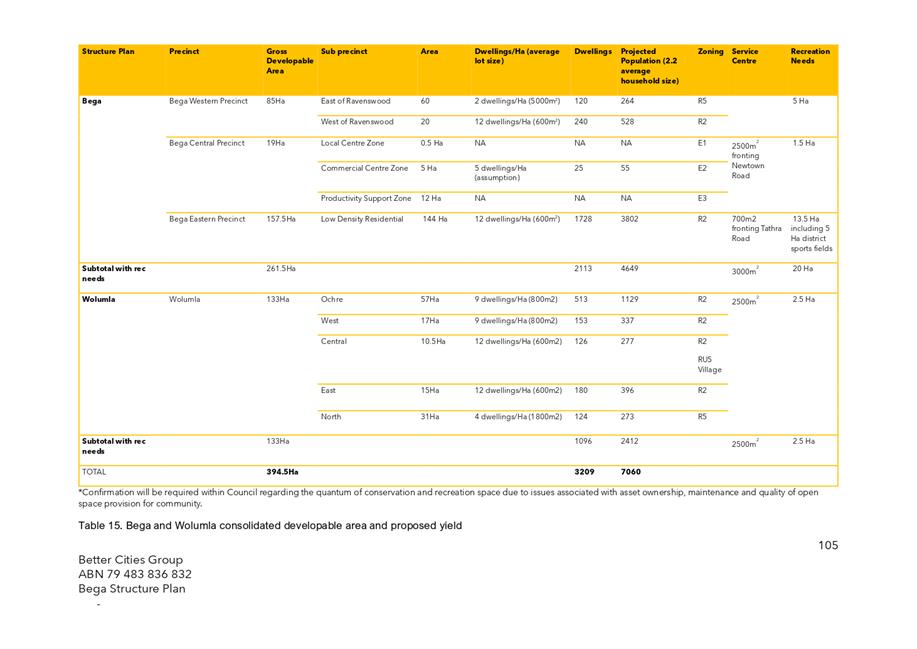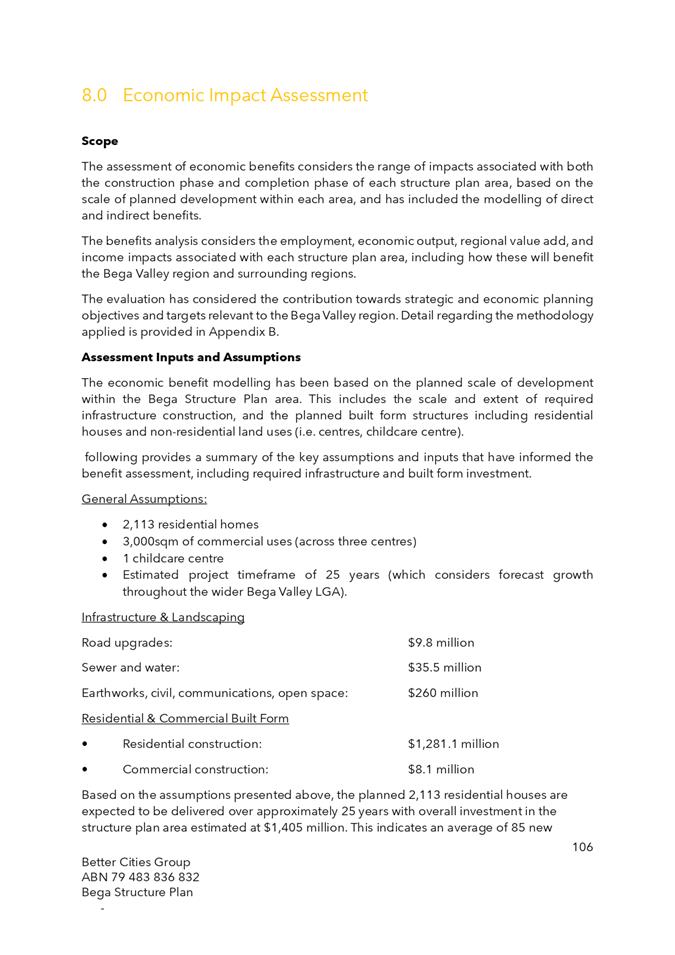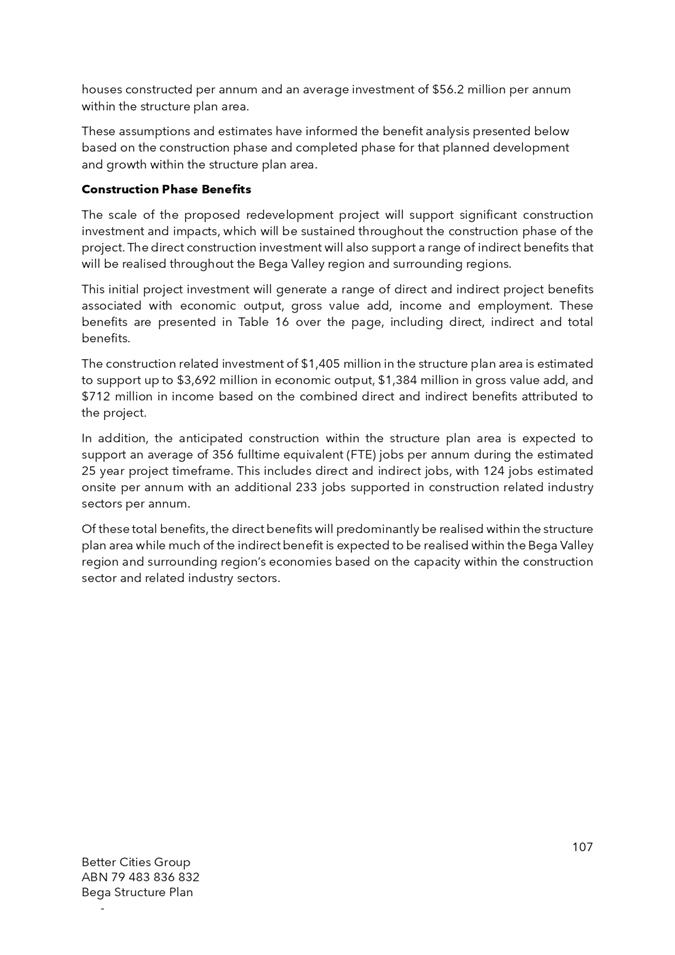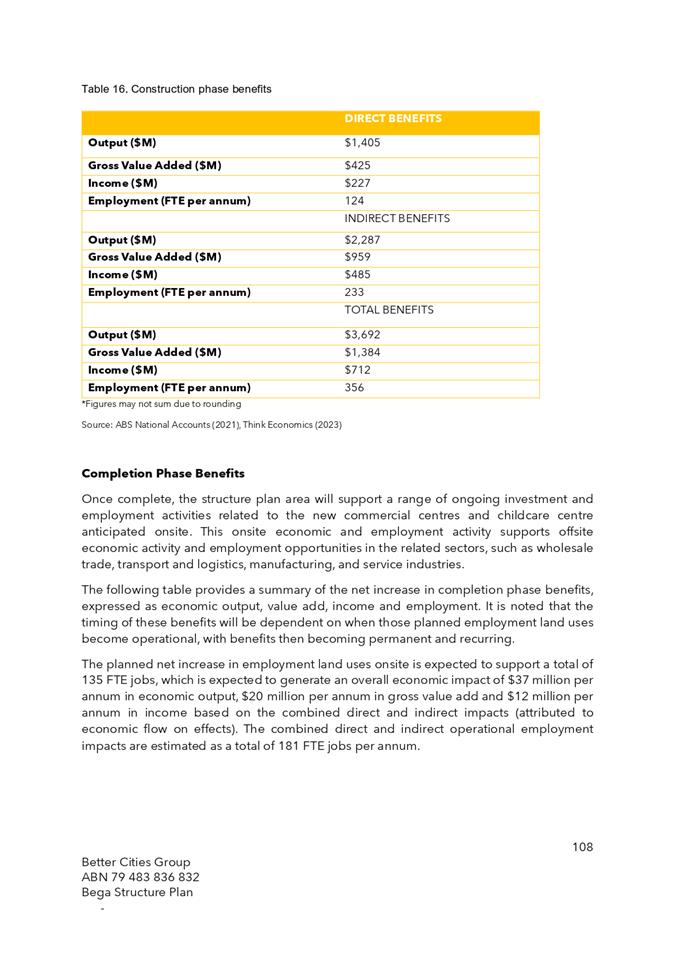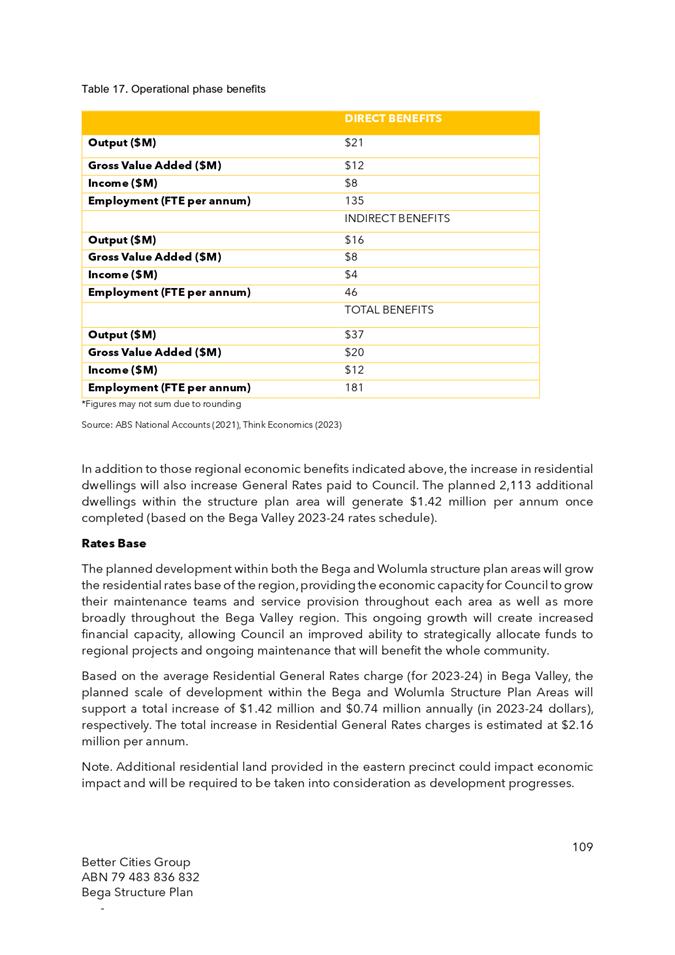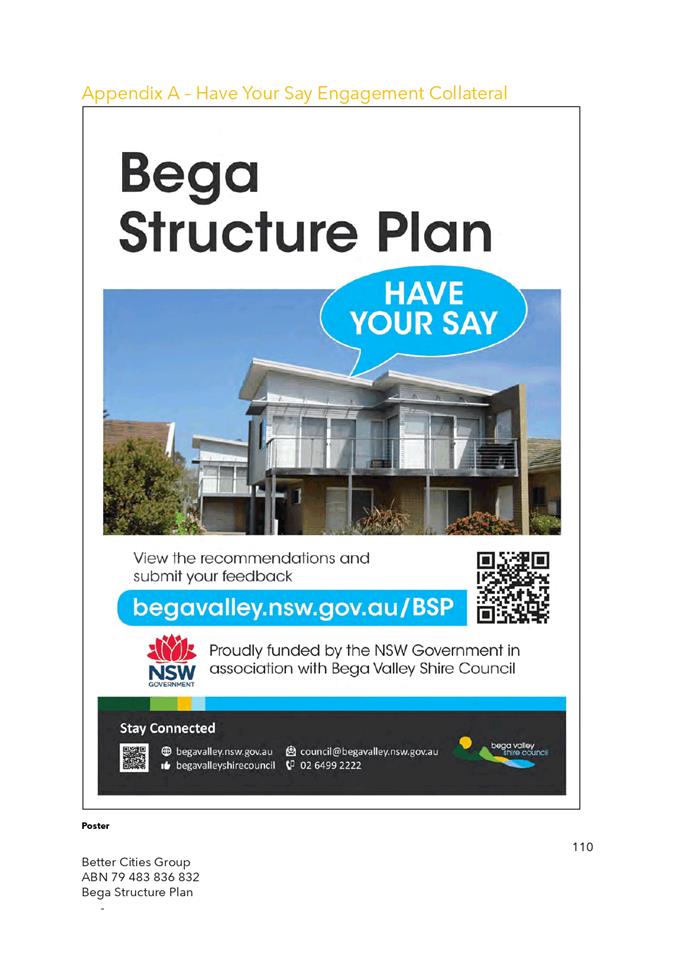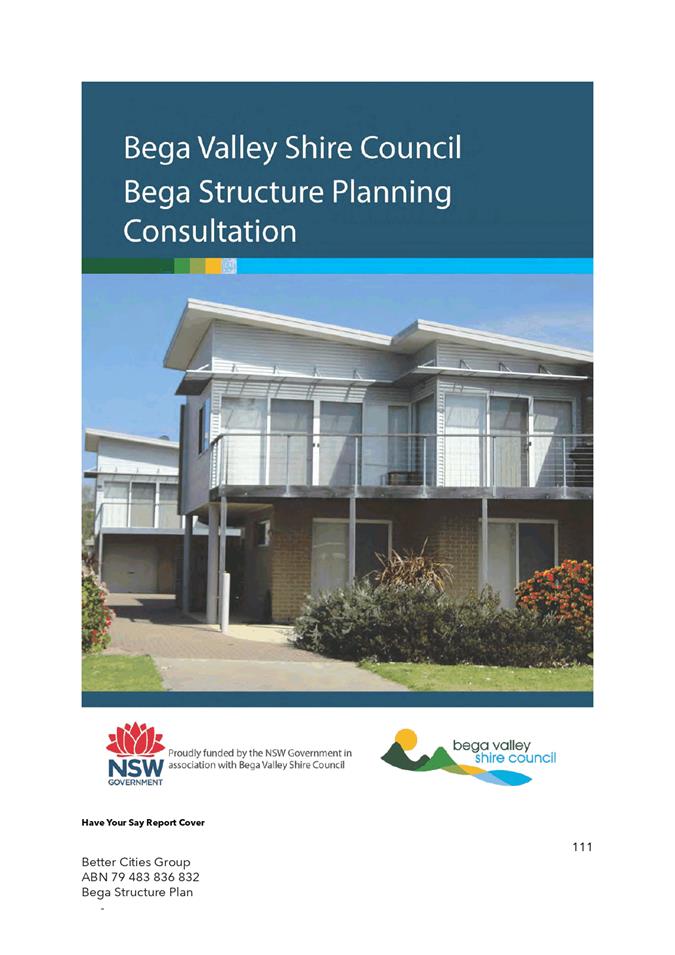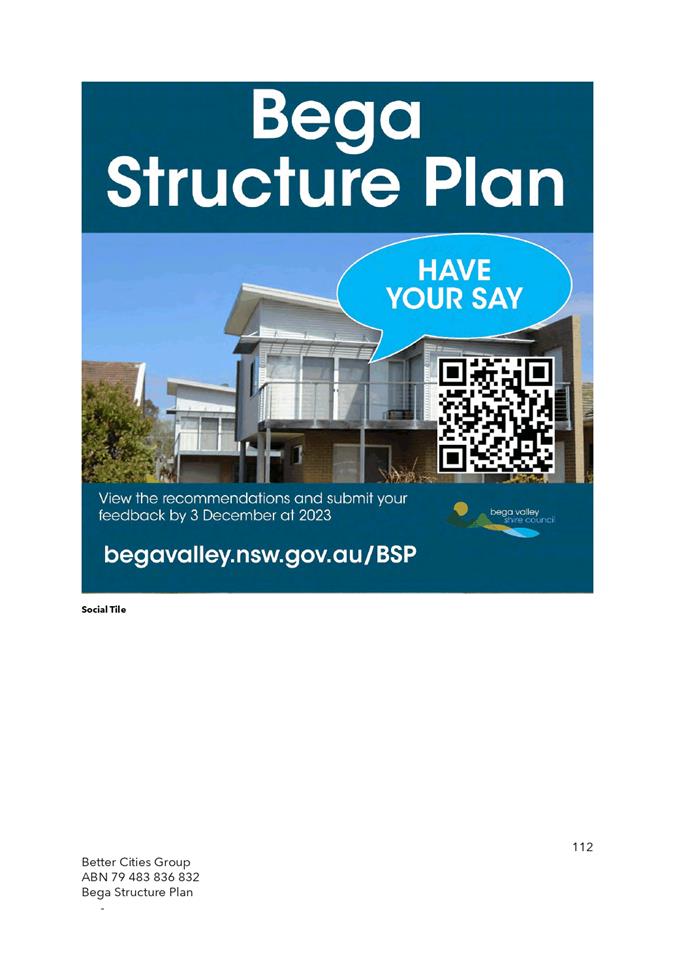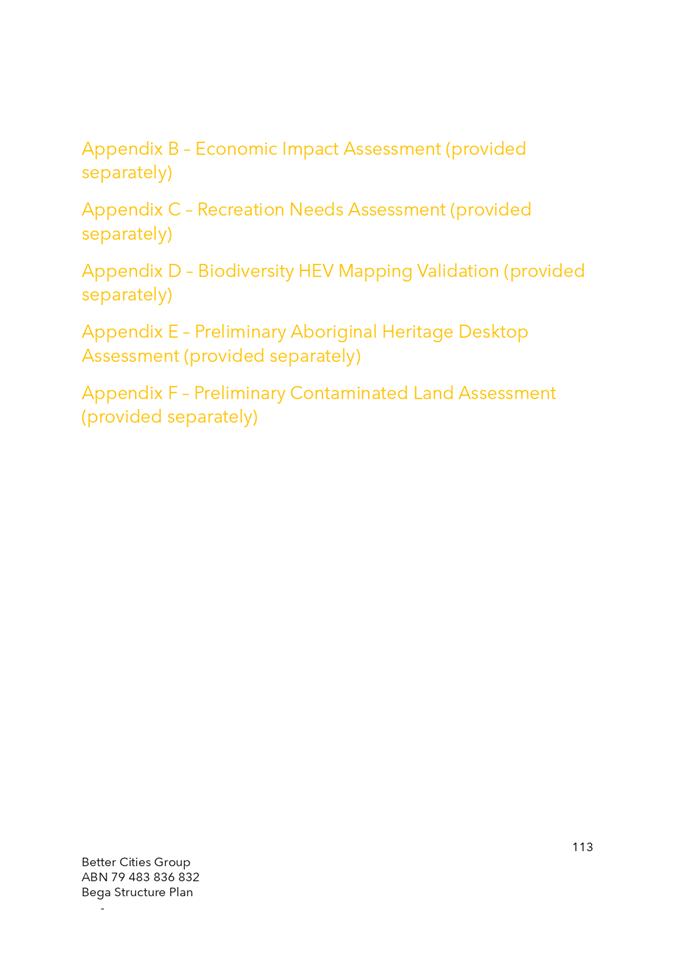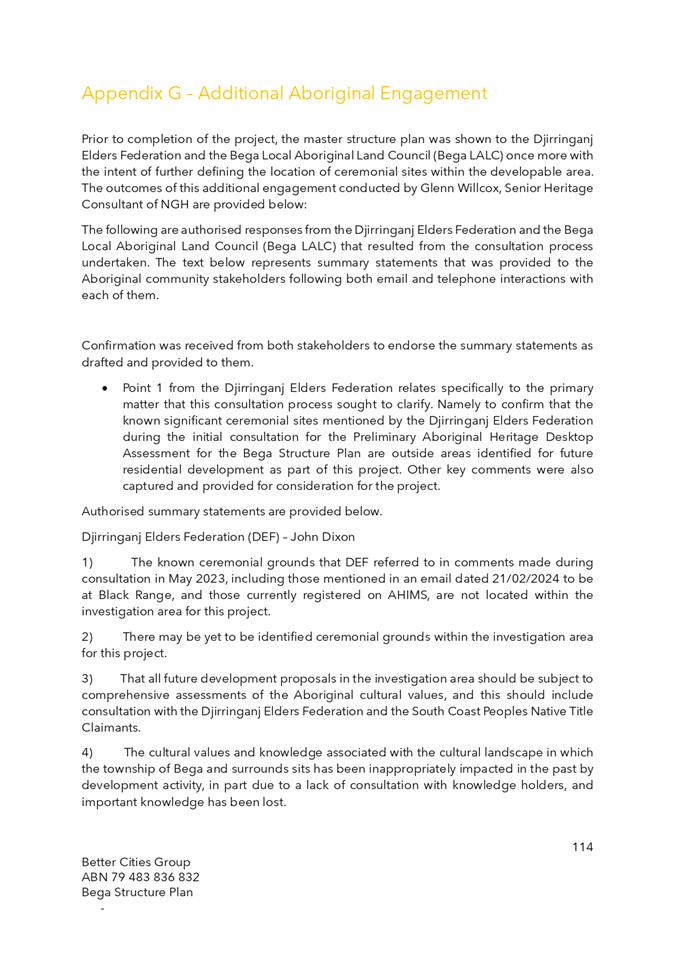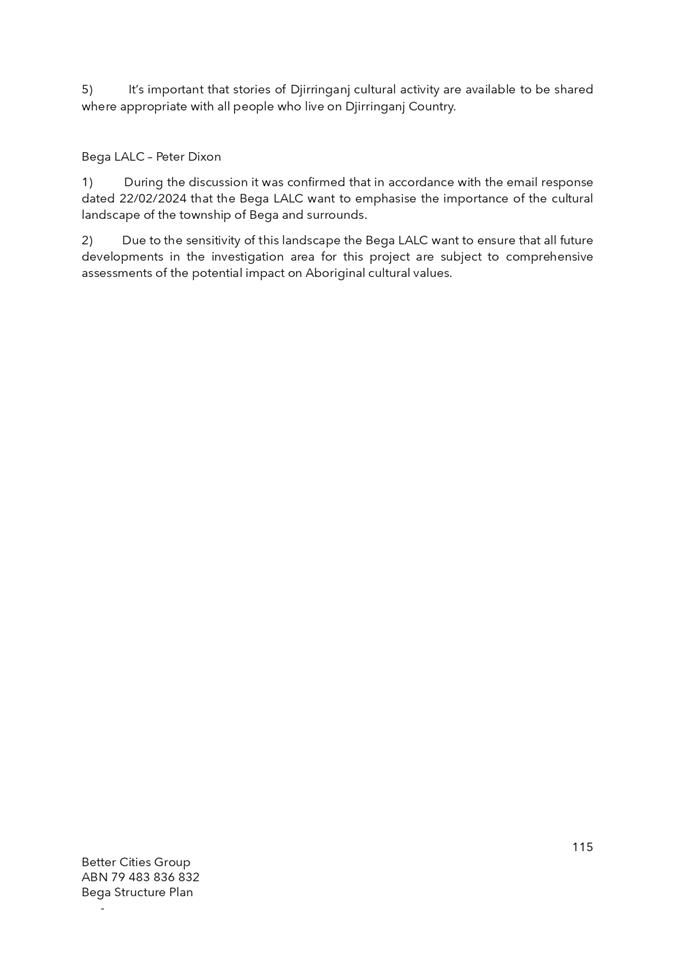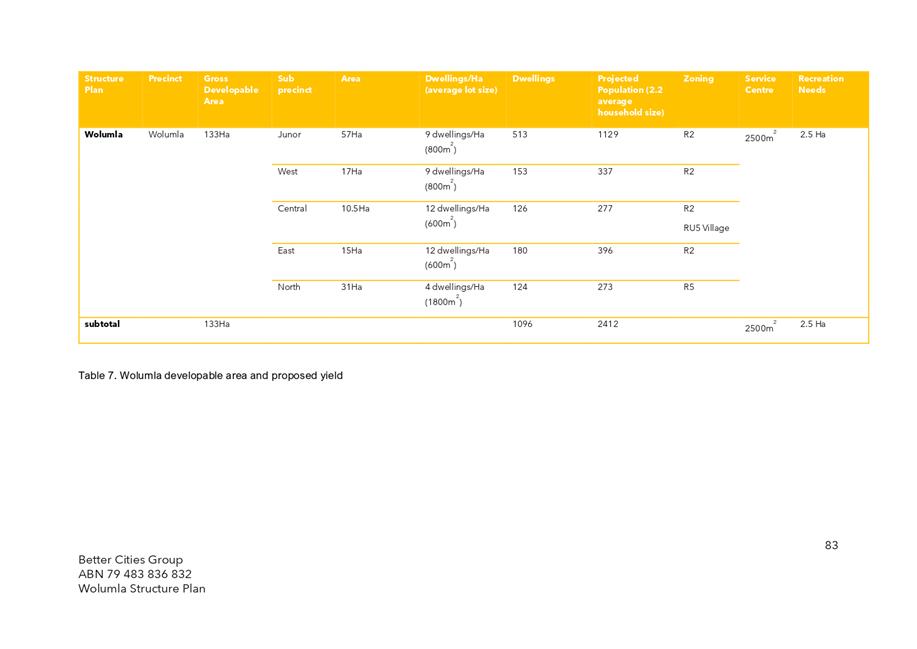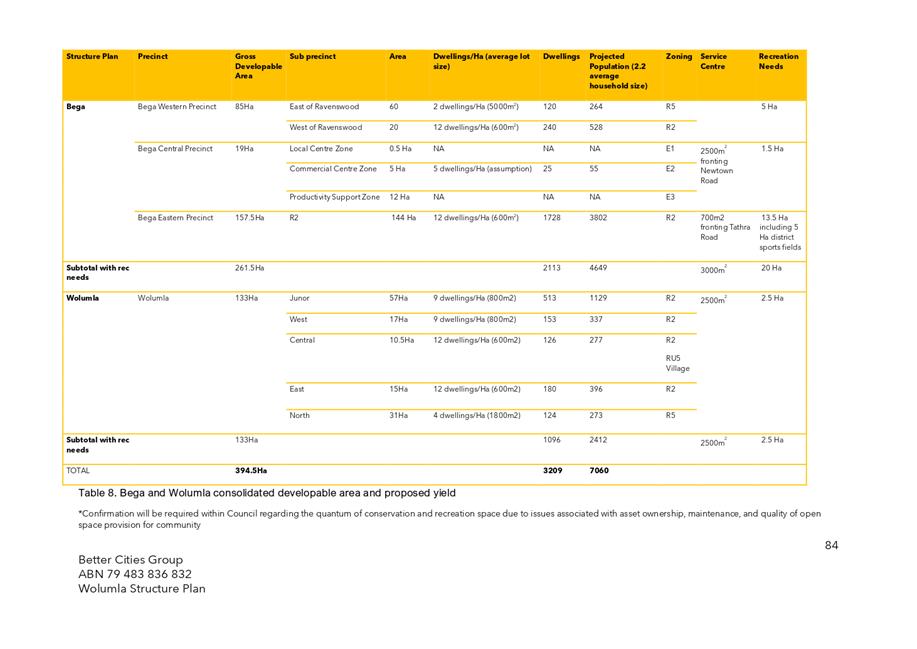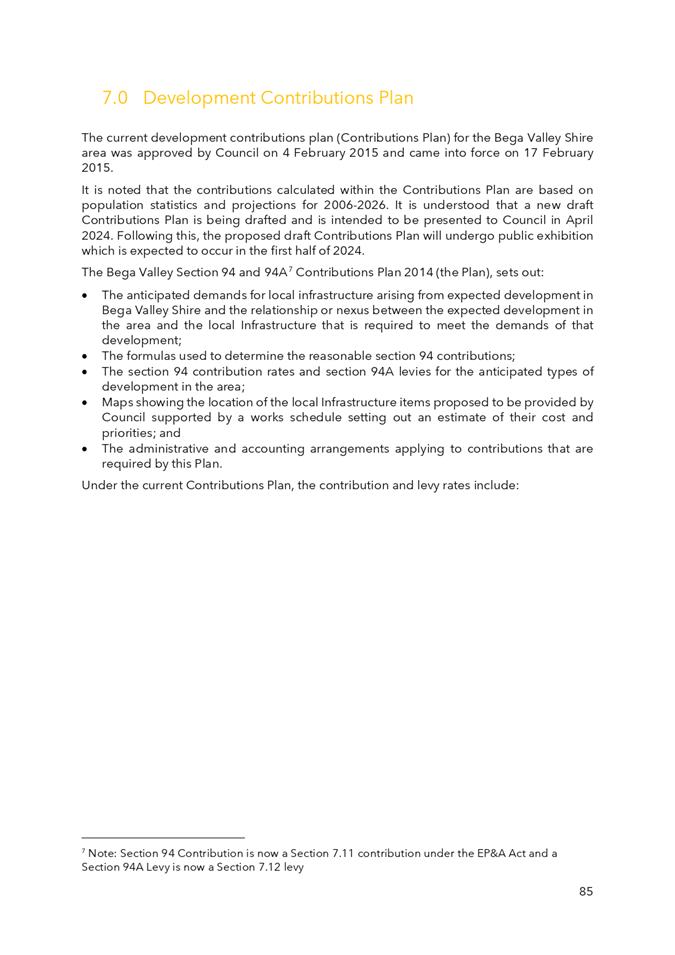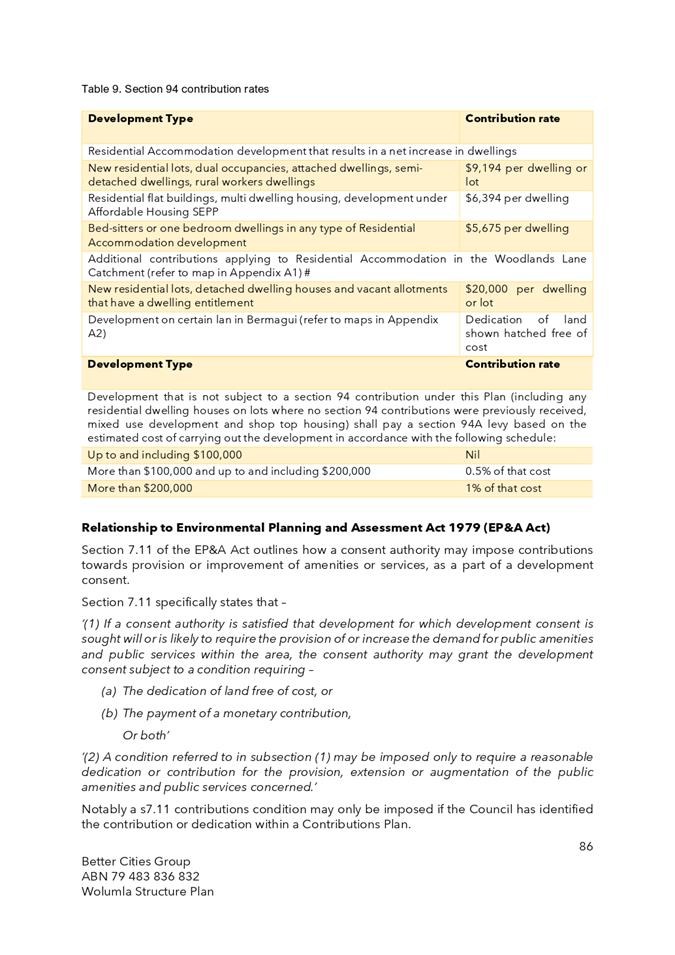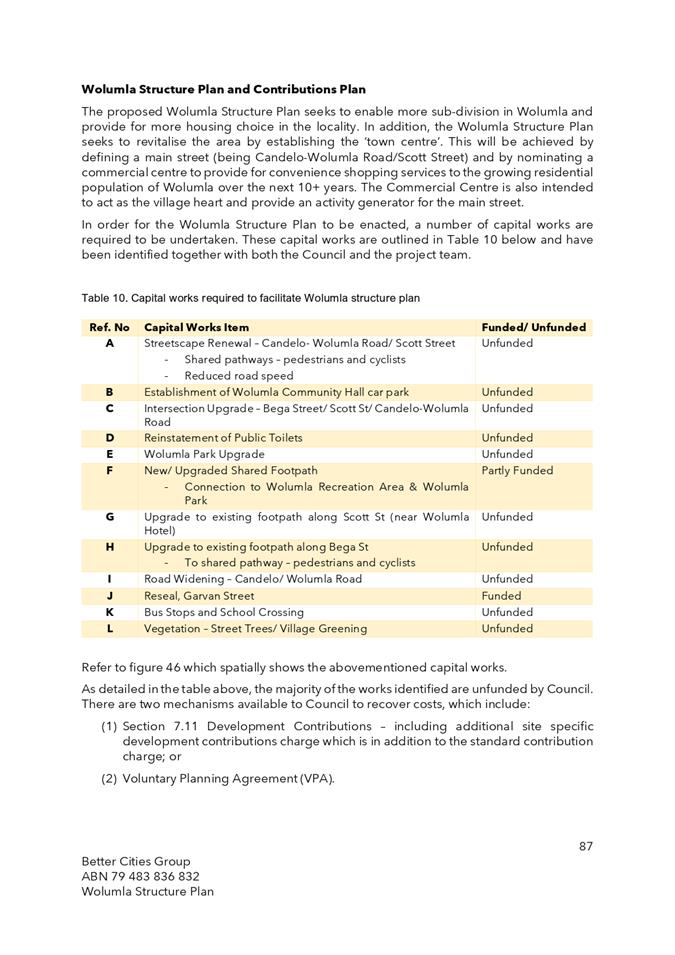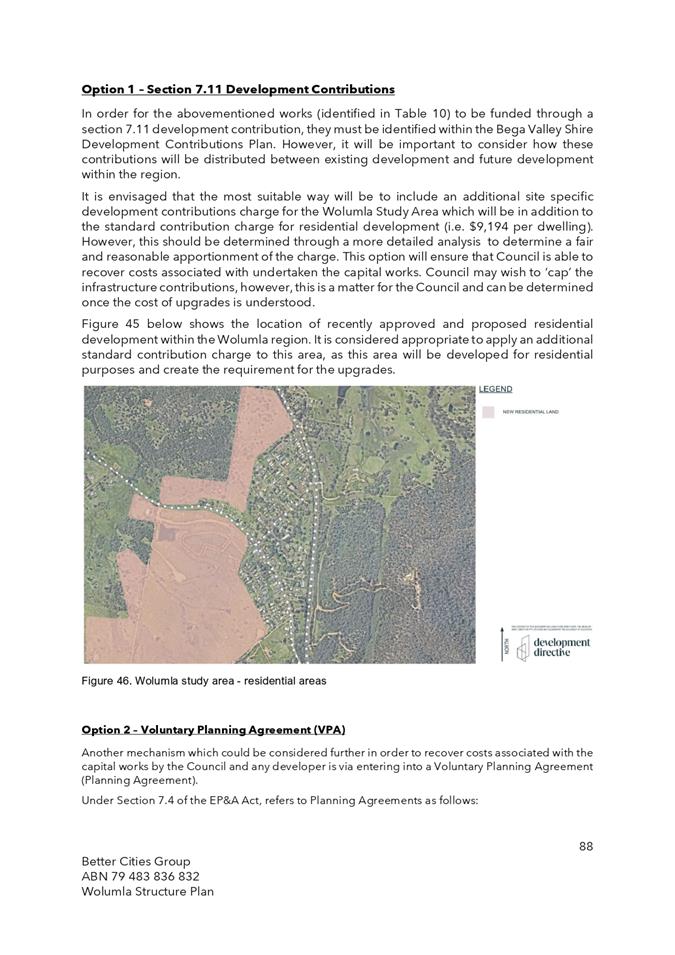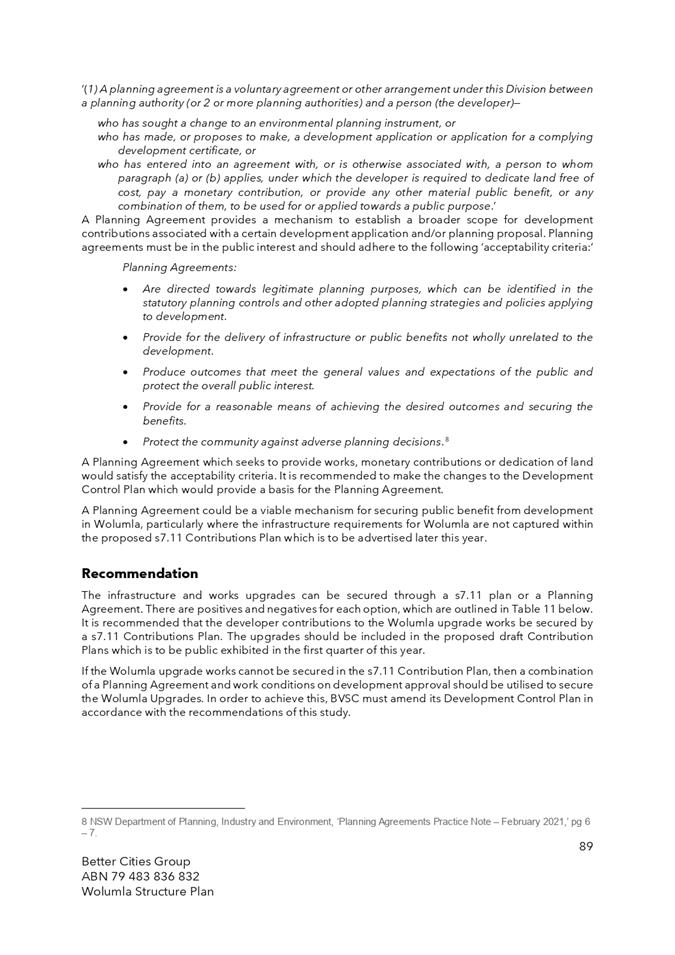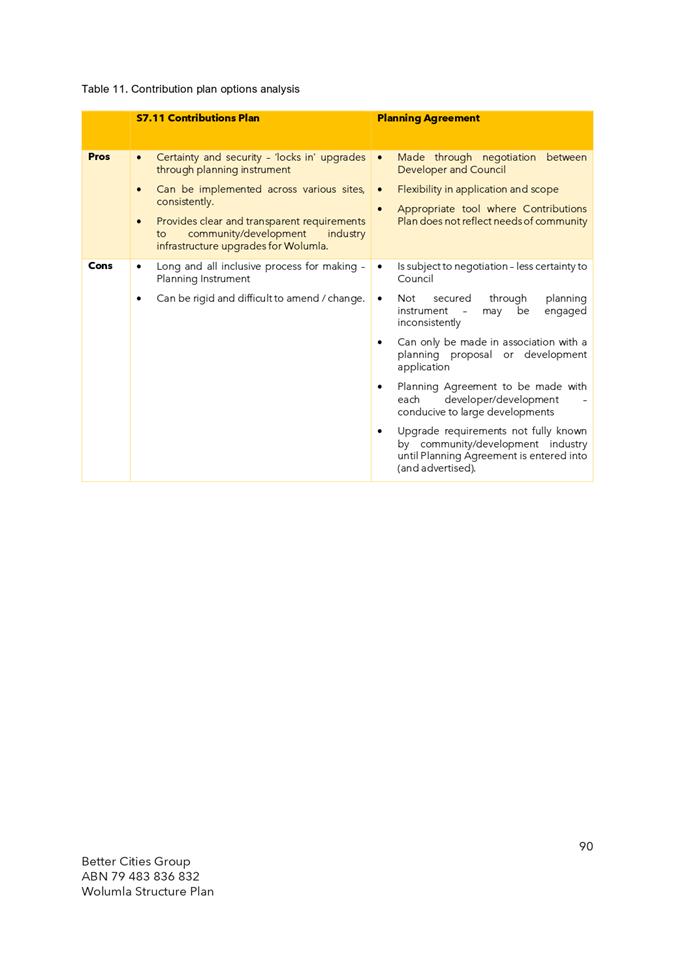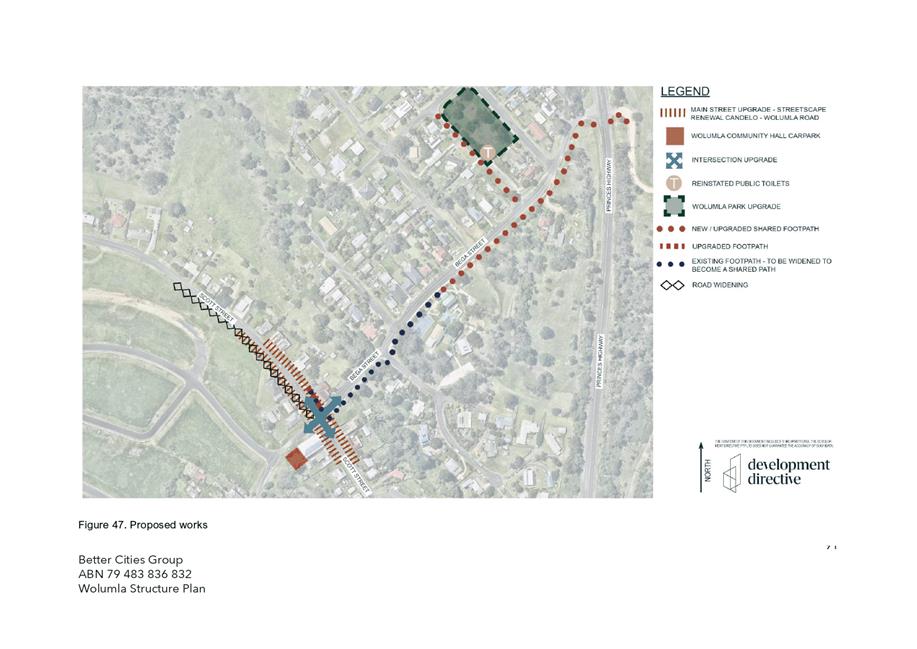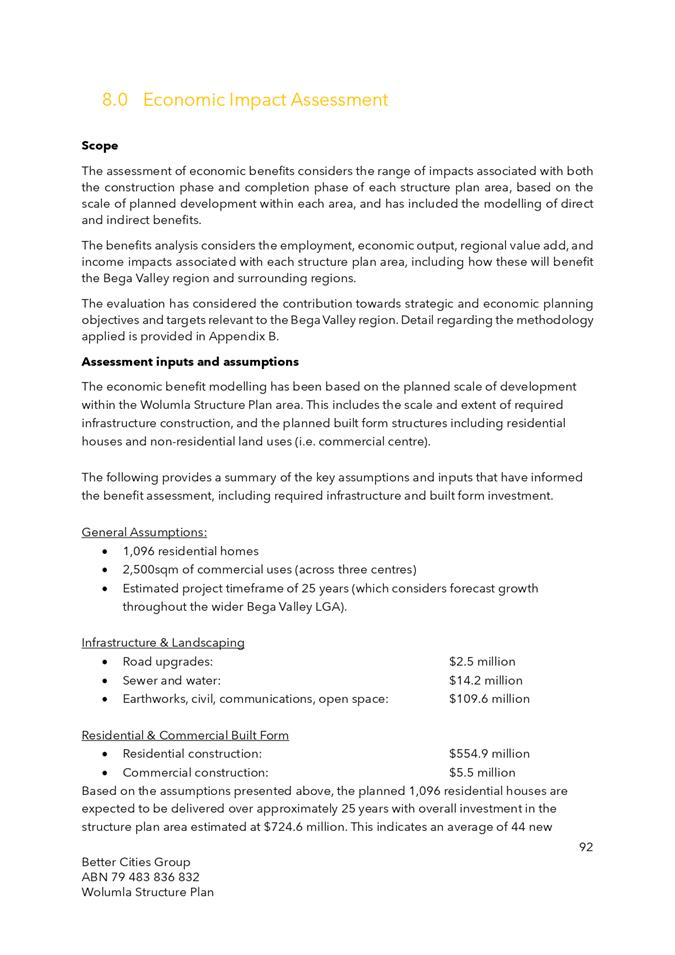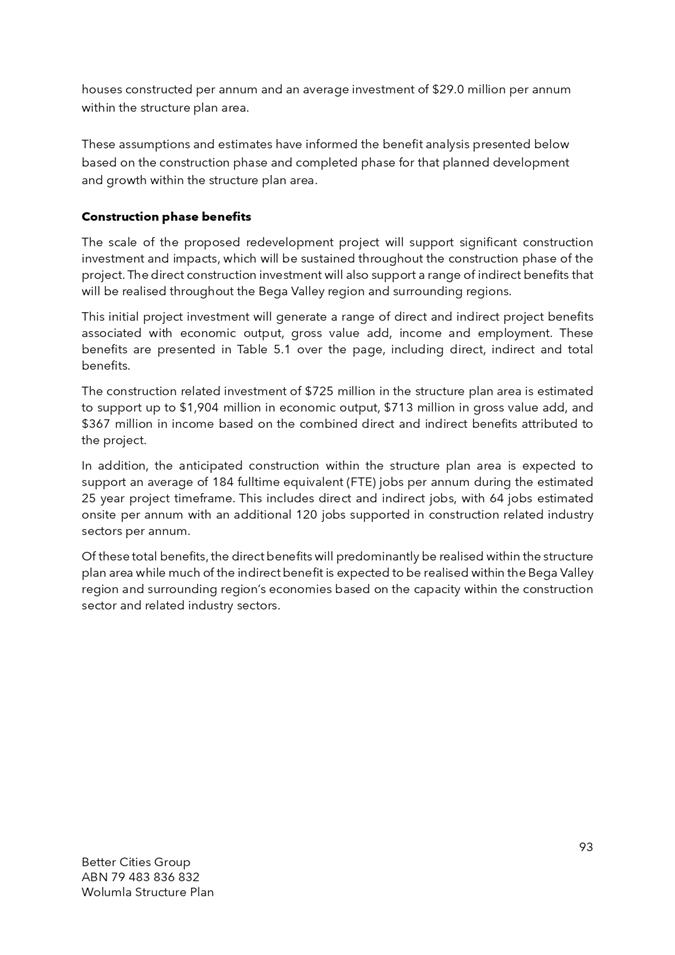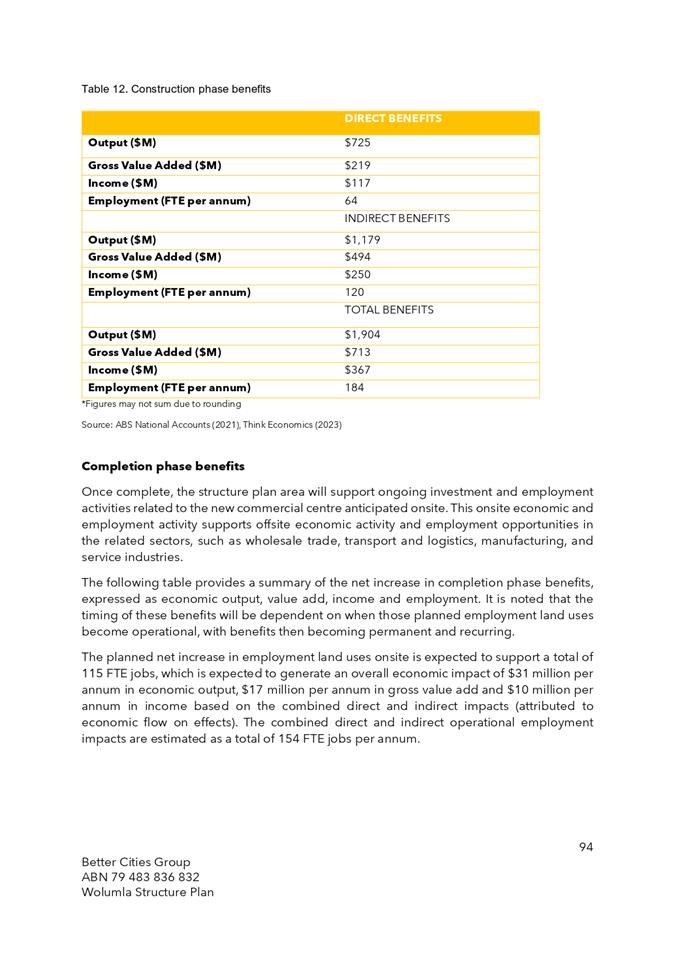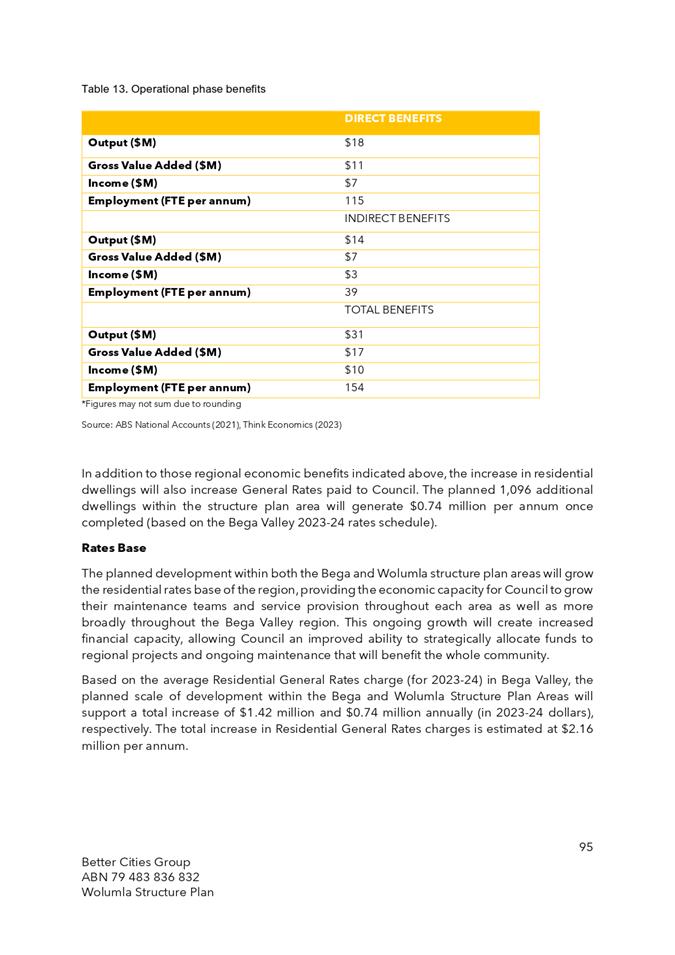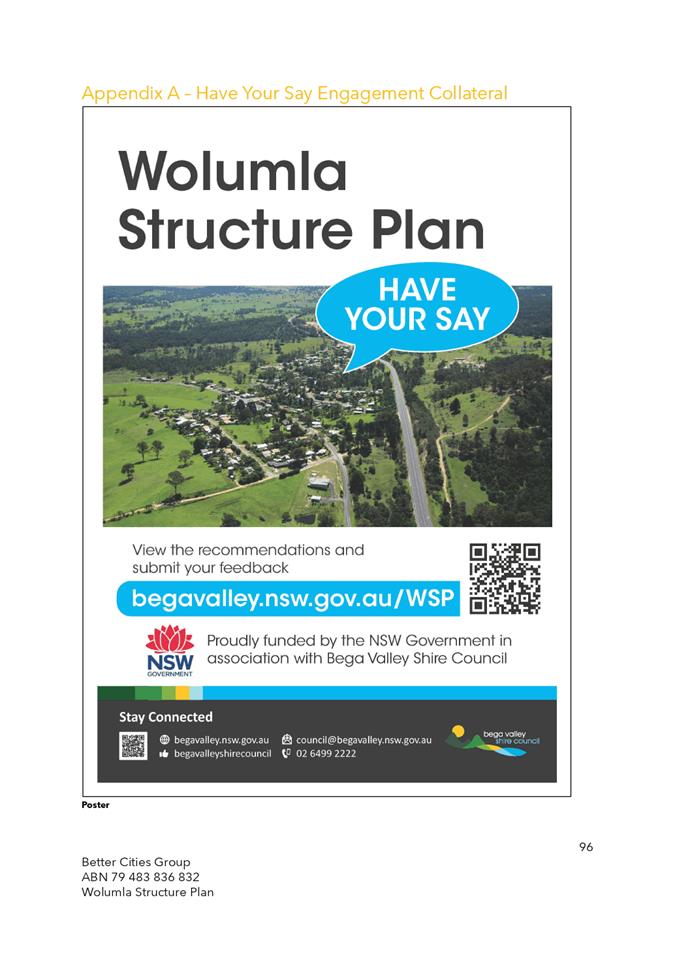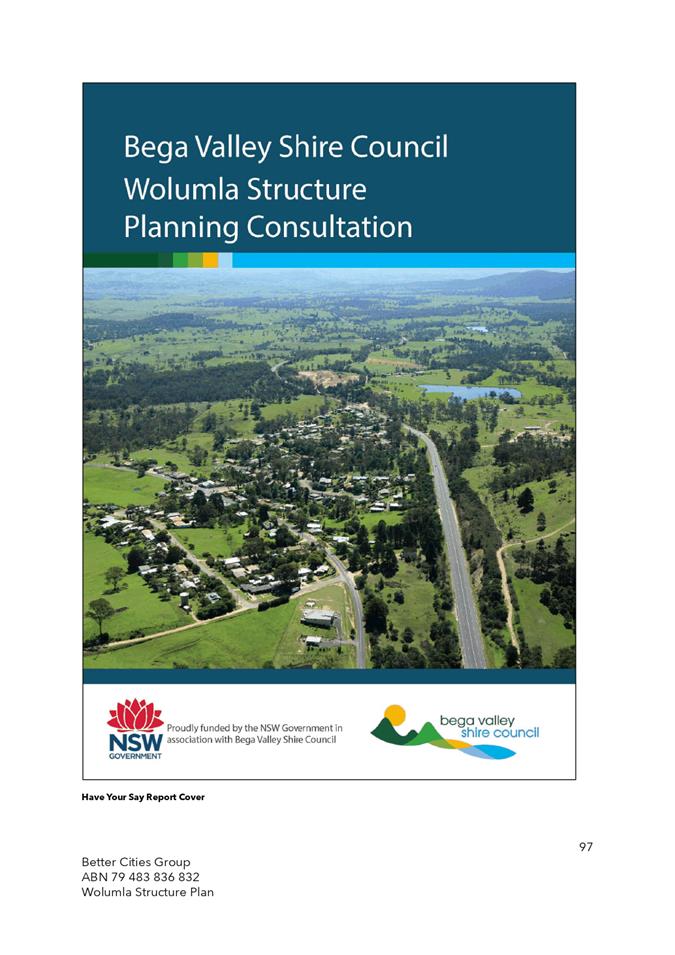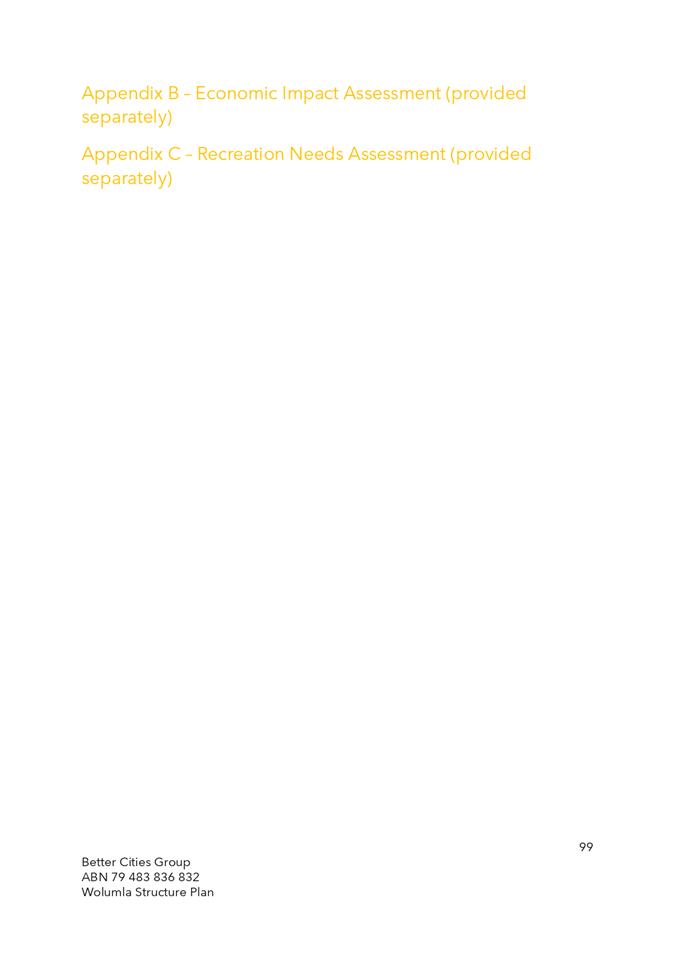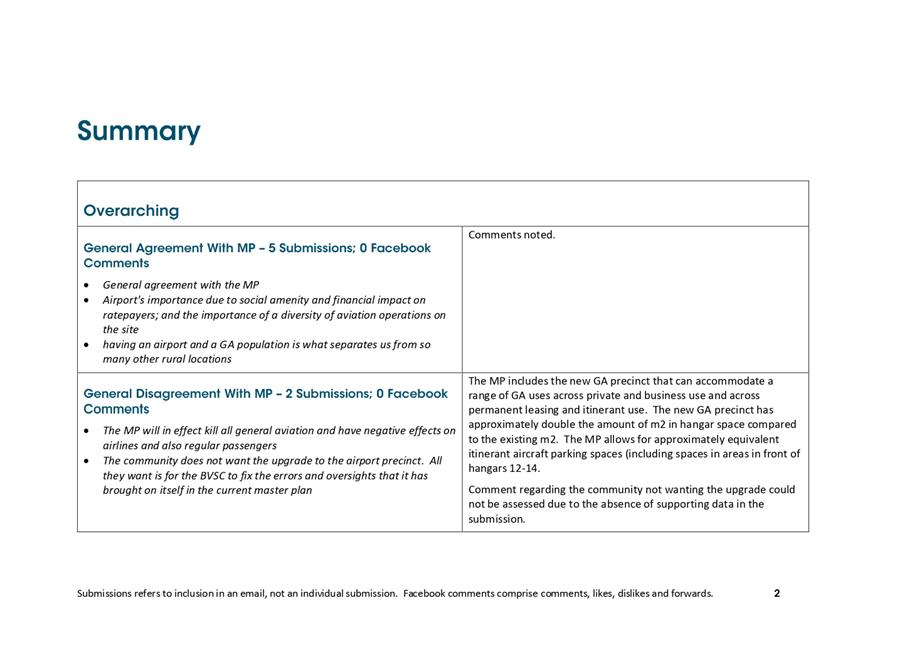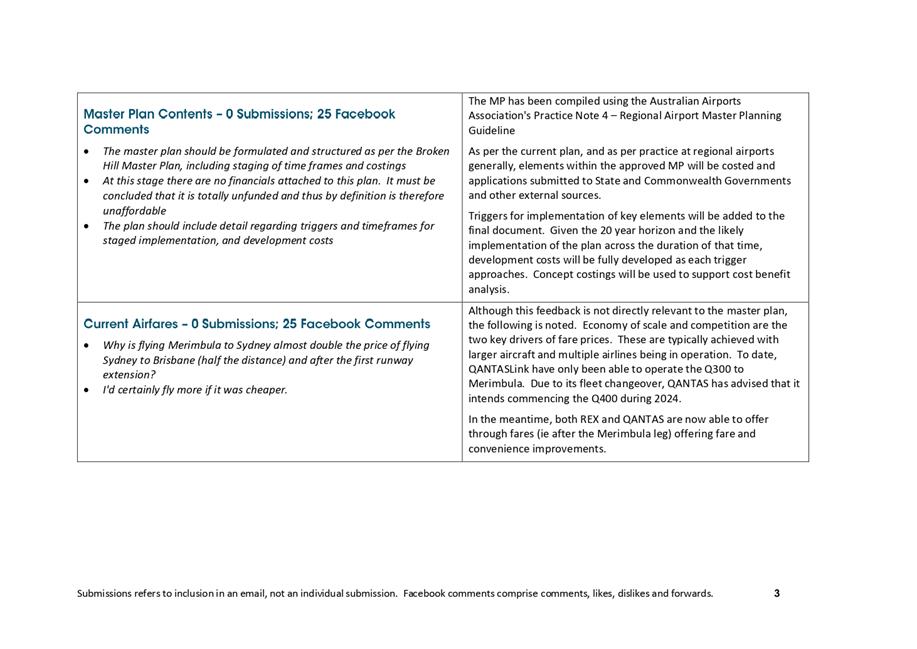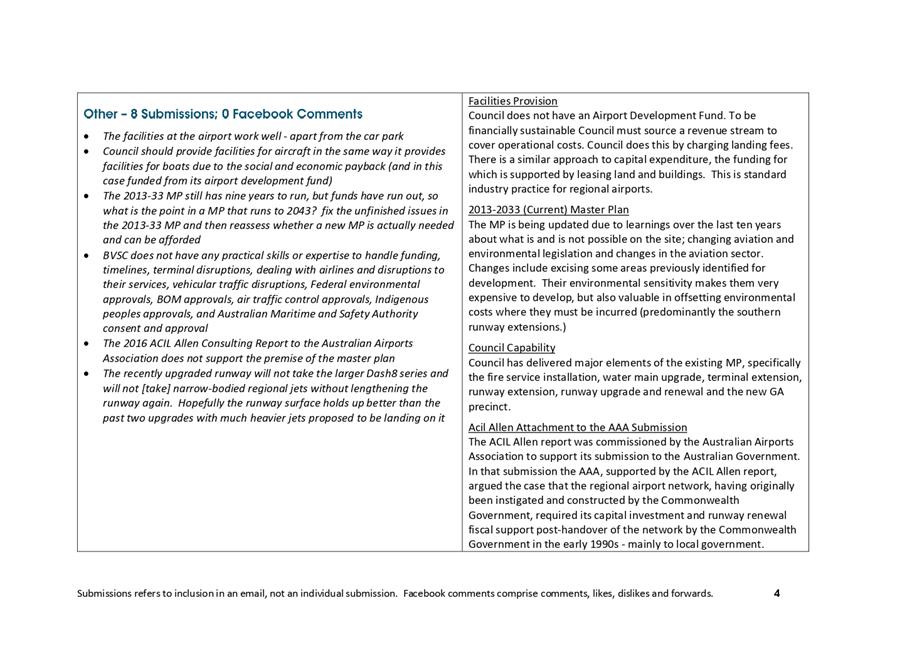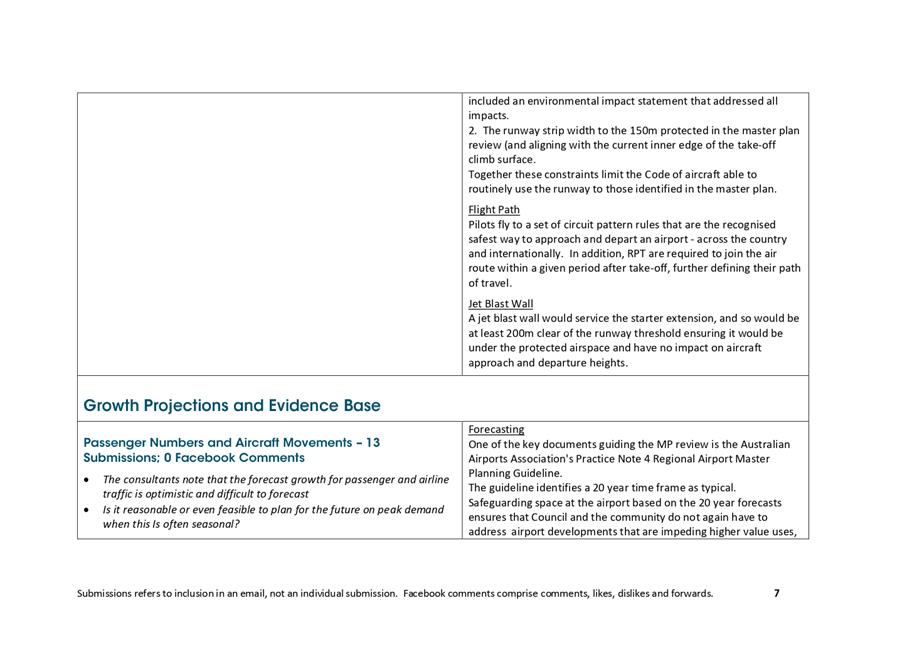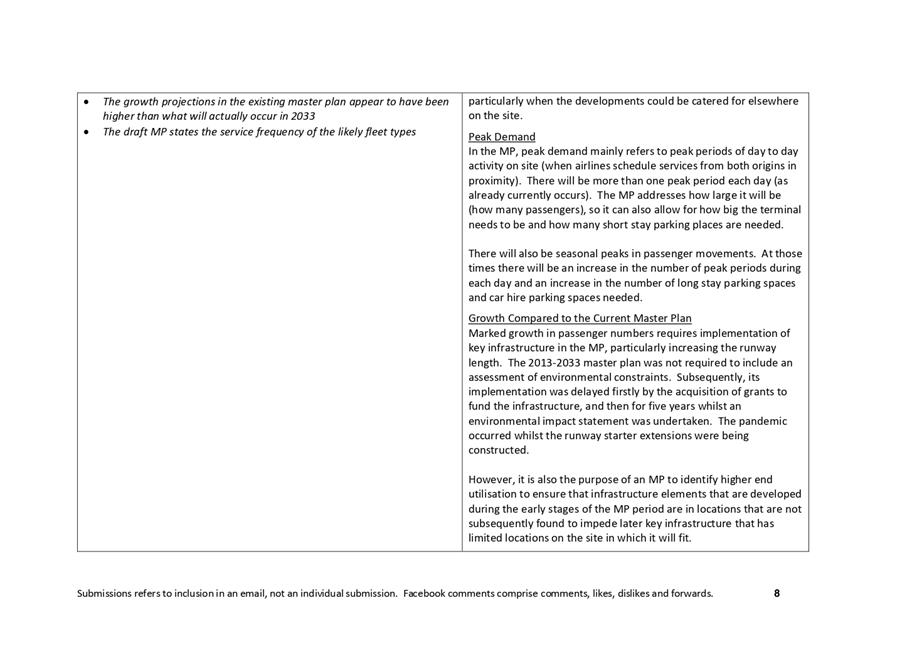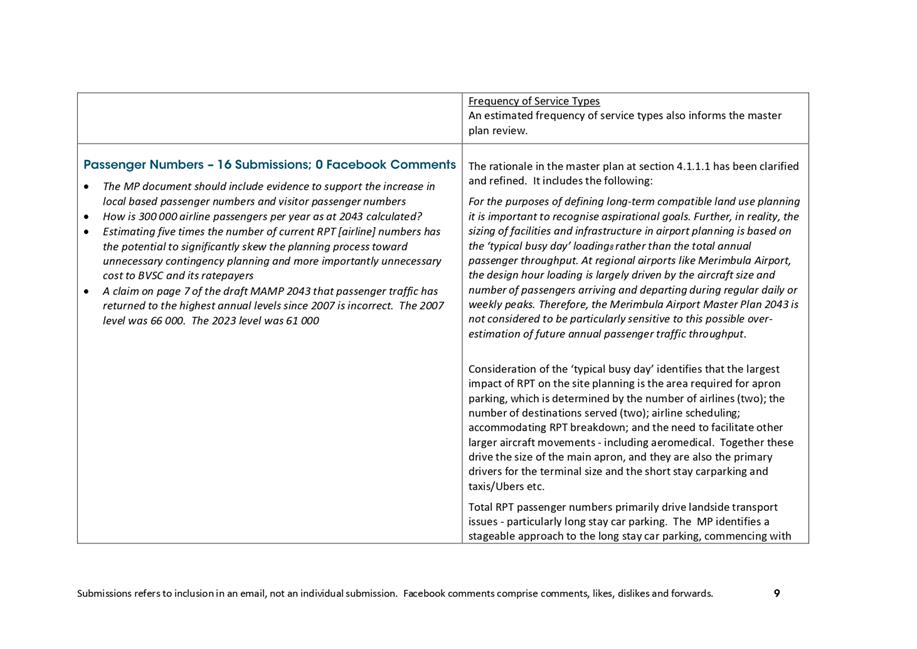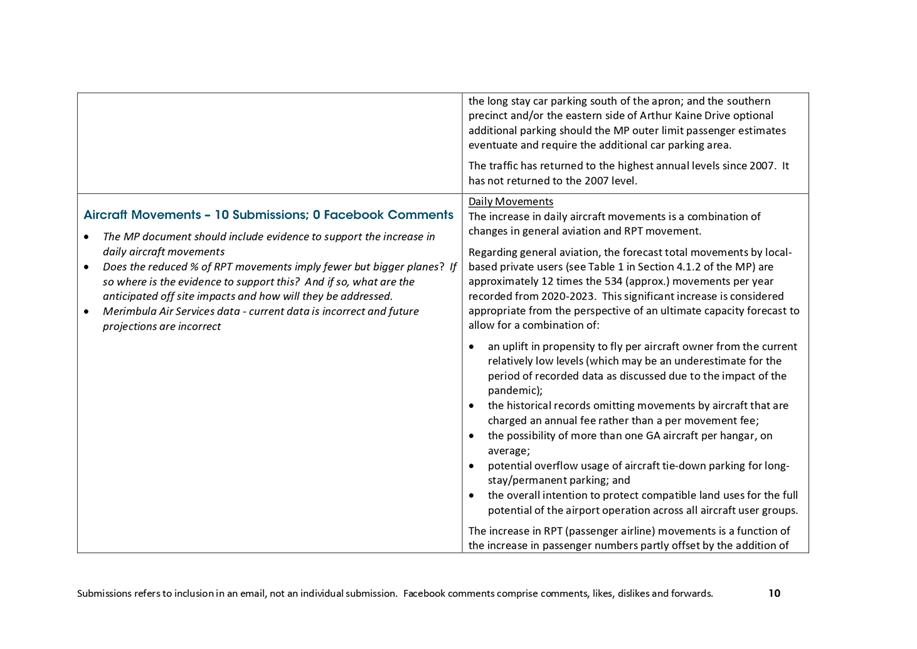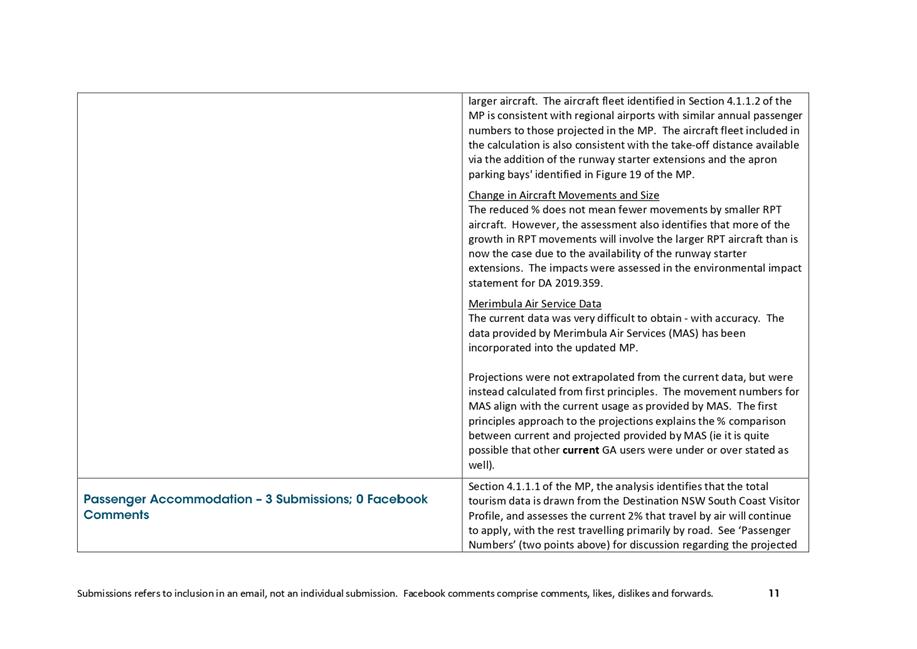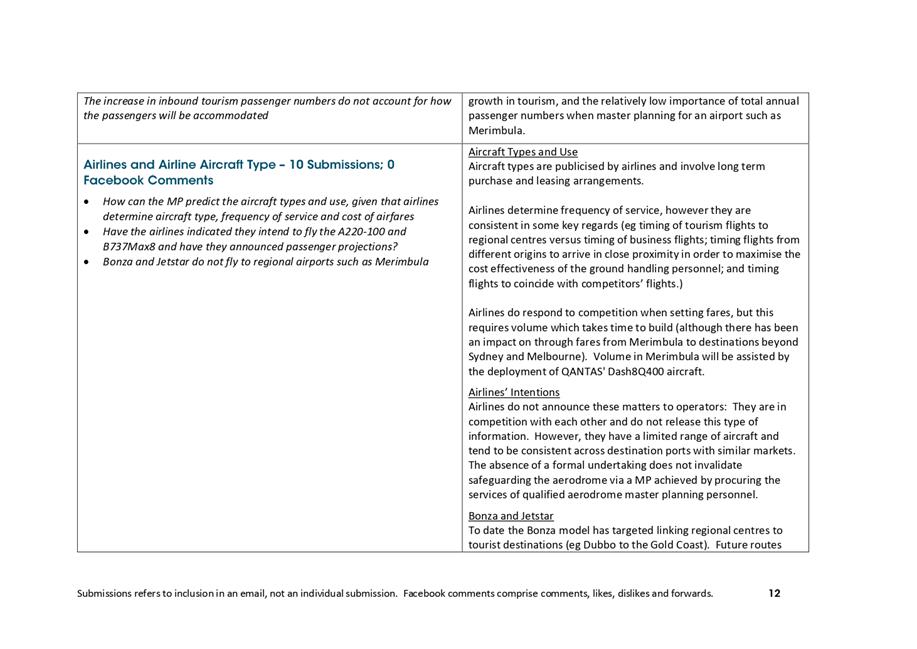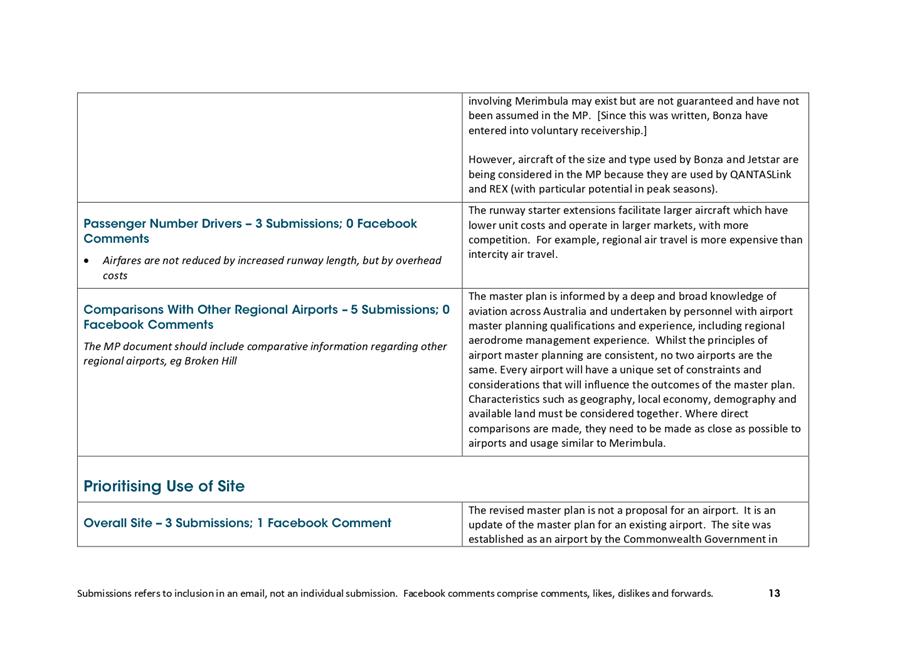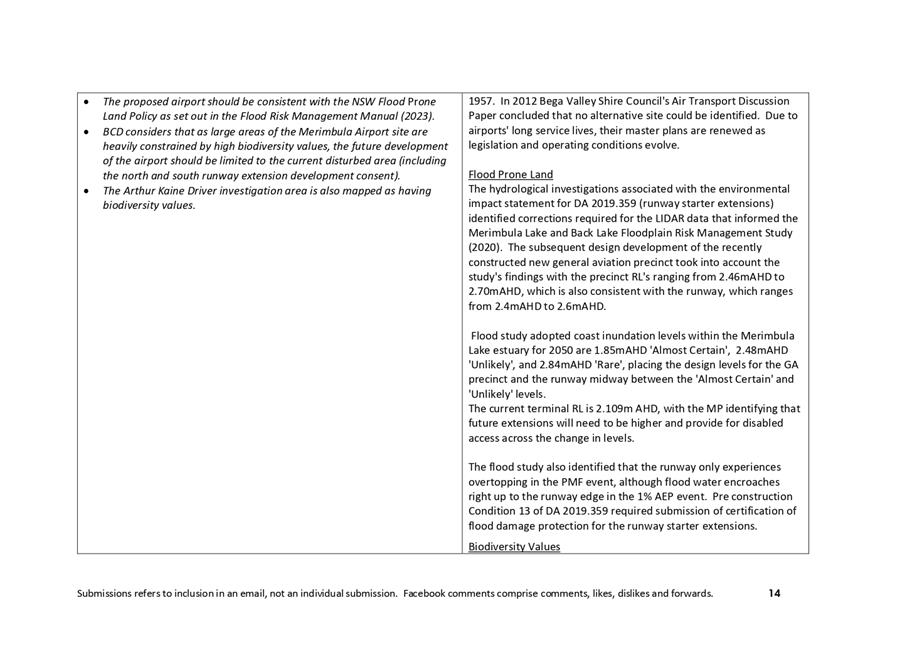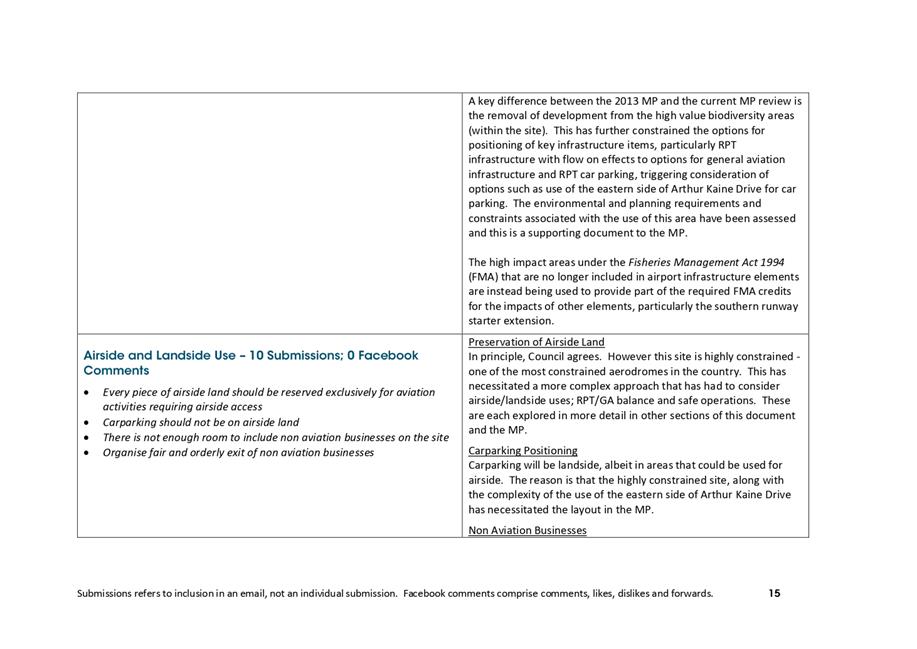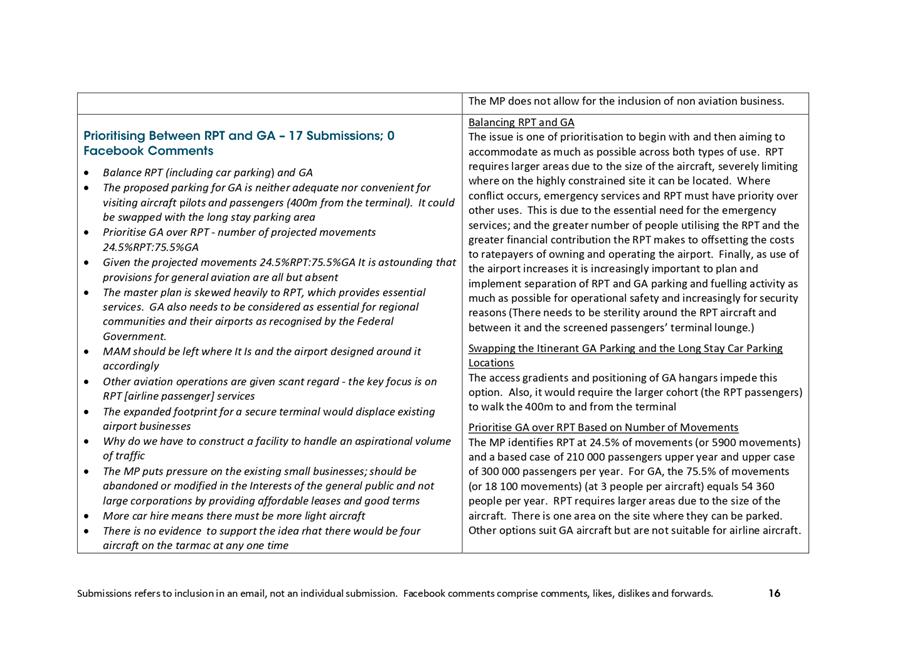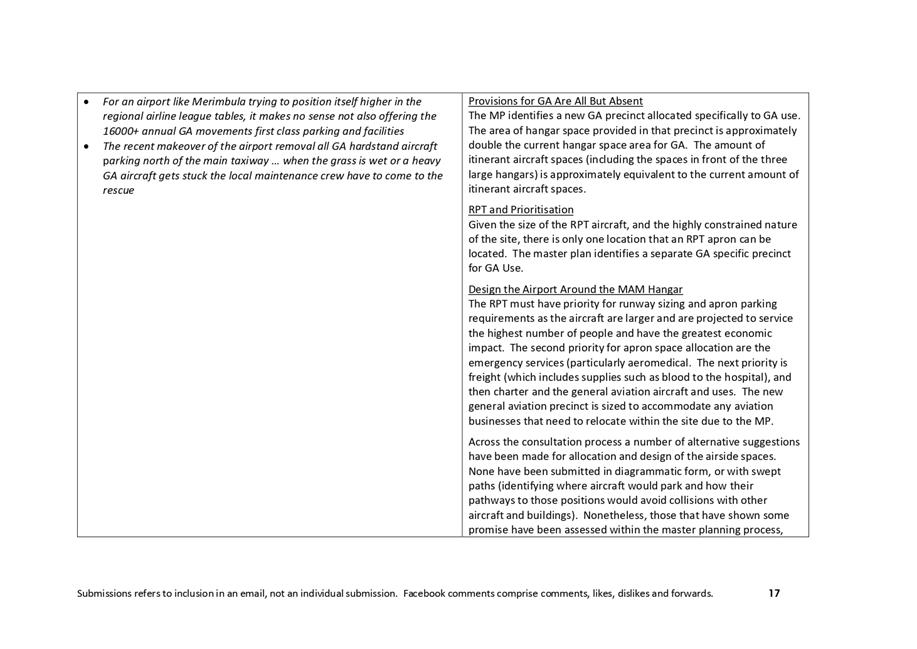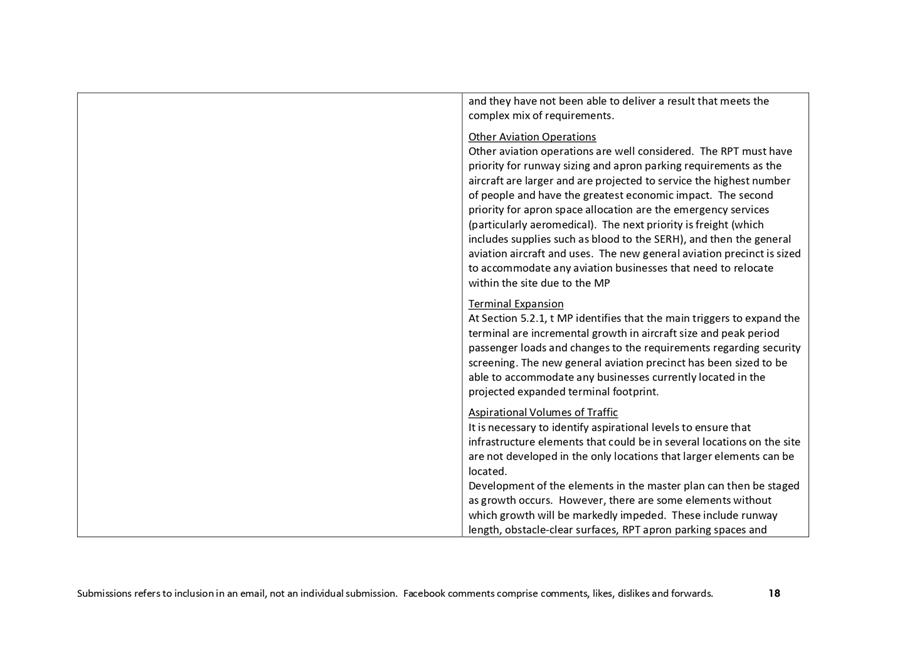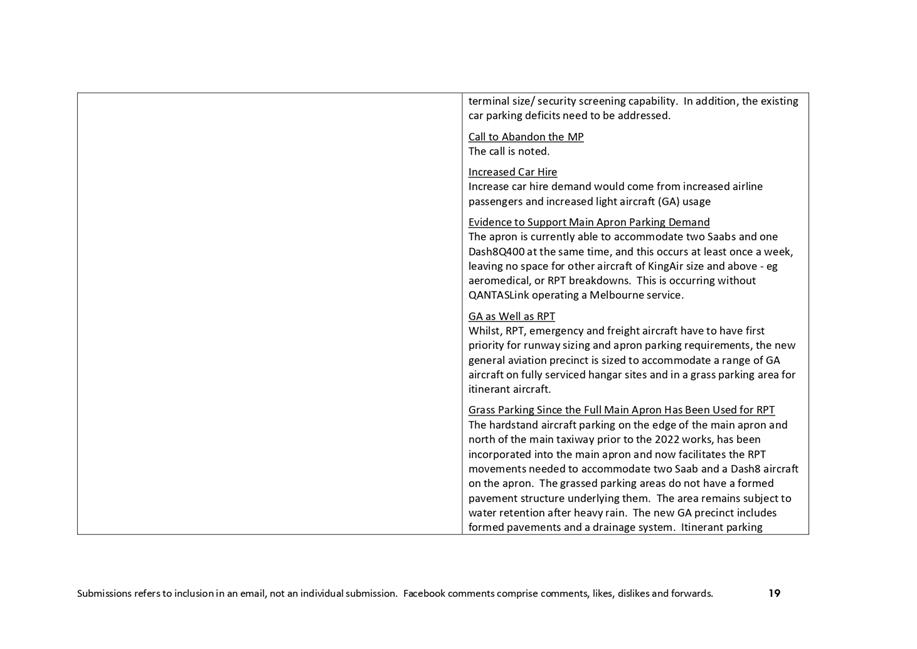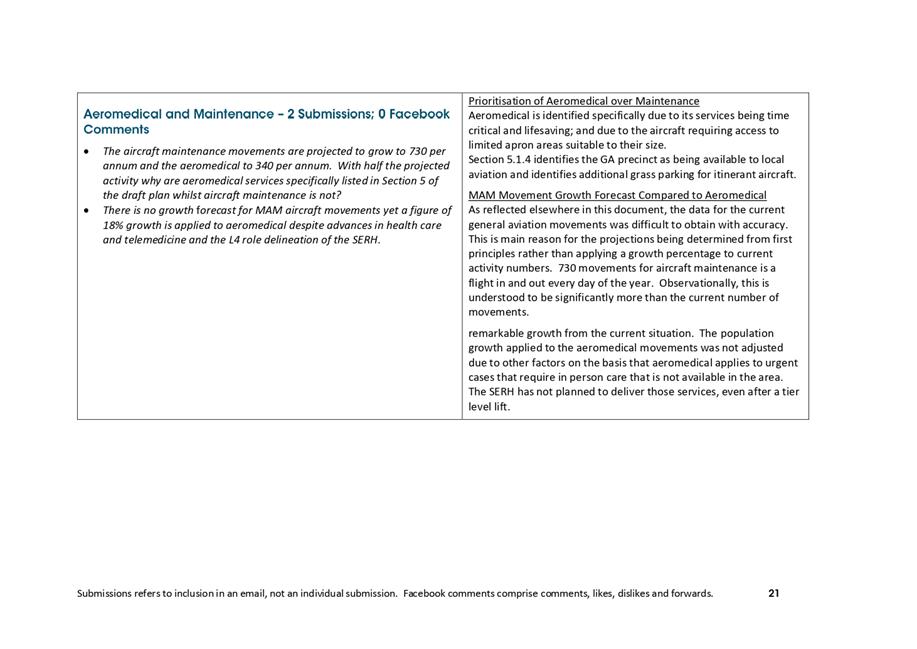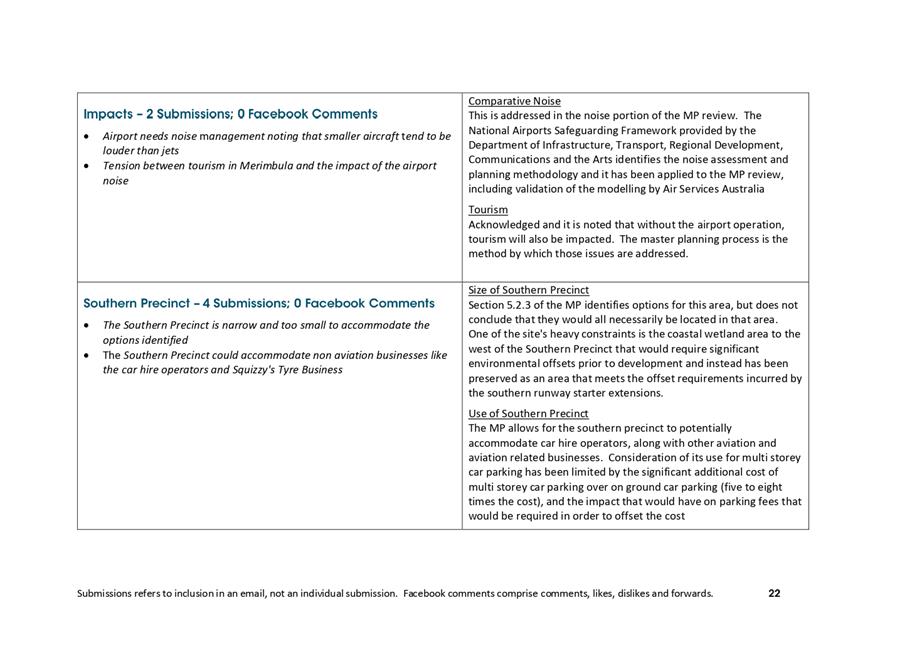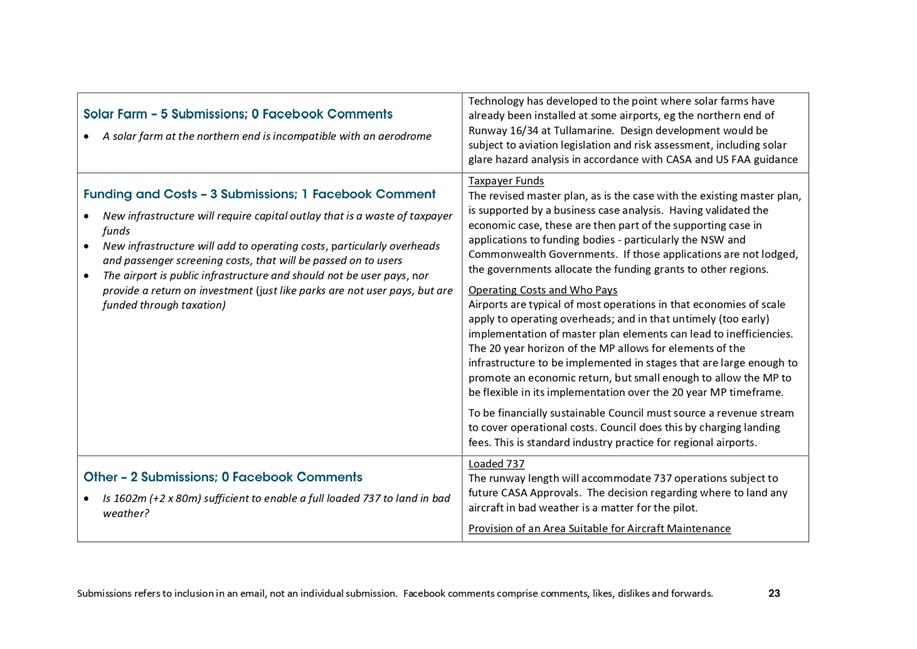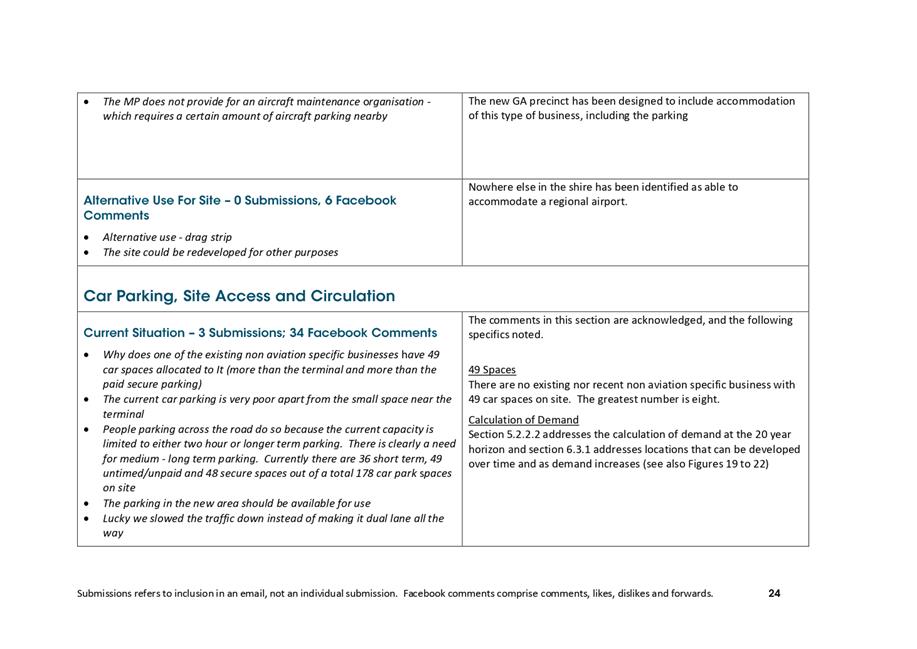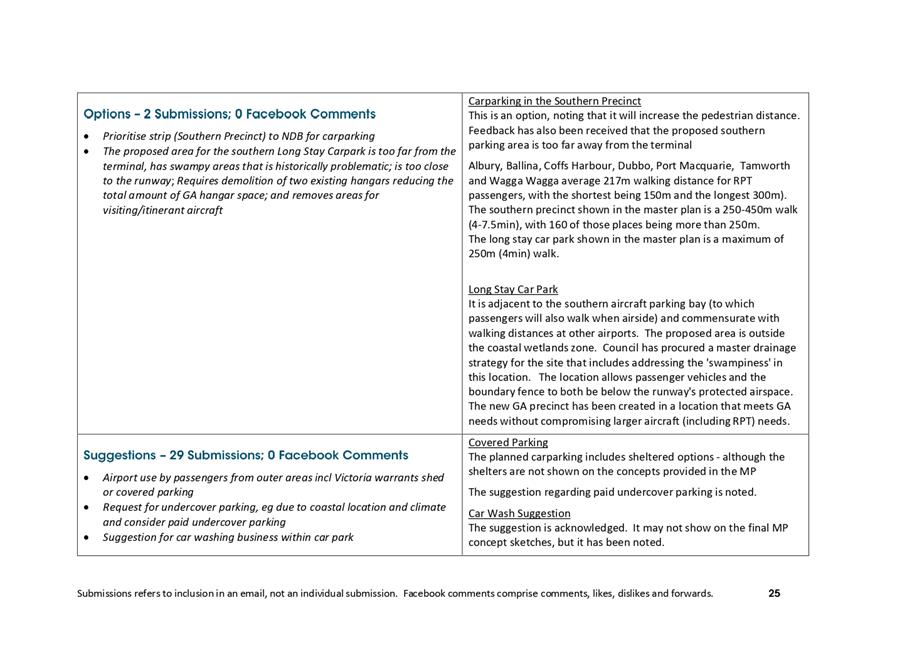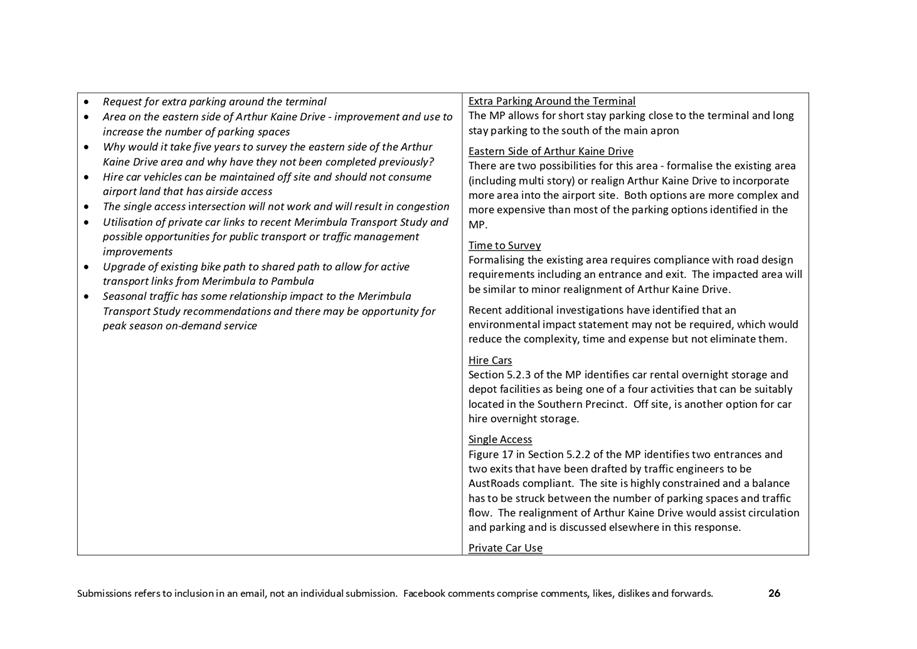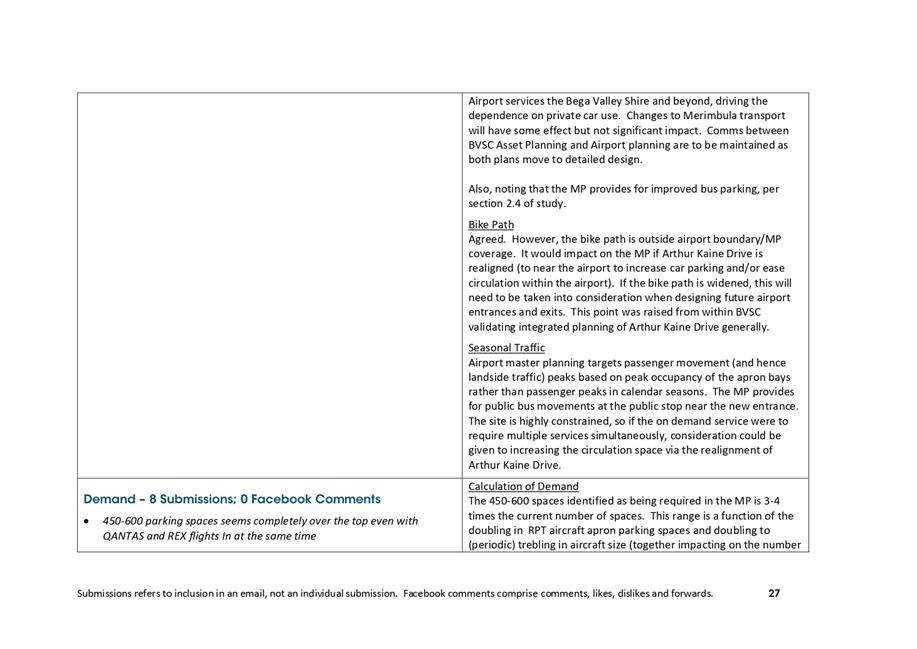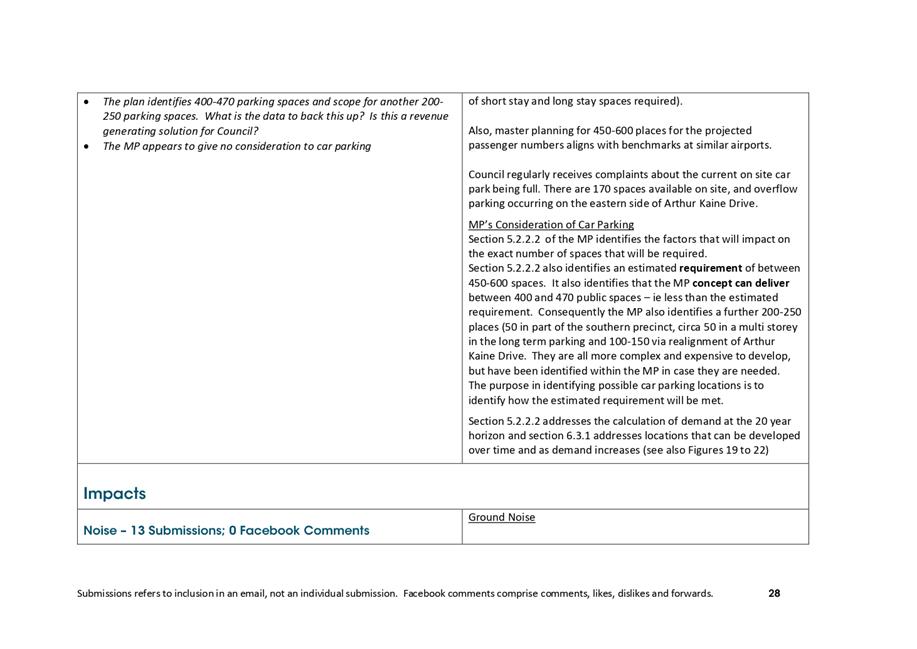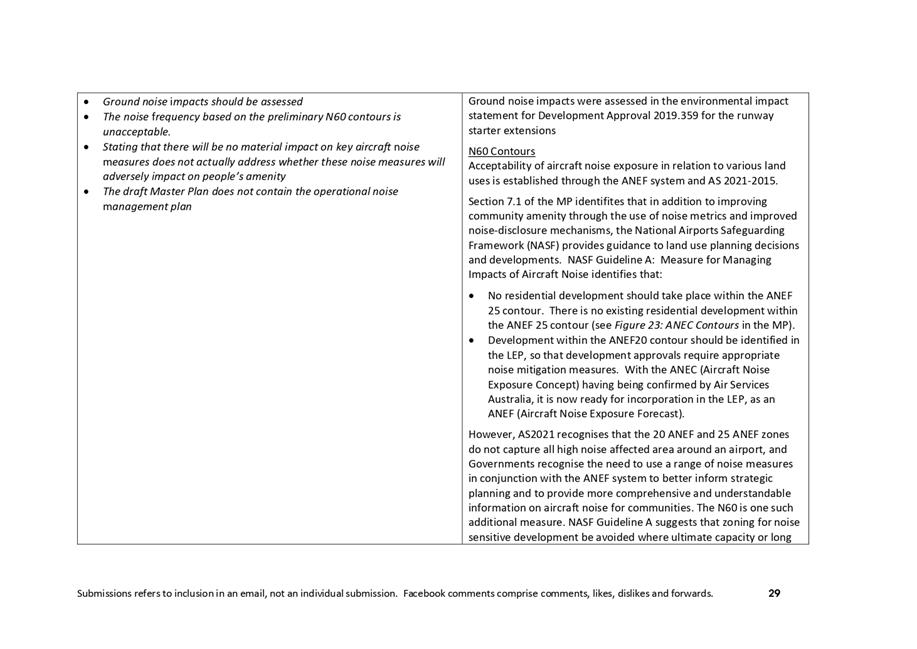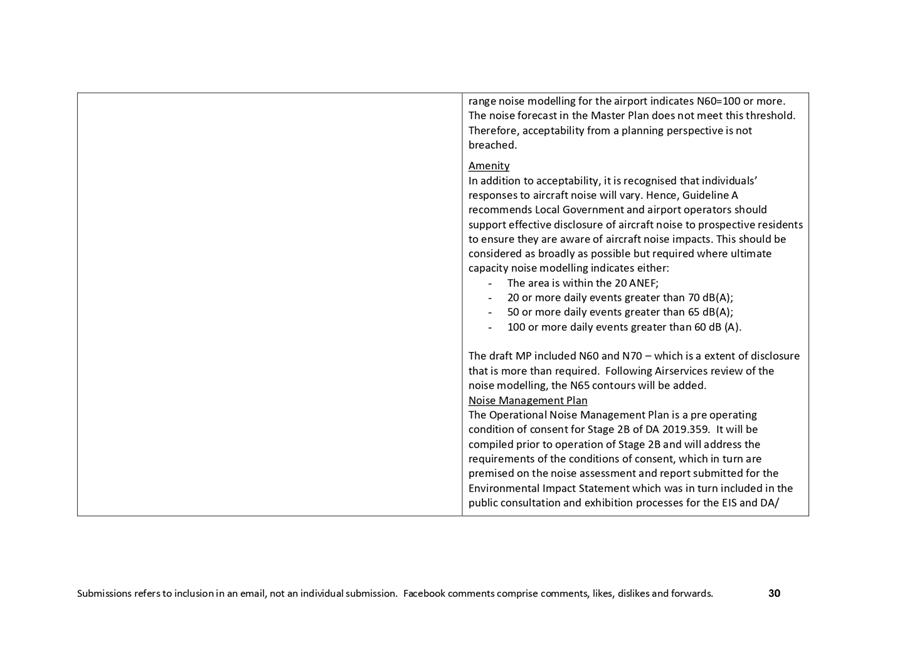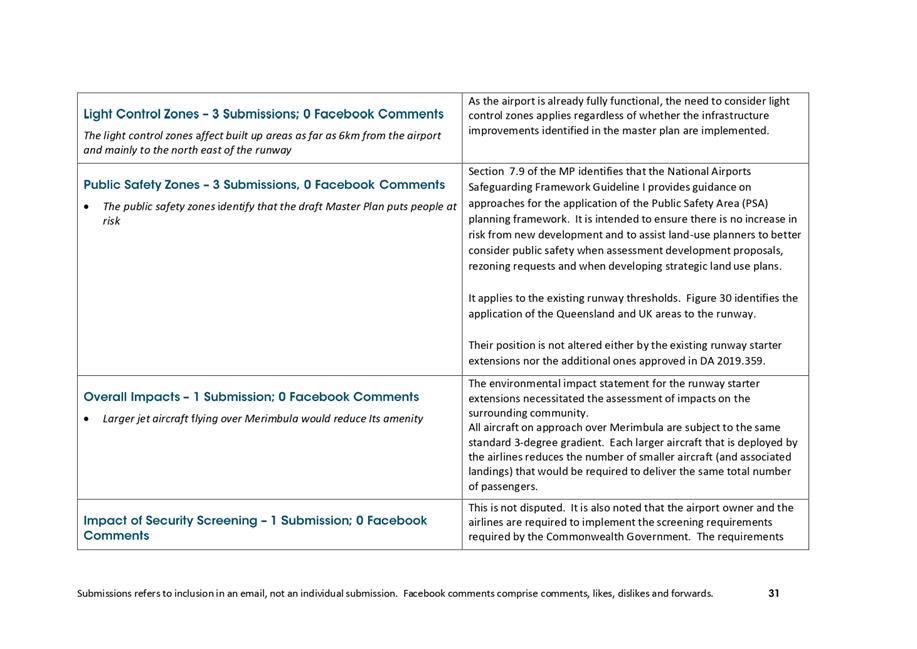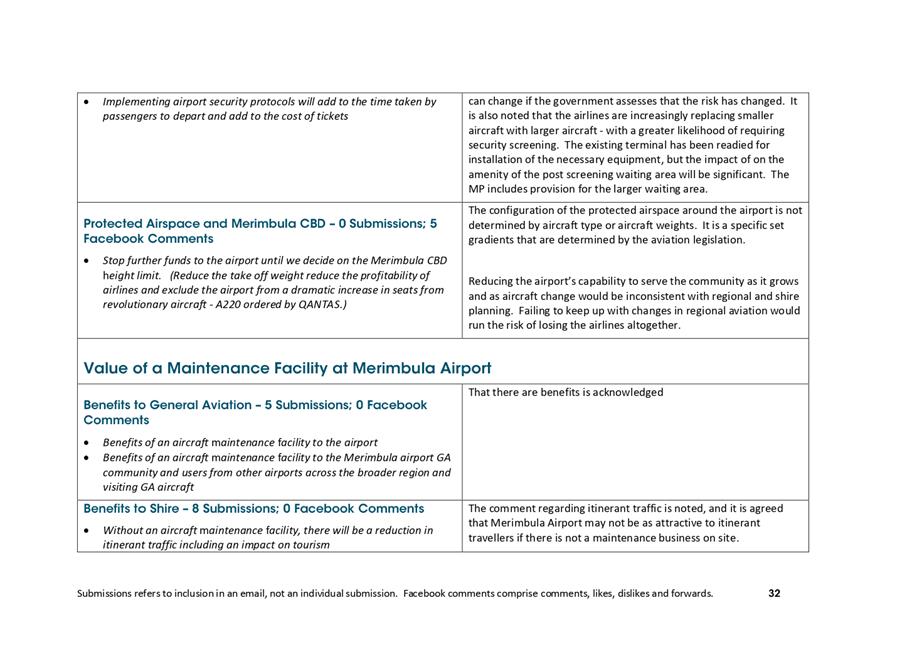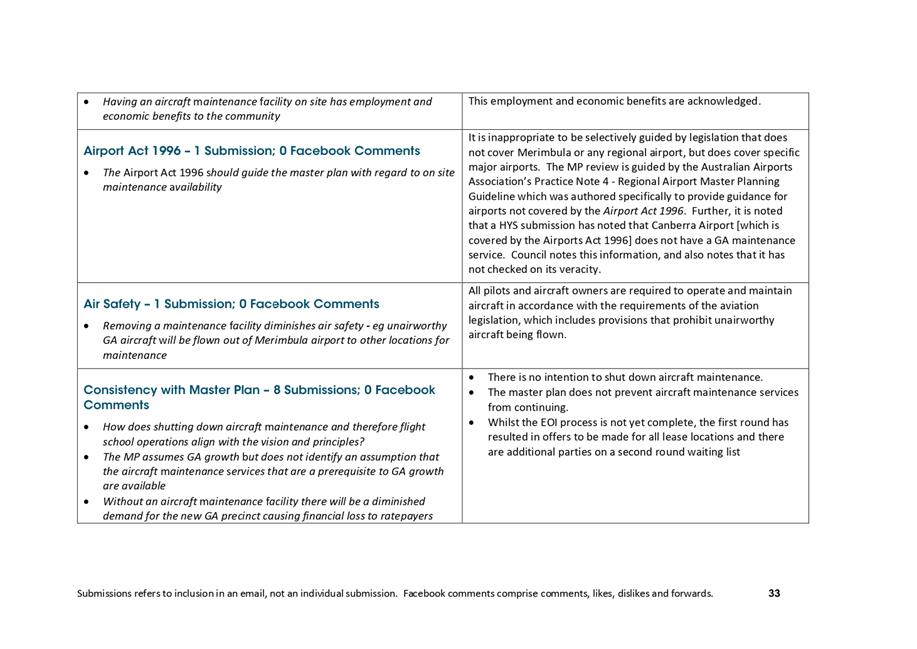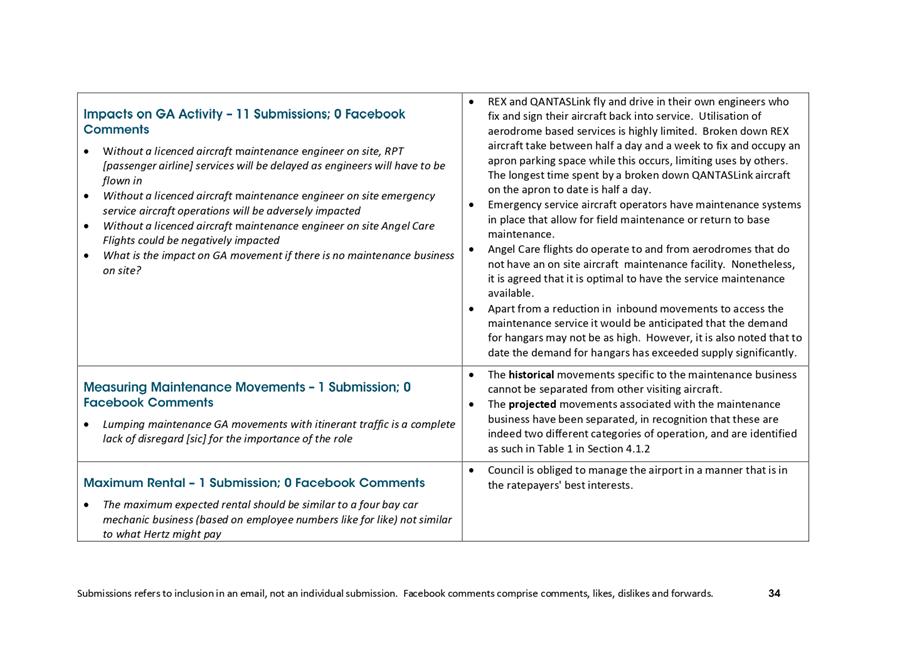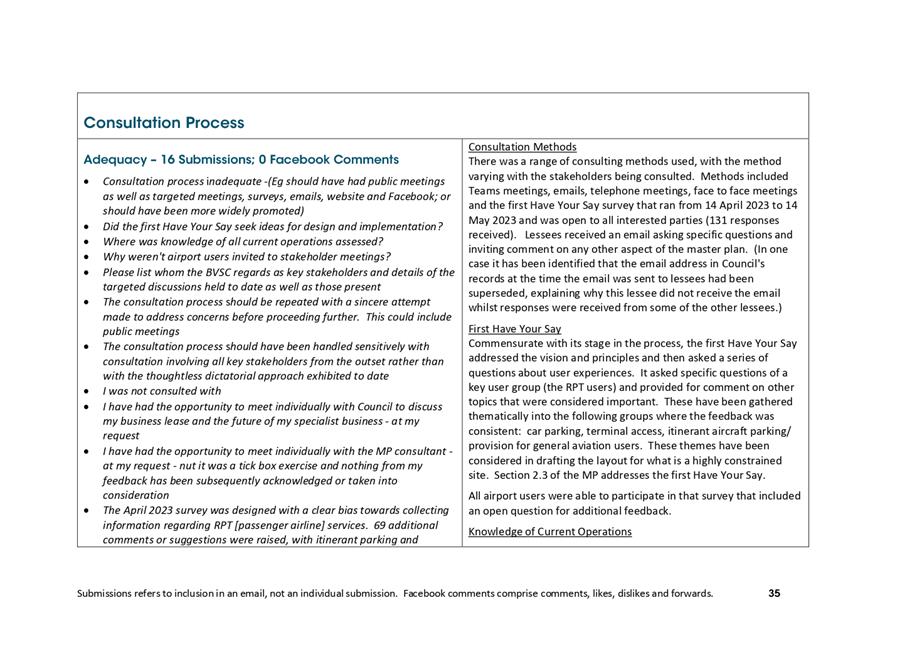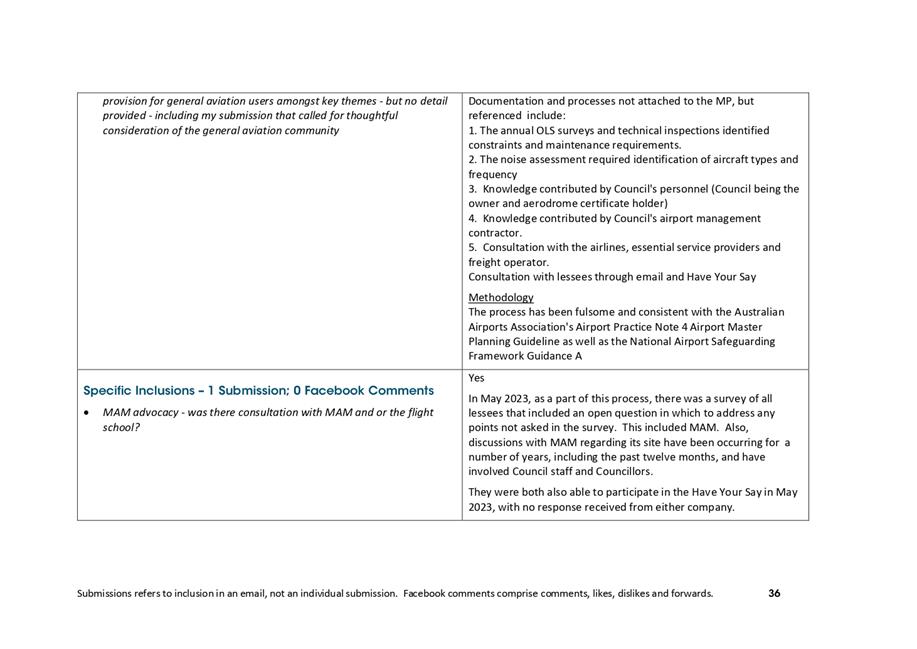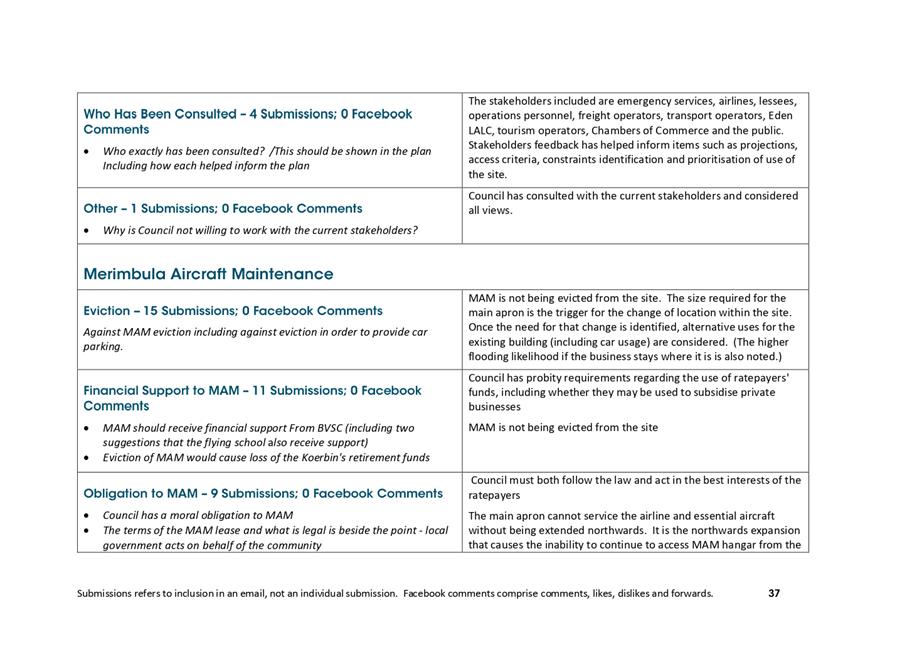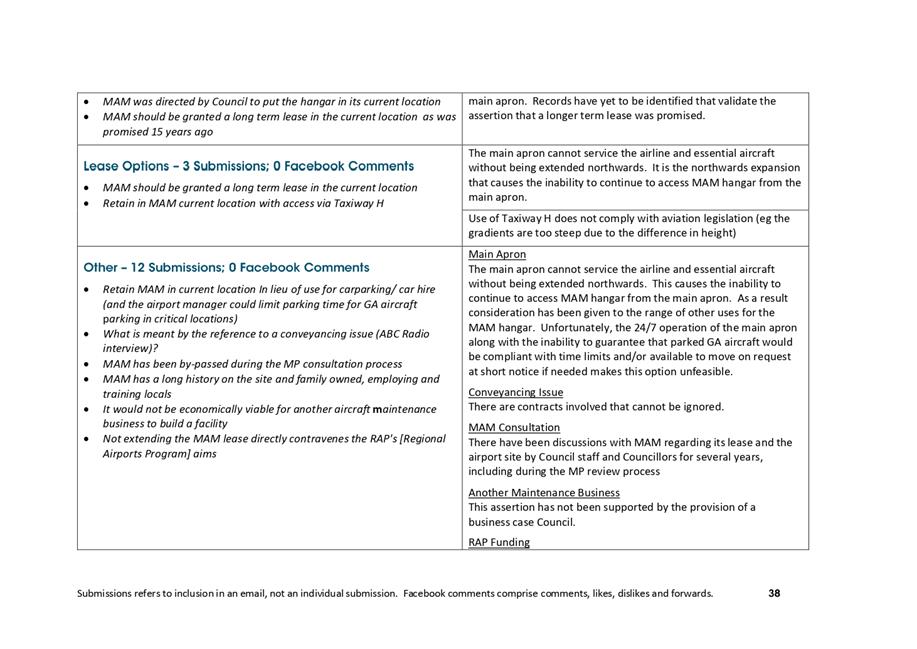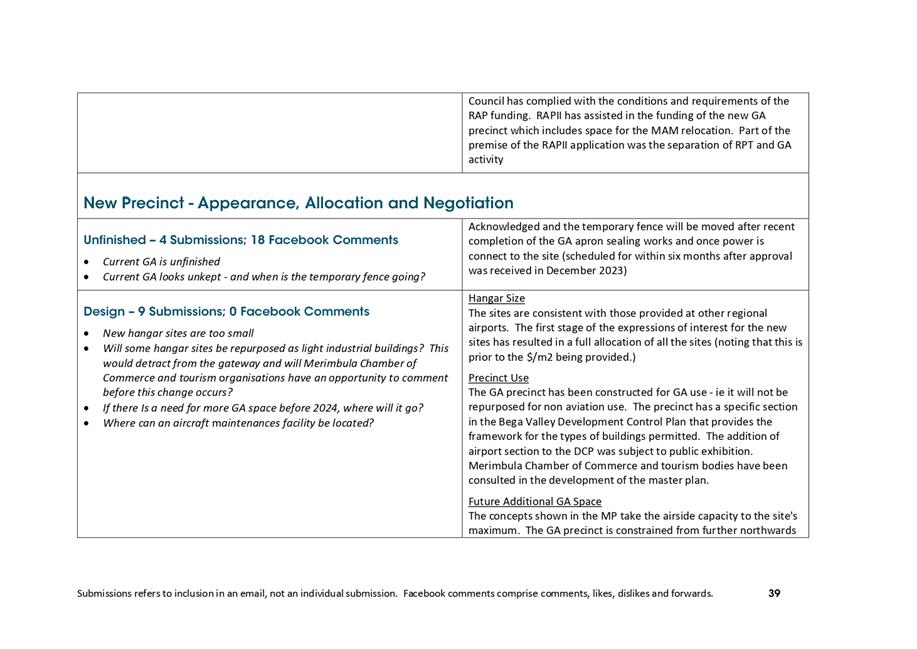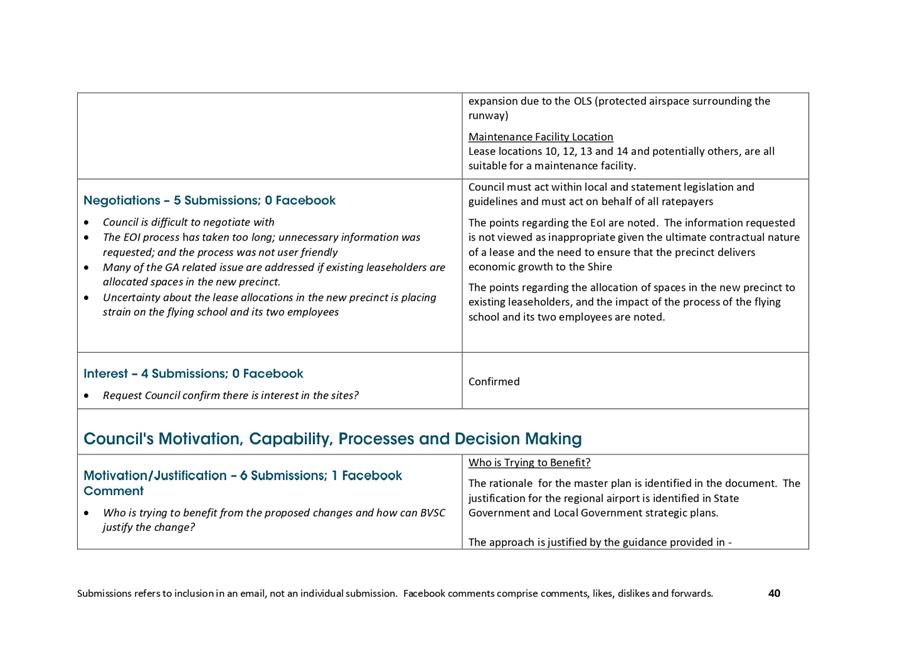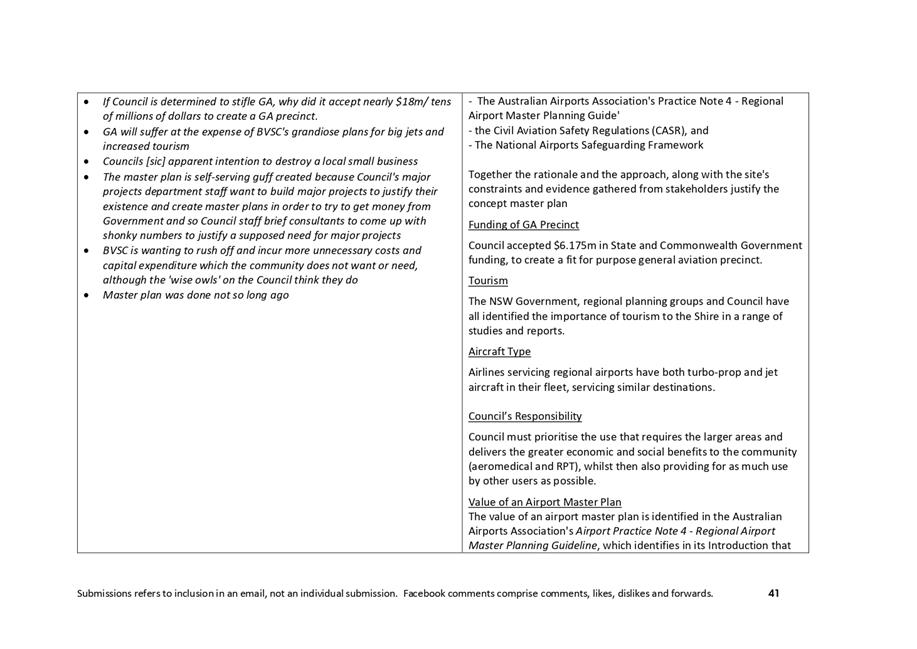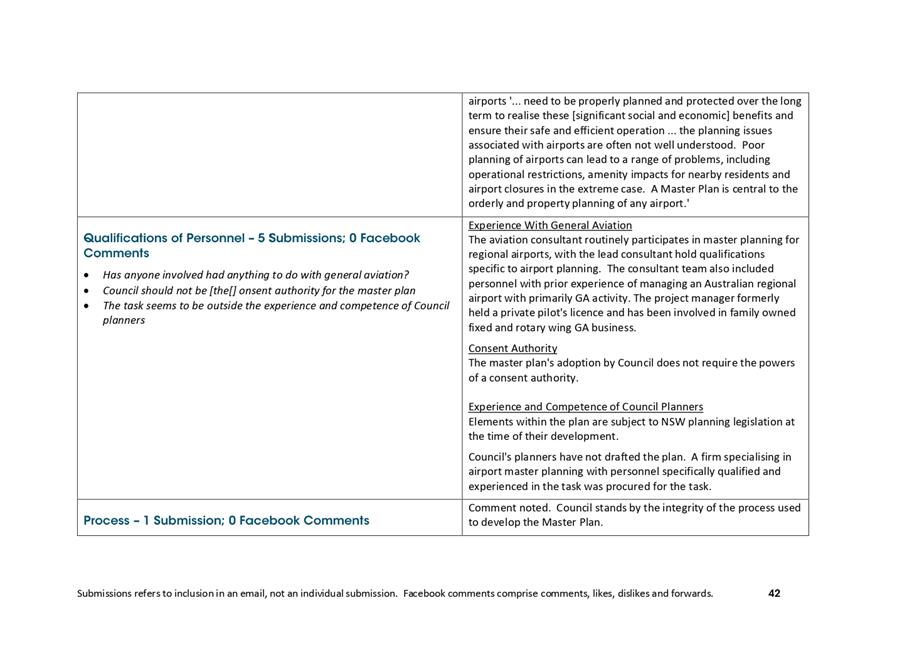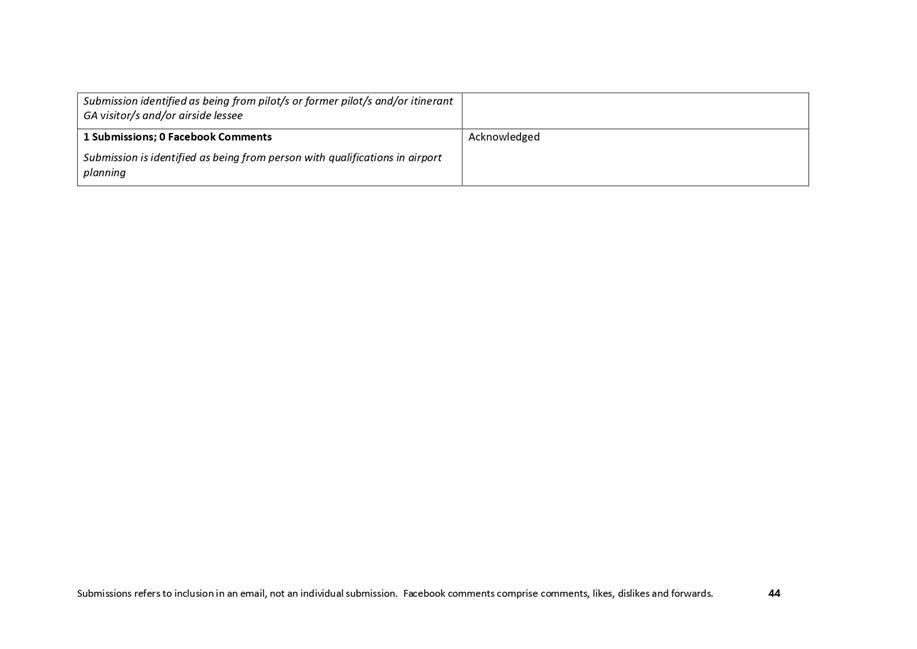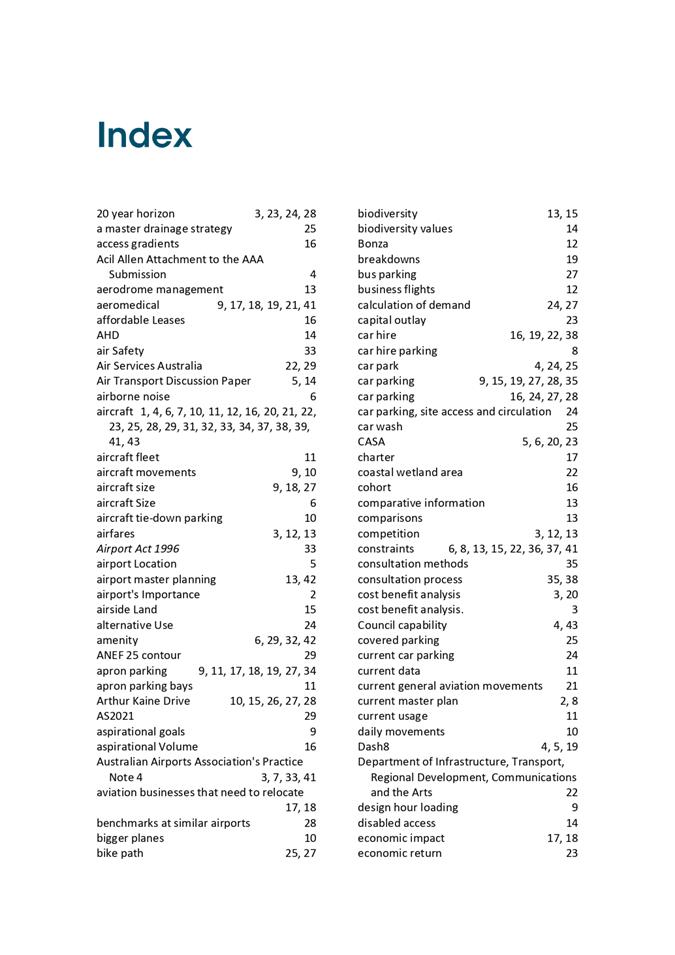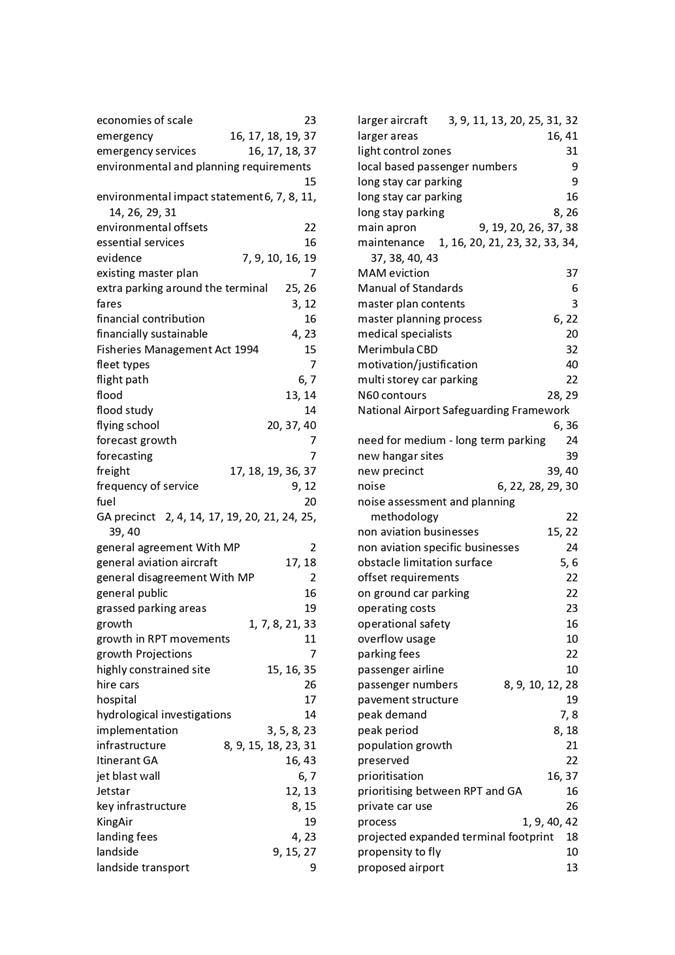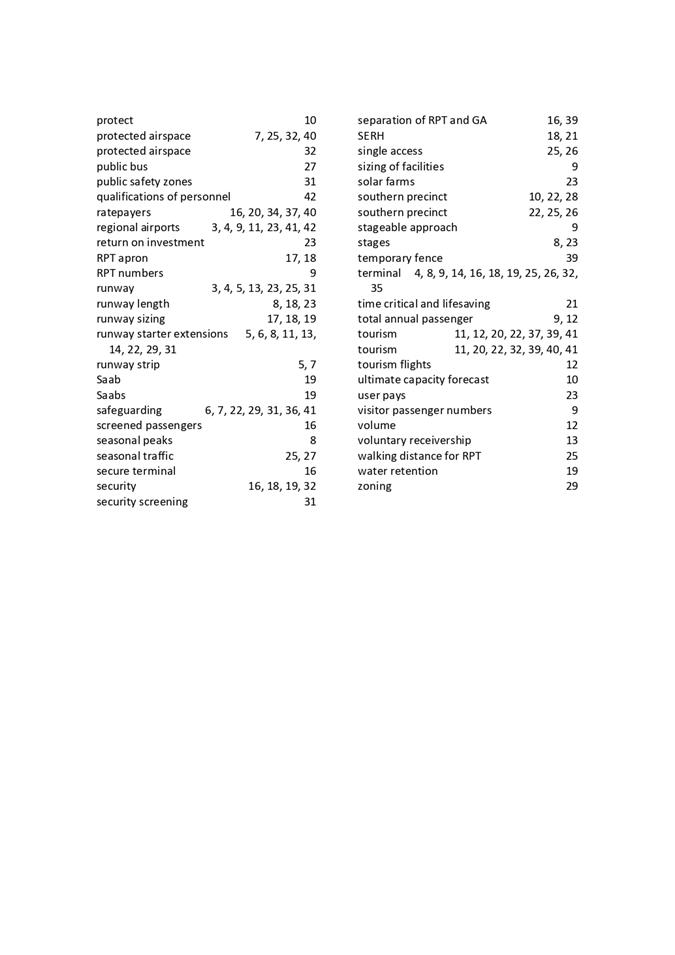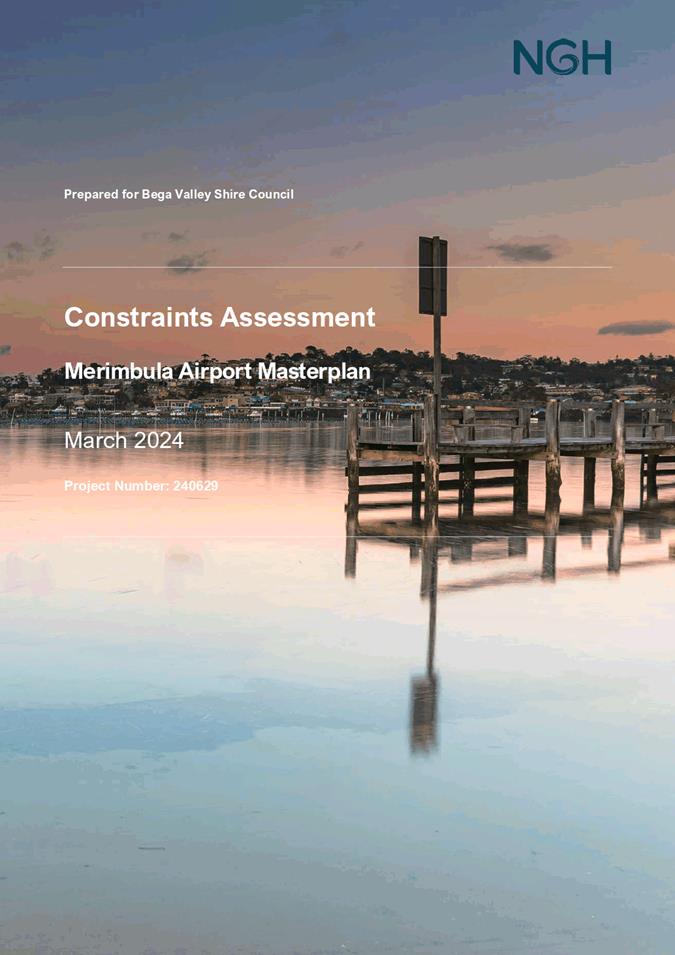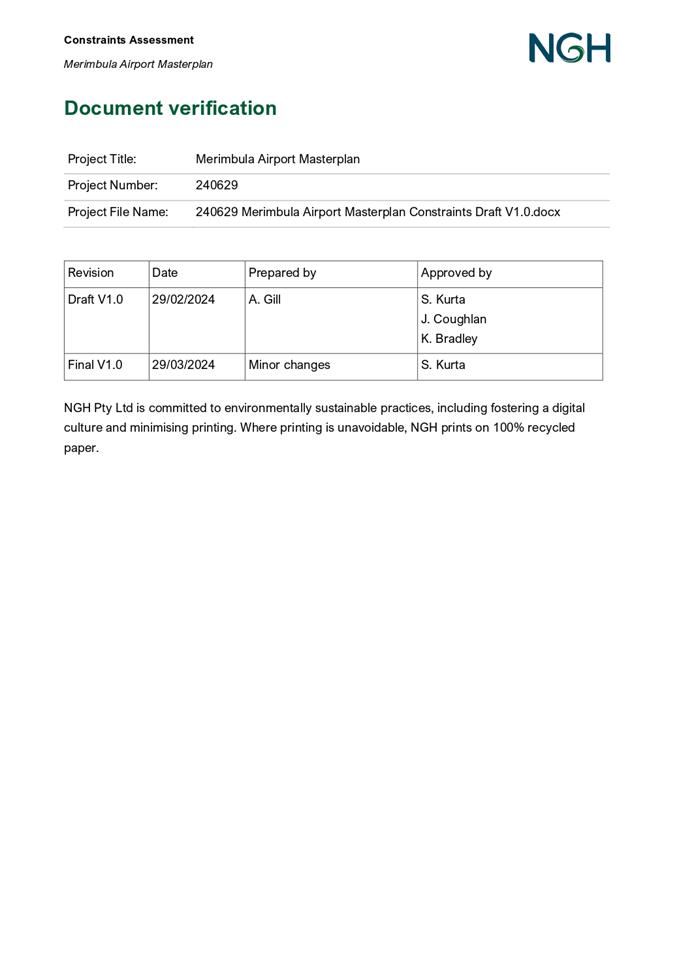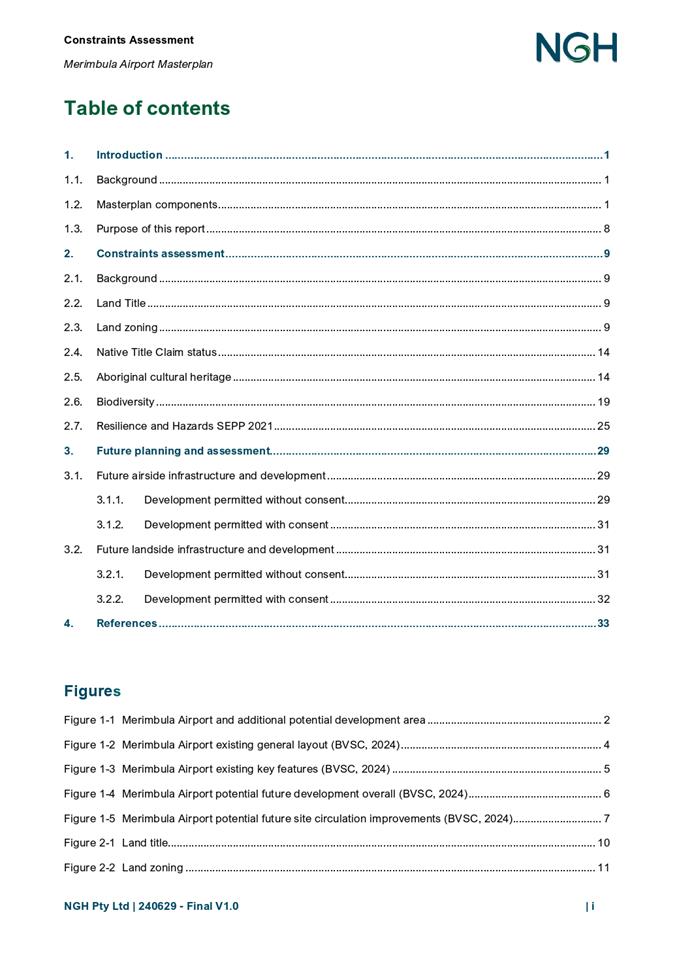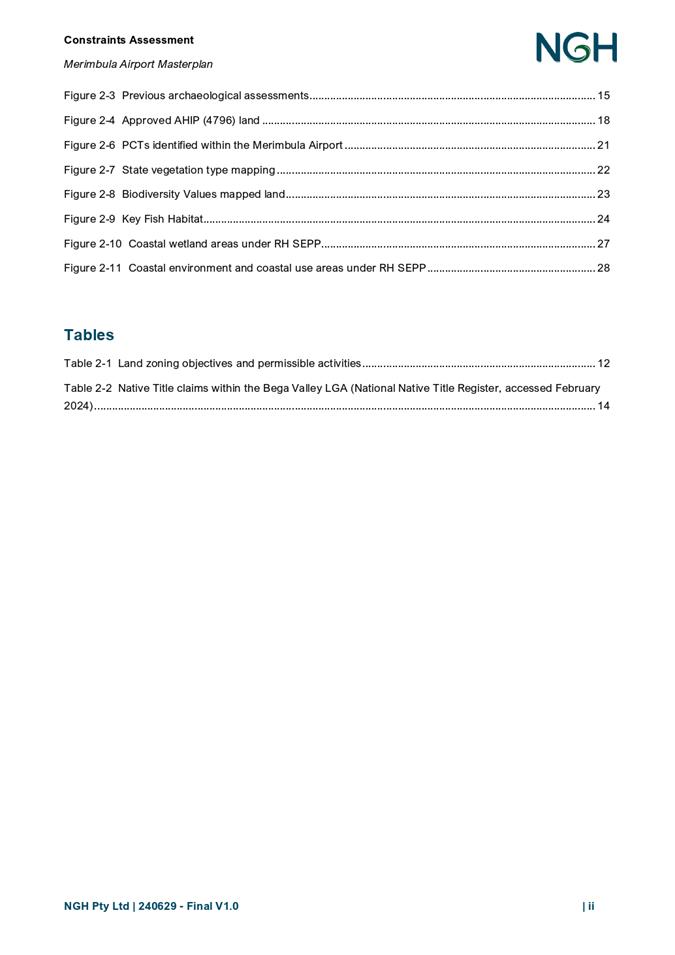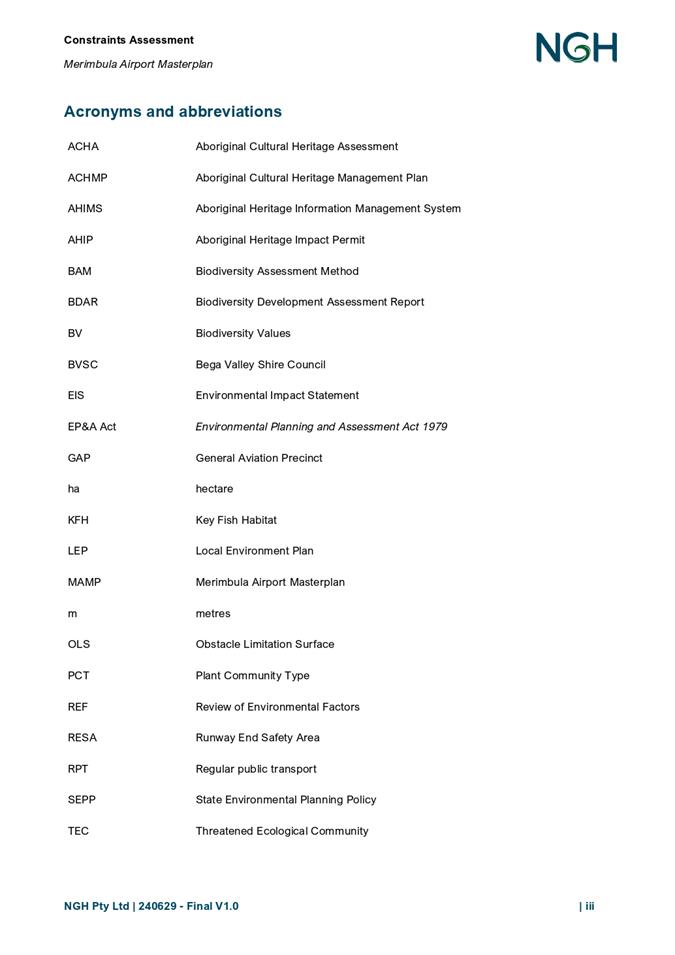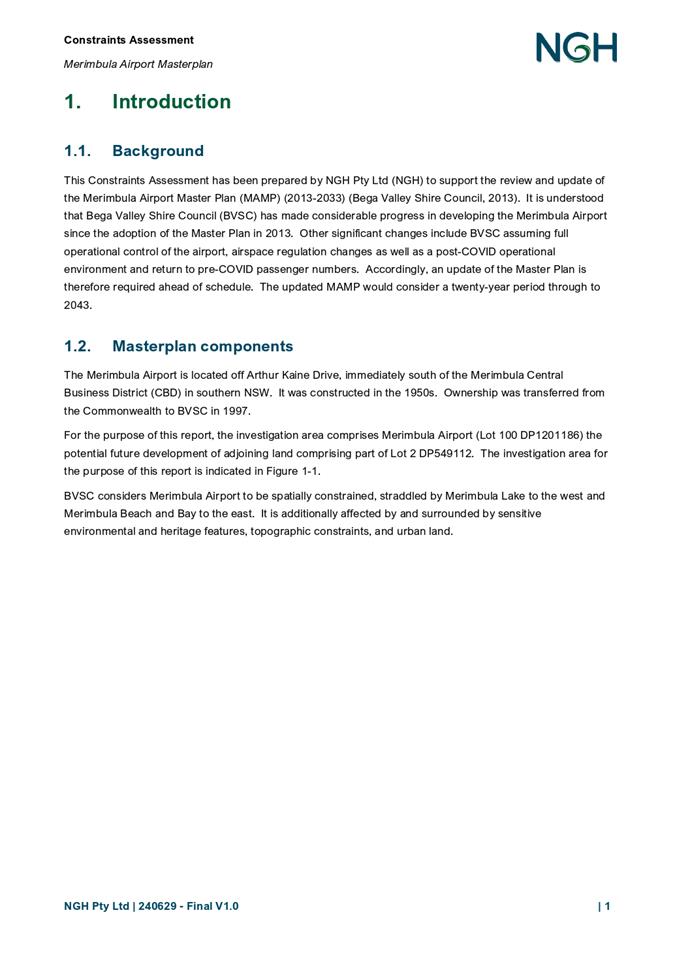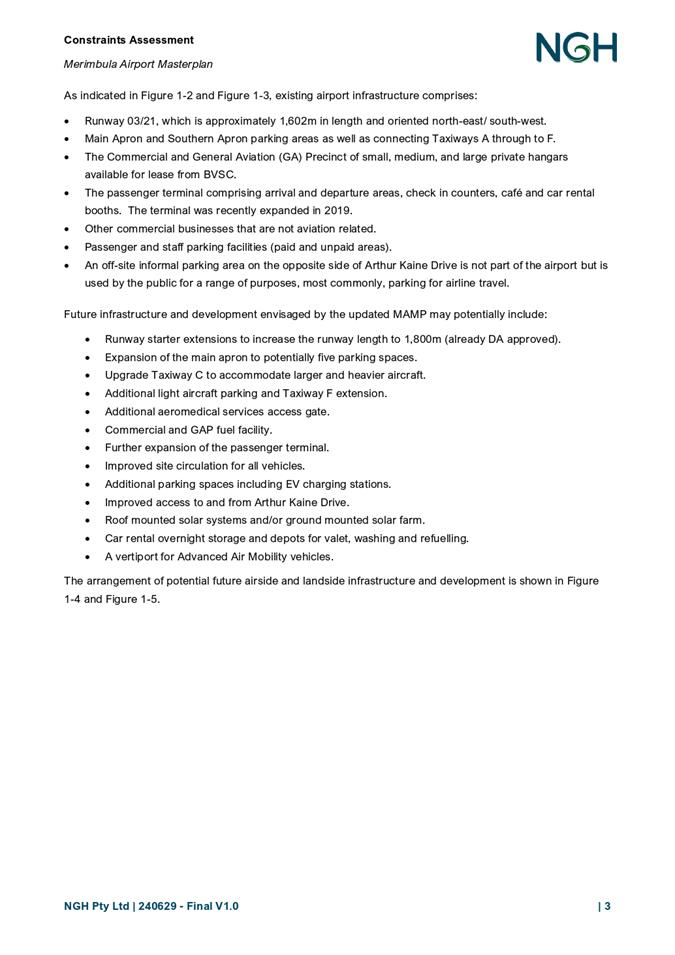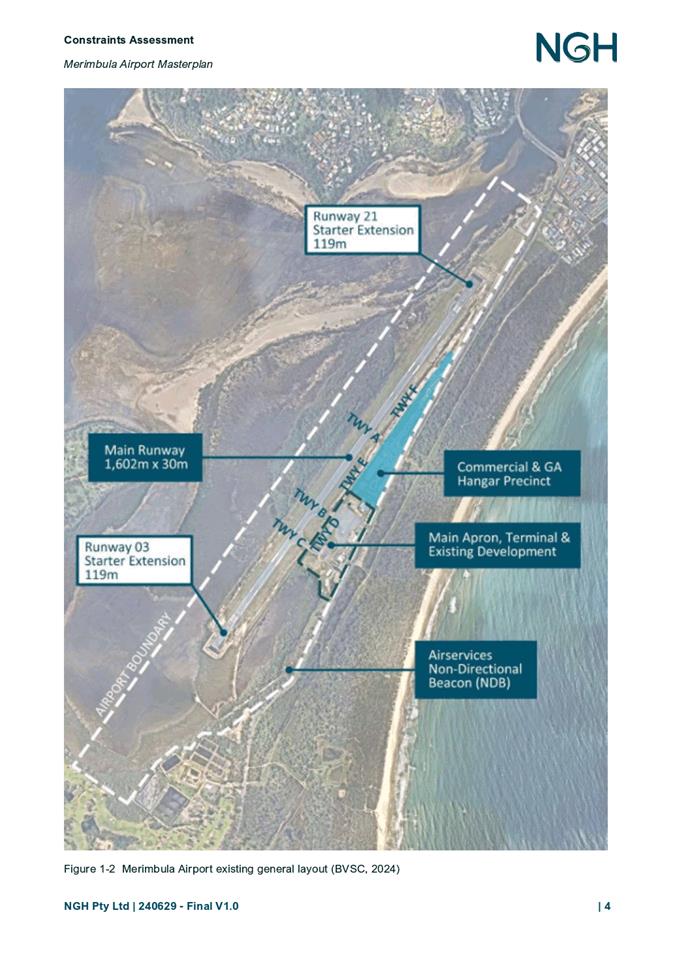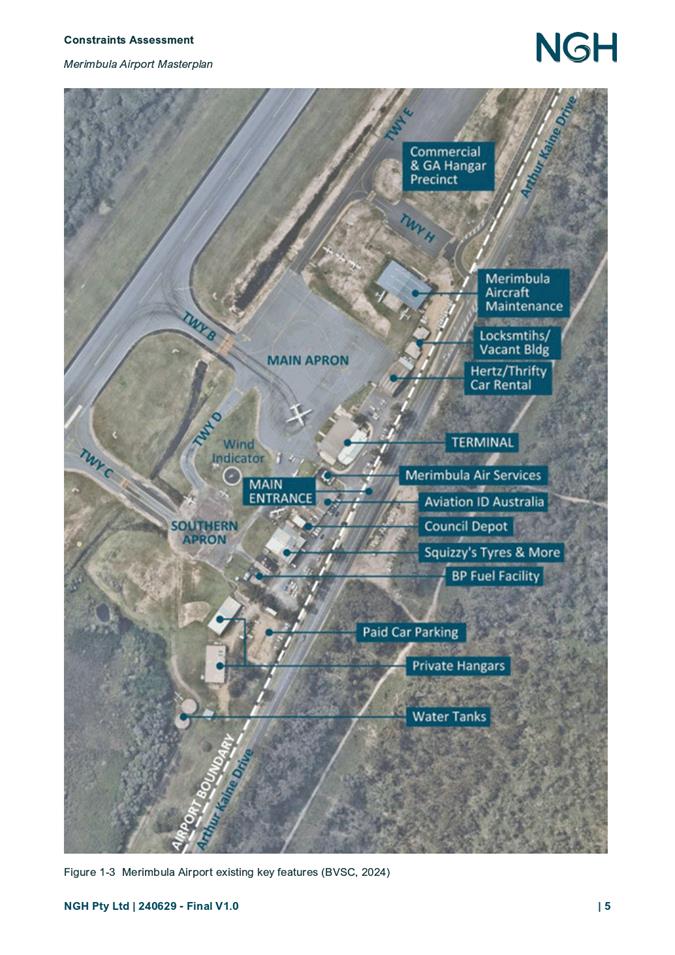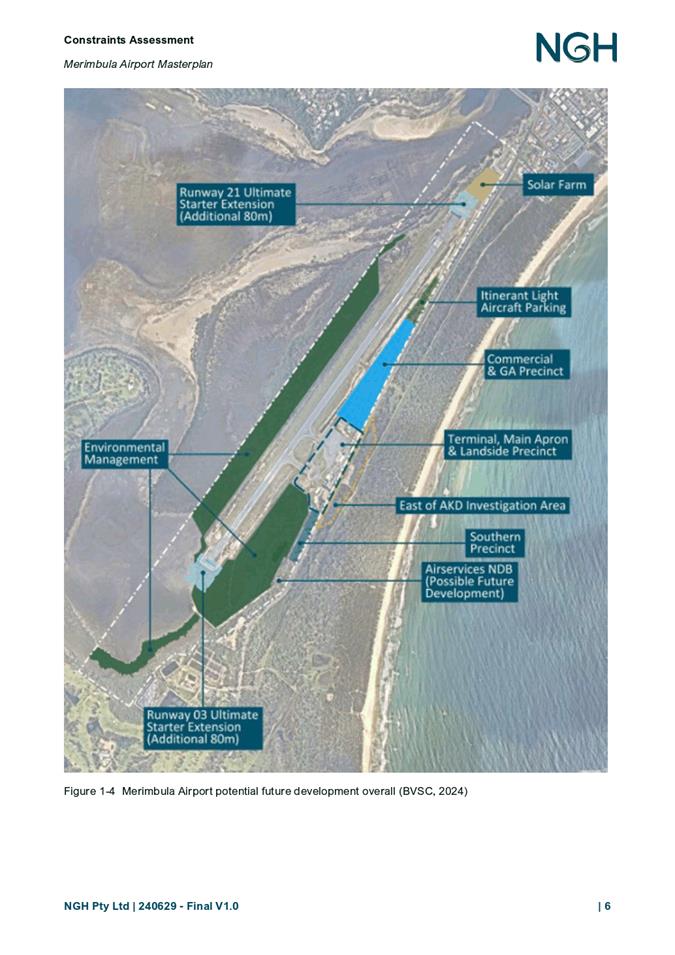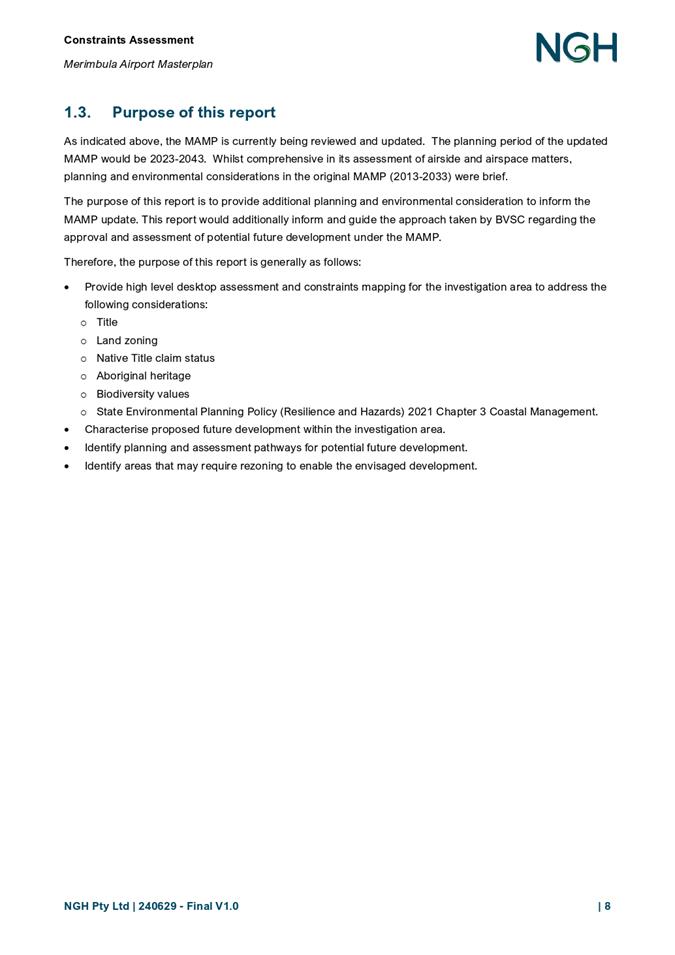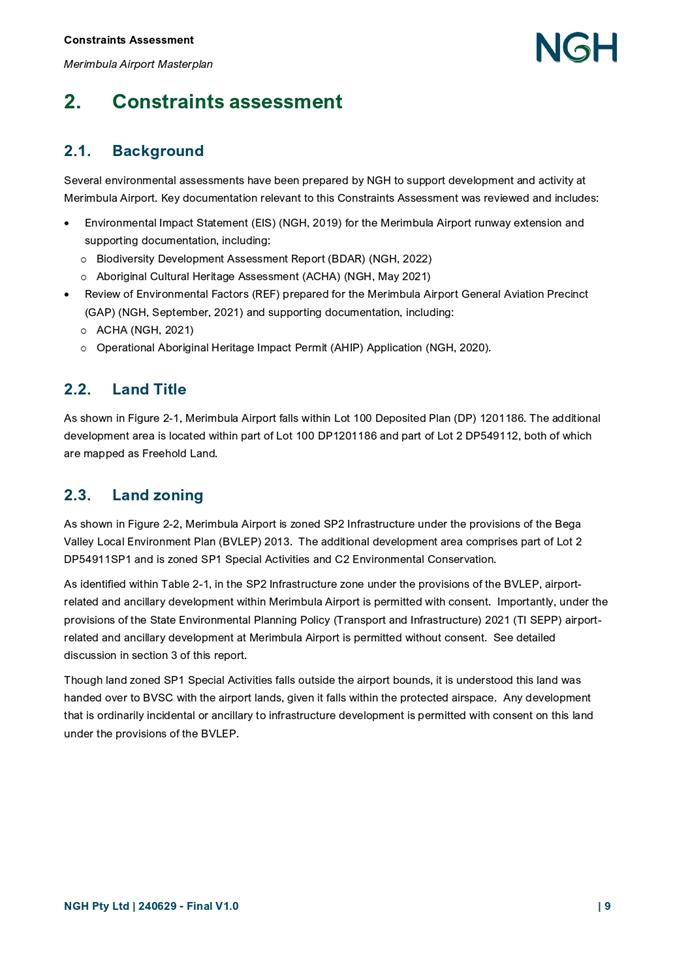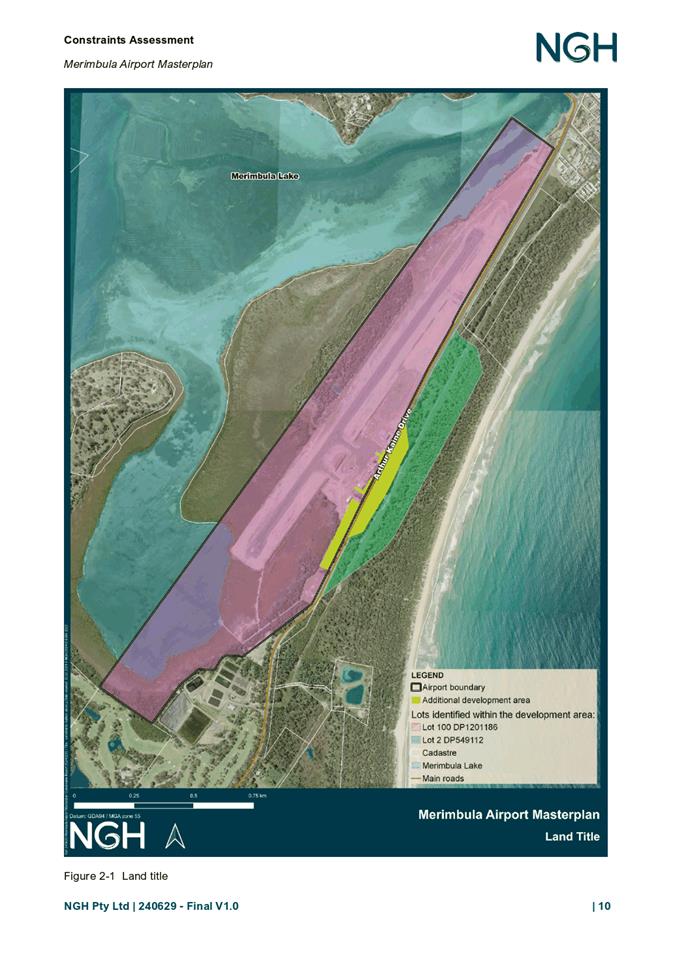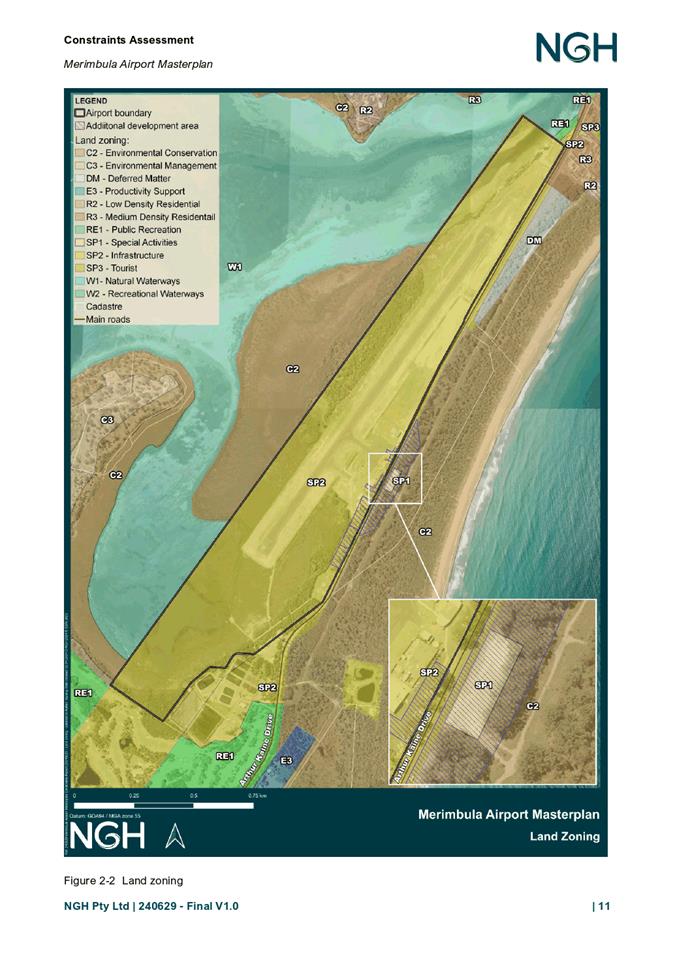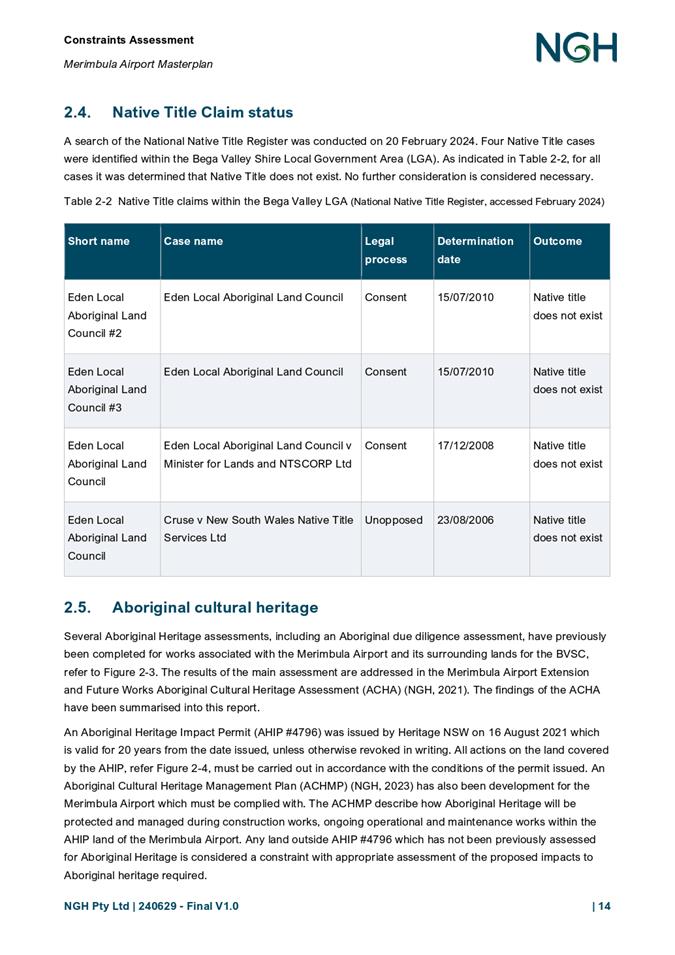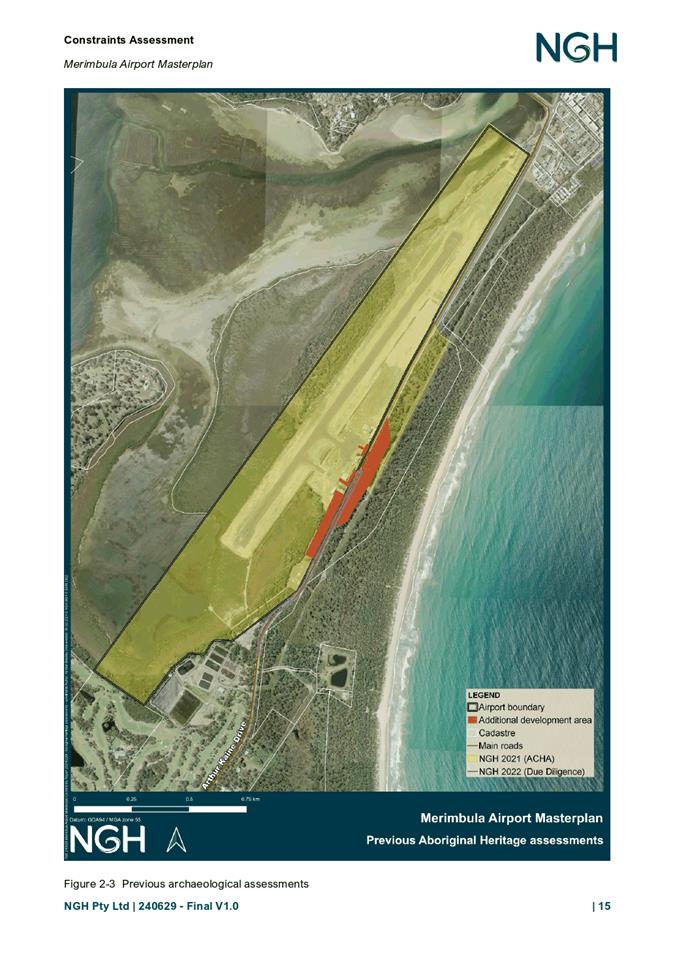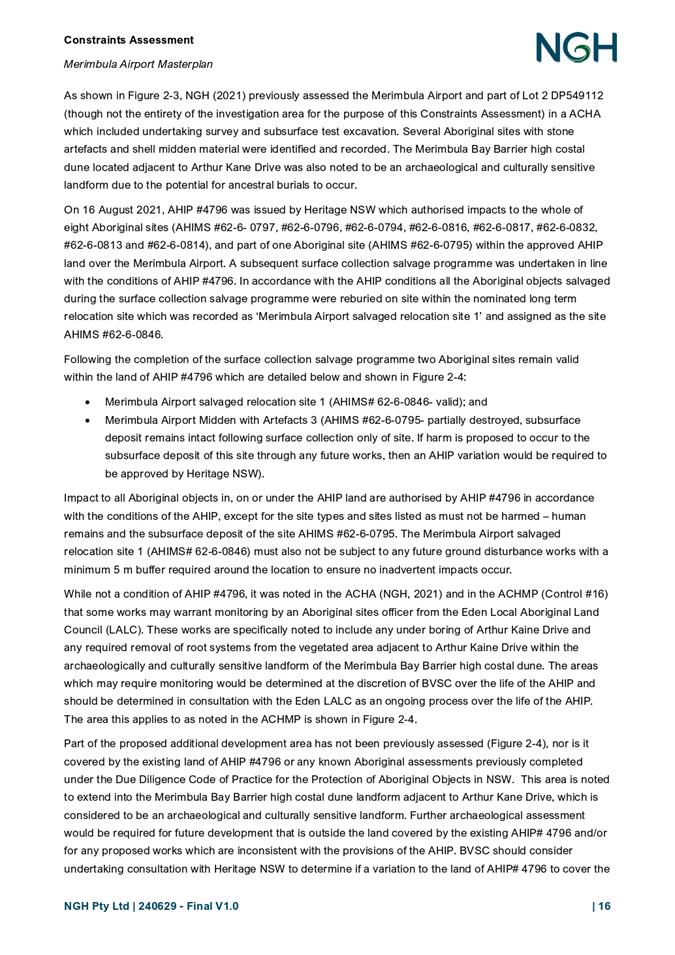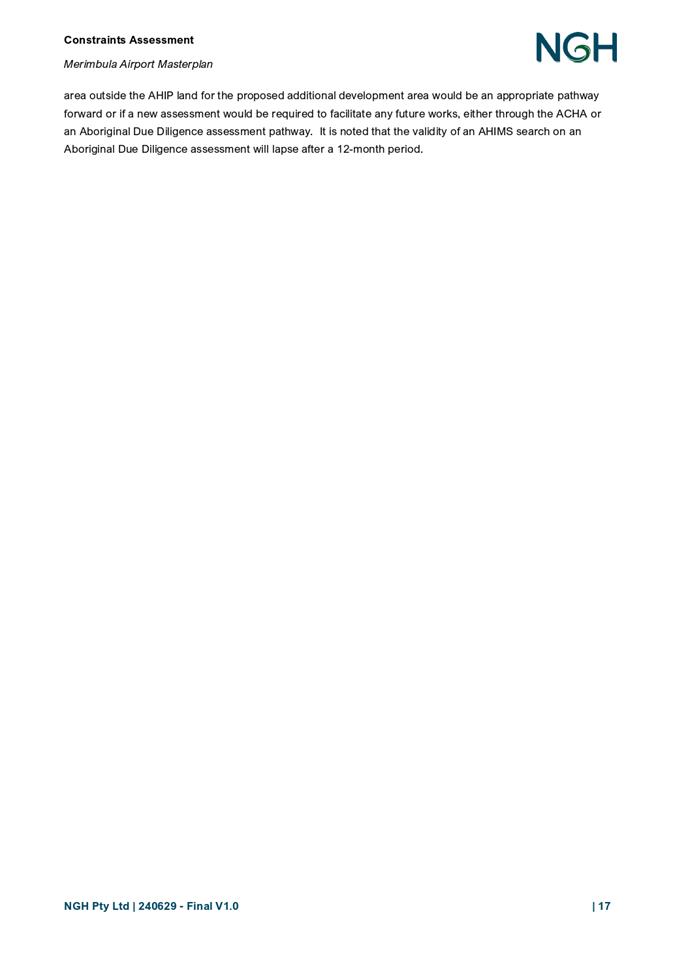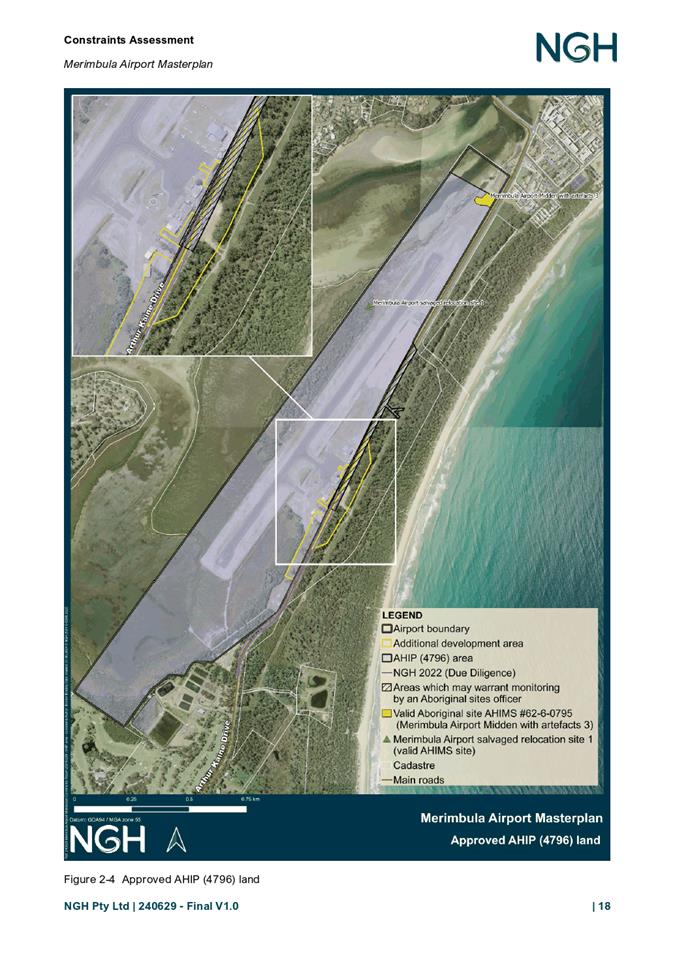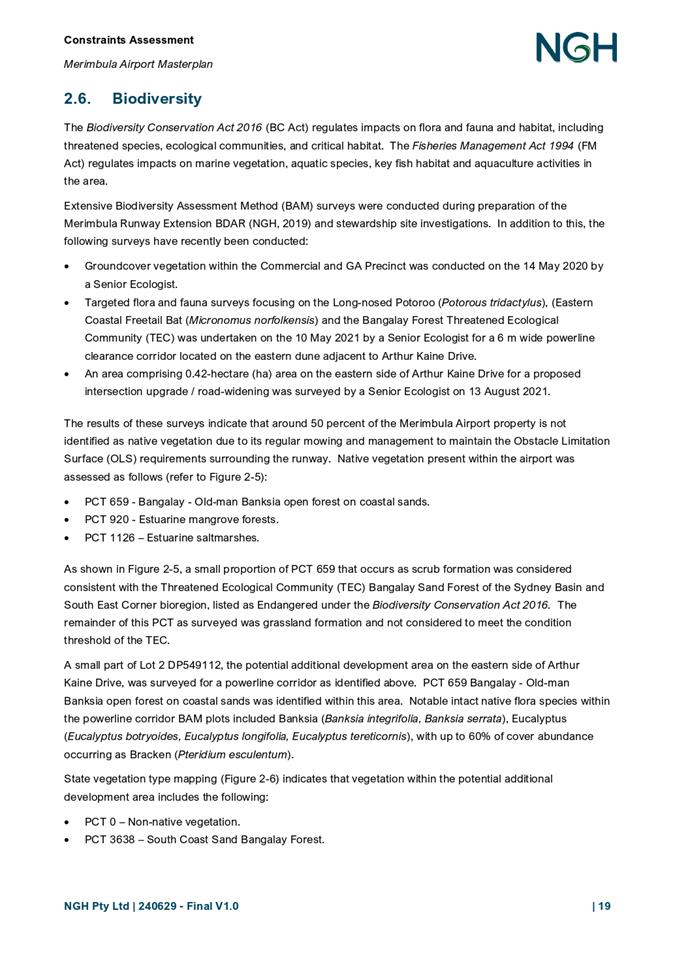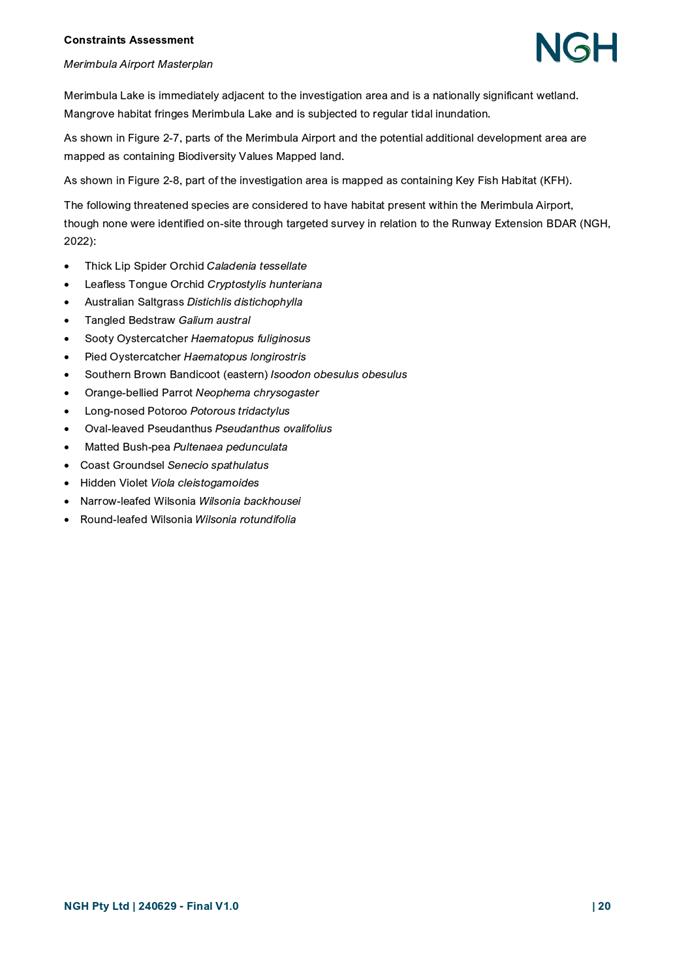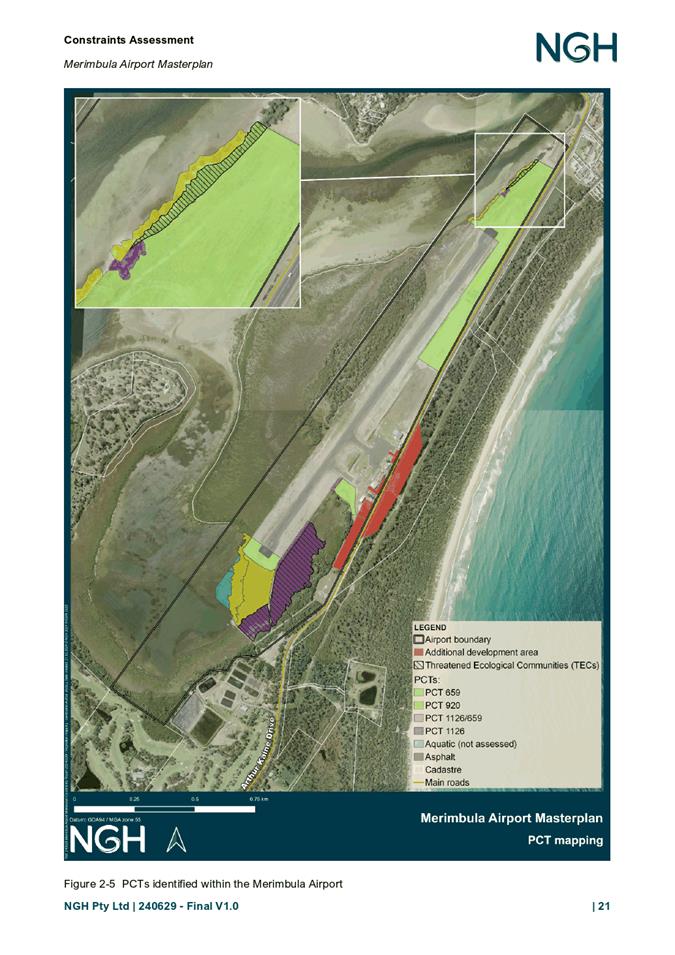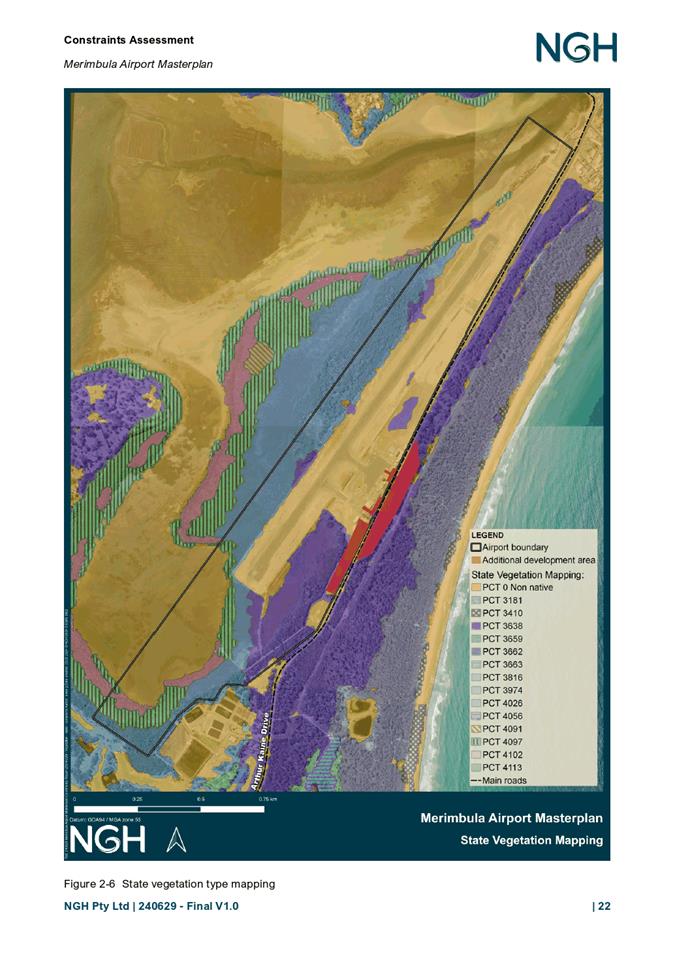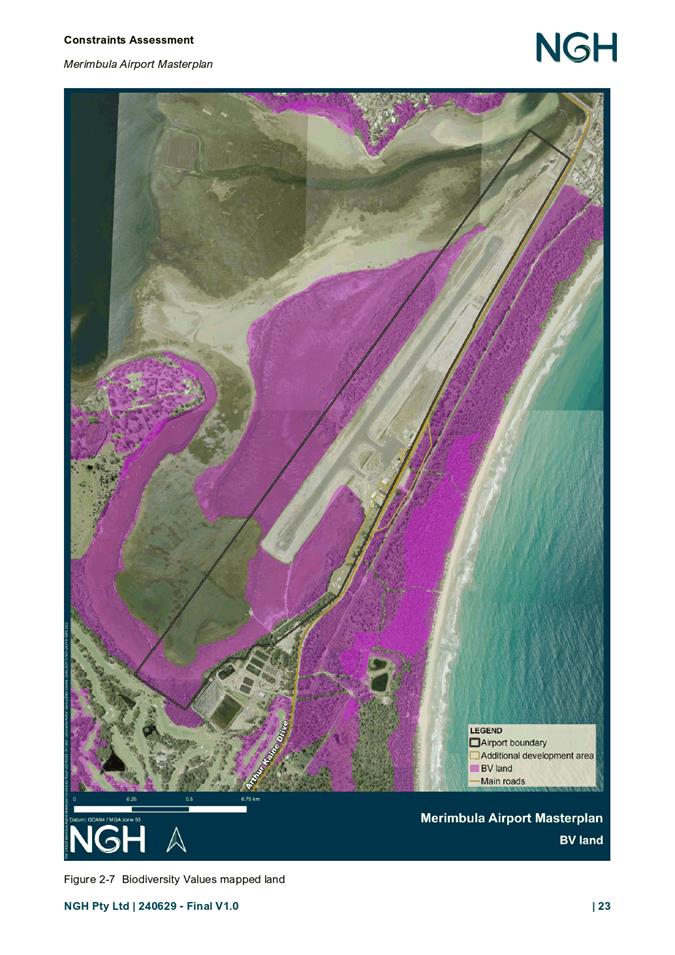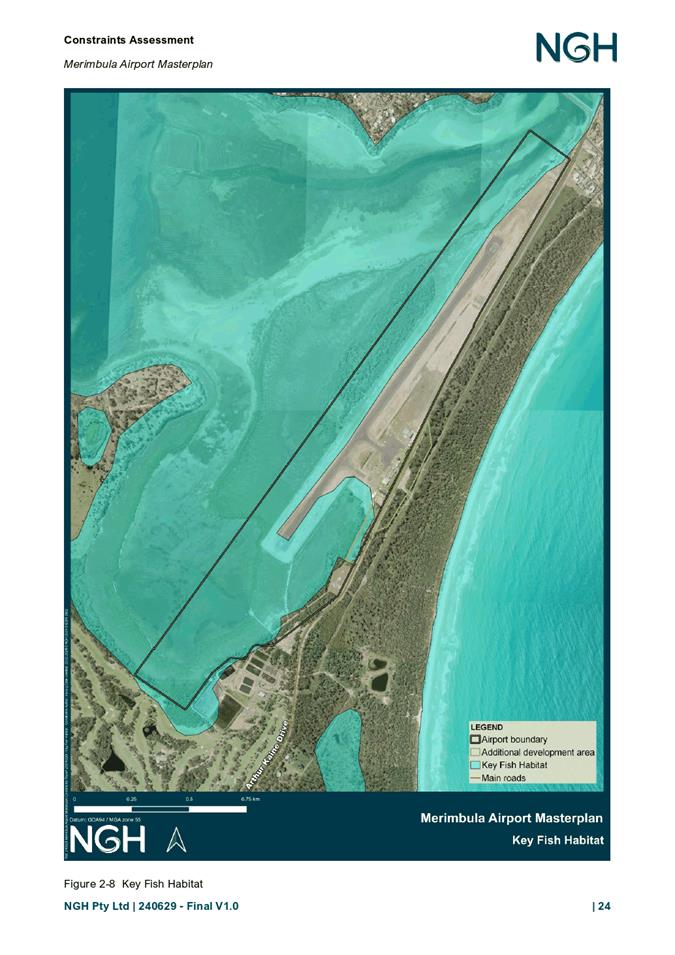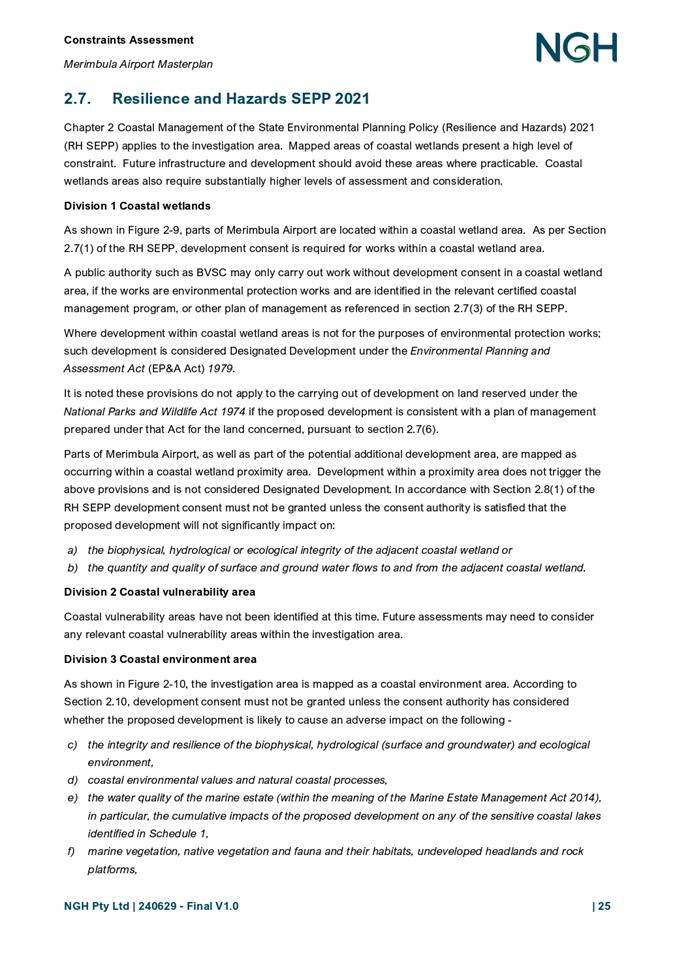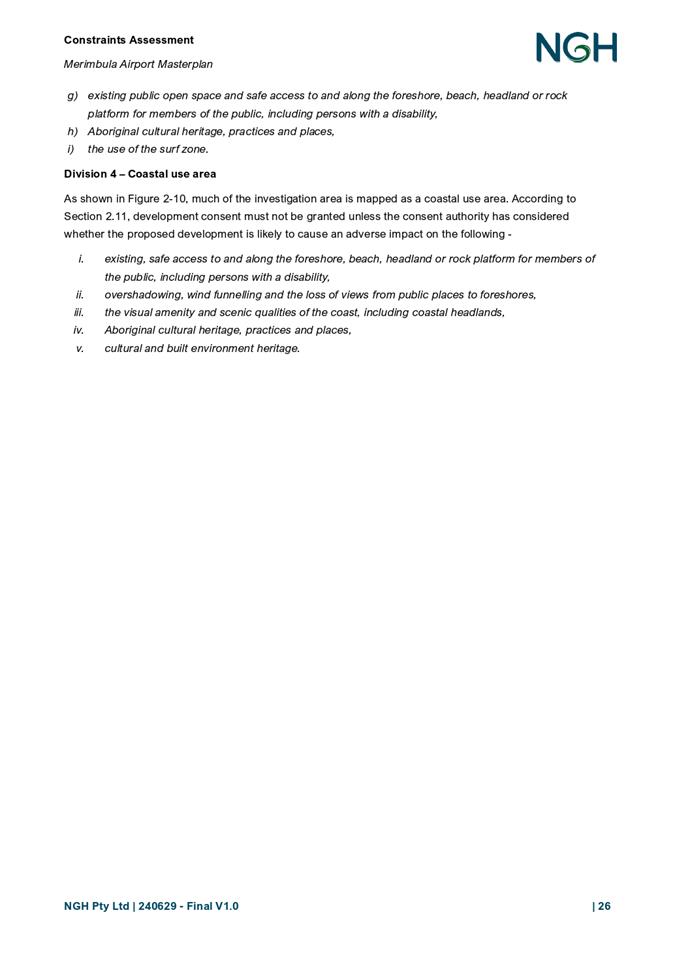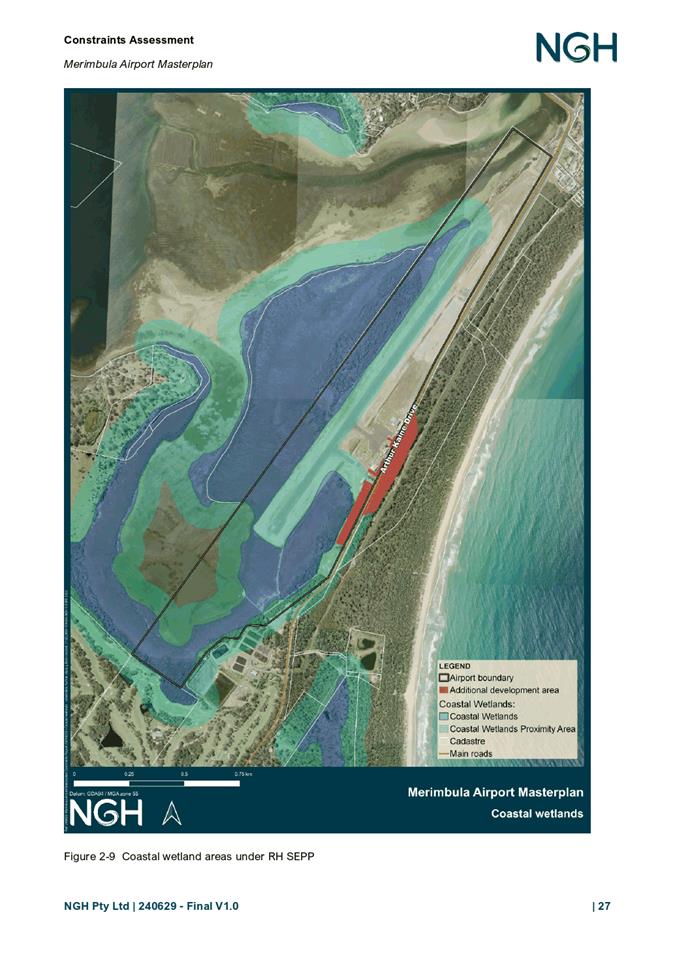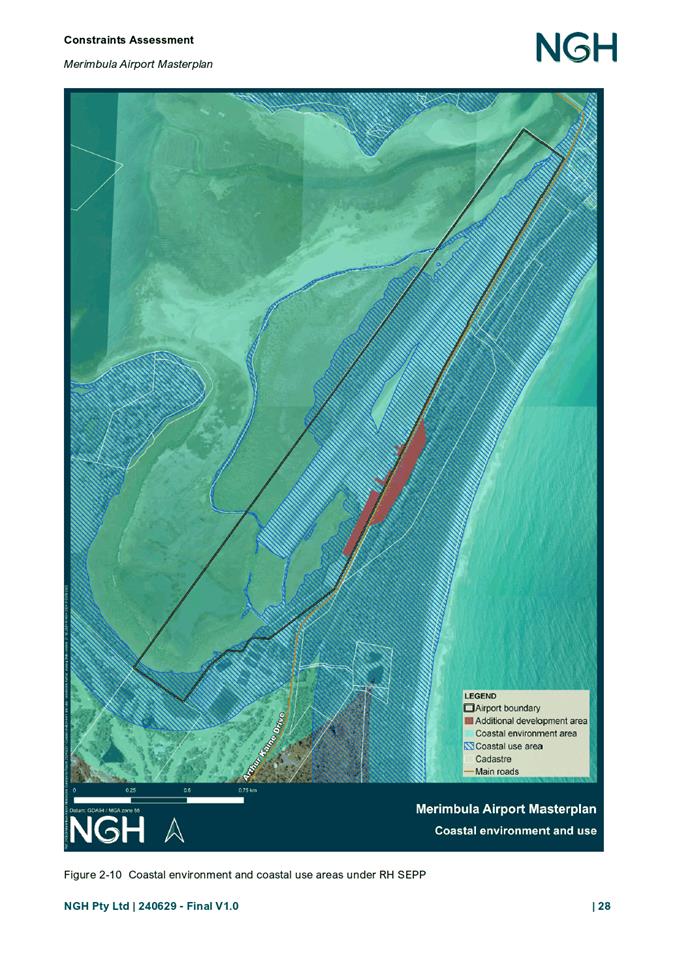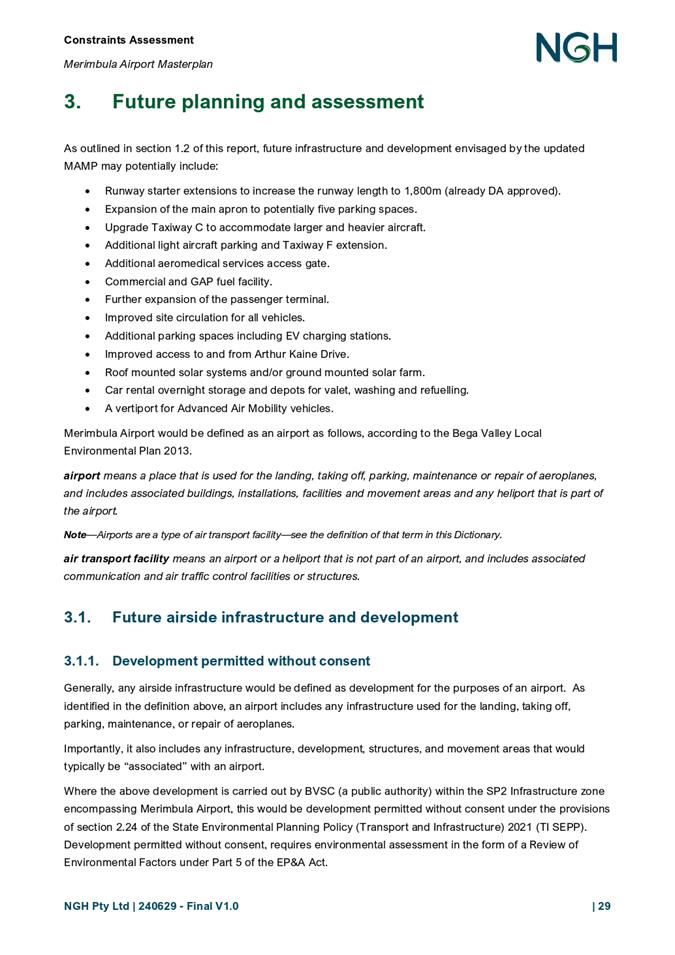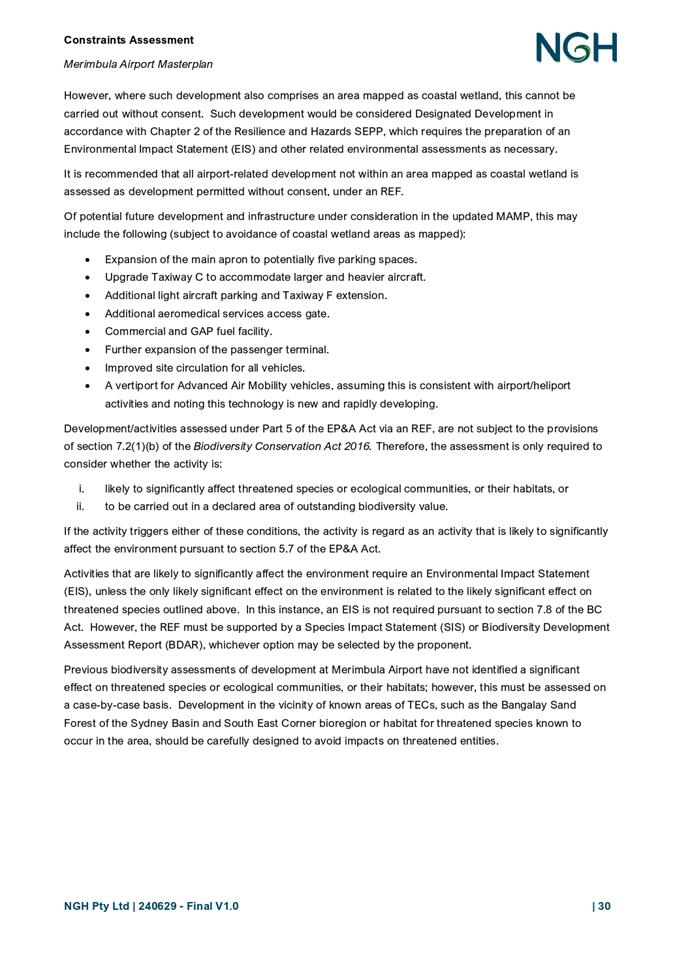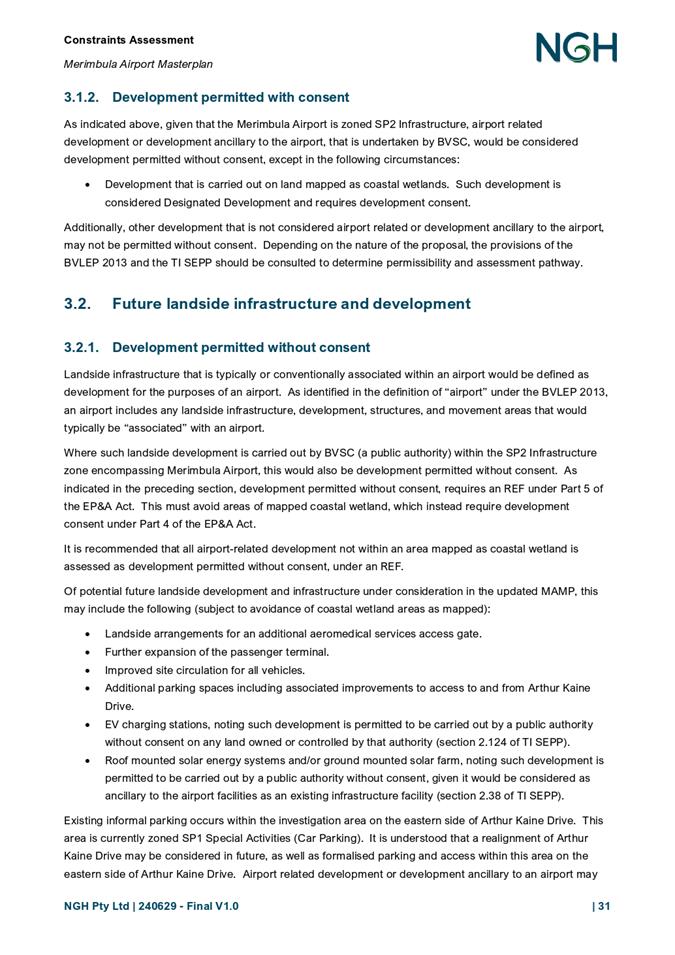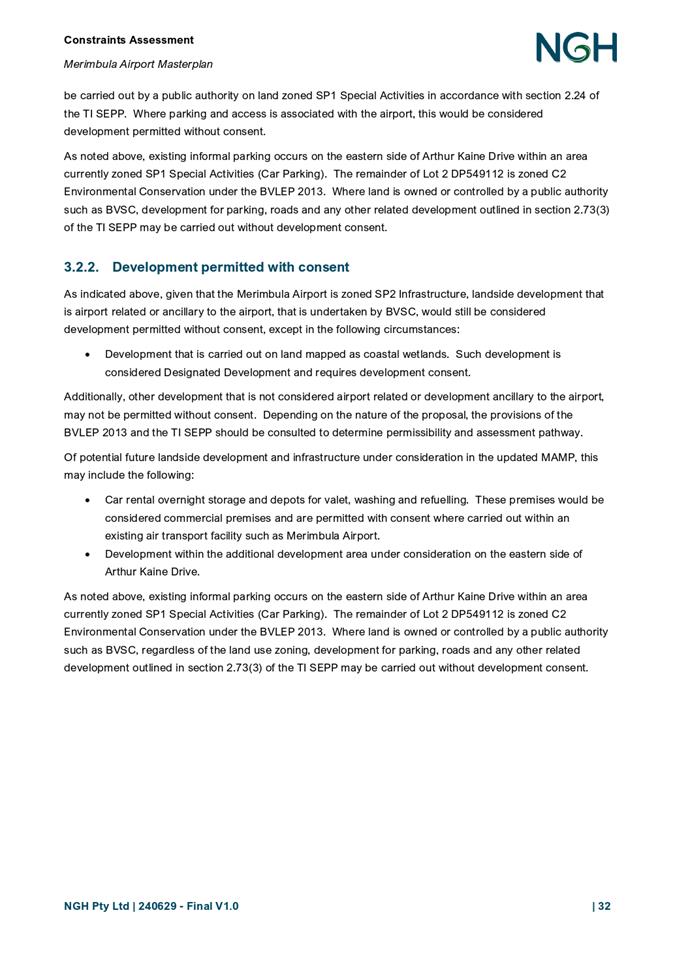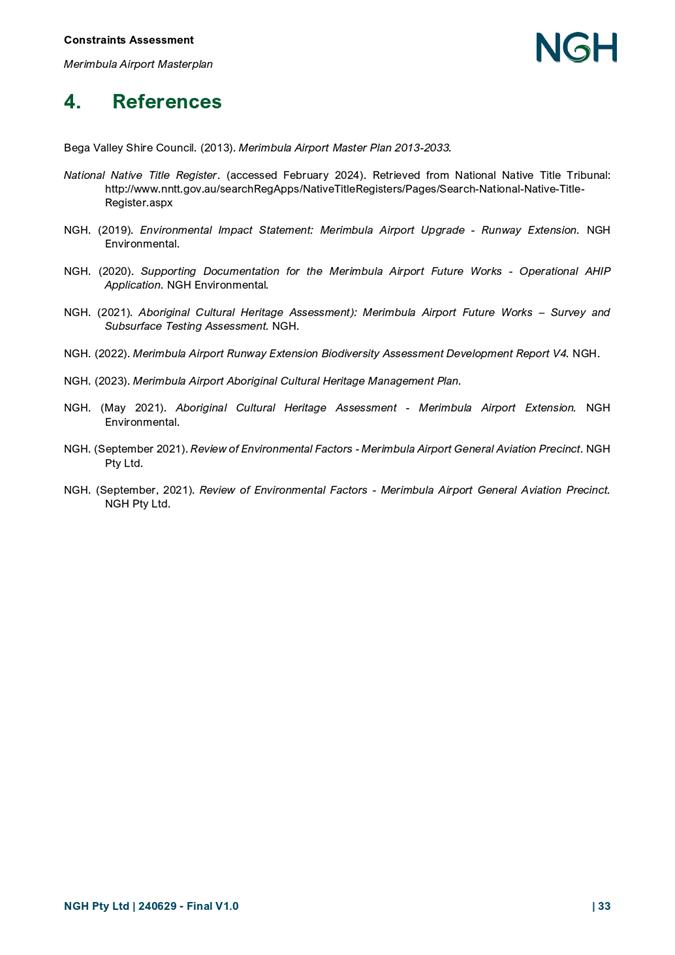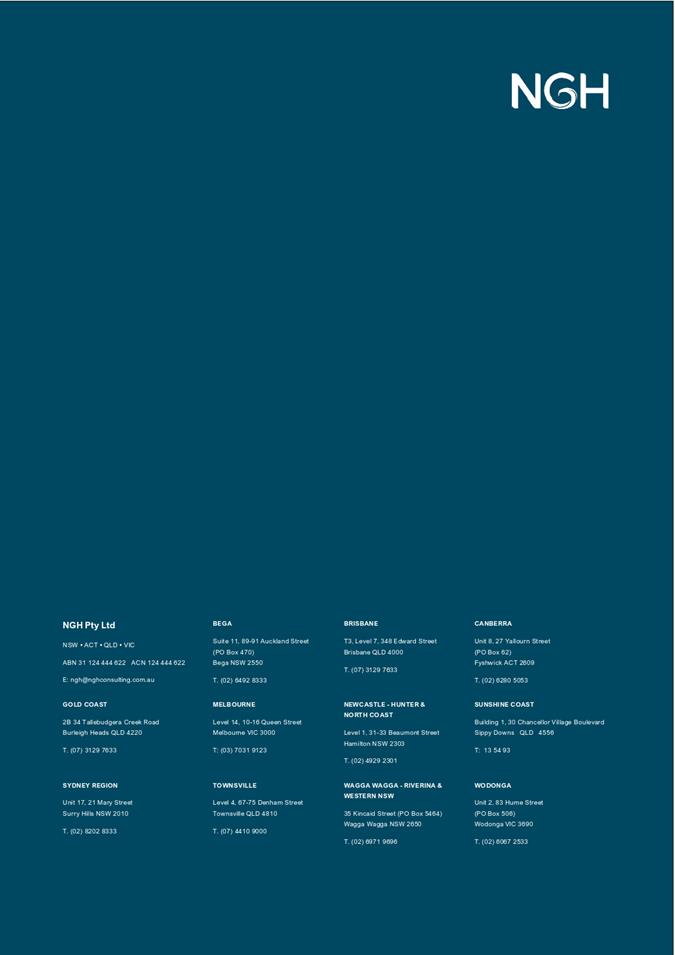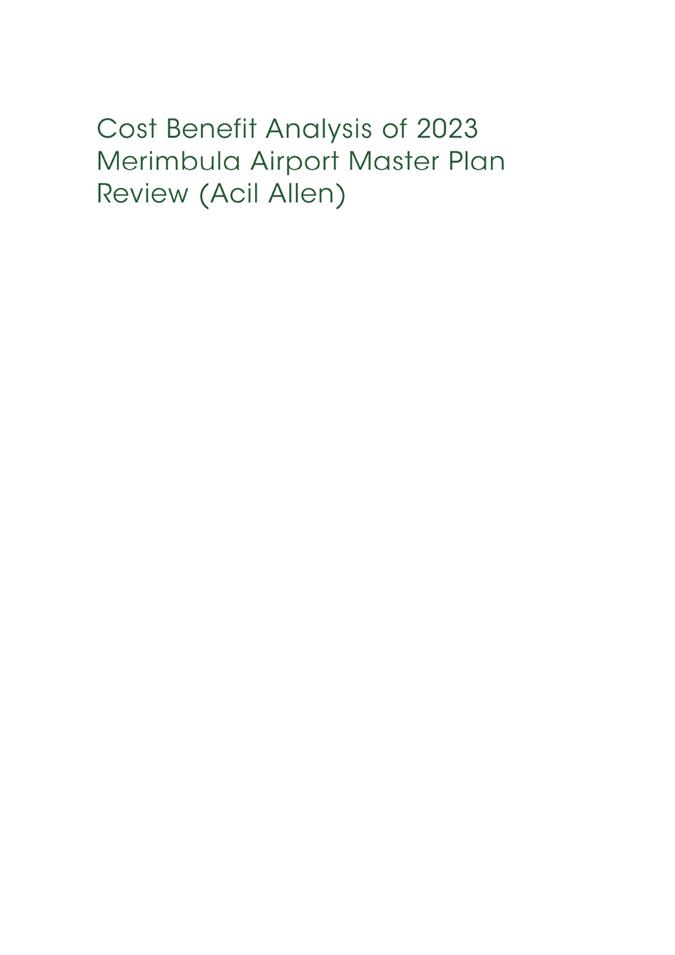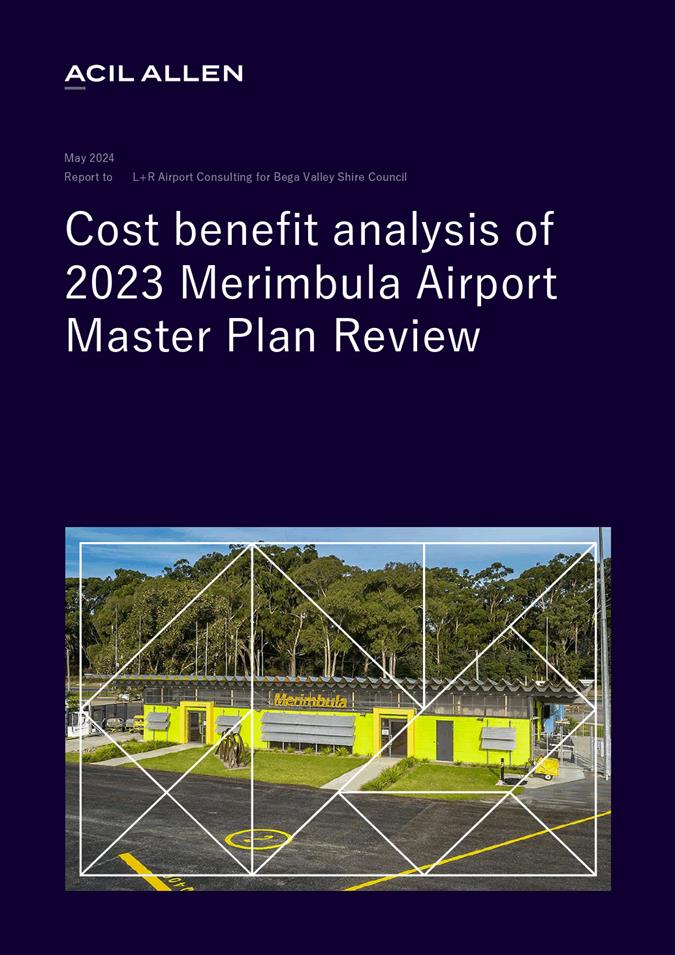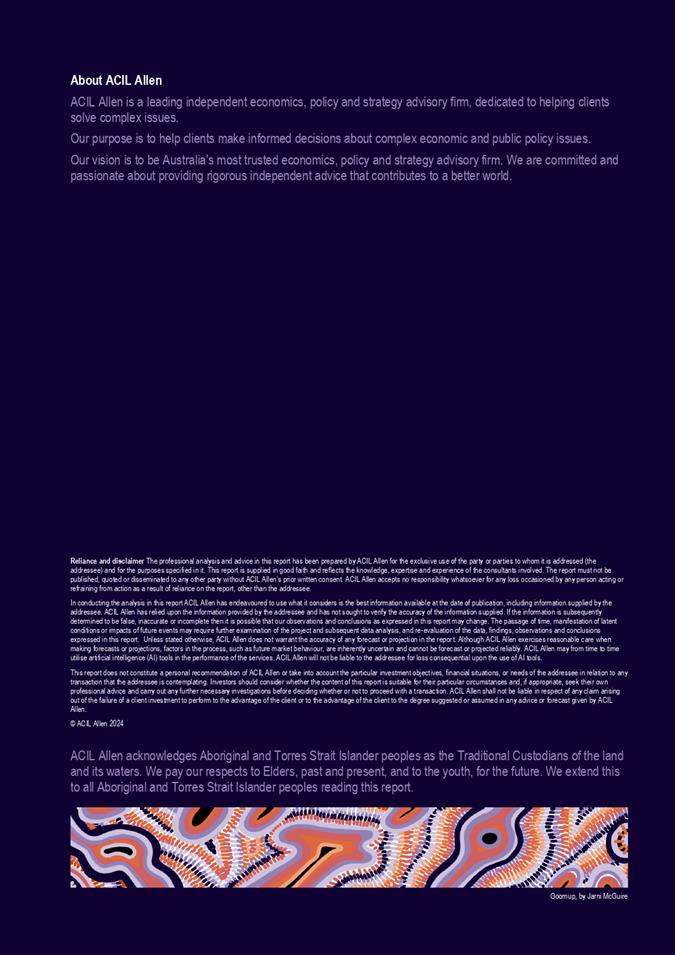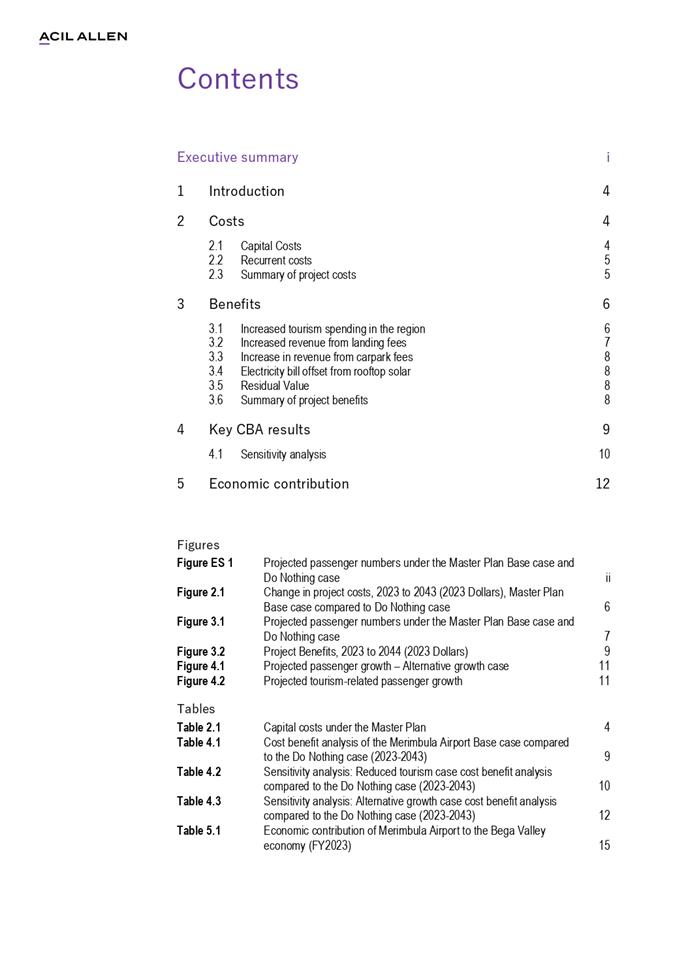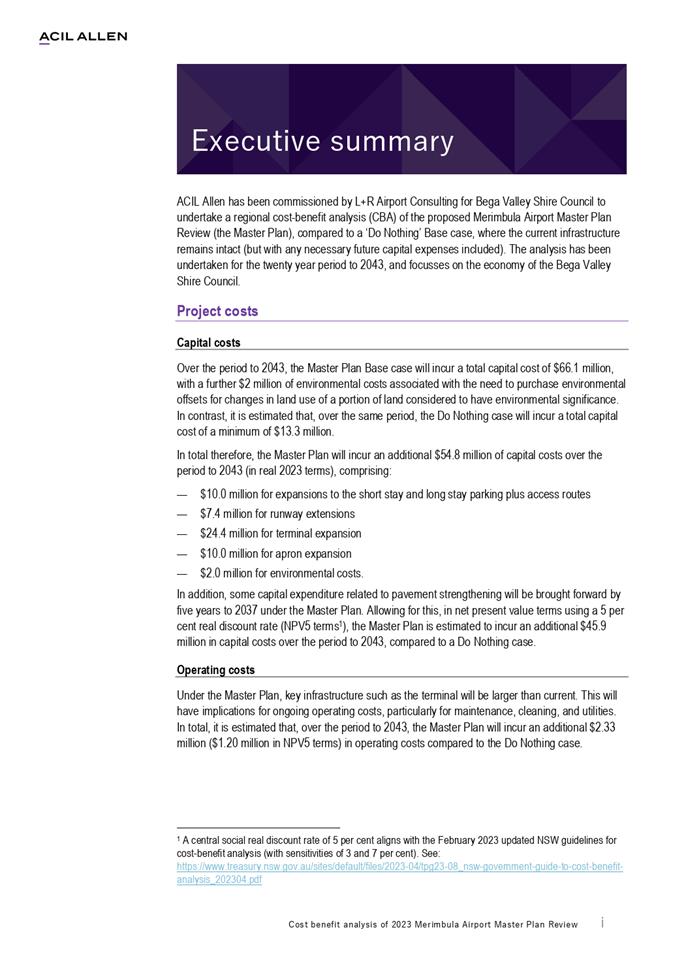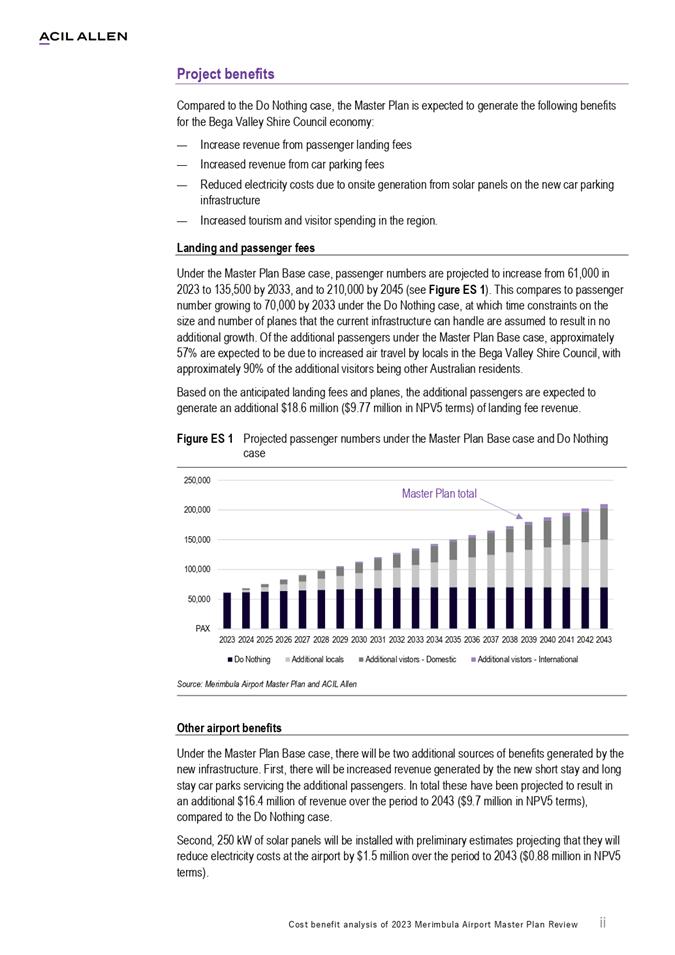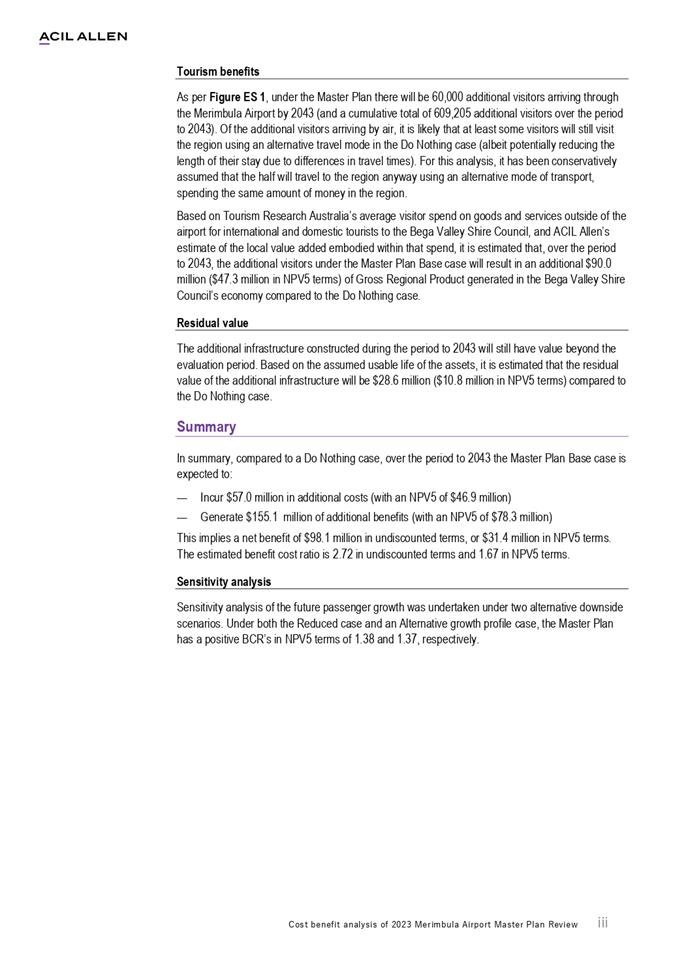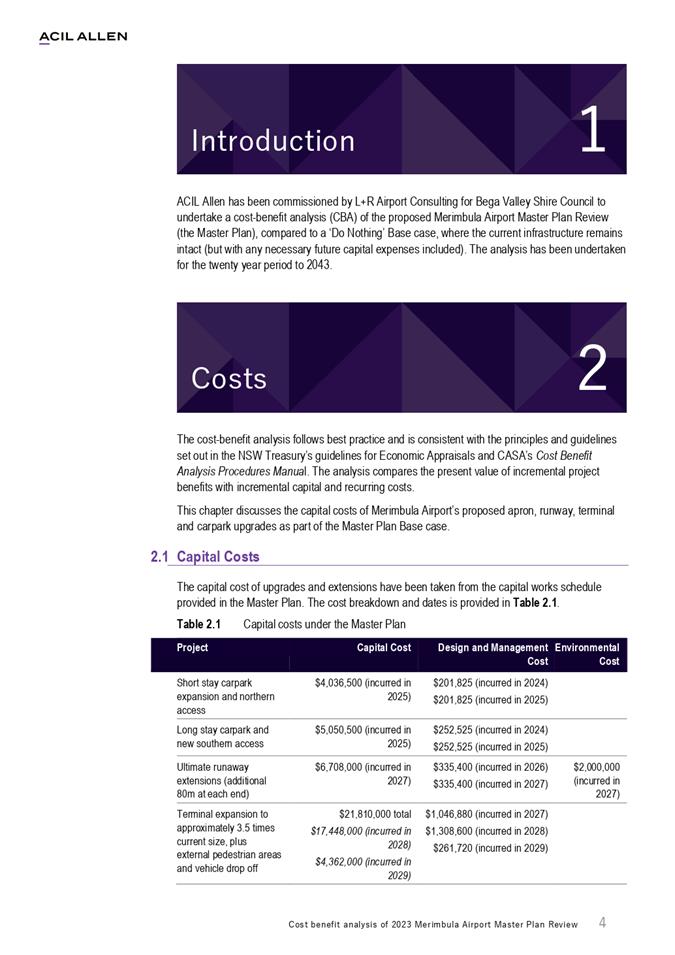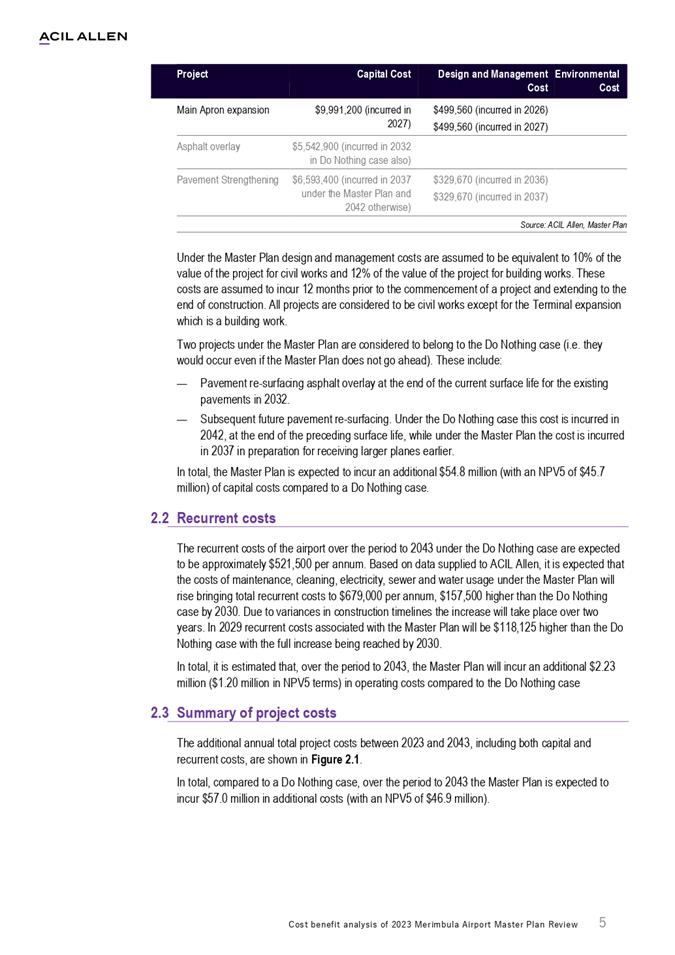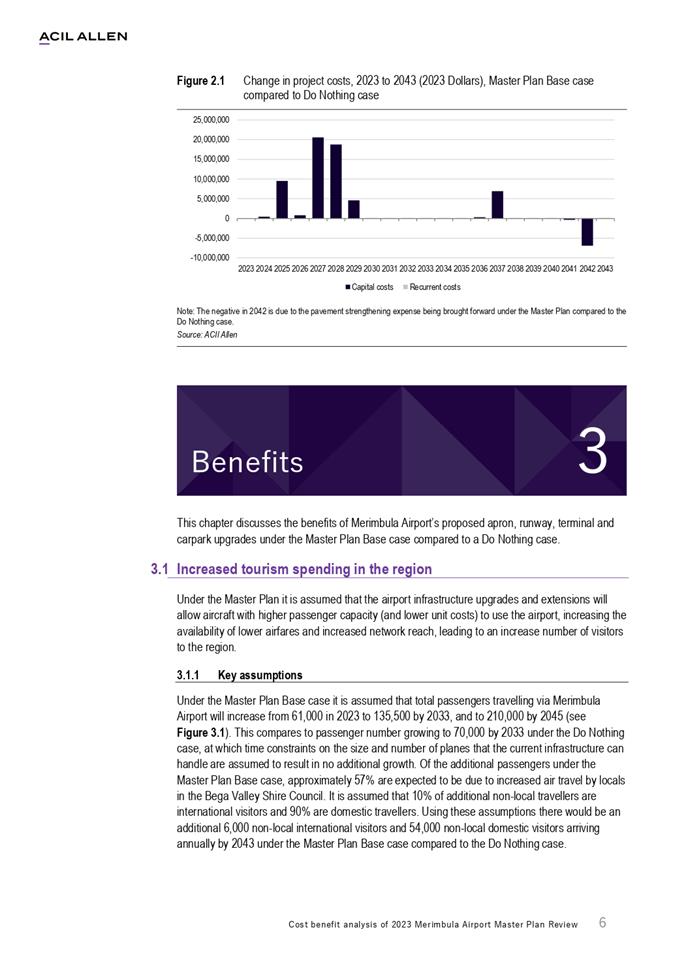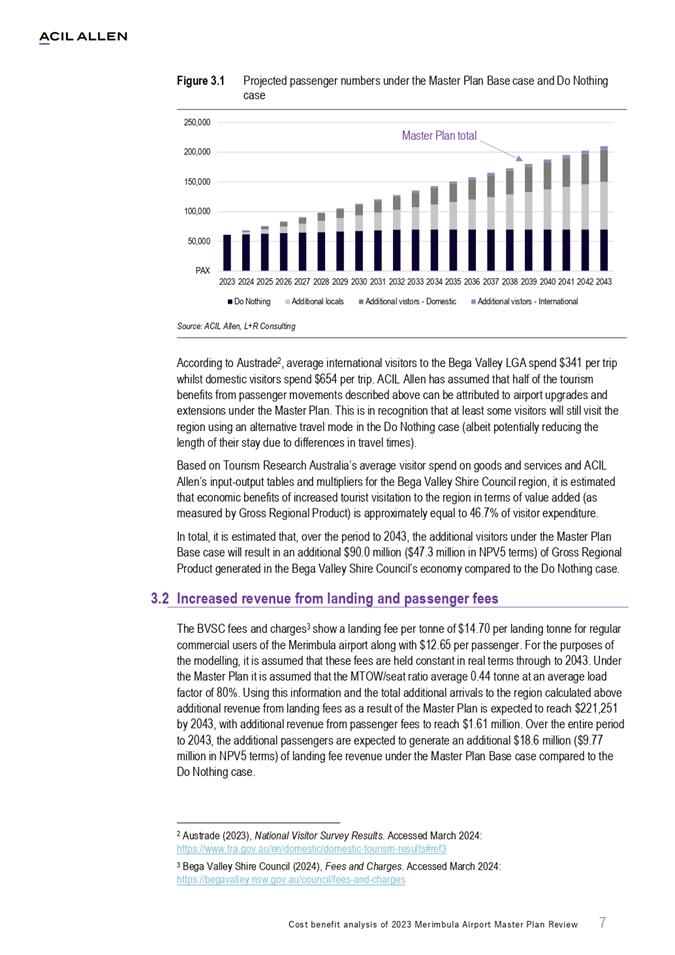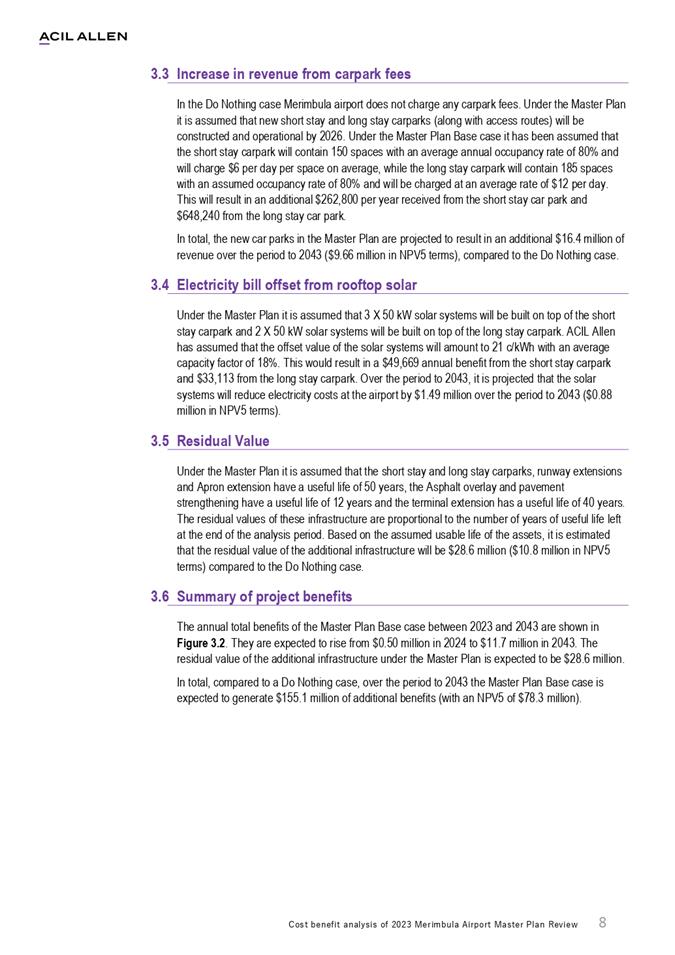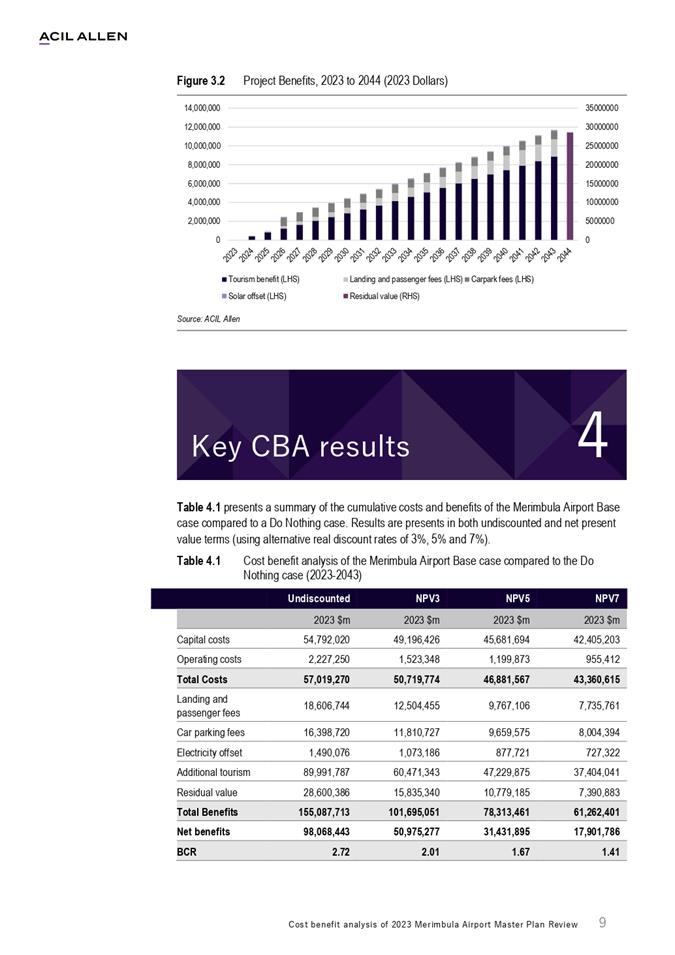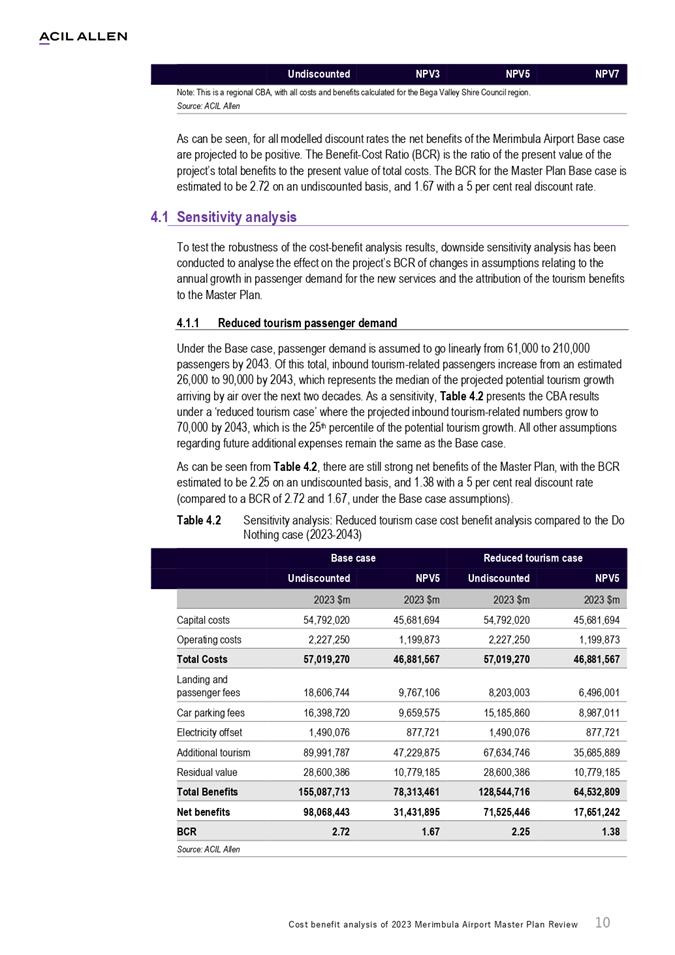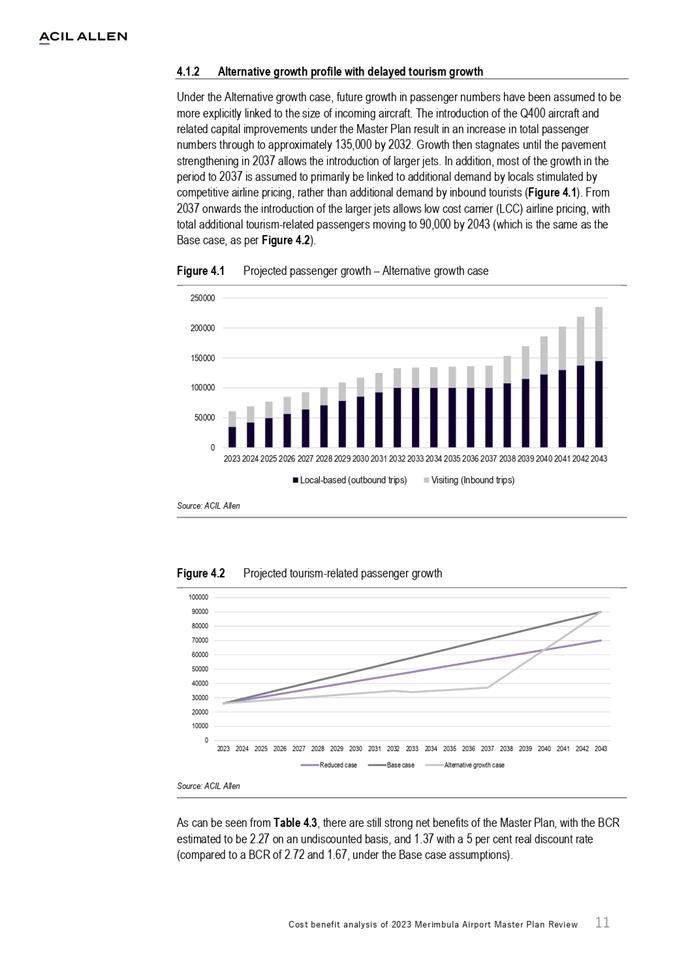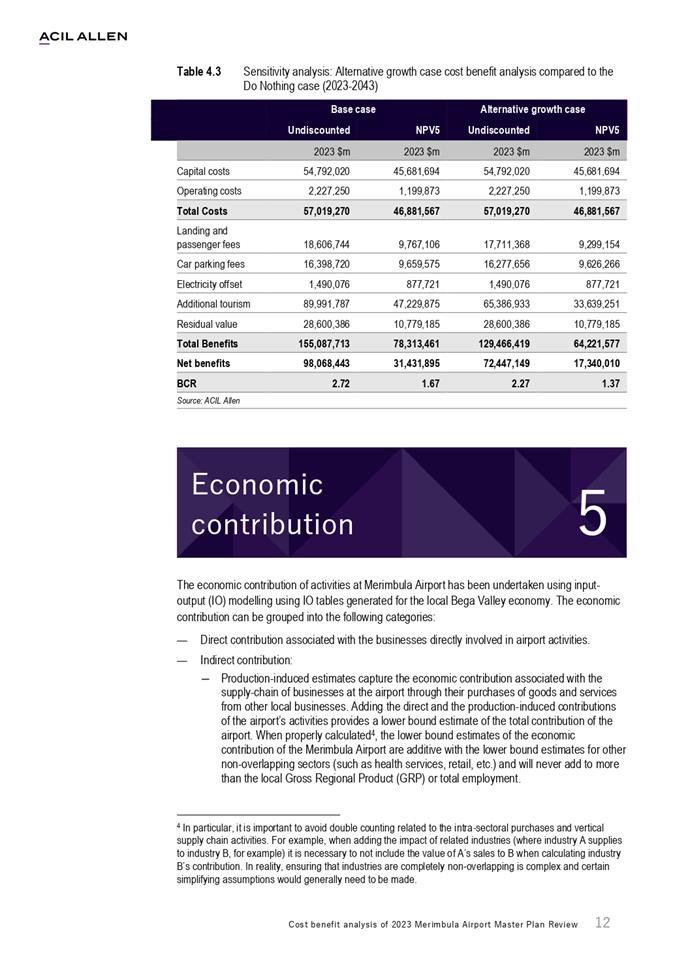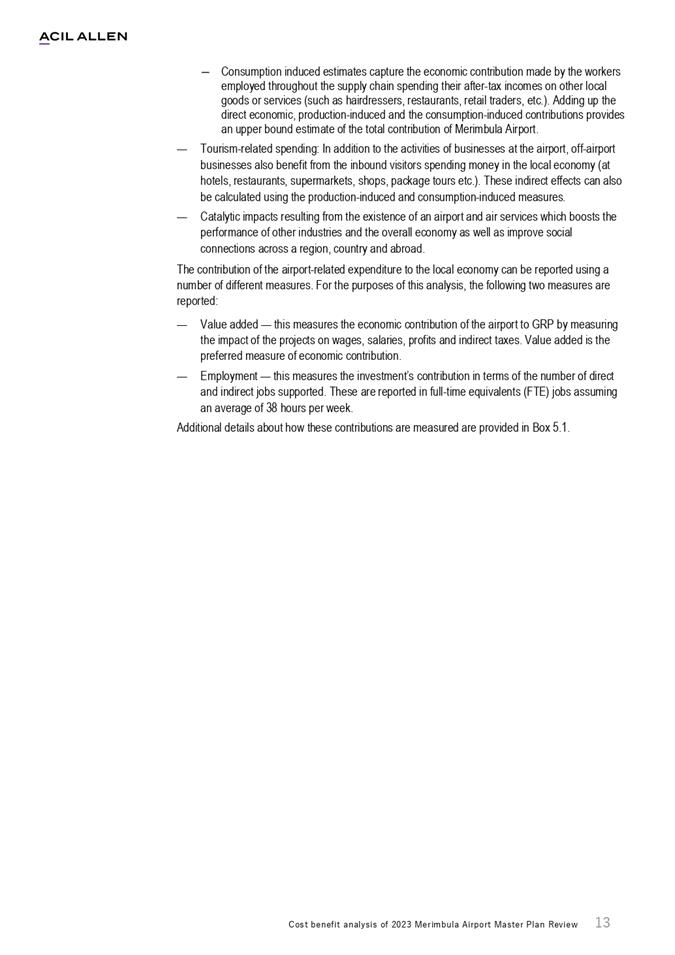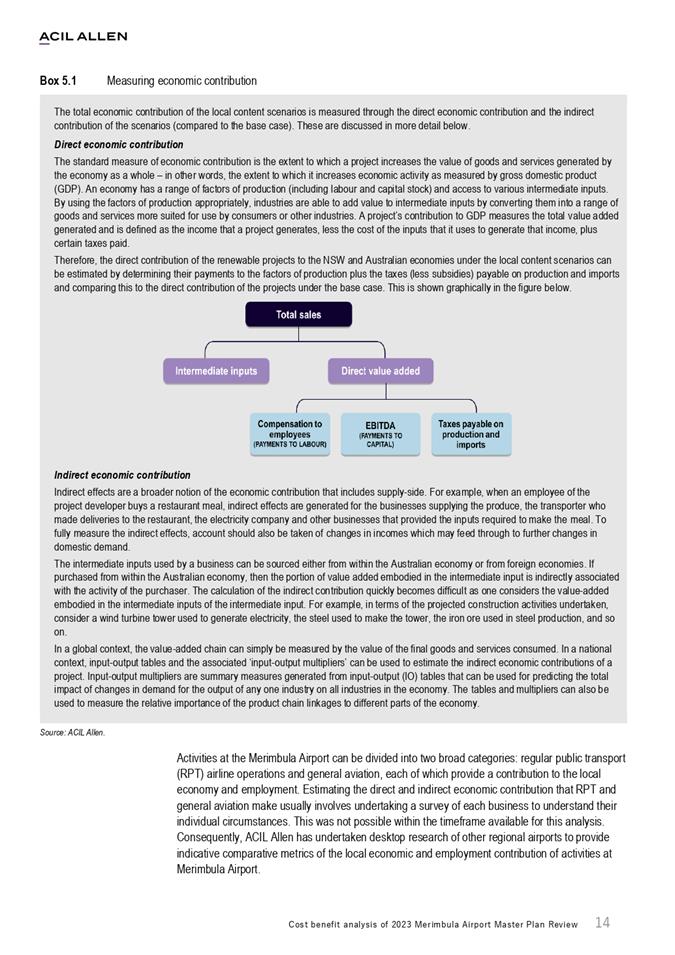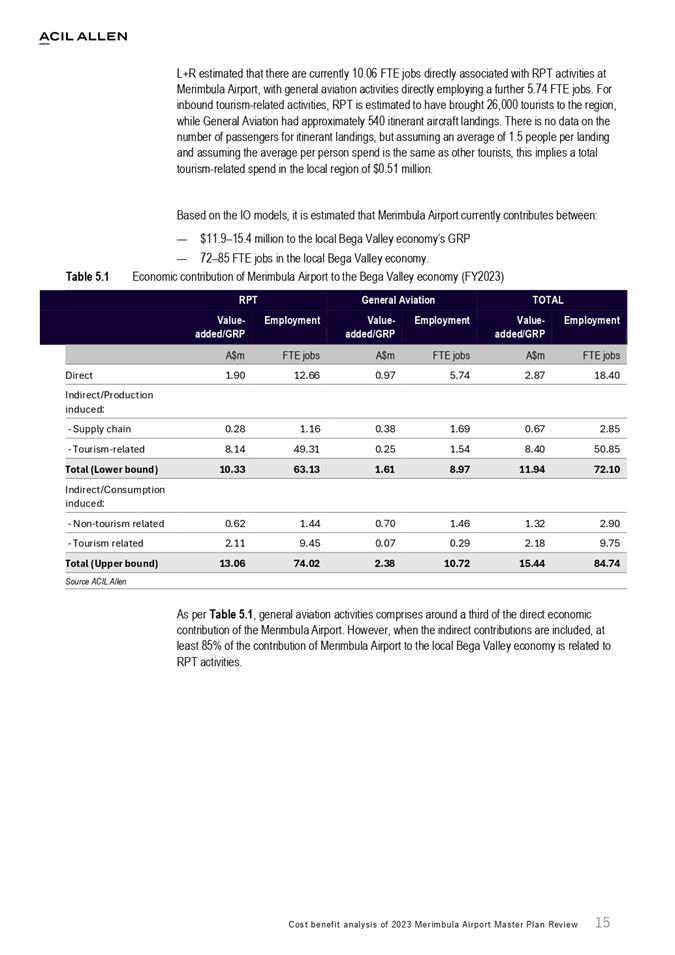|

Ordinary
Meeting
Notice and Agenda
An Ordinary Meeting of the Bega Valley Shire Council will be held at Council Chambers, Biamanga Room Bega Valley Commemorative Civic Centre
Bega on Wednesday, 12 June 2024 commencing at 2:00pm to
consider and resolve on the matters set out in the attached Agenda.
To:
Cr Russell Fitzpatrick, Mayor
Cr Cathy Griff, Deputy Mayor
Cr Tony Allen
Cr Mitchell Nadin
Cr Helen O’Neil
Cr David Porter
Cr Joy Robin
Cr Liz Seckold
Cr Karen Wright
|
Copy:
Chief Executive Officer, Mr
Anthony McMahon
Director, Assets and
Operations, Mr Ian Macfarlane
Director, Community,
Environment and Planning, Mrs Emily Harrison
Director, Business and
Governance, Mrs Iliada Bolton
Manager Communications and
Engagement, Ms Kellie Dodge
Executive Officer (Minute
Secretary), Mrs Jackie Grant
|
|
Live Streaming of Council Meetings
Council meetings are recorded and live streamed to the Internet
for public viewing. By entering the Chambers during an open session of
Council, you consent to your attendance and participation being recorded.
The recording will be archived and made available on
Council’s website www.begavalley.nsw.gov.au. All care is taken to
maintain your privacy; however as a visitor of the public gallery, your
presence may be recorded.
Publishing of Agendas And Minutes
The Agendas for Council Meetings and Council Reports for
each meeting will be available to the public on Council’s website as
close as possible to 5.00 pm on the Thursday prior to each Ordinary
Meeting. A hard copy is also made available at the Bega Administration
Building reception desk and on the day of the meeting, in the Council Chambers.
The Minutes of Council Meetings are available on Council's
Website as close as possible to 5.00 pm on the Monday after the Meeting.
1. Please
be aware that the recommendations in the Council Meeting Agenda are
recommendations to the Council for consideration. They are not the
resolutions (decisions) of Council.
2. Background
for reports is provided by staff to the Chief Executive Officer for
presentation to Council.
3. The
Council may adopt these recommendations, amend the recommendations, determine a
completely different course of action, or it may decline to pursue any course
of action.
4. The
decision of the Council becomes the resolution of the Council, and is recorded
in the Minutes of that meeting.
5. The
Minutes of each Council meeting are published in draft format, and are
confirmed by Councillors, with amendments if necessary, at the next
available Council Meeting.
If you require any further information or clarification
regarding a report to Council, please contact Council’s Executive
Assistant who can provide you with the appropriate contact details
Phone (02 6499
2222) or email execassist@begavalley.nsw.gov.au.
Ethical Decision Making and Conflicts of
Interest
A guiding checklist for Councillors, officers and community committees
Ethical decision making
·
Is the decision or conduct legal?
·
Is it consistent with Government policy, Council’s
objectives and Code of Conduct?
·
What will the outcome be for you, your colleagues, the Council,
anyone else?
·
Does it raise a conflict of interest?
·
Do you stand to gain personally at public expense?
·
Can the decision be justified in terms of public interest?
·
Would it withstand public scrutiny?
Conflict of interest
A conflict of interest is a clash
between private interest and public duty. There are two types of conflict:
·
Pecuniary
– regulated by the Local Government Act 1993 and Office of
Local Government
·
Non-pecuniary
– regulated by Codes of Conduct and policy. ICAC,
Ombudsman, Office of Local Government (advice only). If declaring a
Non-Pecuniary Conflict of Interest, Councillors can choose to either disclose
and vote, disclose and not vote or leave the Chamber.
The test for conflict of interest
·
Is it likely I could be influenced by personal interest in
carrying out my public duty?
·
Would a fair and reasonable person believe I could be so
influenced?
·
Conflict of interest is closely tied to the layperson’s
definition of ‘corruption’ – using public office for private
gain.
·
Important to consider public perceptions of whether you have a
conflict of interest.
Identifying problems
1st Do
I have private interests affected by a matter I am officially involved in?
2nd Is
my official role one of influence or perceived influence over the matter?
3rd Do
my private interests conflict with my official role?
Local Government Act 1993 and Model Code of Conduct
For more detailed definitions
refer to Sections 442, 448 and 459 or the Local Government Act 1993 and Bega
Valley Shire Council (and Model) Code of Conduct, Part 4 – conflict of
interest.
Agency advice
Whilst seeking advice is generally useful, the
ultimate decision rests with the person concerned.Officers of the
following agencies are available during office hours to discuss the obligations
placed on Councillors, officers and community committee members by various
pieces of legislation, regulation and codes.
|
Contact
|
Phone
|
Email
|
Website
|
|
Bega
Valley Shire Council
|
(02)
6499 2222
|
council@begavalley.nsw.gov.au
|
www.begavalley.nsw.gov.au
|
|
ICAC
|
8281
5999
Toll
Free 1800 463 909
|
icac@icac.nsw.gov.au
|
www.icac.nsw.gov.au
|
|
Office
of Local Government
|
(02)
4428 4100
|
olg@olg.nsw.gov.au
|
http://www.olg.nsw.gov.au/
|
|
NSW
Ombudsman
|
(02)
8286 1000
Toll
Free 1800 451 524
|
nswombo@ombo.nsw.gov.au
|
www.ombo.nsw.gov.au
|
Disclosure of pecuniary interests / non-pecuniary interests
Under the provisions of
Section 451(1) of the Local Government Act 1993 (pecuniary interests)
and Part 4 of the Model Code of Conduct prescribed by the Local Government
(Discipline) Regulation (conflict of interests) it is necessary for you to
disclose the nature of the interest when making a disclosure of a pecuniary
interest or a non-pecuniary conflict of interest at a meeting.
The following form should be
completed and handed to the Chief Executive Officer as soon as practible
once the interest is identified. Declarations are made at Item 3 of the
Agenda: Declarations - Pecuniary, Non-Pecuniary and Political Donation
Disclosures, and prior to each Item being discussed:
Council
meeting held on __________(day) / ___________(month) /____________(year)
|
Item
no & subject
|
|
|
Pecuniary
Interest
|
In my opinion, my
interest is pecuniary and I am therefore required to take the action
specified in section
451(2) of the Local Government Act
1993 and or any other
action required by the Chief
Executive Officer.
|
|
Significant
Non-pecuniary conflict of interest
|
– In my opinion, my
interest is non-pecuniary but significant. I am unable
to remove the source of conflict. I am therefore required to treat
the interest as if it were pecuniary and take the action specified in section 451(2) of the
Local Government Act 1993.
|
|
Non-pecuniary
conflict of interest
|
In my opinion, my interest is non-pecuniary and less
than significant. I therefore make this declaration as I am required to do pursuant to clause
5.11 of Council’s Code of Conduct. However, I intend to continue to be involved with the matter.
|
|
Nature of interest
|
Be specific and include information
such as :
·
The names of any person or organization with which you have a
relationship
·
The nature of your relationship with the person or organization
·
The reason(s) why you consider the situation may (or may be
perceived to) give rise to a conflict between your personal interests and
your public duty as a Councillor.
|
|
If
Pecuniary
|
Leave
chamber
|
|
If
Non-pecuniary (tick
one)
|
Disclose
& vote Disclose
& not vote Leave
chamber
|
|
Reason
for action proposed
|
Clause 5.11 of Council’s Code of Conduct provides
that if you determine that a non-pecuniary conflict of interest is less than
significant and does not require further action, you must provide an
explanation of why you consider that conflict does not require further
action in the circumstances
|
|
Print
Name
|
I disclose the above interest and
acknowledge that I will
take appropriate action as I have indicated above.
|
|
Signed
|
|
NB: Please
complete a separate form for each Item on the Council Agenda on which you are
declaring an interest.
Agenda
Statement of Commencement of Live Streaming
Acknowledgement of Traditional Owners of Bega Valley Shire
Statement of Ethical Obligations
1 Apologies and requests for leave of
absence
2 Confirmation Of Minutes
Recommendation
That the Minutes of the Ordinary Meeting held on 22 May
2024 as circulated, be taken as read and confirmed.
3 Declarations
Pecuniary,
Non-Pecuniary and Political Donation Disclosures to be declared and tabled.
Declarations also to be declared prior to discussion on each item.
4 Public Forum – report by Mayor
of deputations heard prior to the meeting
5 Petitions
6 Mayoral Minutes
7 Urgent Business
8 Staff Reports – Community,
Environment and Planning
8.1 Tree
shade in town centres............................................................................................................ 8
8.2 Adoption
of Bega and Wolumla Structure Plans...................................................................... 19
8.3 Affordable
Housing Contributions............................................................................................ 295
9 Staff Reports – Assets and
Operations
9.1 Merimbula
Airport Master Plan 2043...................................................................................... 341
9.2 Public
Exhibition of the Draft Active Transport Strategy...................................................... 526
10 Staff Reports – Business and Governance
10.1 Notice
to the Minister of Council's employed native title managers................................. 531
10.2 Acquisition
of land for road widening - Main Road 91......................................................... 541
10.3 Classification
of land at Tathra.................................................................................................. 552
10.4 Local
Government Election........................................................................................................ 565
10.5 Accounting
for Rural Fire-fighting Assets................................................................................ 581
10.6 Determination
of the Local Government Remuneration Tribunal - 2025 Financial Year - Mayoral
and Councillor Fees.................................................................................................................. 591
10.7 Certificate
of Investment May 2024......................................................................................... 602
11 Councillor Reports
12 Rescission/Alteration Motions
13 Notices of Motion
13.1 Financial
Assistance Grants........................................................................................................ 609
14 Questions with Notice
14.1 Cr
Fitzpatrick - Federal Budget announcement of $100m for footpaths........................... 614
15 Questions without Notice
15.1 Cr
Nadin - Update on Boydtown Estate Subdivision............................................................. 617
16 Confidential Business
Representations by members of the public regarding
closure of part of meeting
Adjournment Into Closed Session, exclusion
of the media and public........................... 617
Statement of Cessation of Live Streaming for the period of the Closed
Session.
Statement of Re-Commencement of Live Streaming
17 Noting of Resolutions from Closed Session
18 Declassification of reports considered previously
in Closed Session
Staff Reports
– Community, Environment and Planning
12 June 2024
8.1 Tree
shade in town centres................................................................................... 8
8.2 Adoption
of Bega and Wolumla Structure Plans................................................ 19
8.3 Affordable
Housing Contributions.................................................................... 295
|
Council 12
June 2024
|
Item 8.1
|
8.1. Tree shade in
town centres
This report presents the findings of an investigation into
strategies for enhancing shade in town centres through increasing tree
coverage.
Director Community Environment and Planning
Officer’s
Recommendation
That Council note the
research undertaken regarding local government strategies which enhance shade
in main town centres through increasing tree coverage (Attachment 1).
Executive Summary
Policy 3.13 Trees and vegetation in urban areas on
Council managed land and Procedure 3.13.01 Nature Strip Planting
Guideline were adopted by Council at the meeting of 26 July 2023. At this
meeting, Council also resolved to ‘investigate relevant local government
strategies for enhancing shade in main town centres through increasing tree
coverage’.
Council officers have undertaken this investigation and the
findings are presented for Council’s information.
Background
At the meeting of 26 July 2023, Council resolved to:
1.
Adopt Policy 3.13 Trees and vegetation in urban areas on Council managed
land, as amended following public exhibition.
2. Staff investigate relevant local government strategies for
enhancing shade in main town centres
through increasing tree coverage; to be reported by the end of 2023.
3. Adopt
Procedure 3.13.01 Nature Strip Planting Guideline, as amended following public
exhibition.
4. Advise
those who made a submission of Council’s decision.
Resolutions 1, 3 and 4 and have been previously enacted.
In response to resolution 2, Council officers have conducted
research into a range of strategies, programs and studies that other NSW and
Victorian local councils have undertaken to enhance shade in their main town
centres by increasing tree coverage.
From this research, several strategies were chosen that
represented a range of approaches used in other local government areas for
inclusion in a summary report, which is provided at Attachment 1. These
strategies provide examples of how Council could identify priority areas for
street tree planting throughout our town centres.
The research may also be applied to the implementation of
Policy 3.13 Trees and vegetation in
urban areas on Council managed land
and Procedure 3.13.01 Nature Strip Planting Guideline by
providing examples of how Council could better plan street tree plantings and
manage existing street trees.
A general theme that emerged in the research regarding the
benefits of increasing tree cover in town centres was the encouragement of
people to walk or cycle and spend more time in community and commercial areas,
resulting in positive social and economic benefits to the local community.
Other widely acknowledged benefits of increasing tree coverage include allowing
the community to adapt to climate change by mitigating heat stress, creating a
sense of character in town centres, and reducing the ‘urban heat island’
effect.
The main findings of the research are that:
· Multiple councils
have Urban Tree Strategies or Street Tree Masterplans in place which set out
objectives, implementation plans and actions to increase tree coverage in town
centres and urban areas in a way which benefits the community.
· Local councils
often use mapping tools to investigate areas of highest priority for tree
plantings in urban areas. These include identifying areas where social
vulnerability and vacant tree sites intersect, identifying streets which have
many trees with a low life expectancy, or heat mapping to identify which urban
areas are most vulnerable to the effects of urban heat.
· Multiple councils
put consideration into ensuring trees of appropriate species for the area were
planted and that future climate adaption considerations were considered.
Suitable corresponding maintenance plans were also determined for the specific
sites.
There are currently no resources or allocated budget identified to
progress the development of a public domain shade strategy however it should be
noted that the adopted Policy 3.13 Trees and vegetation in urban
areas on Council managed land, and Procedure 3.13.01 Nature Strip
Planting Guideline provides guidance on suitable street
tree planting including in new subdivisions.
Options
This is an information only report. It is recommended that
Council note the findings of the research in response to part 2 of the Council
resolution of 26 July 2023 into ‘relevant local government strategies for
enhancing shade in main town centres through increasing tree coverage.’
Community
and Stakeholder Engagement
Engagement undertaken
No community consultation was
conducted as part of the investigation, however research into other NSW
and Victorian local councils’ strategies,
programs and studies has been undertaken.
Engagement planned
No further community or stakeholder engagement is planned at
this time.
Financial
and Resource Considerations
The investigation and reporting of findings were undertaken
as part of Council’s regular work program and within the adopted 2023/24
budget.
It is important to note that should Council decide in the
future to significantly increase the amount of Council managed trees there
would be an additional financial impact associate with tree maintenance and
management which as not been quantified or considered as part of this report.
Legal
/Policy
The information contained within the research findings has
been produced with consideration of planning provisions of relevant NSW and
Victorian councils.
Impacts
on Strategic/Operational/Asset Management Plan/Risk
Strategic
Alignment
The investigation is consistent with the future direction of the Bega
Valley Local Strategic Planning Statement 2040 to ‘Increase
vegetation, especially the tree canopy to help keep urban areas cooler and
encourage the use of fire resistant species.’The investigation is consistent with the
actions of the Bega Valley Shire Climate Resilience Strategy to:
‘Implement street tree, open space and parkland tree planting program
across all towns and villages to mitigate heat stress,’ and
‘Incorporate native plantings into all infrastructure development,
minimise mowing and maintenance.’
Environment
and Climate Change
Tree shade strategies can improve the quality of trees on
Council managed and private land in urban areas and town centres.
The provision of trees in urban areas is known to:
· sequester carbon
dioxide from the atmosphere
· provide
micro-climate cooling through increased provision of urban shade
· counter urban heat
island effect caused by the concentration of hard, unshaded surfaces such as
concrete and asphalt
· lessen the soil
erosion impacts of heavy rainfall
· improve air
quality by absorbing carbon dioxide, trapping and filtering atmospheric
pollutants with their foliage, and lessening the need for mechanical cooling.
Economic
The
research demonstrates that improving shade from trees in town centres can have
a positive economic impact for businesses in town centres.Risk
Local council urban tree strategies minimise risk to Council
from shade trees in town centres by providing a transparent framework for
decision-making in relation to the management of existing trees and support the
development of processes to ensure that future plantings are well-planned,
well-executed and adequately maintained.
Social
/ Cultural
Shade trees in town centres directly benefit the community
through their natural beauty, shade and shelter, habitat value and improved
quality of the urban environment.
Attachments
1⇩. Investigation
into relevant local government strategies for enhancing shade in main town
centres through increasing tree coverage
|
Council
|
12 June 2024
|
|
Item 8.1
- Attachment 1
|
Investigation into relevant local government strategies for
enhancing shade in main town centres through increasing tree coverage
|








|
Council 12
June 2024
|
Item 8.2
|
8.2. Adoption of Bega
and Wolumla Structure Plans
This report seeks Council’s
support for the adoption of structure plans for the Bega and Wolumla urban
growth areas.
Director Community Environment and Planning
Officer’s Recommendation
1. That Council
resolve to adopt the Draft Bega and Wolumla Structure Plans as amended after
public exhibition (Attachments 1 and 2).
2. That
those who made submissions to the draft structure plans be notified of
Council’s decision.
Executive Summary
The Draft Bega and Wolumla Structure Plans have been
developed to guide future land use and development in the Bega and Wolumla
urban release areas. The draft plans were developed by specialist consultants
in consultation with Councillors, Council officers, government agencies, land
owners and the community.
The draft structure plans have been publicly exhibited with 533
on-line surveys completed and 21 other submissions received. Various minor
changes to the draft plans are recommended by Council officers in response to
issues raised in submissions.
Development of the structure plans was funded by the NSW
Government through Round 1 of the Regional Housing Strategic Planning Fund. The
NSW Government has also agreed to fund development of the planning proposal to
implement the recommended amendments to Bega Valley Local Environmental Plan
2013 from the Bega Structure Plan through Round 2 of the Regional Housing
Strategic Planning Fund.
Background
Council received a grant through Round 1 of the NSW
Government Regional Housing Strategic Planning Fund to deliver a project to
coordinate planning and infrastructure provision for urban residential growth
areas in Bega and Wolumla. The project was delivered by Council with Better
Cities Group as lead consultant in partnership with Development Directive,
Think Economics and NGH Consulting. The output of the project was the
development of structure plans for the Bega and Wolumla urban growth areas.
The Draft Bega Structure Plan assesses the suitability of
land south of the existing town for urban residential development, analyses the
opportunities and constraints to urban growth in the area and details how
Council’s objectives can be addressed through future development of three
new neighbourhoods in the area. The Bega Structure plan is supported by a
Recreation Needs Assessment and an Economic Impact Assessment, Biodiversity
High Environmental Values Mapping Validation Report, Preliminary Contaminated
Land Assessment and Preliminary Aboriginal Heritage Assessment that were
delivered as part of the project.
The Draft Wolumla Structure Plan investigates the opportunities
and constraints of the zoned urban release areas and details how
Council’s objectives can be addressed through future development of the
village. The Wolumla Structure plan is supported by a Recreation Needs
Assessment and an Economic Impact Assessment that were delivered as part of the
project.
Both structure plans aim to accelerate the provision of
development ready land to meet the shire’s current and future housing
needs, and detail where and how residential growth and development will occur.
Once adopted, the structure plans will provide a framework to guide Council
when considering subdivision and development proposals.
The purpose of this report is to advise Council of the
feedback to the draft plans received during public exhibition and seek a
resolution to adopt the plans. The completed
draft plans which incorporate the proposed changes are contained in Attachments
1 and 2 to this report.
Options
Options
available to Council are to:
1. Adopt
the Draft Bega and Wolumla Structure Plans as amended following public exhibition (Attachments 1
and 2). This is the recommended option.
2. Adopt
the Draft Bega and Wolumla Structure Plans
without the suggested amendments following public exhibition. This option is not recommended as the proposed changes
represent feedback from the community and clarify information and
recommendations in the plans and will facilitate additional housing provision
in the Bega area and more closely reflect land capability in Wolumla.
3. Resolve
not to adopt the Draft Bega and Wolumla
Structure Plans. This option is not
recommended as the draft structure plans will facilitate the provision of new
housing in the Bega Valley Shire.
Community
and Stakeholder Engagement
Engagement undertaken
Councillors were briefed by the consultants at the beginning
of the project and have participated in two subsequent workshops on the draft
structure plans with the consultants and staff in August and September 2023.
Engagement with the Bega Local Aboriginal Land Council, the
Djirringanj Elders Federation, two major land owners in Wolumla and Bega, and
Transport for NSW was also undertaken in the development of the draft plans.
Council staff from strategic planning, planning,
certification (bushfire specialist), community and economic development, water
and sewer, transport, waste and recreation infrastructure, communications and
corporate resilience have been involved in various aspects of the project.
The project consultation strategy was delivered with assistance
from Council staff. All landowners within the
investigation areas were notified of the exhibition by mail. Details of the
project and engagement process were shared via Council’s newsletter,
social media, a media release, posters with QR codes in public areas, and
digital advertising in the Bega District News and Merimbula News Weekly.
Members of the community were encouraged to provide feedback through a survey
and Council’s ‘Have Your Say’ page. The development
professionals group and several NSW Government agencies were also notified of
the exhibition via email.
In accordance with the engagement strategy, extracts of the
draft structure plans were incorporated into documents designed to effectively
communicate the key elements of the plans. These key elements were also
incorporated into a survey to enable the community to engage with the material.
The draft structure plans were
exhibited from 3 November to 3 December 2024. A total of 536 survey responses
were received; 228 to the draft Bega Structure Plan and 308 to the draft
Wolumla Structure Plan. In addition to the survey feedback, 17 other public
submissions were received. Feedback was also received from the NSW Department
of Education, NSW Department of Primary Industry – Fisheries, NSW Rural
Fire Service and Transport for NSW. A summary of the public and agency
submissions received is provided in Attachment 3 to this report. The survey
results are presented in Attachments 4 and 5 to this report. Consultation
reports are provided in pages 25 – 29 of Attachments 1 and 2 to this
report.
Following the exhibition, a
media release was published and survey respondents and submitters who provided
contact details were sent a summary of the survey results.
Summary
of survey feedback to the Bega Structure Plan.
Feedback to the draft Bega Structure Plan survey indicated
strong support for provision of more housing supply and the allocation of more
land to housing in the shire. There is support for a variety of housing types
in new development in Bega, not just detached dwellings. Walking and cycling
connections from the proposed new development area to the Bega Town Centre is
very important to respondents. The three highest priorities identified by
respondents for new housing areas in Bega are: protecting and enhancing natural
features, amenity and character; efficient use of land and infrastructure; and
sustainable development to manage growth.
There is majority support for all three of the housing
precincts (western, central and eastern) identified in the draft plan. There is
support for a variety of housing types (houses, townhouses and apartments) in
all three precincts, however, there is a stronger sentiment for higher density
in the eastern precinct compared to the other precincts.
The Bega Local Aboriginal Land Council (Bega LALC) and the
Djirringanj Elders Federation provided input into the development of the Bega
Structure Plan as the area is a culturally significant landscape to the
Djirringanj people.
Summary
of survey feedback to the Wolumla Structure Plan.
Feedback to the draft Wolumla Structure Plan survey
indicated strong support for provision of more housing supply and allocation of
more land to housing in the shire. There is support for a variety of housing
types in new residential development, not just detached dwellings. Prioritising
the character and renewal of Candelo – Wolumla Road is very important to
respondents. The three highest priorities for housing areas in Wolumla
identified by respondents are: considering and protecting existing character;
efficient use of service infrastructure and active travel/open space networks;
and promoting appropriate density.
The survey identified there is a strong community
sentiment for safety improvements for Candelo Road, and also for the structure plan
to consider climate resilience. The five biggest issues in Wolumla identified
in feedback to the survey are:
· Lack of footpaths to open space areas and town centre
· Limited services and shopping
· Poor pedestrian connectivity to recreational space
east of the highway
· Limited recreation / open space within the town
· Safety concerns with existing highway intersections
Summary
of written submissions to the Wolumla and Bega Structure Plans.
Six written submissions specifically related to the draft
Bega Structure Plan and six to the draft Wolumla structure plans. The remaining
nine submissions did not address either place specifically or related to both
locations. The written submissions raised a wide range of questions and issues
which are summarised in Attachment 3 to this report alongside staff comments
and any recommended changes to the draft plans.
Feedback from NSW Government Agencies tended to be high
level due to the nature of the information provided in structure plans. These
submissions will be used to inform the planning proposal for the Bega urban
release areas and when considering development applications or more detailed
planning within the areas.
Summary
of the changes made to the draft structure plans following public exhibition
The following amendments have been made to the draft Bega
Structure Plan:
· Additional land to
the east and west of Parbery Creek has been included in the future urban area
· The objective
regarding protection and enhancing natural features, amenity and character has
been strengthened in relation to protection of waterways and riparian areas
· Maps have been
reviewed and updated to clarify meaning where required
· Advice from
Transport for NSW has been incorporated and recommendations clarified regarding
highway access on relevant maps.
The following amendments have been made to the draft Wolumla
Structure Plan:
· Relocation of the
proposed commercial precinct
· Consolidation of
recommended parkland
· Boundary of the
proposed additional urban area has been modified to recognise the development
limitations from bushfire protection and environmental values
Engagement planned
No further engagement is planned in relation to this
project, however, several of the actions that will follow in the implementation
of the plans will require further community engagement including planning
proposal and subdivision development applications.
Financial
and Resource Considerations
The project was wholly funded by a $250,000 grant from Round
1 of the NSW Department of Planning, Housing and Infrastructure’s
Regional Housing Strategic Planning Fund. Council’s contribution to the
project was by way of specialist staff and provision of available data and existing
technical studies.
Legal
/Policy
The project aligns with the Australian Government’s
National Housing Accord which seeks to support a sustainable, long-term
pipeline of additional housing supply and improve affordability.
The project aligns with the following principles and
recommendations of the NSW Regional Housing Taskforce:
· Invest in upfront,
place-based strategic planning to improve decision-making, provide certainty
and enable more efficient assessments.
· Provide a more
transparent and certain supply pipeline and activate latent supply by
addressing infrastructure requirements and resolving site constraints.
· Strengthen
collaboration by all levels of government and industry to improve the
identification, funding, and delivery of infrastructure to support priority
housing.
Impacts
on Strategic/Operational/Asset Management Plan/Risk
Strategic
Alignment
The draft structure plans achieve the objectives of the Bega
Valley Community Strategic Plan 2042, Bega Valley Shire Local Strategic
Planning Statement, Climate Resilience, Residential Land and Affordable
Housing strategies through the application of adopted resilience
outcomes and principles for new urban areas.
The draft structure plans are
based on the following resilience outcomes of liveable and connected places:
· Sustainable
development and growth
· Efficient land use
· Enhanced natural
advantages and character
· Housing diversity
· Improved
neighbourhood amenity and access to open space networks
· Pedestrian
friendly town layouts
· Reduction in
vehicle reliance
The draft structure plans achieve
the following principles for new urban areas:
· Ensure sufficient
residential land for population growth
· Increase diversity
of housing
· Promote efficient
use and provision of infrastructure
· Build in hazard
protection and climate resilience
· Strengthen and
support Bega as the Regional Centre
· Reinforce existing
commercial centres and promote access to shops and services
· Preserve
agricultural land and areas of high environmental value
The draft Structure Plans are consistent with the directions
of the South East and Tablelands Regional Plan 2036 and Draft South
East and Tablelands Regional Plan 2041.
Environment
and Climate Change
The project aims to help achieve a resilient shire by
planning for growth in a way that protects our natural systems, prepares for
natural hazards, and creates liveable and connected places.
The project will facilitate sustainable development and
growth through enabling the delivery of enduring and resilient housing. It will
ensure that planning for housing and infrastructure happen together so that the
way we plan for new homes shapes the characteristics that make healthy and
resilient communities and places. The structure plans will ensure future
housing responds to the environment, the changing climate, natural hazards
including extreme heat, bushfires and flooding, and integrates with green
infrastructure. By encouraging pedestrian friendly town layouts the project
also seeks to reduce vehicle reliance.
Economic
The project will establish a
pipeline of housing that creates choice for people and households at different
price points. By accelerating the planning and delivery of housing in
identified urban release areas, the project will address house price increases
associated with supply shortfalls.
Risk
The structure plans will reduce
risk by providing certainty for the development industry, government, service
providers and the community by ensuring future housing supply in the area is
well planned, adequately serviced, diverse, resilient and affordable.
Social
/ Cultural
The project will establish a
pipeline of housing that creates choice for people and households, enabling
people to live in homes of the right size with the right accessibility to well
serviced locations, positively shaping the communities of the Bega Valley
Shire. The draft structure plans address the future
need for housing and provides direction about how and where residential growth
will occur to support the growing population, ageing community and changes in
household structure.
Attachments
1⇩. Bega
Structure Plan
2⇩. Wolumla
Structure Plan
3⇩. Summary
of written submissions to Draft Bega and Wolumla Structure Plans
4⇩. Survey
feedback to Bega Structure Plan
5⇩. Survey
feedback to Wolumla Structure Plan
|
Council
|
12 June 2024
|
|
Item 8.2
- Attachment 1
|
Bega Structure Plan
|











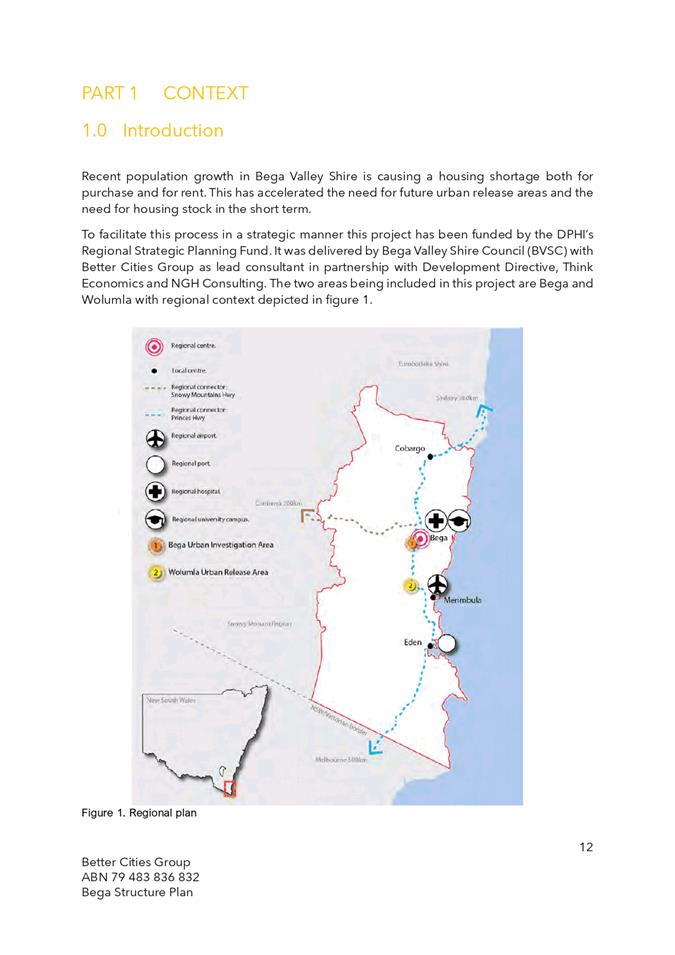

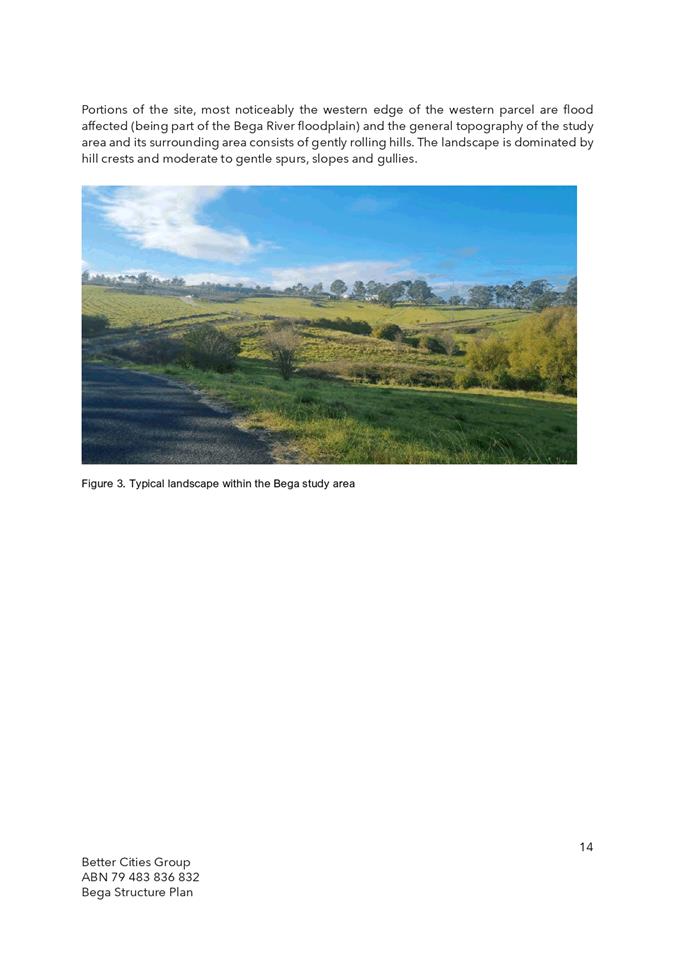

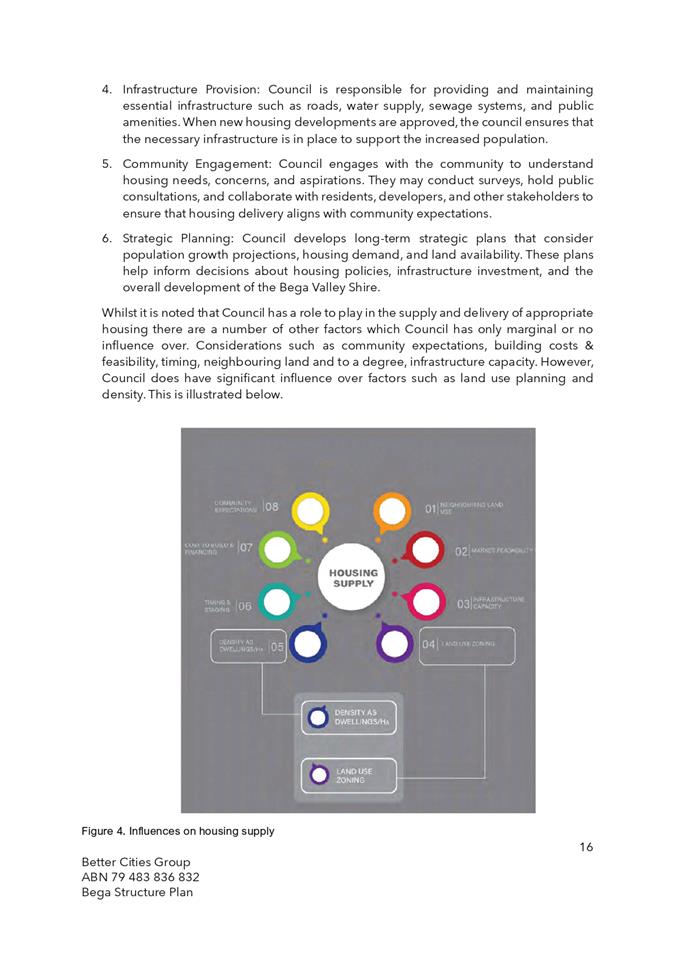

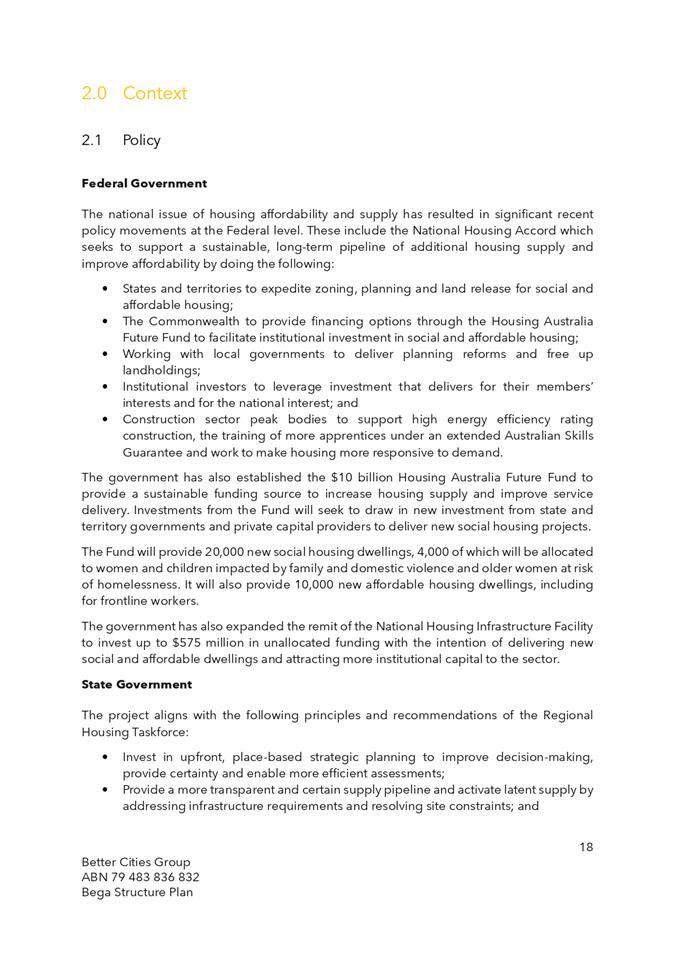
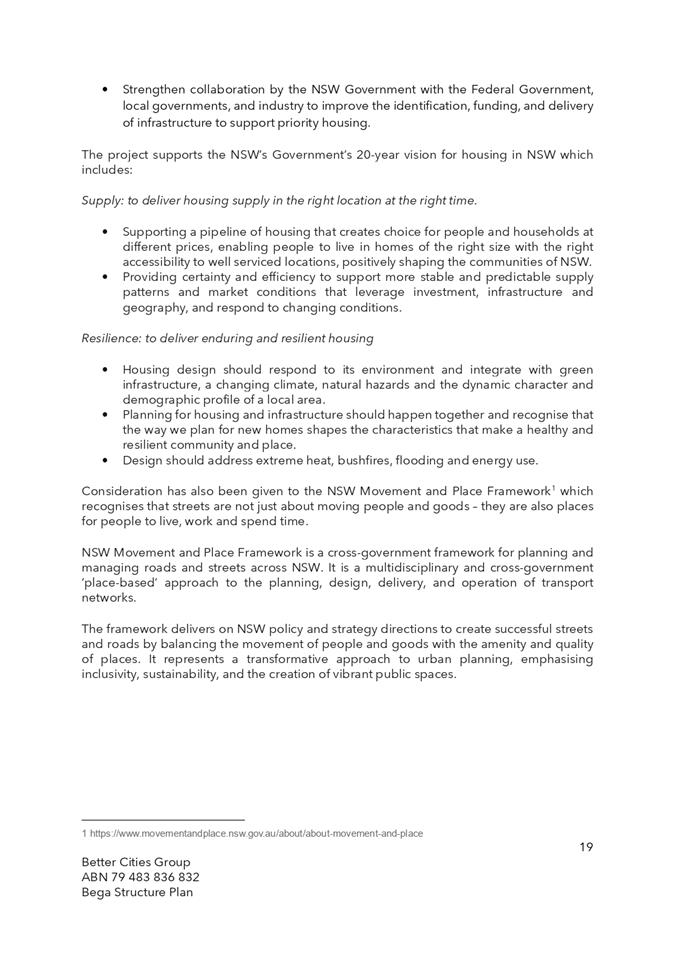
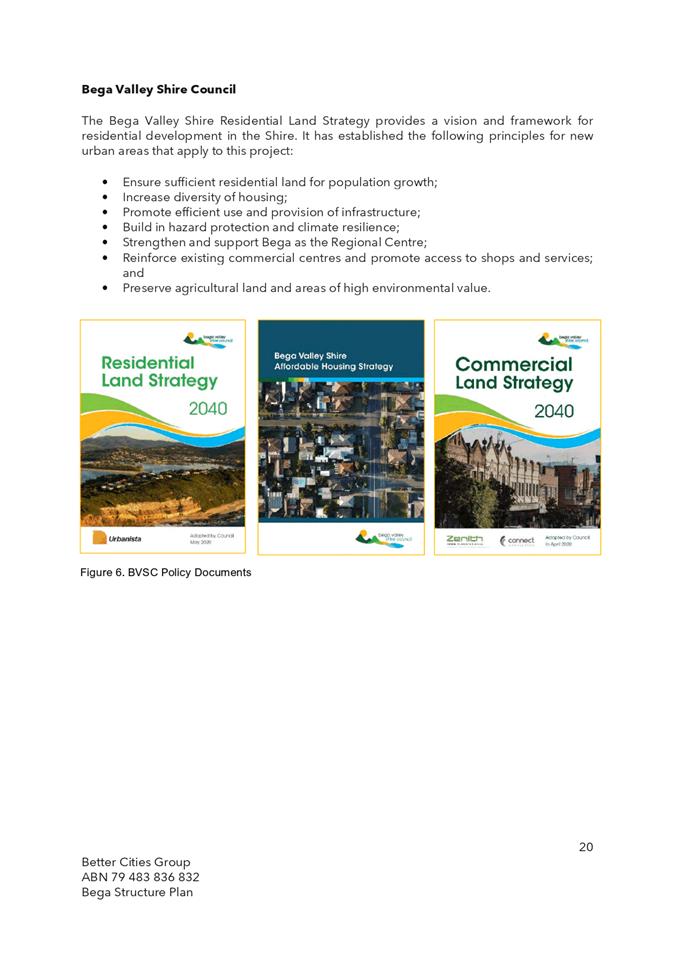
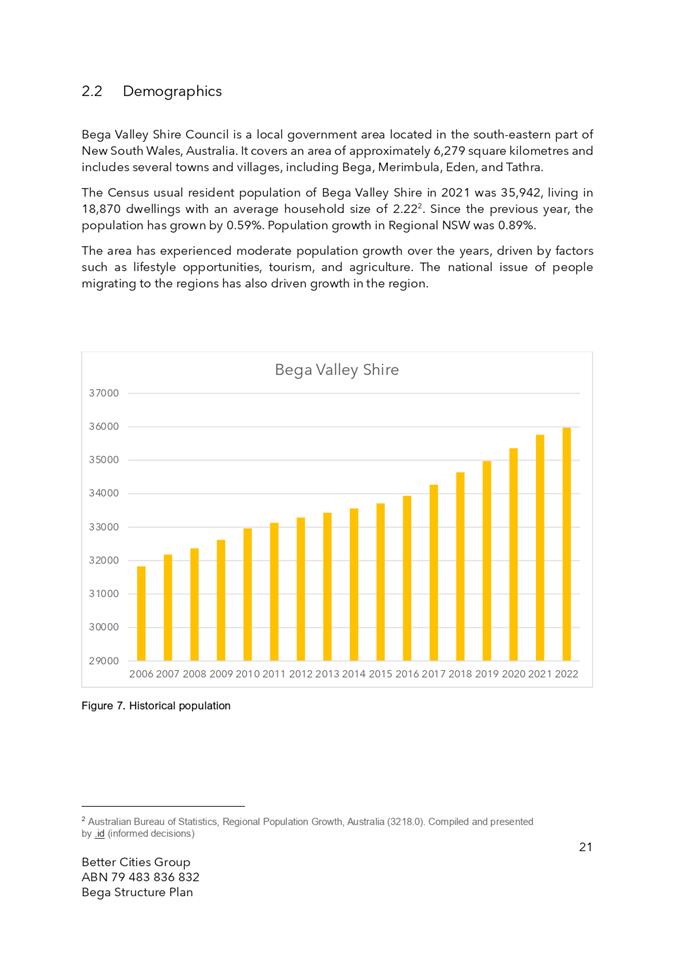
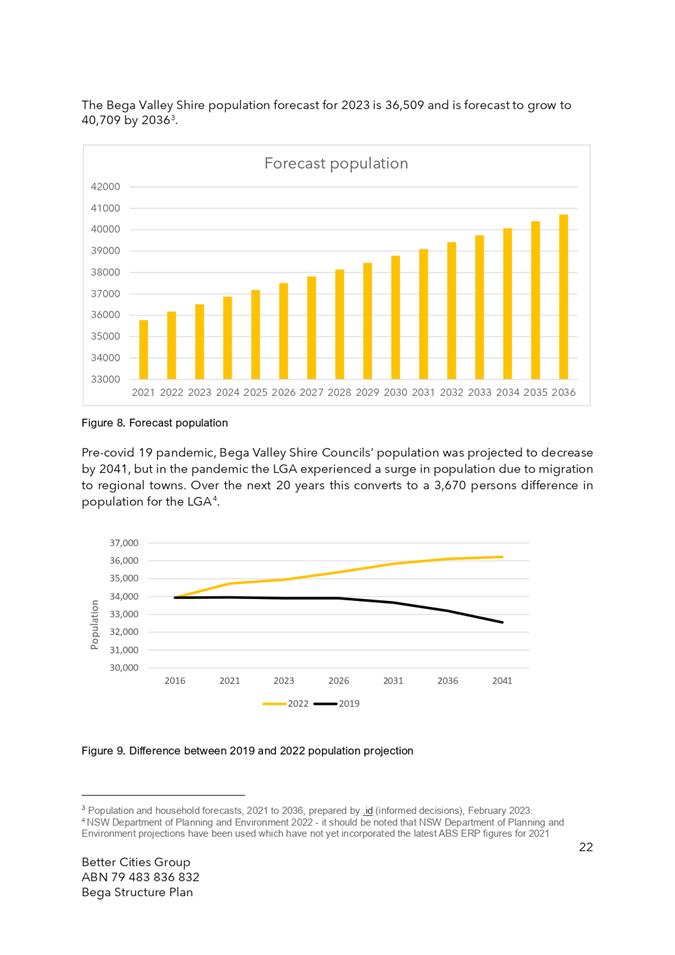
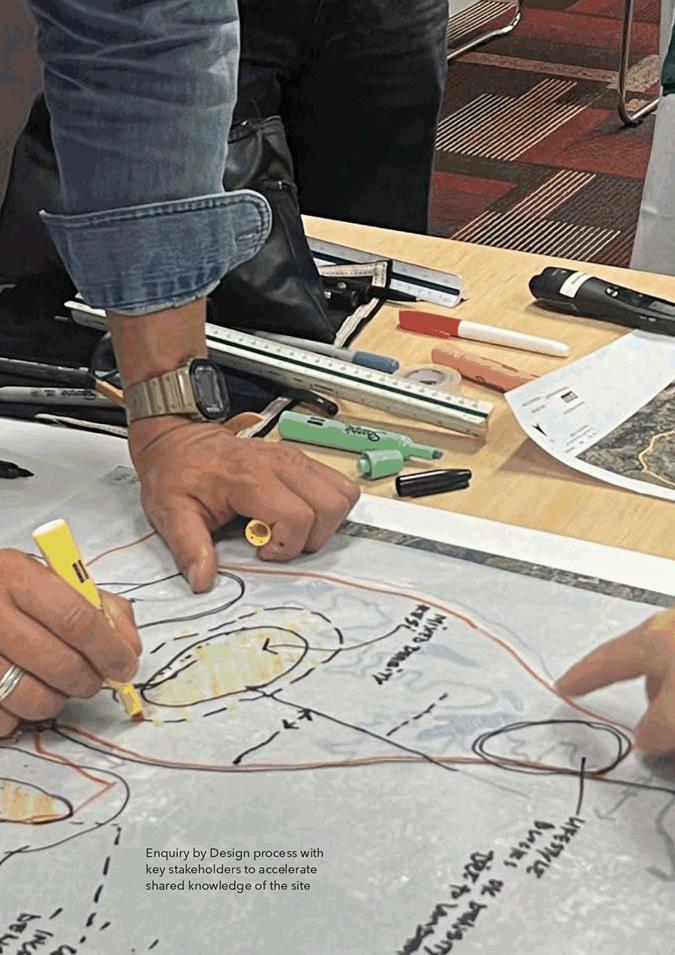
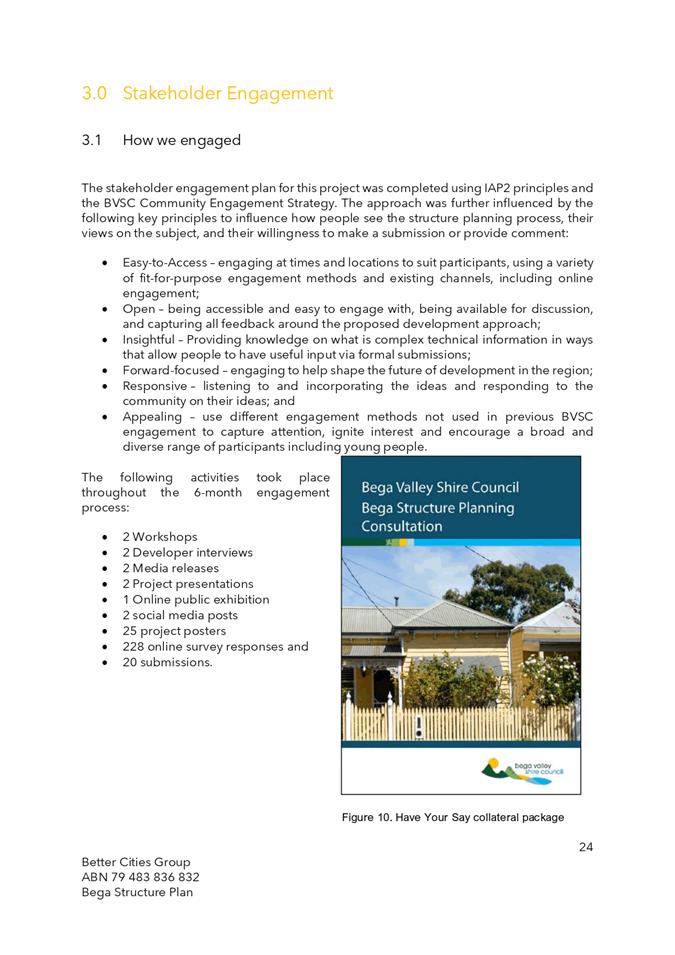
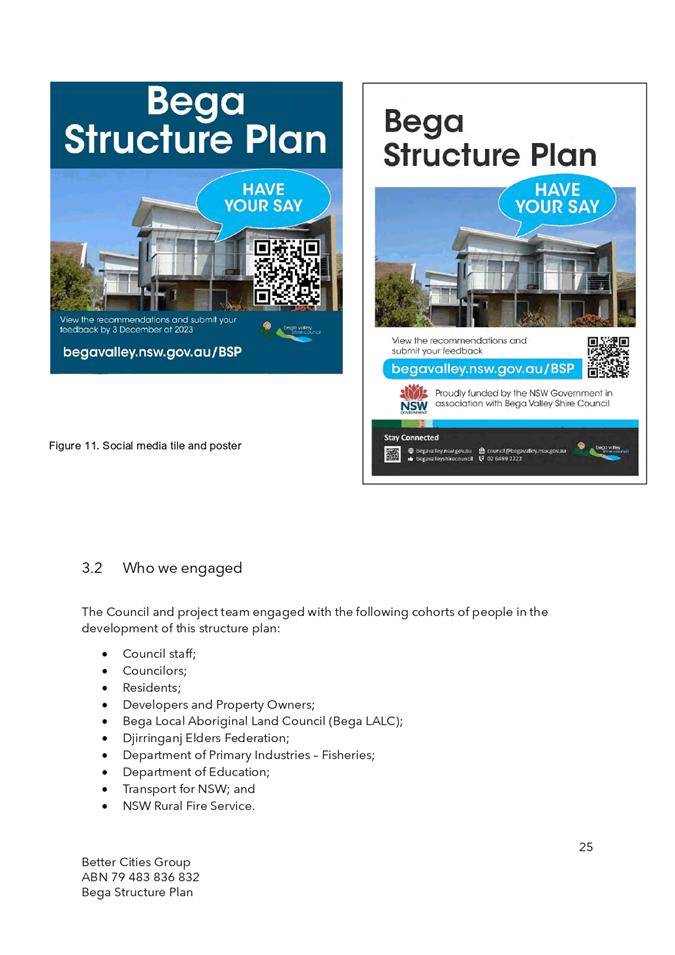
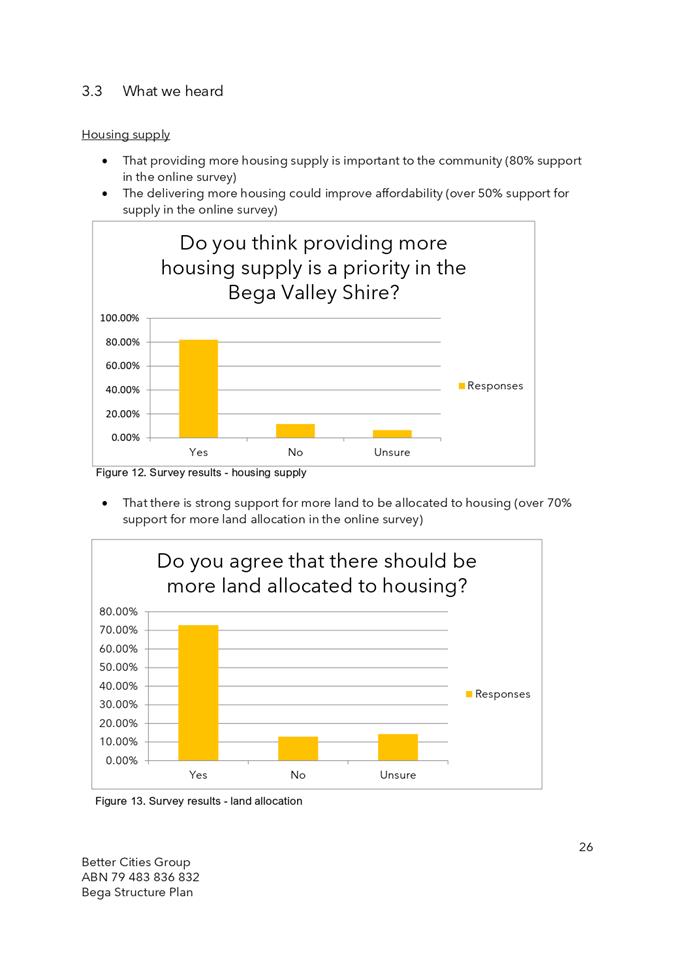
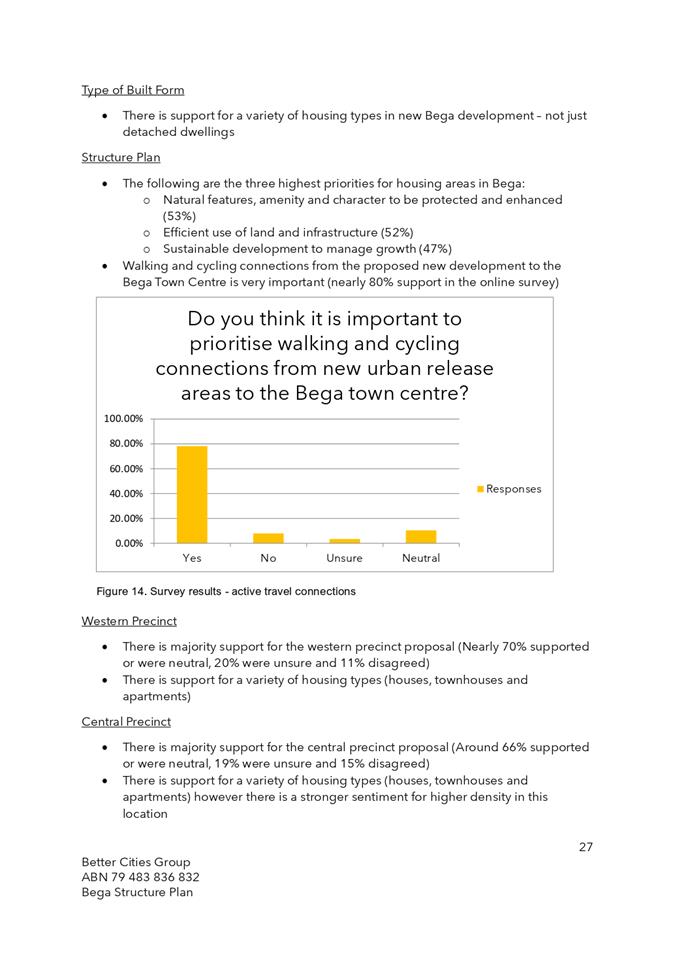
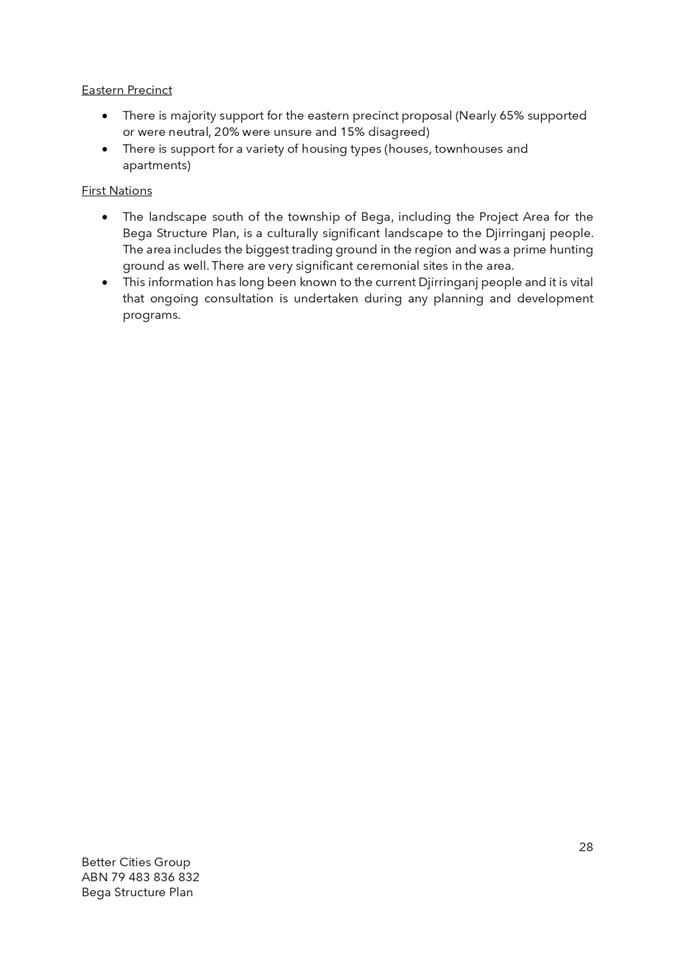
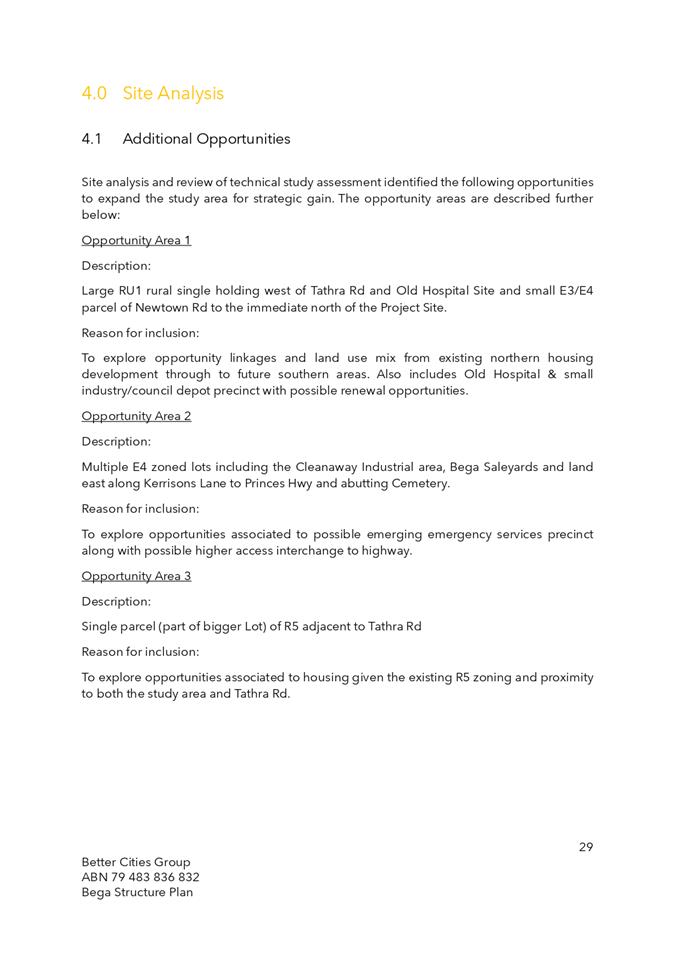
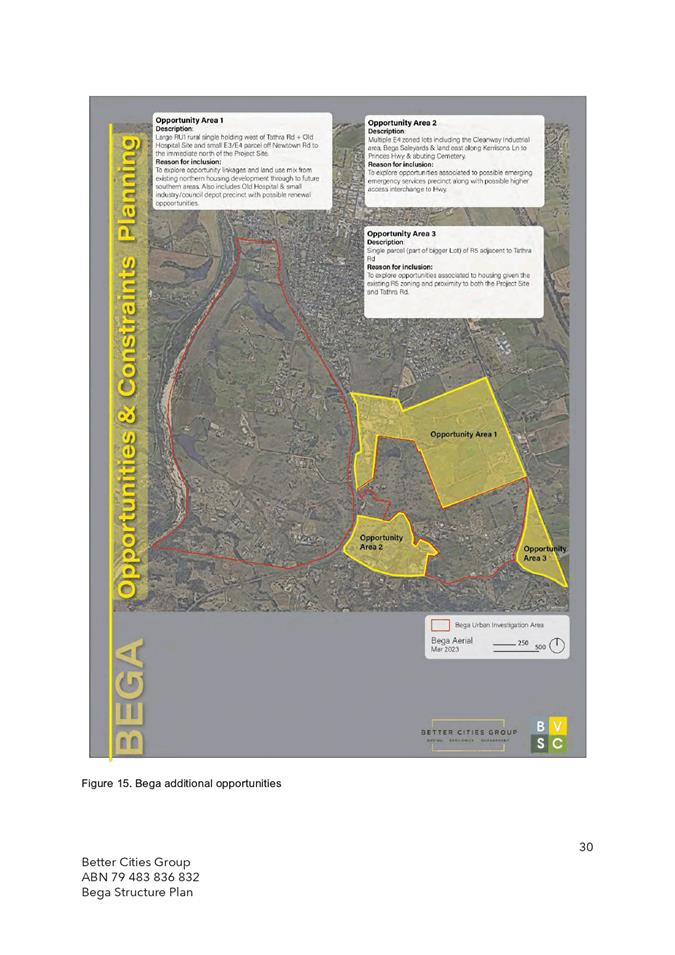

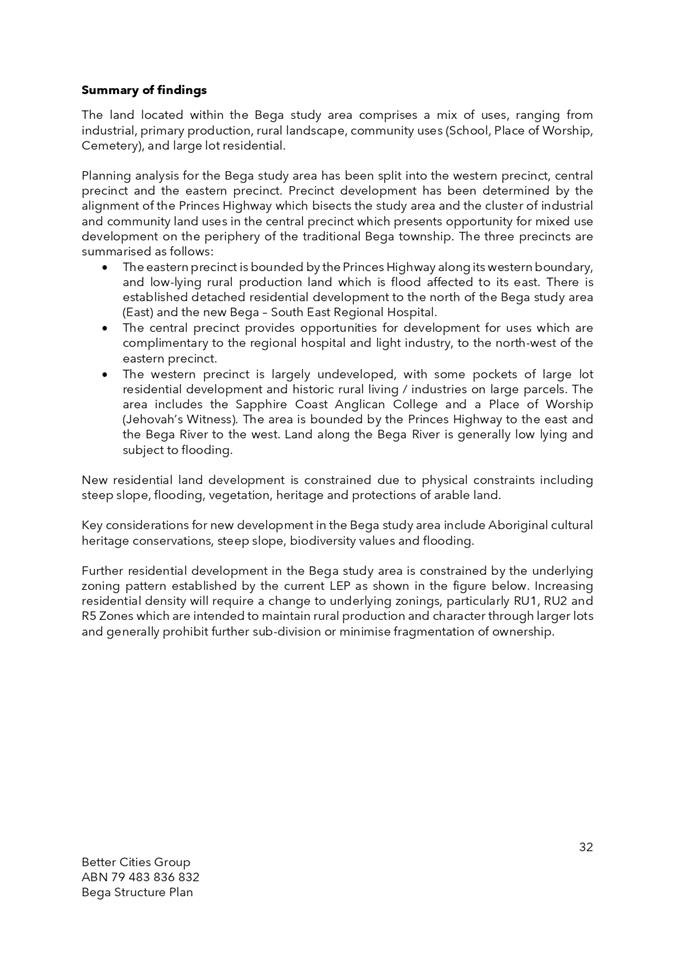
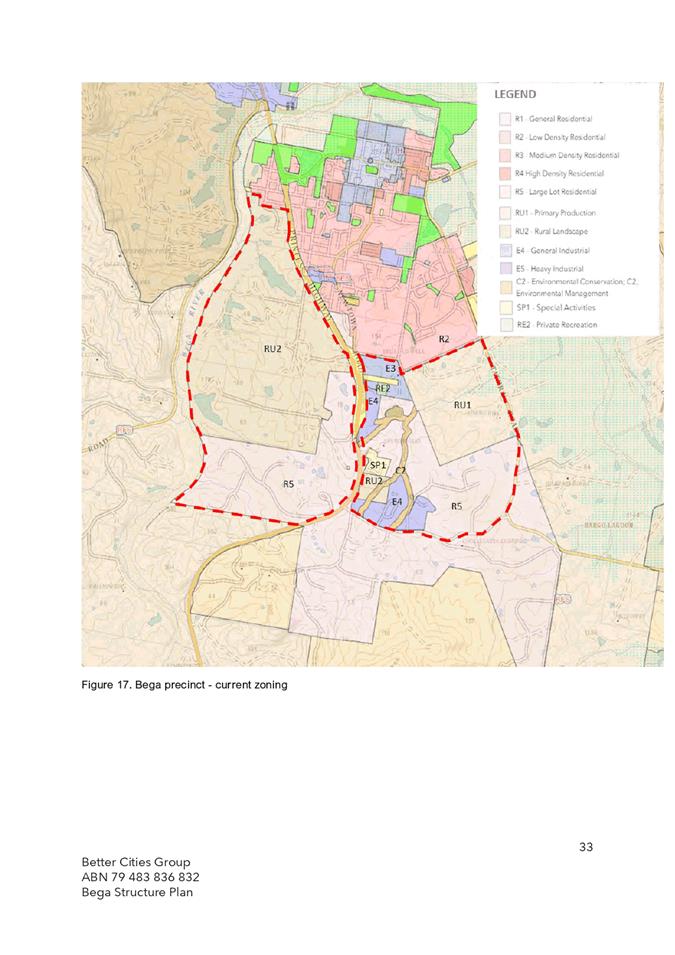
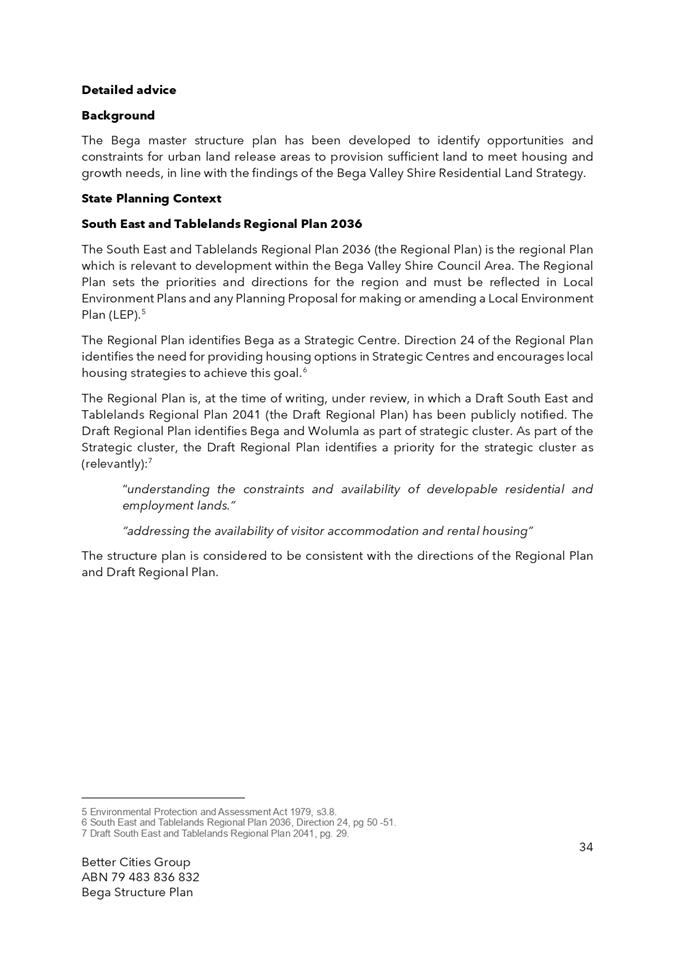
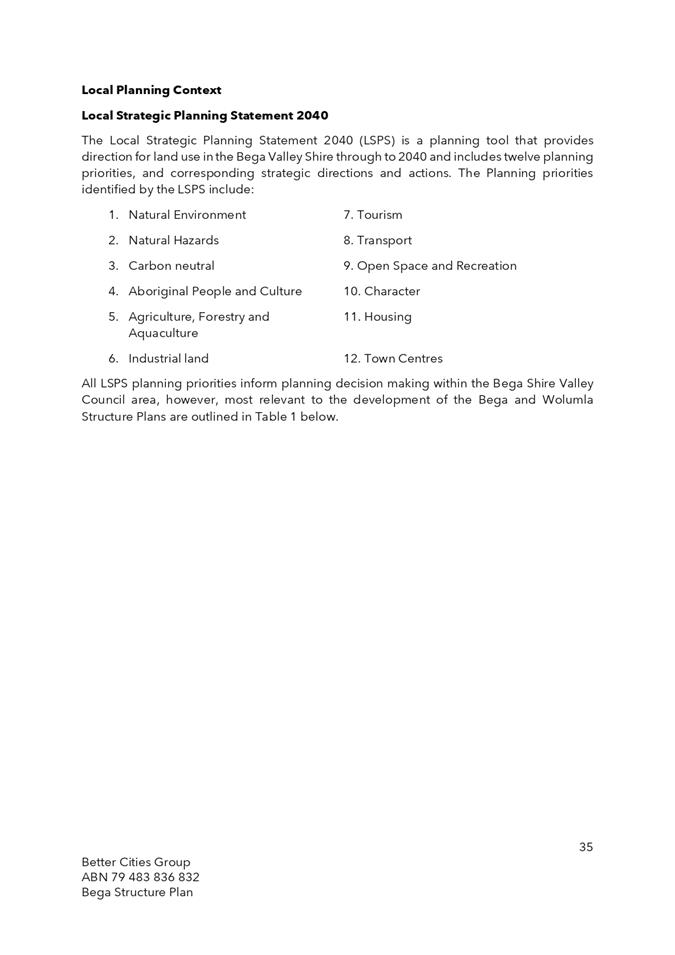
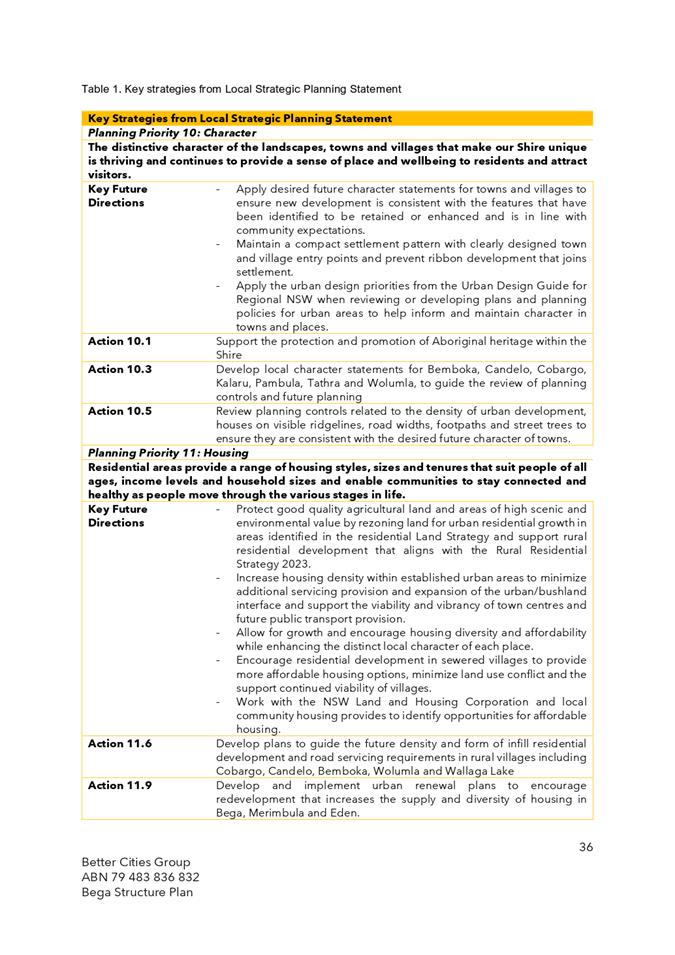
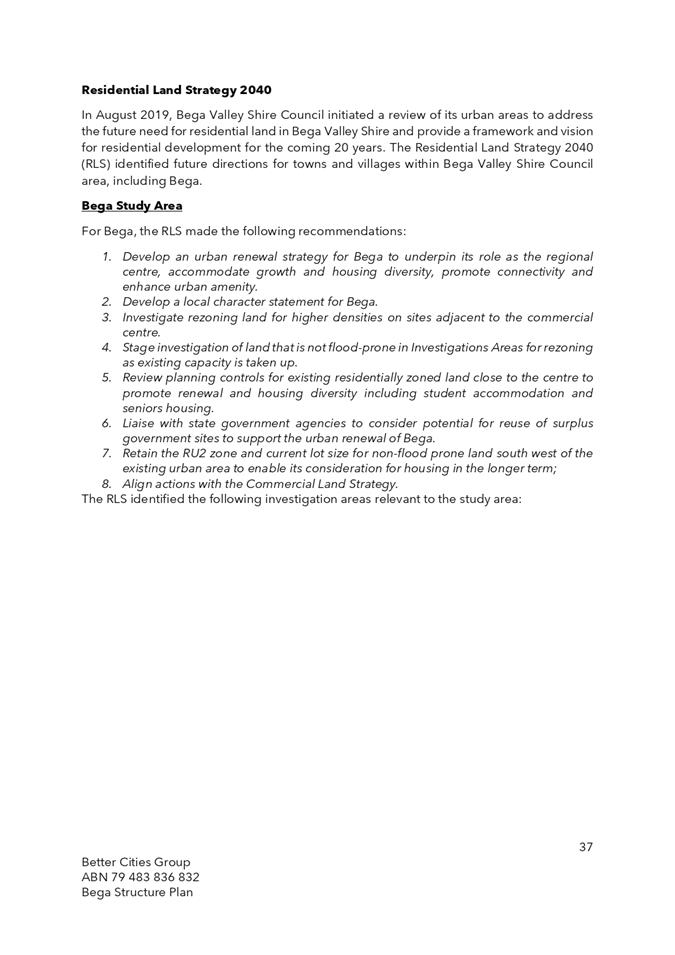
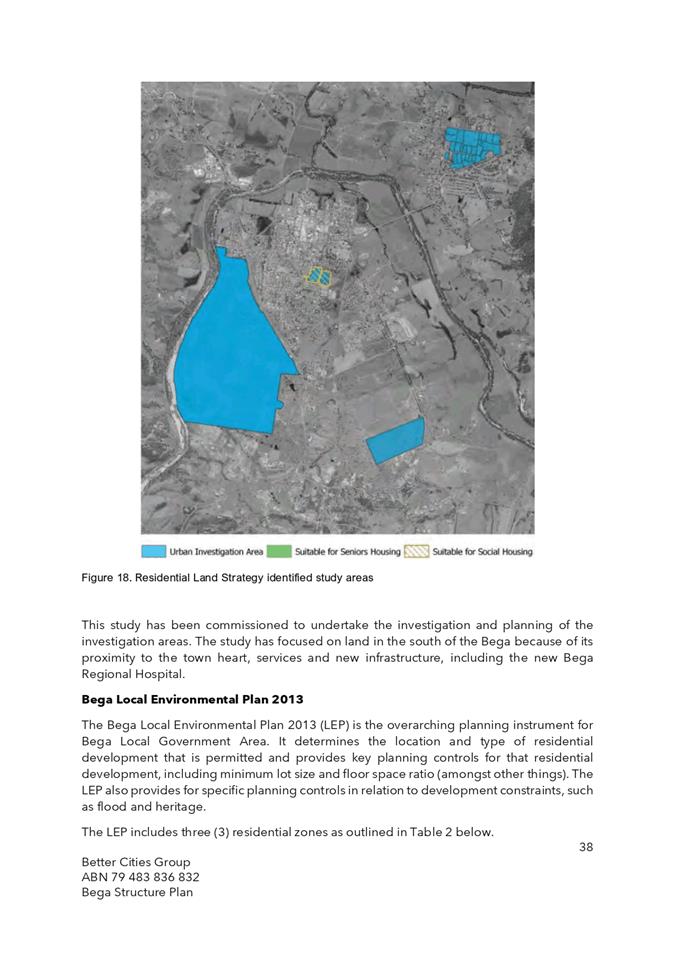
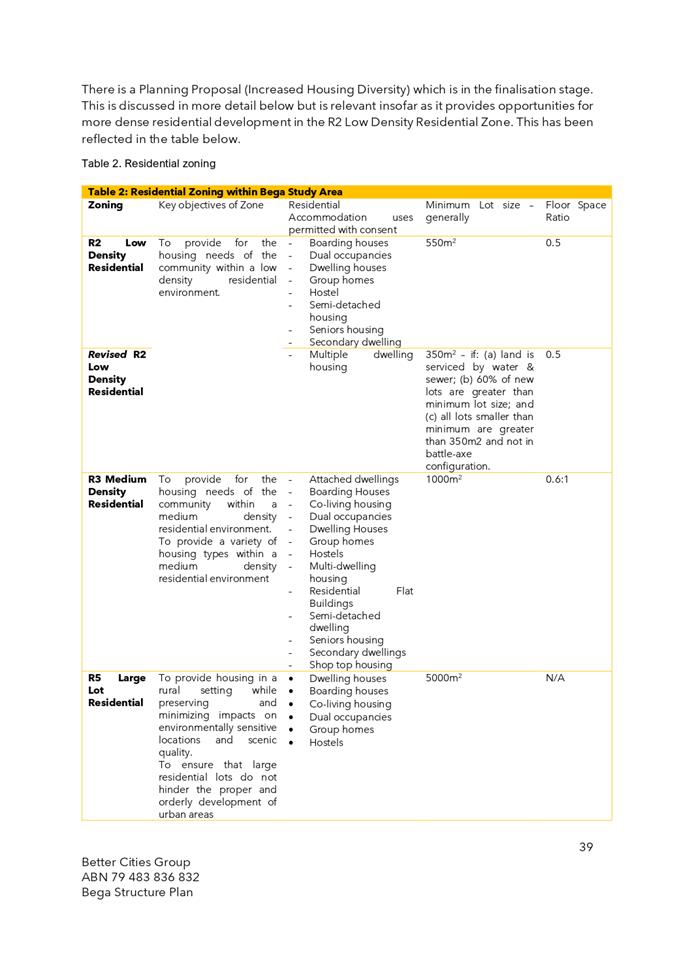
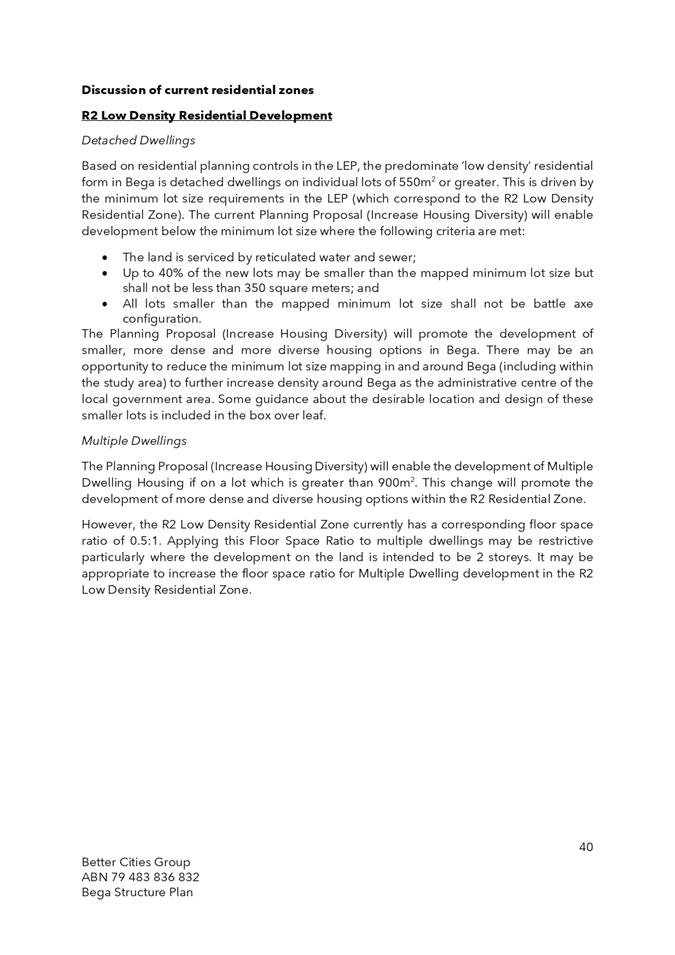
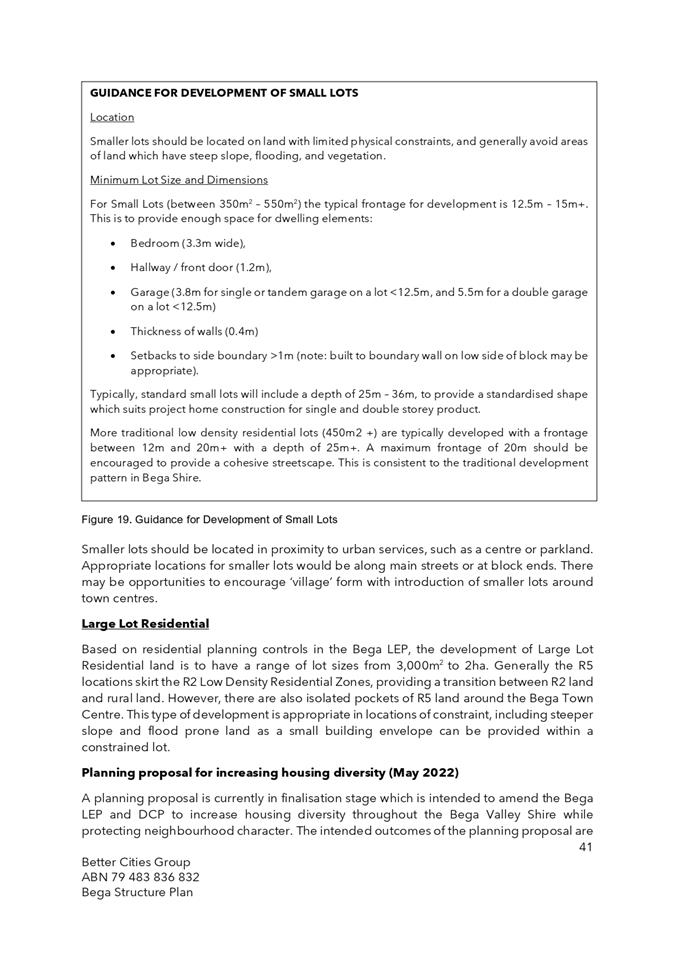
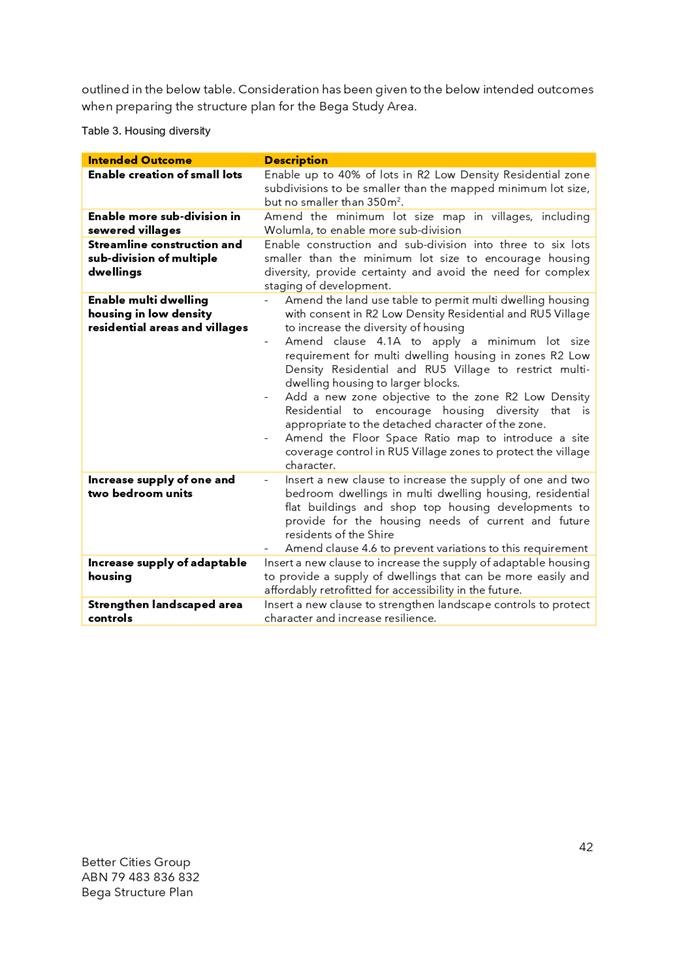
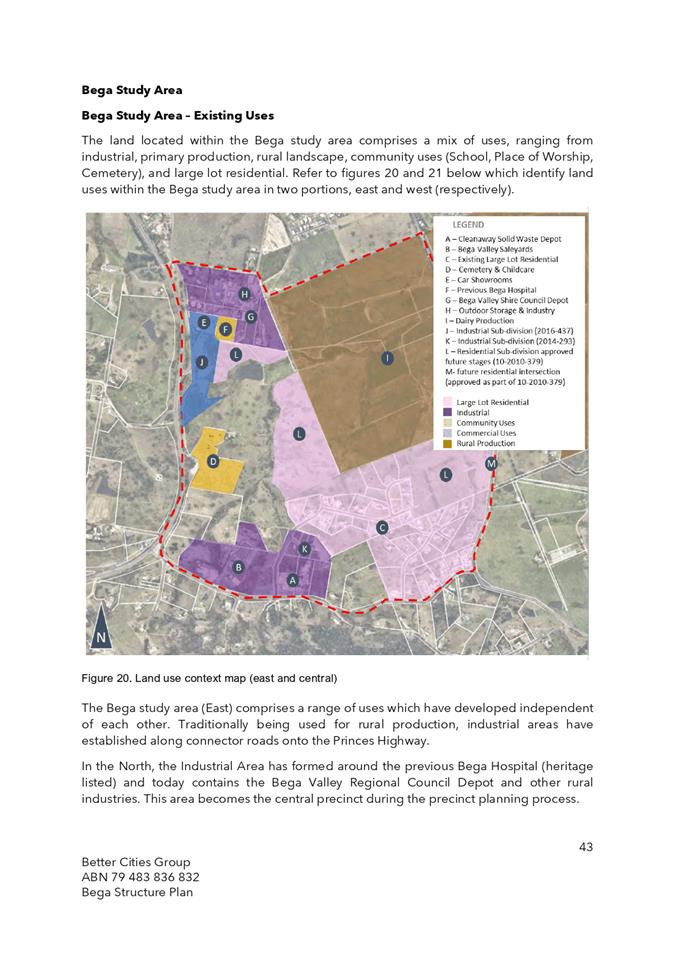
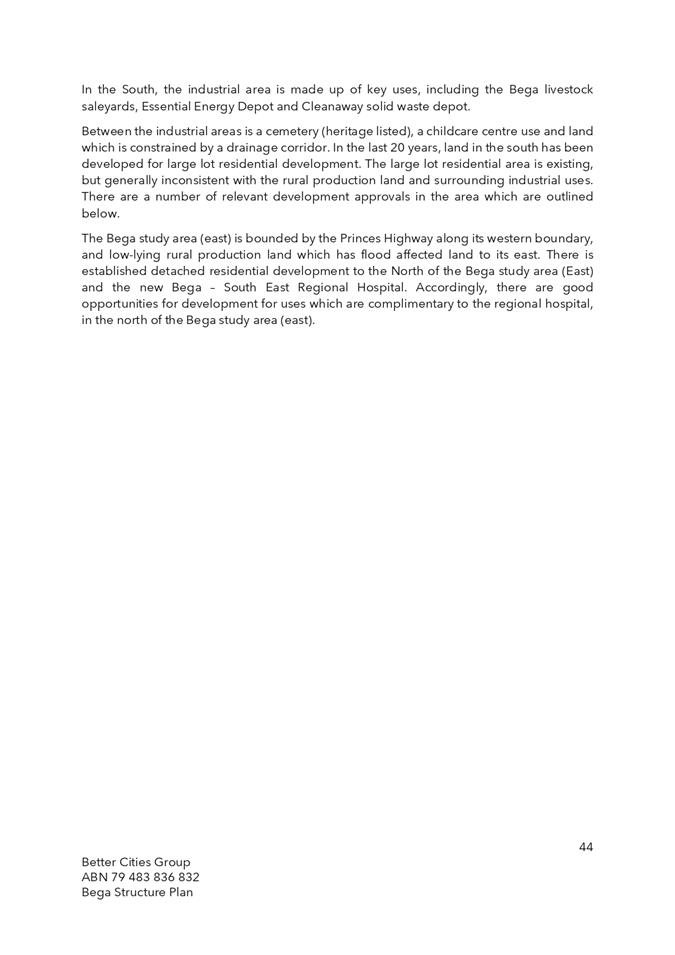
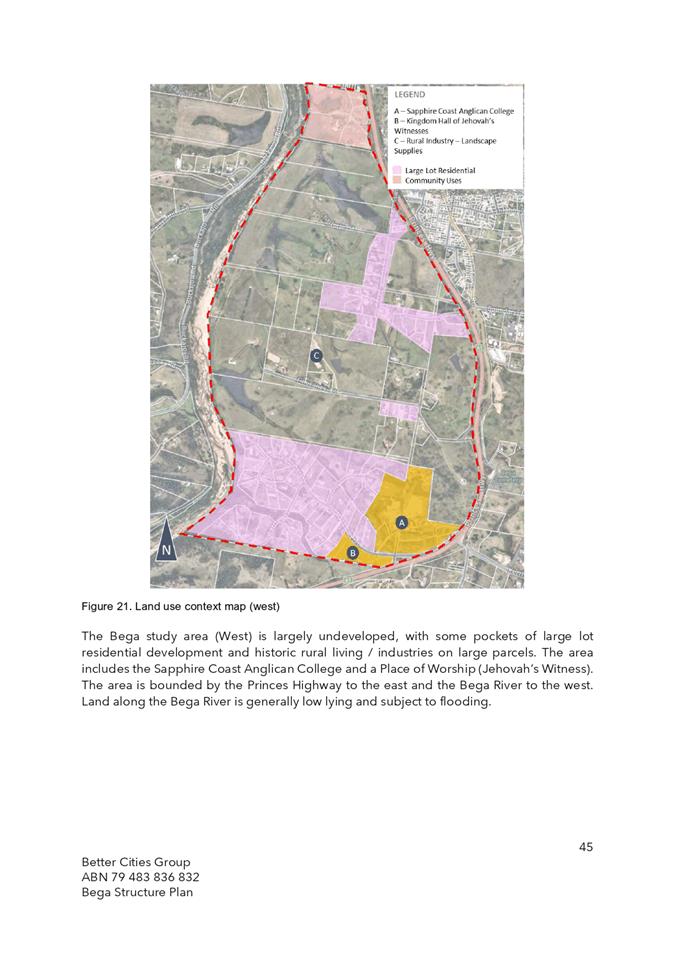
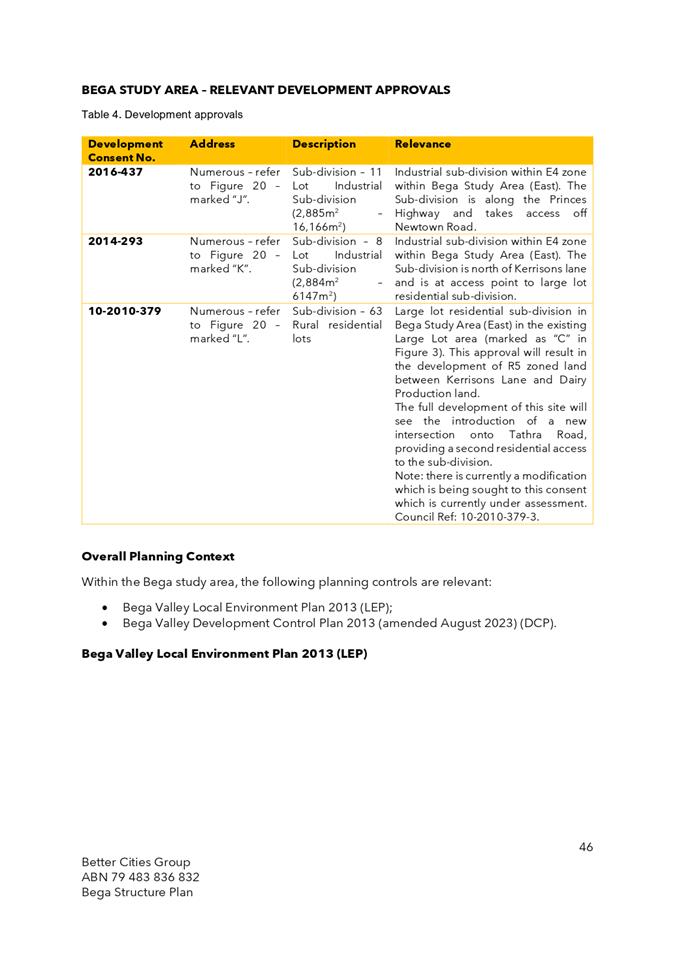
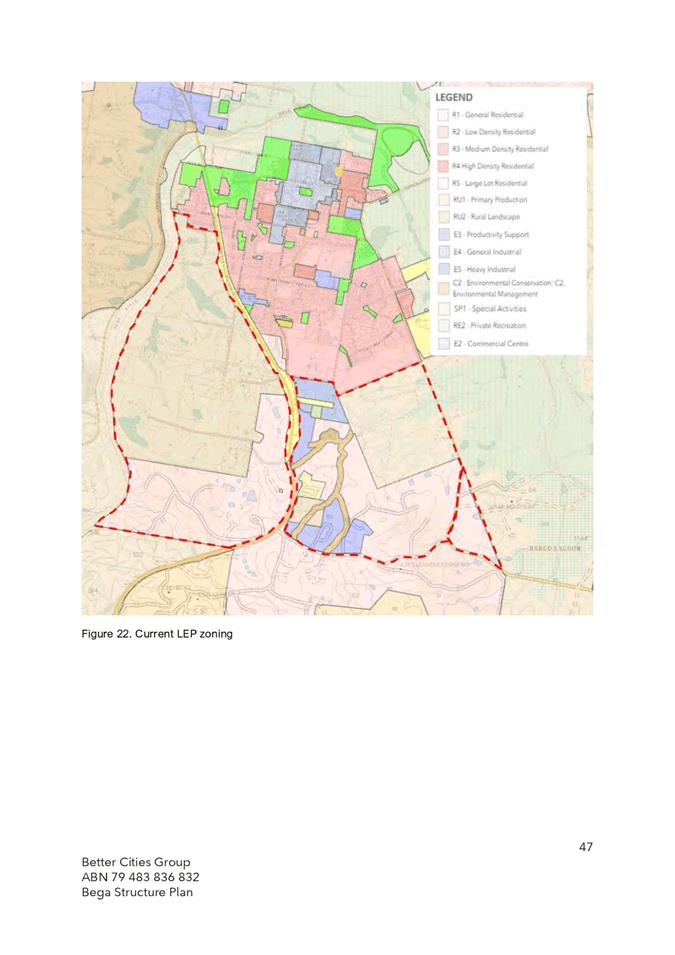
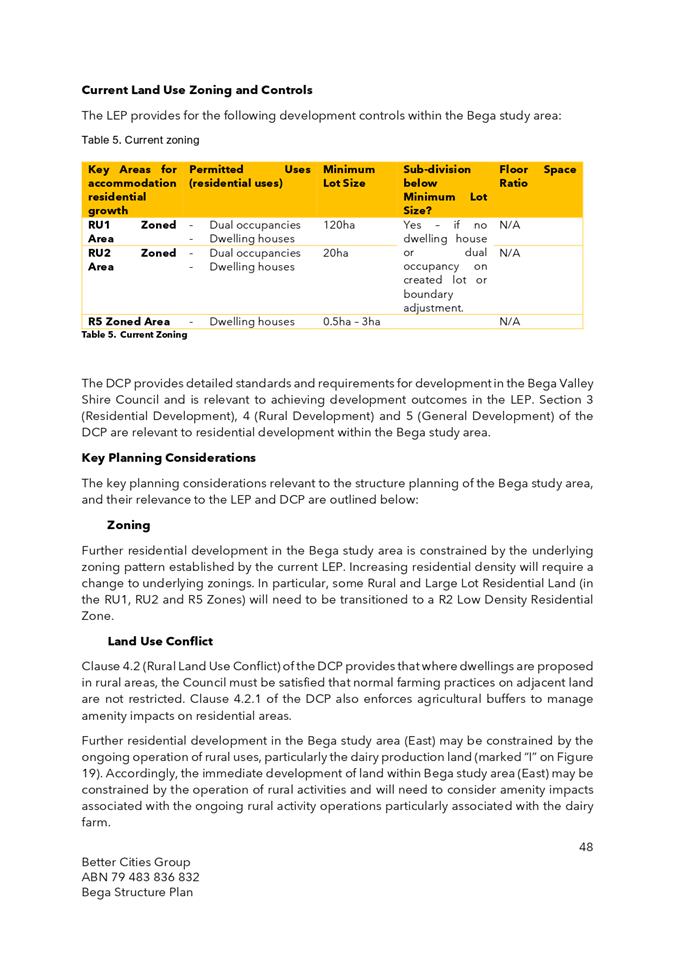
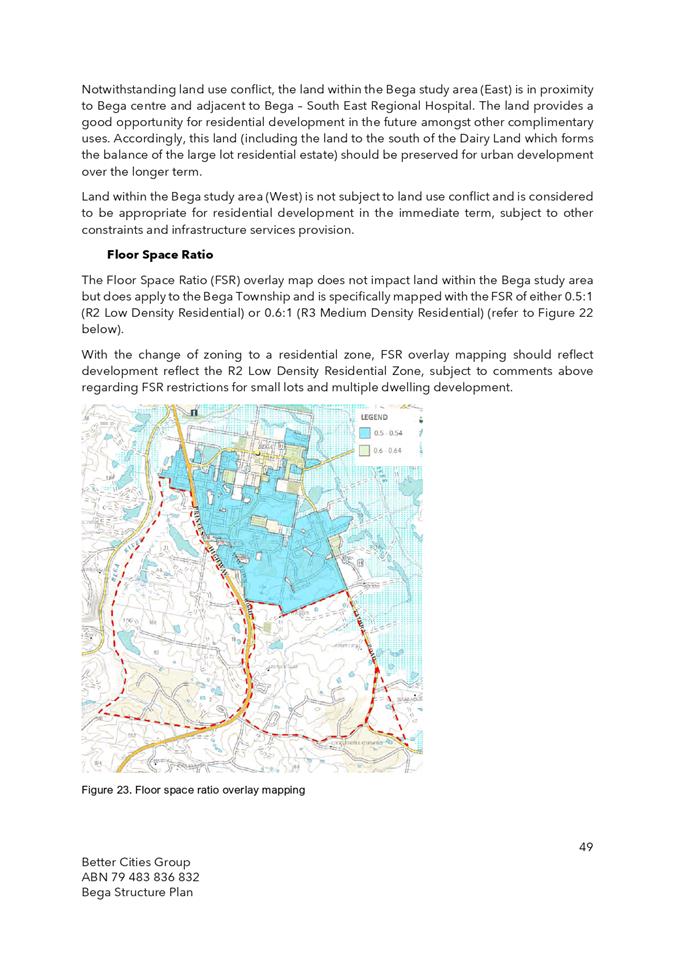
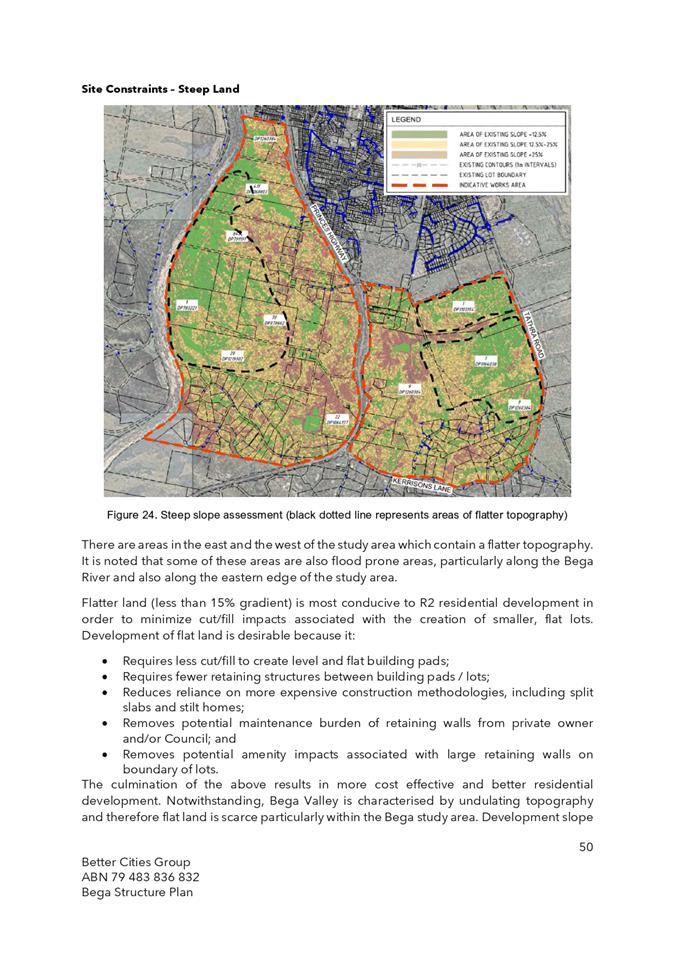
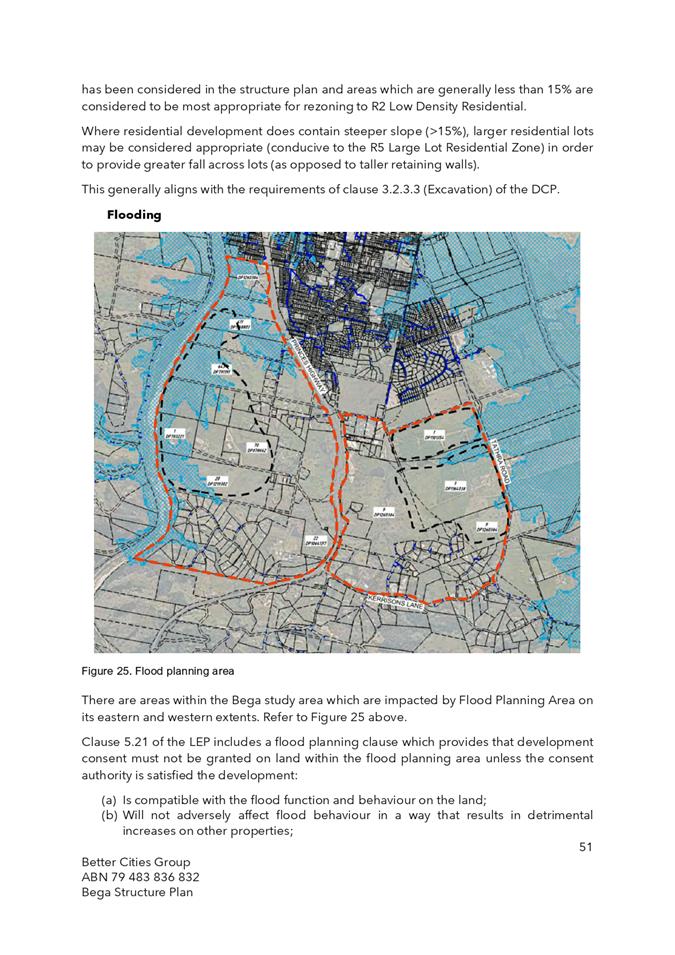
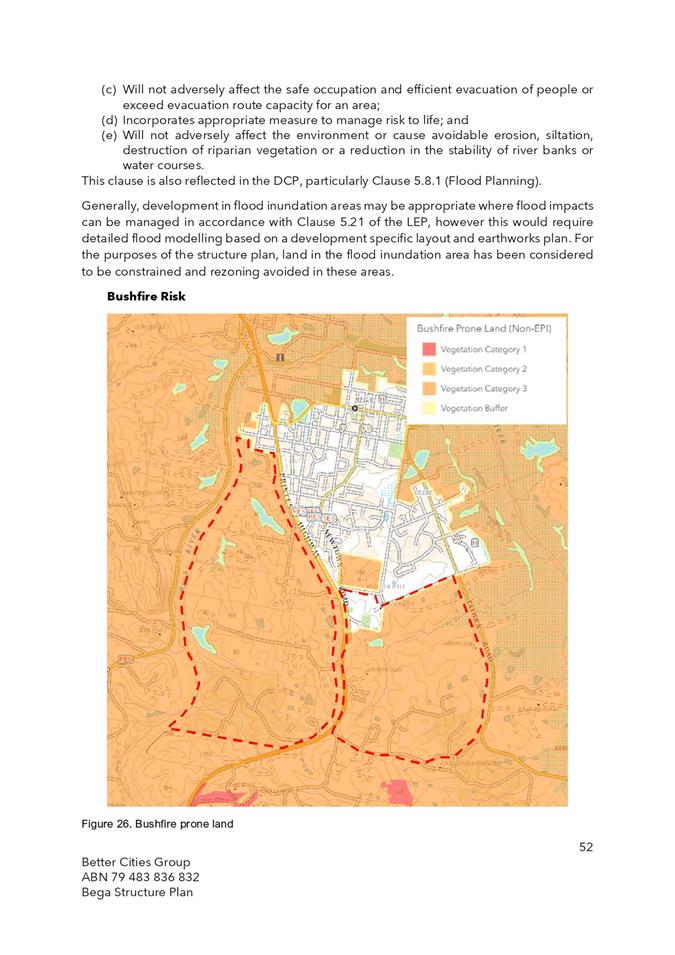
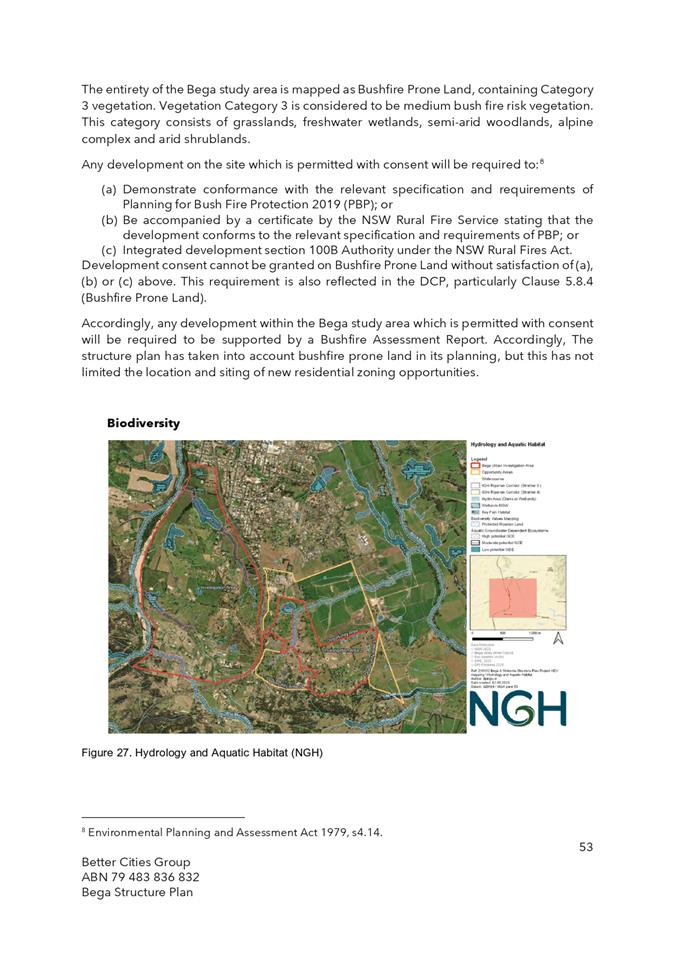
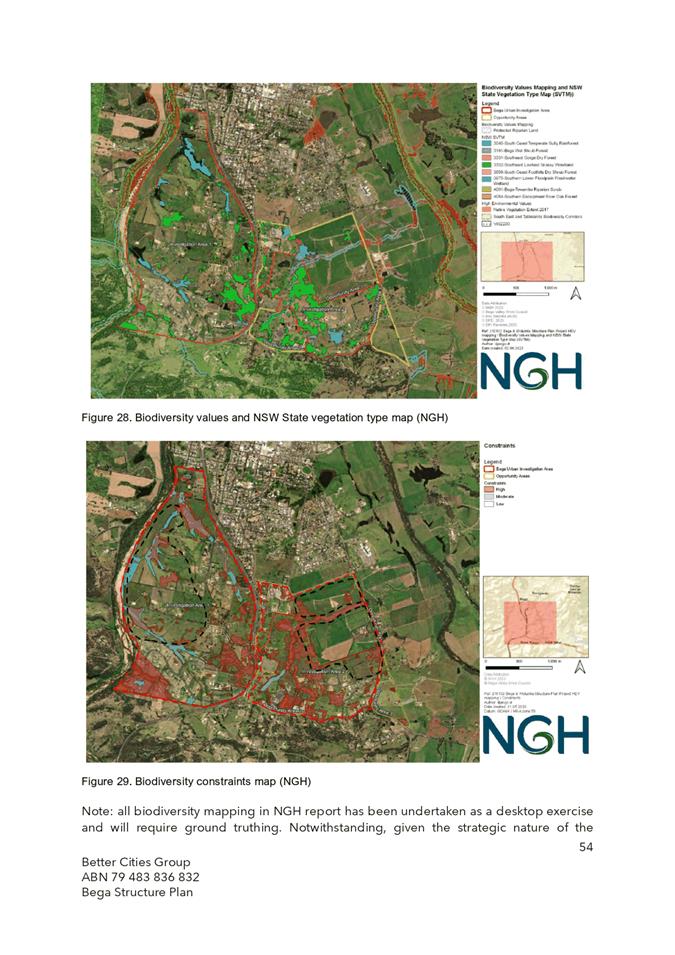
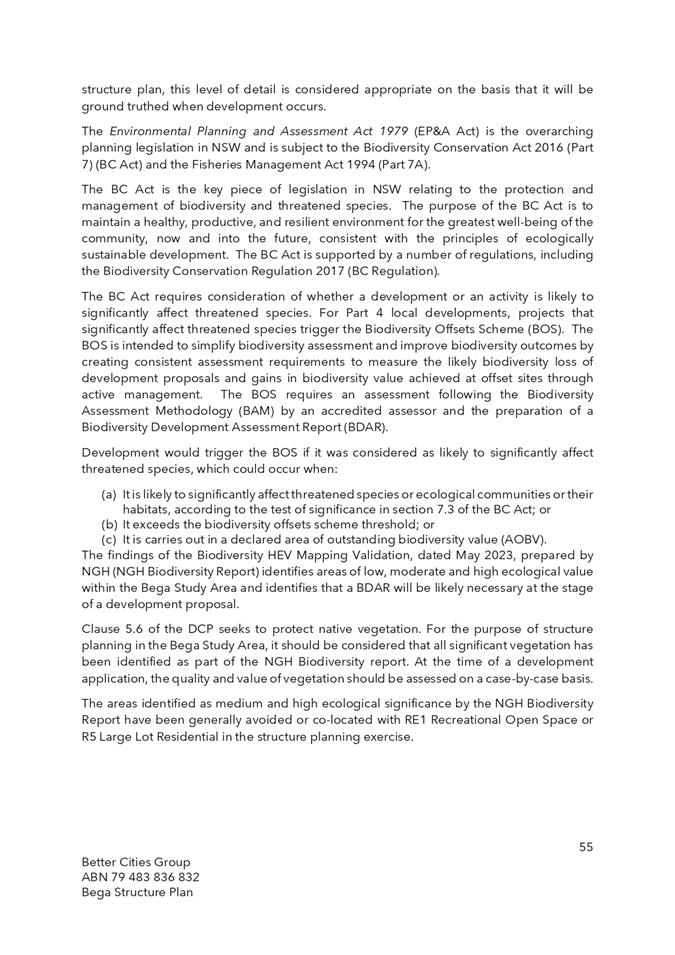
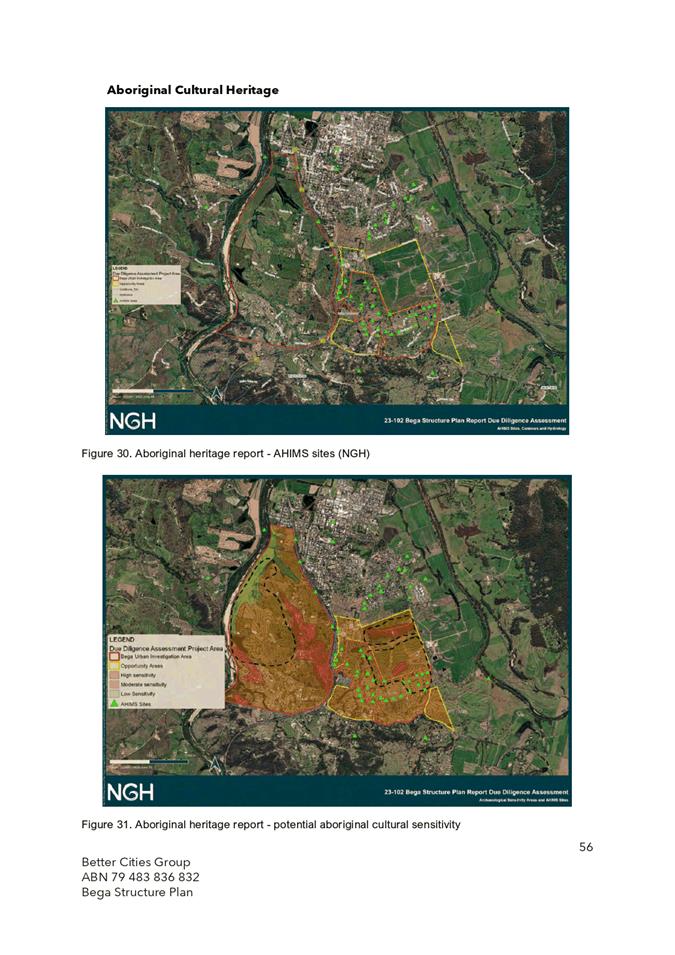
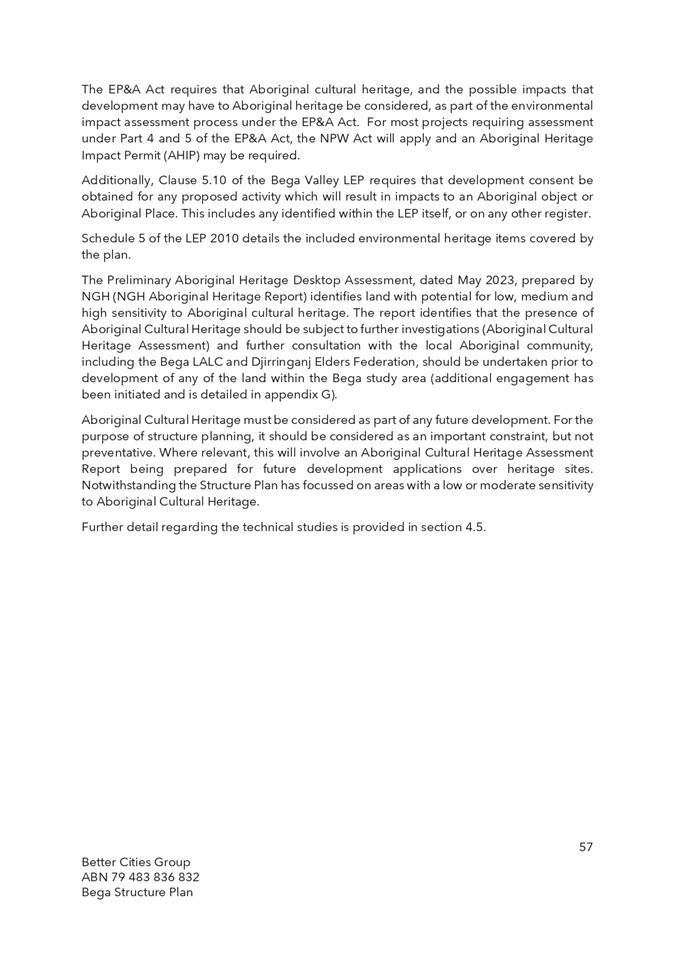
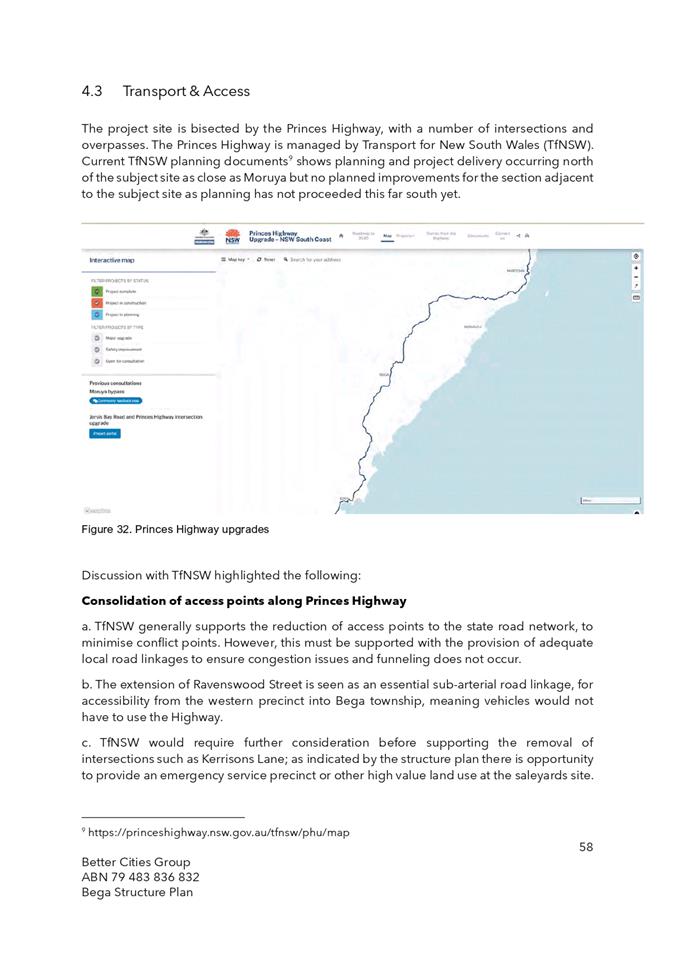
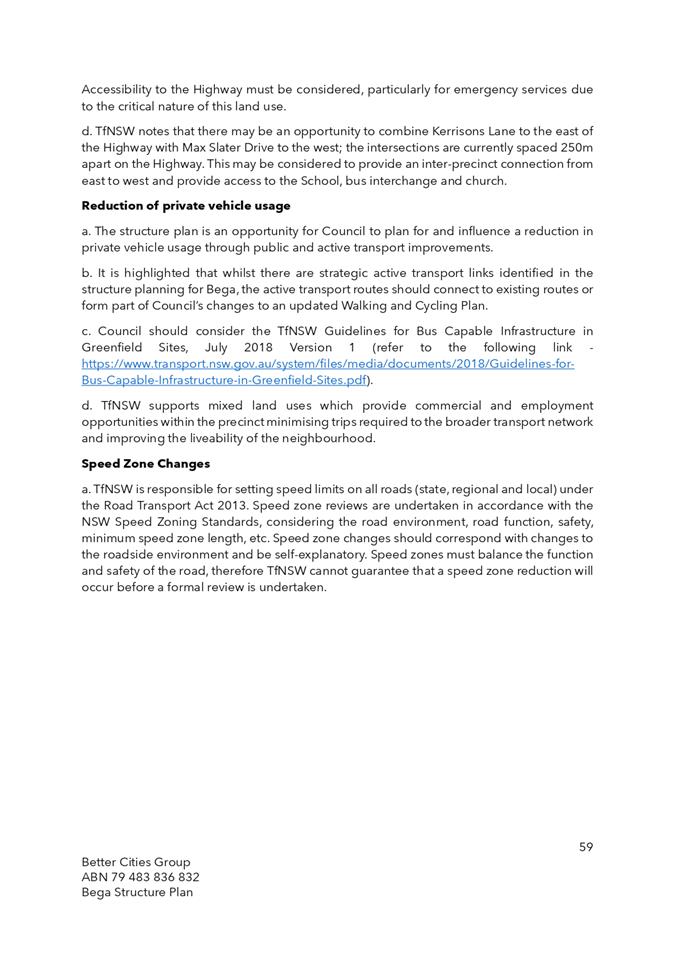
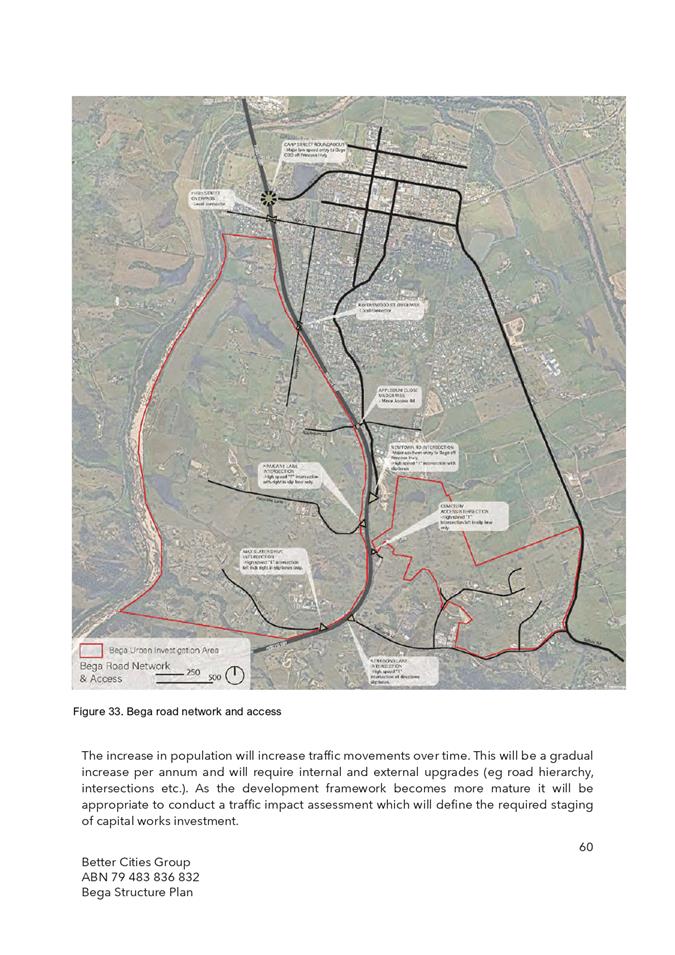
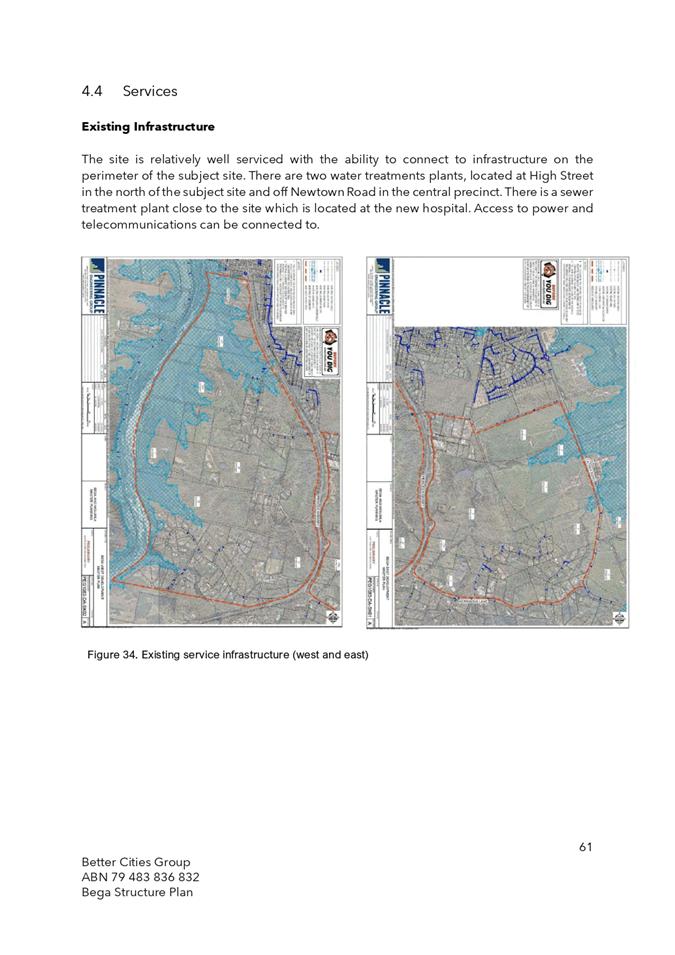
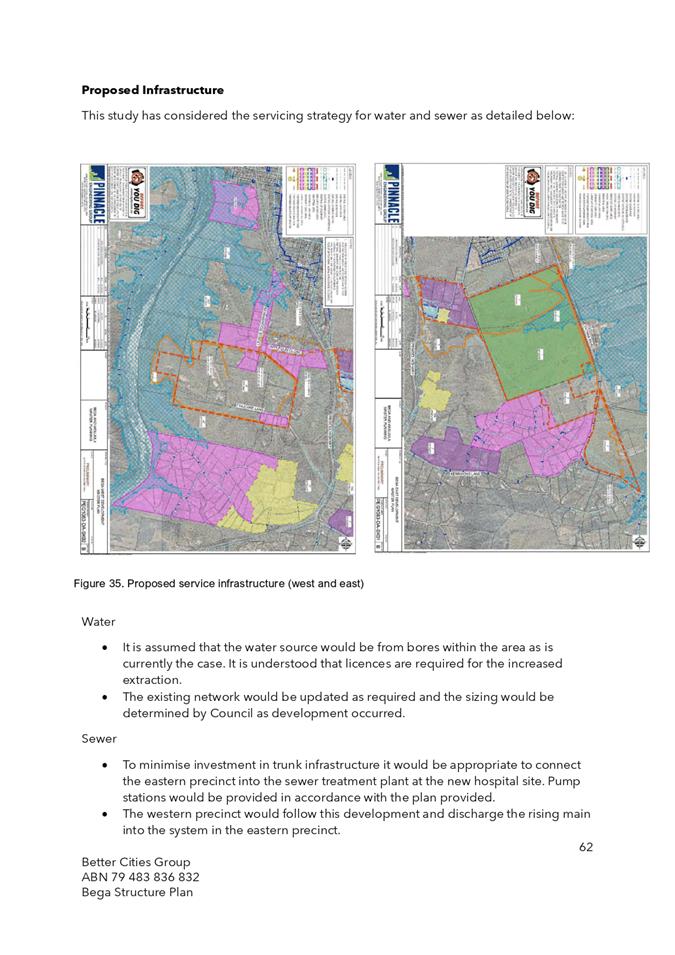
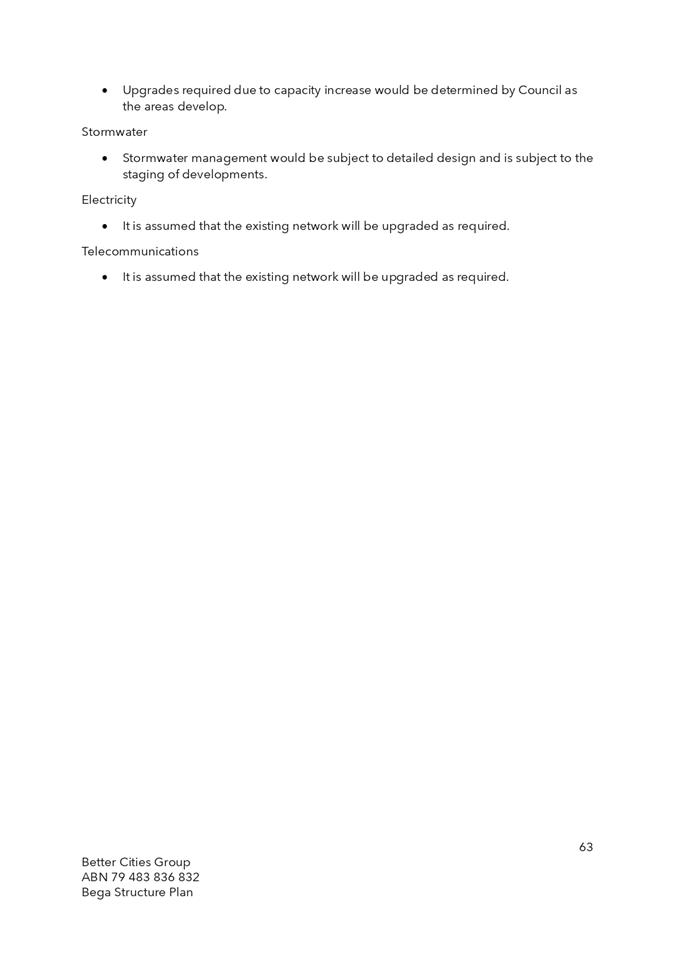
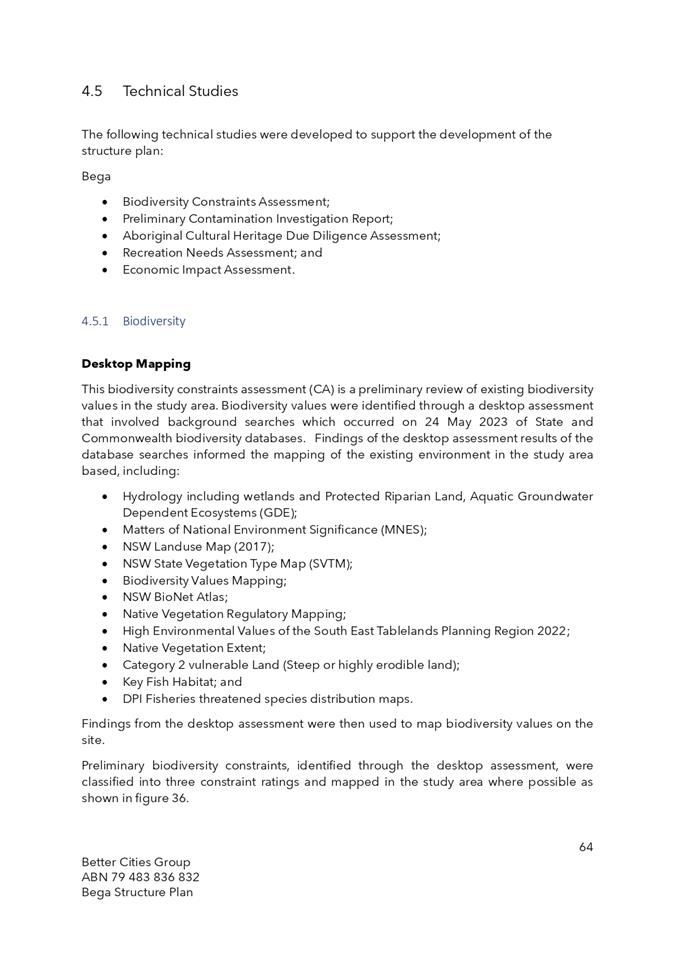
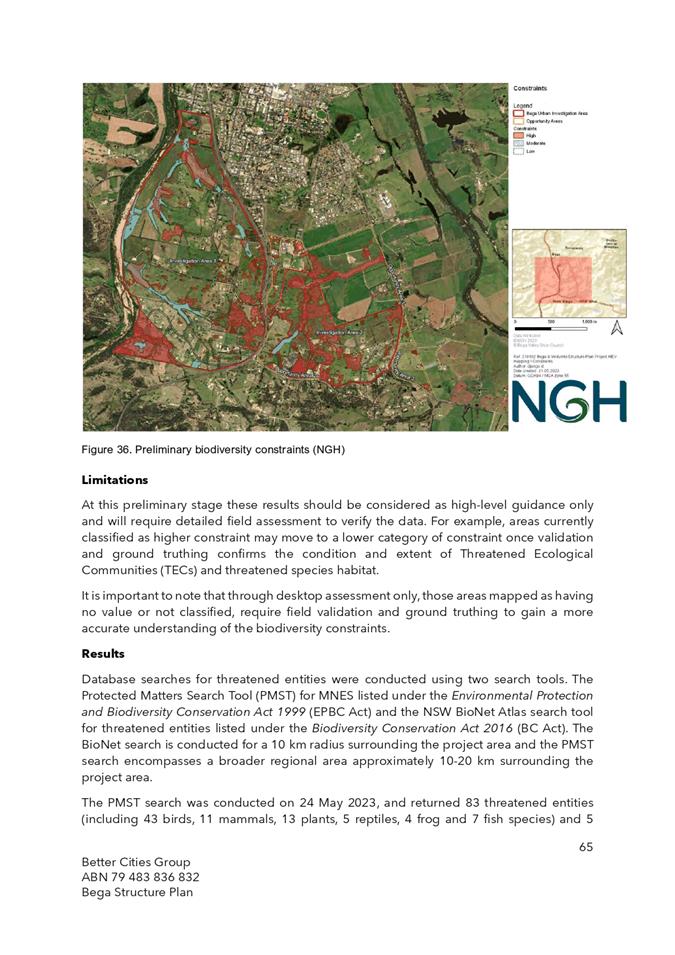
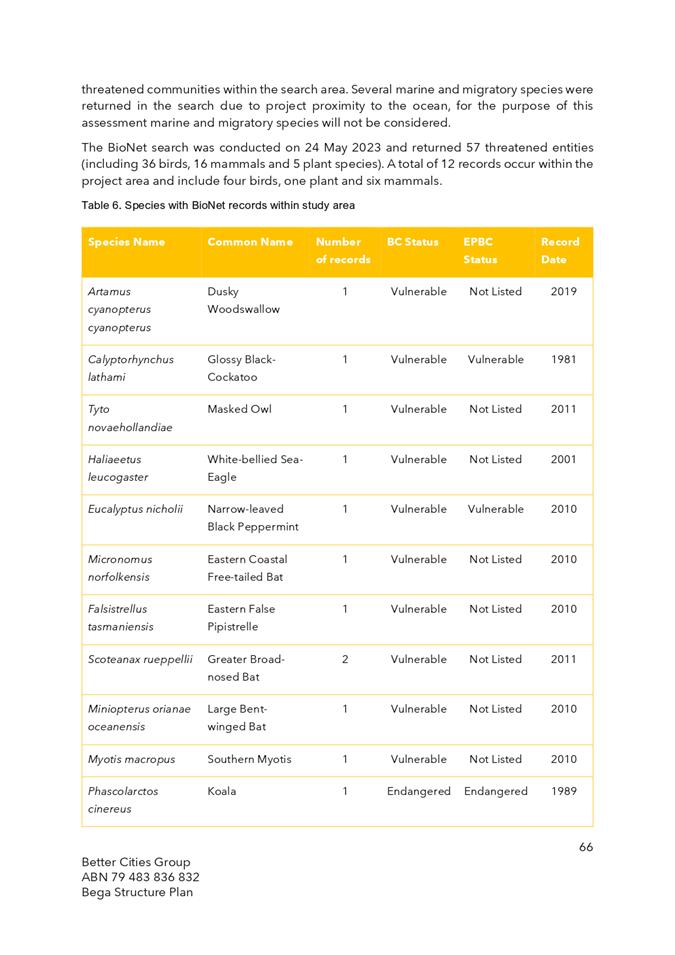

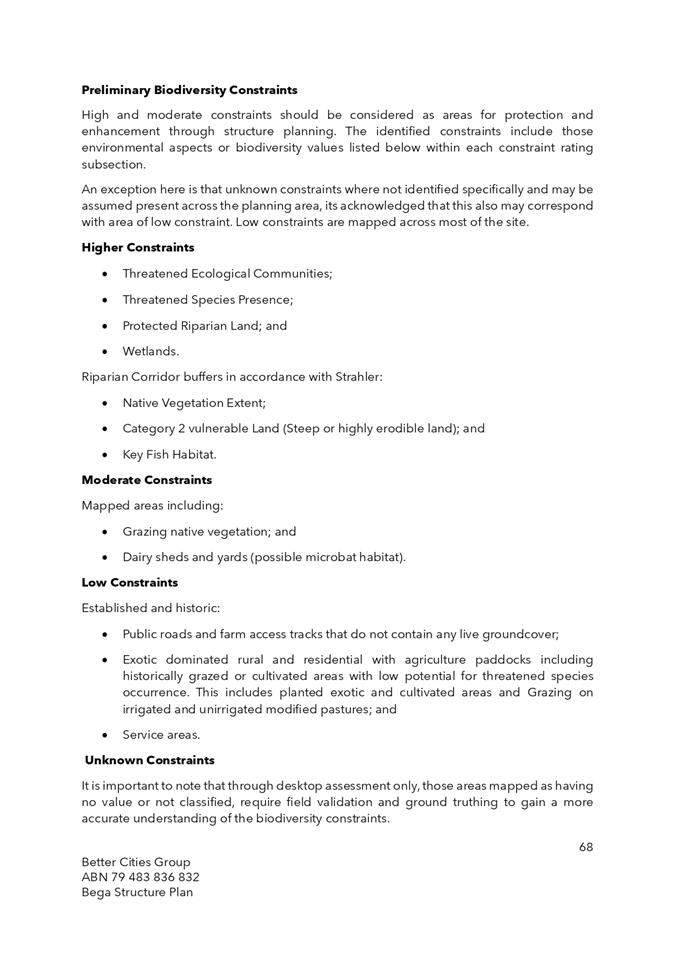
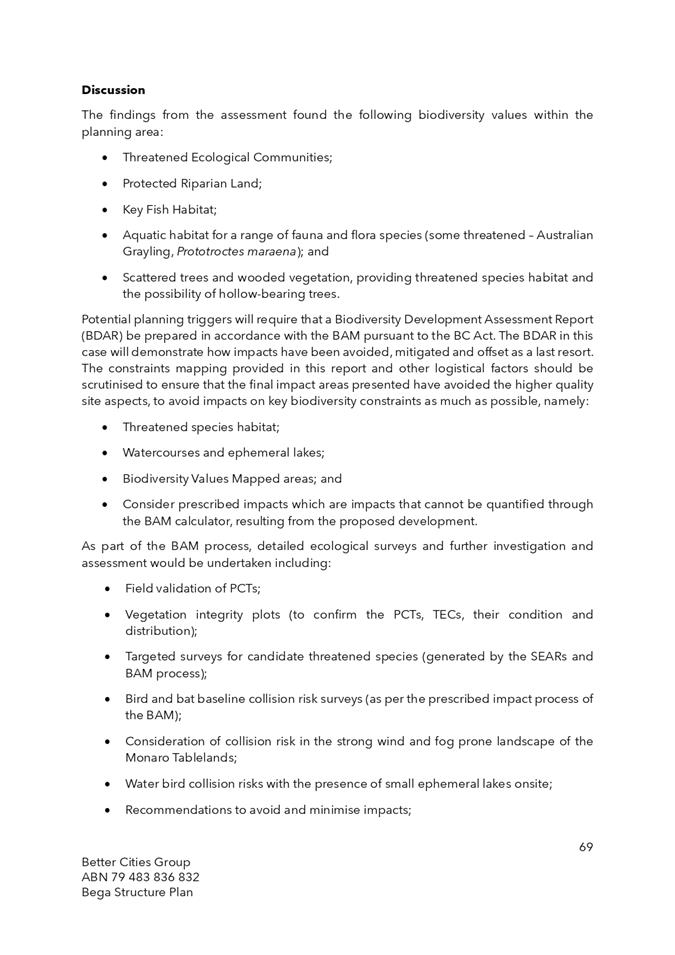
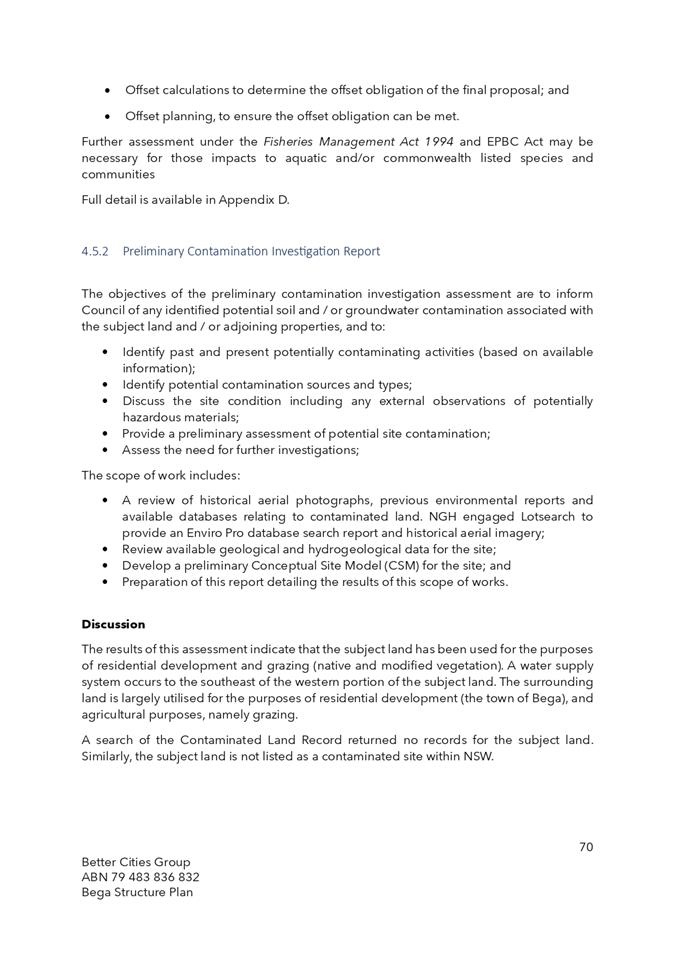
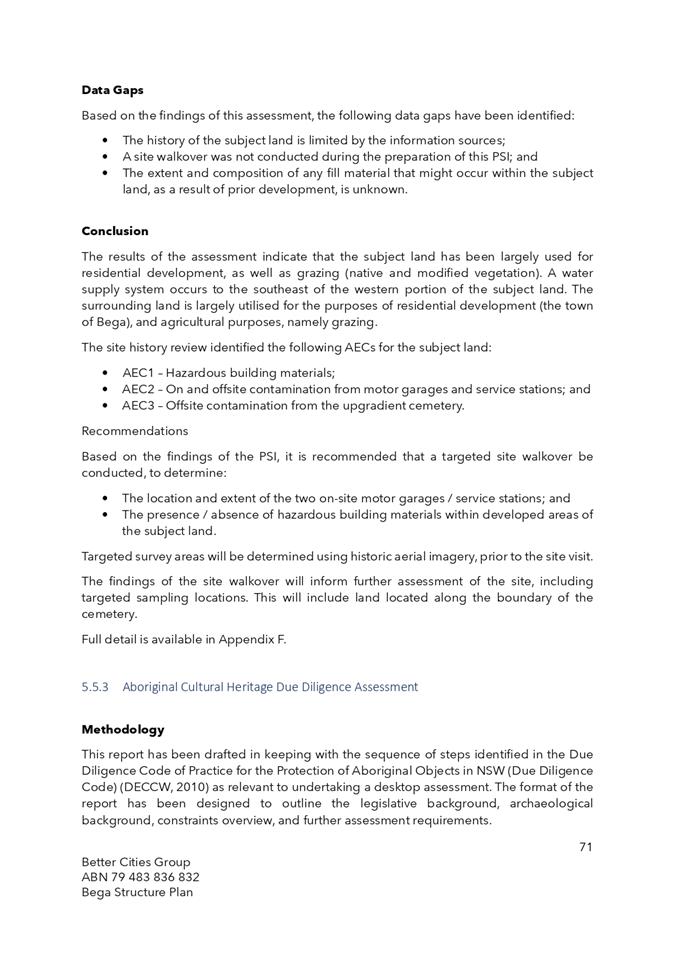
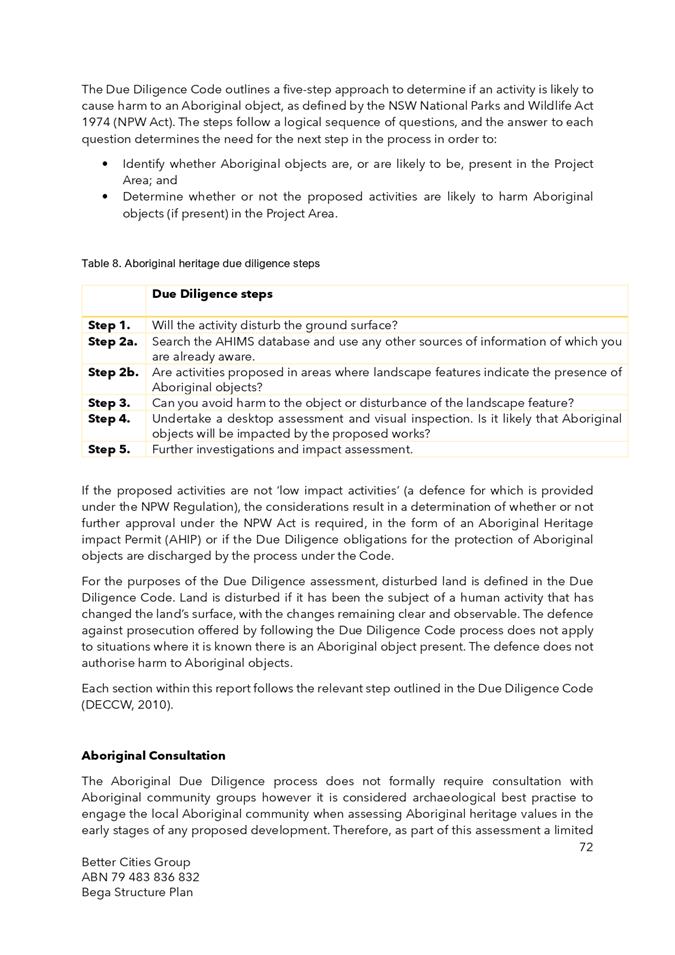
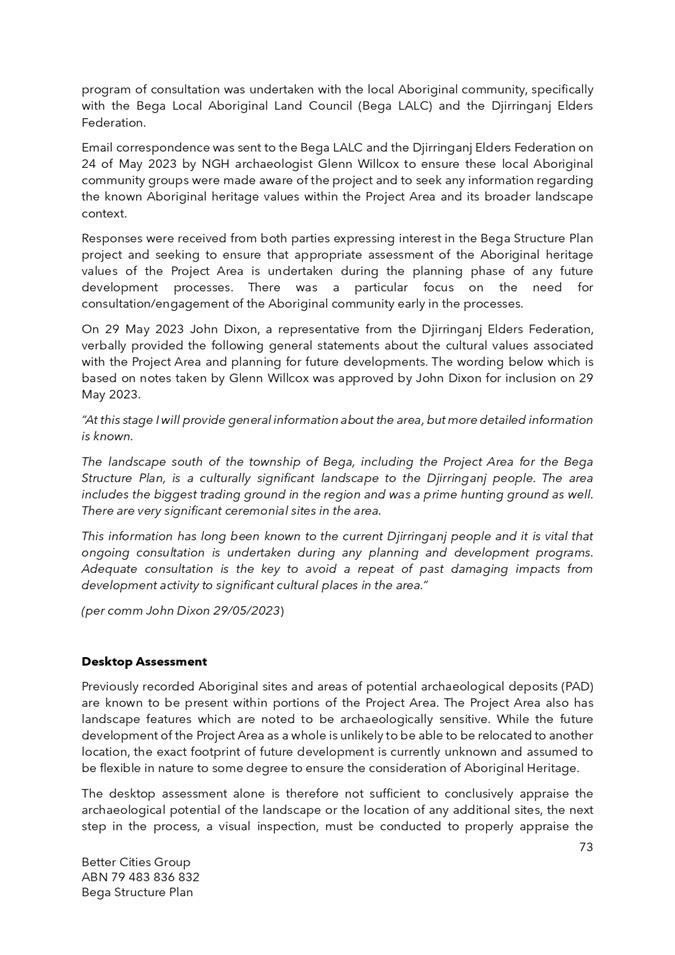
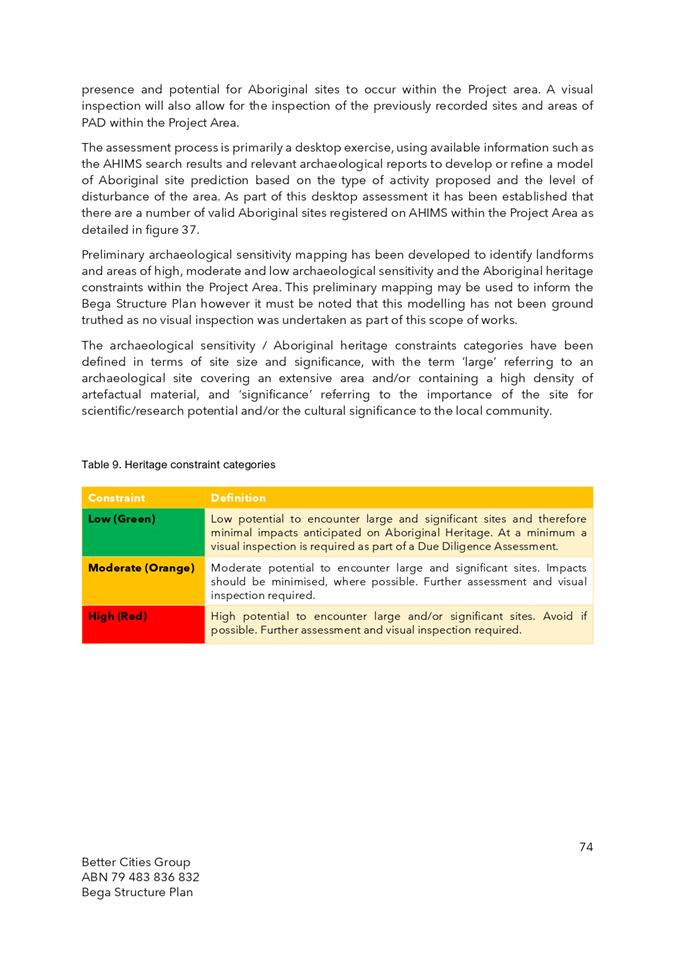
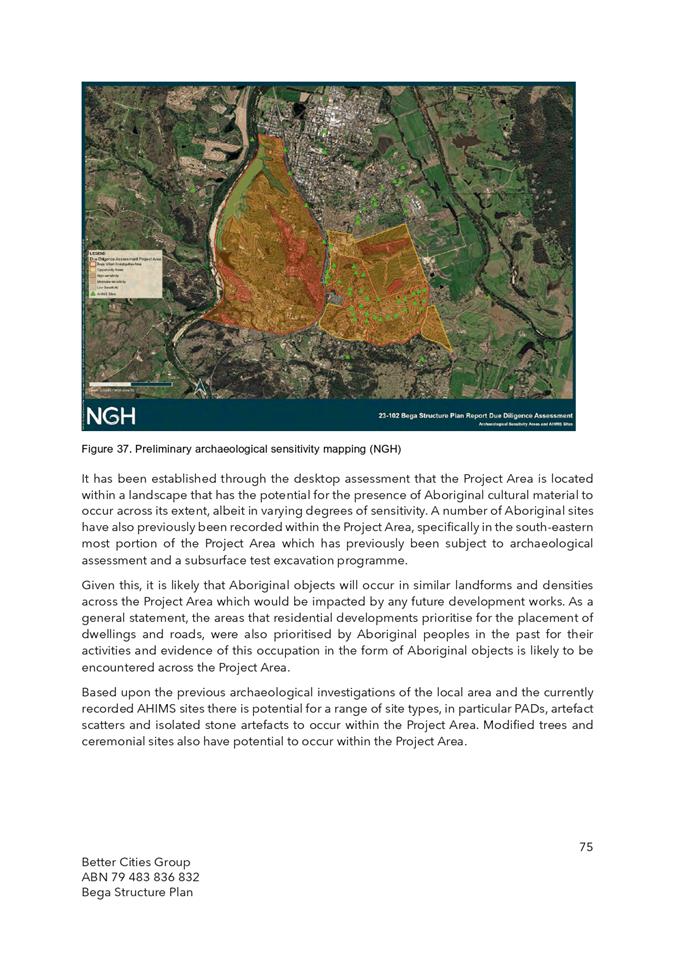
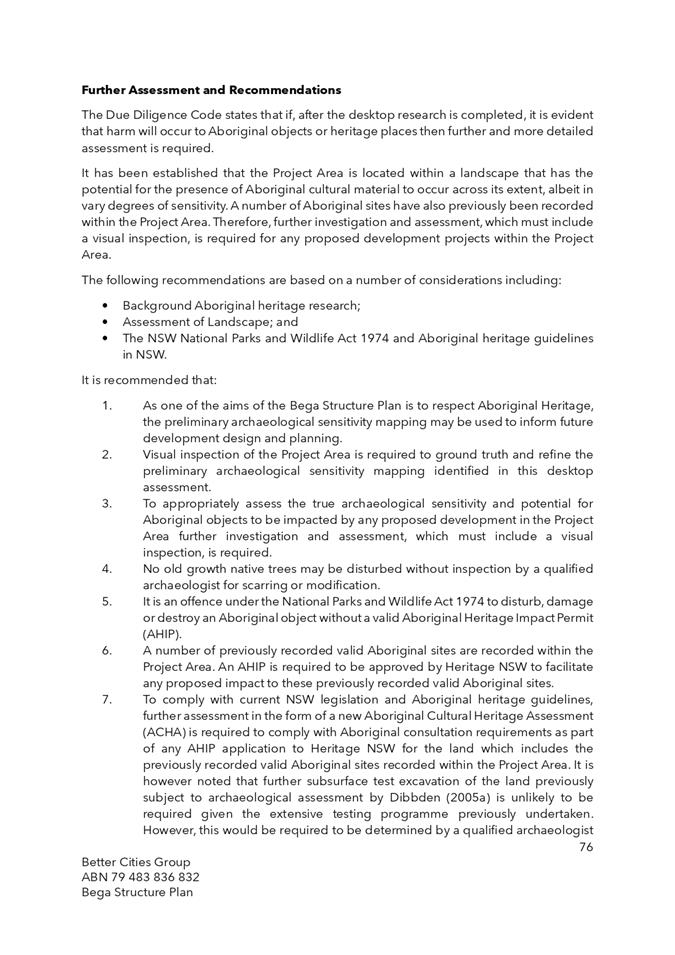
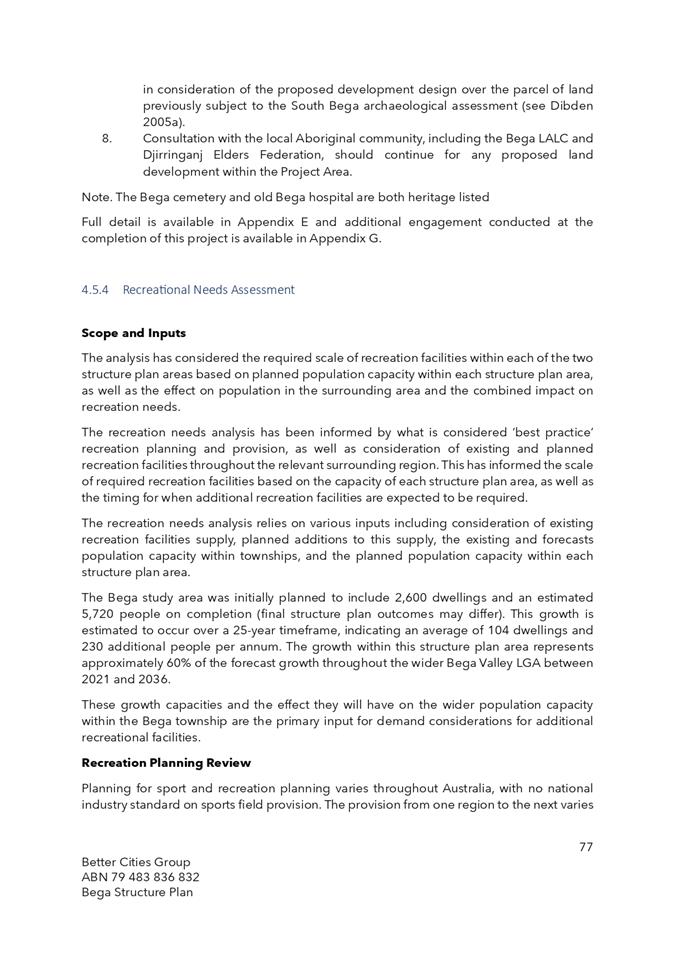
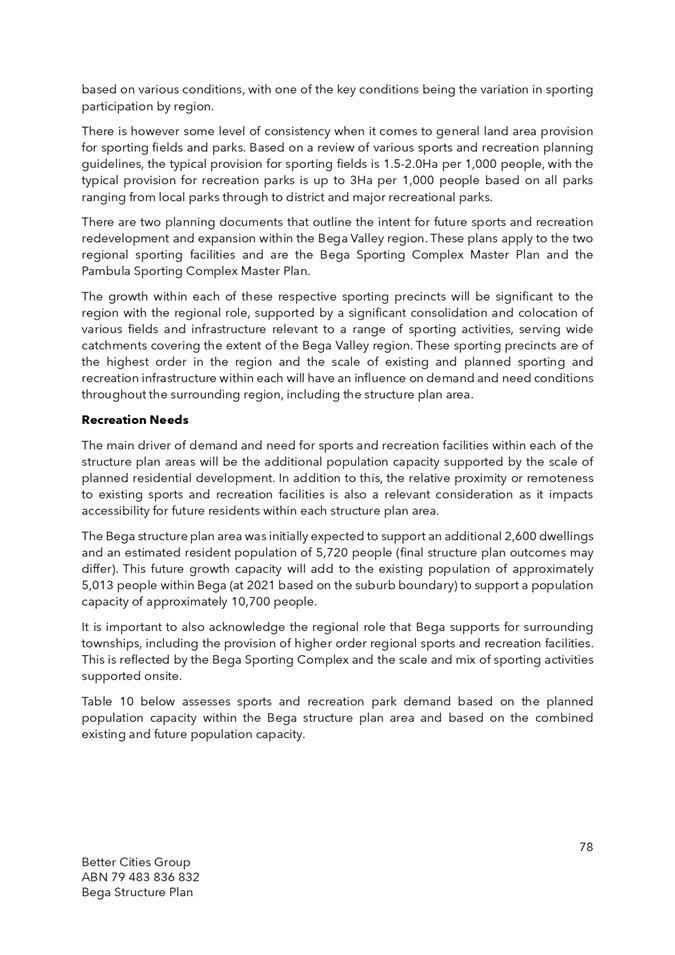
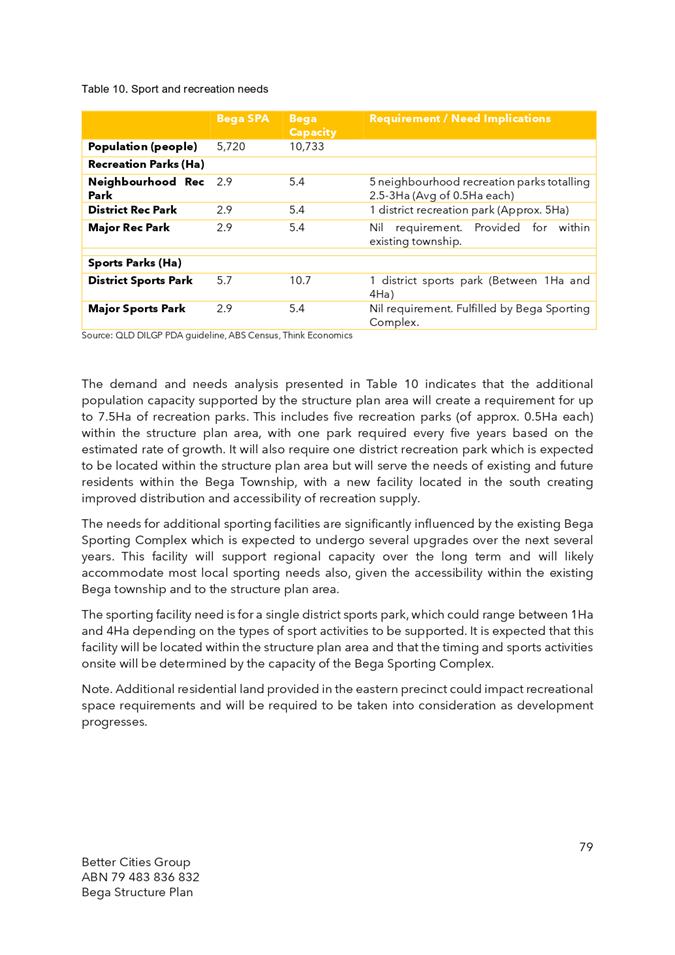
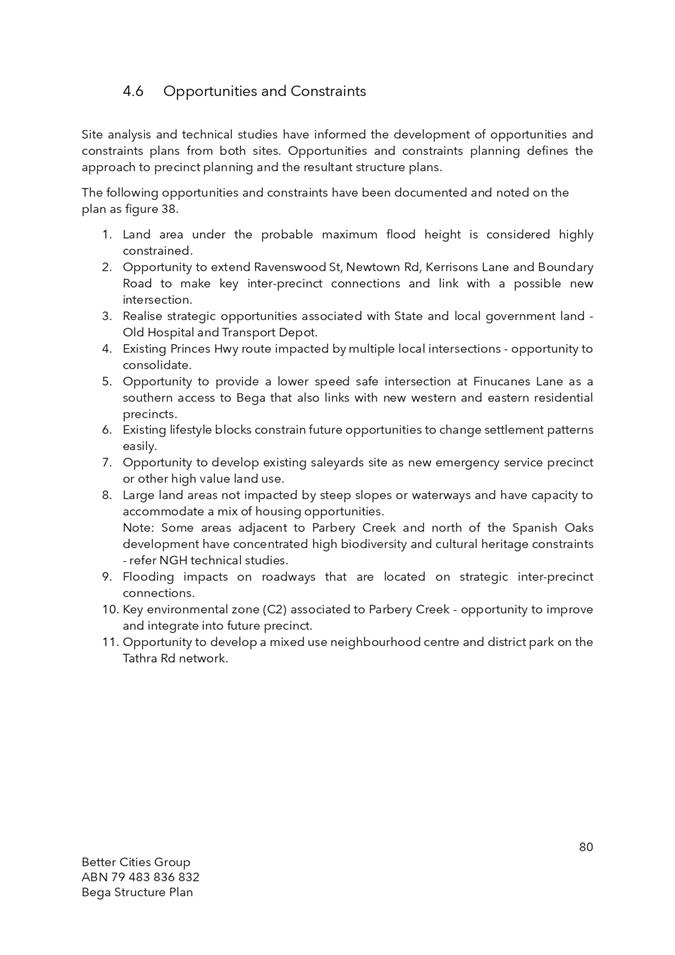
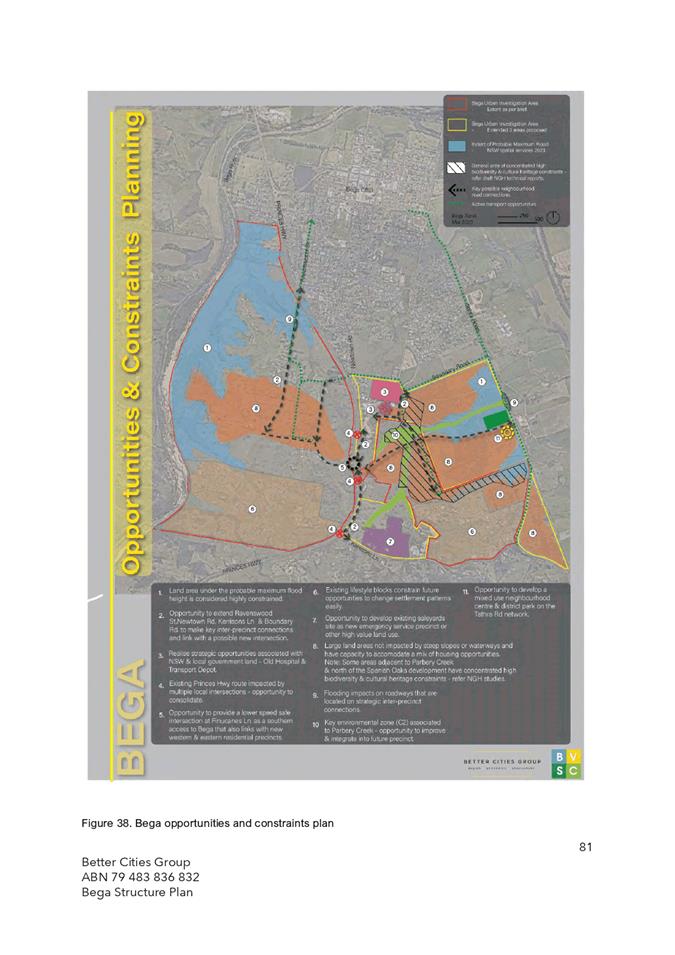
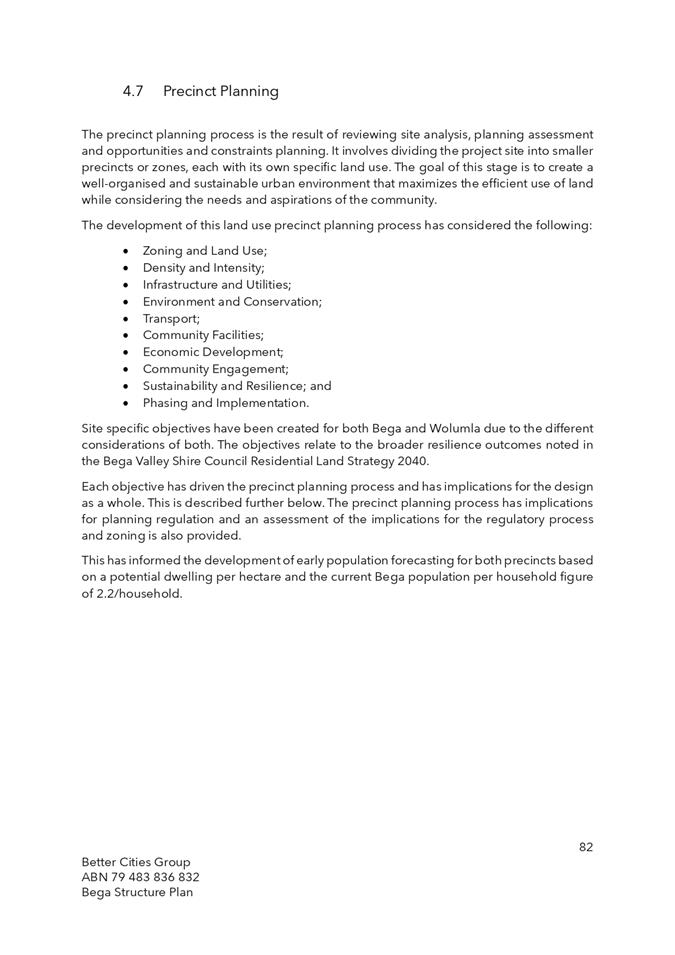
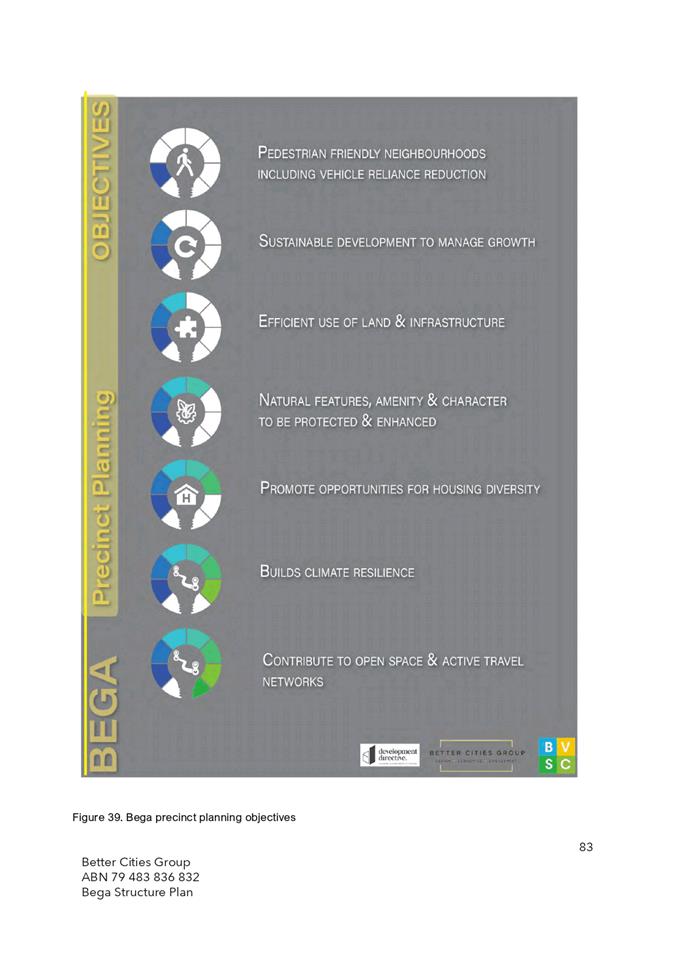
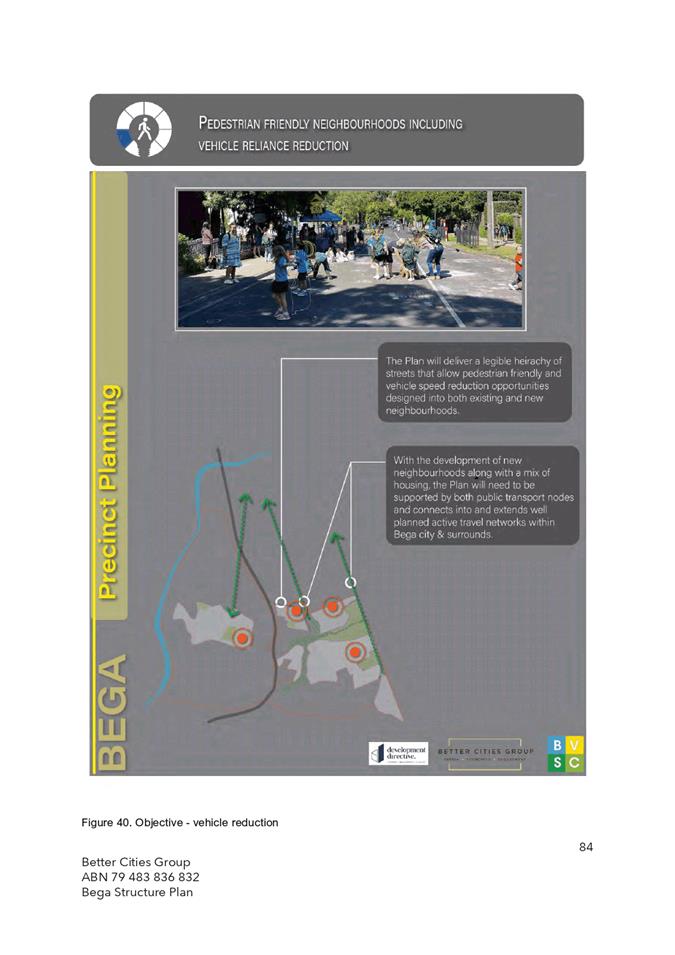
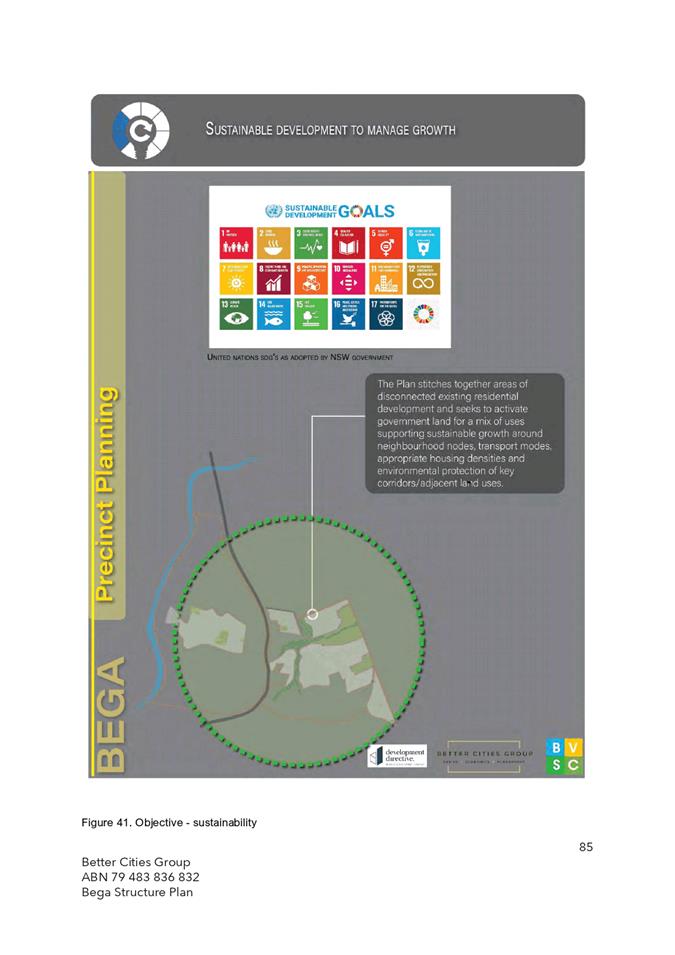
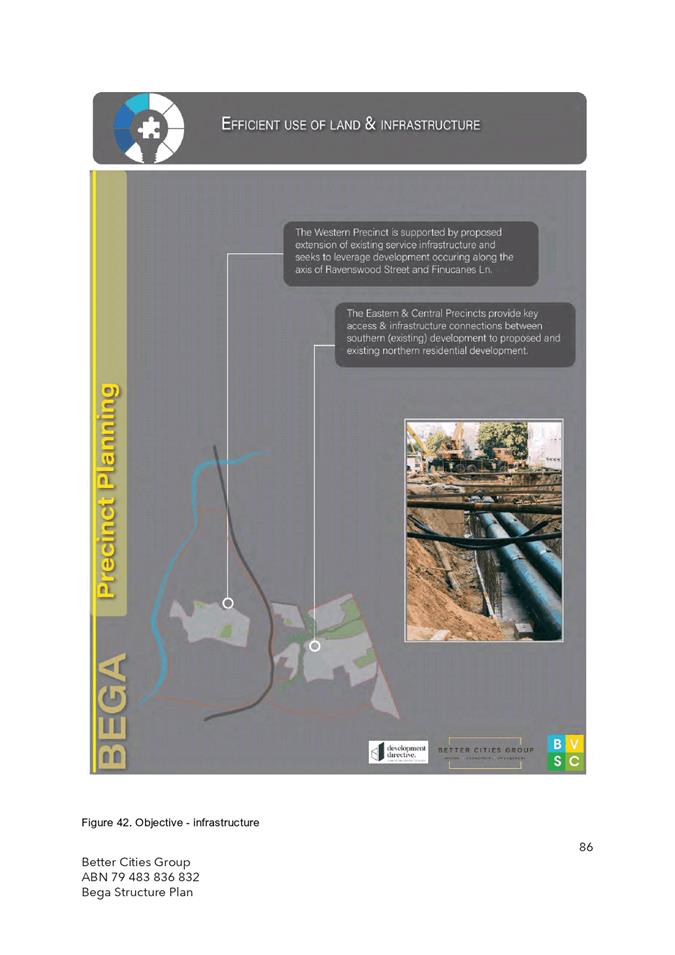
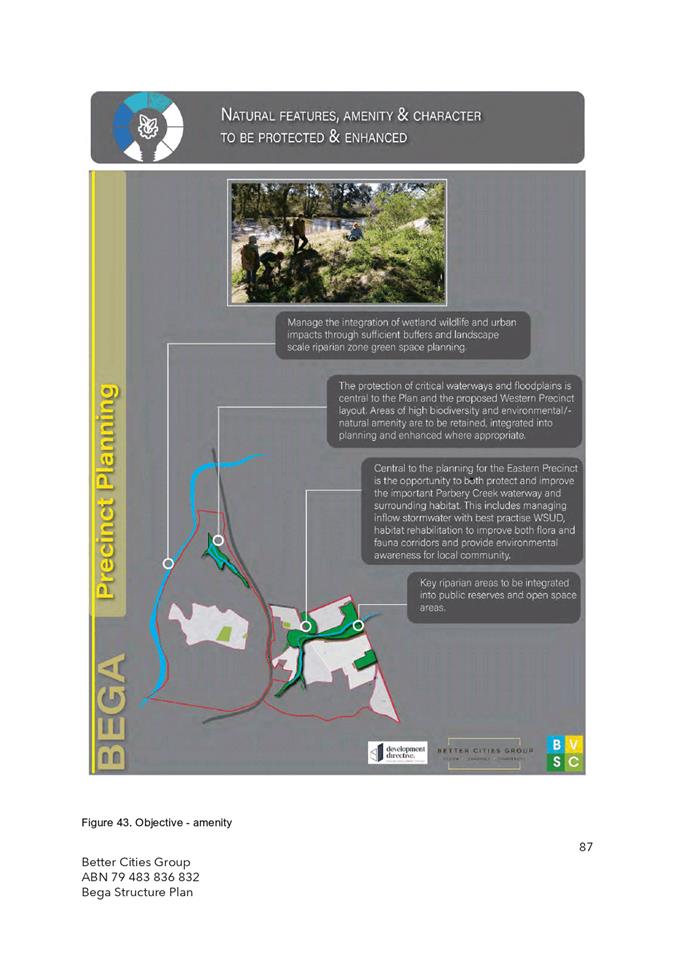
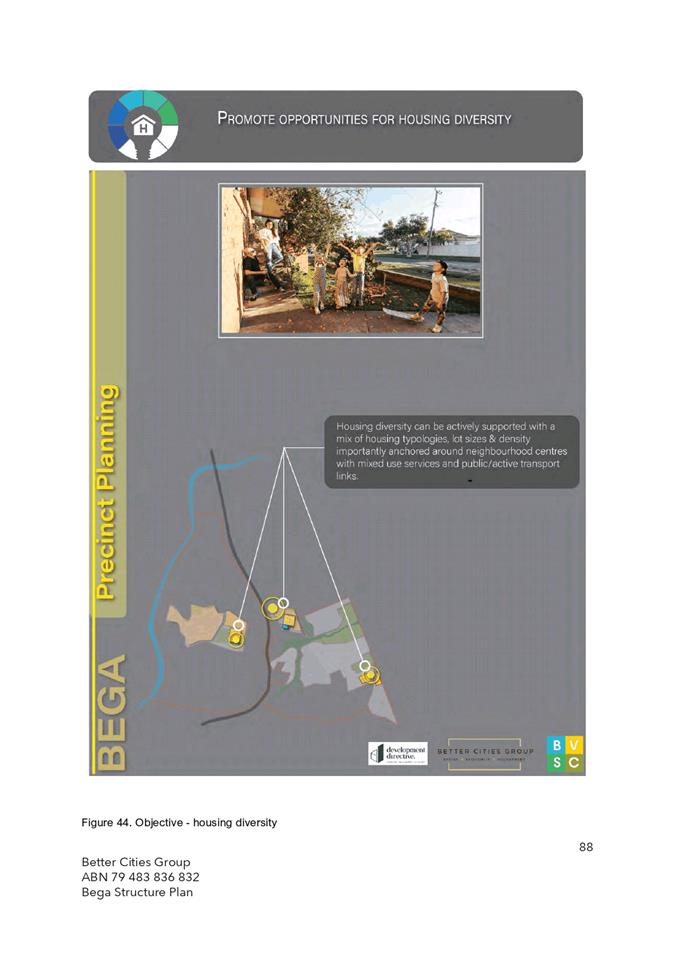
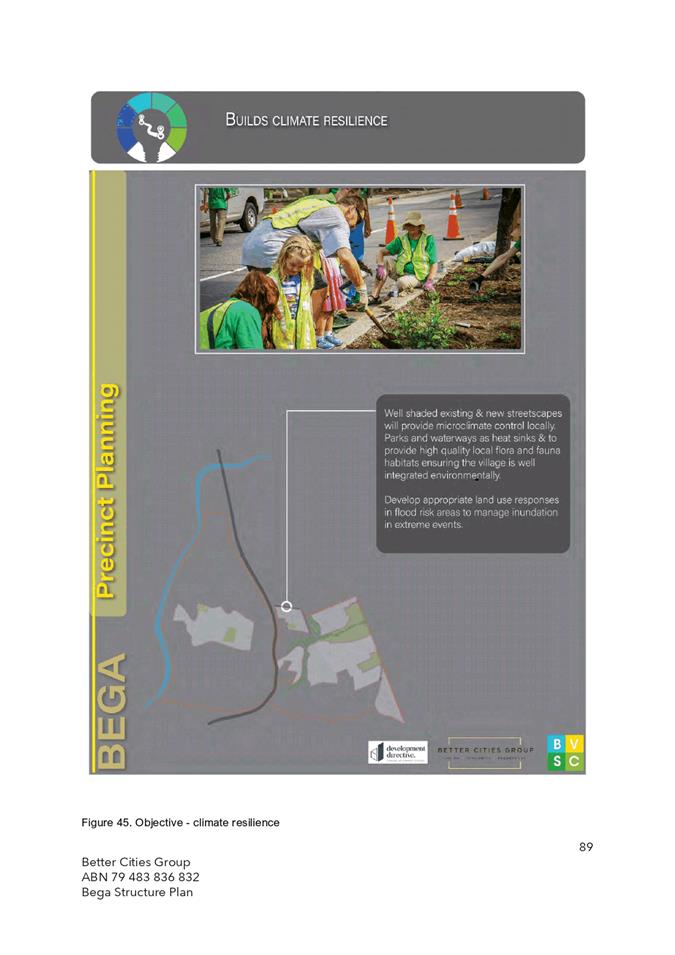
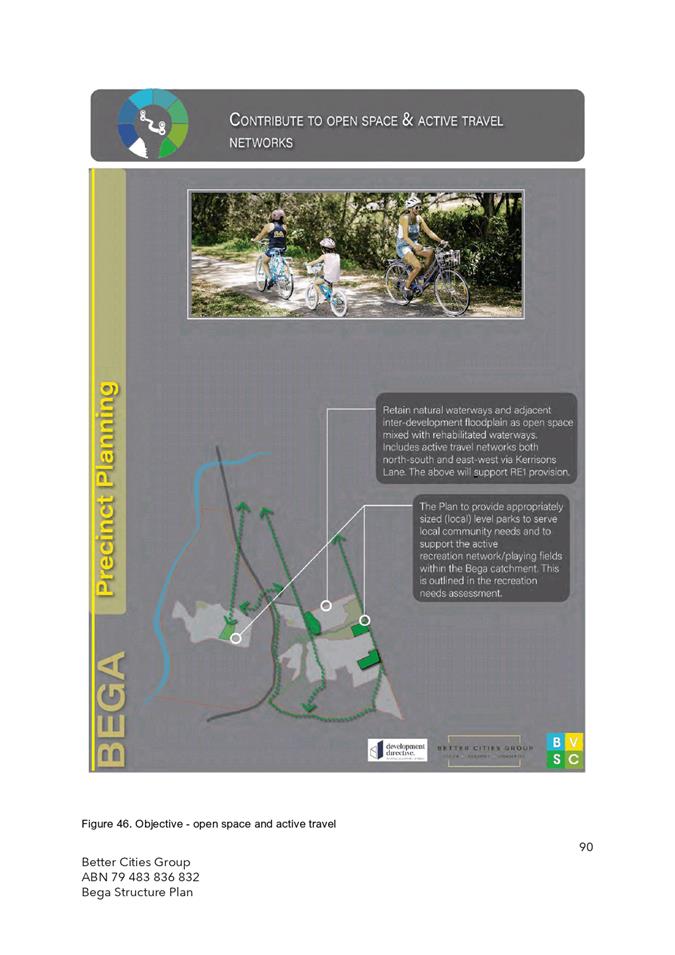
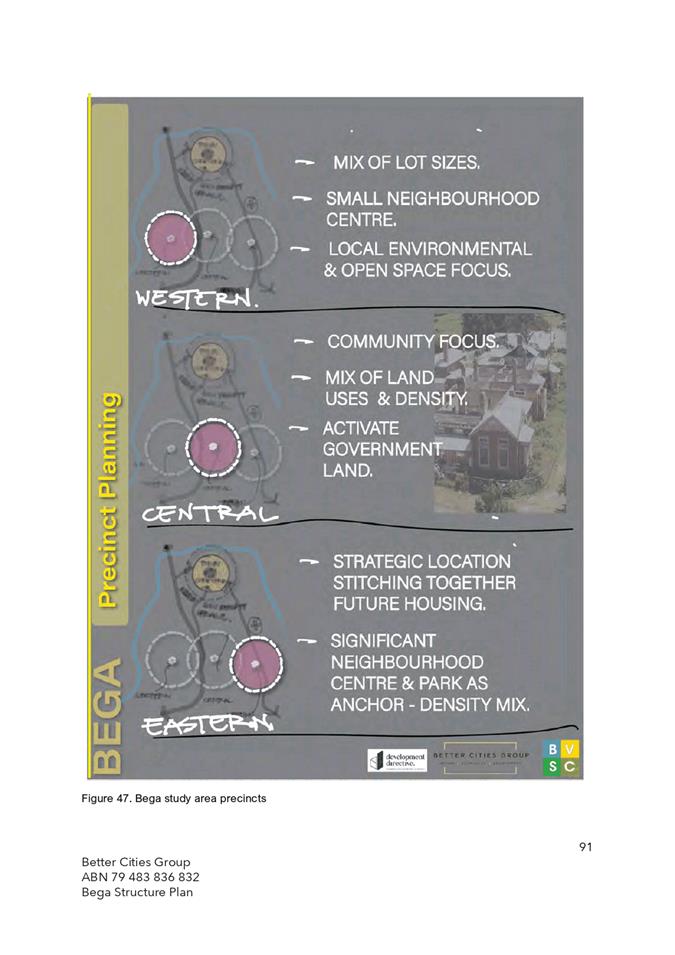

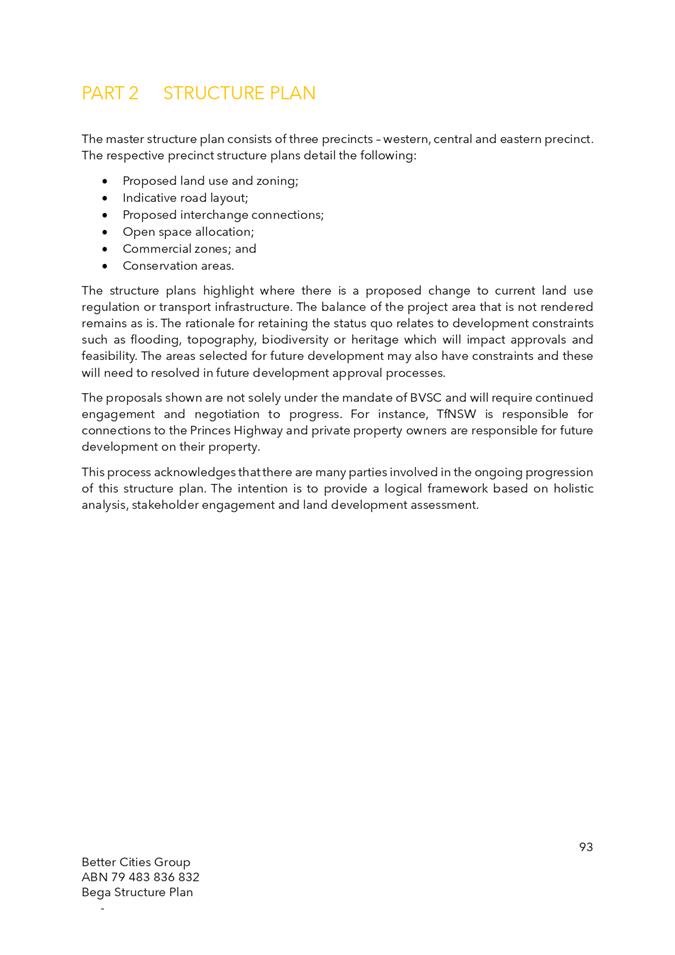
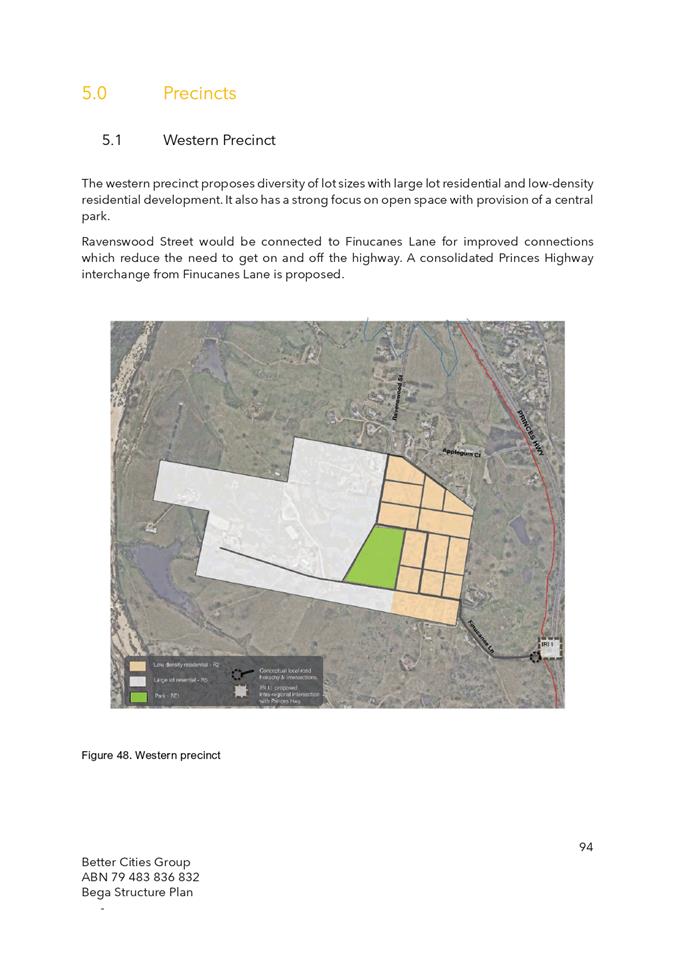
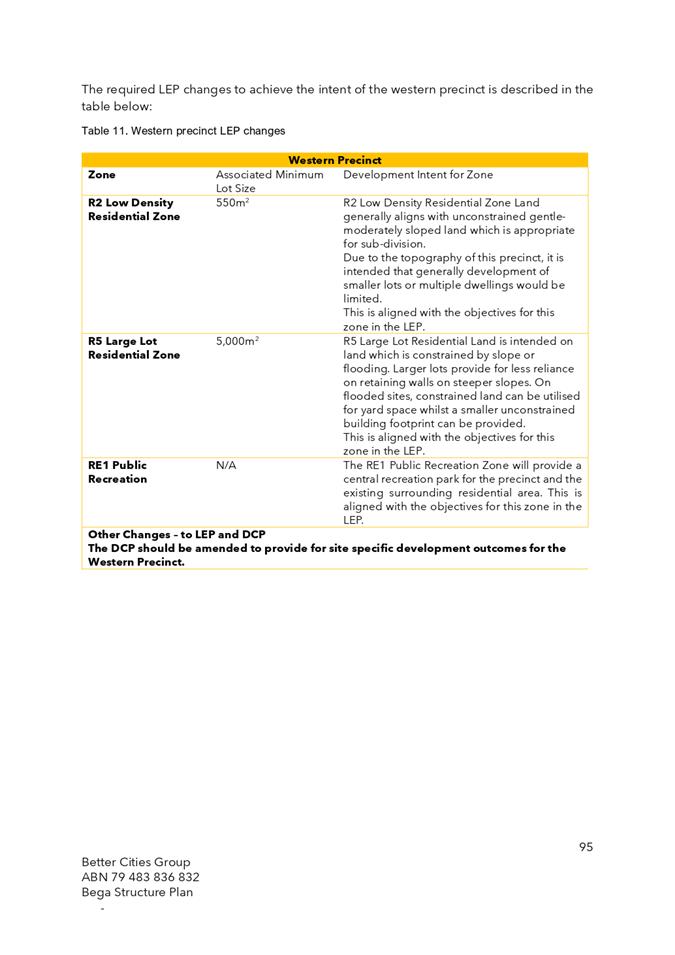
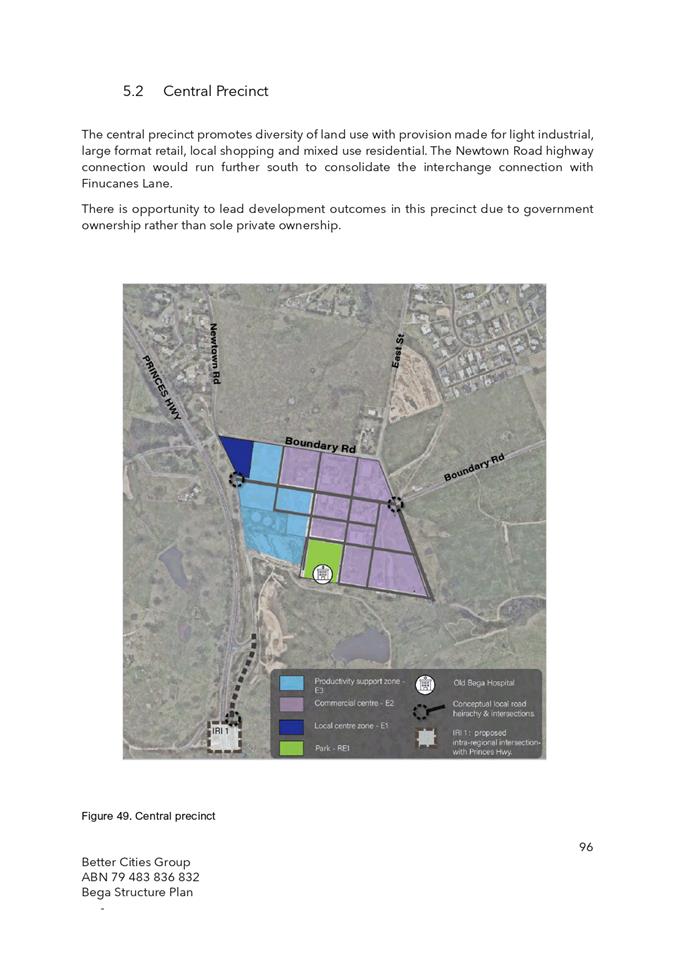
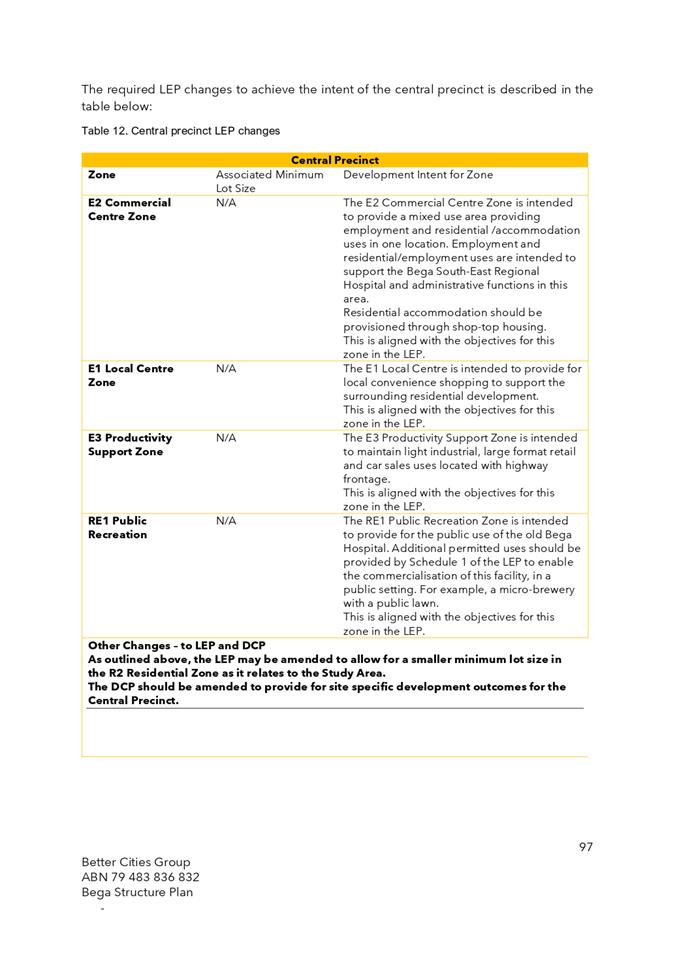
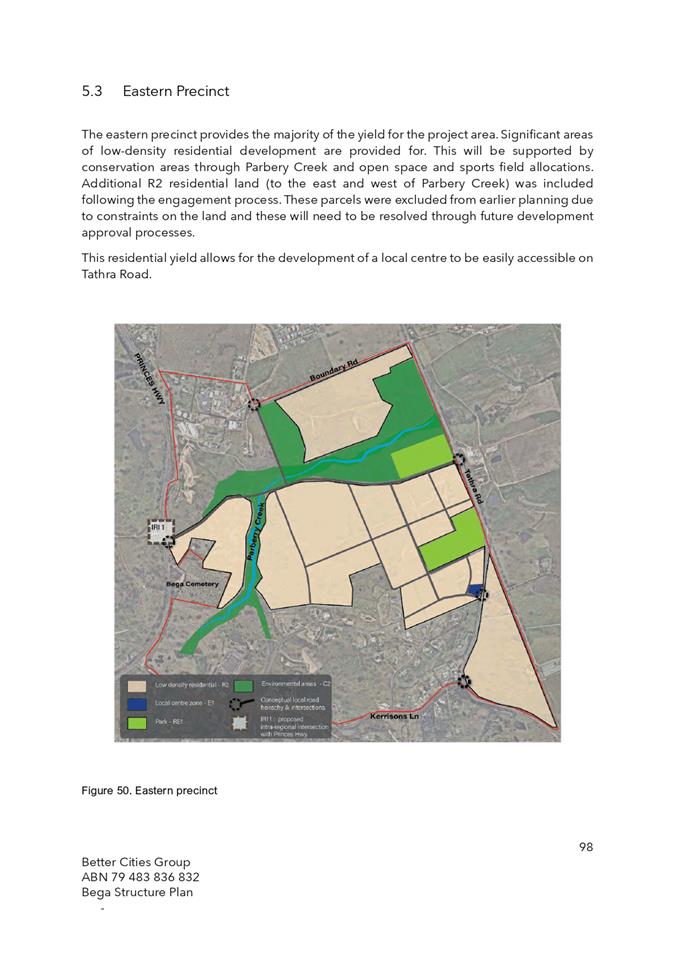
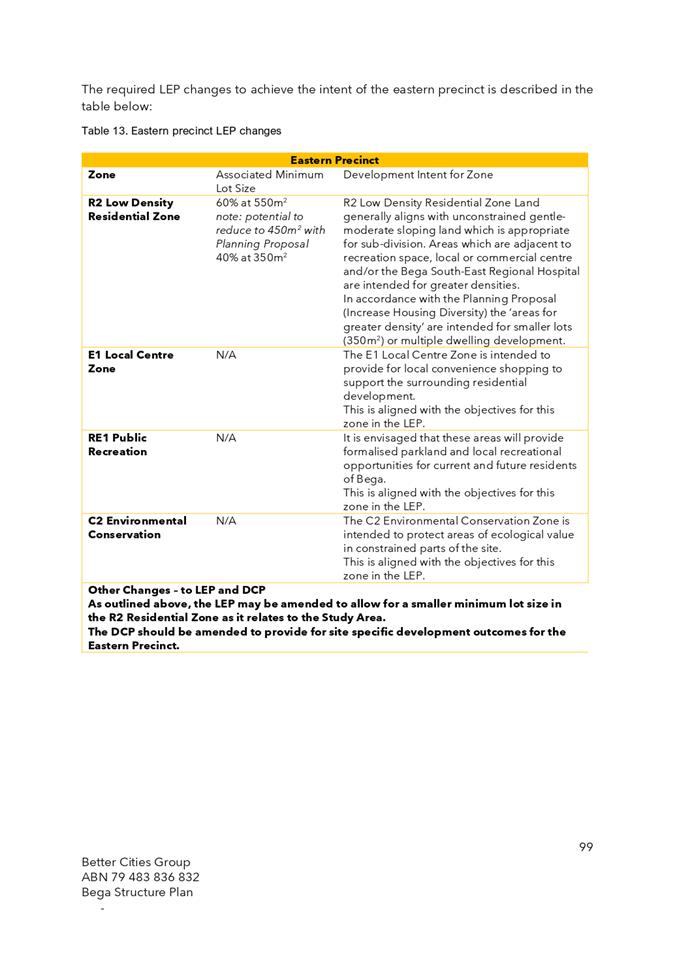
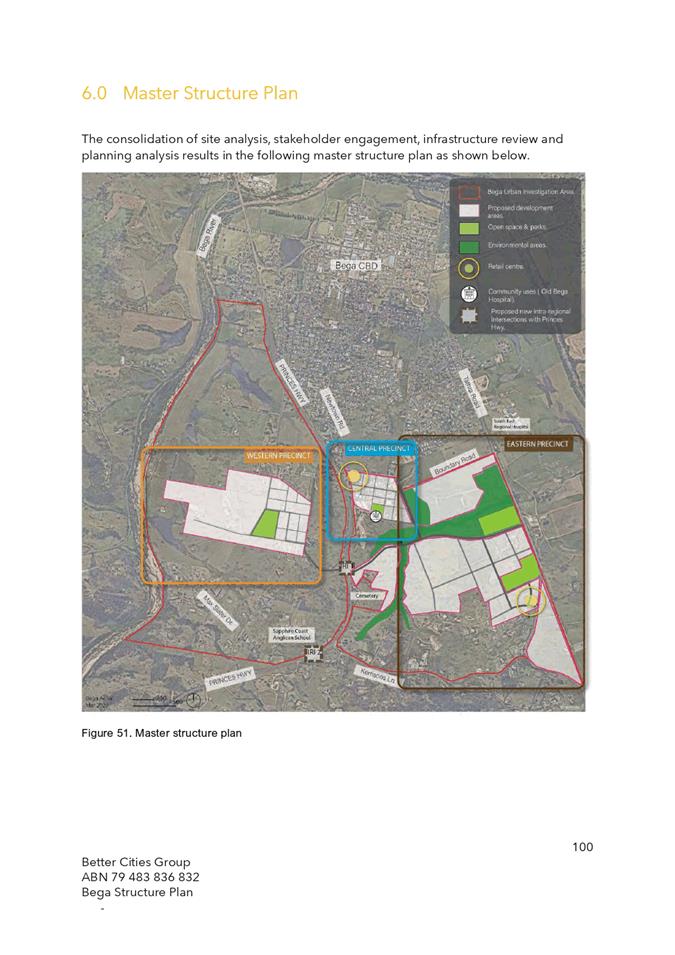
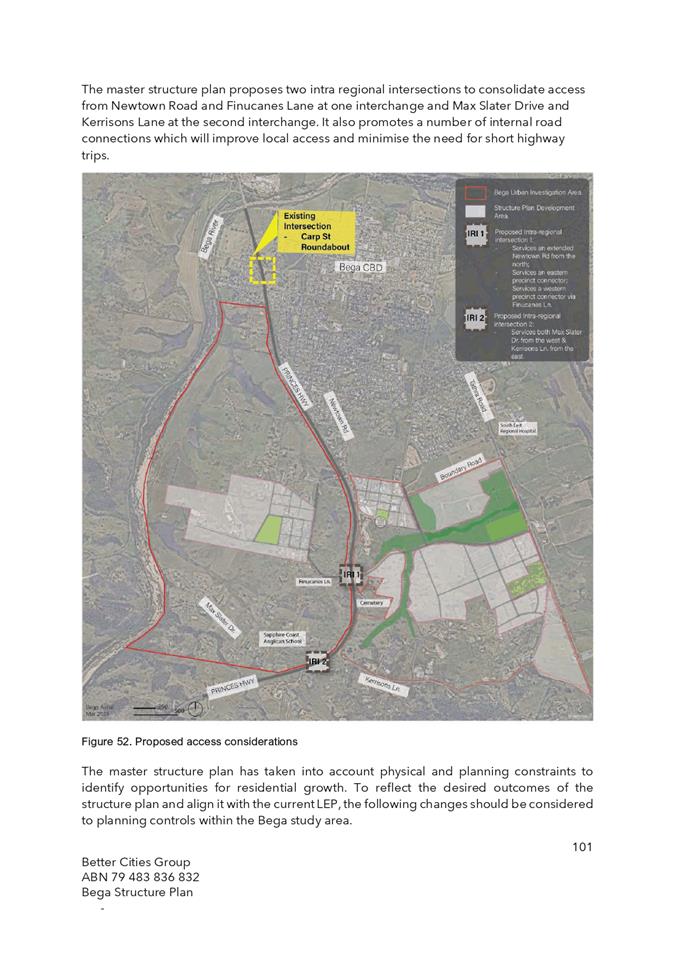

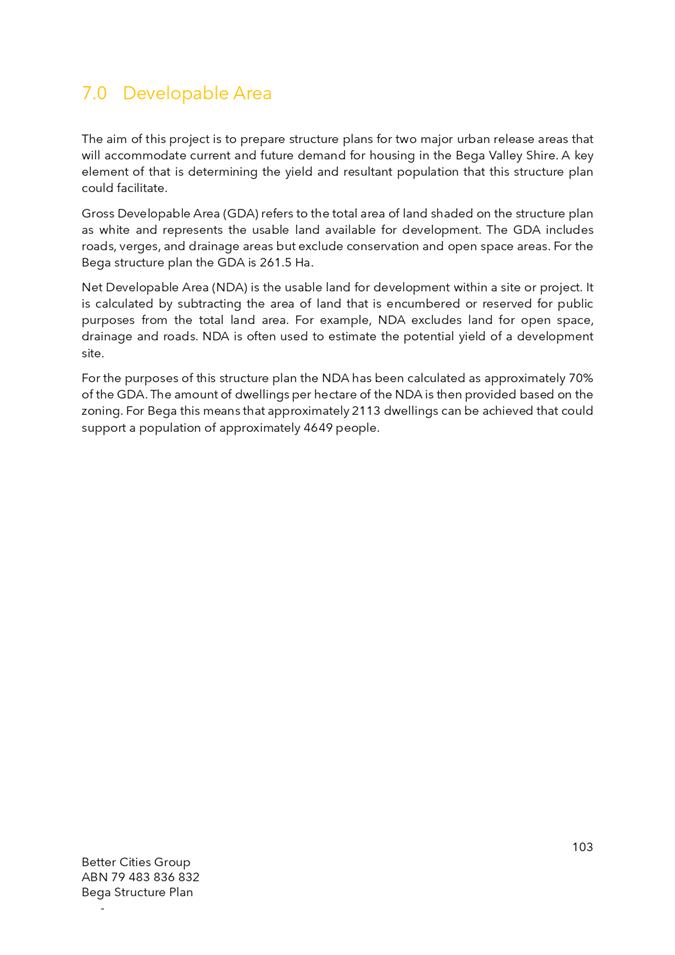
|
Council
|
12 June 2024
|
|
Item 8.2
- Attachment 2
|
Wolumla Structure Plan
|
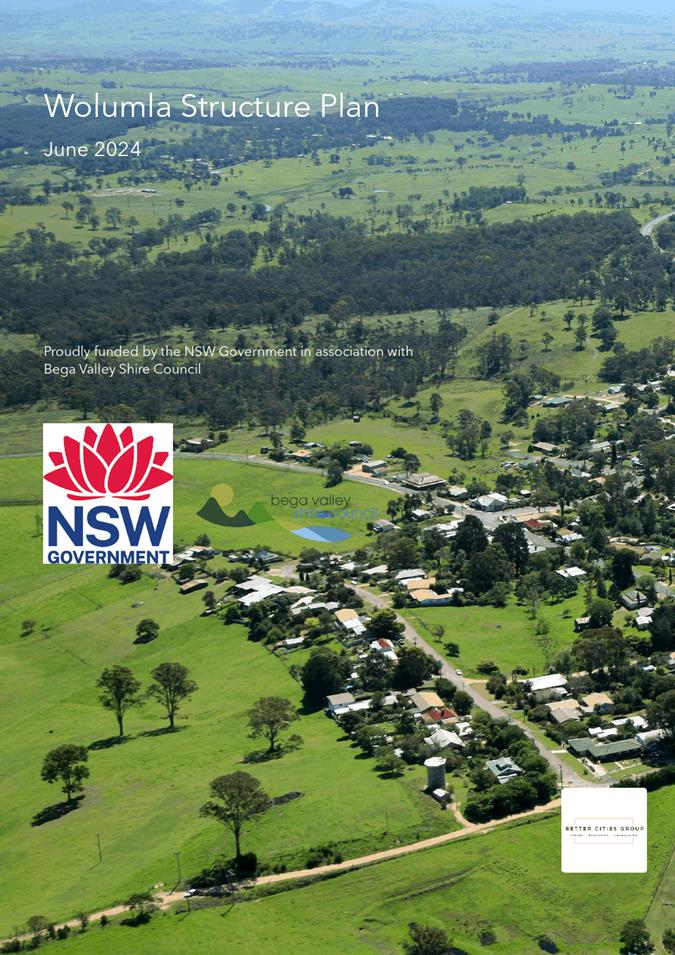
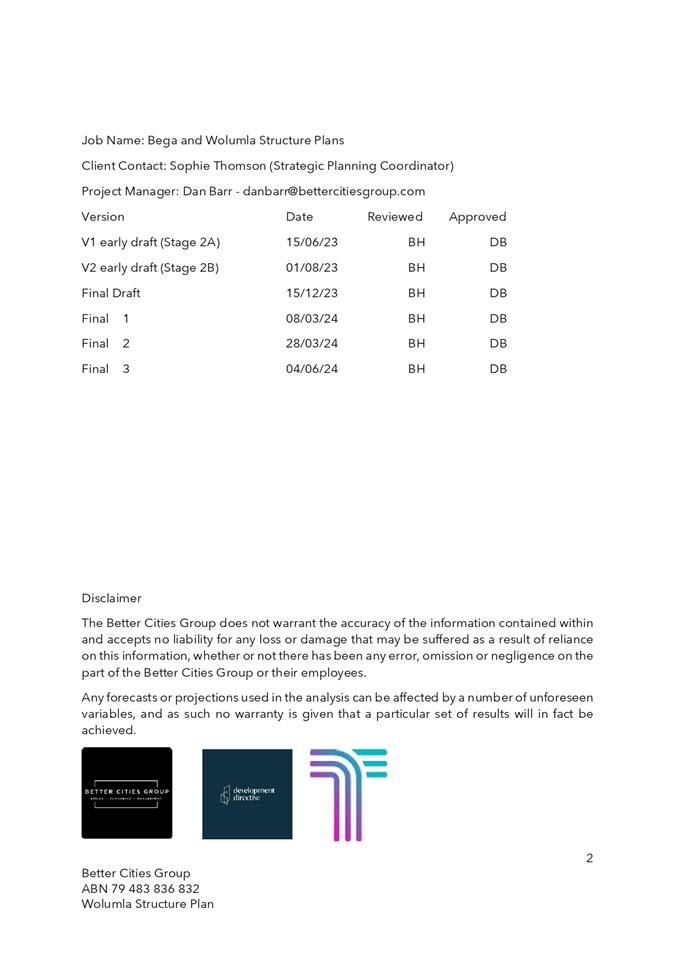
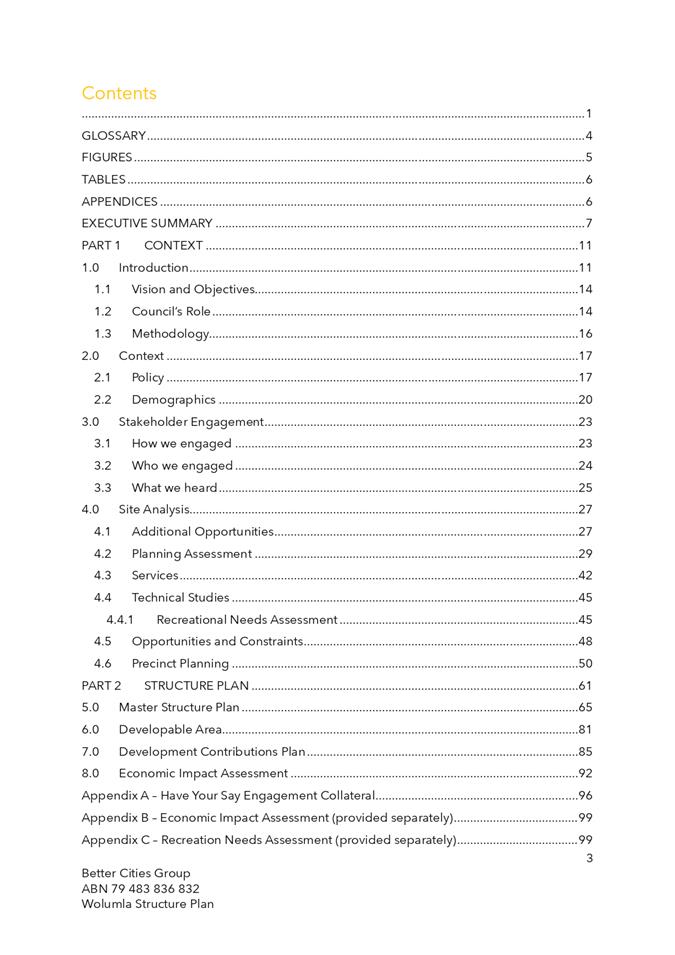
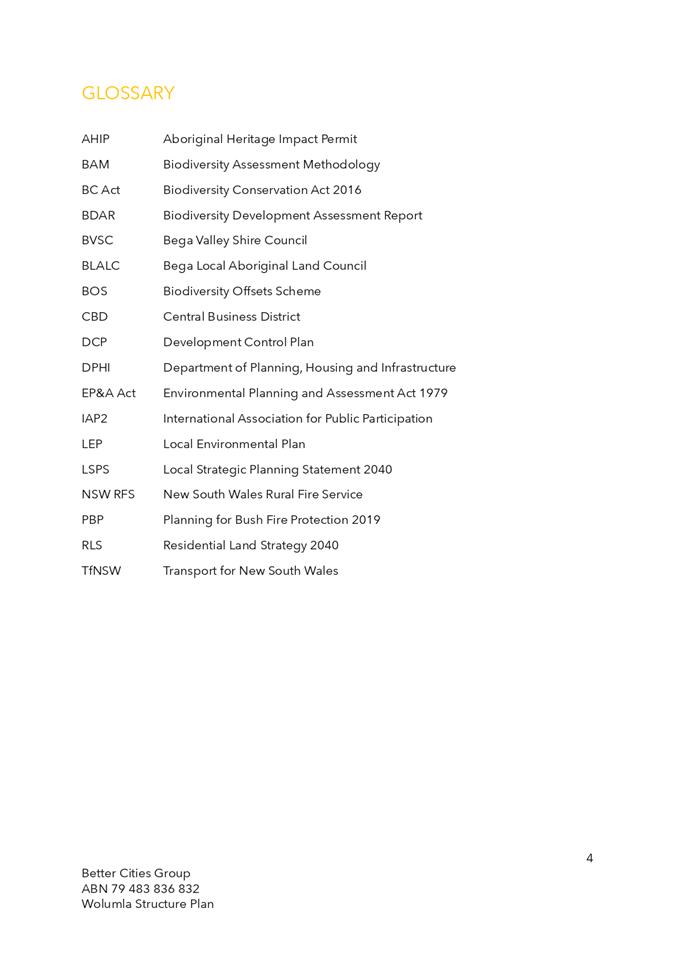
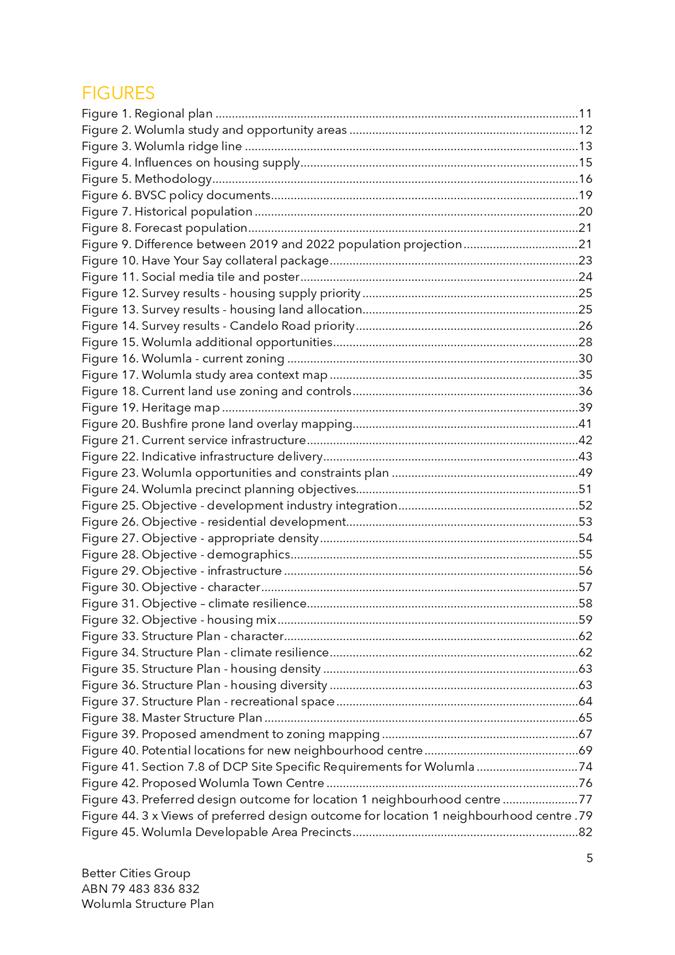
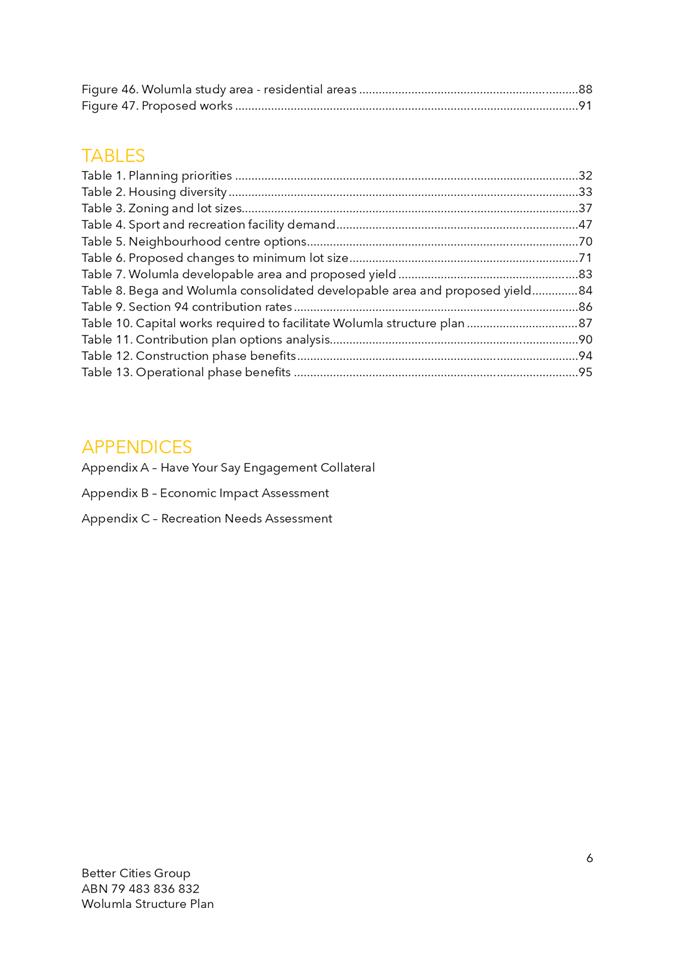
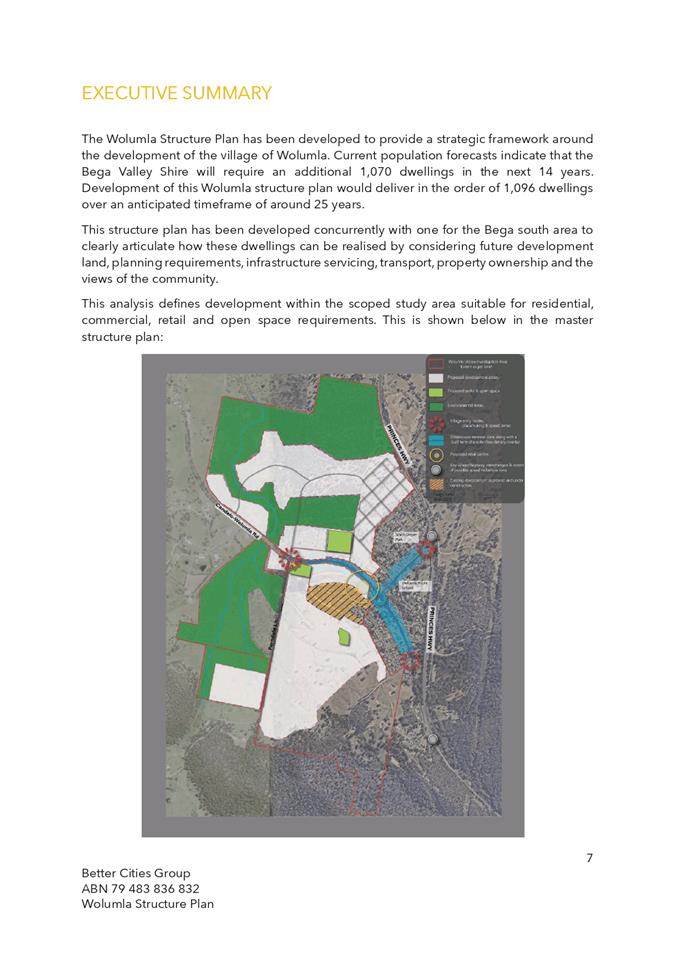
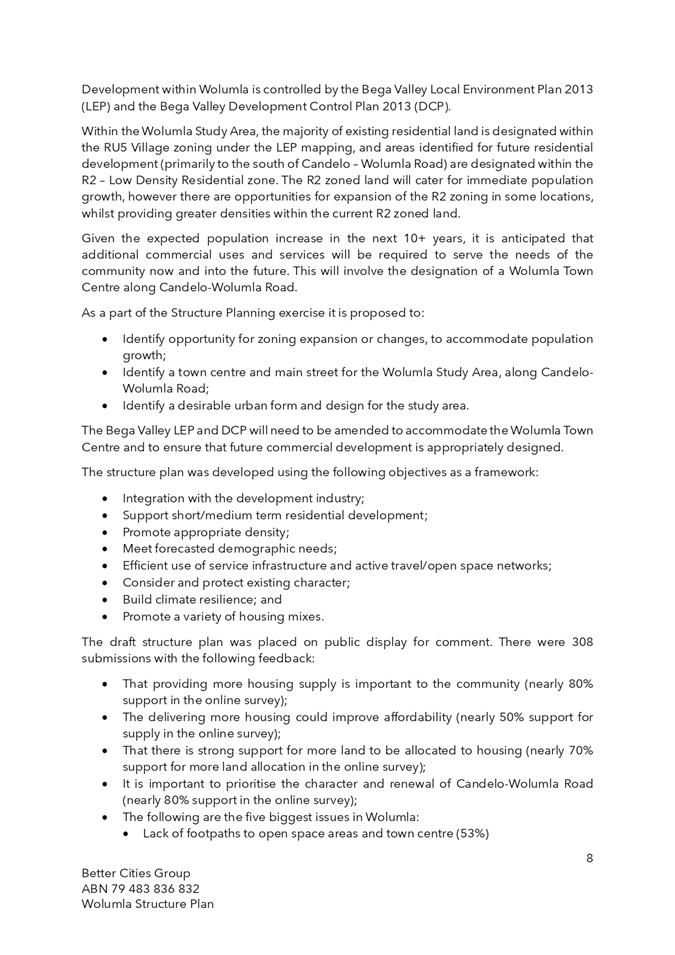
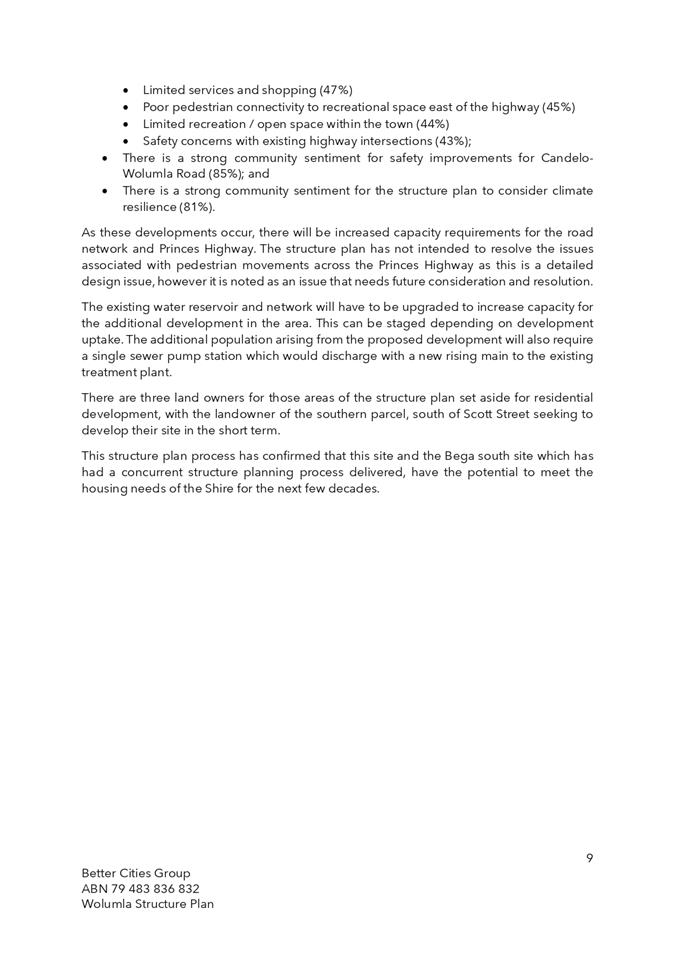

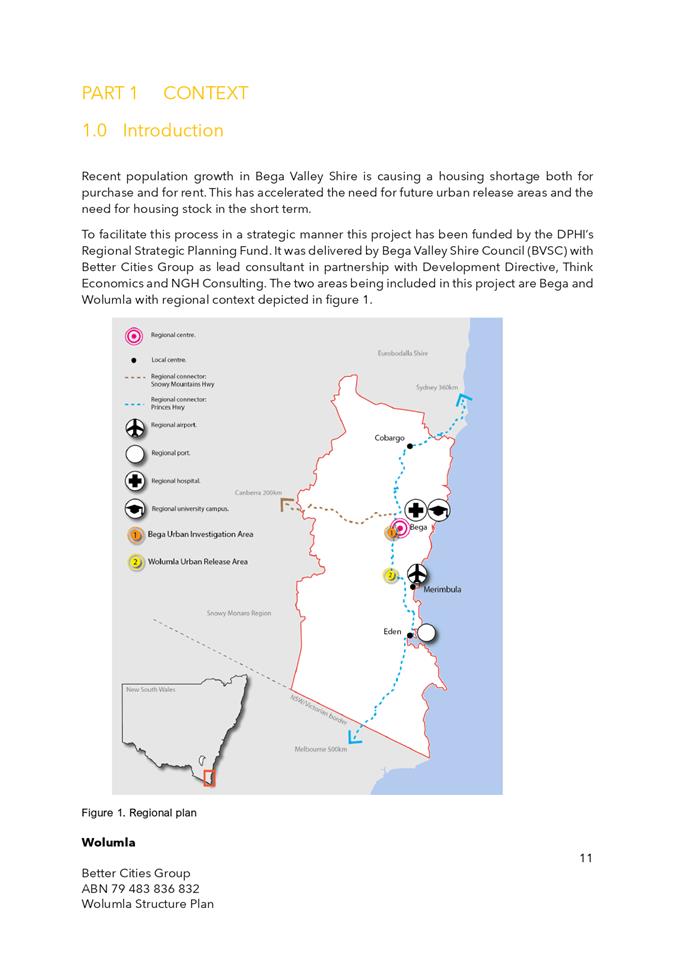
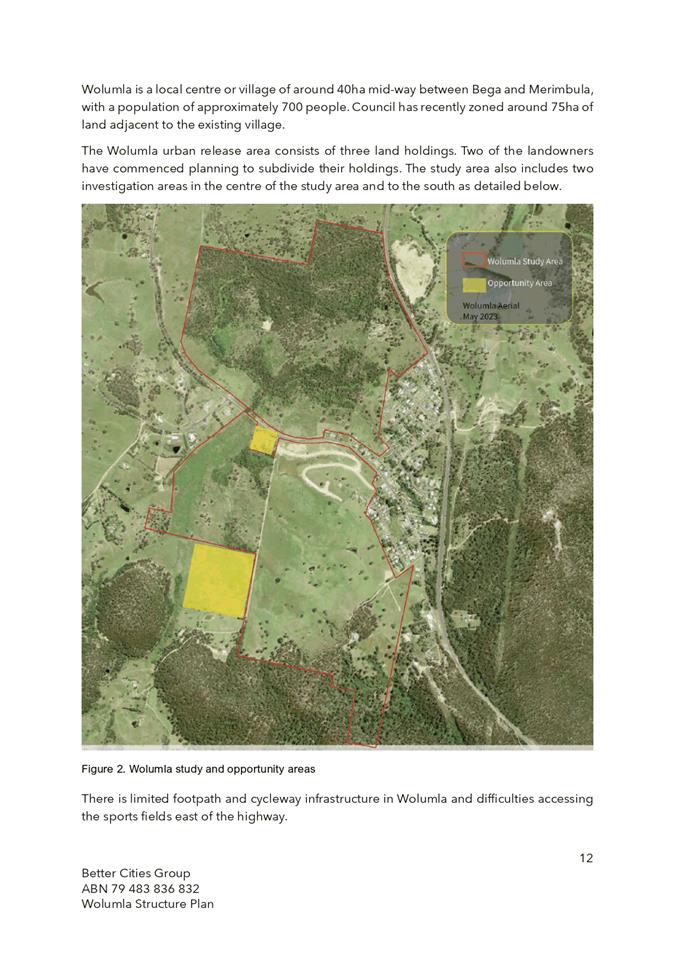
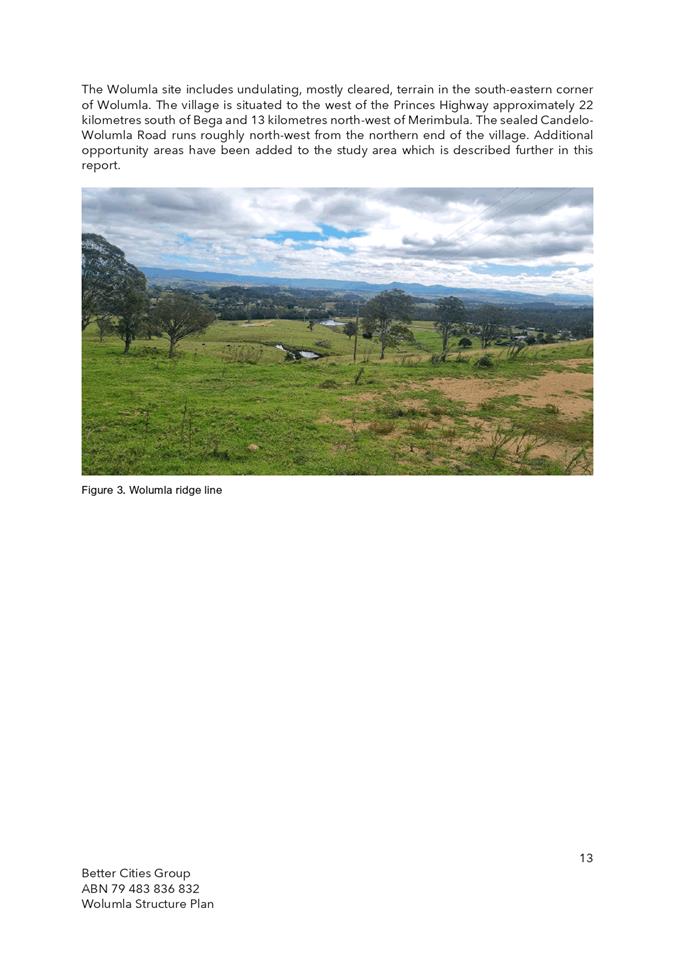
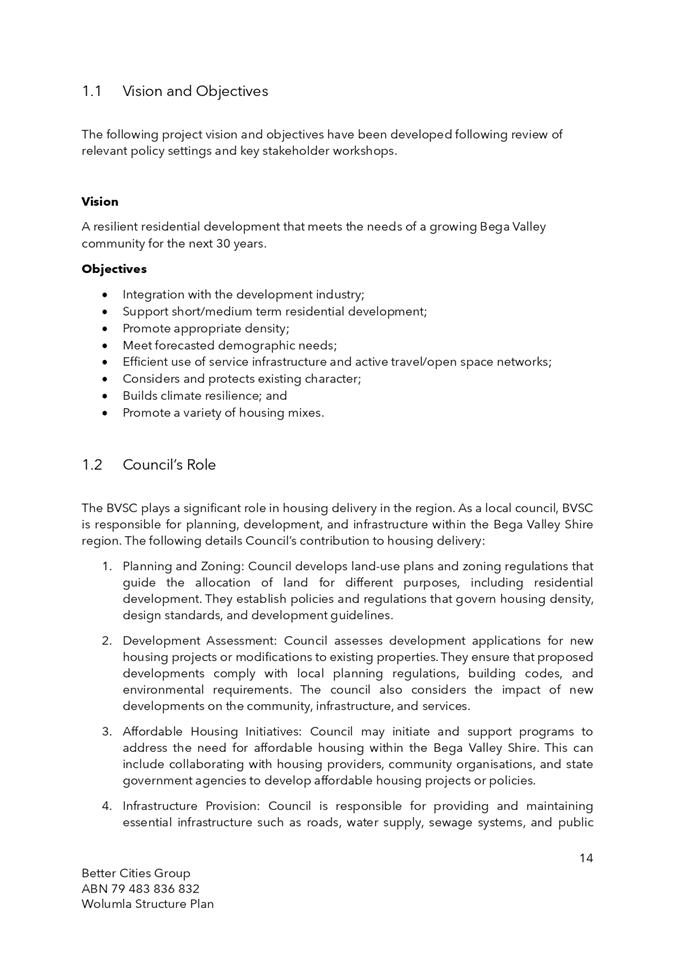
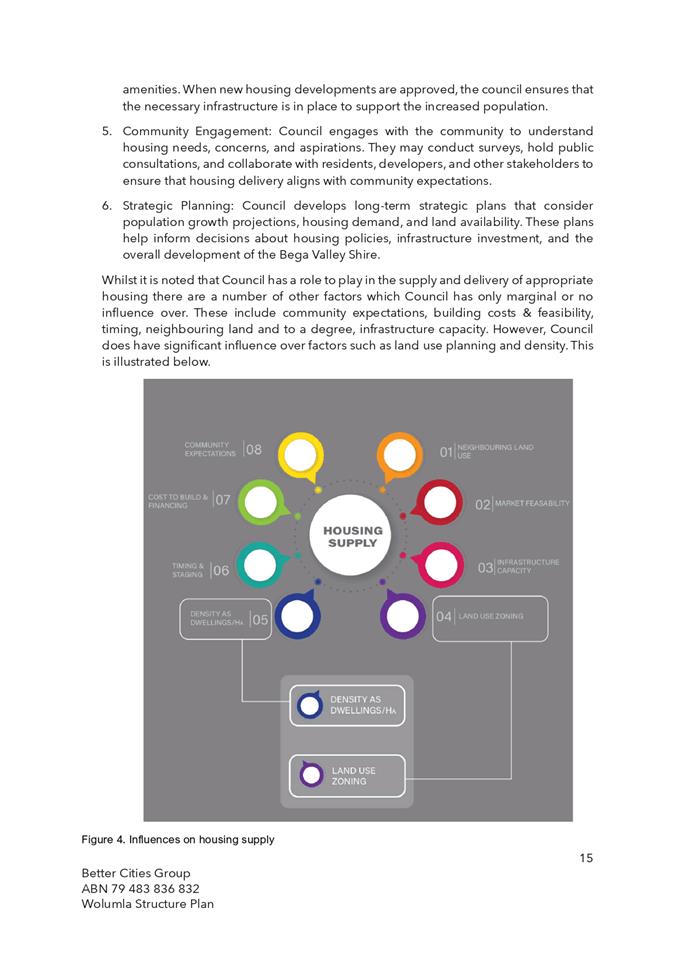
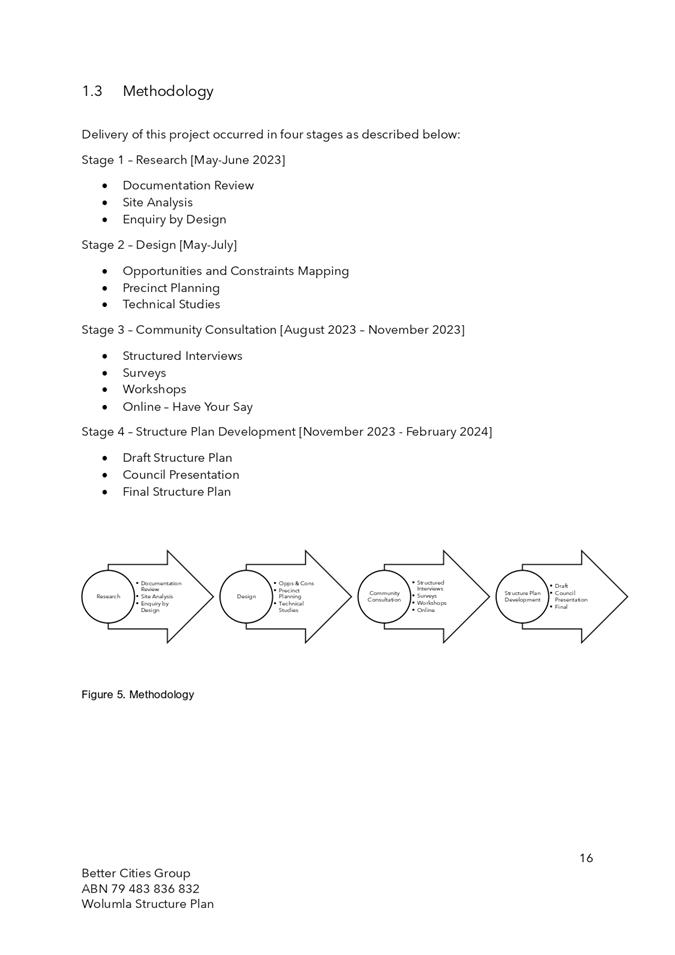
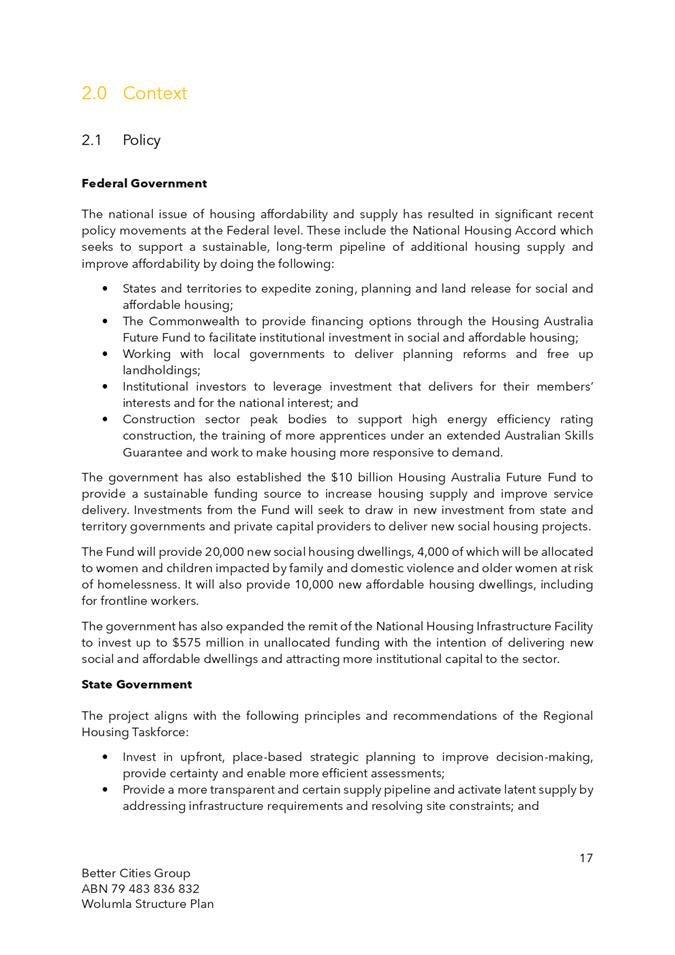
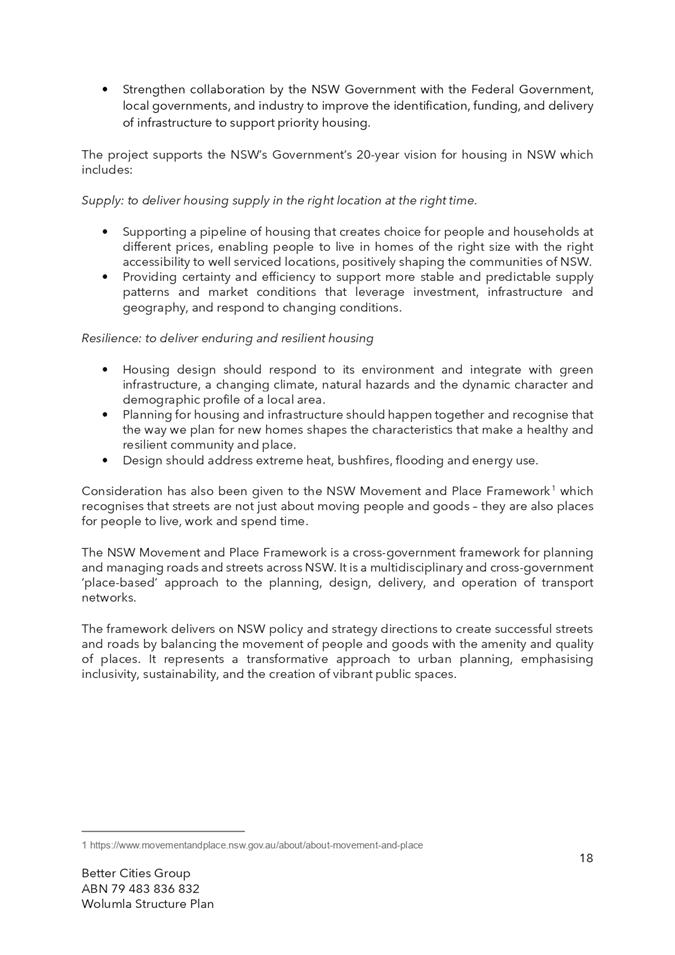
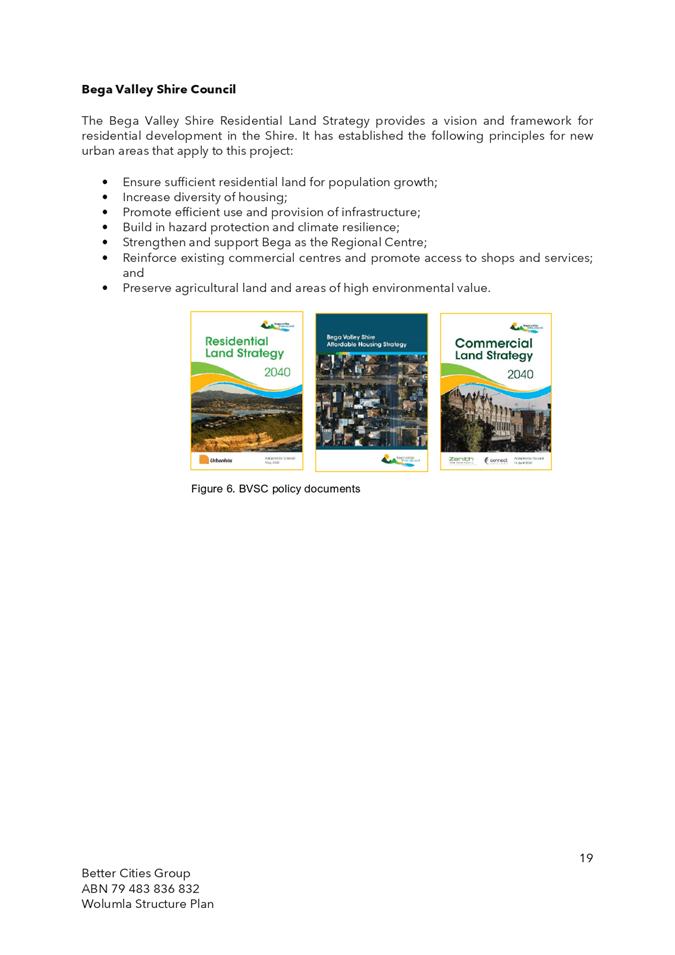
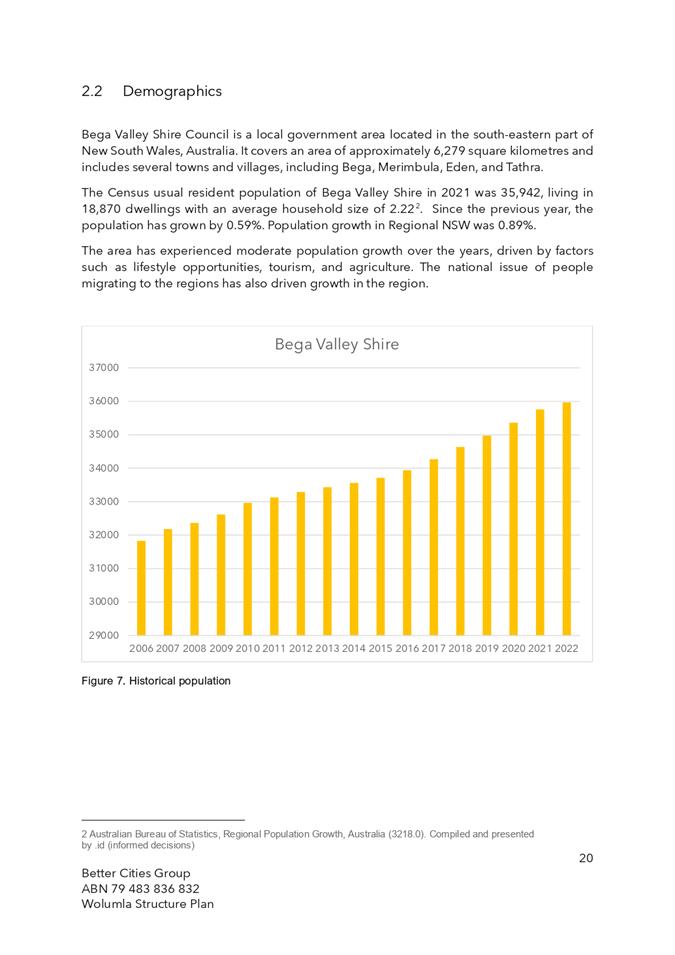
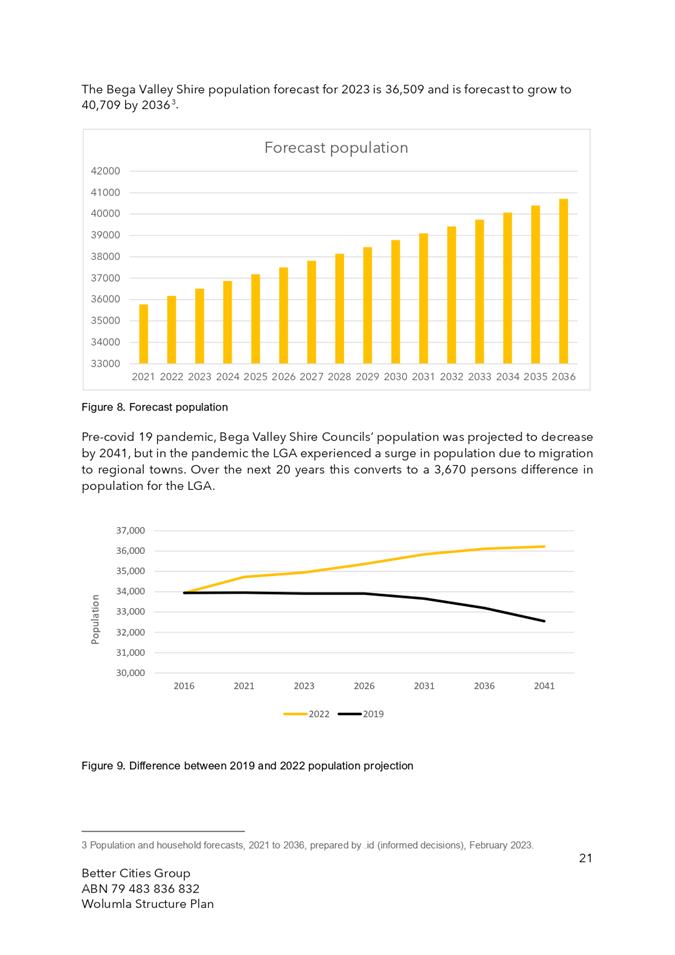
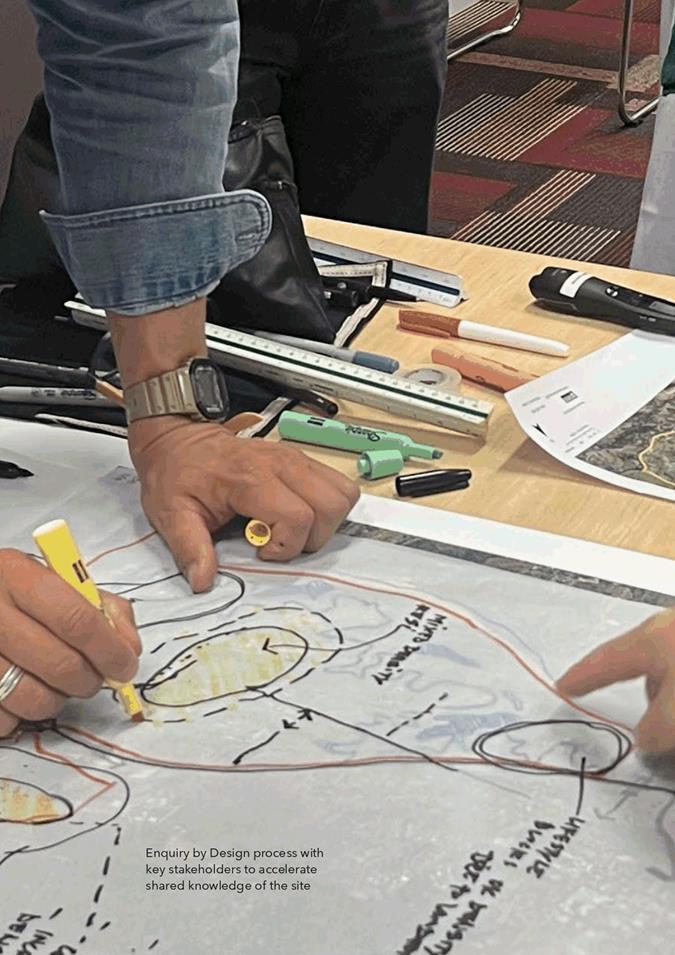
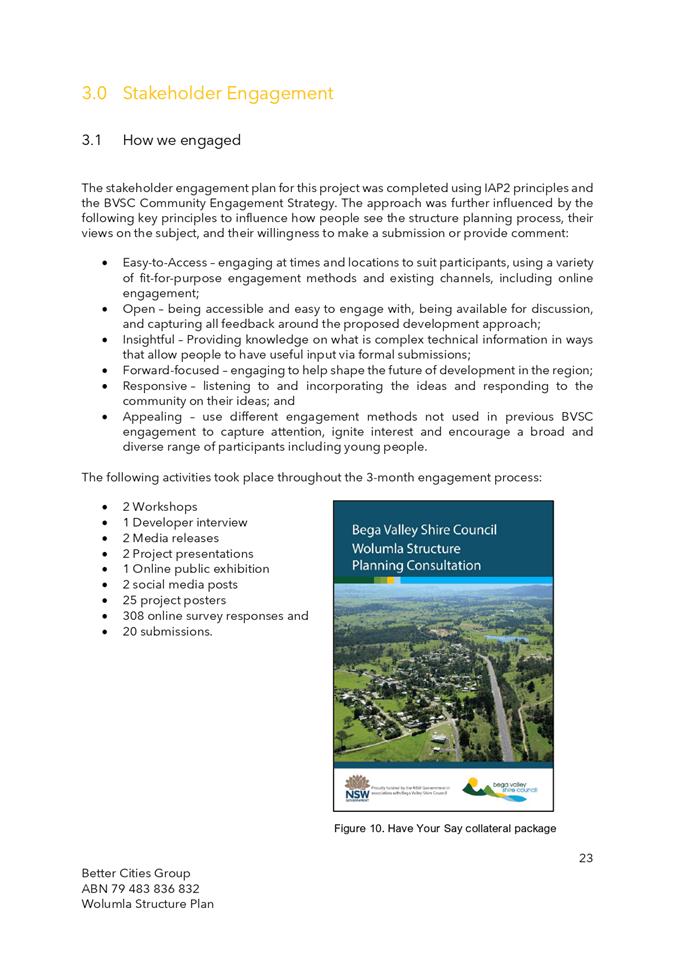
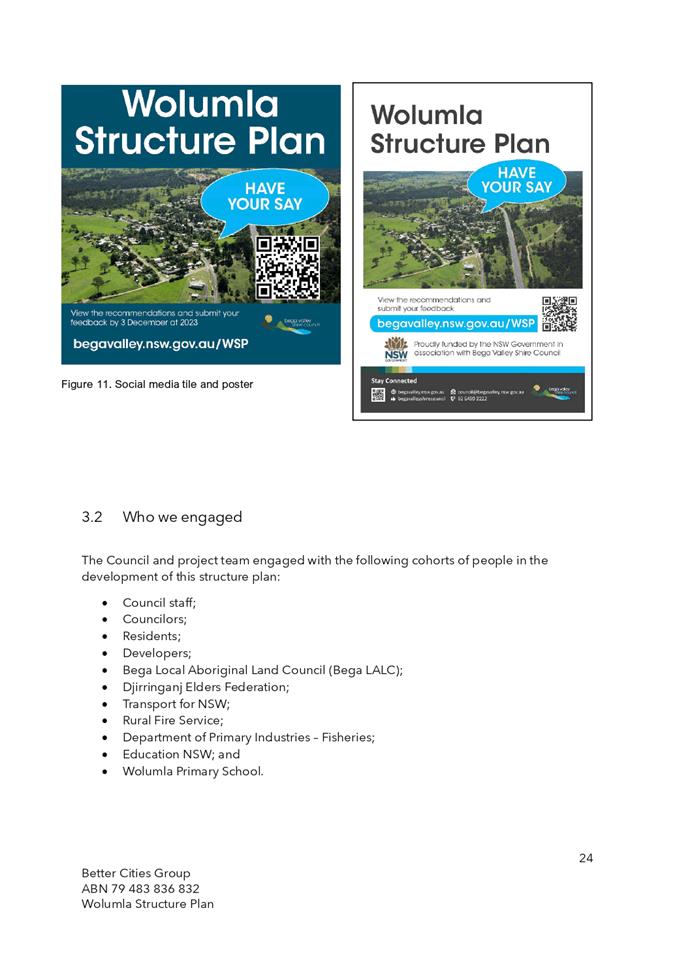
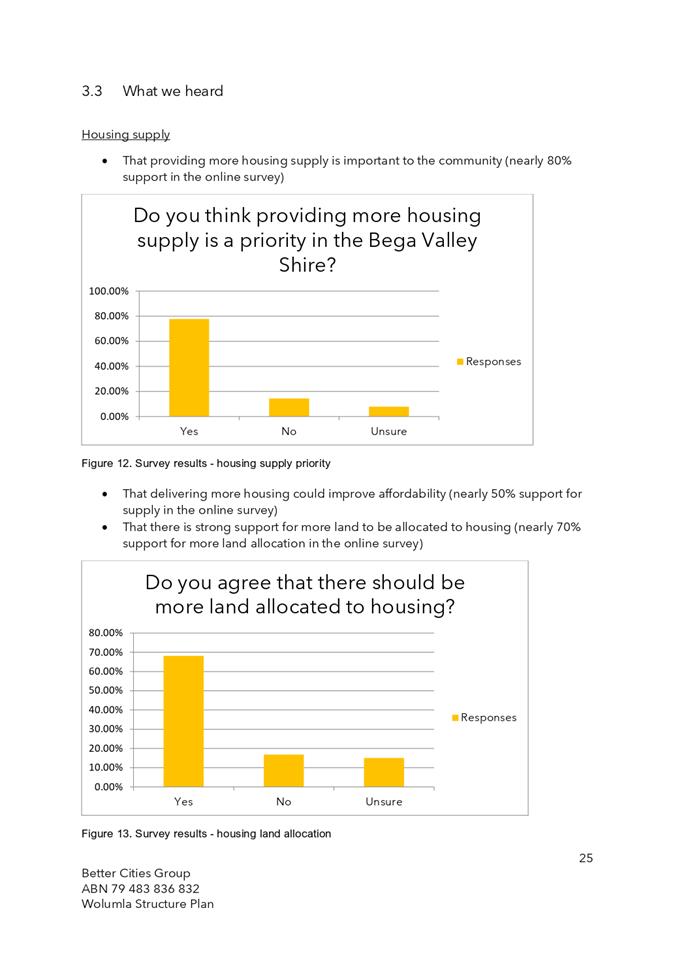
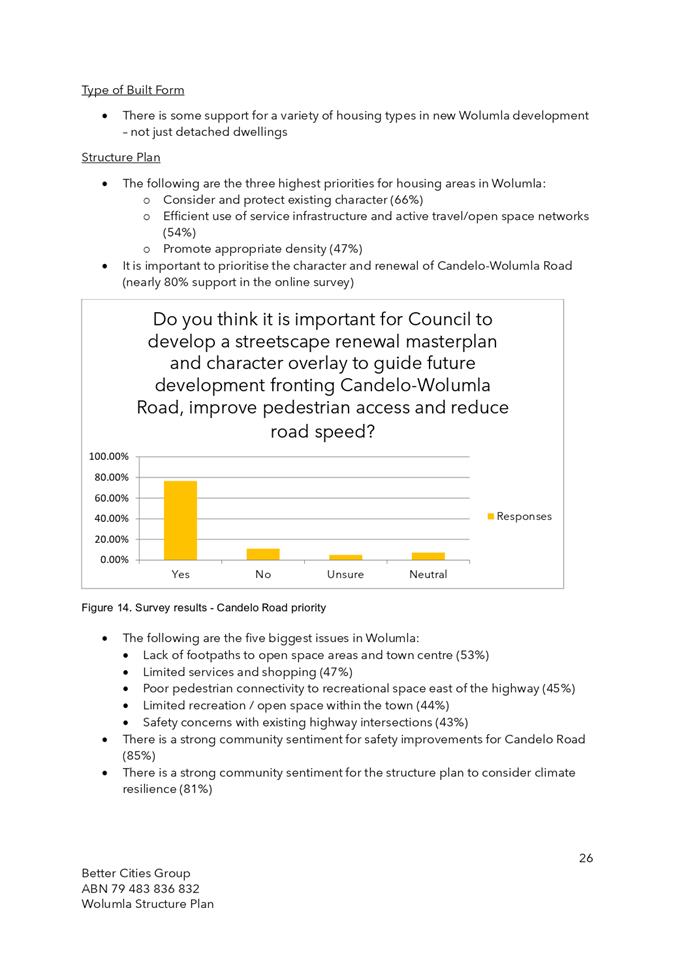
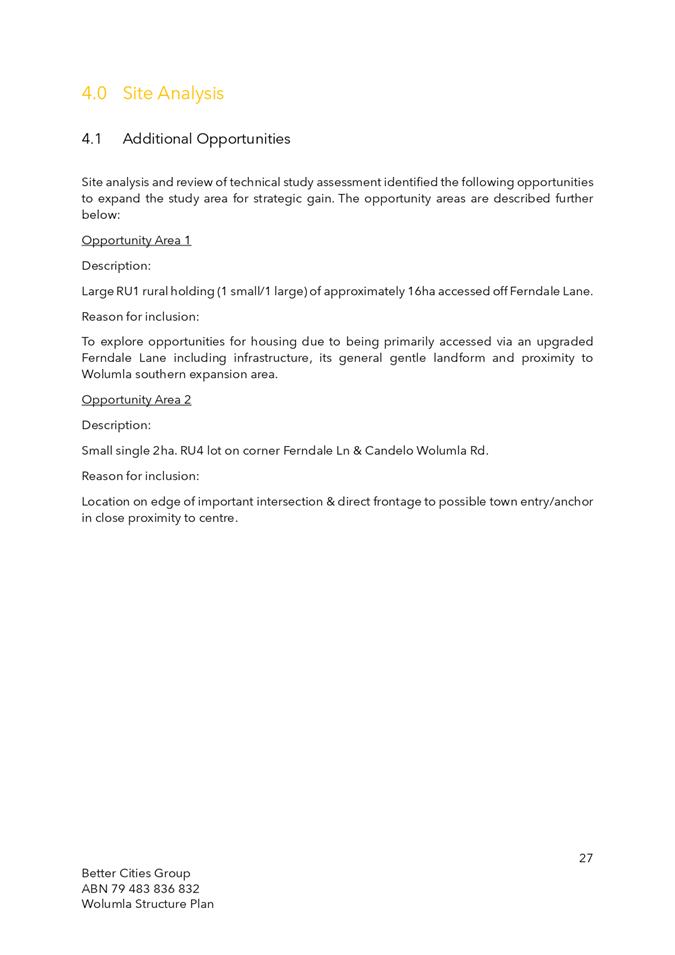
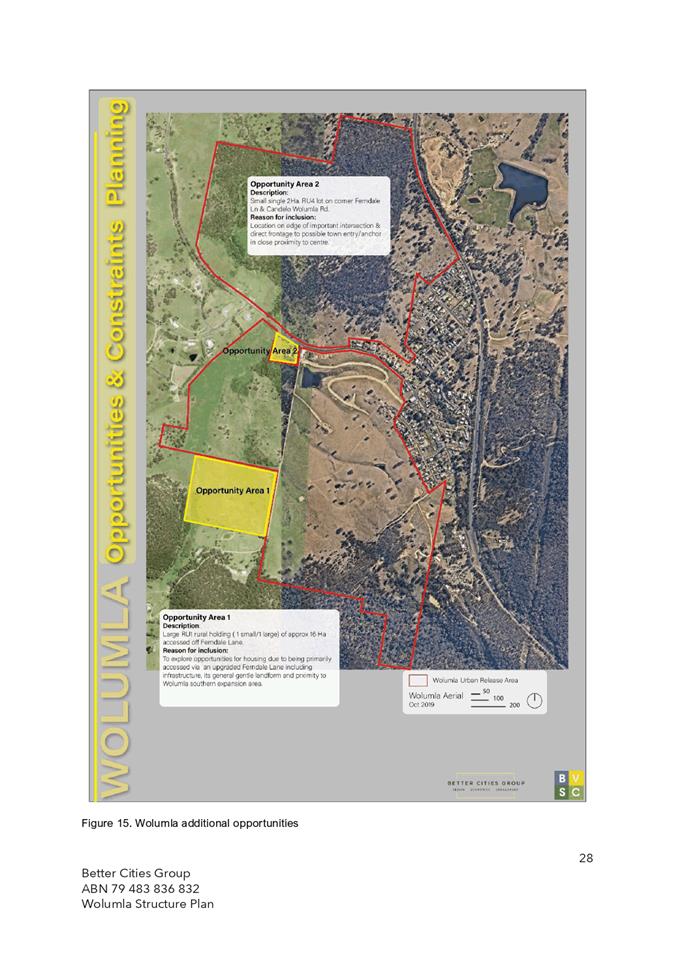
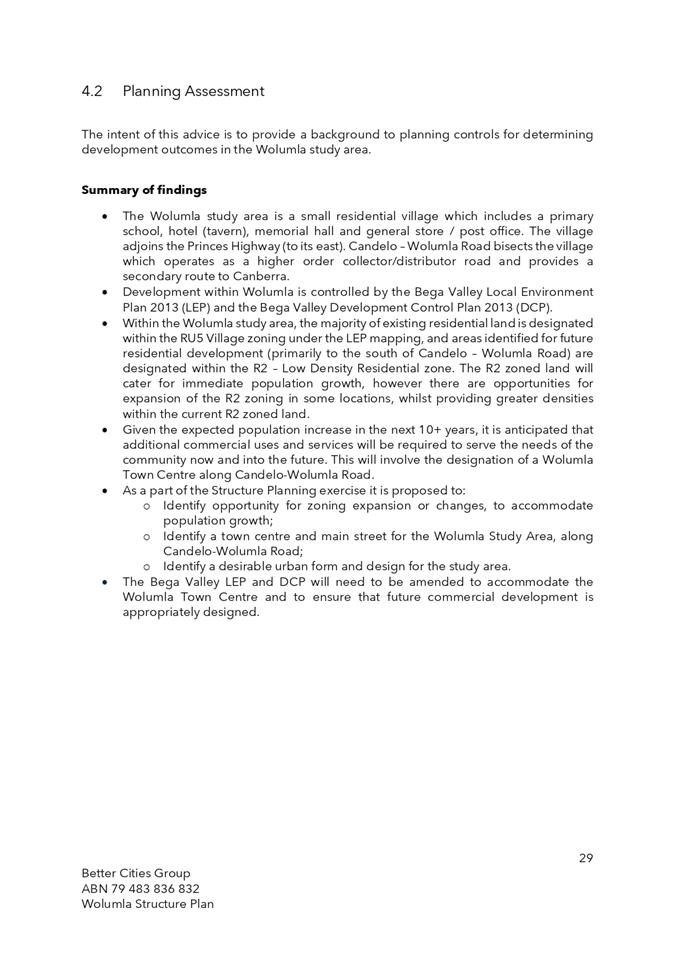
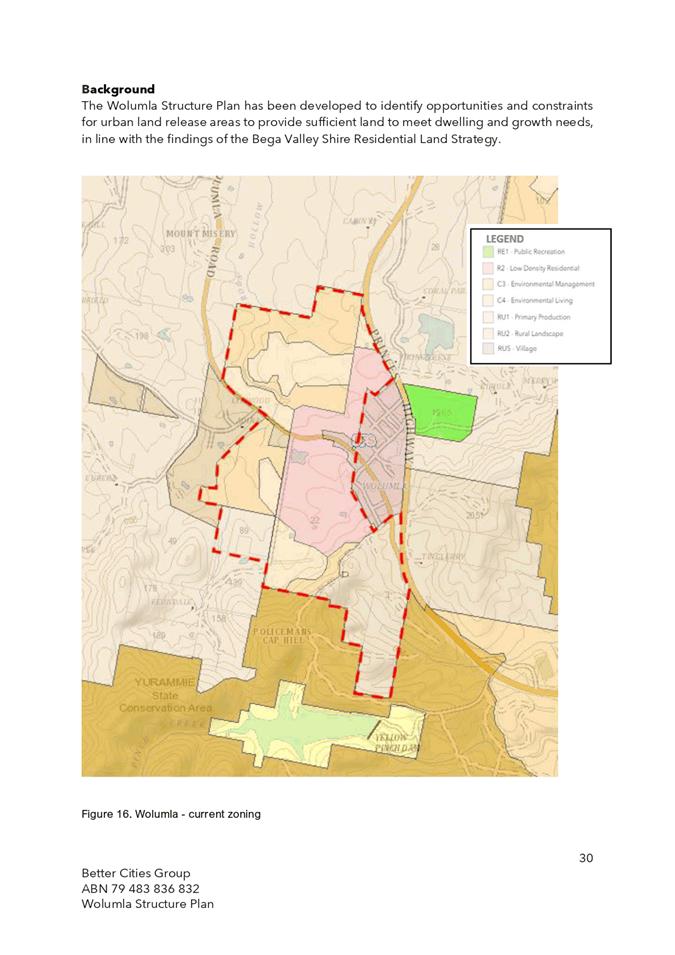

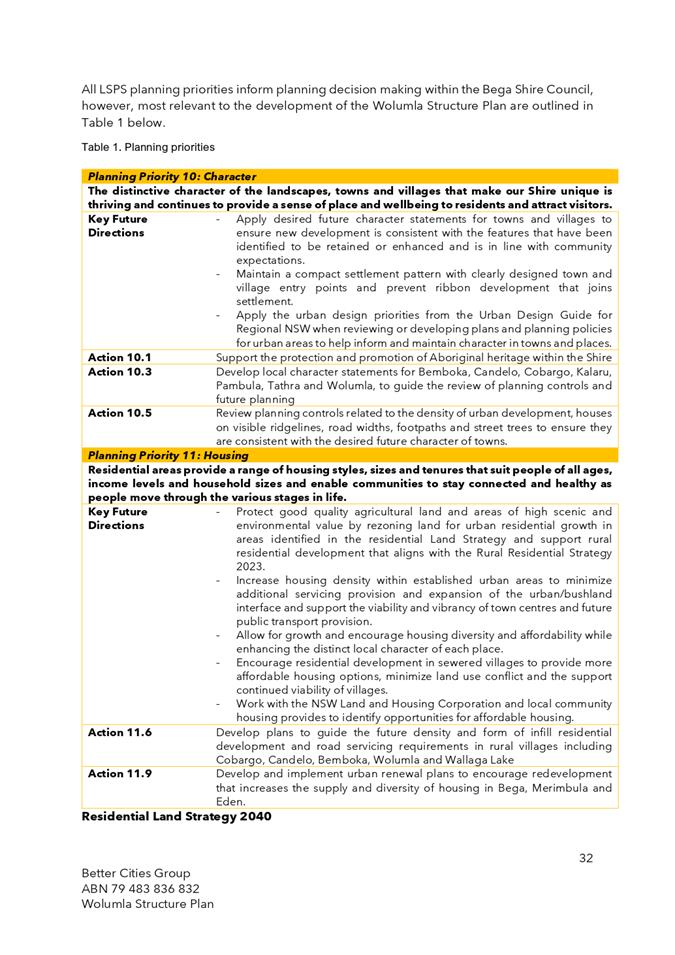
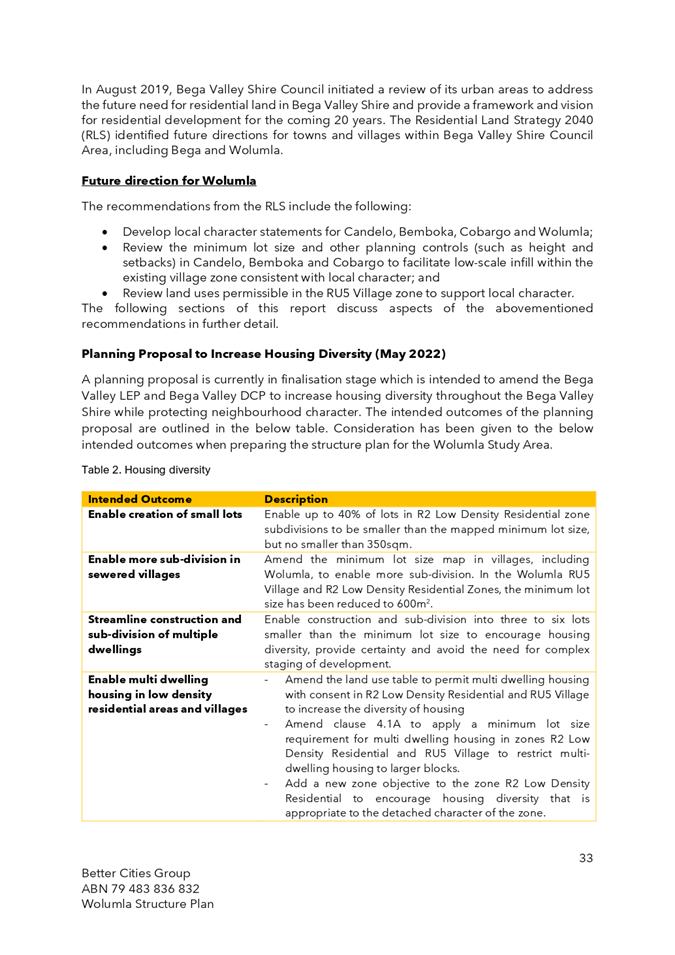
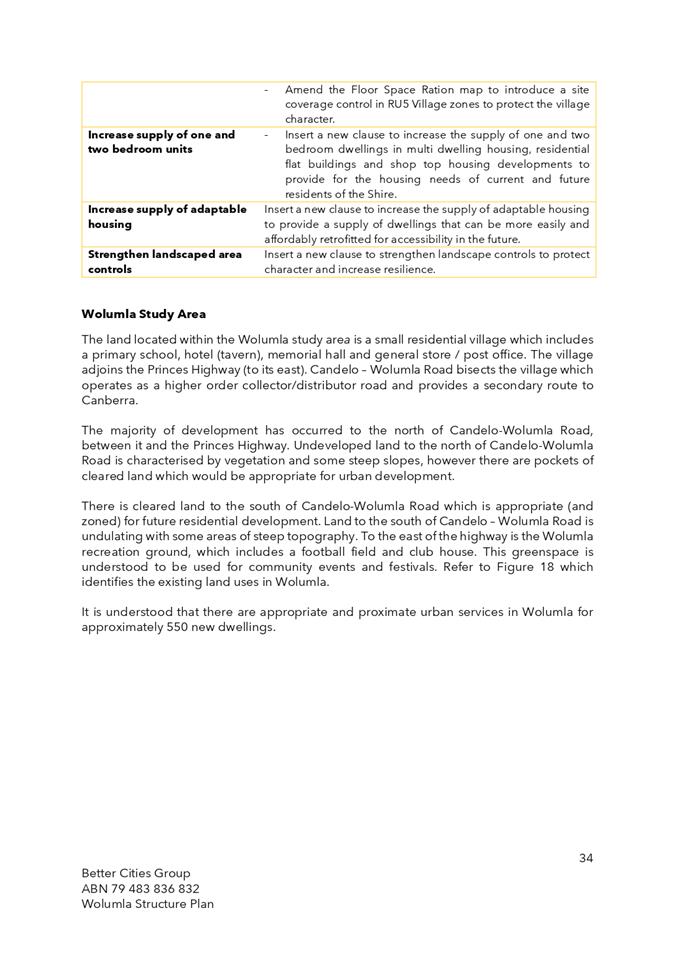

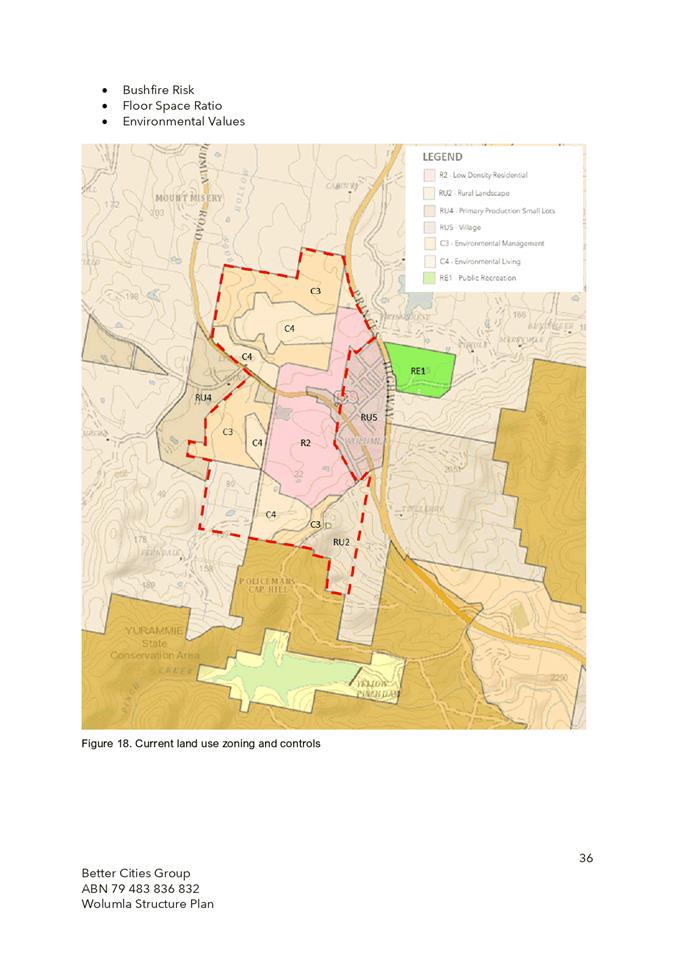
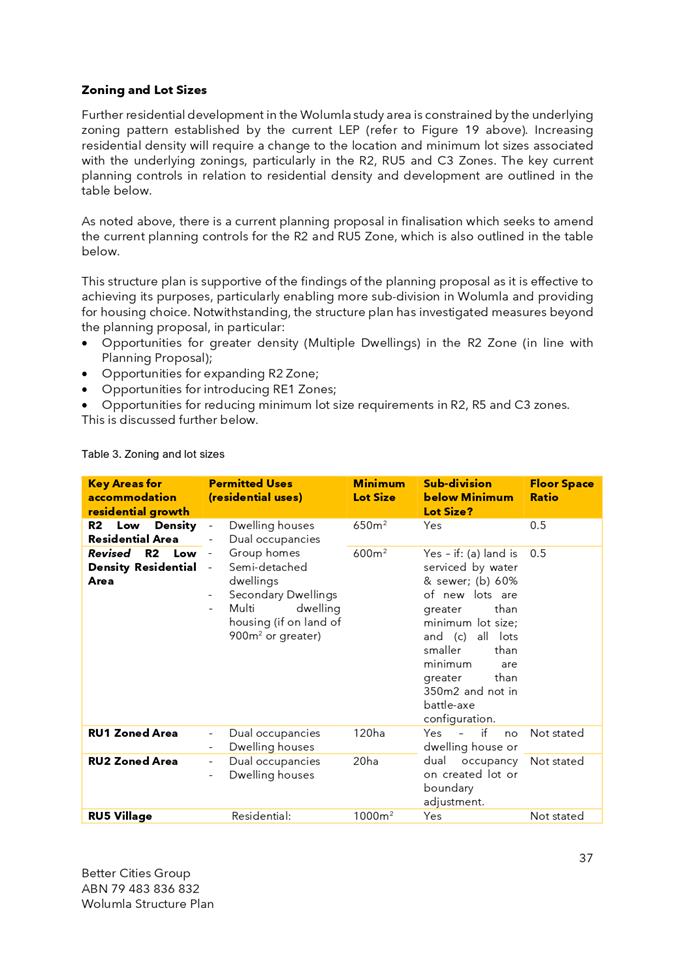
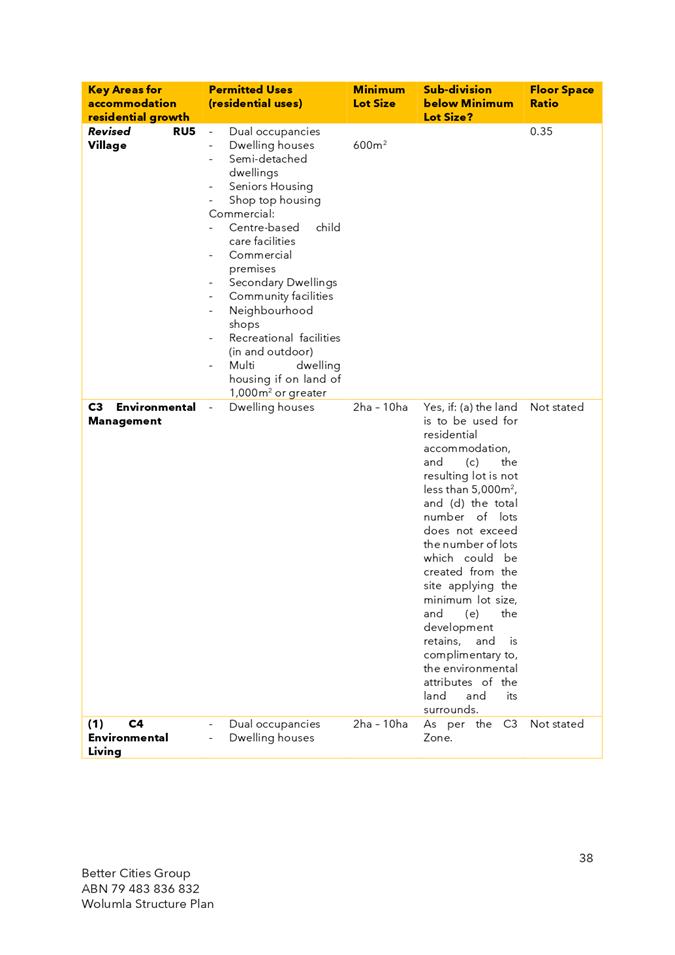
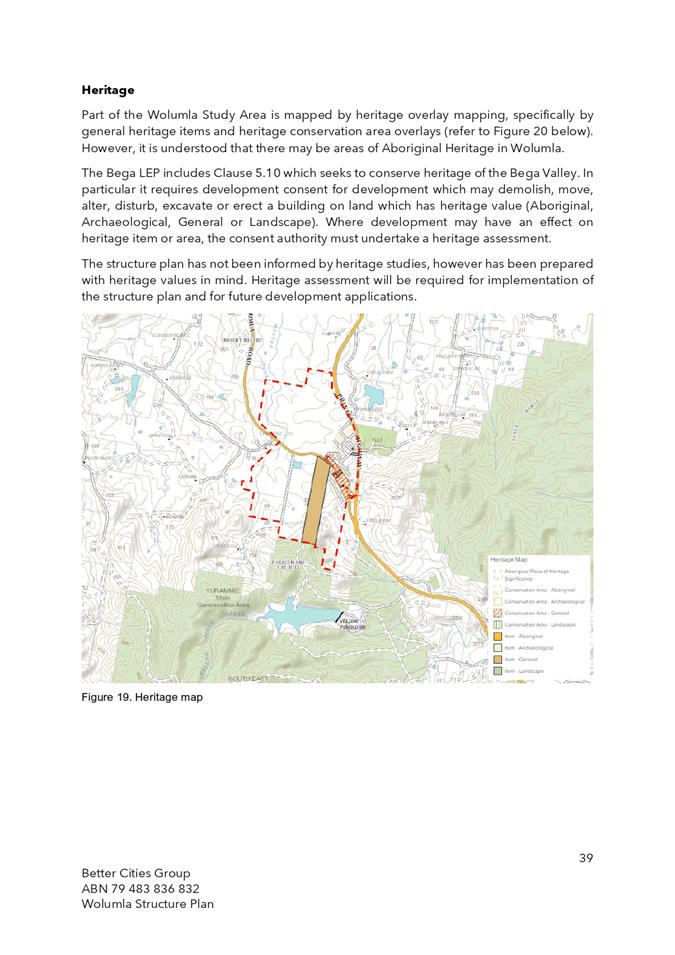
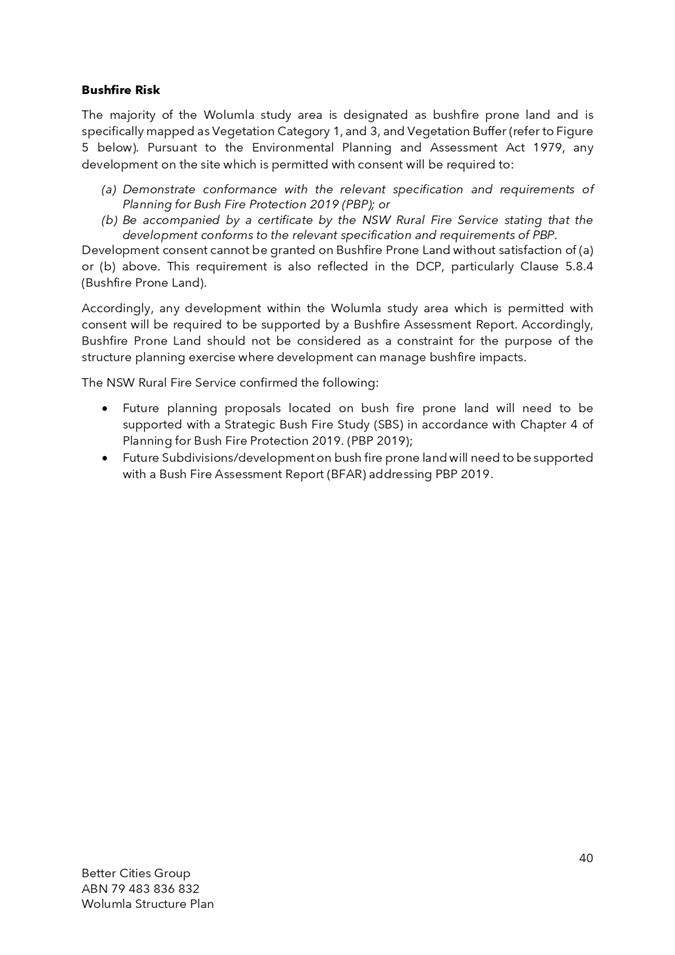
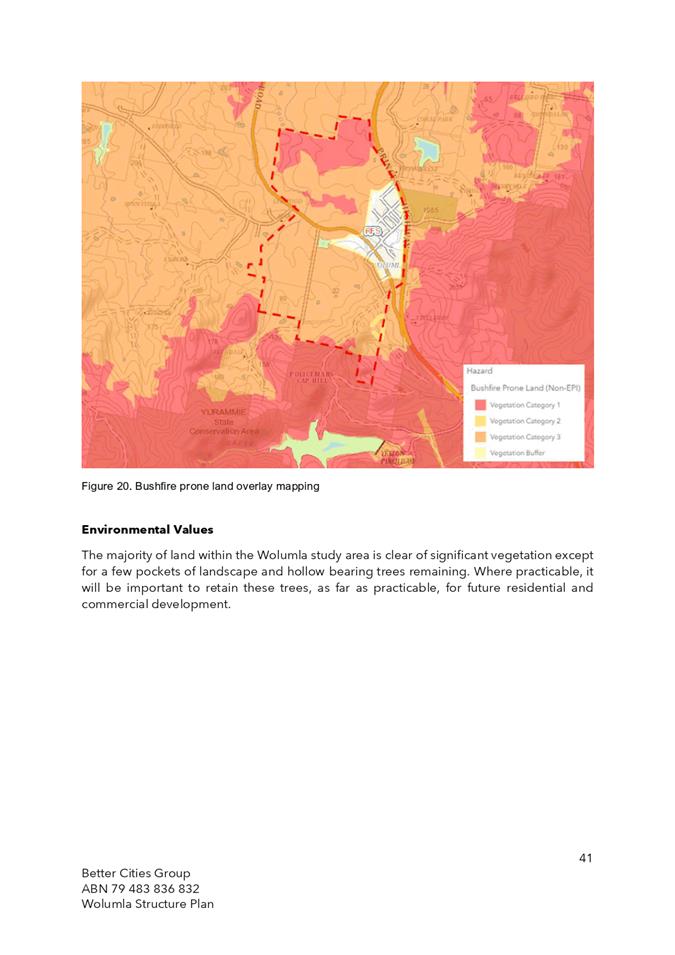
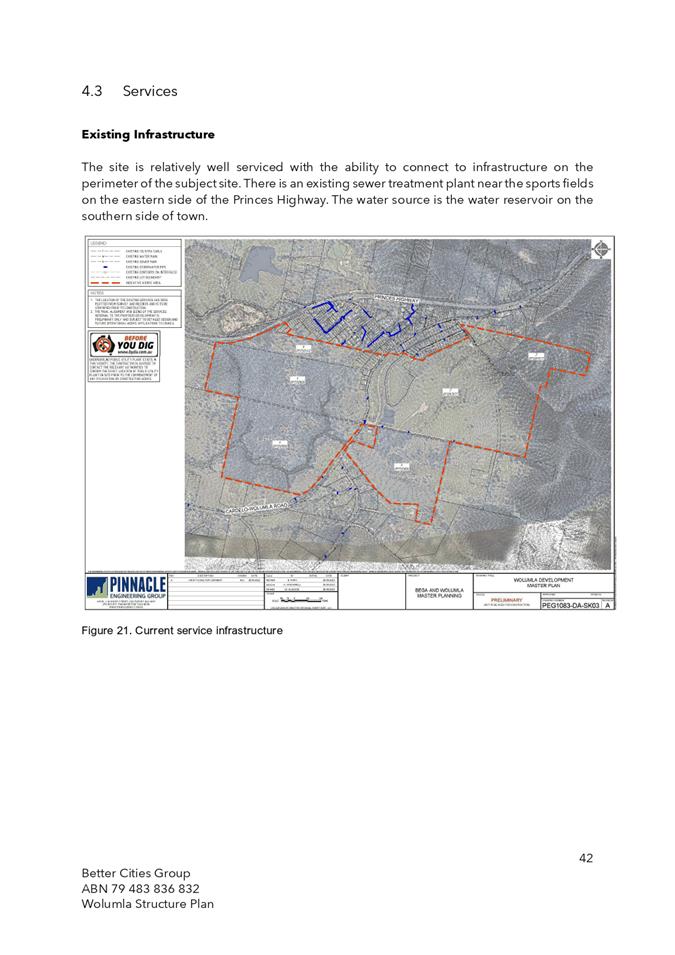
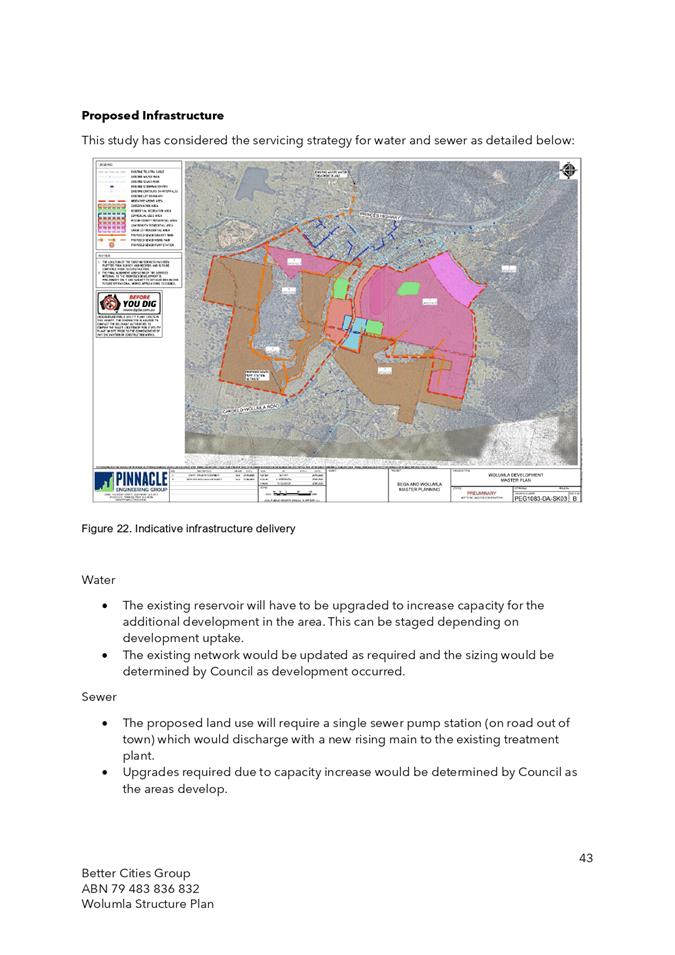
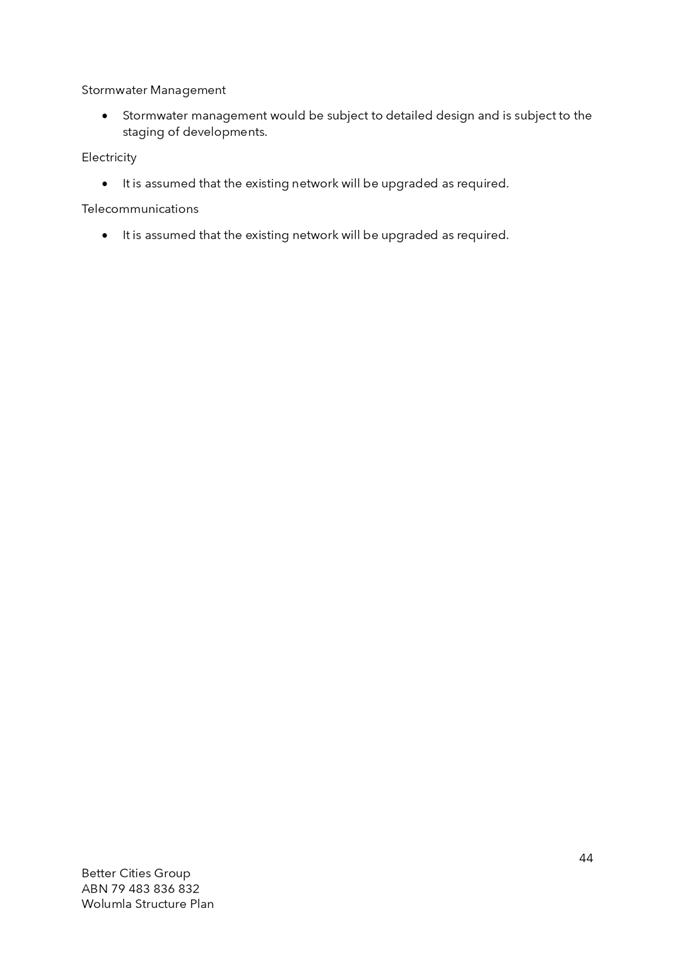
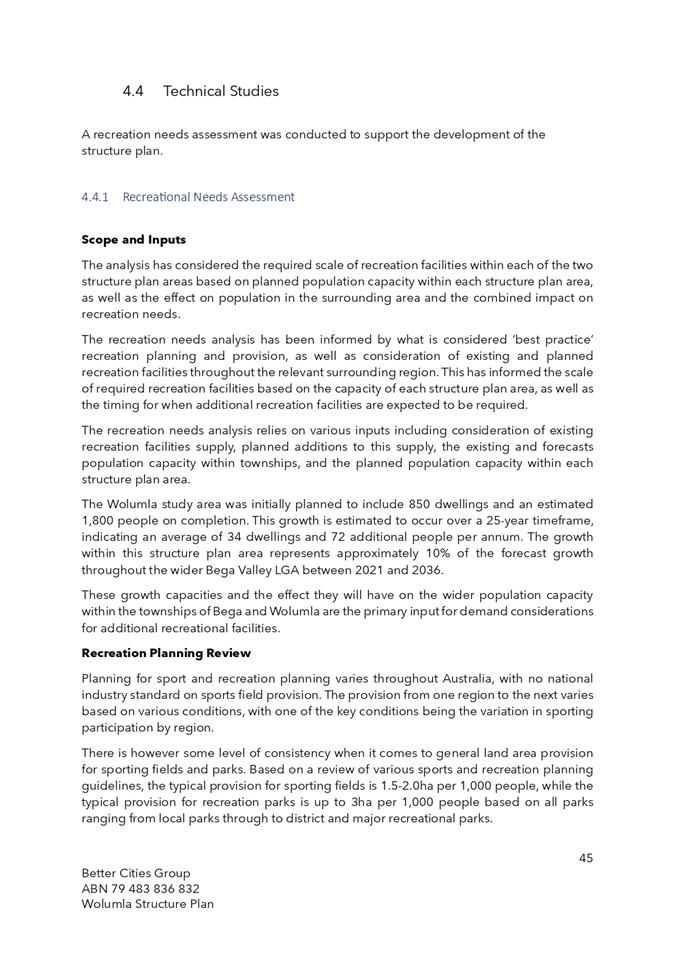
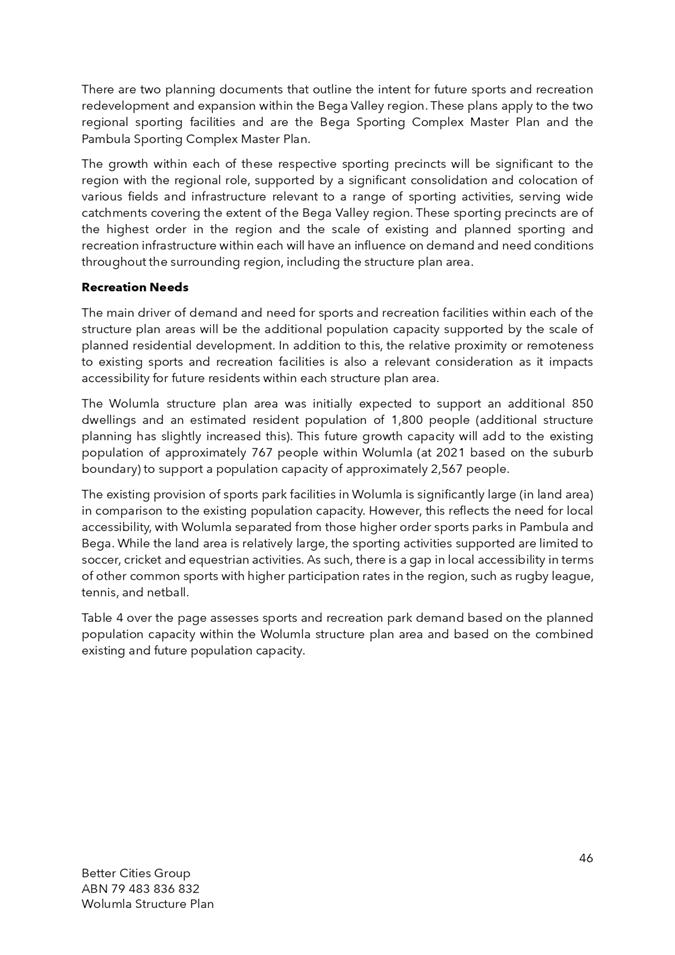
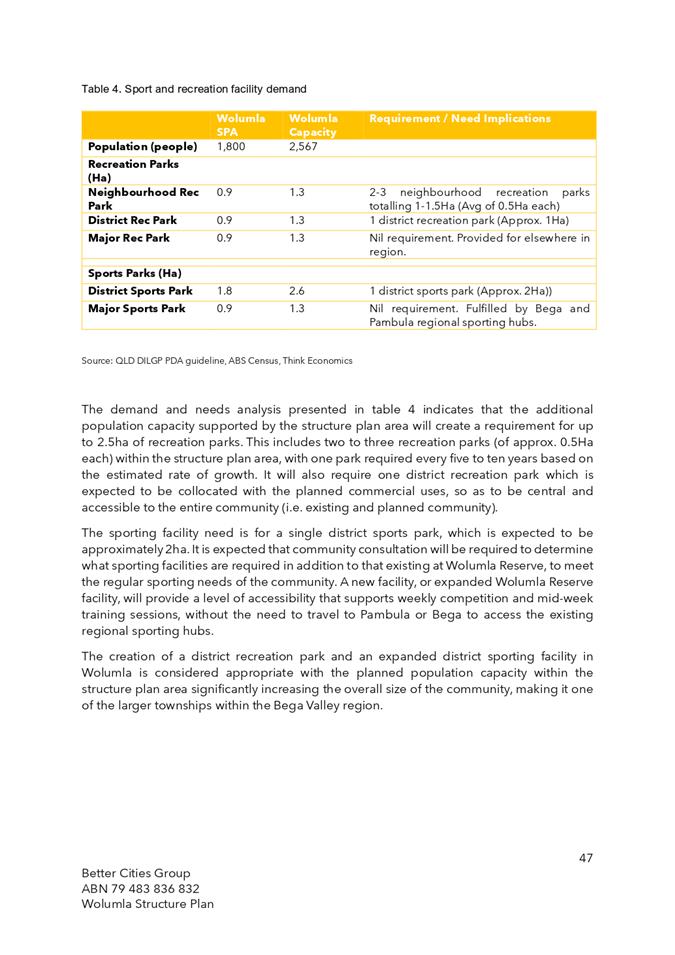
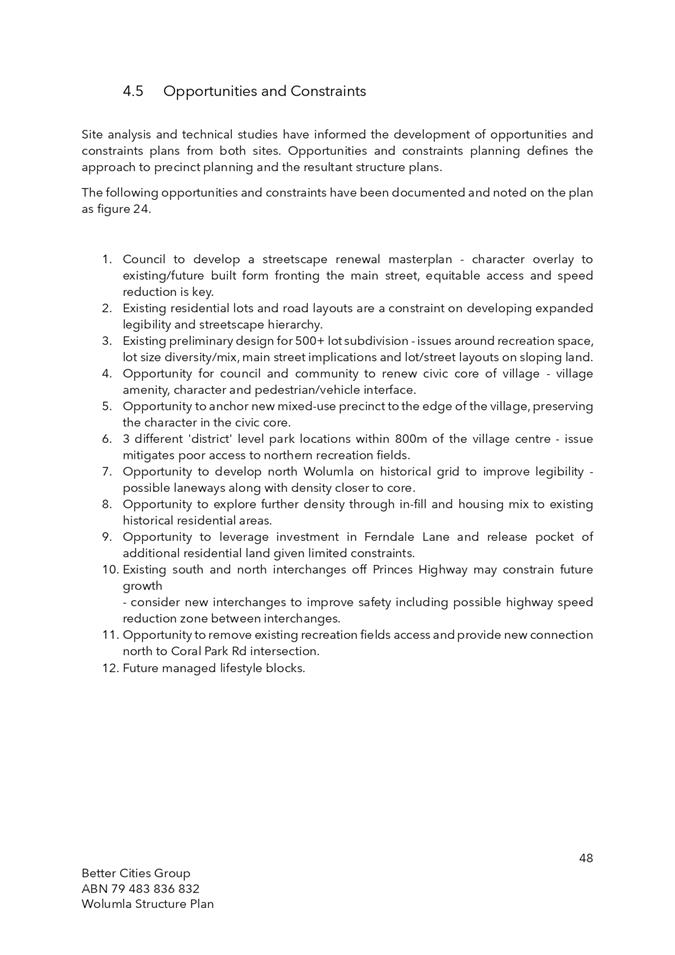
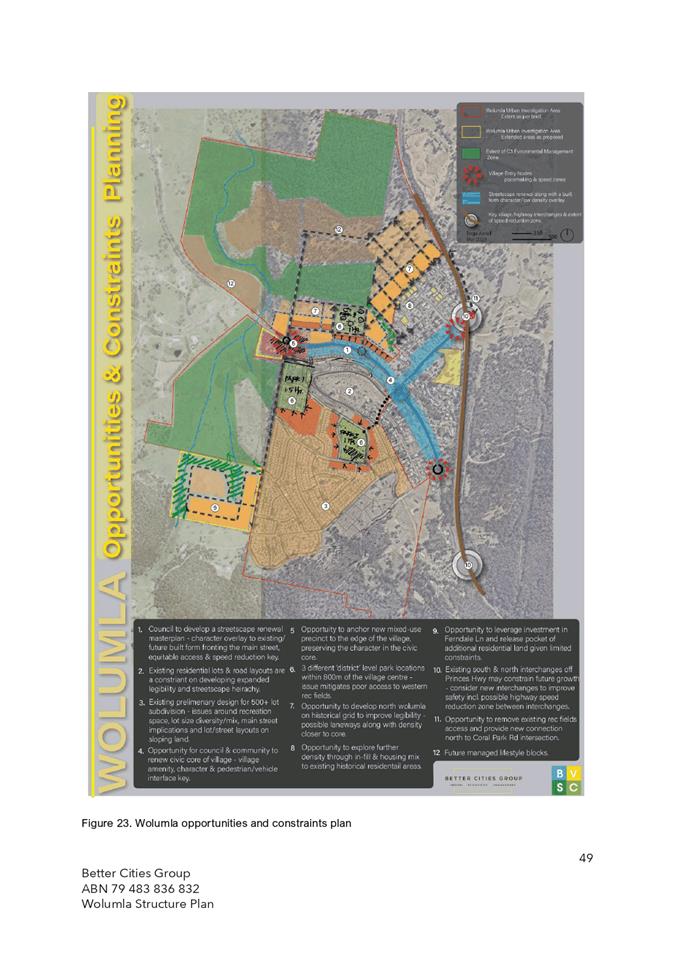
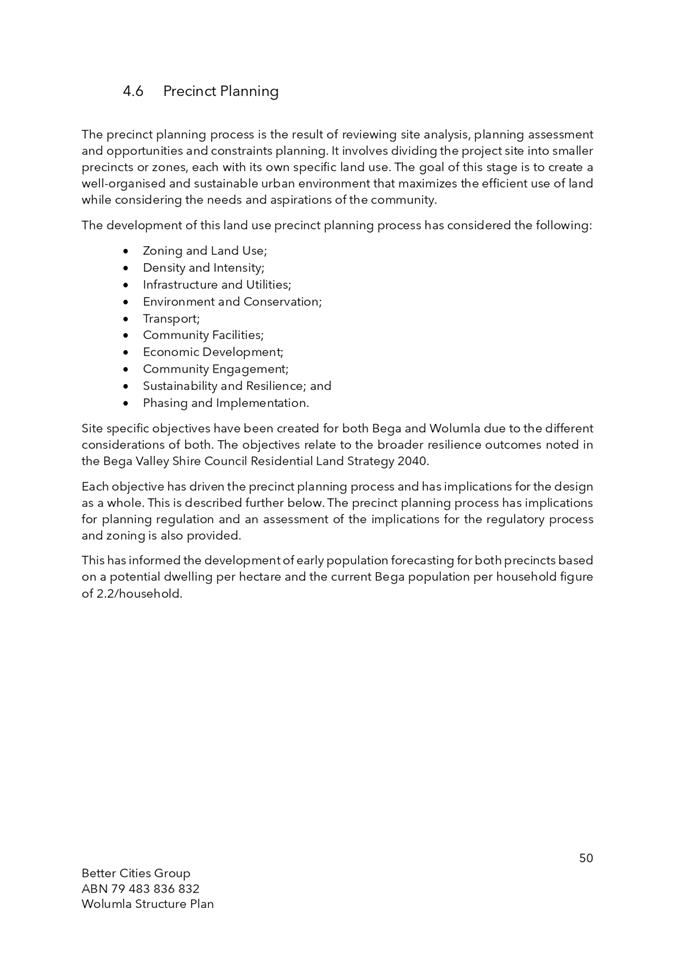
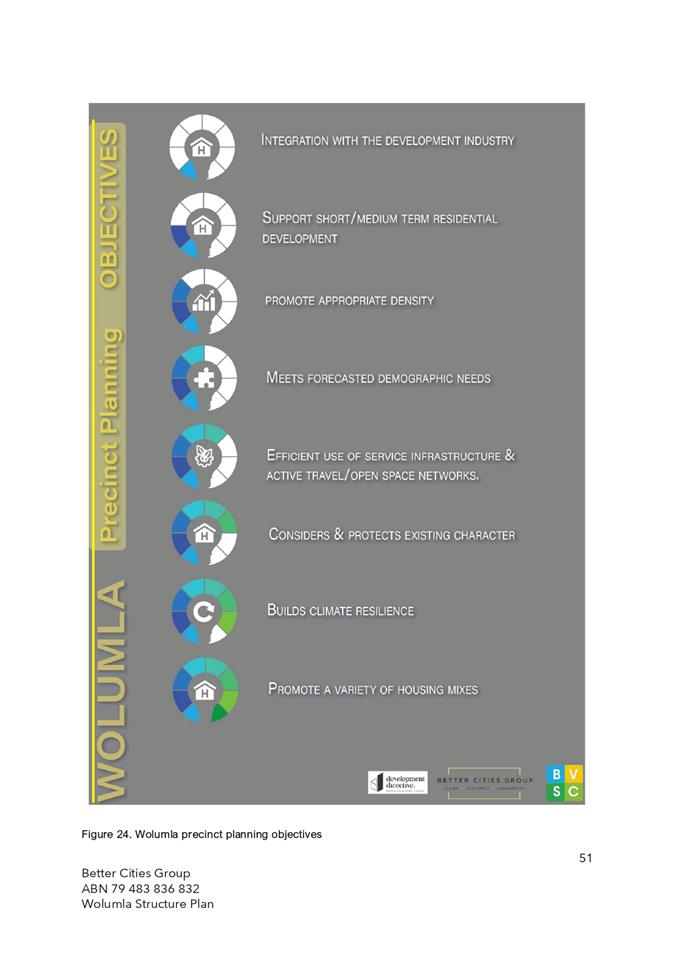
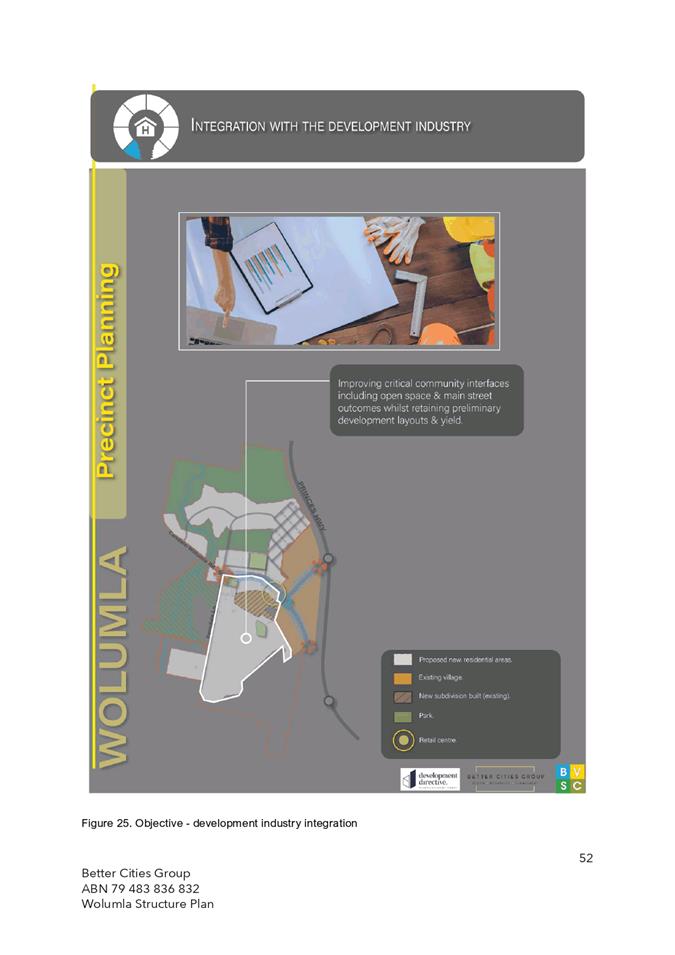
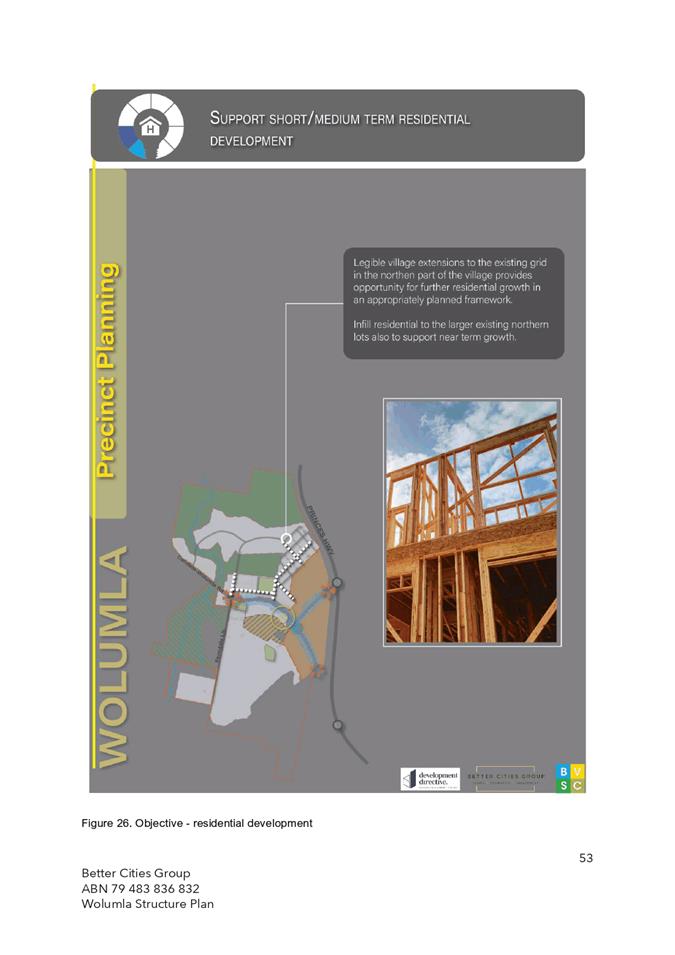
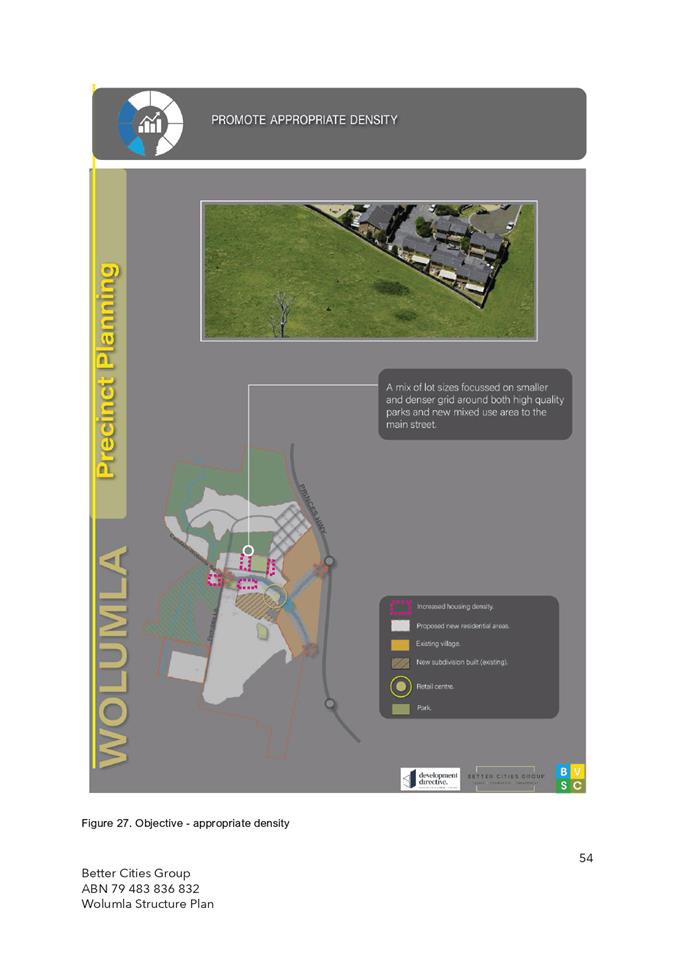
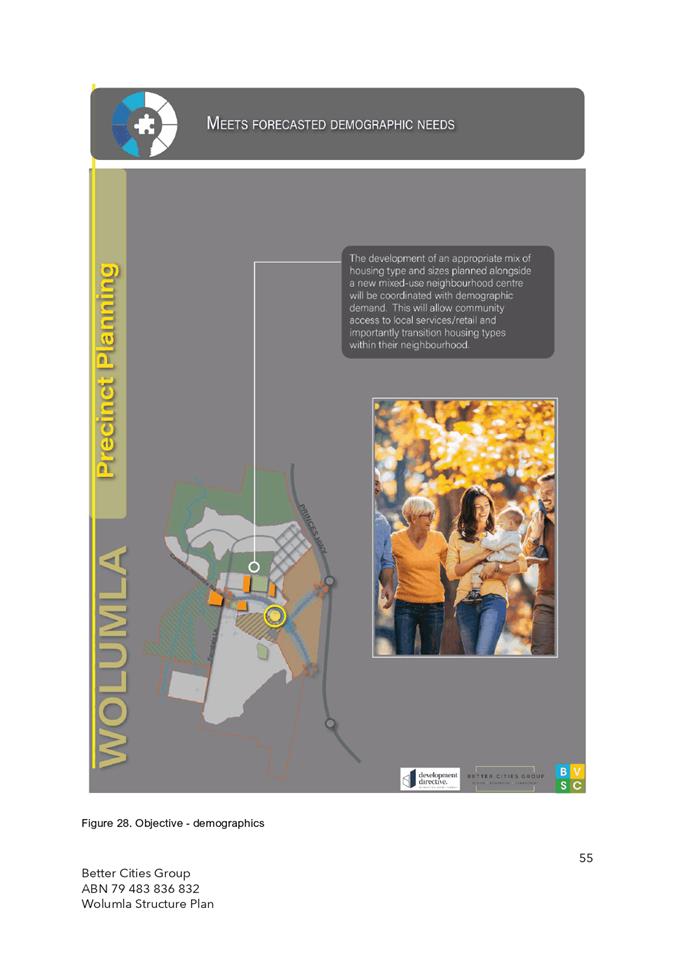

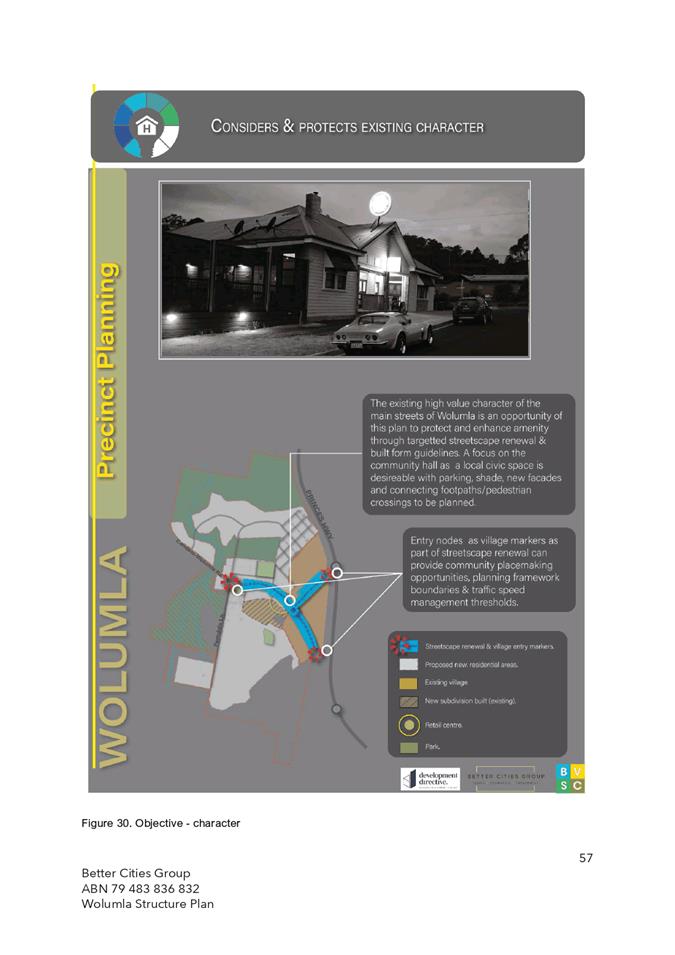
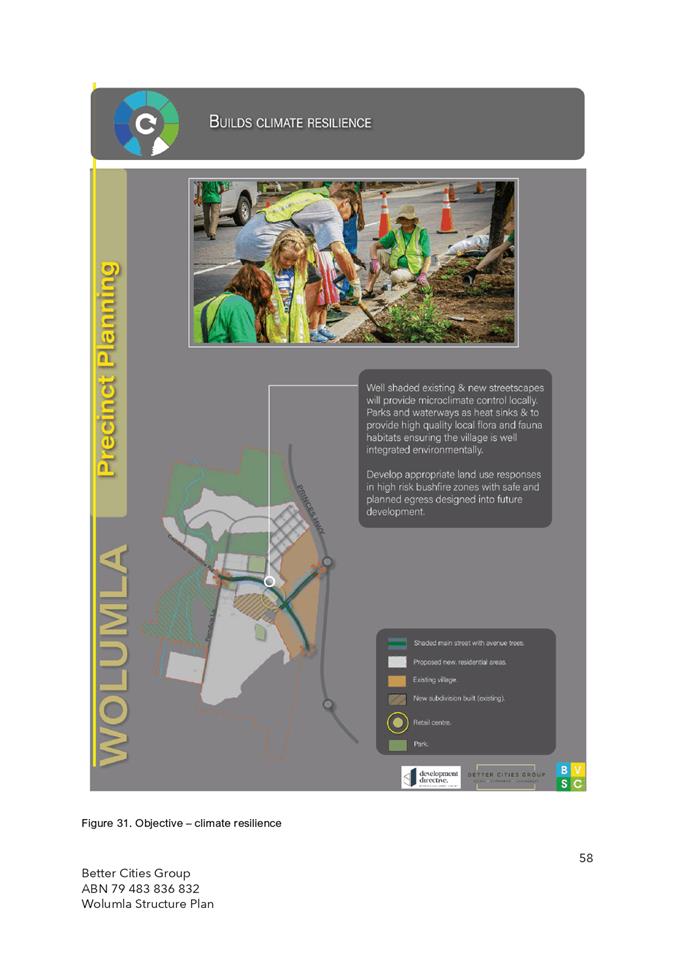
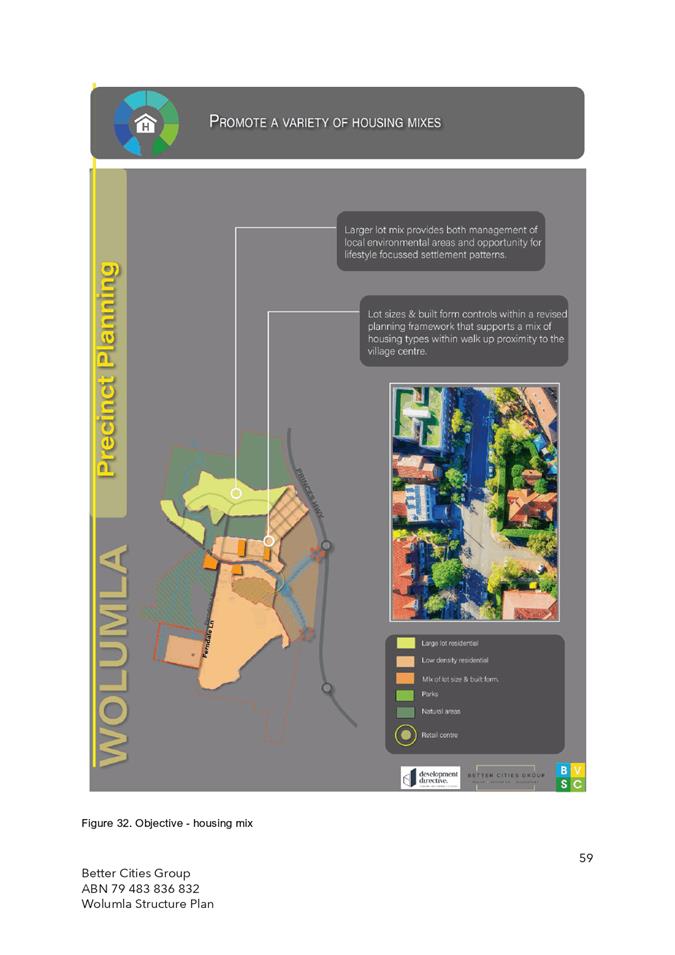

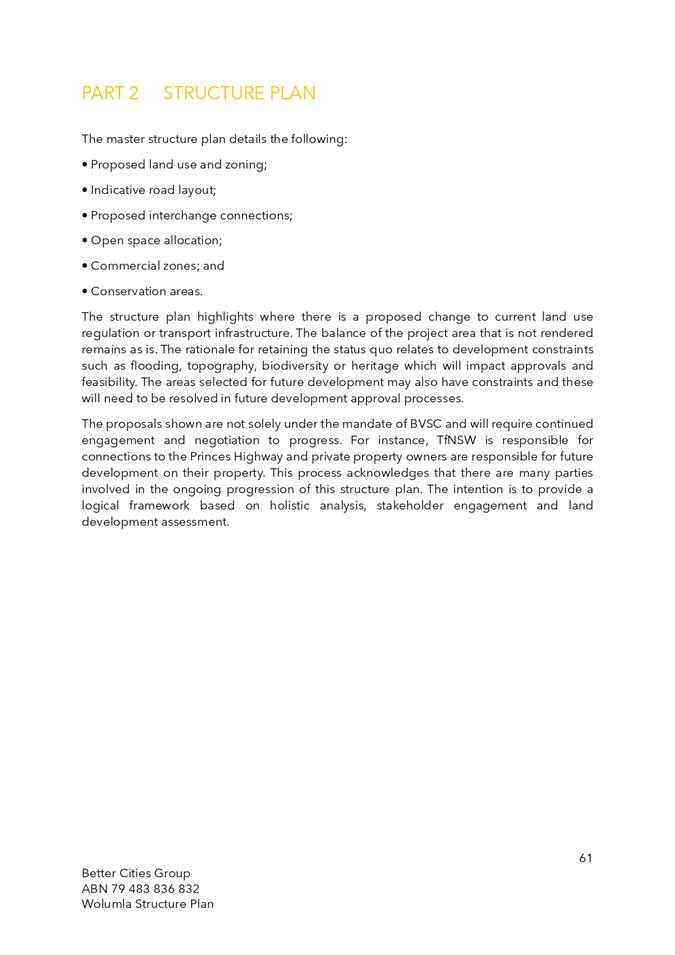
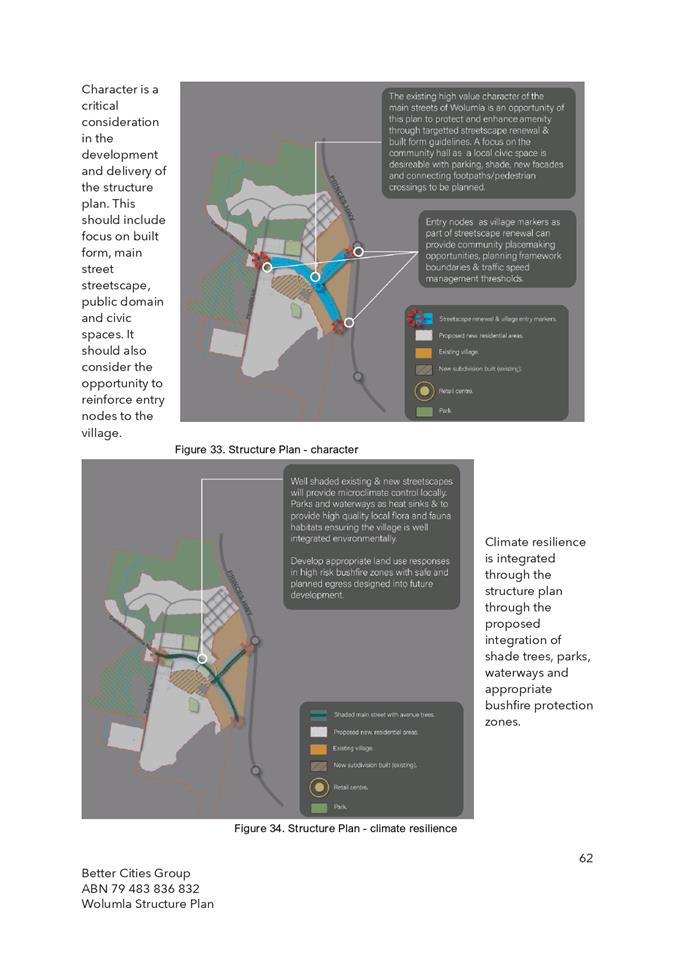
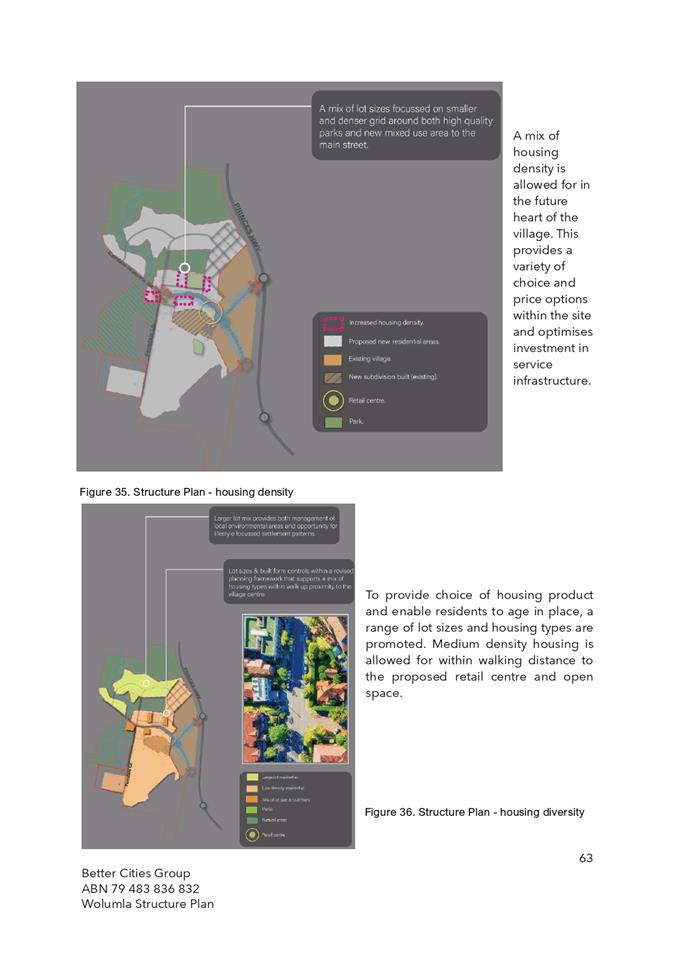
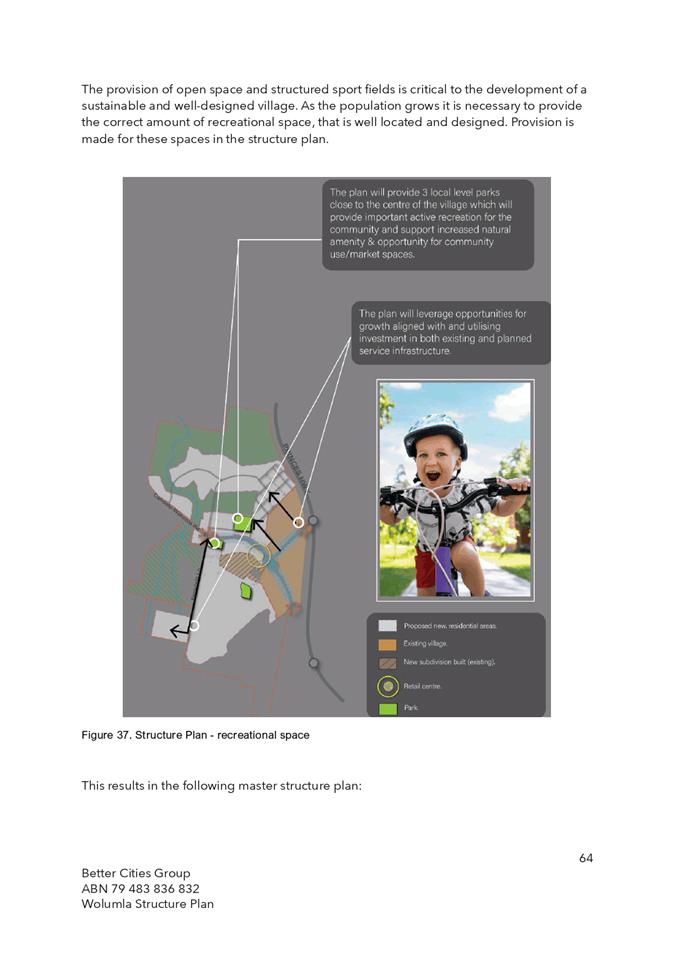
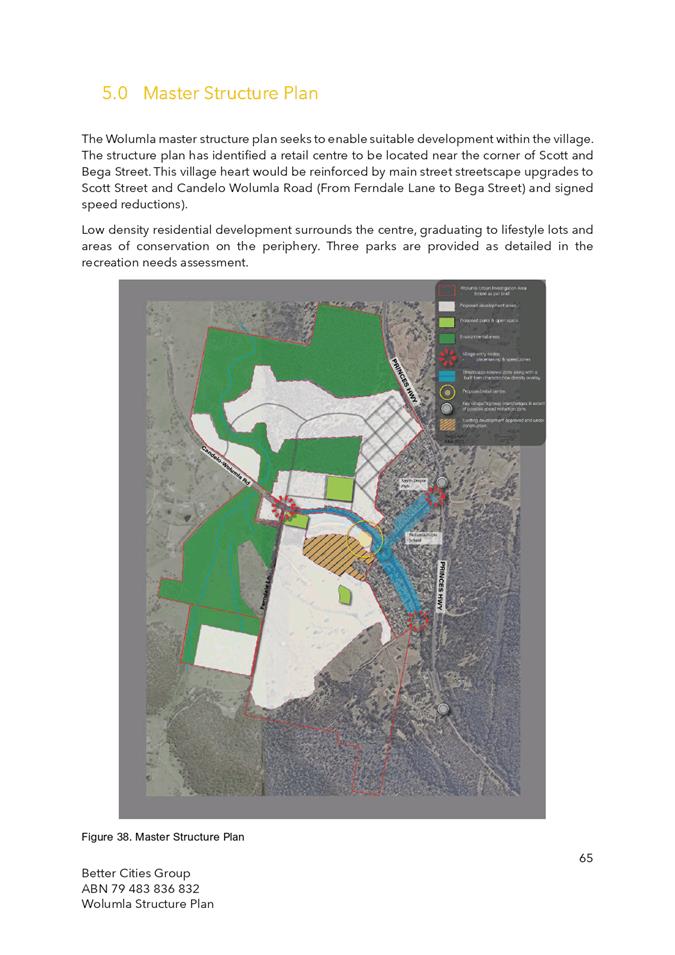
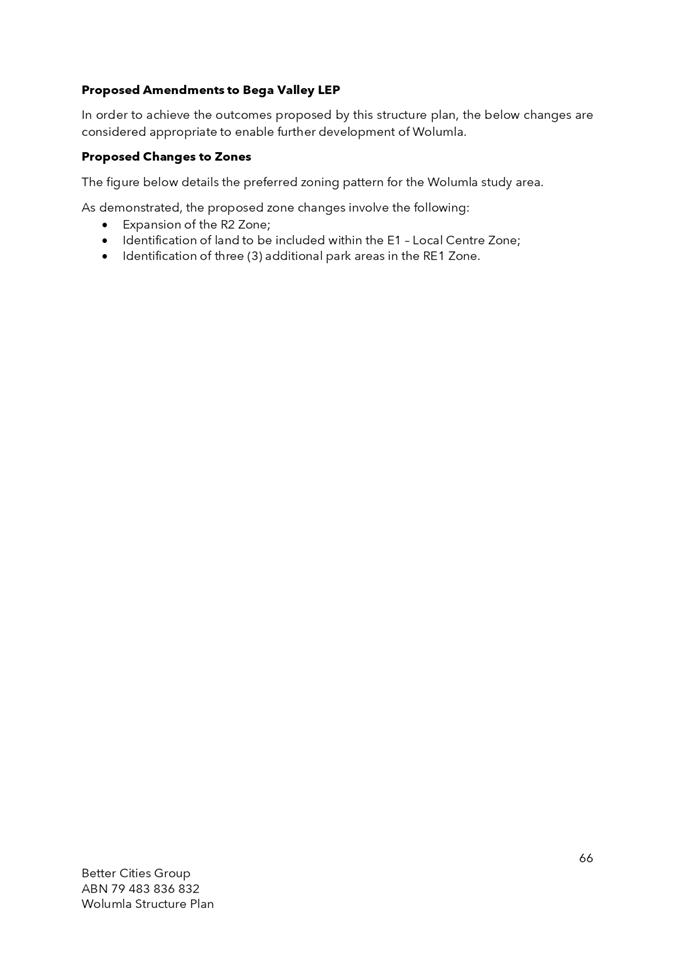
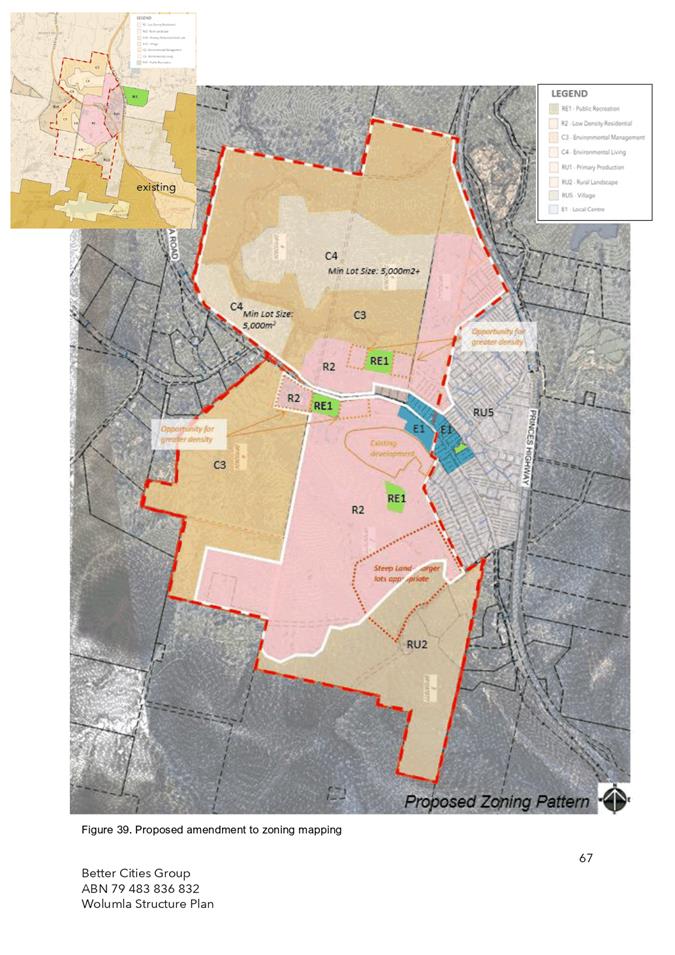
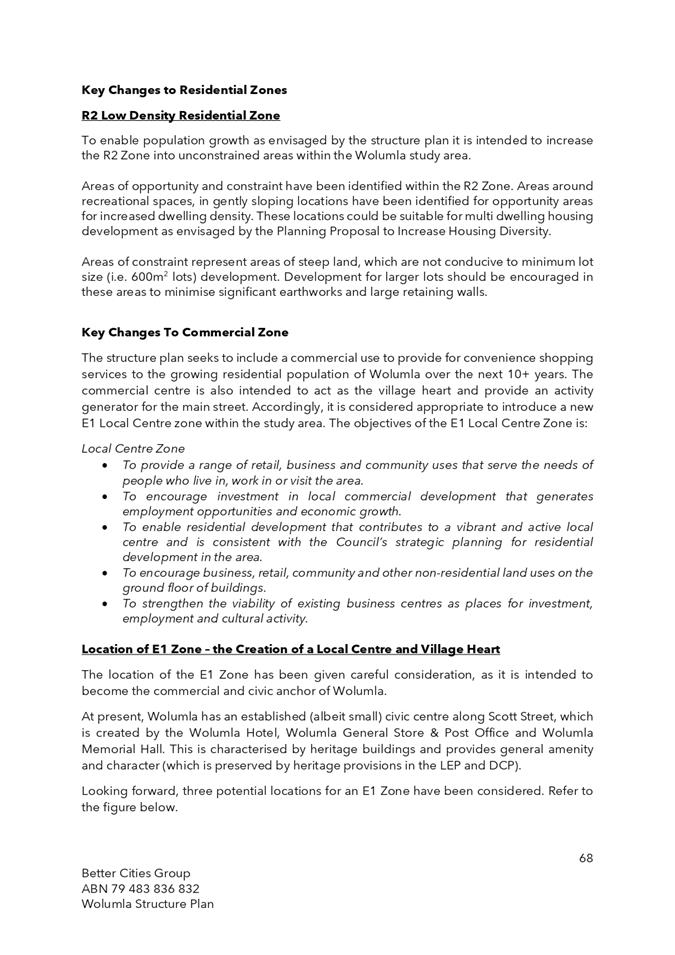
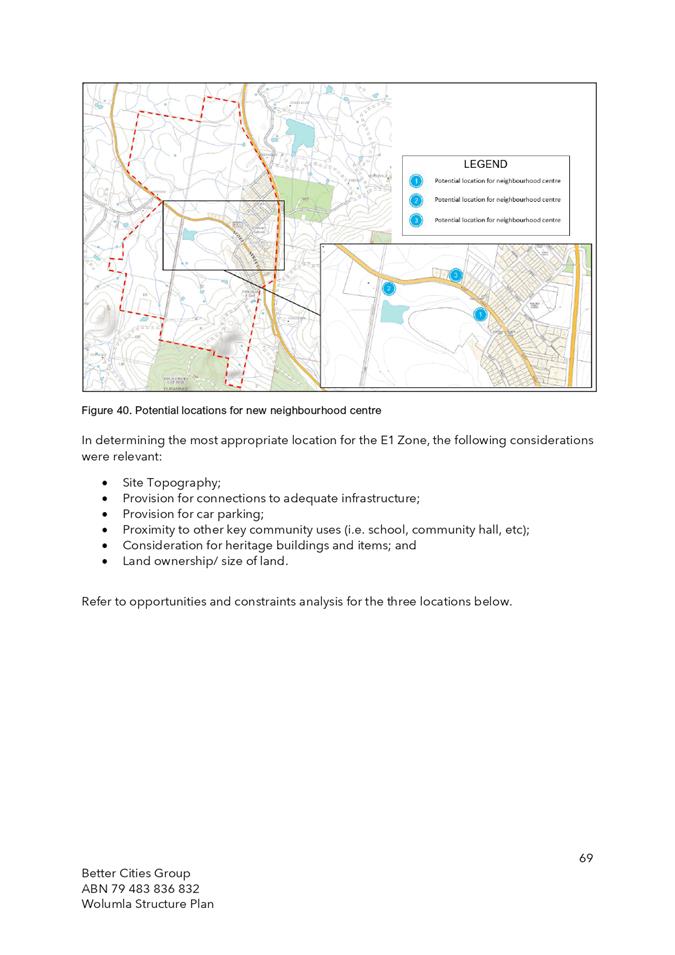
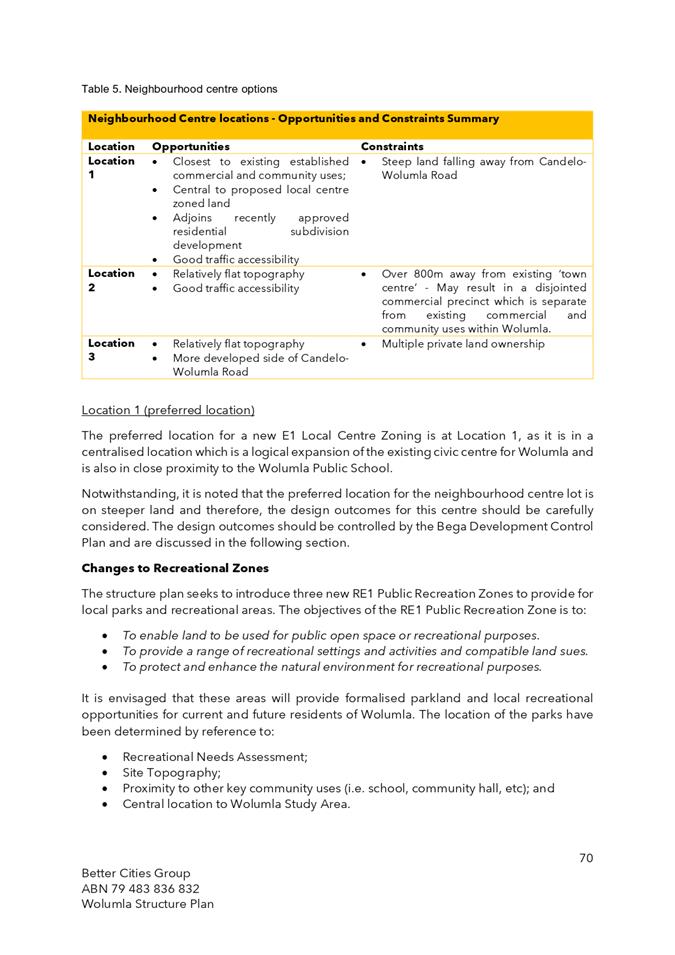
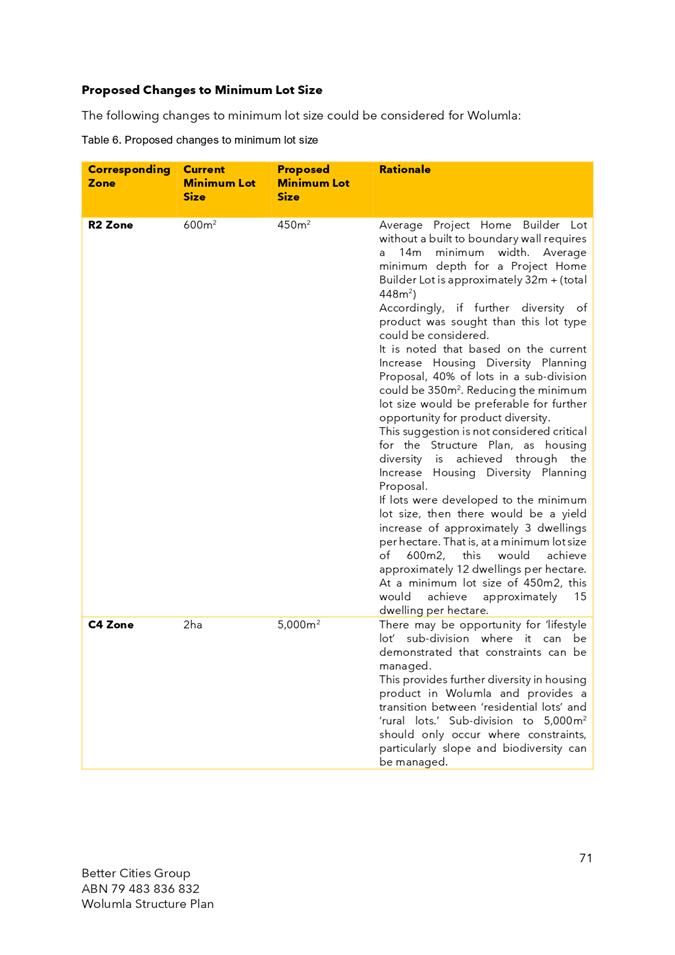
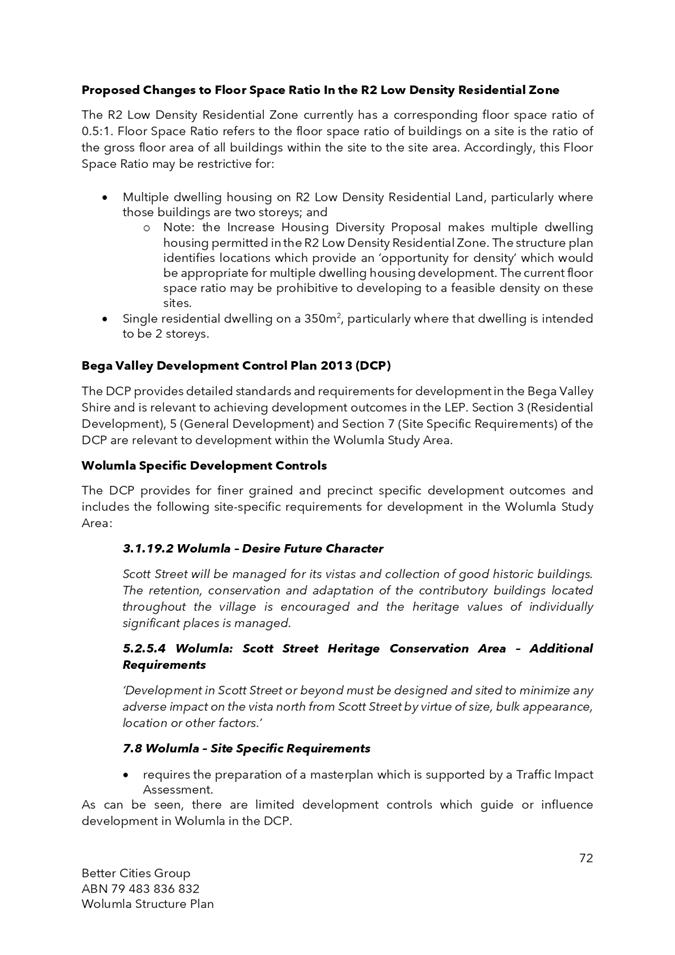
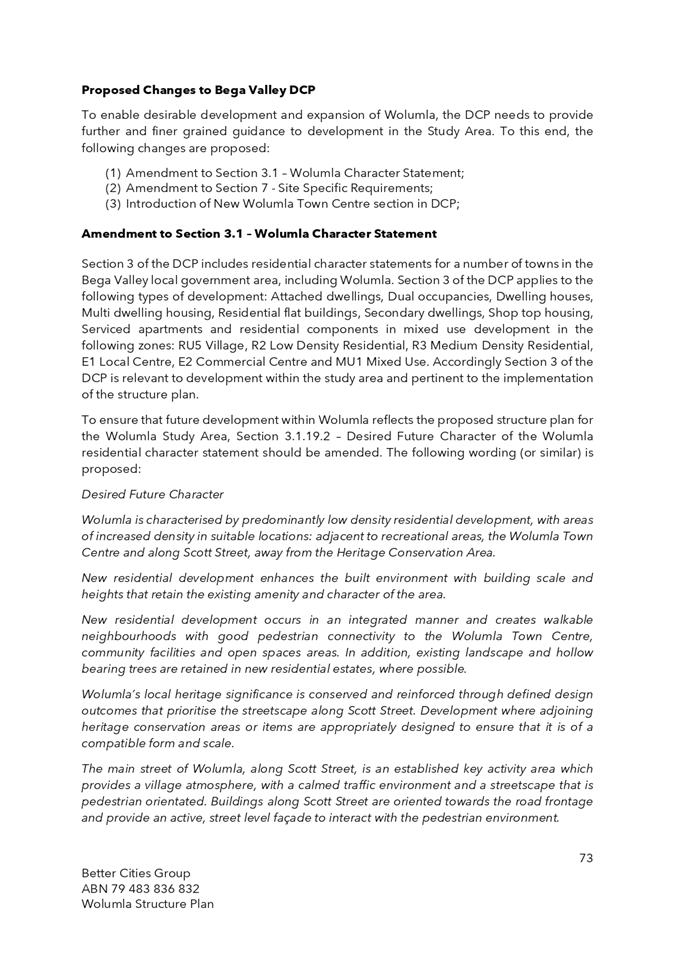
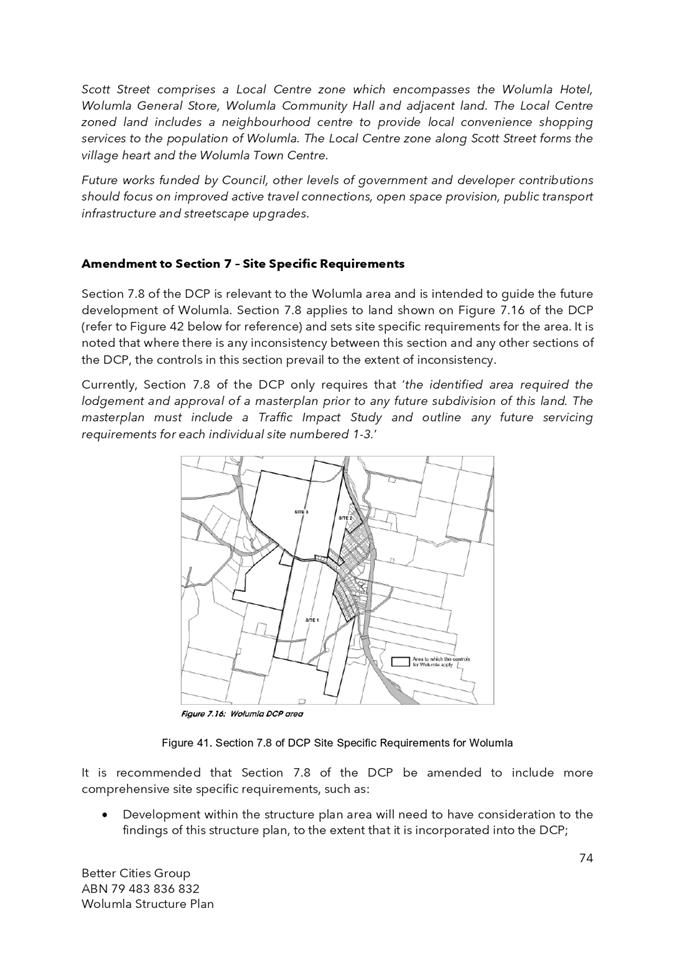
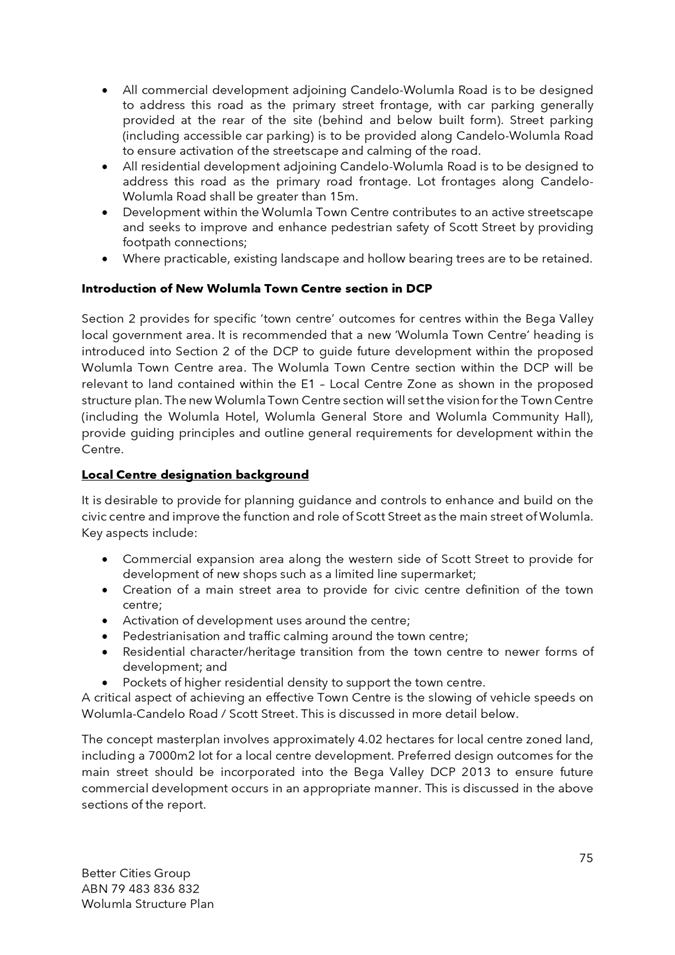
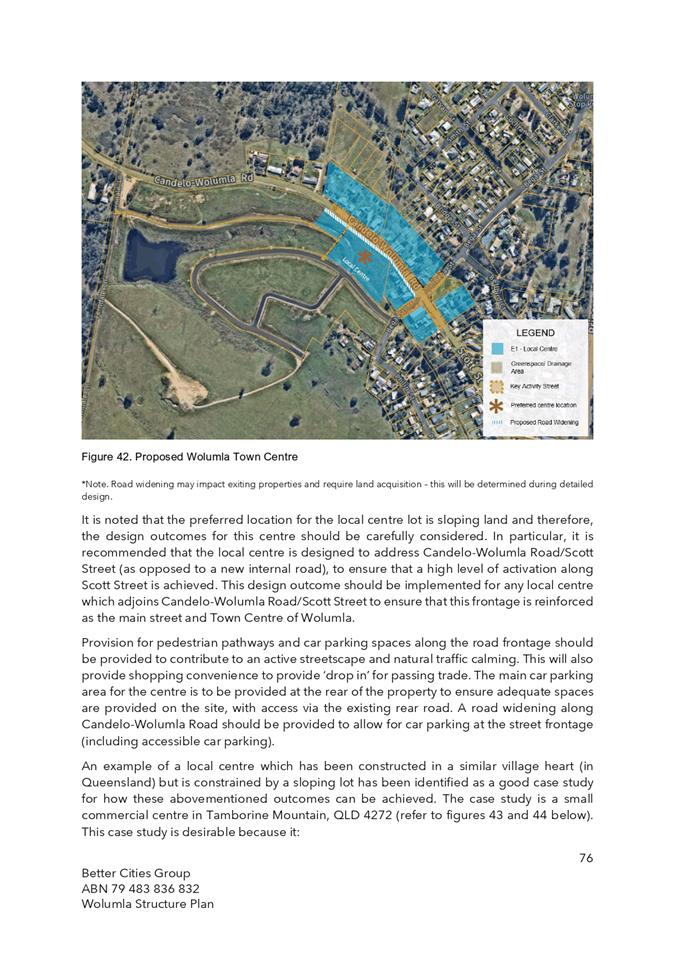
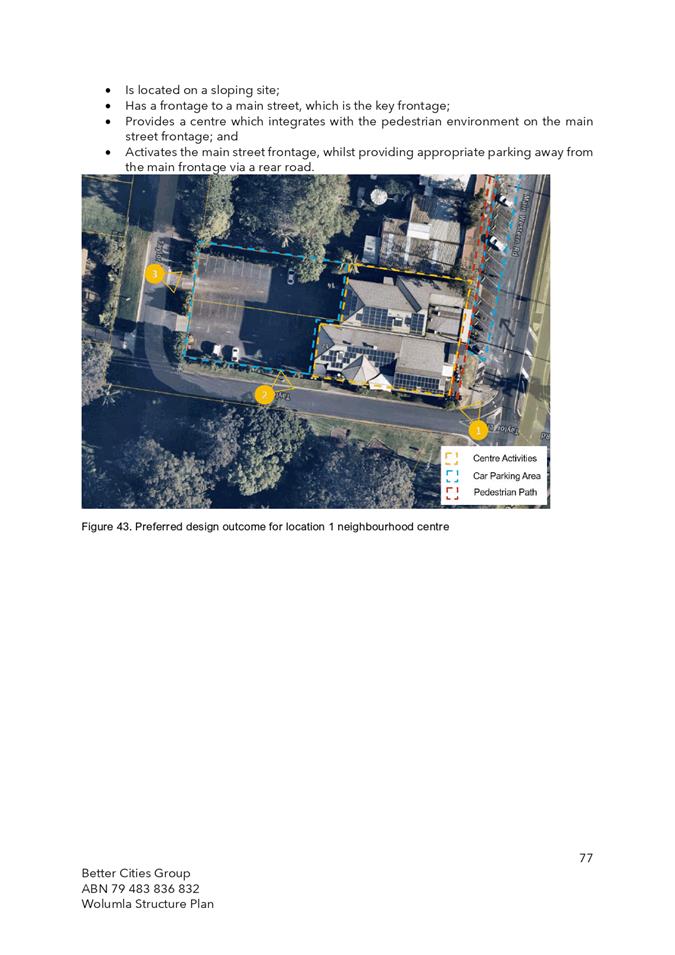
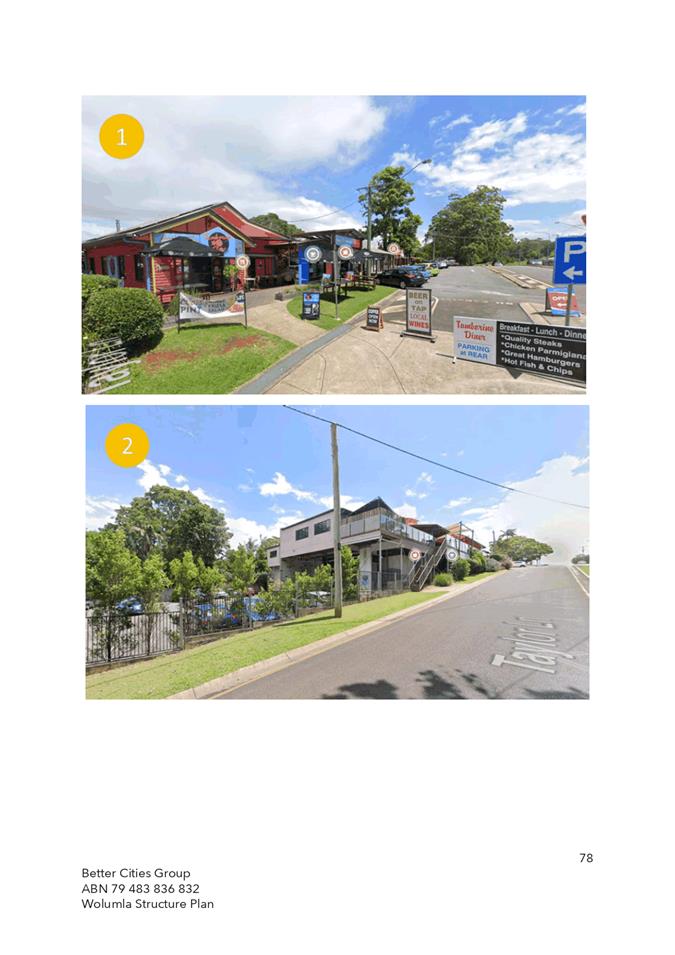
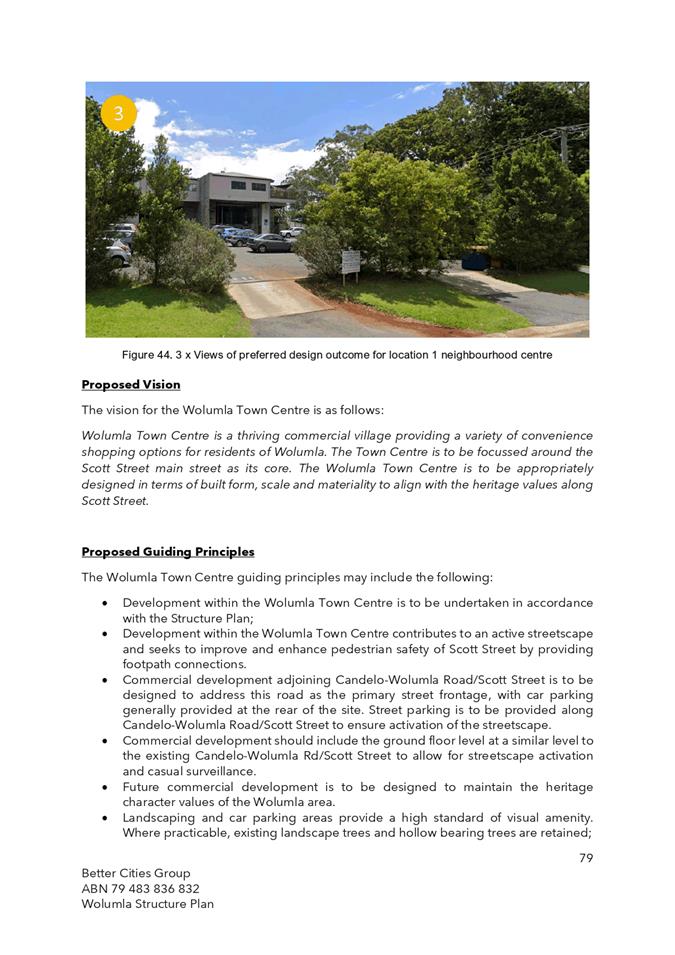
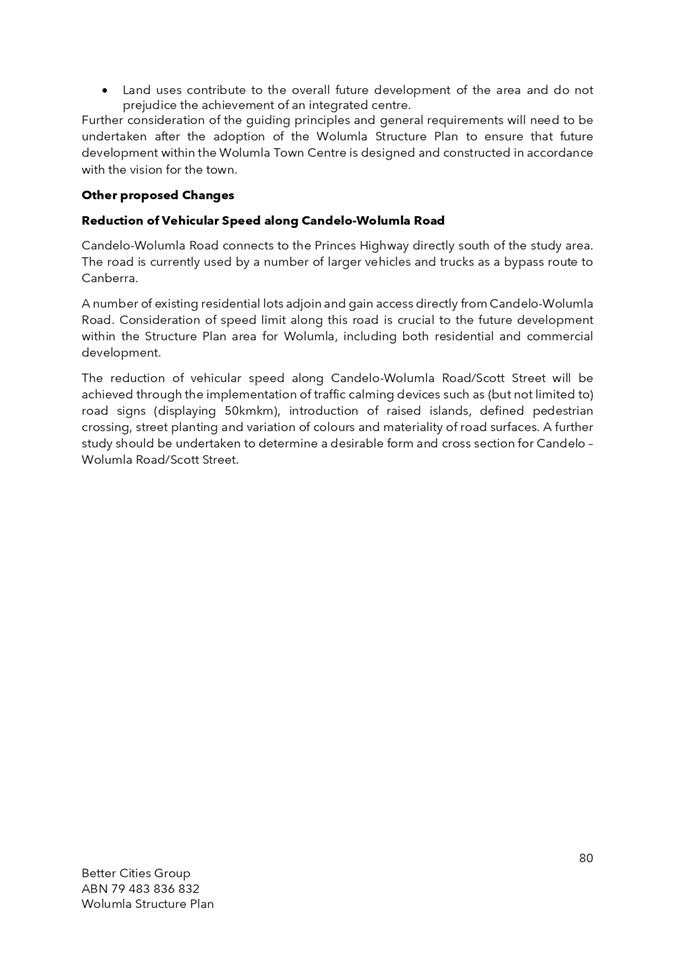
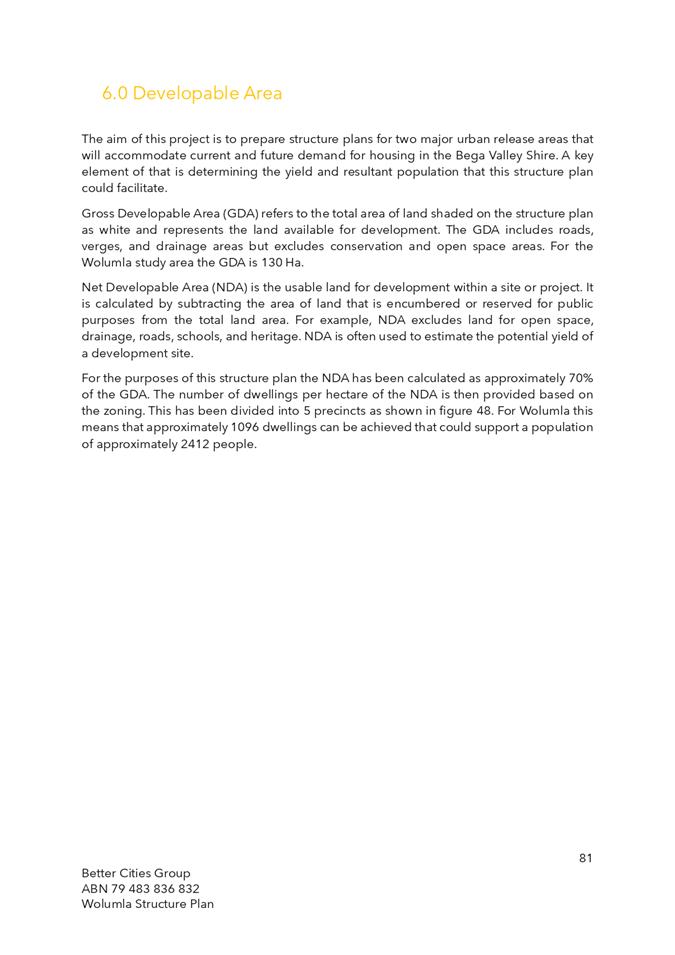
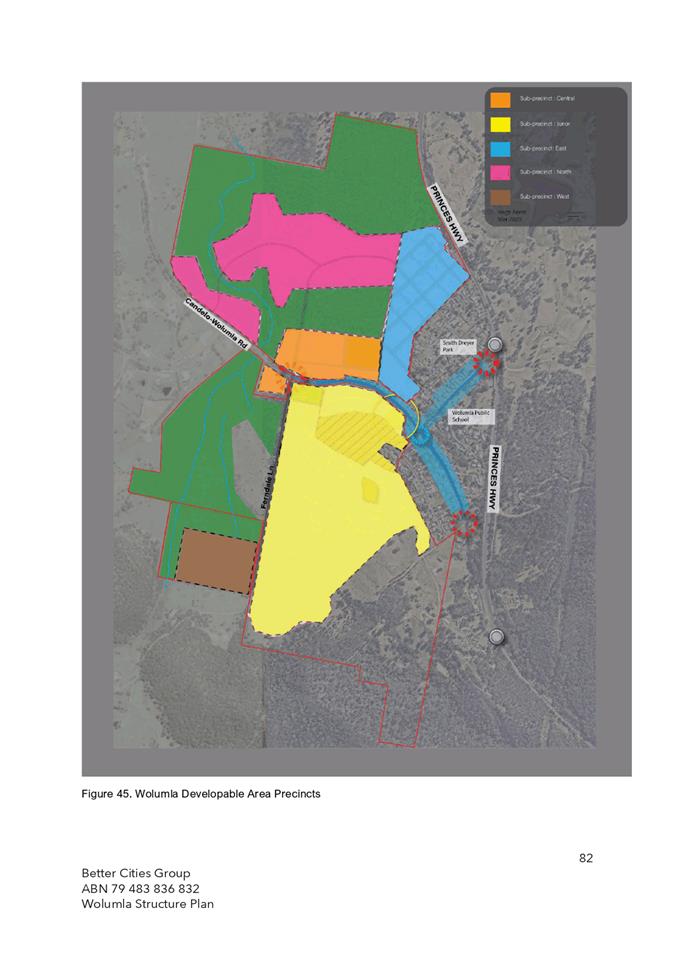
|
Council
|
12 June 2024
|
|
Item 8.2
- Attachment 3
|
Summary of written submissions to Draft Bega and Wolumla
Structure Plans
|
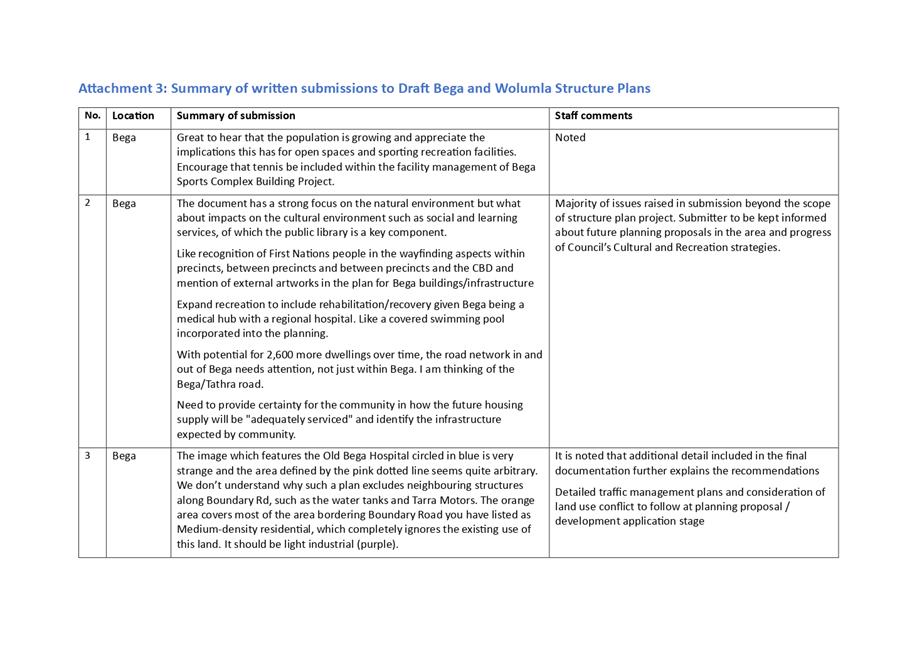
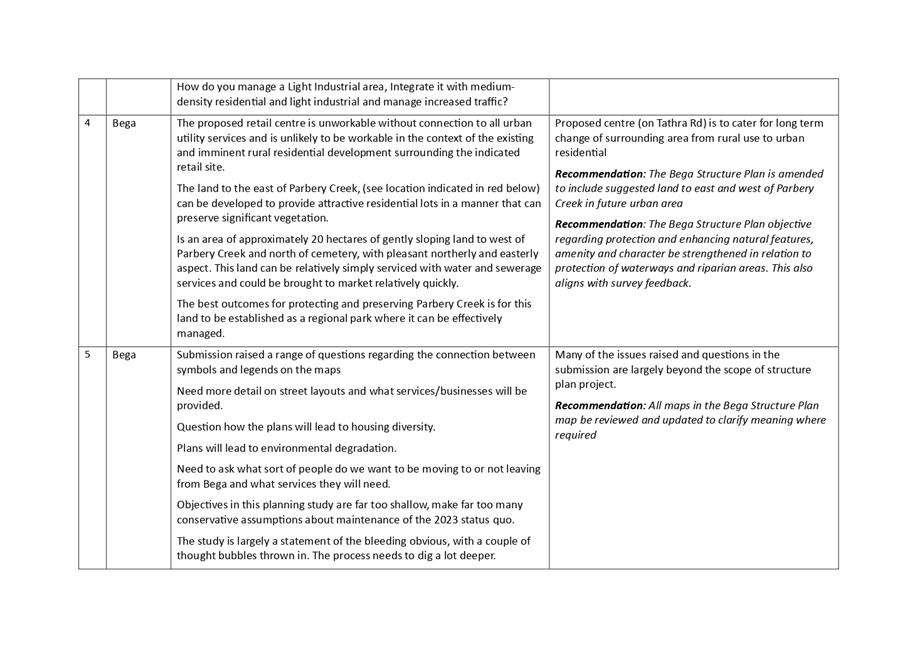
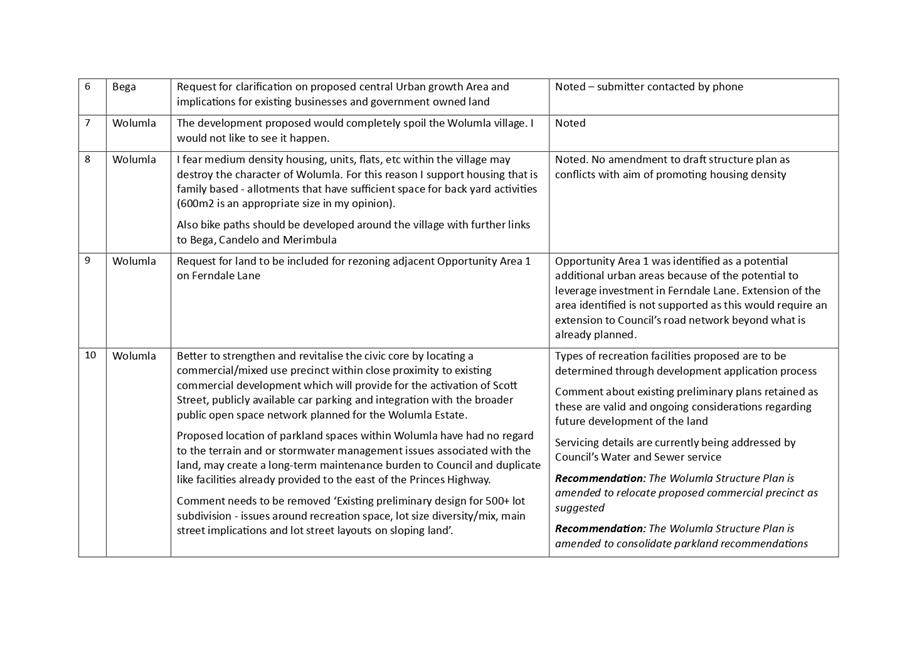
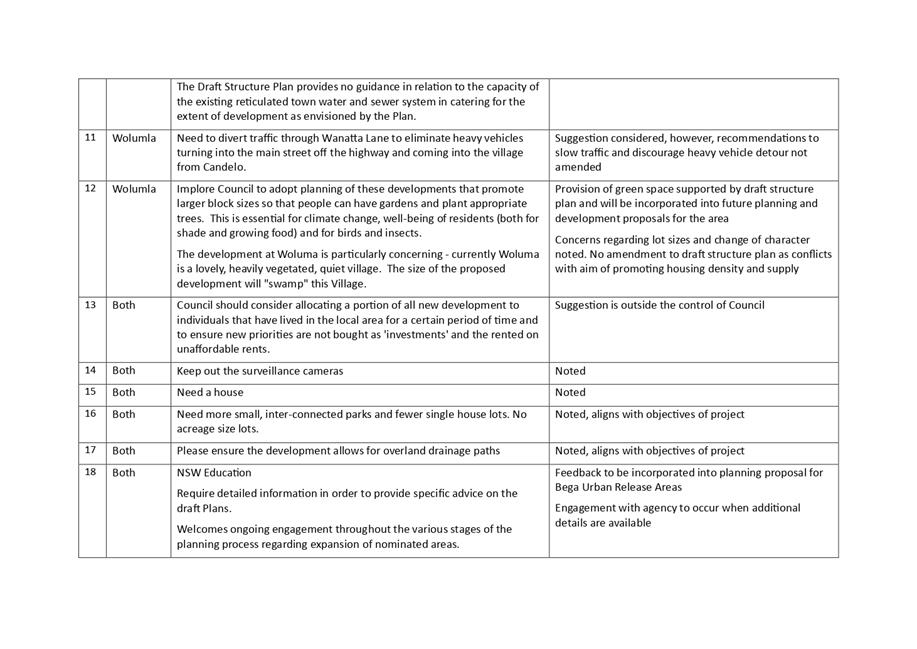
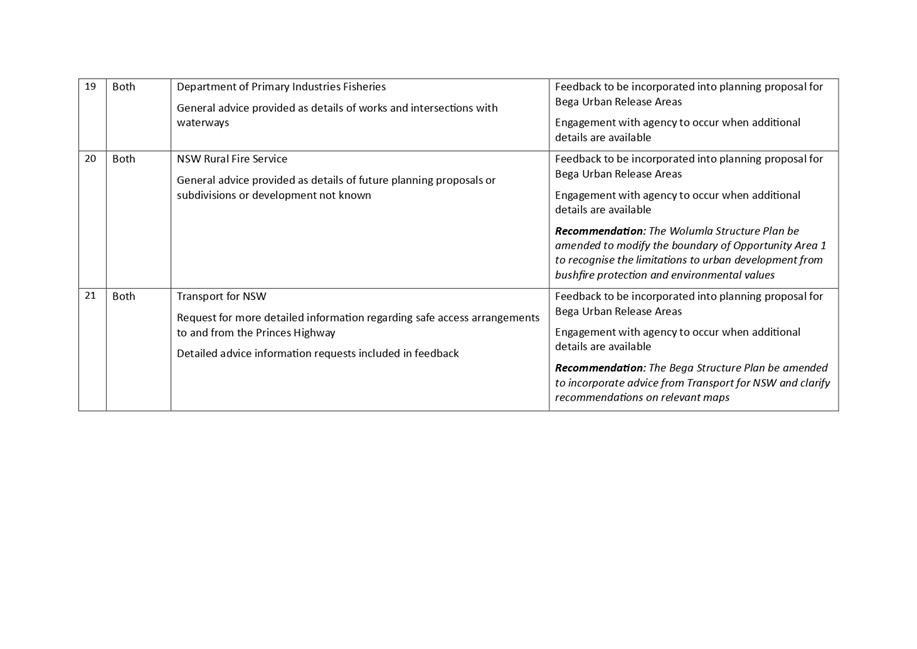
|
Council
|
12 June 2024
|
|
Item 8.2
- Attachment 4
|
Survey feedback to Bega Structure Plan
|
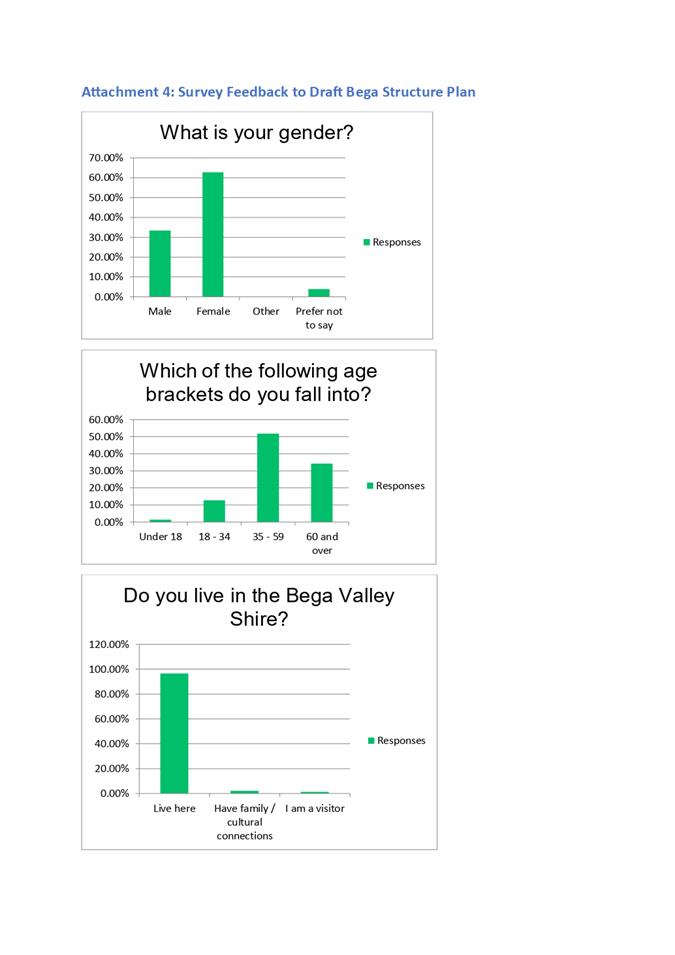
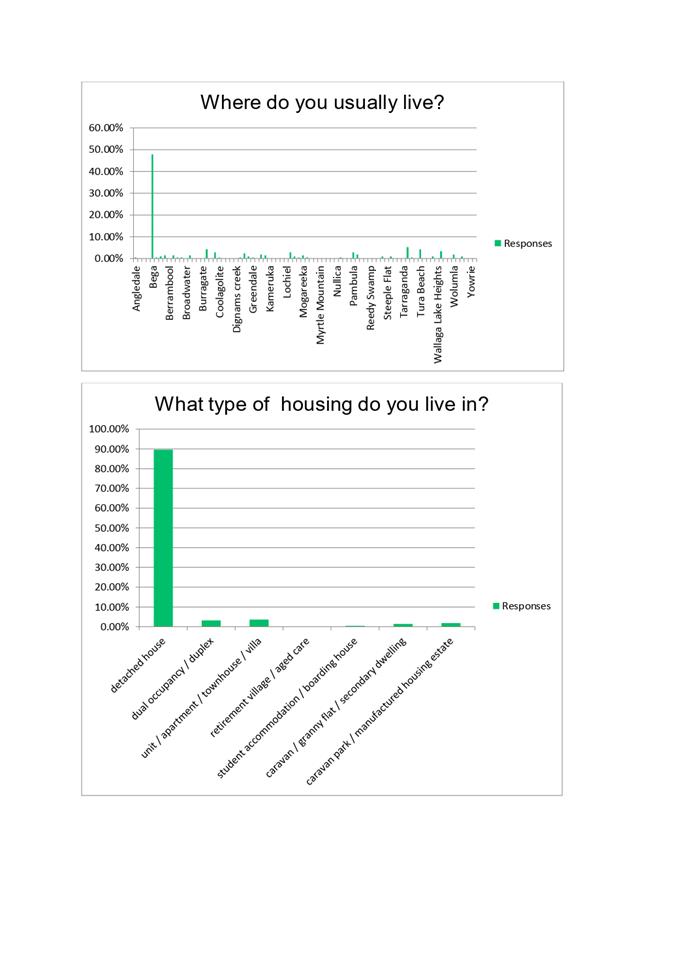
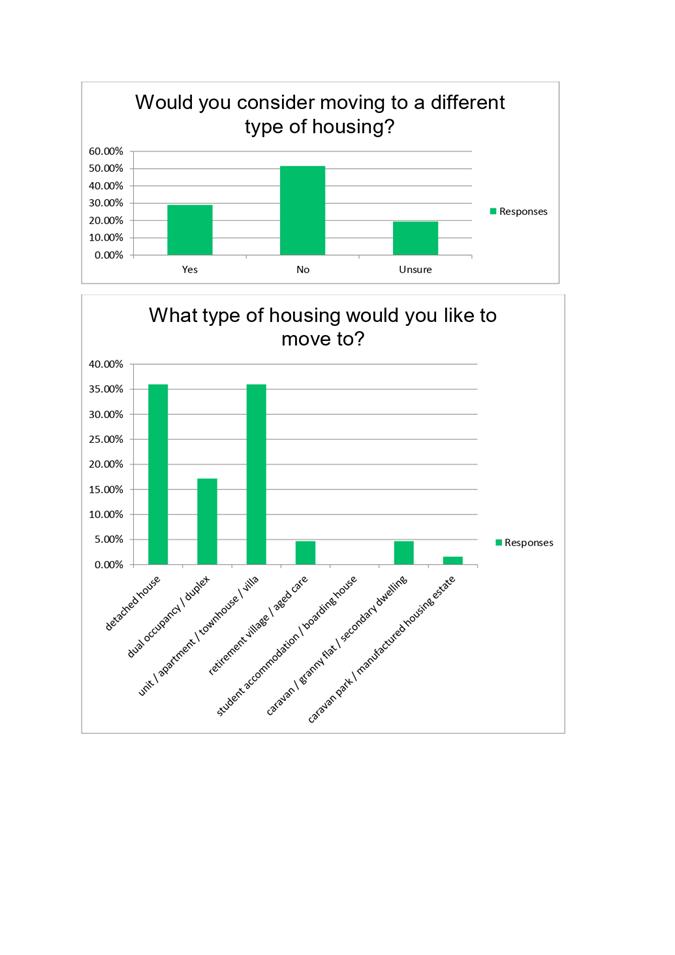
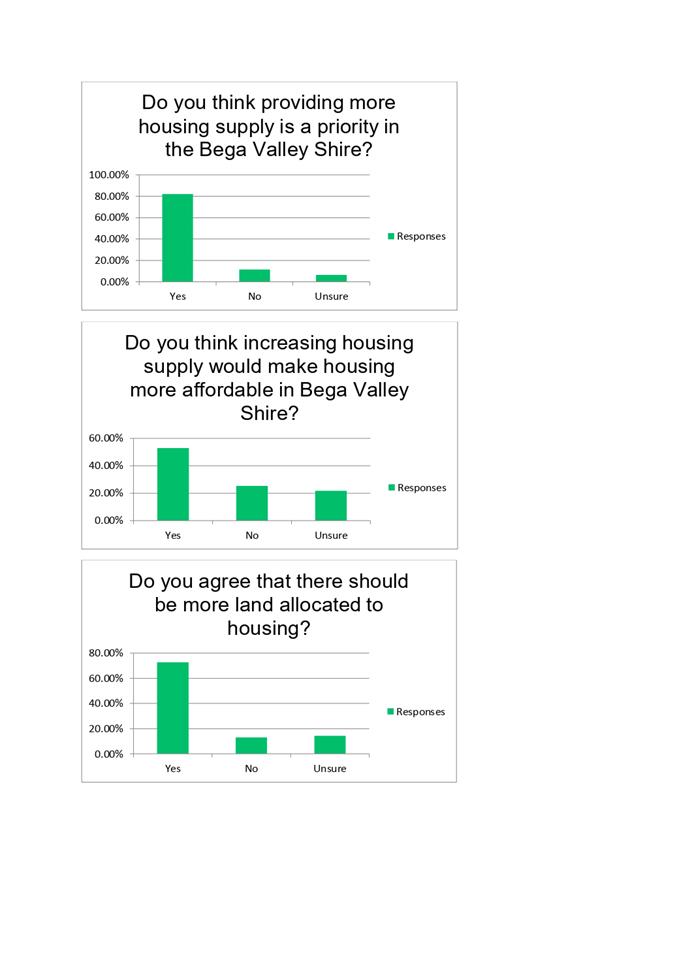
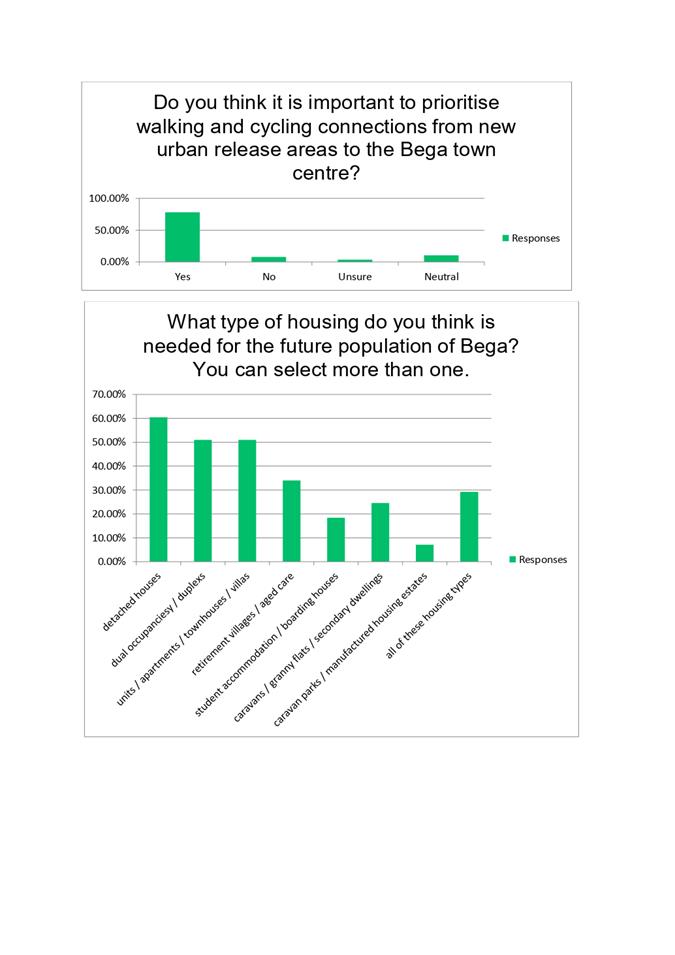
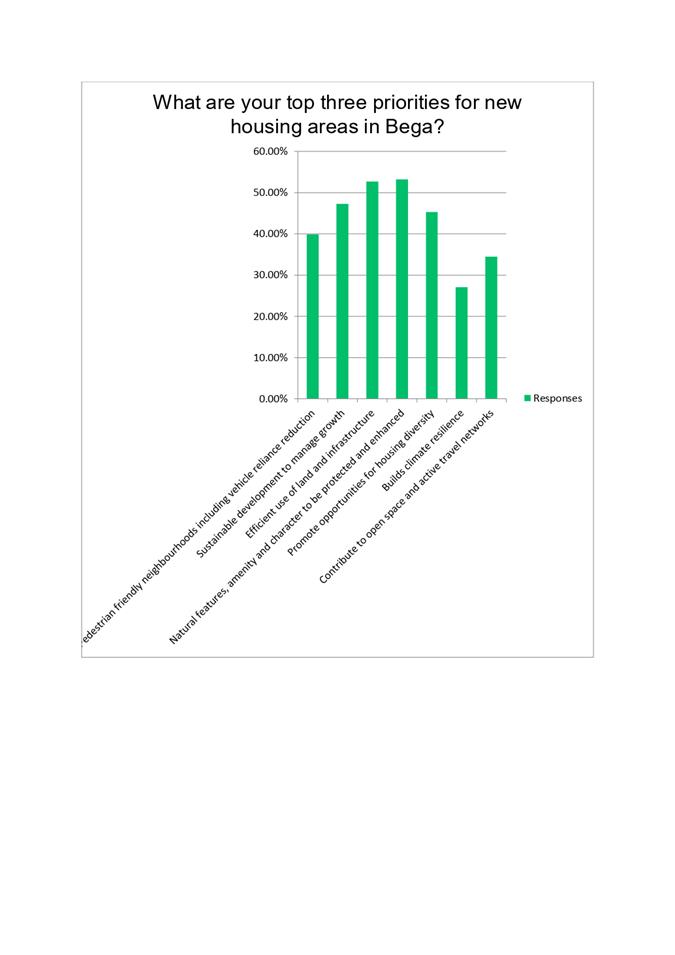
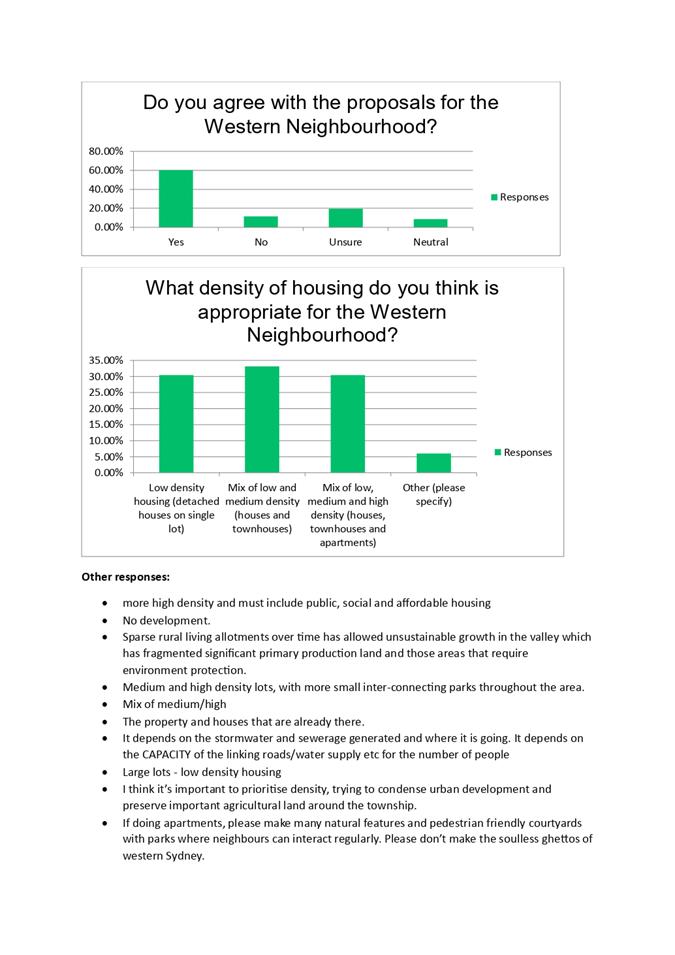
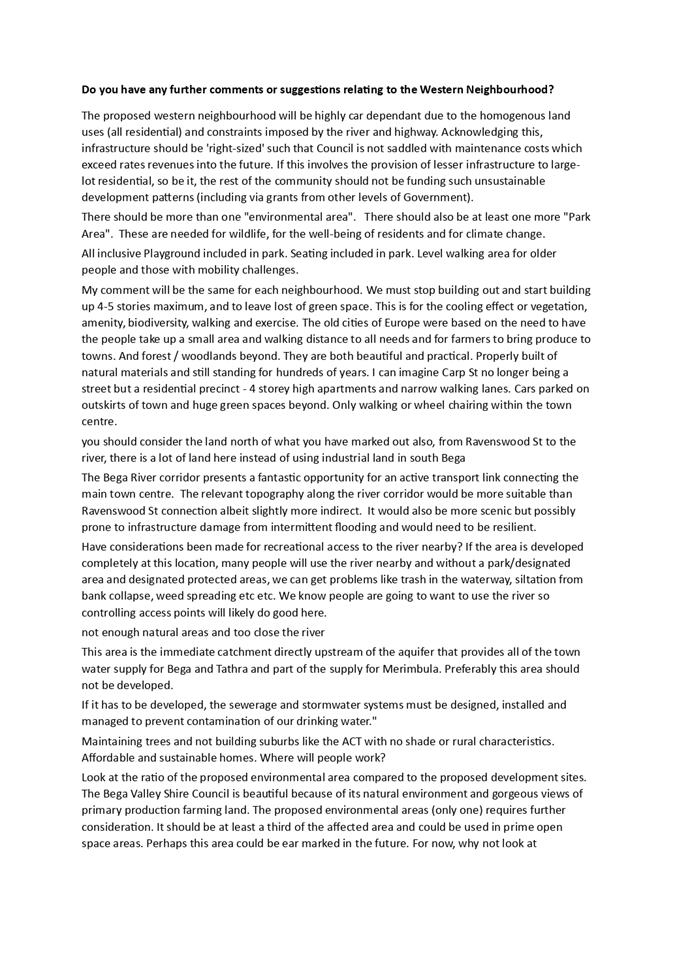
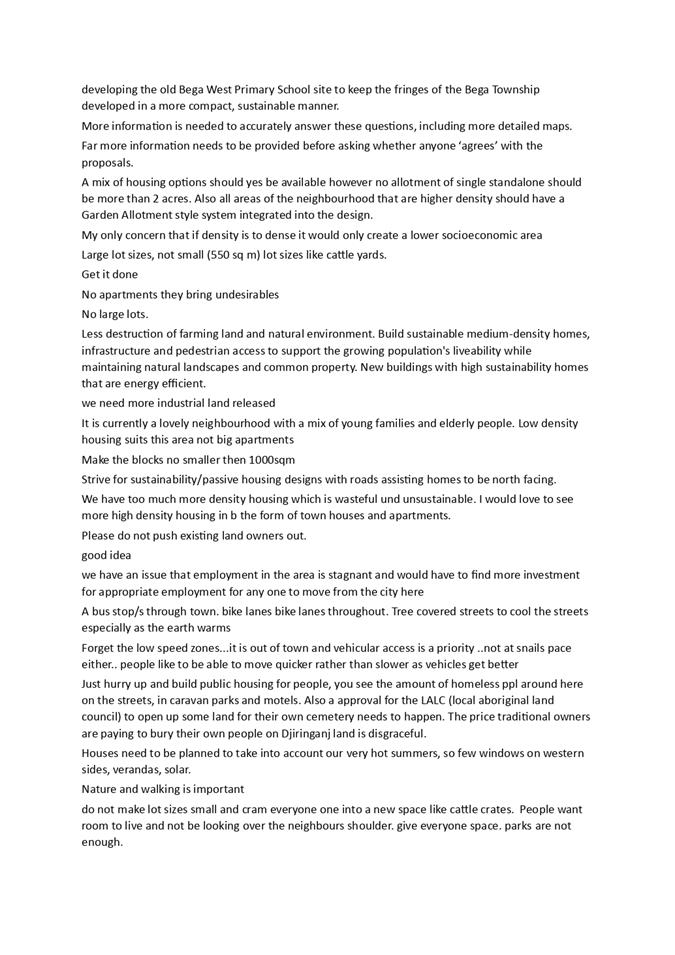
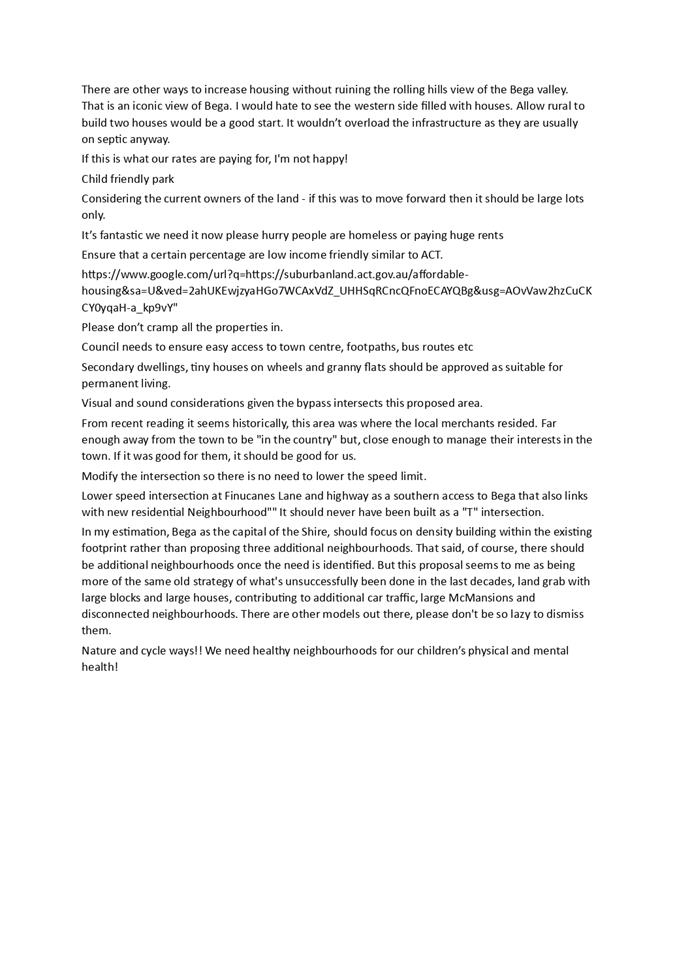
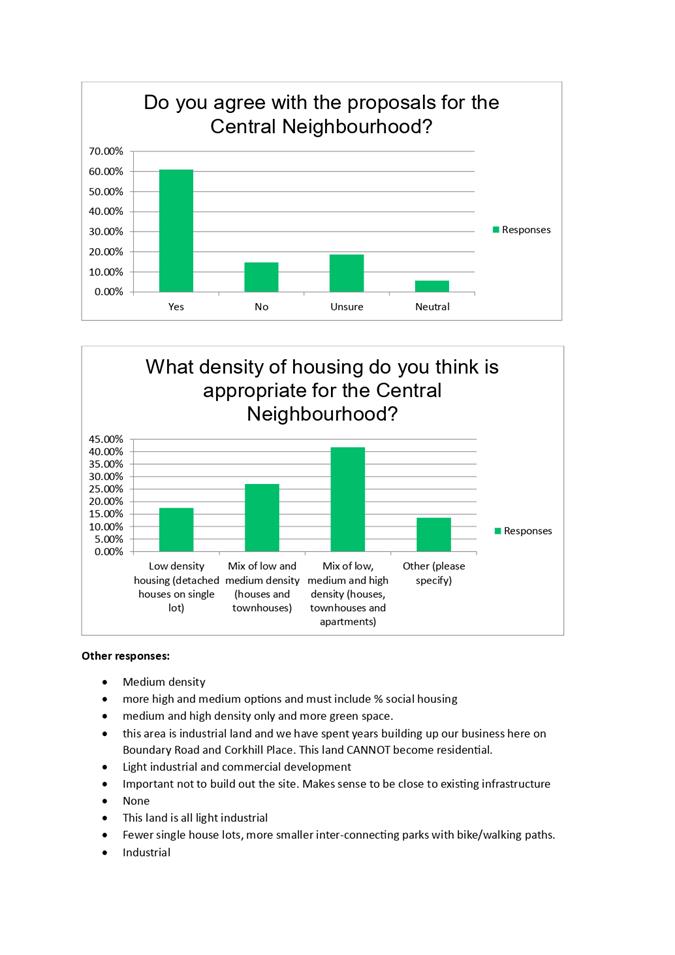
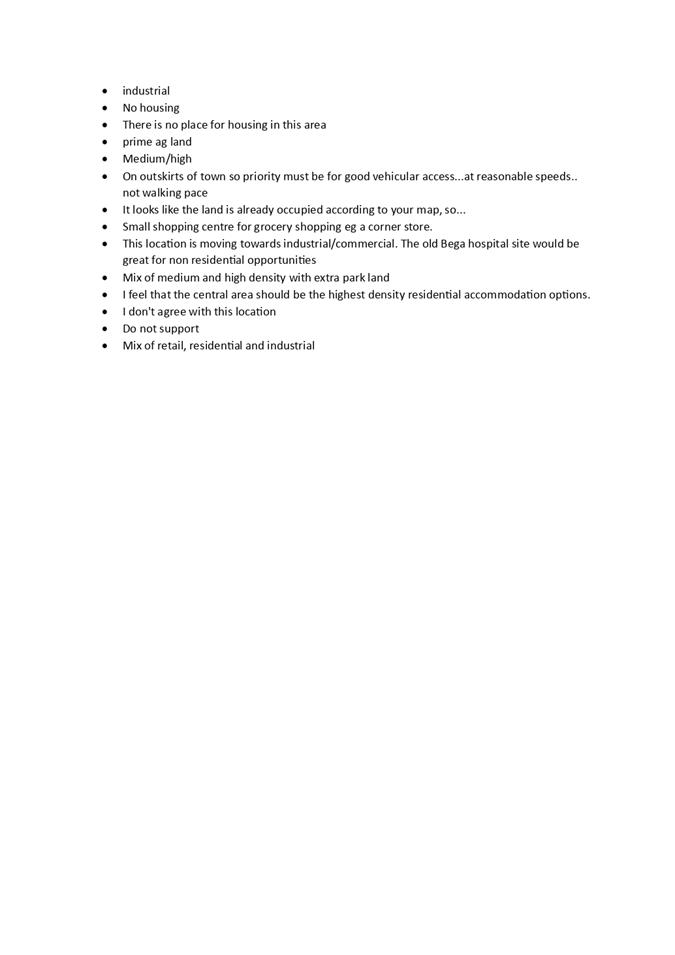
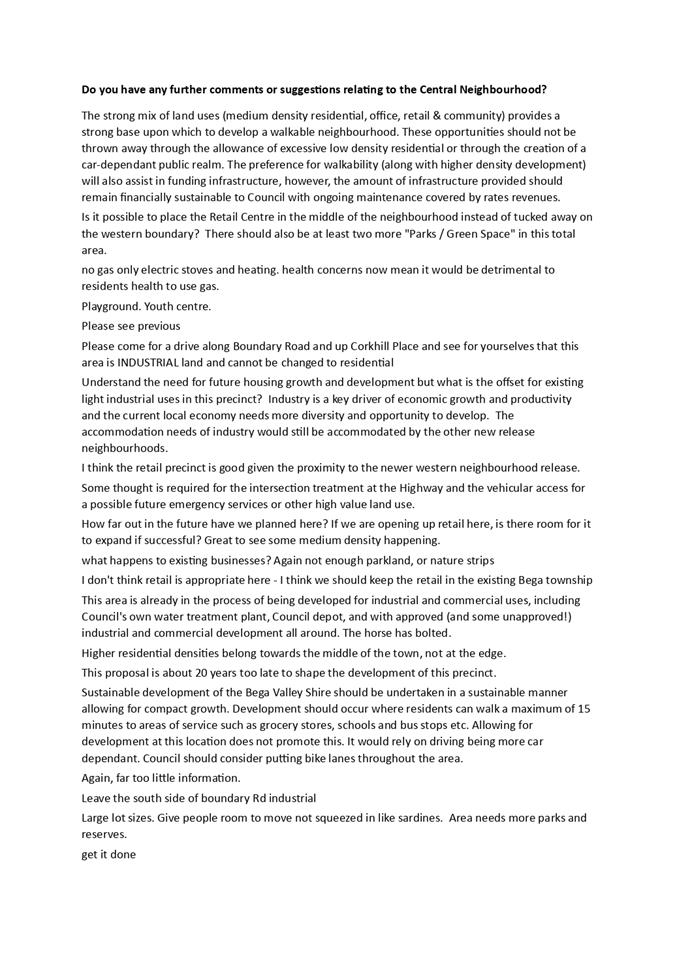
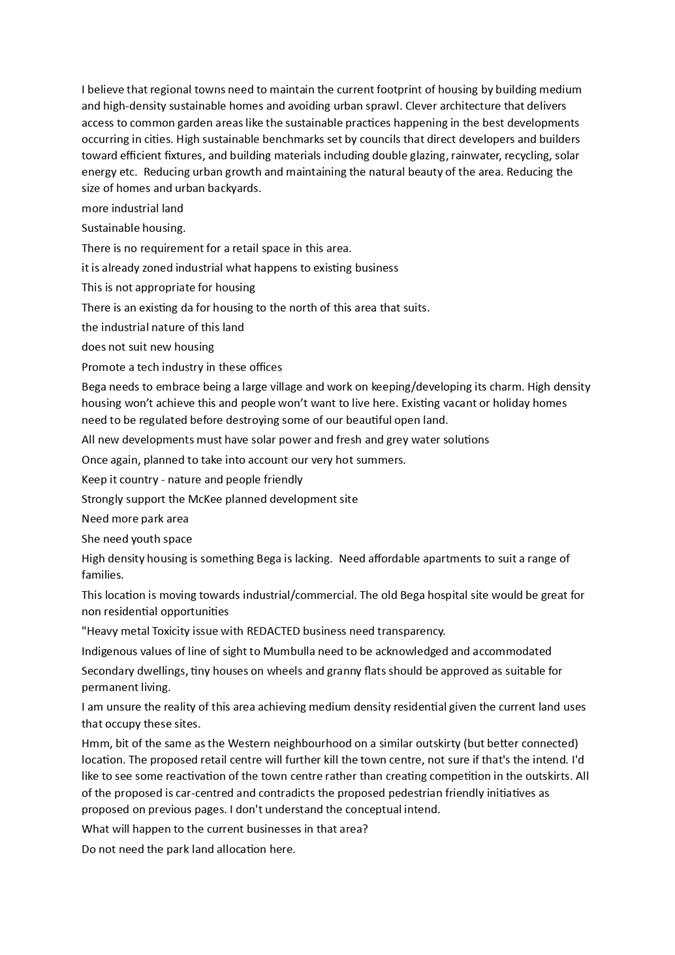
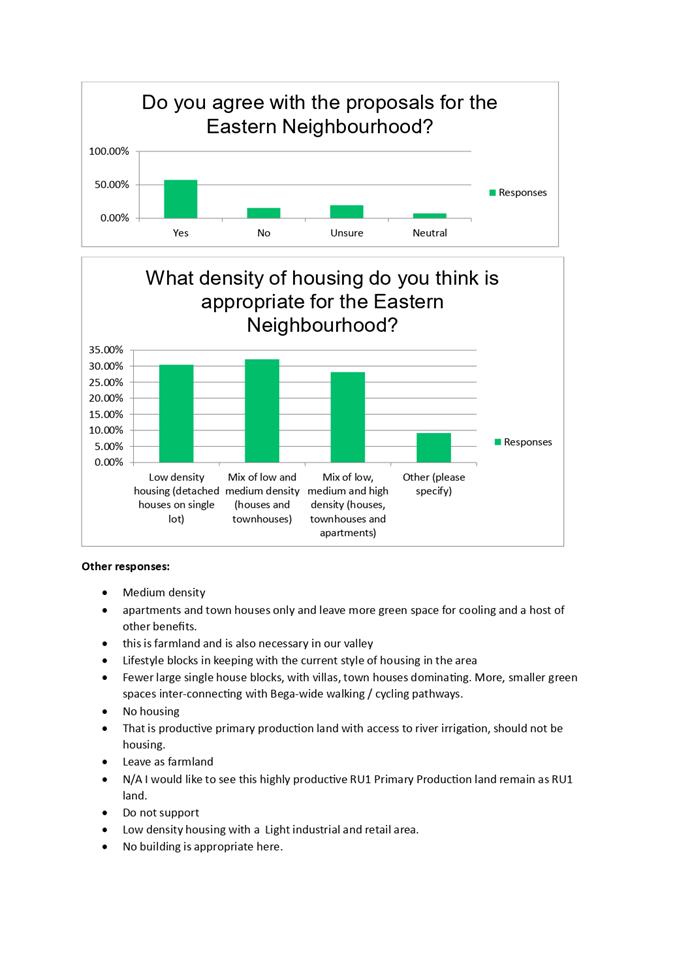
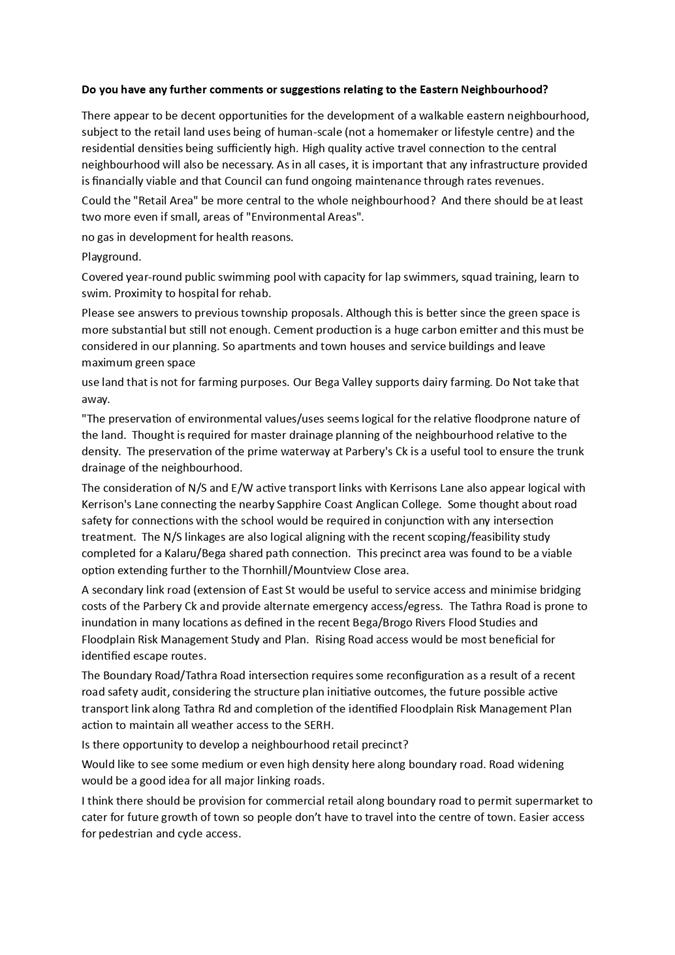
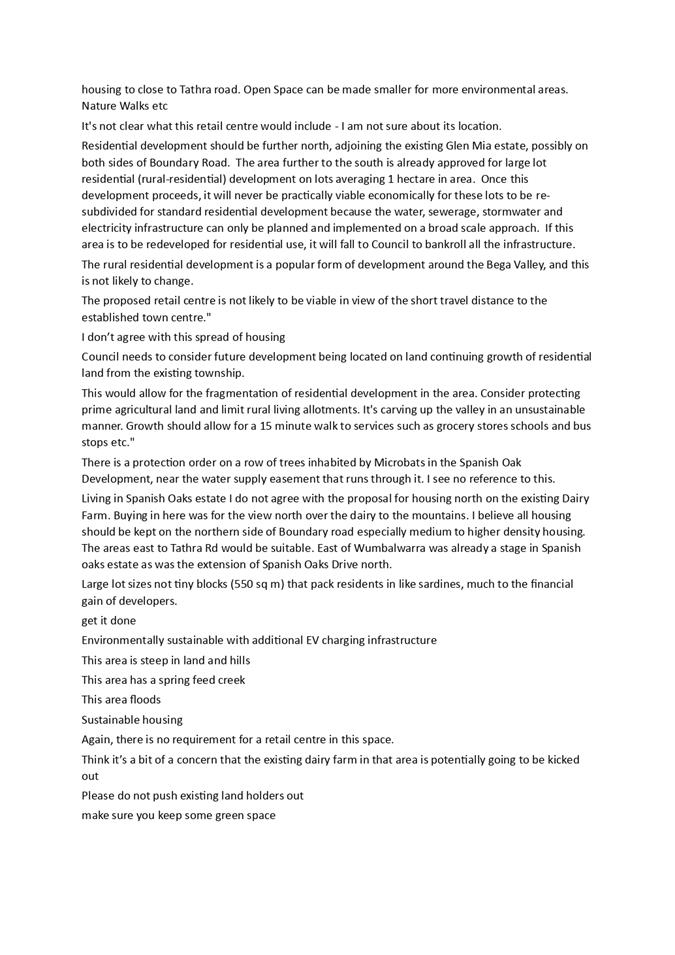
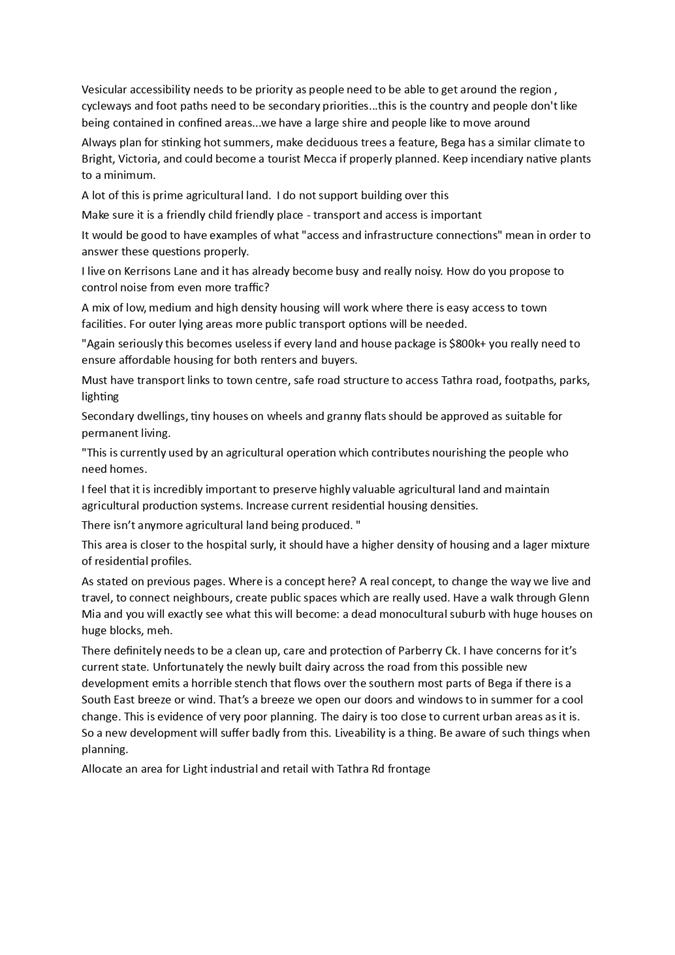
|
Council
|
12 June 2024
|
|
Item 8.2
- Attachment 5
|
Survey feedback to Wolumla Structure Plan
|
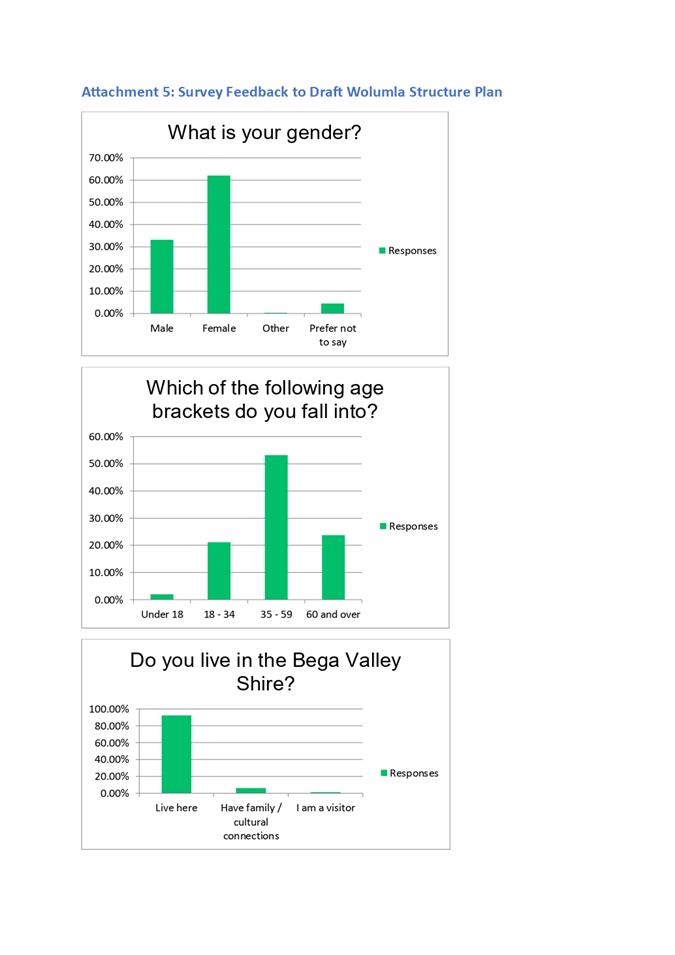
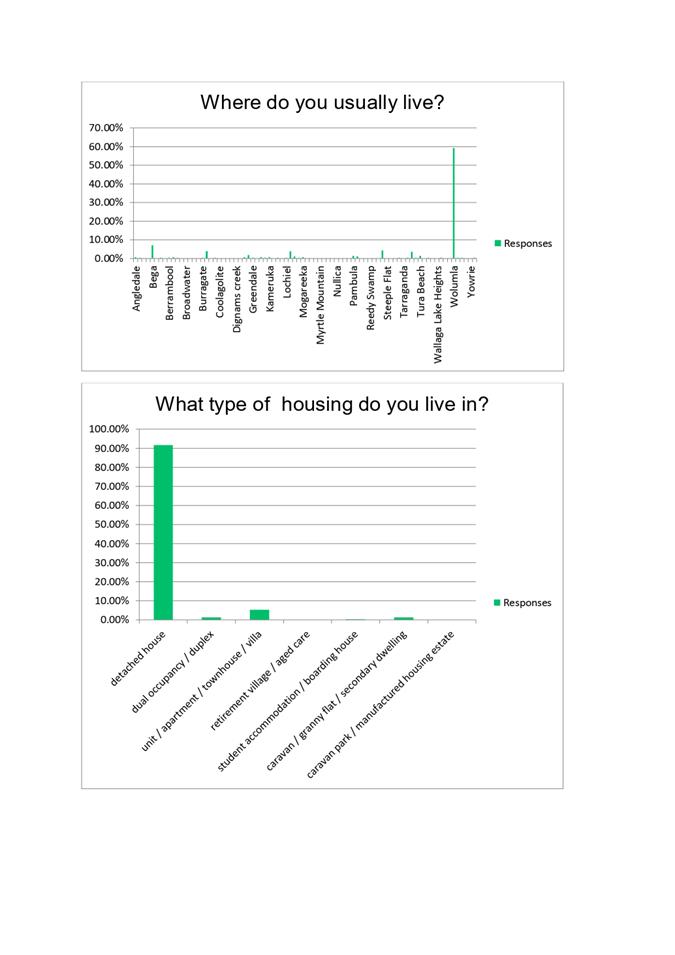
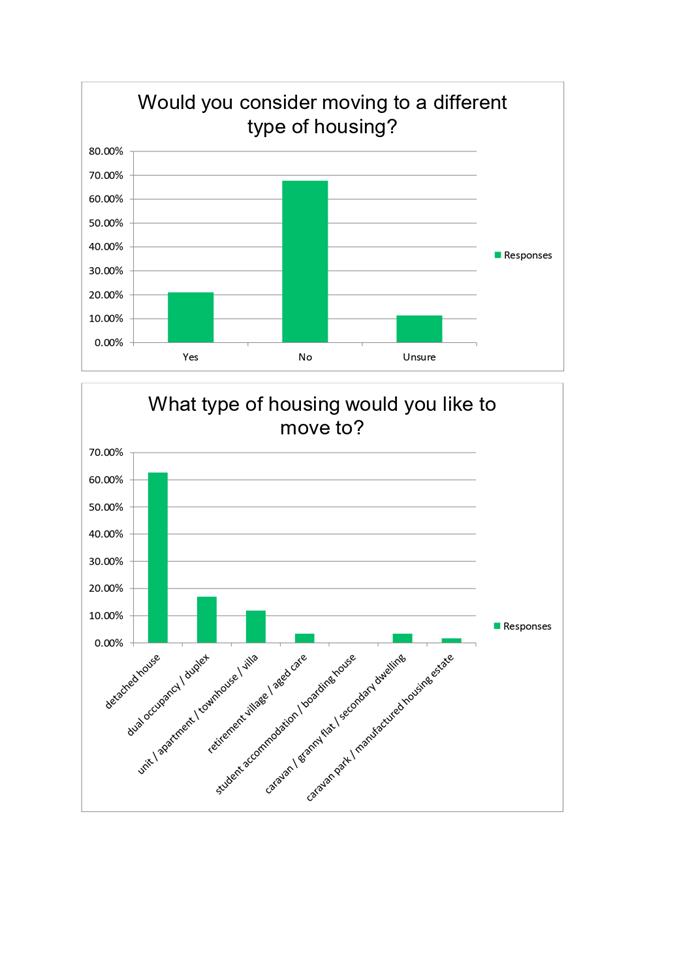
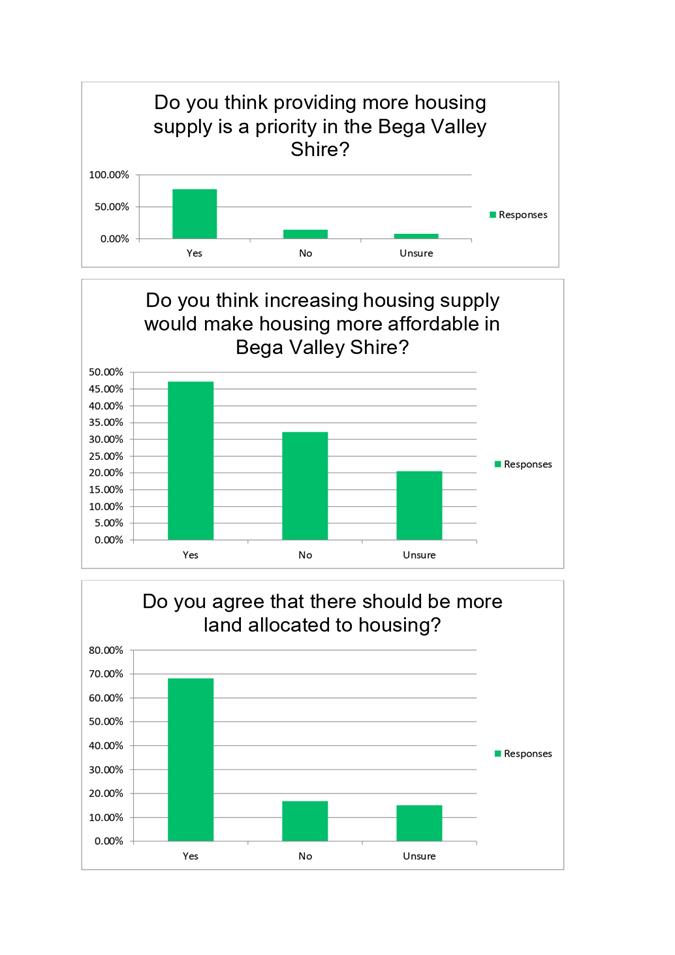
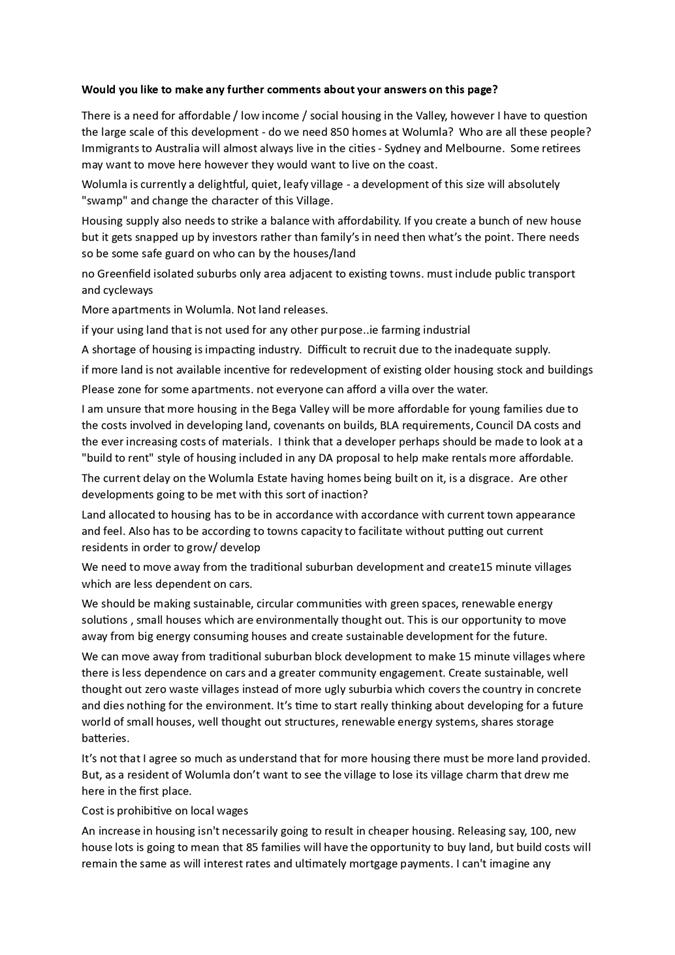

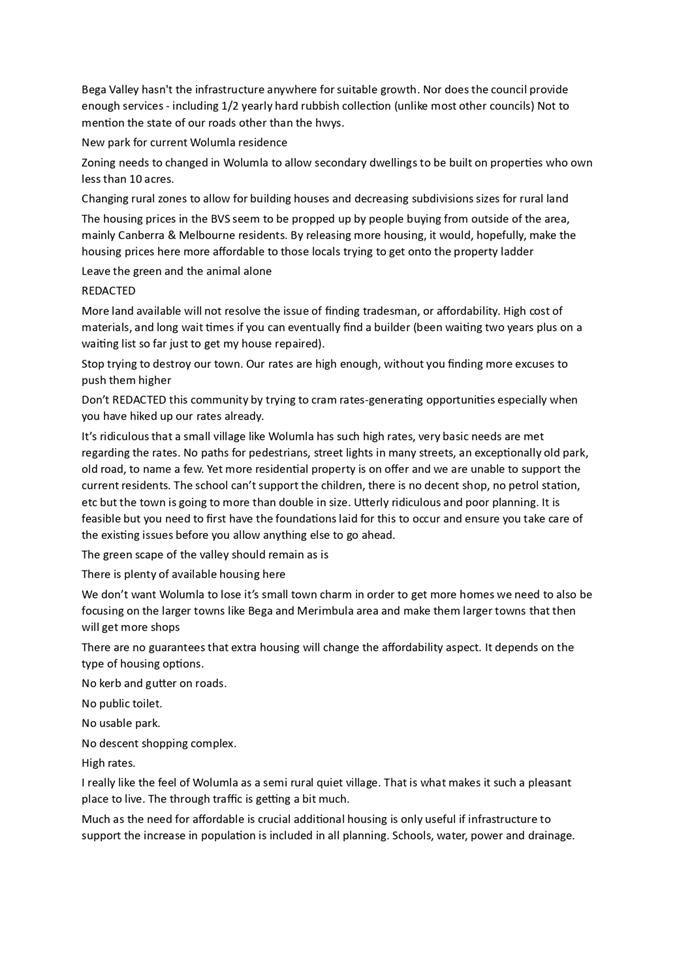
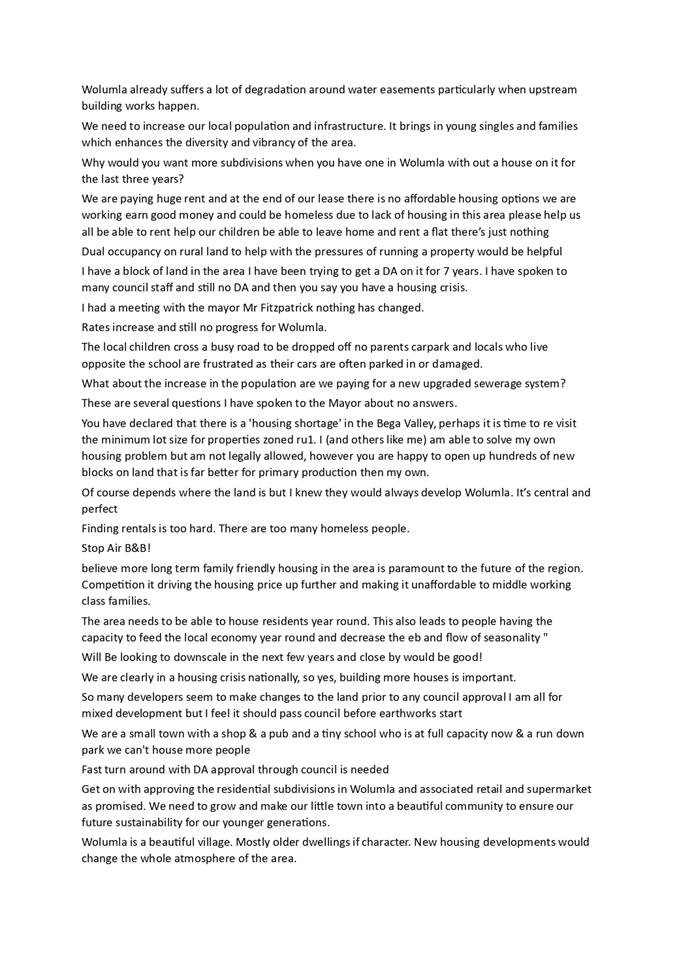
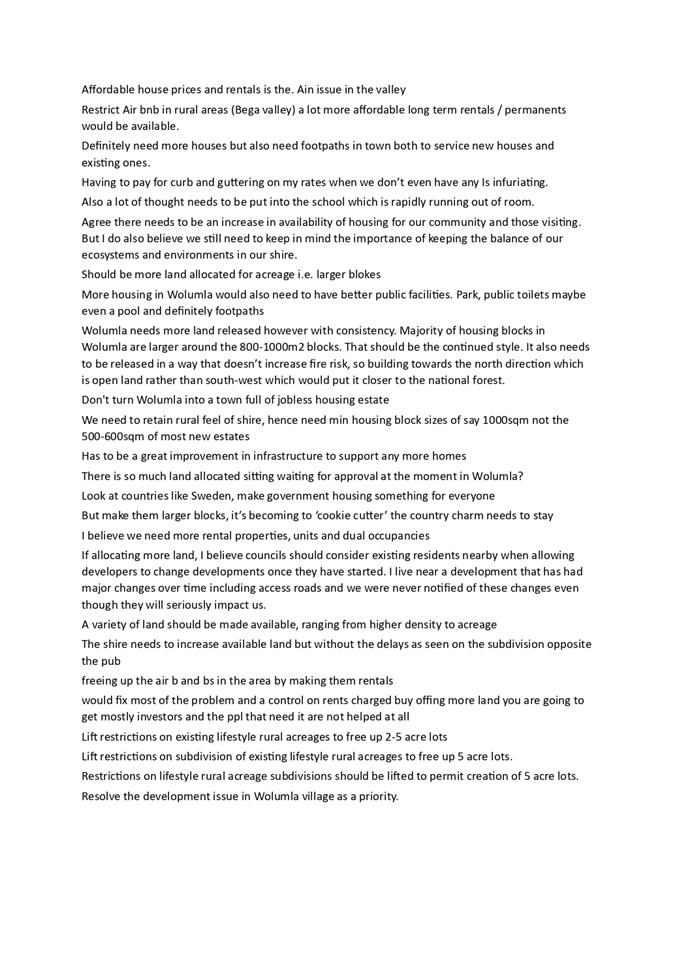
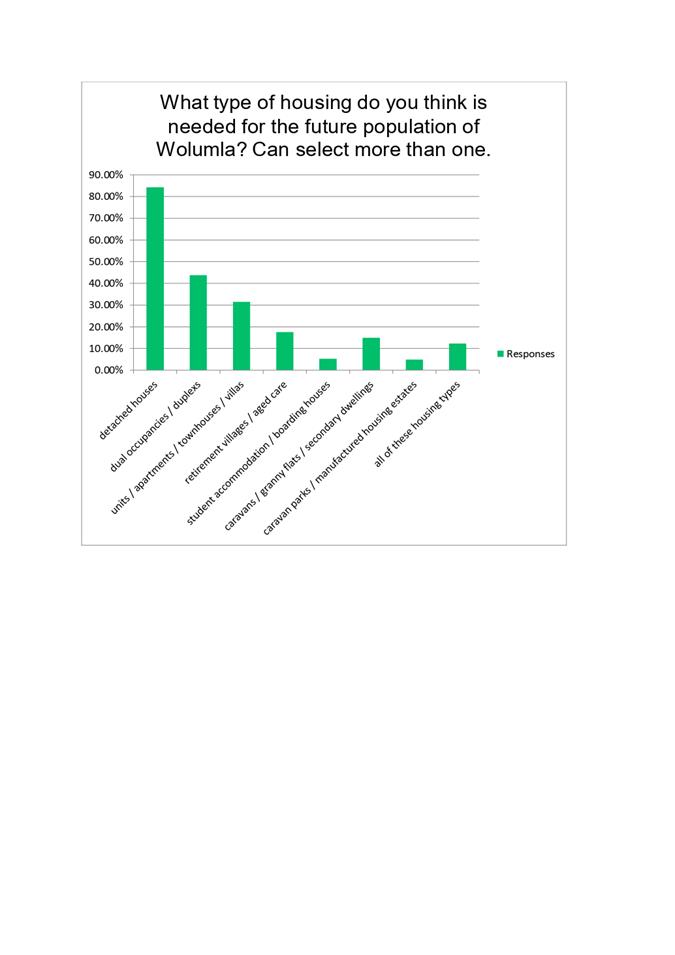
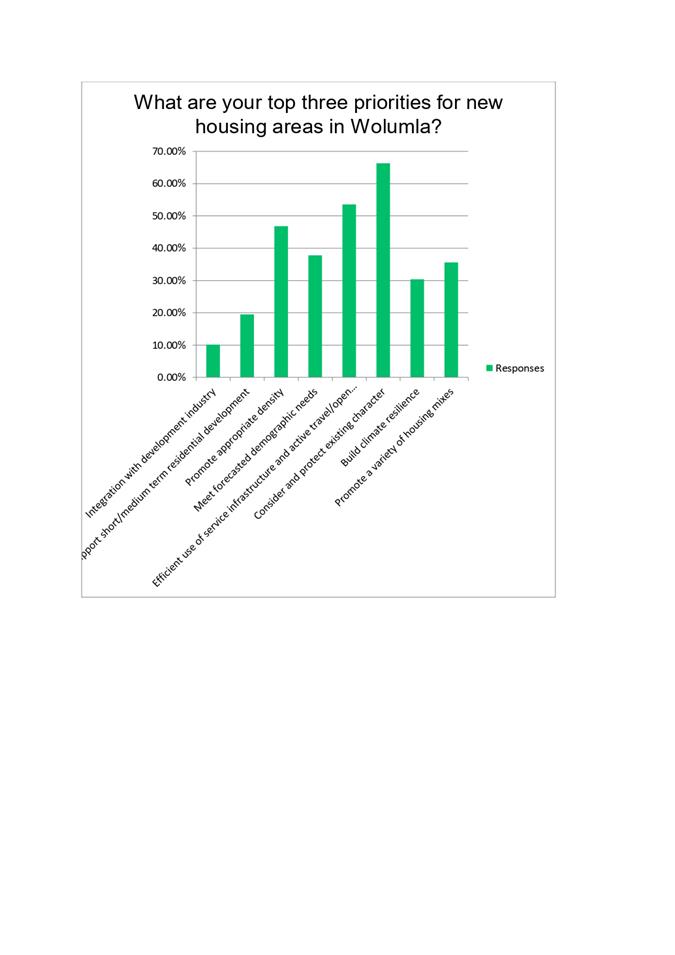
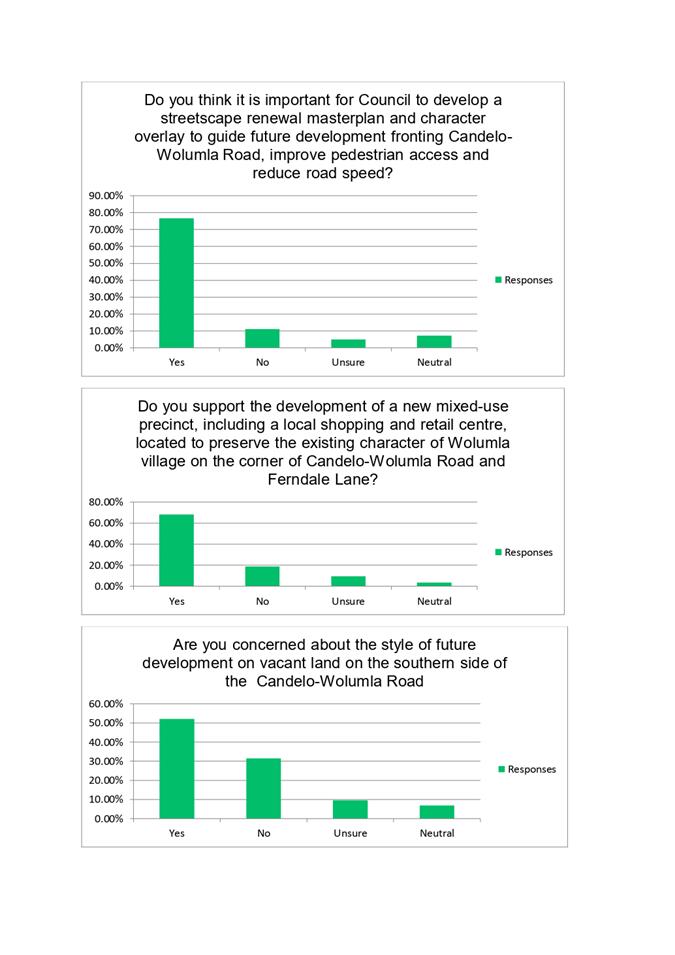
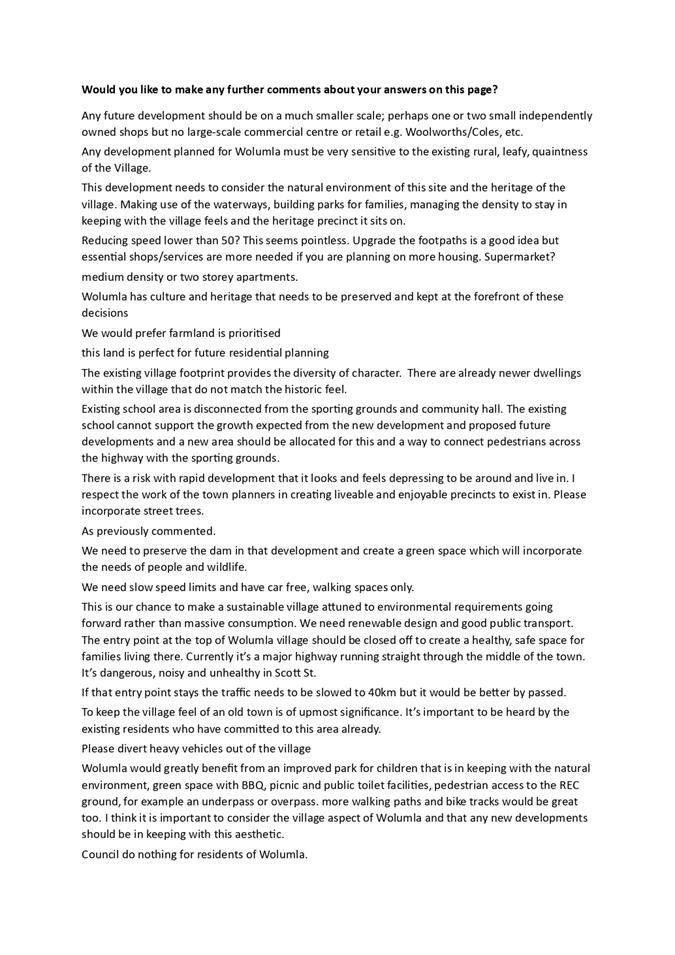
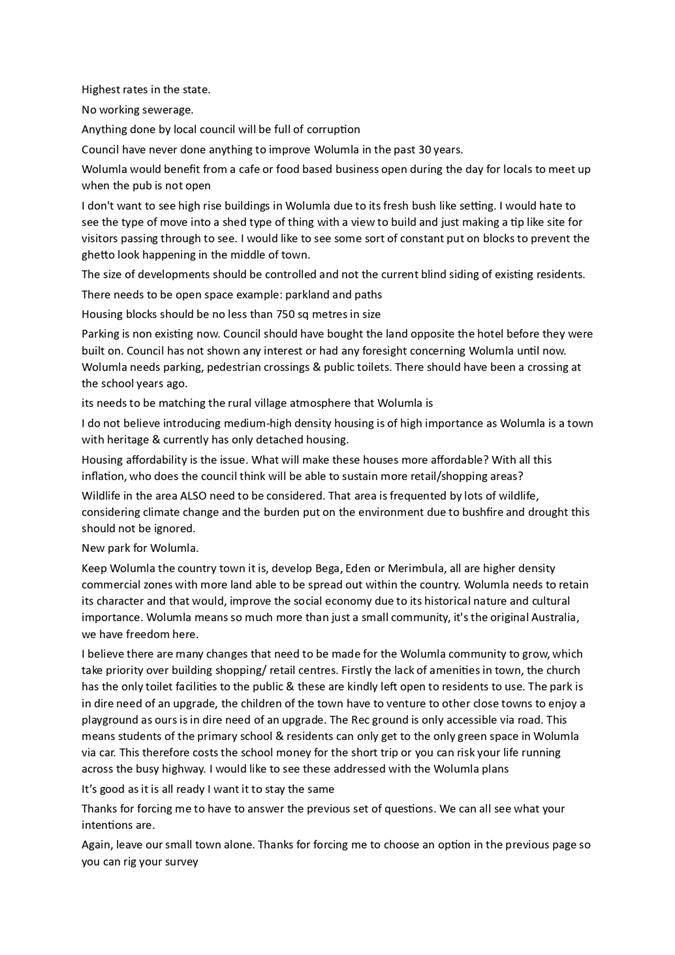
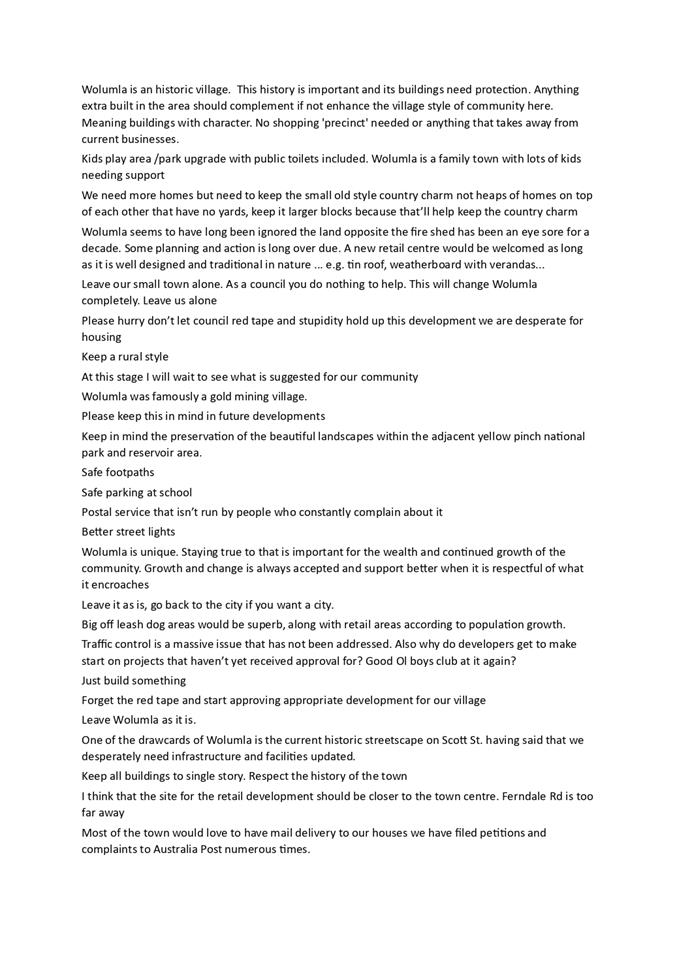
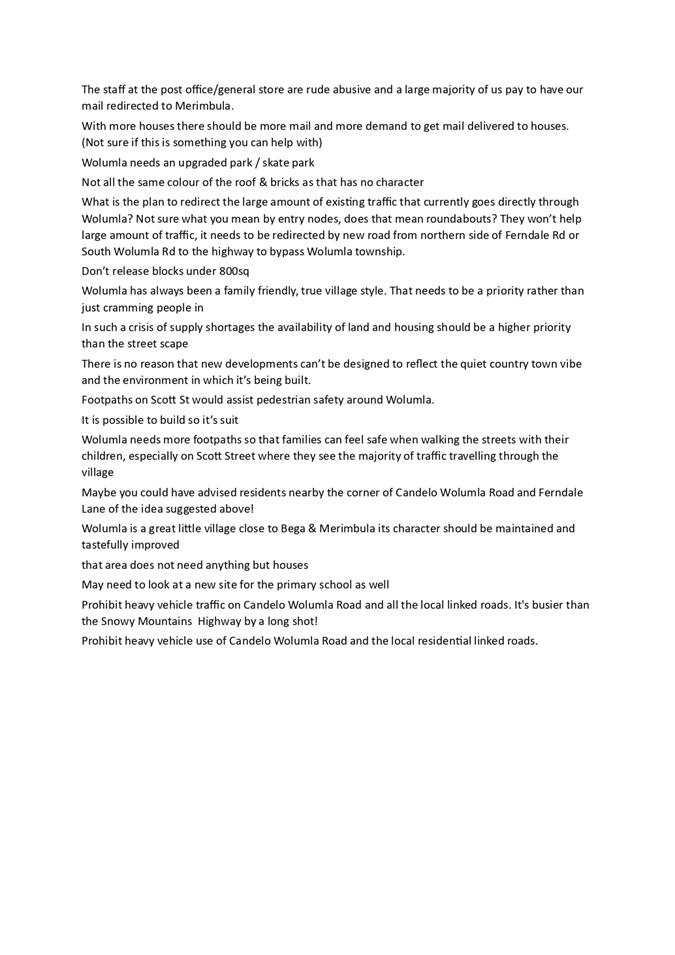
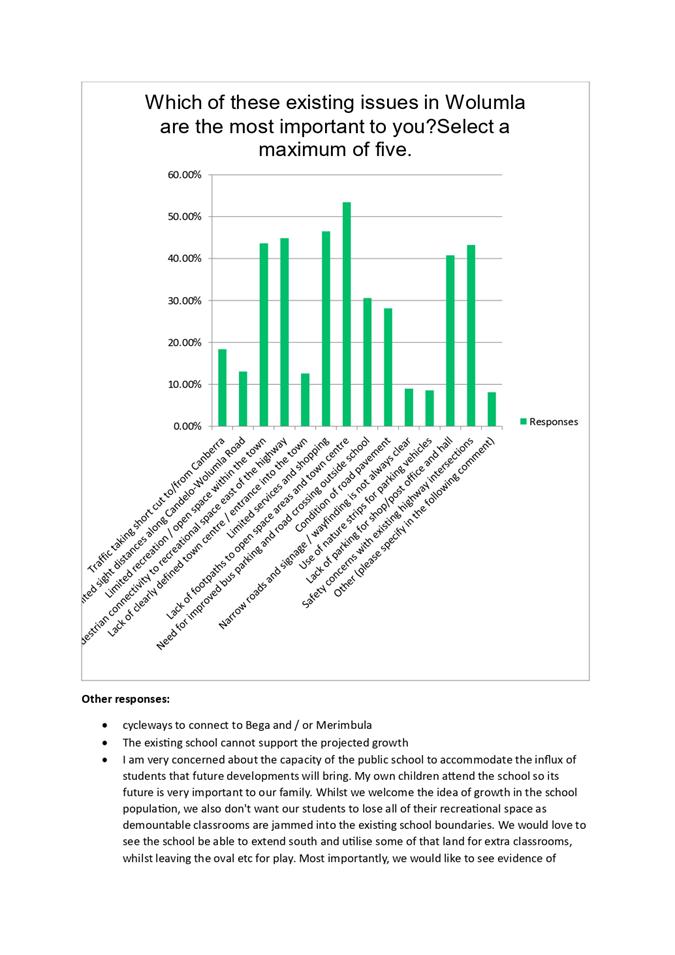
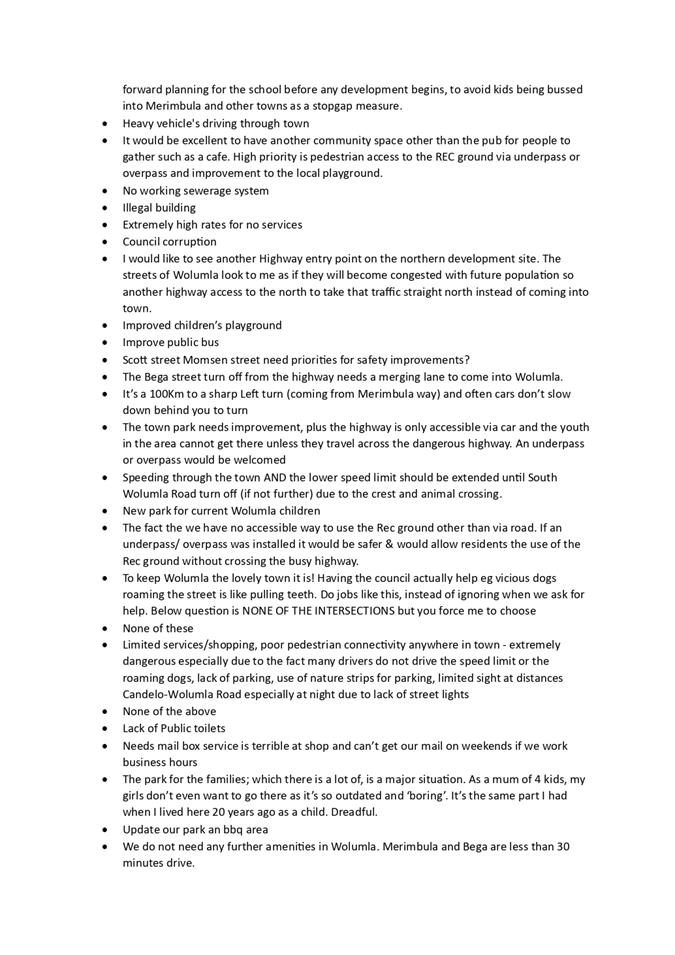
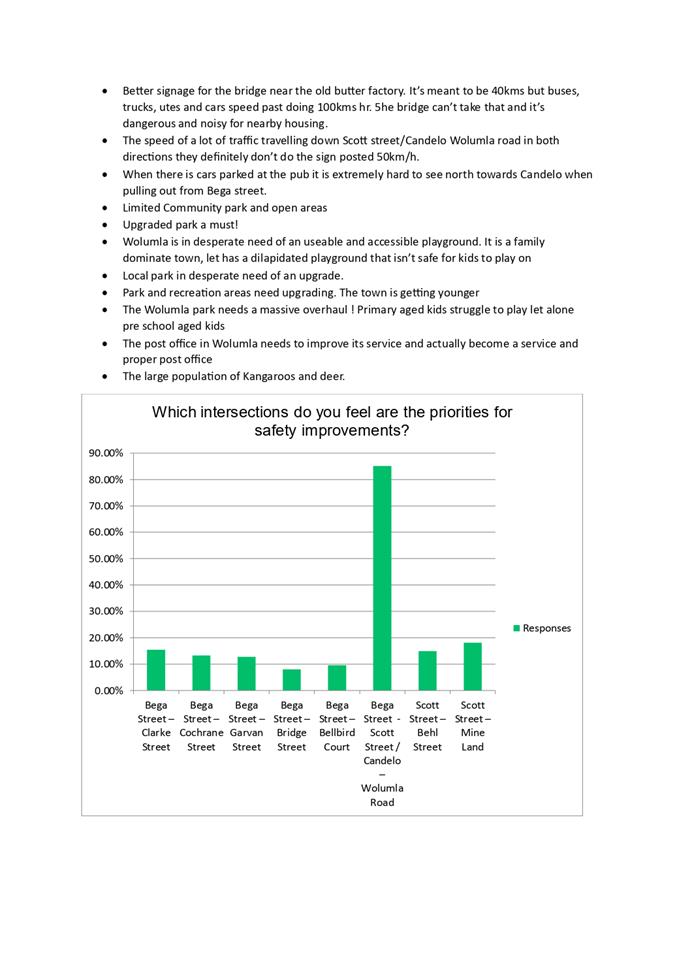
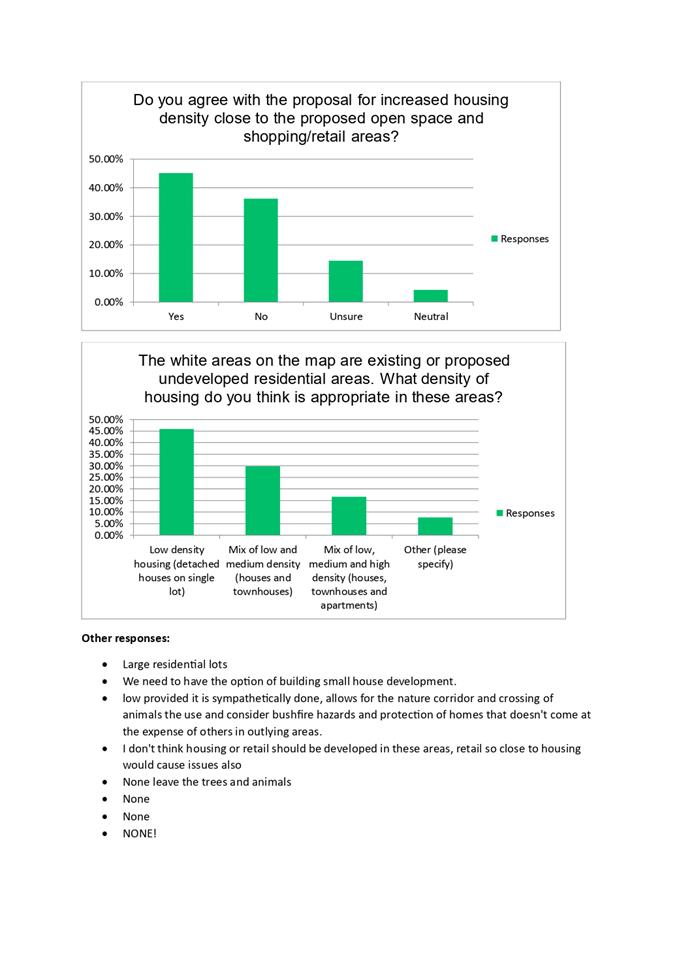
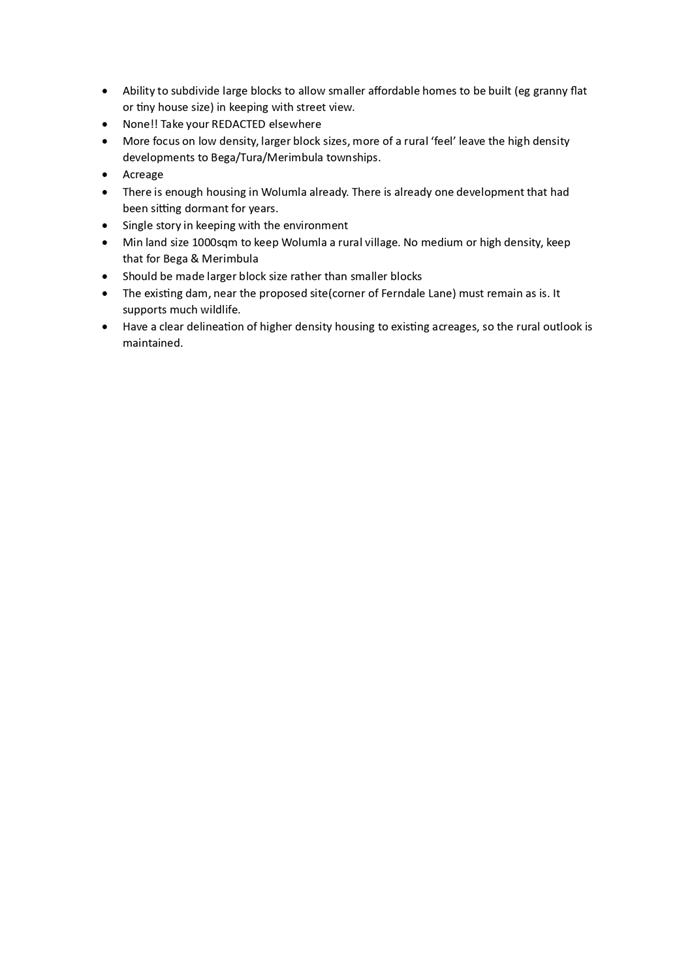
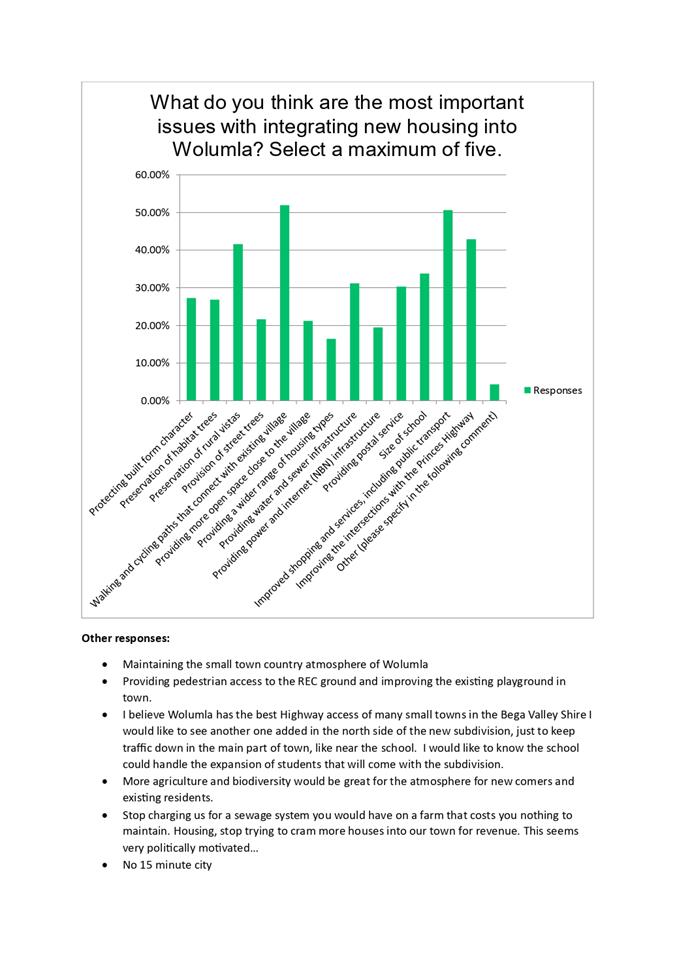
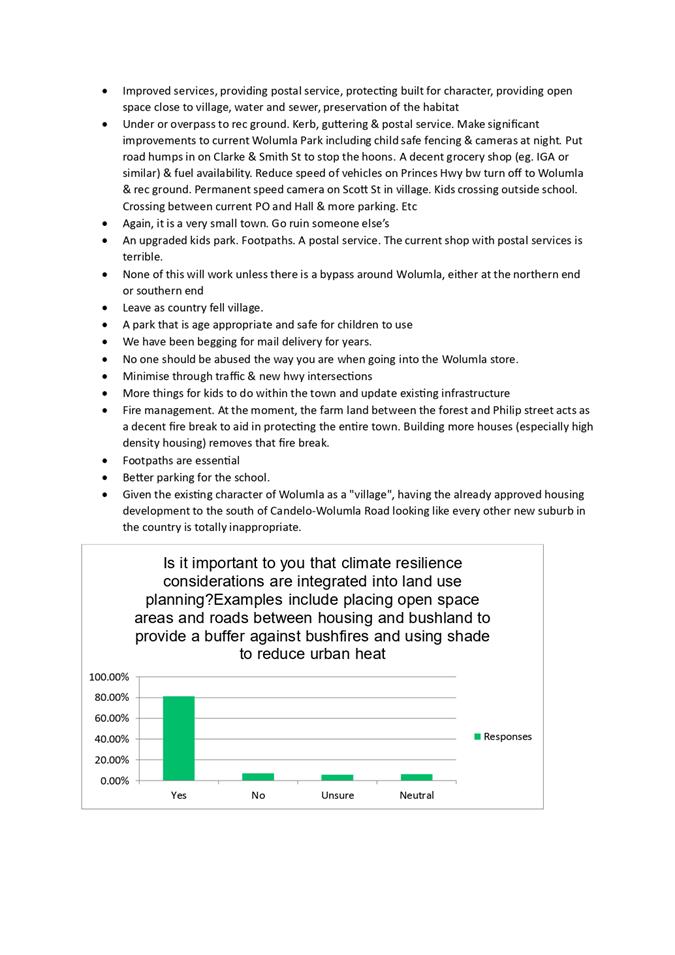
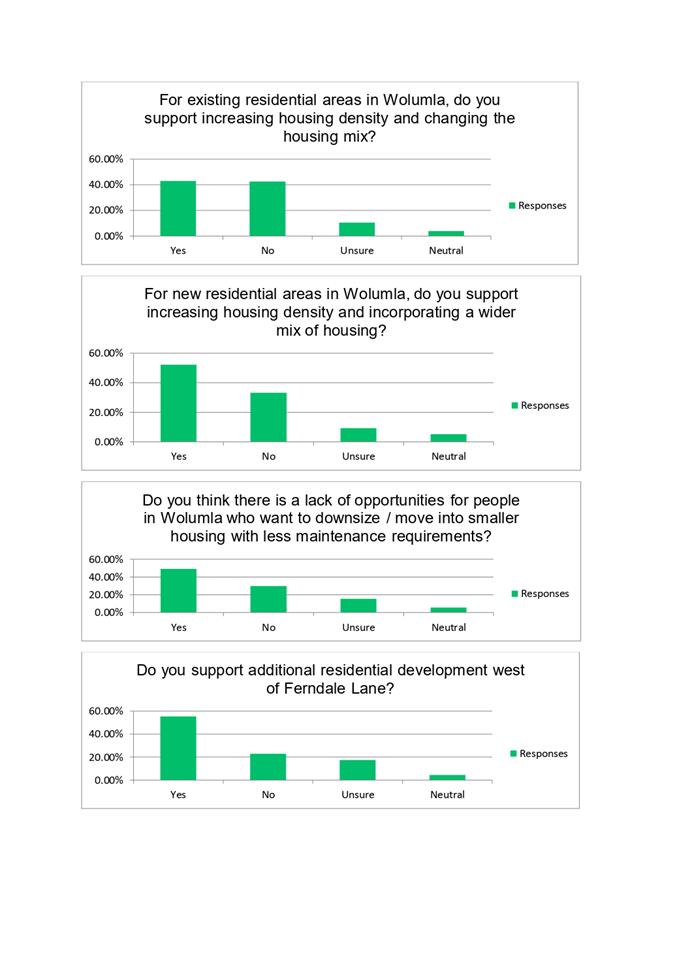
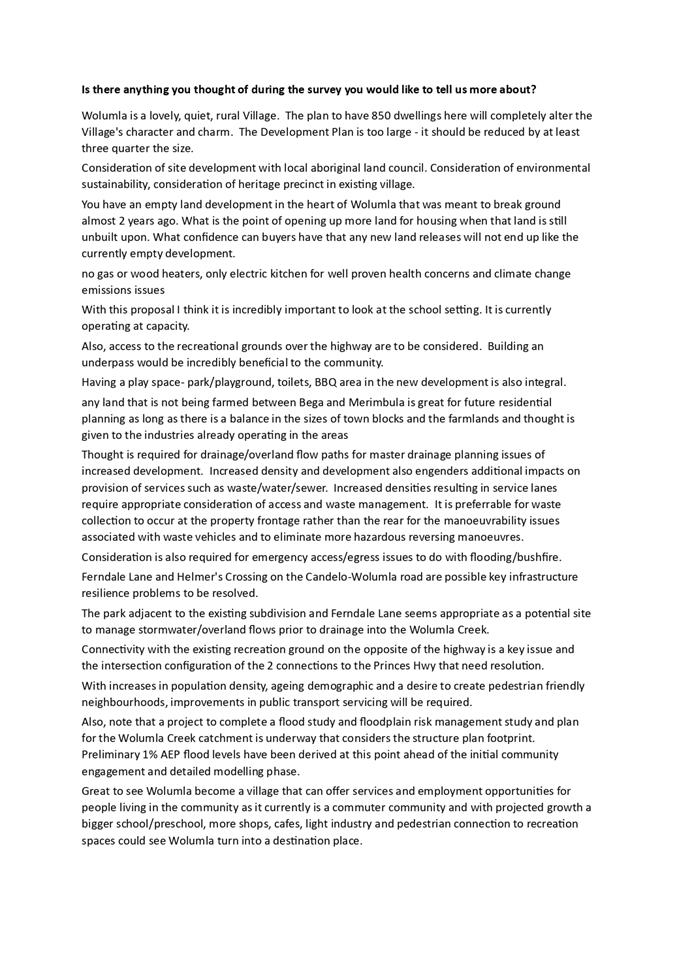
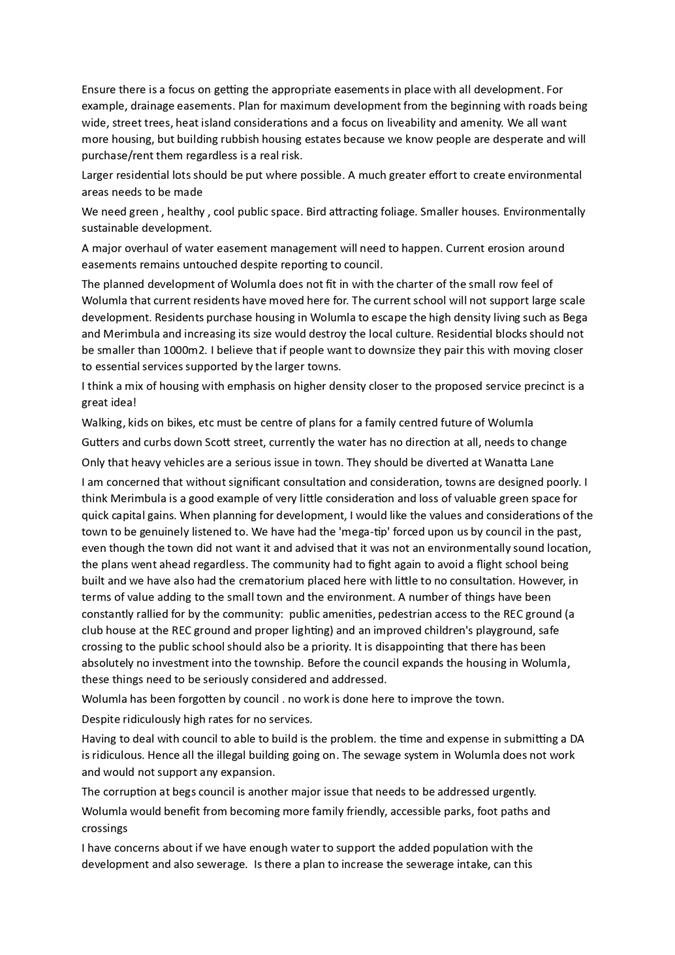
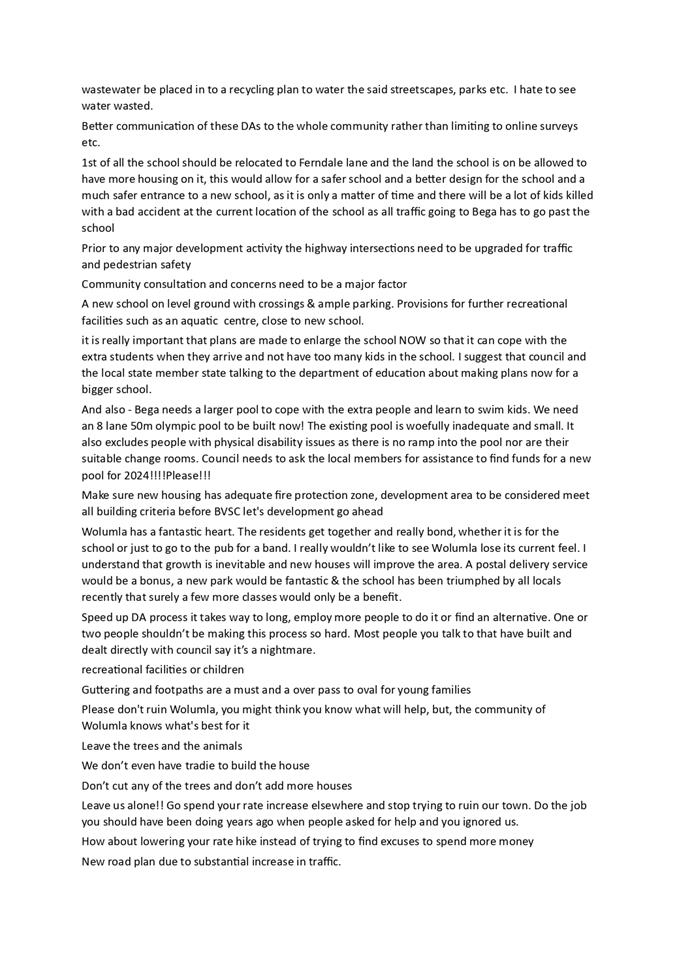
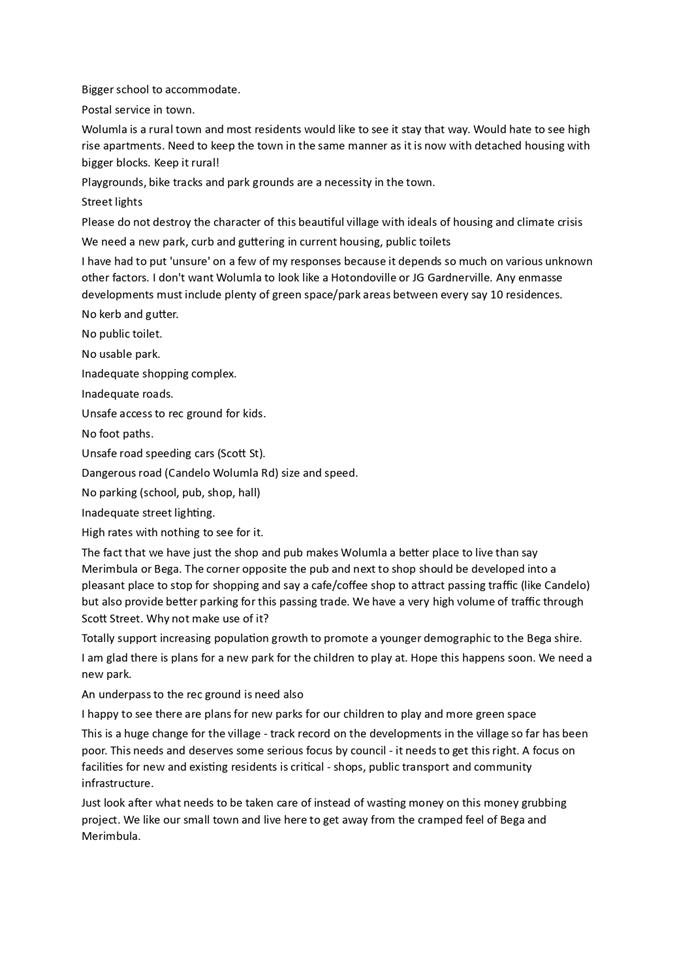



|
Council 12
June 2024
|
Item 8.3
|
8.3. Affordable
Housing Contributions
This report presents the findings
of the feasibility analysis for affordable housing contributions in the Bega
Valley Shire and seeks approval to develop an Affordable Housing Contributions
Policy.
Director Community Environment and Planning
Officer’s
Recommendation
1. That Council
note the Bega Affordable Housing Feasibility Analysis prepared by Atlas
Economics (Attachment 1).
2. That Council resolve
to prepare a draft Affordable Housing Contribution Policy.
3. That the draft
Affordable Housing Contribution Policy be reported to Council for consideration
when completed.
Executive Summary
The Bega Valley Shire Affordable
Housing Strategy includes an action to investigate and potentially develop
an Affordable Housing Contribution Scheme (AHC Scheme). Atlas Economics
were engaged to investigate whether contributions for affordable housing are
feasible in the Bega Valley Shire. The resulting Bega Affordable Housing
Feasibility Analysis (the study) contained in Attachment 1 to this report
demonstrates that there is an opportunity for Council to levy affordable
housing contributions in proponent-led ‘spot’ (site specific)
rezonings or Council-led planning proposals in some circumstances.
This report presents an overview of the findings of the
study and recommends that Council prepare an Affordable Housing Contribution
Policy (AHC Policy) as an interim measure until an AHC Scheme can be
implemented.
Background
Under Section 7.32 of the Environmental Planning and
Assessment Act 1979 land or contributions for affordable housing can be
levied through a development consent, subject to various requirements. Any
contributions received must be used for affordable housing and may not be used
for any other purpose (such as social housing, social support services,
community awareness, etc). Affordable housing is defined as housing that is
rented to very low, low and moderate income households. To be considered
affordable, rent must be less than 30% of gross income. The housing must be
managed and maintained for continued use as affordable housing.
Affordable housing contributions can be enabled by an AHC
Scheme or an AHC Policy. An AHC Scheme must specify what land it applies to and
accompany an amendment to the Bega Valley Local Environmental Plan 2013.
Alternatively, an AHC Policy can apply to proponent-led planning proposals and
provides the basis for planning agreement negotiations; their objective is to
send a signal to the market of Council’s intention.
Affordable housing contributions can only be applied when
additional development capacity is created by rezoning or amendments to
planning controls (such as height of buildings or floor space ratio) in areas
where there is an identified need for affordable housing, and it has been
demonstrated that imposing the contribution is feasible.
Strategy 17 of the Bega Valley Shire Affordable Housing
Strategy included a recommendation that Council consider the development of
an AHC Scheme in conjunction with proposed rezonings and conduct further
detailed investigations into the viability of such a scheme.
To implement this recommendation, Atlas Economics, in
collaboration with GLN Planning, were engaged by Council to assess the
viability of affordable housing contributions in the Bega Valley Shire and make recommendations on the potential for an AHC
Scheme, as well as to develop an AHC Scheme if recommended.
Key
Findings
The study examined the following key areas where
Council’s land use strategies or the Affordable Housing Strategy
identified greater housing opportunity through future rezoning or amended
planning controls:
• Additional
permissibility for multi-dwelling housing in the R2 Low Density Residential
zone shire wide
• Increased
densities in R3 Medium Density Residential zones in
Bega, Eden and Merimbula within 600m of the E2 Commercial Centre zone
• Rezoning
identified urban residential investigation areas in Bega from rural / large lot
zones to the R2 Low Density Residential zone.
The study demonstrates that development is feasible in some
circumstances in existing urban areas and in rezoned rural areas, subject to
environmental constraints and servicing. As the market for higher density
matures, the opportunity for affordable housing contributions will improve in
the Bega Valley Shire.
There is currently an opportunity for Council to levy
affordable housing contributions in proponent-led spot rezonings or Council-led
planning proposals. The contribution would be required on the additional
floorspace enabled through changes to planning controls or the additional
residential yield enabled by rezoning.
Permissibility of multi-dwelling housing in the R2
zone
The study found that affordable housing contributions are
not feasible in relation to additional permissibility for multi-dwelling
housing in R2 Low Density Residential zones. However, it did find that
permitting multi-dwelling housing in R2 Low Density Residential zones will
enable the market to opportunistically respond where a site can be secured at
an economic price and contribute to better housing diversity outcomes.
Conclusion: Increasing the permissibility of
multi-dwelling housing in the R2 Low Density Residential zone will assist
housing diversity but there is limited opportunity for affordable housing
contributions.
Changing R3 zone density controls
The study found that development of land with amended
density controls is likely to be opportunistic and located in high amenity
areas close to beaches and town centres where the high-end product helps offset
the cost of production. Where this occurs, there is modest capacity for
development to make an affordable housing contribution of 1% of the value of
the additional floor space enabled through the change to density controls.
Conclusion: Amending the R3 Medium Density Residential
density controls will see some take-up in high-amenity locations and there is
an opportunity for affordable housing contributions.
Rezoning of rural land for urban uses
The study found the additional value attributed to a
rezoning from rural or low intensity uses to low density residential uses will
have capacity to contribute to affordable housing, although this will be subject
to the cost of development and local infrastructure contributions. Demand for
low density residential land is robust and subdivision opportunities are likely
to be taken up subject to site and location attributes. In rural/ large lot
zones that are rezoned to residential there is capacity for development to make
an affordable housing contribution of 3% of the value of the additional
dwelling yield enabled through the rezoning.
Conclusion: Rezoning of rural land for urban uses has a
good prospect for take-up due to the lower cost of land and robust demand for
low density residential land which presents a key opportunity for affordable
housing contributions.
Governance arrangements
The study identified several governance and management
matters which need to be considered if affordable housing contributions were to
be received by Council (whether through planning agreements or as part of
conditions of consent). These include distribution and management of funds,
selection of affordable housing providers, and ongoing monitoring and reviews.
Recommendations
The study
found that affordable housing contributions are viable in some circumstances in
the Bega Valley Shire and recommended that Council proceed with developing an
AHC Policy as an interim measure until an AHC Scheme can be implemented.
The study
recommended that, should Council proceed with preparation of an AHC Policy, the
following matters will require further investigation:
• Contribution
rates for different scenarios and areas
• Potential
partnerships with Community Housing Providers and details of rental
arrangements.
Council’s AHC Policy would serve as a signal to
proponent-led planning proposals and inform planning agreement negotiations.
Affordable housing contributions would be contained in a planning agreement.
Once Council’s precinct planning has progressed to the
planning proposal stage, a Council-led planning proposal/s to amend planning
controls could be accompanied by an AHC Scheme to amend the Bega Valley
Local Environmental Plan 2013. A new affordable housing clause would be
inserted, and contributions would be required as a condition of development
consent. At this time, any land that was identified in both the AHC Policy and
Scheme would then be removed from the AHC Policy.
Options
Options available to Council are to:
1. Resolve
to prepare an AHC Policy to enable affordable housing contributions through a
planning agreement and progress with an AHC Scheme when appropriate. This is
the recommended option because it signals Council’s expectations to the
market so that those requirements can be factored-into site negotiations and
purchase decisions and acts to phase in contributions for affordable housing by
providing notice to developers of sites that have already been purchased. This
option would enable Council to collect contributions for affordable housing
through proponent led planning proposals prior to the implementation of an AHC
Scheme.
2. Not
develop an AHC Policy and resolve to wait until Council’s precinct
planning has progressed and develop an AHC Scheme. This option is not
recommended because much of the work required for both mechanisms is the same
and Council will be better prepared to develop an AHC Scheme when appropriate
if we proceed with an AHC Policy now.
3. Resolve
not to proceed with either an AHC Policy or Scheme. This option is not
recommended because it has been demonstrated that requiring contributions for
affordable housing is feasible in some circumstances and funds collected would
be allocated to the provision of affordable housing in the Bega Valley Shire.
Community
and Stakeholder Engagement
Engagement undertaken
A Councillor workshop was held on 8 February 2023 to inform
Councillors of the legislative framework for local infrastructure funding of
developer contributions. A representative of Atlas Economics presented the
findings of the AHC feasibility study at a Councillor workshop on 3 April 2024.
The study and Councillor presentation was circulated to Councillors and members
of the Affordable Housing Implementation Group via email on 22 May 2024.
Engagement planned
Draft policies are required to be publicly exhibited for a
minimum of 42 business days in accordance with the provisions of
Council’s policy 6.01 Governance and
procedure 6.01.1 Policy and procedure creation or amendment. Once an
AHC Policy has been drafted and endorsed by Council for public exhibition, it
is proposed to provide information about the draft policy through
Council’s newsletter, website, media release and social media and via
email to the Development Professionals Group.
Members of the community will be encouraged to provide
feedback through Council’s ‘Have Your Say’ webpage.
Public exhibition of an AHC Scheme, once endorsed by Council
for progression, would take place in conjunction with the associated planning
proposal in accordance with the Gateway Determination and Council’s Community
Engagement Strategy.
Financial
and Resource Considerations
The project was funded through local infrastructure
contributions plan revenue as part of the $160,000 budget allocation to develop
and deliver a new local infrastructure contributions plan and planning
agreement policy, including investigation and development of an AHC Scheme.
The affordable housing contributions component of the
project is $60,000. Development of the affordable housing contributions policy
recommended in this report is included in the existing budget allocation for
this project.
Legal
/Policy
Local infrastructure contributions are levied under section
7.32 of the Environmental Planning and Assessment Act 1979.
Impacts
on Strategic/Operational/Asset Management Plan/Risk
Strategic
Alignment
The project aligns with the strategic objective of the Bega
Valley Community Strategic Plan 2042: ‘Our local civic leadership is
strong, consultative and responsive to our community’s needs’.
The project aligns with Planning Priority 11 Housing:
‘Residential areas provide a range of housing styles, sizes and tenures
that suit people of all ages, income levels and household sizes and enable
communities to stay connected and healthy as people move through the various
stages in life.’
The project will deliver Strategy 17 of the Bega Valley
Shire Affordable Housing Strategy: ‘In conjunction with any proposed
rezoning … conduct further detailed investigations into the viability of
a Housing SEPP 2021 Affordable housing contributions scheme.’
The project aligns with the following key response areas of
the Bega Valley Shire Climate Resilience Strategy: Liveable and
connected places and Safe, healthy and inclusive community.
Environment
and Climate Change
Application of an AHC Scheme or Policy will not have an
adverse impact on the environment.
Economic
Application of an AHC Scheme or
Policy will provide a source of funding
for affordable housing projects in the shire.
Risk
Risks to
Council from the application of an AHC Scheme or Policy will be addressed
through development of an appropriate governance framework for the collection
and expenditure of funds received through the scheme.
Social
/ Cultural
Application of an AHC Scheme or
Policy will provide a source of funding for the provision of housing that will
benefit members of the local community.
Attachments
1⇩. Bega
Affordable Housing Feasibility Analysis
|
Council
|
12 June 2024
|
|
Item 8.3
- Attachment 1
|
Bega Affordable Housing Feasibility Analysis
|
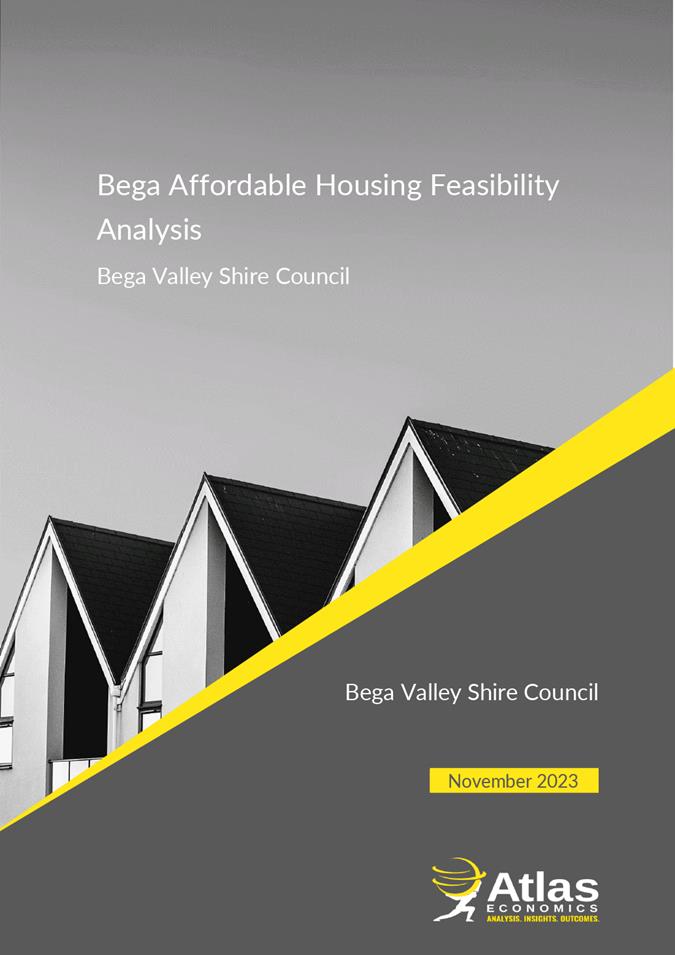
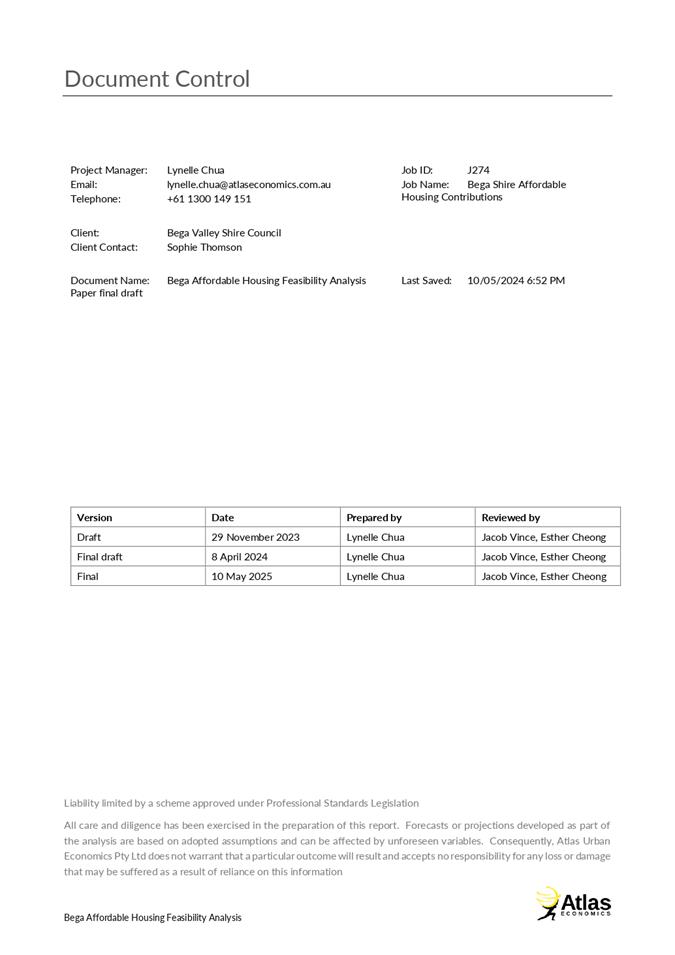
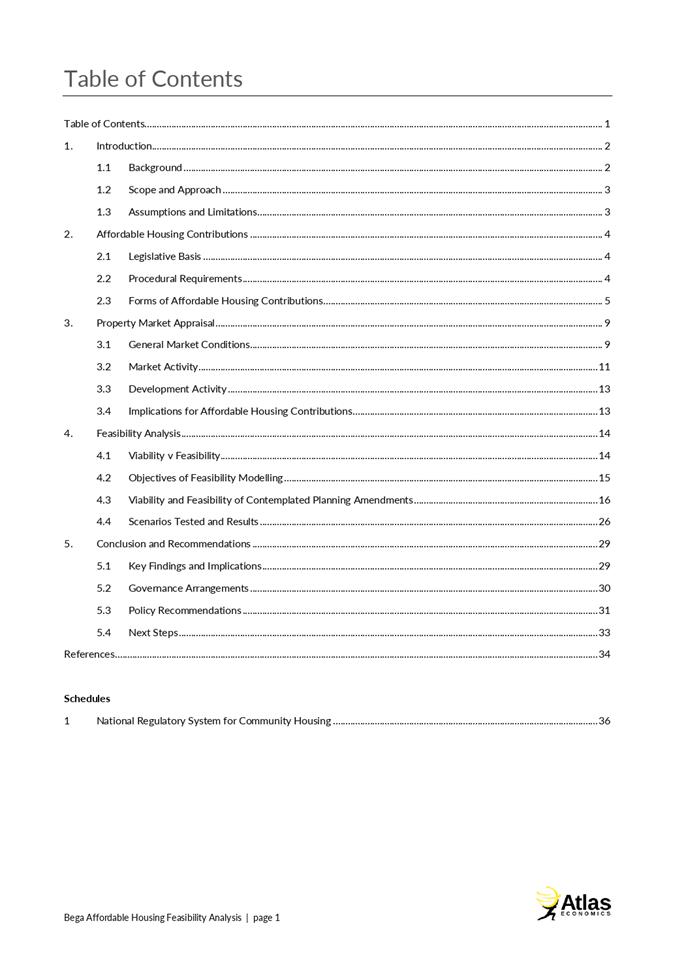
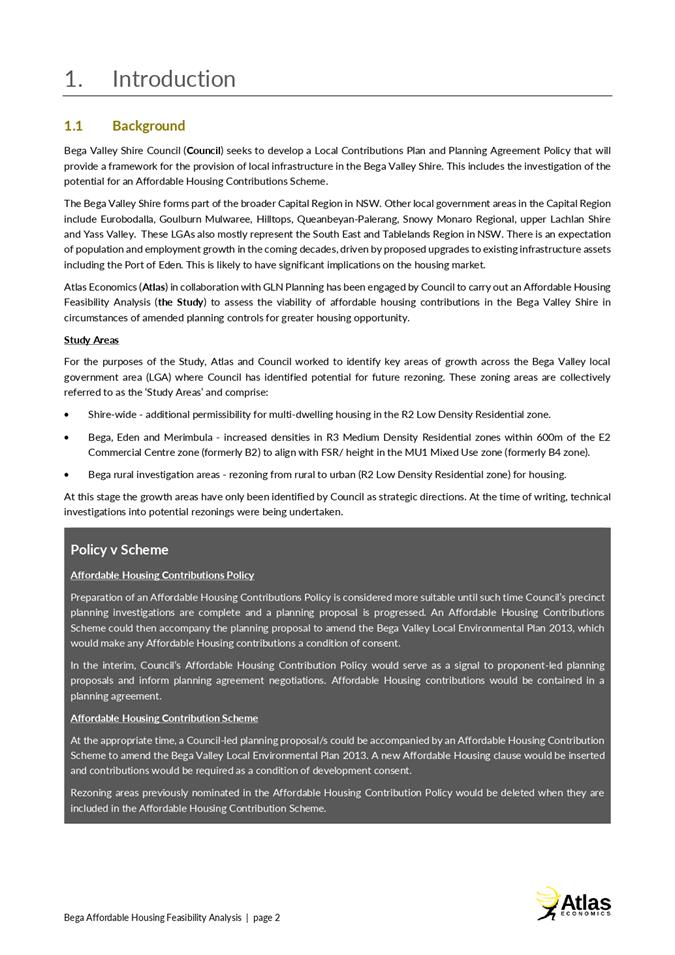
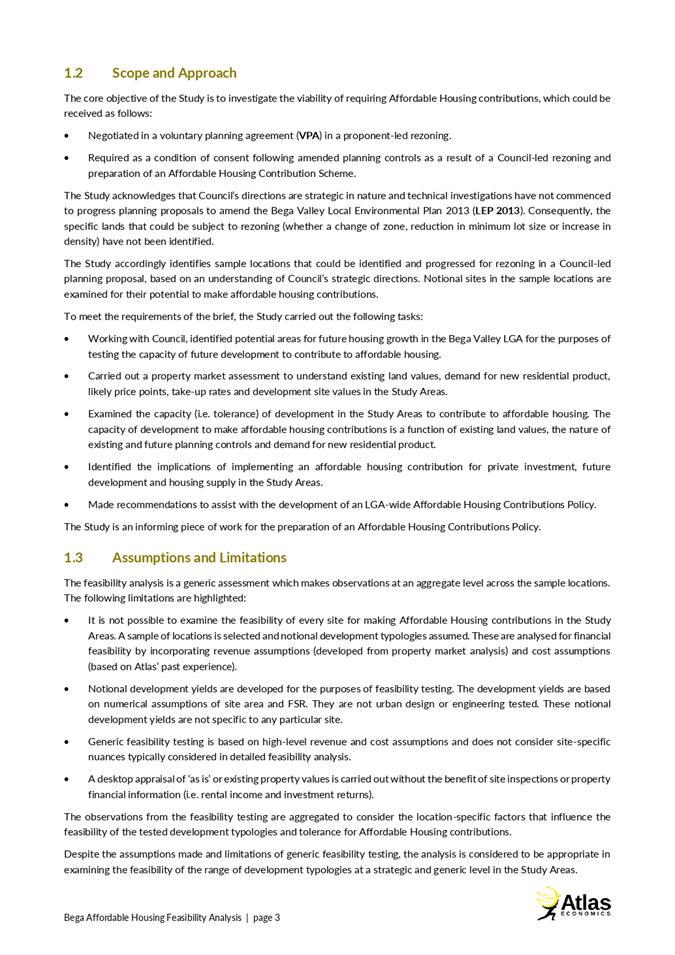
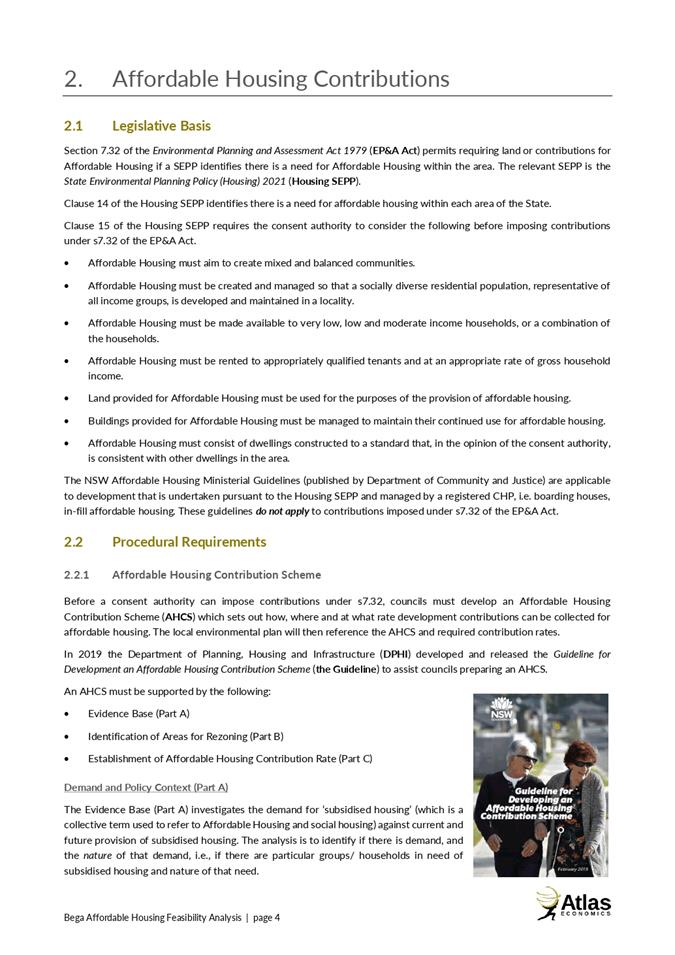
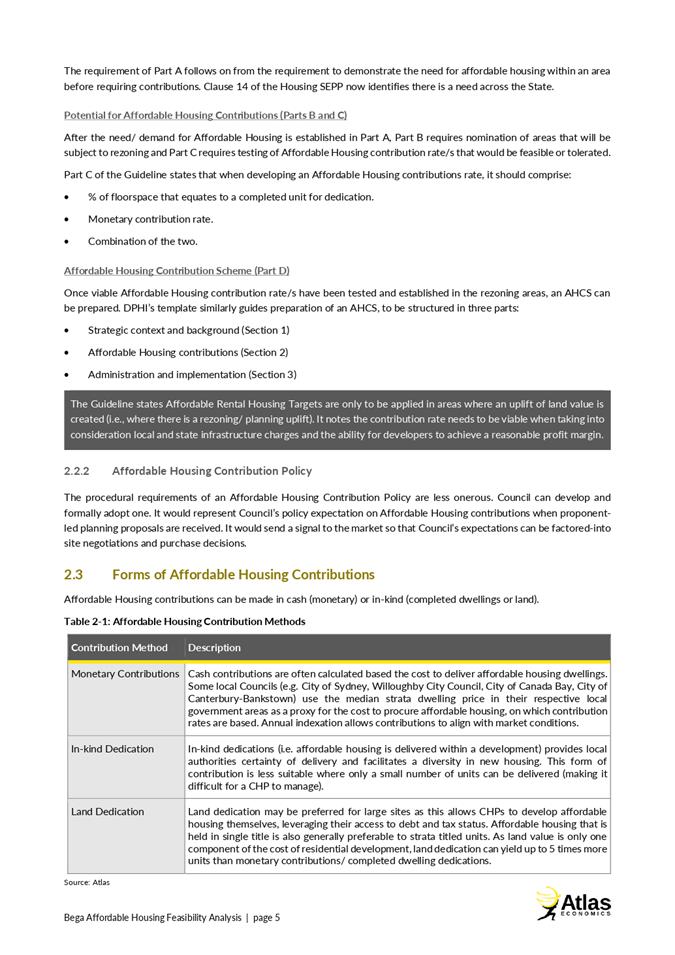
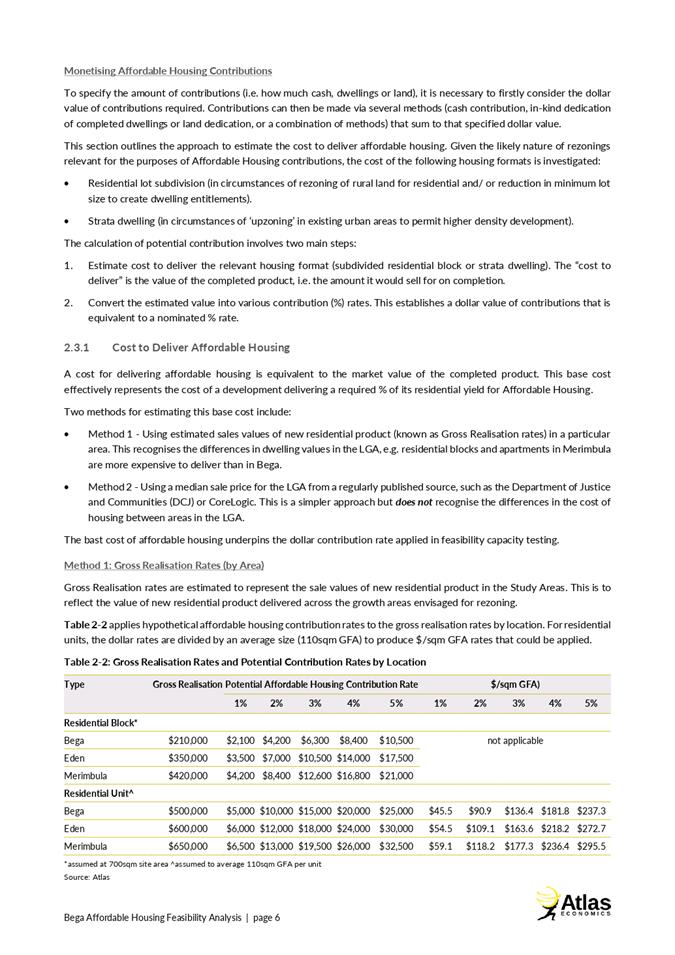
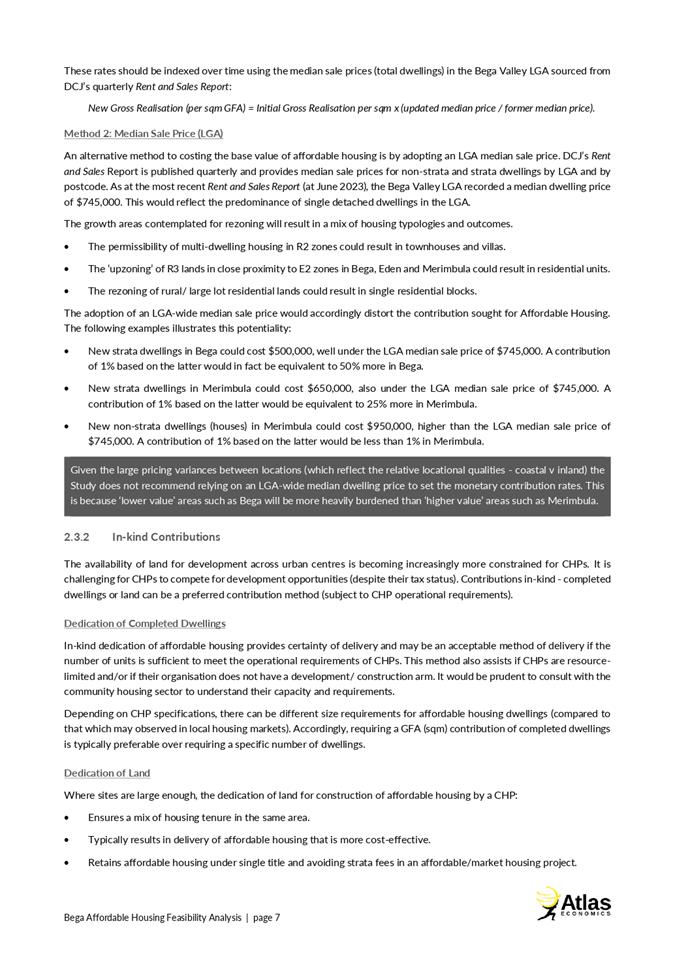
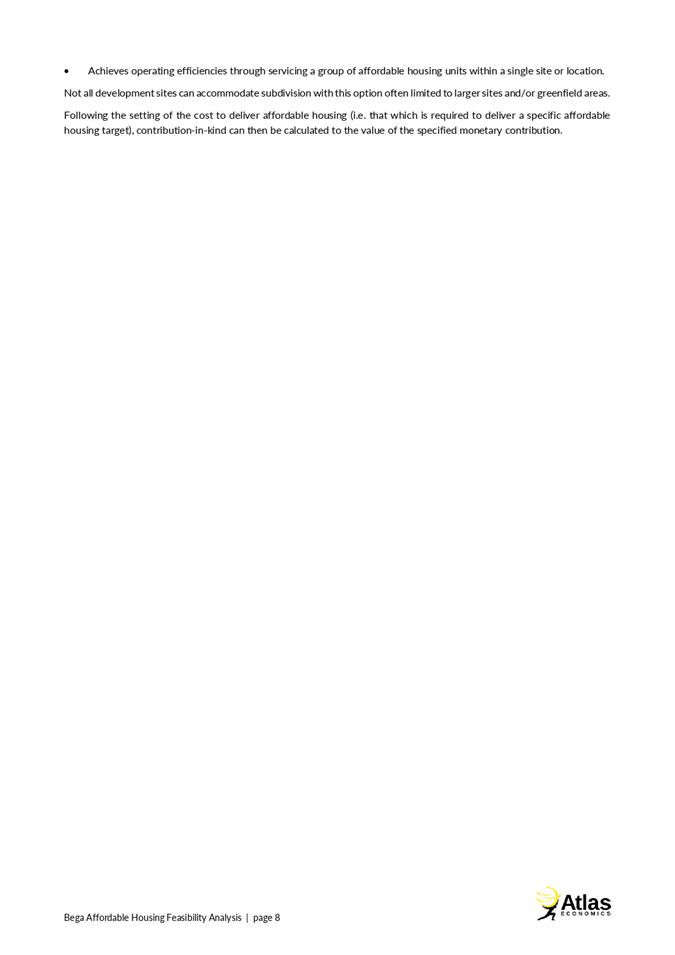
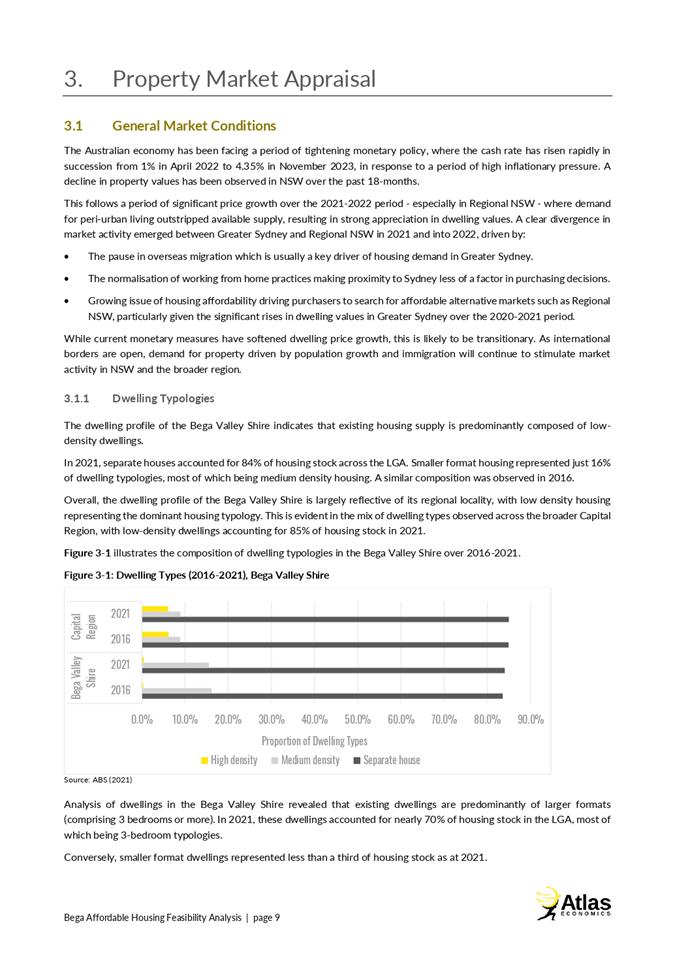
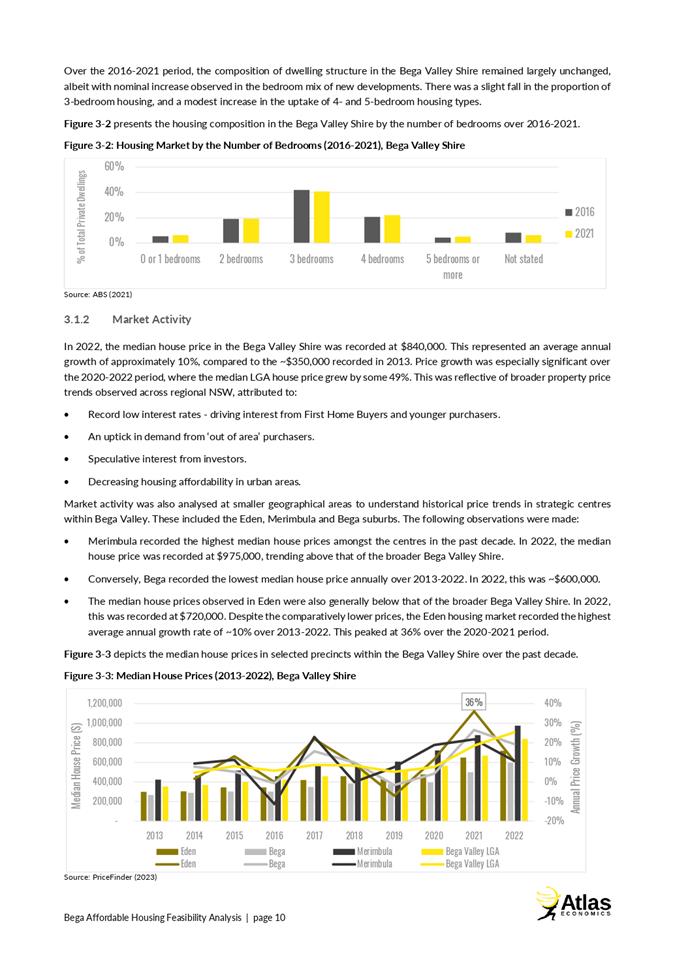
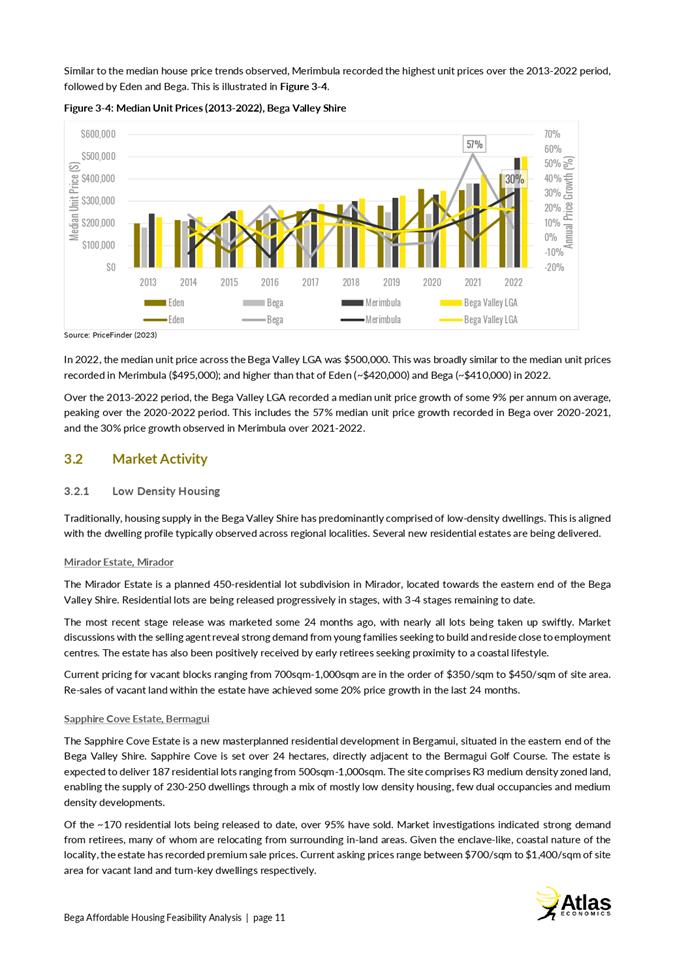
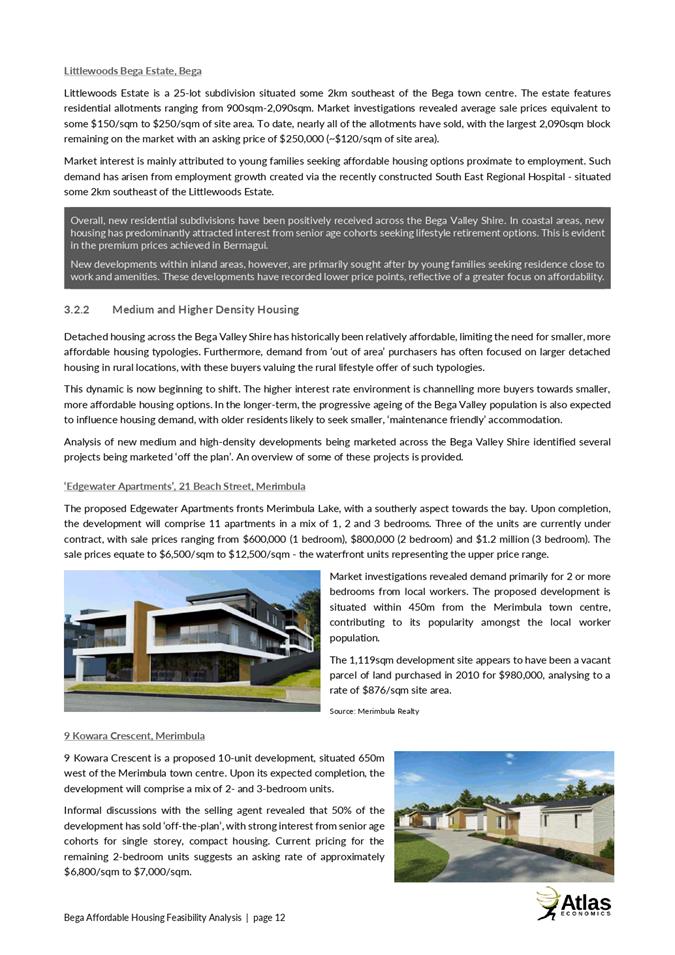

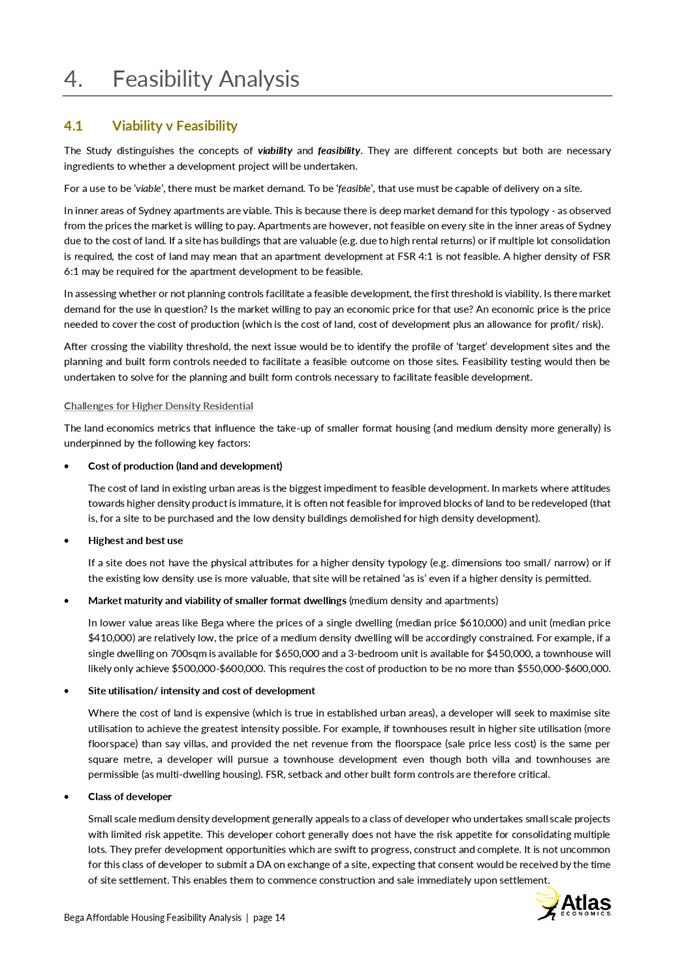
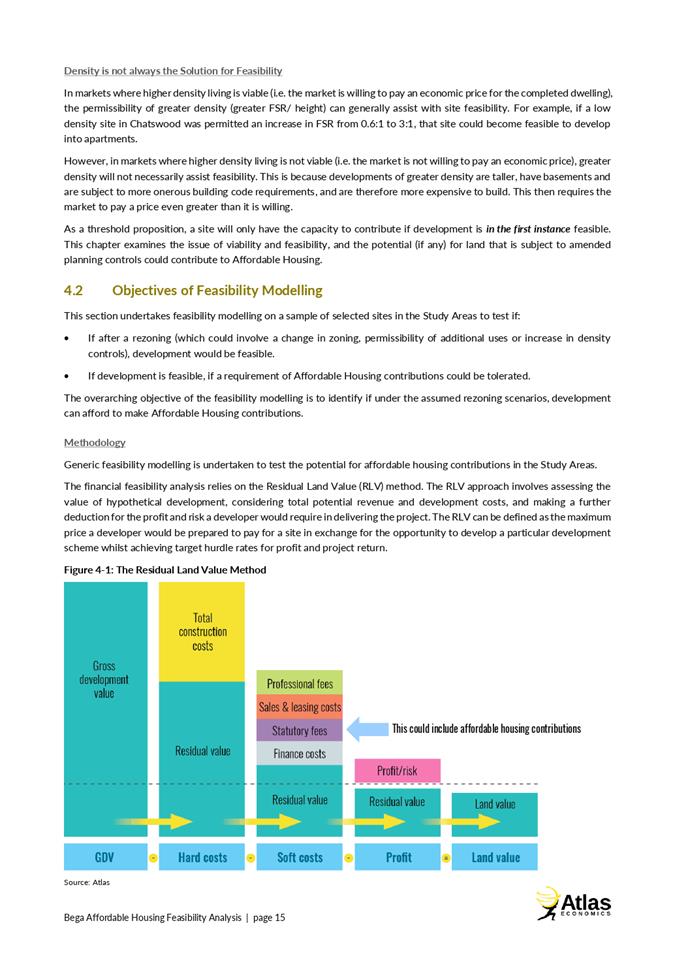
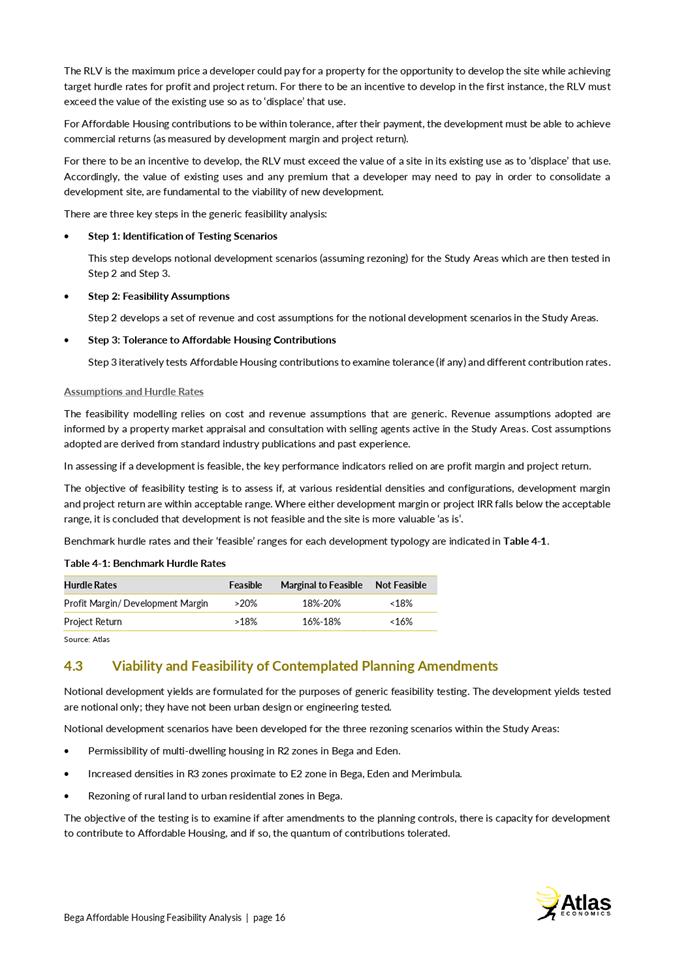
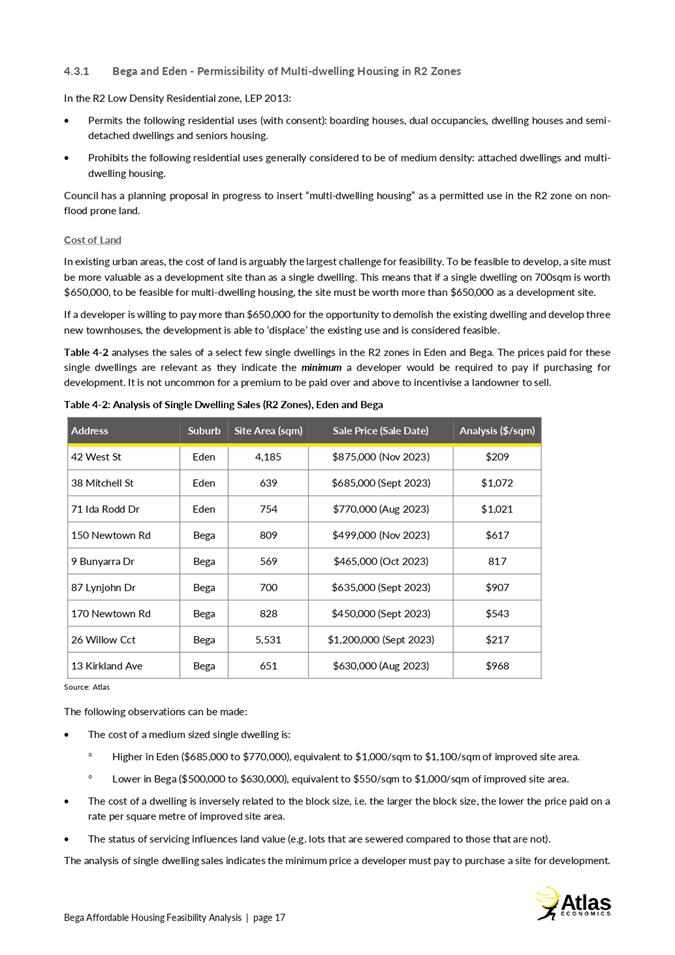
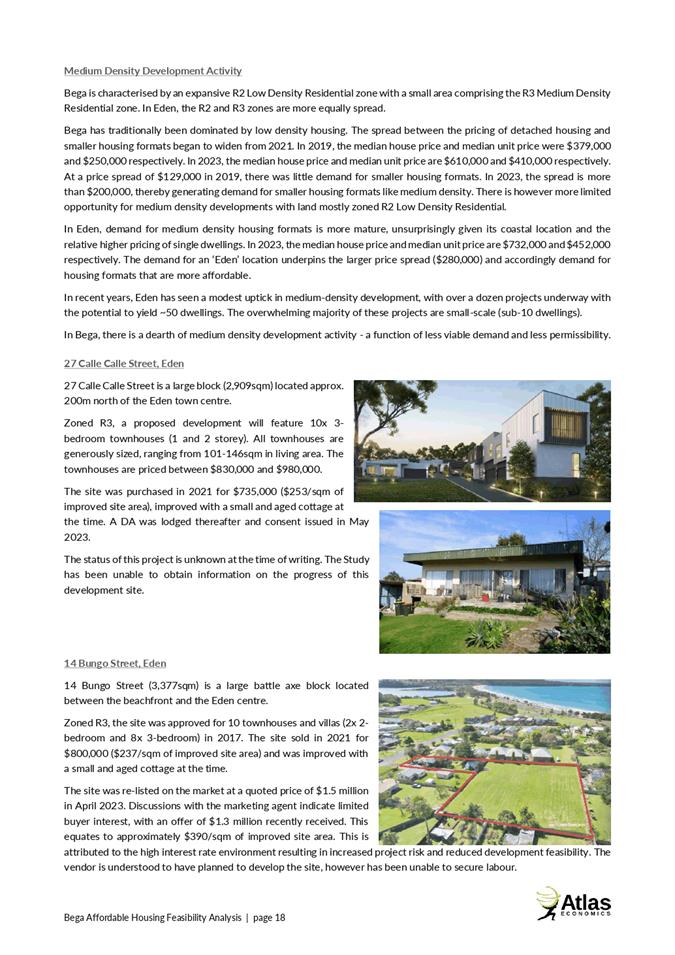
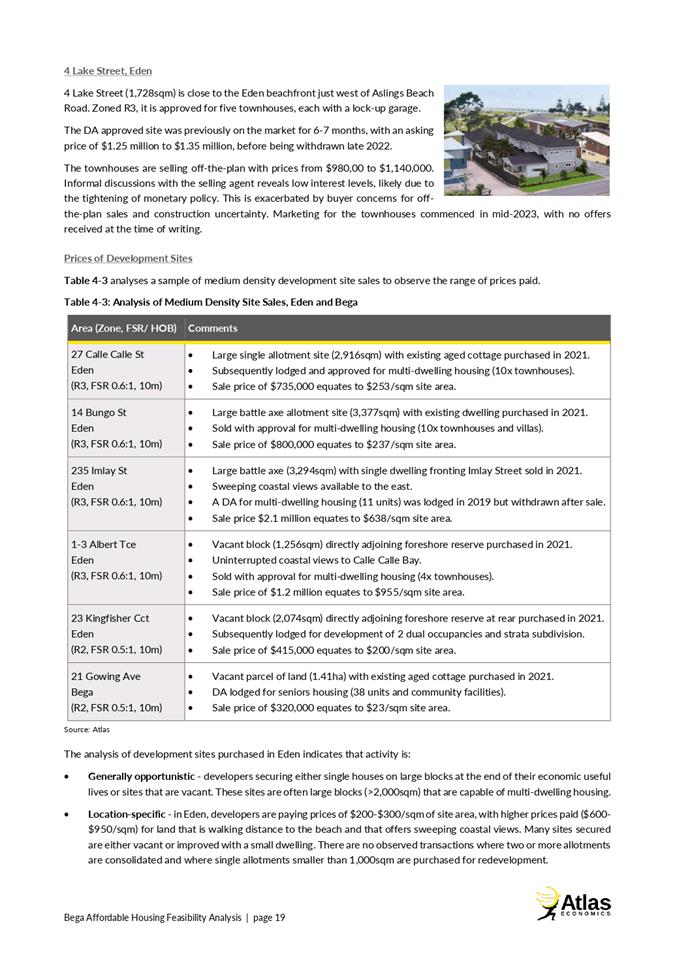
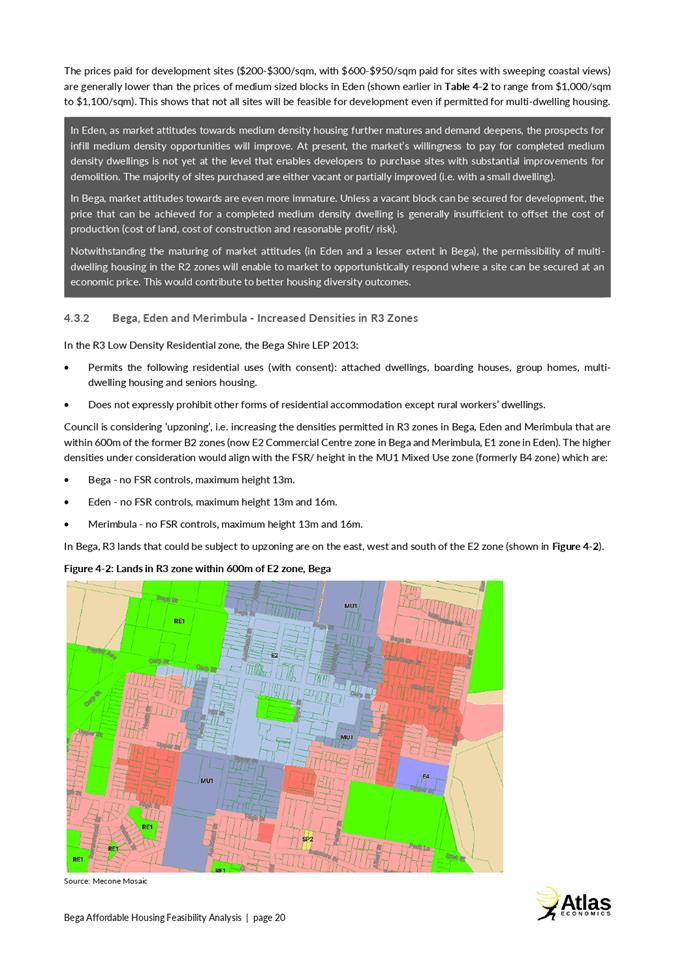
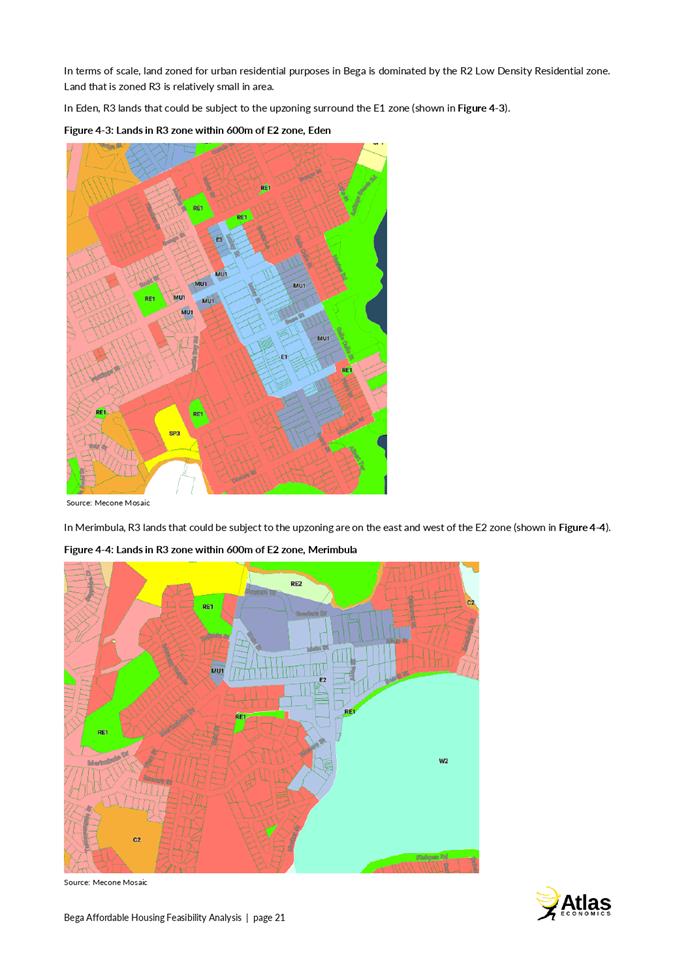
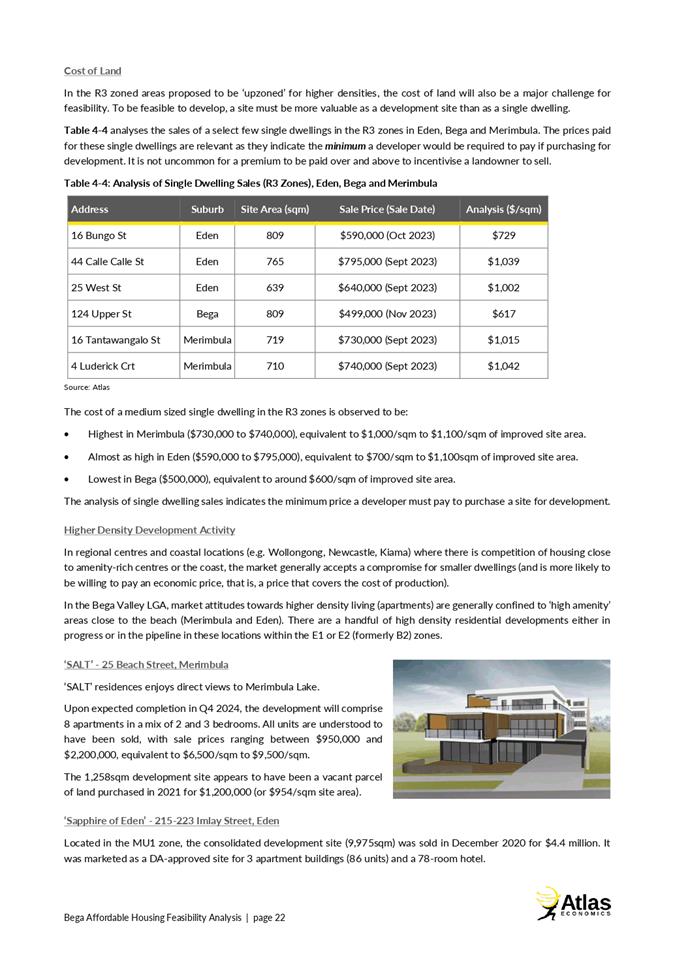

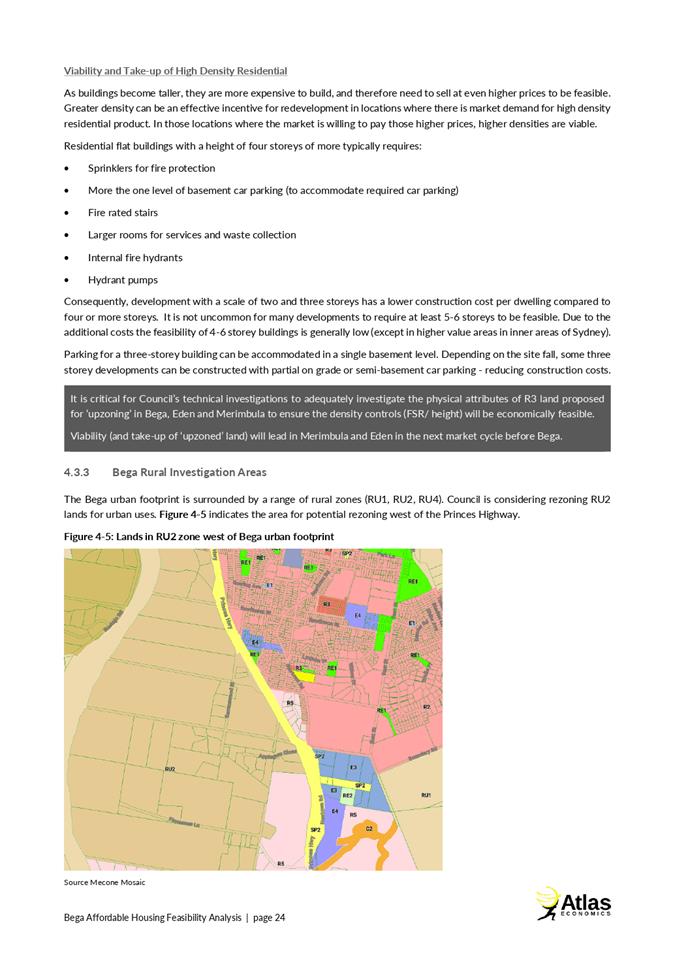
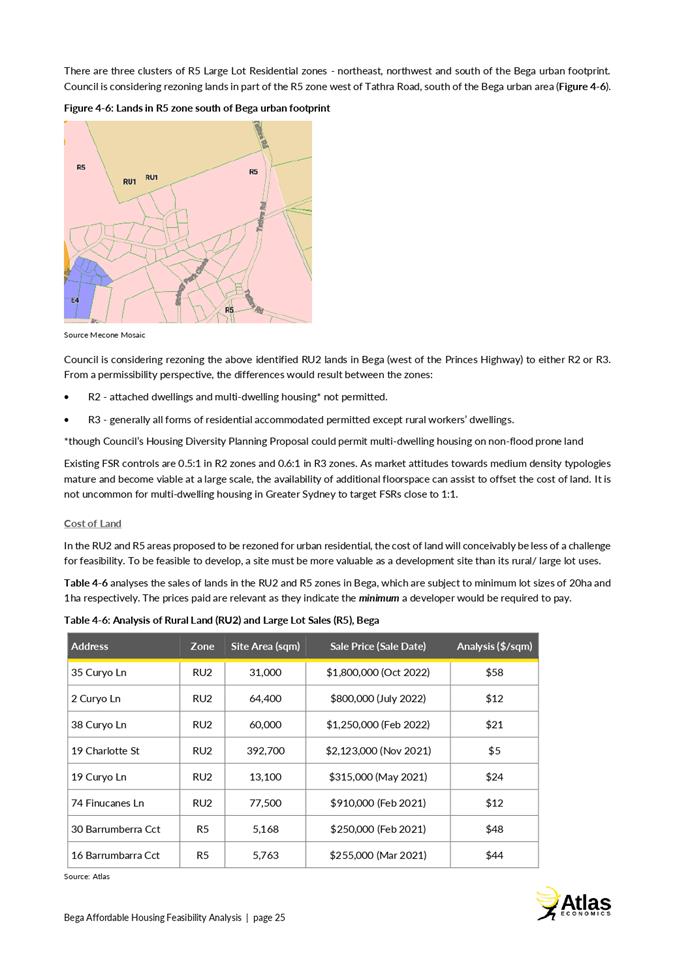
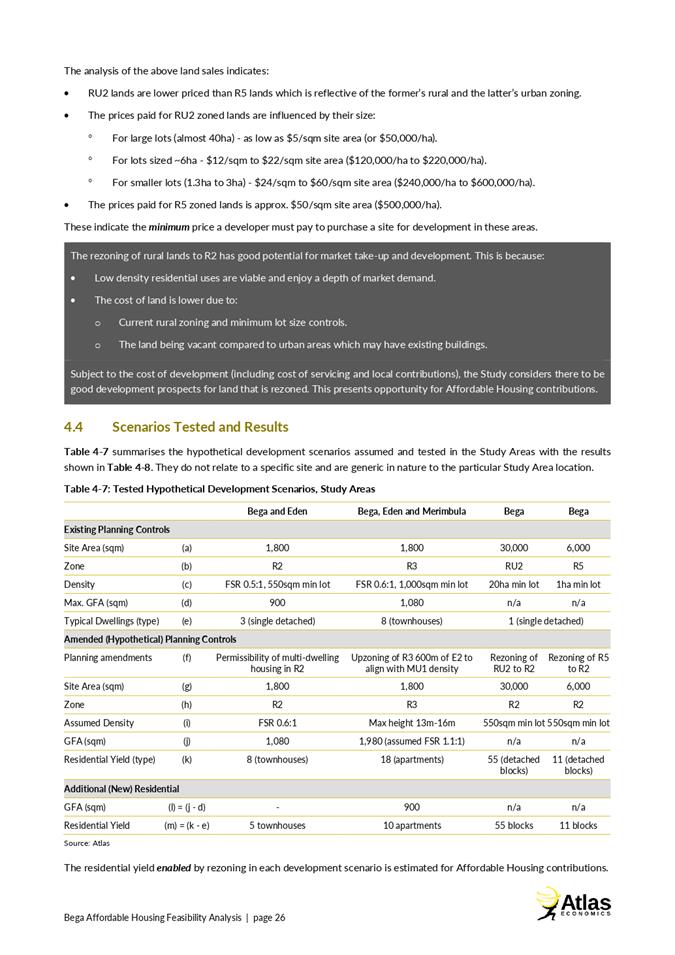
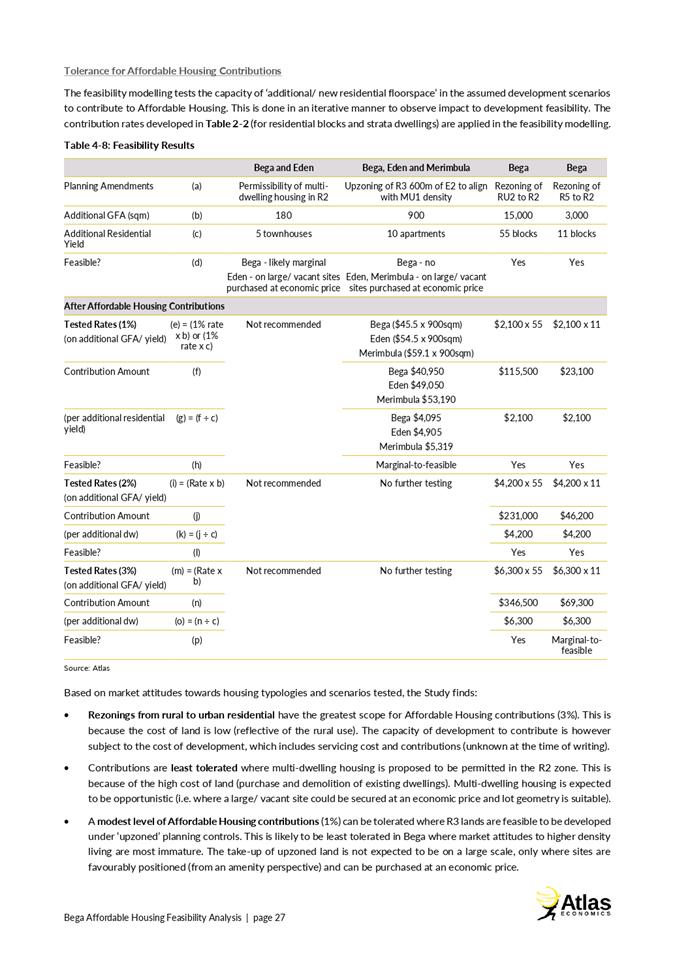
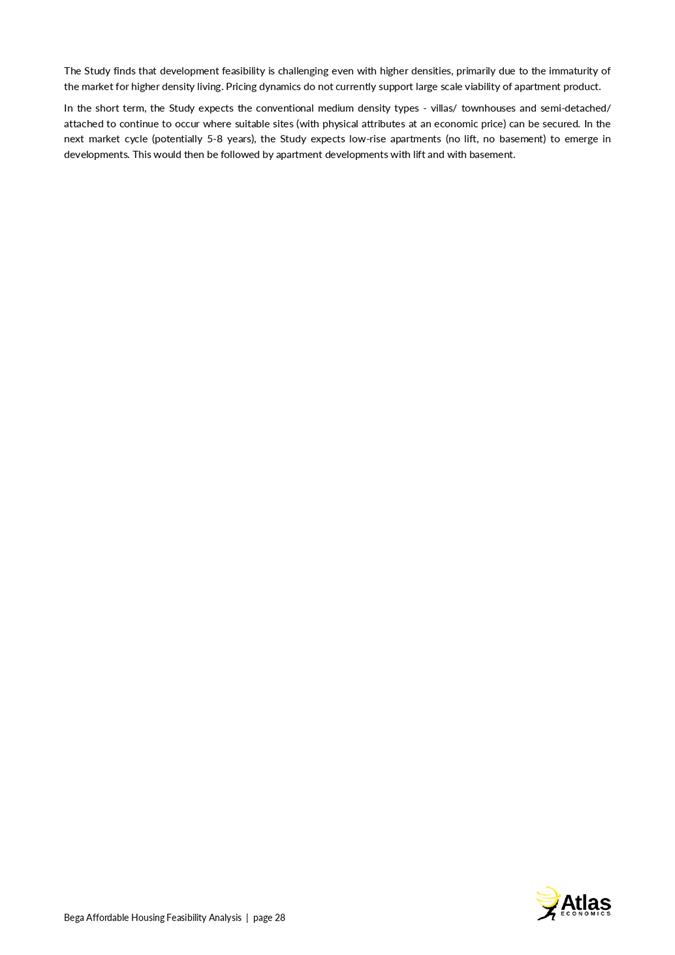
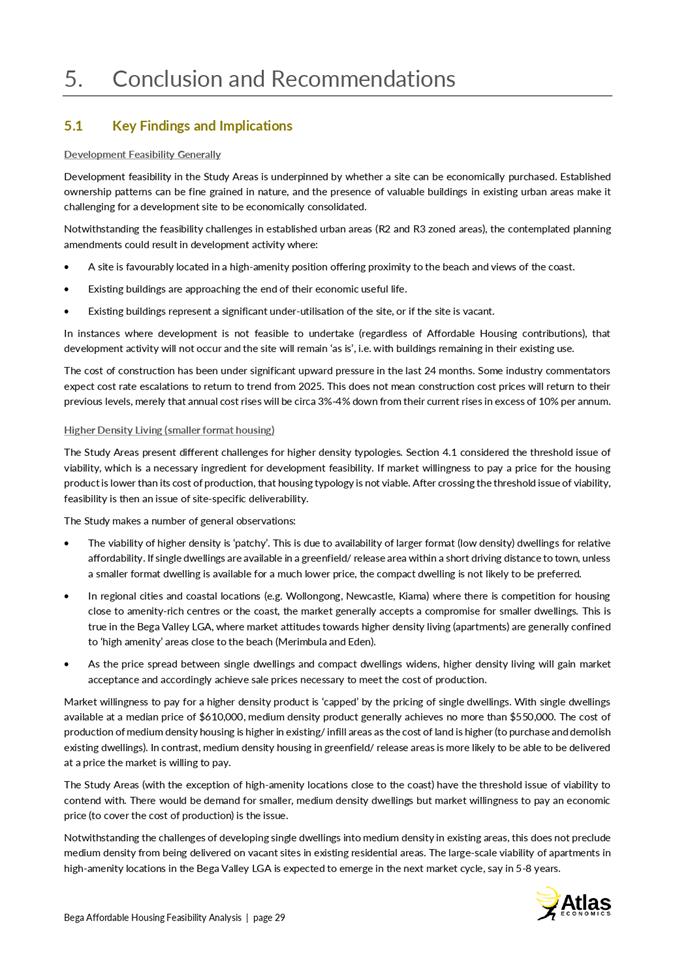
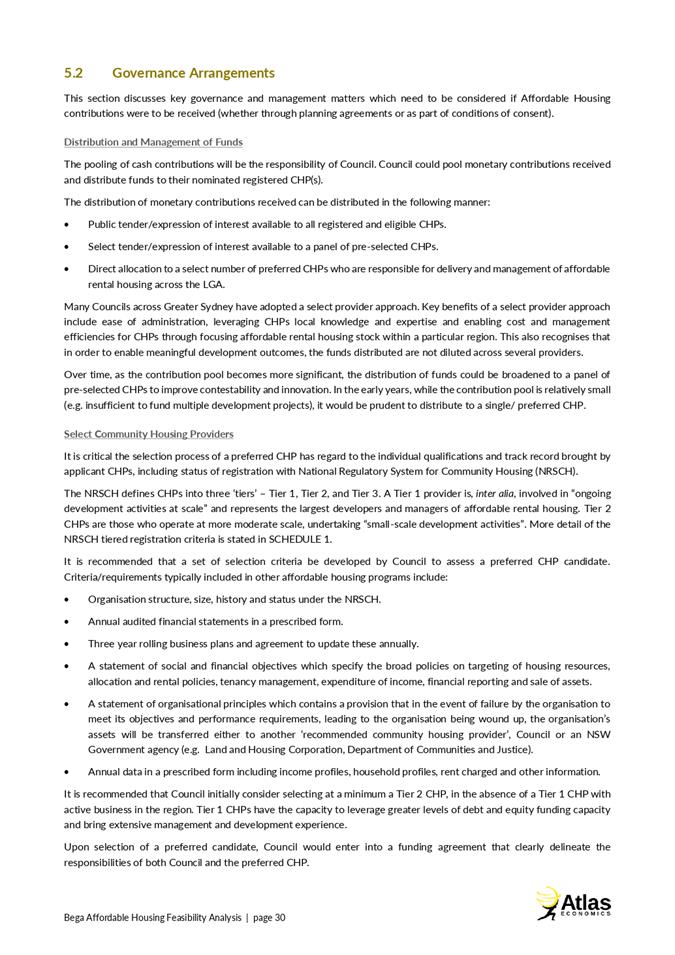
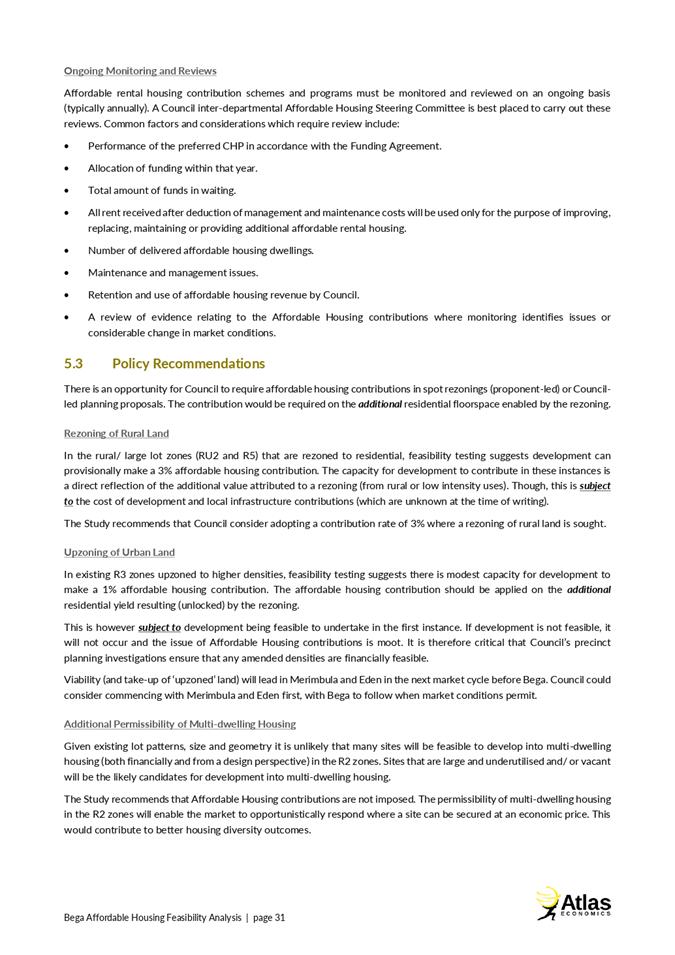
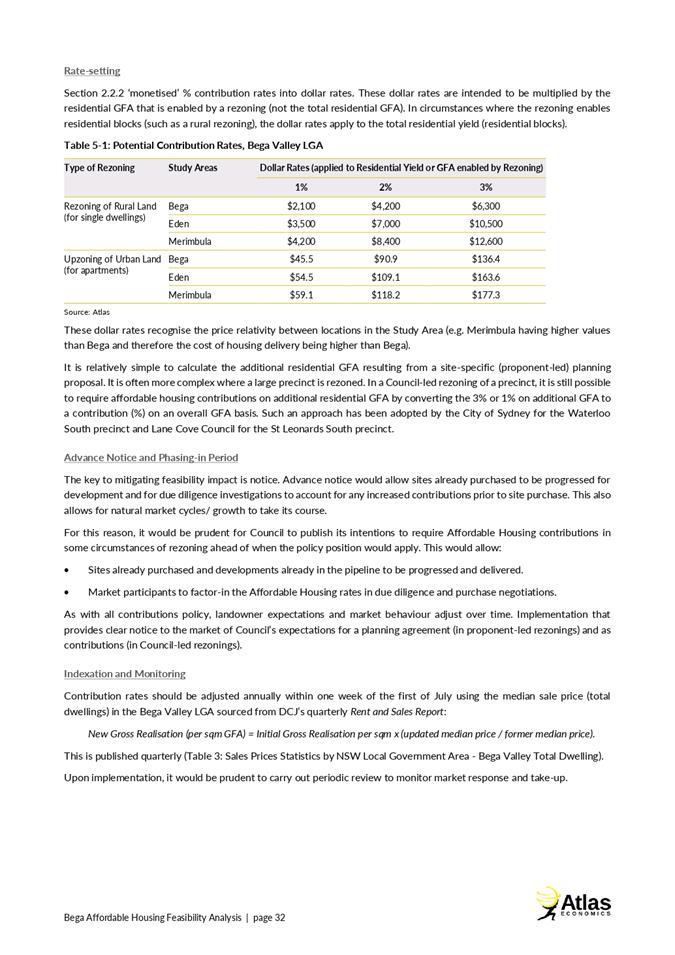
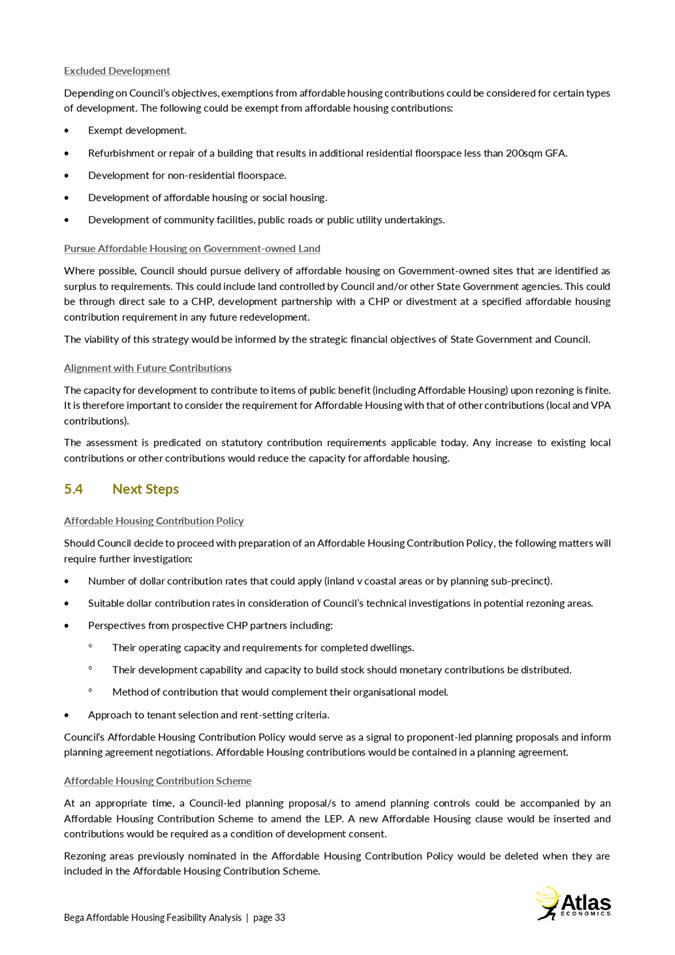
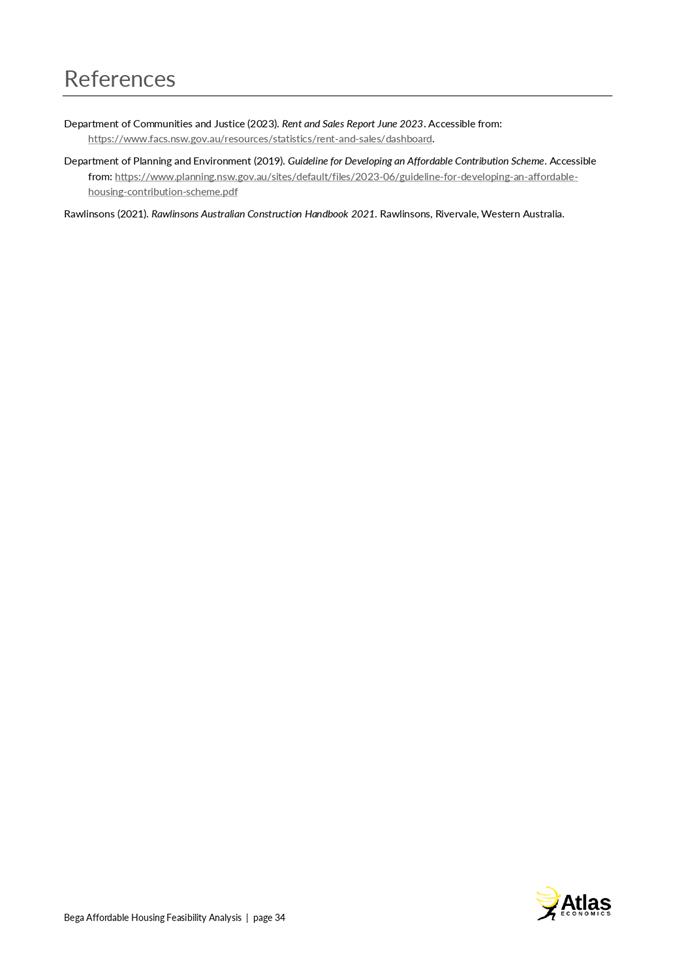

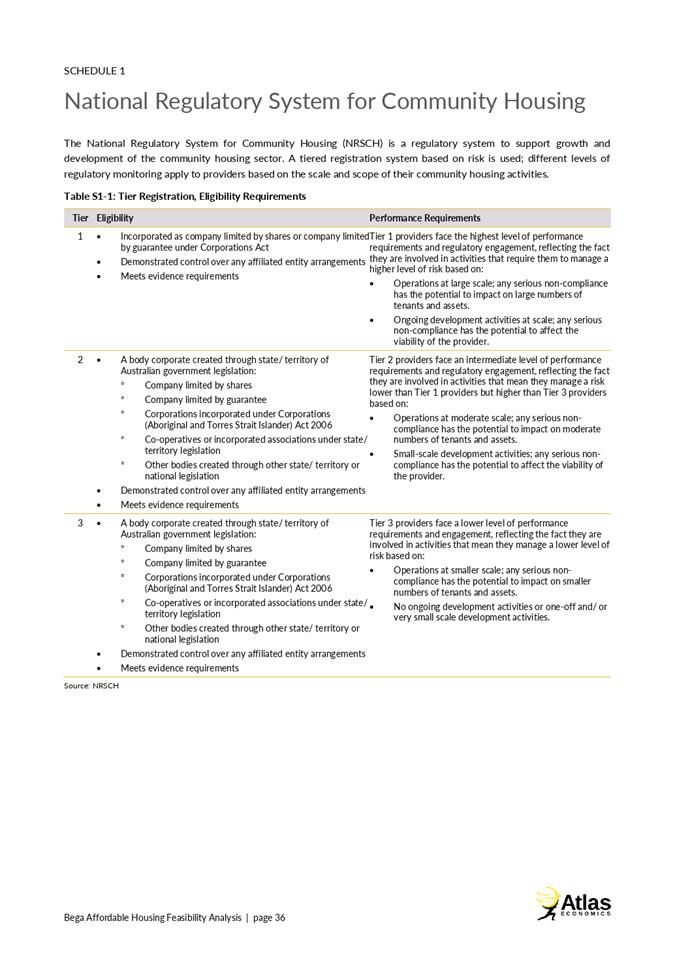

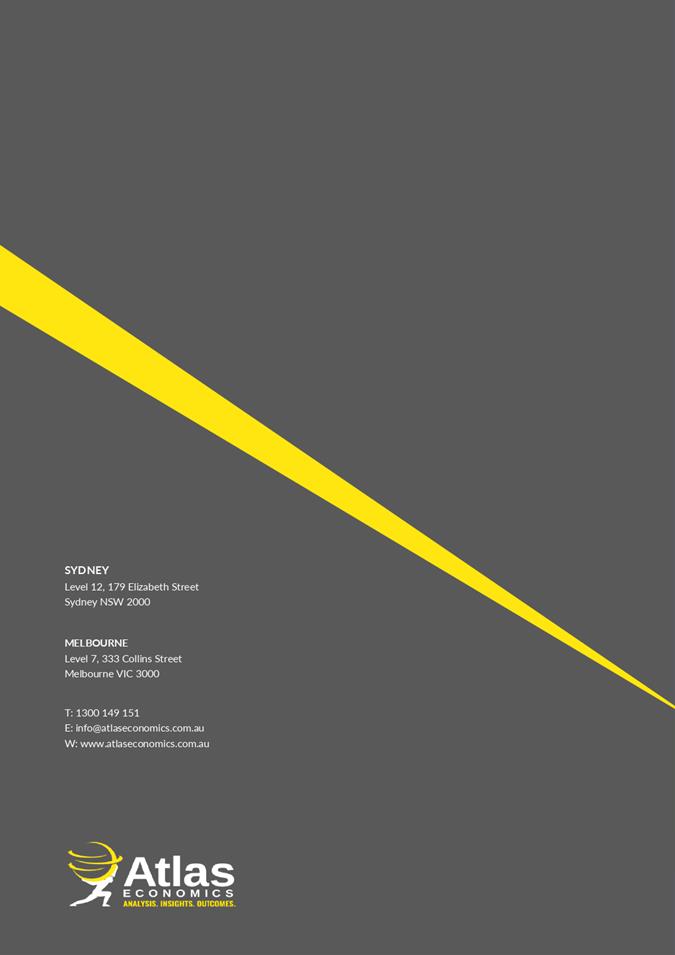
Staff Reports
– Assets and Operations
12 June 2024
9.1 Merimbula
Airport Master Plan 2043............................................................... 341
9.2 Public
Exhibition of the Draft Active Transport Strategy.................................. 526
|
Council 12
June 2024
|
Item 9.1
|
9.1. Merimbula
Airport Master Plan 2043
The Merimbula Airport Master Plan 2043
is the culmination of the review of the Merimbula Airport Master Plan
2013-2033. It is being brought to Council for formal adoption.
Director Assets and Operations
Officer’s
Recommendation
That Council formally adopt the Merimbula Airport Master Plan
2043.
Executive Summary
There has been considerable change in at the Merimbula
Airport over the ten years since Council adopted the 2013-2033 Master Plan.
These changes have included:
· infrastructure upgrades to the runway, apron, and terminal
· changes in community expectations and behaviours, and
· changes to the legislative environment.
As a result of these changes, it was necessary reset the
vision for the future and revise the Master Plan to ensure that new development
is safeguarded, caters for future growth and optimises the use of available
land within a heavily constrained site. As there is always inherent uncertainty
in planning for a 20-year horizon, there is flexibility in the staging of
developments to ensure upgrades are undertaken at the appropriate time to cater
for passenger traffic levels and airport user requirements.
Council have engaged specialist aviation firm L&R
Airport Consulting to ensure that the Master Plan meets industry best practice.
This includes ensuring that the process of developing the Master Plan aligns
with the Australian Airports Association’s (AAA) Airport Practice Note 4 Regional
Airport Master Planning Guideline.
The development of the Master Plan has been funded by a
grant under the NSW Government’s Regional NSW – Business Case and
Strategy Development Fund. The outcomes of the Master Plan will help support
Council’s business case for future project funding under State and
Commonwealth Government funding schemes.
Background
Over the ten years since the 2013 -2033 Master Plan was
formally adopted, there have been changes to the regulatory environment,
evolved usage of the airport, and a better understanding of relevant
development constraints identified through the delivery of recent upgrades.
The updated Master Plan has been prepared following the
Australian Airports Association’s (AAA) Airport Practice Note 4 Regional
Airport Master Planning Guideline. This included:
· A requirement for
targeted consultation with key stakeholders and broader community consultation.
This has been conducted through a four key stage process outlined in the
section below.
· The development of
a comprehensive Airport Safeguarding Plan which addresses the relevant
Commonwealth Government’s guidelines, the National Airports Safeguarding
Framework (NASF) Guidelines.
As the owner of the Merimbula Airport, Council has a duty to
protect the operational capability from the encroachment of restrictions and
incompatible land uses. Since the adoption of the 2013 Master Plan,
Council has fulfilled this obligation through the incorporation of Obstacle
Limitation Surface (OLS) mapping and aircraft noise contours into the Local
Environmental Plan (LEP).
The development of this new Master Plan has included a
review of the OLS and noise contours as well as providing guidance regarding
building generated windshear and turbulence, wildlife hazards, lighting, CNS
(communication, navigation and surveillance) facilities and public safety
areas.
Airport master planning is a specialised area of expertise
that also requires accredited planning tools. Council engaged L+R Airport
Consulting, who are consultants highly experienced in the discipline and very
familiar with the context of Merimbula Airport.
The revised Master Plan outlines the preferred development
concept over the next 20 years, to meet the modelled and expected future needs
and requirements of the community. The Plan is presented in a logical manner
that balances the various competing demands for limited available space. The
Master Plan also recognises there is inherent uncertainty in a 20-year
timeframe therefore allows for flexibility in implementation based on how
events, in particular passenger traffic levels and airport travel habits
develop over time.
Options
The development of the Master Plan has included a
comprehensive review of strategic options for the development of the Airport.
These options have been reviewed against existing and anticipated site and
legislative constraints and tested against several different growth scenarios.
The outcome of this process produced the ‘preferred option’ which
was detailed in the Draft Master Plan.
The Draft Master Plan went through a thorough stakeholder
consultation process including a 28-day public exhibition and ‘Have Your
Say’. The Draft Master Plan was further refined based on the feedback
received and this has been incorporated in the Final Master Plan 2043 document.
The master planning process and information gathering has
had much consultation over several years, has gone through various iterations
and amendments to reach this point and now requires councillors to adopt the
Master Plan to allow progress to continue with the development and planning for
the airport into the future.
Options for Council are:
1. Accept
the staff recommendation and adopt the Master Plan 2043
2. Reject
the staff recommendation to adopt the proposed Master Plan 2043 and continue
with the current adopted but outdated 2013 - 2033 Master Plan and retain the
risks outlined further below.
Community
and Stakeholder Engagement
The Australian Airports Association’s (AAA) Airport
Practice Note 4 Regional Airport Master Planning Guideline provides
guidance for stakeholder consultation and engagement. The consultation
process included targeted consultation with key stakeholders and broader
consultation with the wider community.
Engagement undertaken
Key stakeholder groups were identified as part of the
initial project planning. A range of consultation approaches have been adopted
depending on the nature of each stakeholder group. These have included meetings
with stakeholders and public exhibition with formal submissions. In particular,
the process has involved:
· Consultation
regarding the vision for the airport and future direction of how it will
function, through Council’s ‘Have Your Say’ online portal in
April 2023. This process sought community input on the draft vision
statement and supporting principles through the portal, as well as consulting
with key stakeholders within Council and elected representatives. The
‘Have Your Say’ forum also canvassed the community on airport usage
habits, user preferences, satisfaction levels and suggestions for improvements.
· Stakeholder
meetings with a range of airport users on key facility requirements, and email
correspondence with specific user groups from April to September 2023.
This process comprised asking specific users and stakeholders about their
current and projected use.
· Consultation on
preliminary development concepts between October 2023 and January 2024.
· Public exhibition
and formal feedback, through Council’s ‘Have Your Say’ online
portal, on the draft Merimbula Airport Master Plan 2023-2043 during
February/March 2024.
A comprehensive overview of the engagement process that has
been undertaken as well as the findings and response to submissions is included
as an annexure to the Master Plan document.
Engagement planned
For delivery of each element of the Master Plan 2043 there
will be different requirements for community engagement. The level of
engagement for each project will be tailored according to the scale, nature and
probable impact the project is likely to have. This will be conducted in
accordance with Council’s Community Engagement Strategy.
Financial
and Resource Considerations
The development of the Master Plan has been achievable
through the NSW Government’s Regional NSW – Business Case and
Strategy Development Fund.
As there is no internal Airport Development Fund, Council
will need to continue to advocate and apply to external funding bodies in order
to deliver each element in the Master Plan 2043. Implementation of the
2013-2033 Master Plan occurred primarily via successful applications to the NSW
and Commonwealth Governments.
Many of the projects identified in the 2013-2033 Master Plan
have already been included in Council’s current Long Term Financial Plan
(LTFP). Upon adoption of this Master Plan these projects will be updated to
reflect the changes that have been identified through the development of this
new plan.
Legal
/Policy
Airport master plans should be reviewed periodically and
updated where needed in order to ensure currency with the Civil Aviation
Regulations (CAR), the Civil Aviation Safety Regulations (CASRs), the Civil
Aviation Orders (CAO) and the Manual of Standards (MoS).
Impacts
on Strategic/Operational/Asset Management Plan/Risk
Strategic
Alignment
This Master Plan has been developed in accordance with
Council’s Community Strategic Plan 2042. Relevant strategic goals and
objectives include:
· Goal 3 - Our
economy is prosperous, diverse and supported by innovative and creative
businesses.
· Strategy 6 -
Collaborate with relevant parties to develop and enhance the economic
opportunities provided by the development of the Port of Eden, Merimbula Airport,
East West freight corridor, and tourism services and facilities.
· Goal 9 - We have
opportunities to work, learn and socialise through the provision of affordable
public transport and telecommunications services.
· Strategy 22 -
Collaborate with relevant parties to grow the passenger numbers through
Merimbula Airport.
Environment
and Climate Change
The Master Plan has been developed considering the
environmental context of the site. This has included reviews of ecology,
biodiversity and aboriginal heritage of surrounding Merimbula Lake and coastal
strip in which the airport is situated.
The preferred development option has also been assessed
against the anticipated impacts of Climate Change and sea level rise.
Economic
The airport generates a significant number of direct and
indirect jobs. Regular and reliable transport from Sydney and Melbourne will
continue to provide benefits to the local economy.
Risk
Risk has been assessed using Council’s Enterprise Risk
Management Matrix, and on the basis of two options:
a) Adopt
the Merimbula Airport Master Plan 2043; or
b) Continue
with the 2013-2033 Master Plan
The table below gives a short comparative synopsis of the
options:
|
Option
|
Adopt and implement revised
(2043) Master Plan
|
Continue with current Master
Plan (to the extent that is possible)
|
|
Details
|
Key items of the Master Plan include:
· Improve
the car parking, vehicle circulation and bus access
· Complete
the runway starter extensions
· Add
the apron parking bays
· Extend
the terminal
· Add
the additional itinerant GA parking area and additional taxiway to the
runway.
|
Key items of the Master Plan include:
· Complete
the runway starter extensions
· Add
some extra main apron parking bays and some GA parking around the main apron
· Extend
the terminal – to the maximum extent possible.
|
|
Regulatory Case
|
Adopting the Master Plan will mean that Council has met
its obligations under the National Airport Safeguarding Framework guidelines
by implementing AAA practice note 4.
|
Council will operate under an out-of-date plan and that
does not address additional constraints identified since the plan was
formulated and does not align to industry practice. Council will not meet
NASF safeguarding requirements.
|
|
Economic Case
|
Implementing the Master Plan increases the likelihood of
realising significant economic benefits including.
· Increased
tourism spending
· Increased
revenue from landing and passenger fees
· Increased
revenue from carpark fees (to offset improved on ground parking).
|
Significant economic benefit will not be realised and
there is a risk that the RPT business will lose confidence in the
airport’s capability to provide the infrastructure to make their
operations commercially viable.
|
|
Strategic Case
|
Implementing the Master Plan will provide a coherent,
stageable and orderly approach to infrastructure delivery timed to promote
and align with the regions airport needs.
|
Continuing without updating the 2033 Master Plan will mean
there is a high risk that new development (other than the key items) is
positioned inappropriately without a guiding framework and could produce
counterproductive outcomes.
|
|
Option
|
Adopt and implement revised (2043) Master Plan
|
Continue with current Master Plan (to the extent that is
possible)
|
|
Commercial Case
|
The Master Plan is likely to generate economies of scale
and associated revenue that will markedly improve the long-term commercial
sustainability of the airport and contribute to asset renewal costs (to meet
co-funding requirements from state and federal governments).
|
No opportunity to markedly increase operational revenue to
offset operation and asset renewal costs, leaving a residual cost load on
ratepayers (to meet co-funding requirements from state and federal
governments).
|
The
following tables demonstrate the risk rating applied noting that there are
risks associated with both options however it is riskier to maintain the
current situation rather than move forward with the new Master Plan.
|
Adopt and Implement
(2043) Master Plan
|
|
Risk
|
Pre Mitigation
|
Mitigation
|
Post Mitigation
|
|
Likelihood
|
Consequence
|
Rating
|
Likelihood
|
Consequence
|
Rating
|
|
Risk that economic growth does not match capital outlay
|
Possible
(3)
|
Catastrophic
(5)
|
High
(22)
|
Implement infrastructure in stages based on triggers.
Seek external grant funding.
|
Unlikely
(2)
|
Major
(4)
|
Medium
(14)
|
|
Projects do not meet timelines and budgets
|
Likely
(4)
|
Catastrophic
(5)
|
Very High (24)
|
Ensure full budgeting for funds and timing from concept
stage onwards
Implement industry standard practices for time and cost
management
Ensure adequate contingency amounts are included in
budgets
Ensure project team is skilled and qualified commensurate
to the project
|
Possible
(3)
|
Major
(4)
|
High
(18)
|
|
General aviation community does not believe it has been
heard
|
Almost certain
(5)
|
Major (reputational)
(4)
|
Very High
(23)
|
Provide responses to the HYS in the submissions report,
including addressing GA concerns where possible without compromising the
endorsed vision for the MP 2043
|
Almost certain
(5)
|
Moderate (reputational)
(3)
|
High
(20)
|
|
Continue with 2033 Master Plan (to the
extent that is possible)
|
|
Risk
|
Pre Mitigation
|
Mitigation
|
Post Mitigation
|
|
Likelihood
|
Consequence
|
Rating
|
Likelihood
|
Consequence
|
Rating
|
|
Risk of major injury or death from airport passenger being
hit by vehicle crossing east to west on Arthur Kaine Drive from bus stop or
car park
|
Possible
(3)
|
Catastrophic
(5)
|
High
(22)
|
Implement 50km/hr speed zone
Introduce traffic calming measure
Install pedestrian refuge island
|
Unlikely
(2)
|
Catastrophic
(5)
|
High
(19)
|
|
Strategic: Reputational and cost risk of site development
occurring in locations found to be inappropriate in future
|
Almost Certain (5)
|
Major
(4)
|
Very High
(23)
|
Very difficult to mitigate
Ad-hoc master planning as the airport site is developed
|
Likely
(4)
|
Major
(4)
|
High
(21)
|
|
Safeguarding: Risk of inadequate safeguarding of
neighbouring development and risk of inadequate safeguarding due to
neighbouring development
|
Almost Certain
(5)
|
Major
(4)
|
Very High
(23)
|
Develop an as yet unidentified alternative means by which
to identify and include provisions in the LEP
|
Likely
(4)
|
Major
(4)
|
High
(21)
|
|
Economic: Risk of impeding the regional economic growth
|
Almost Certain
(5)
|
Catastrophic
(5)
|
Very High
(25)
|
Very difficult to mitigate.
Could be partially mitigated by fully implementing
two more RPT parking bays and aeromedical parking bay in current apron
location
|
Almost Certain
(5)
|
Catastrophic
(5)
|
Very High
(25)
|
|
Cost/ Environment:
Risk that developing far southern zone attracts additional
expenditure for environmental offsets
|
Almost Certain
(5)
|
Catastrophic
(5)
|
Very High
(25)
|
Do not develop in southern area
|
Rare
(1)
|
Insignificant
(1)
|
Low
(1)
|
|
Risk of delay to inbound
aeromedical flight (for outbound patient) landing due to all main apron bays
being occupied by airline aircraft
|
Likely
(4)
|
Catastrophic
(5)
|
Very High
(24)
|
Very difficult to mitigate due to the urgent unscheduled
nature of aeromedical flights. Some mitigation via higher level of
monitoring of aeromedical flights, but this may not be enough to free up the
occupied apron parking bays, especially if they contain aircraft requiring
repair.
|
Likely
(4)
|
Catastrophic
(5)
|
Very High
(24)
|
|
Commercial: Risk of not generating economies of scale and
additional revenue
|
Almost Certain
(5)
|
Catastrophic
(5)
|
Very High
(25)
|
Apply for external grants for asset renewal (such as
runway pavement lifecycle)
|
Almost Certain
(5)
|
Major
(4)
|
Very High
(23)
|
|
Risk of major reputational damage to Council’s
capability to delivery on its strategic planning documents includes Community
Strategic Plan
|
Almost Certain
(5)
|
Catastrophic
(5)
|
Very High
(25)
|
Very difficult to mitigate
|
Almost Certain
(5)
|
Catastrophic
(5)
|
Very High
(25)
|
|
Projects do not meet timelines and budgets
|
Likely
(4)
|
Catastrophic
(5)
|
Very High
(24)
|
Ensure full budgeting for funds and timing from concept
stage onwards
Implement industry standard practices for time and cost
management
Ensure adequate contingency amounts are included in
budgets
Ensure project team is skilled and qualified commensurate
to the project
|
Possible
(3)
|
Major
(4)
|
High
(18)
|
|
General aviation community does not believe it has been
heard (noting the extent to which the remaining portions of the 2033 that can
be implemented can be anticipated to bring satisfaction to the GA community.)
|
Almost certain
(5)
|
Major reputational
(4)
|
Very High (23)
|
Prioritise the GA over the RPT per submissions in the Have
Your Say survey
|
Almost certain
(5)
|
Catastrophic (financially to community)
(5)
|
Ver High (25)
|
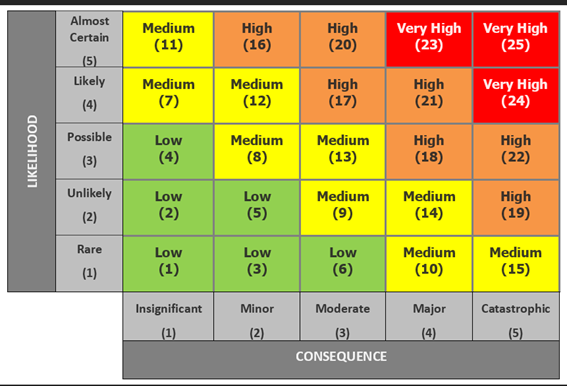
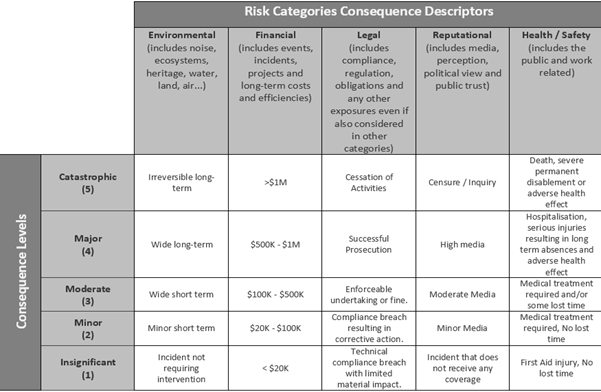
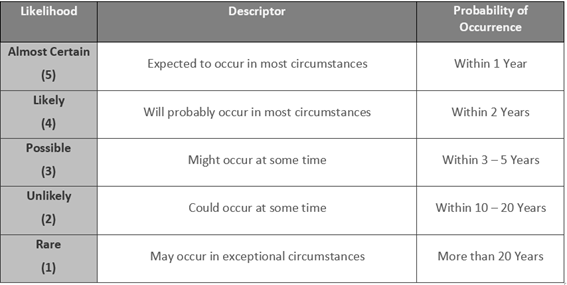
Do not adopt the Merimbula Airport Master Plan 2043.
The risks in not accepting the Master Plan 2043 are further
articulated below. They are premised on the terminal being able to be
extended when security screening places pressure on the existing capacity; the
approved runway starter extensions being implemented; improvements to the
existing car parking being made; and the noise contours being included in the
LEP (ie there will still be some infrastructure improvement and some
improvement to the LEP).
· The second airline
loses interest in Merimbula because:
o it cannot be certain of apron
space availability at the time of arrival, and limits on aircraft beyond the
Dash8 / Q400 size due to the size of the apron
o the barely adequate capacity
of the terminal’s screened passenger area impacting on the efficiency of
the turnaround of Dash8 / Q400 and larger aircraft. (It may be possible to
partially extend the terminal - but it is unlikely to be able to service
multiple aircraft with multiple destinations. Further if the remaining
extension takes place at a later point, the ultimate cost will be a much less
cost-effective method of delivering the terminal expansion (possibly circa 50%
premium).
· Continuing
possibility of other key aircraft (mainly aeromedical), and other aircraft
(visiting private jet aircraft, Defence and other Commonwealth Government
aircraft) circling whilst waiting for an apron parking space.
· Restricted apron
parking options limit growth of RPT
· Insufficient
parking and increasing traffic congestion.
A range of planning documents (including those listed below)
emphasise the importance of improving the airport infrastructure to deliver
benefits to the region. If the new Master Plan is not implemented, those
benefits are almost certain not to occur.
· Community
Strategic Plan 2042
· Local Strategic
Planning Statement 2040
· Climate Resilience
Strategy 2050
· Commercial Land
Strategy 2040
· Disability
Inclusion Action Plan 2021-2025
· Far South Coast
Regional Economic Development Strategy 2023 Update (NSW Government)
· Canberra Region
Economic Development Strategy 2022 (Canberra Regional Joint Organisation of
Councils, ACT, NSW Government)
· Far South Coast
Strategic Regional Plan 2022-2027 (Regional Development Australia)
· South East and
Tablelands Regional Plan 2036 (NSW Government)
Social
/ Cultural
The Master Plan ensures that future generations will have a
fit for purpose and legislatively compliant airport, that supports their
economic and social well-being.
The airport provides important transport links to Sydney and
Melbourne. Delivery of the Master Plan will ensure that the airport will keep
pace with the changing aviation needs of the community and further enhance
social and cultural benefits.
Attachments
1⇩. Merimbula
airport masterplan 2043 v1.2
2⇩. Merimbula
Airport 2043 Master Plan supporting documents
|
Council
|
12 June 2024
|
|
Item 9.1
- Attachment 1
|
Merimbula airport masterplan 2043 v1.2
|
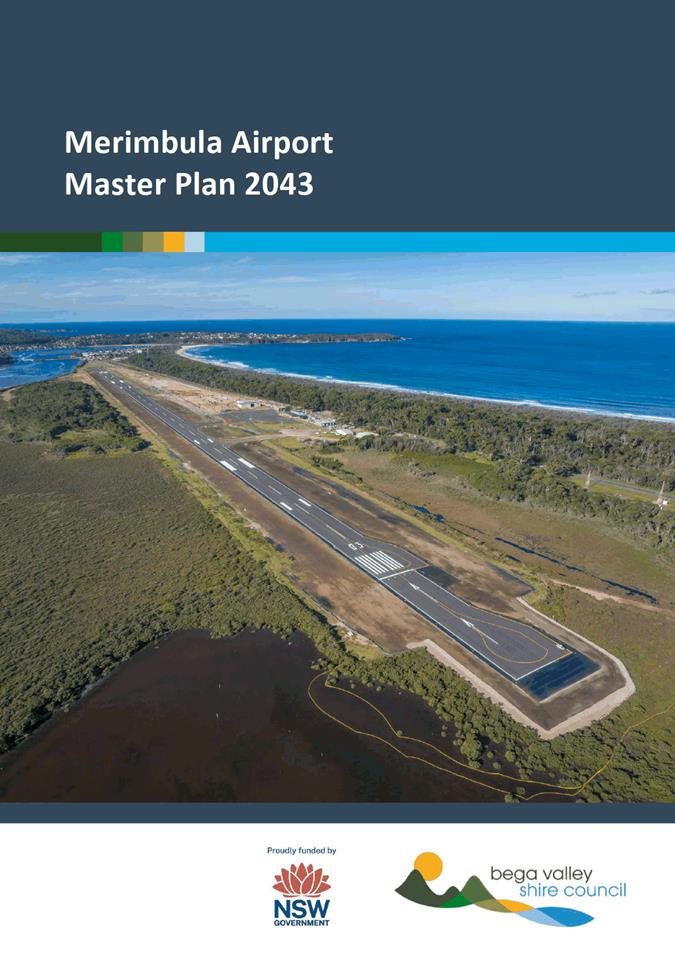

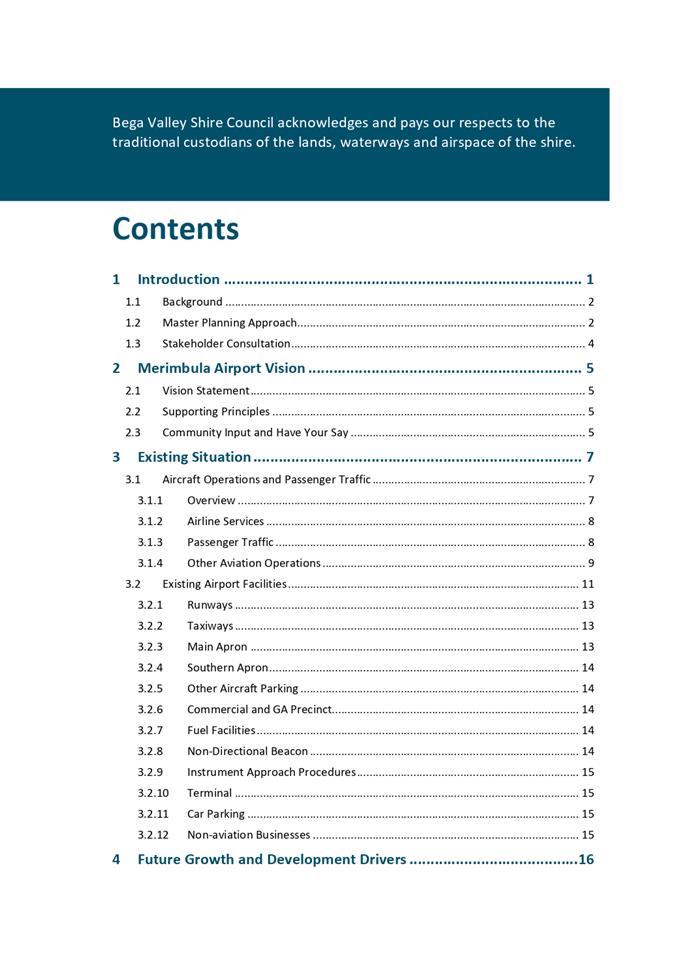
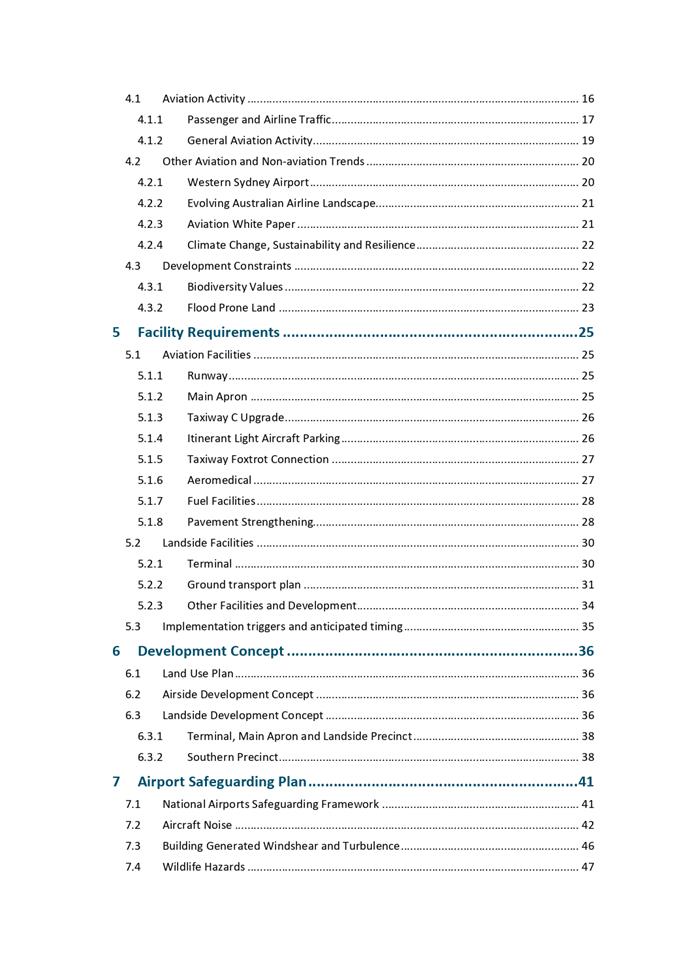

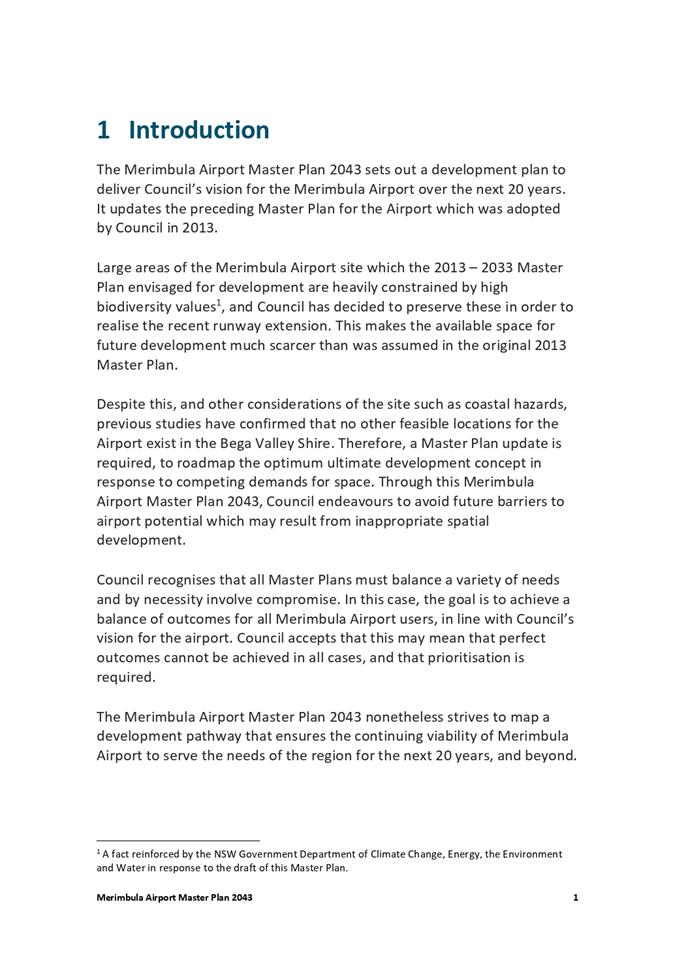
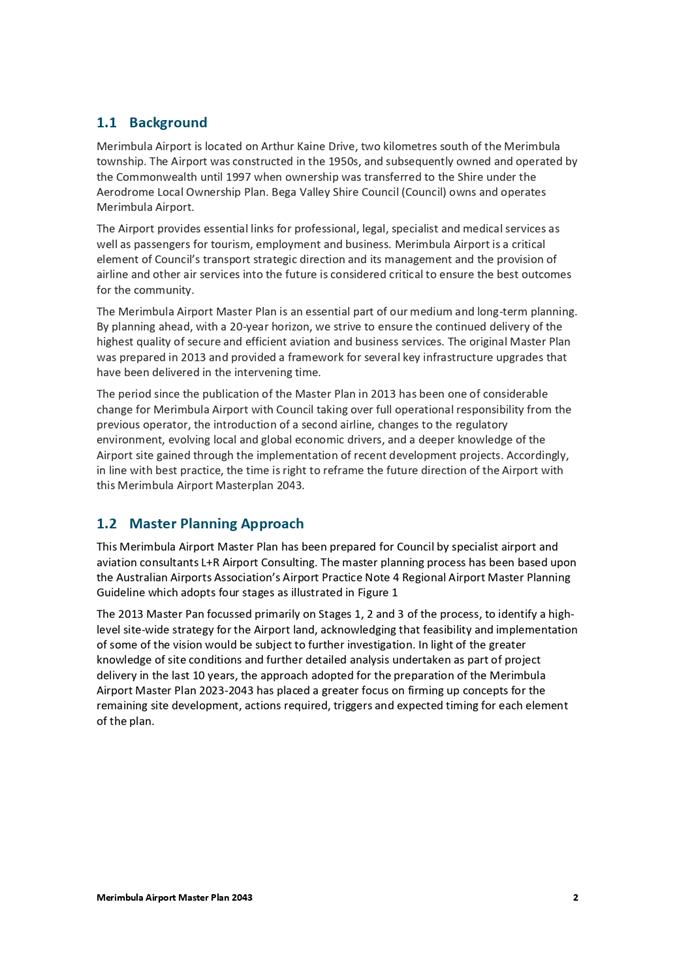
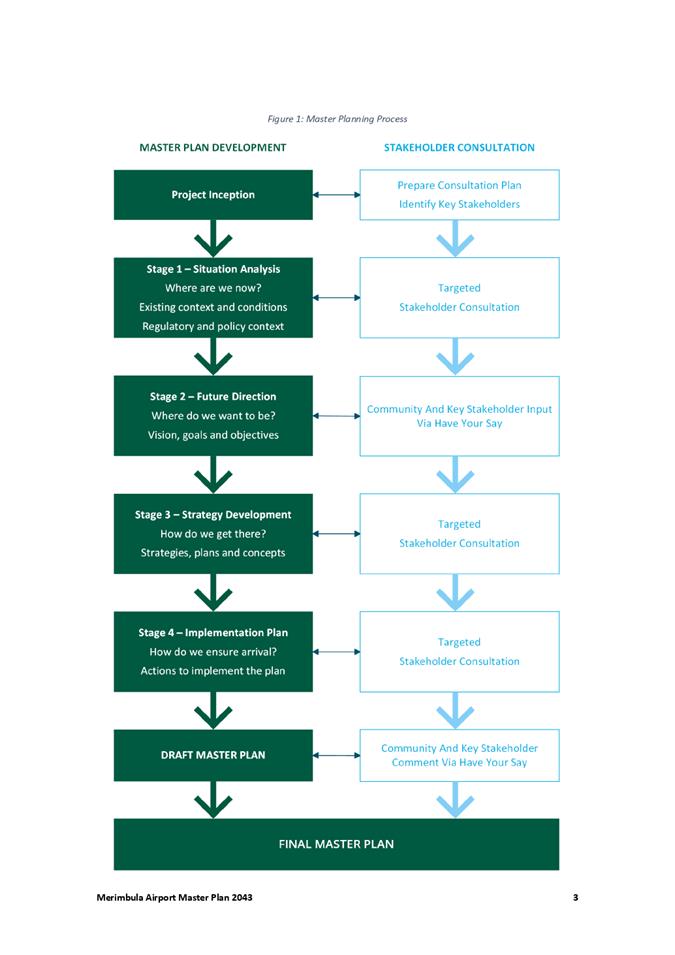
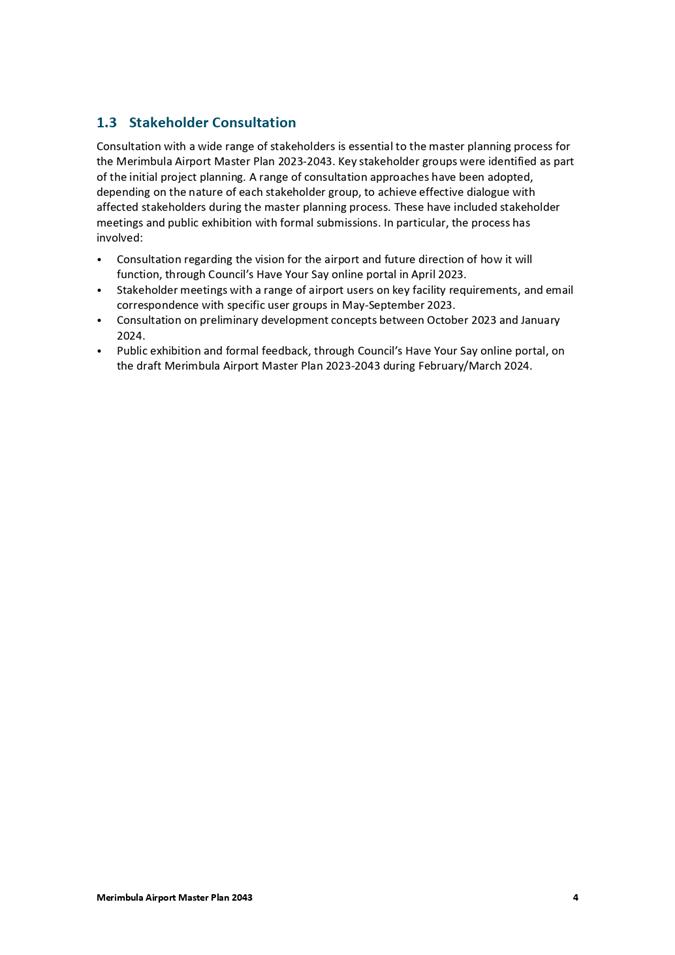
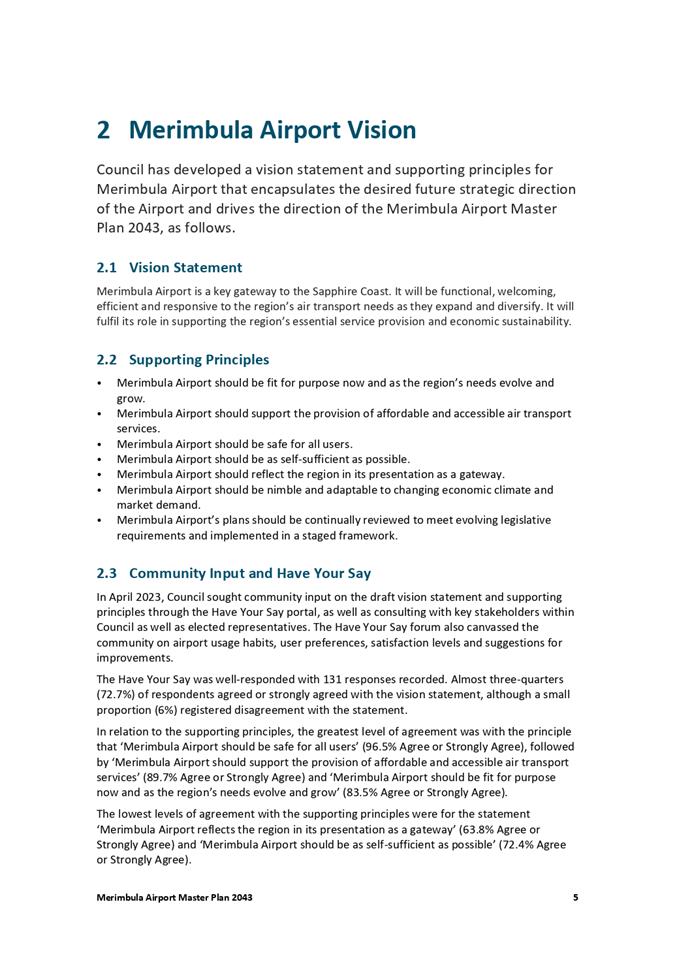
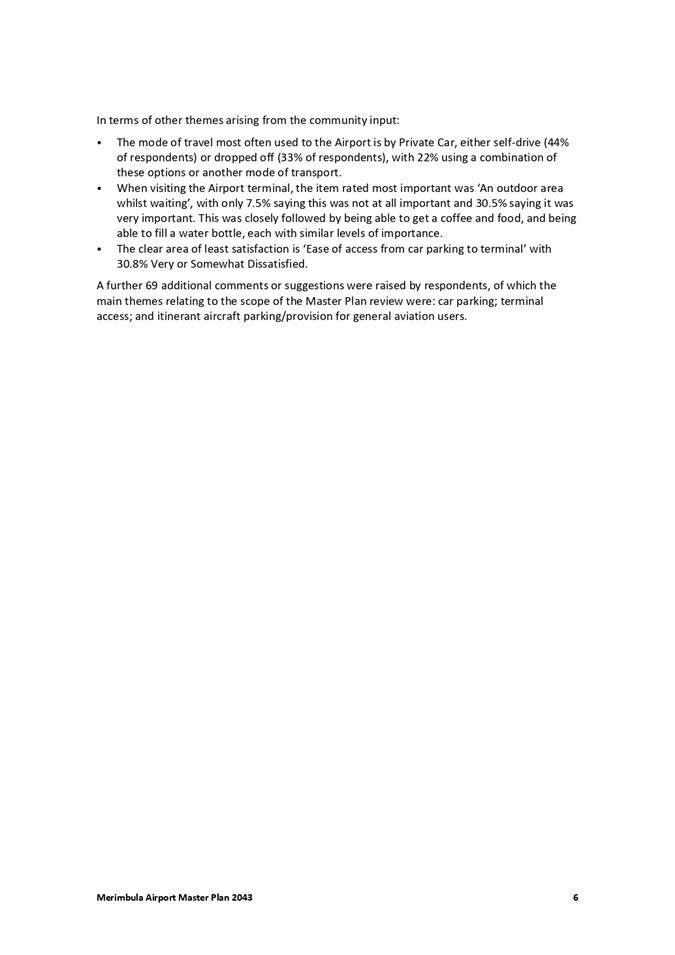
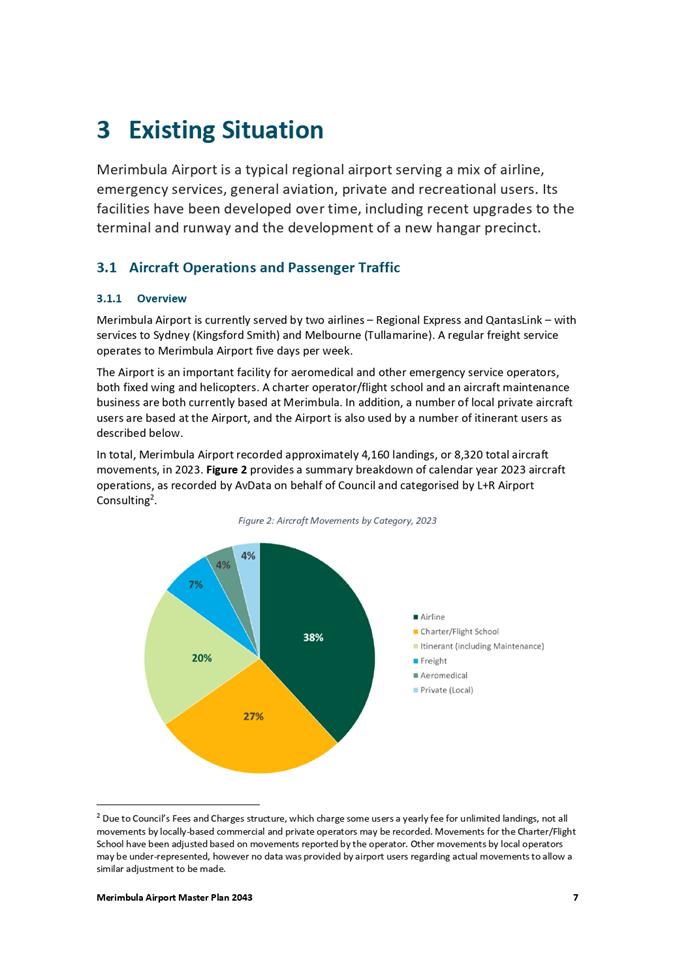
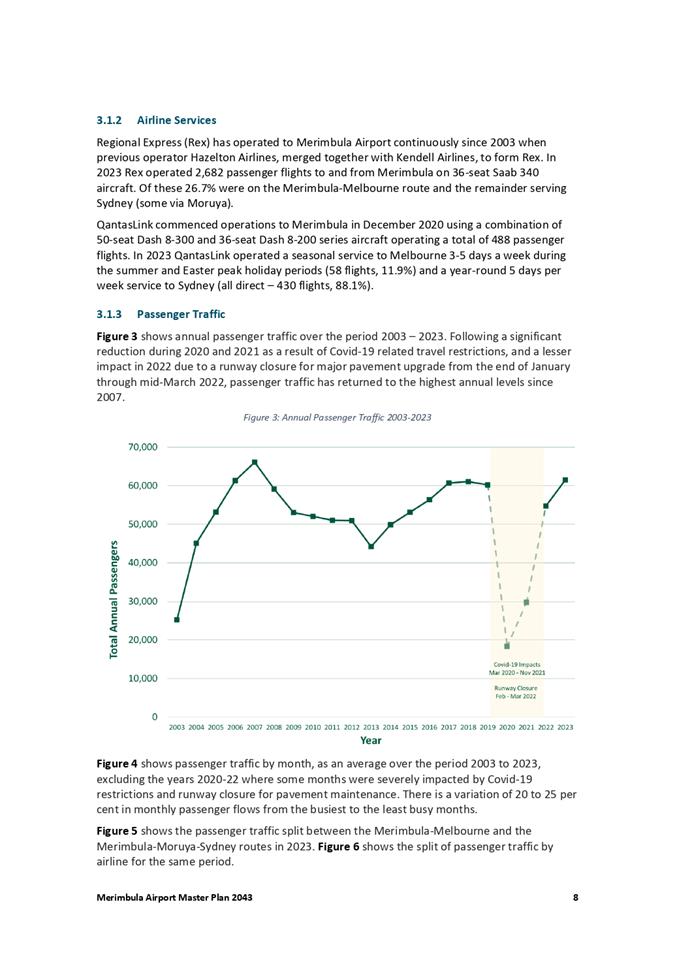
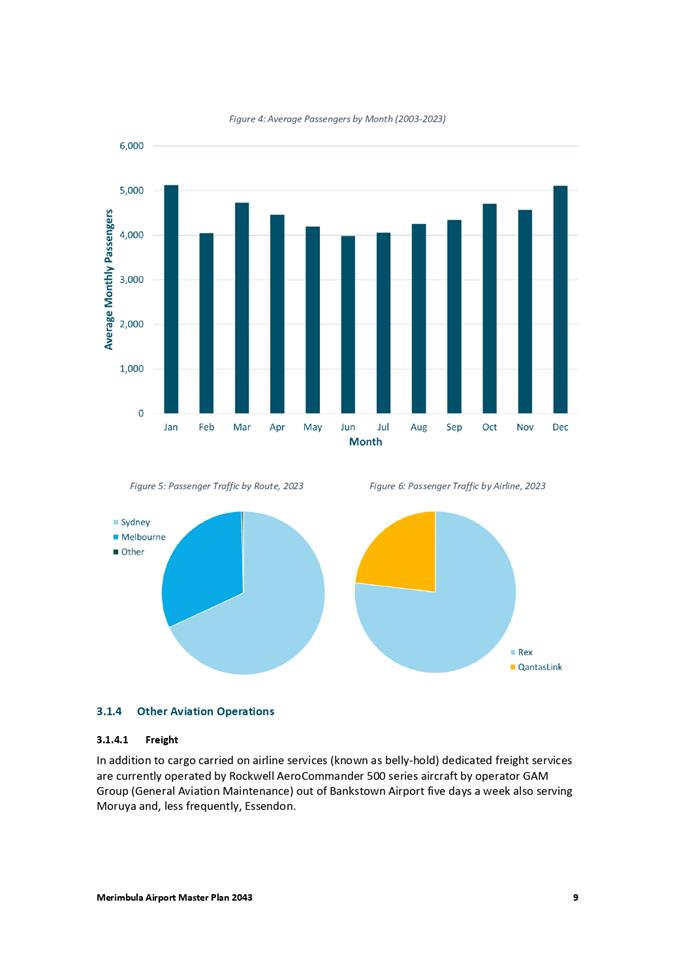
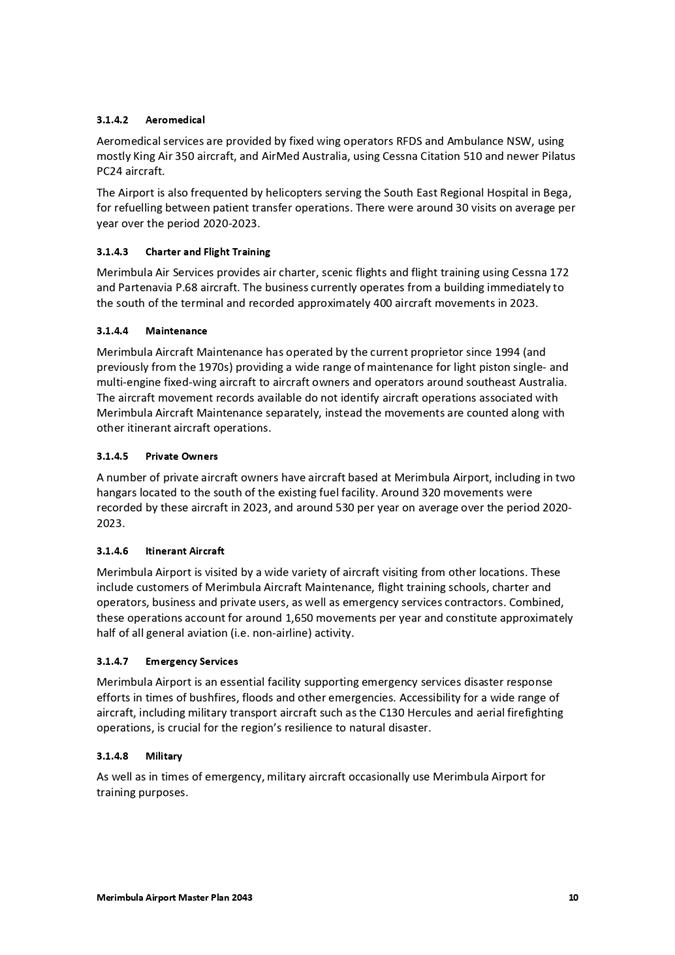
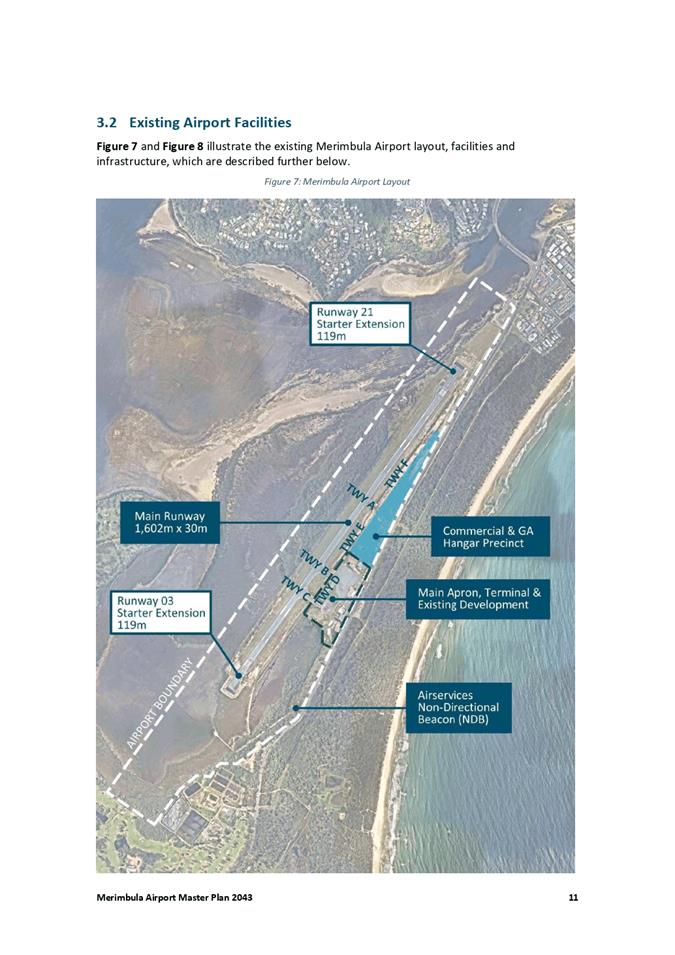
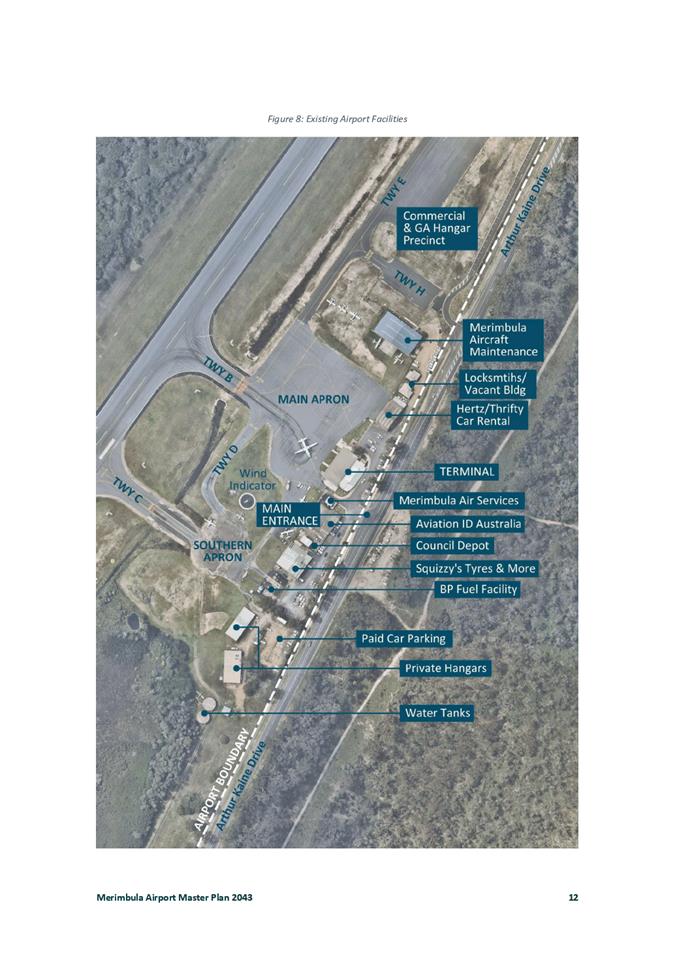
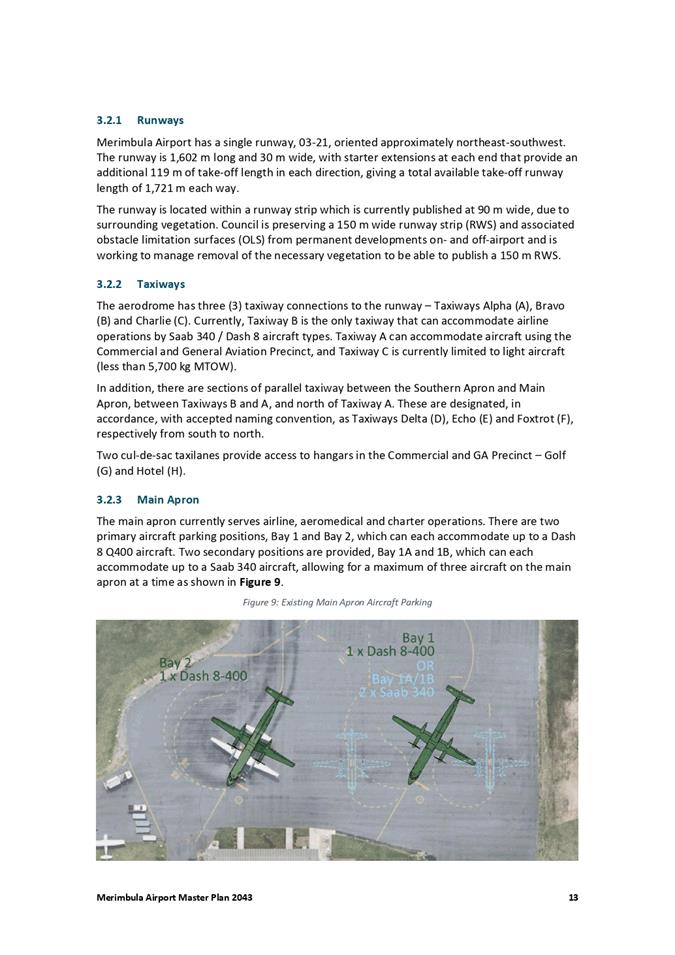
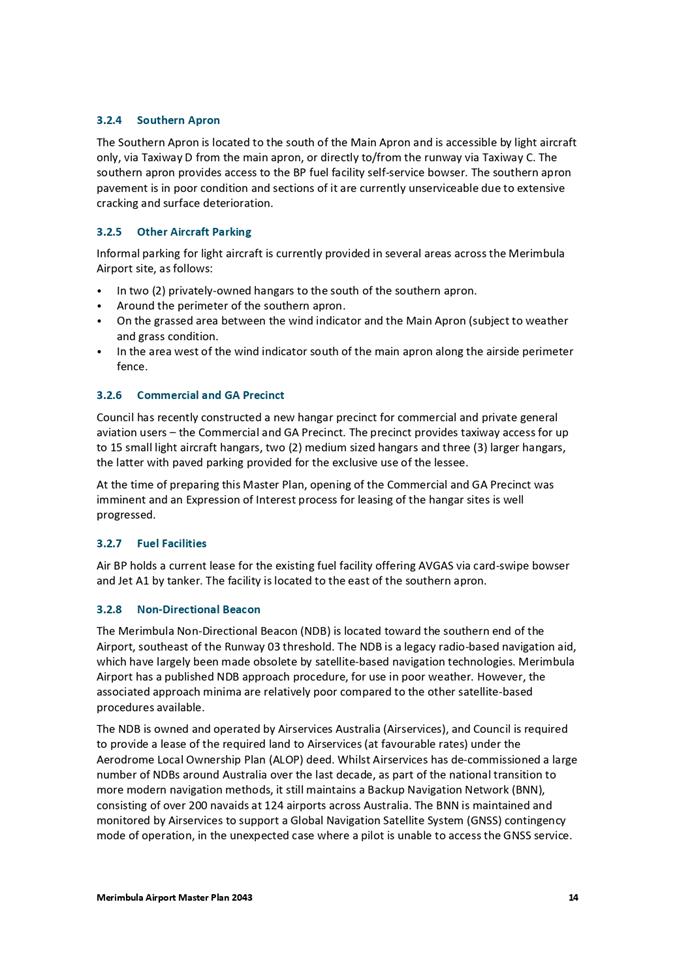
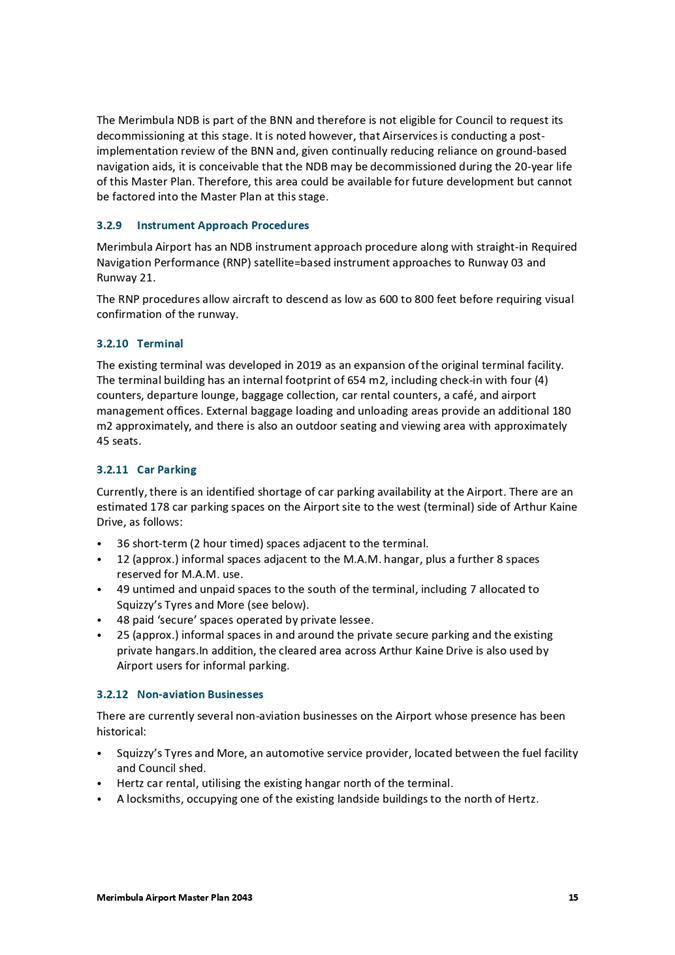

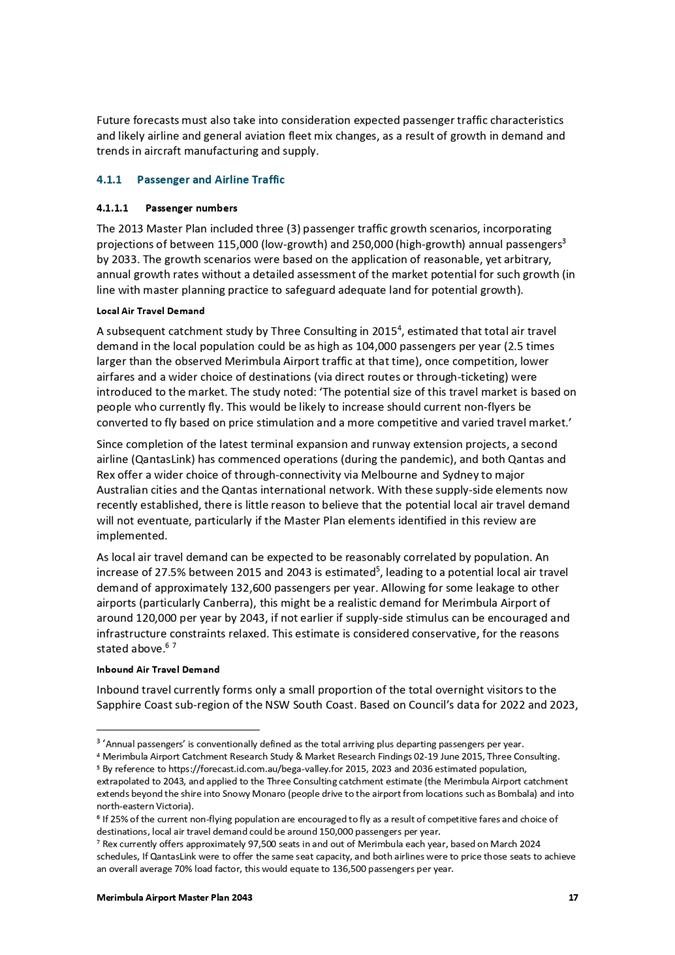
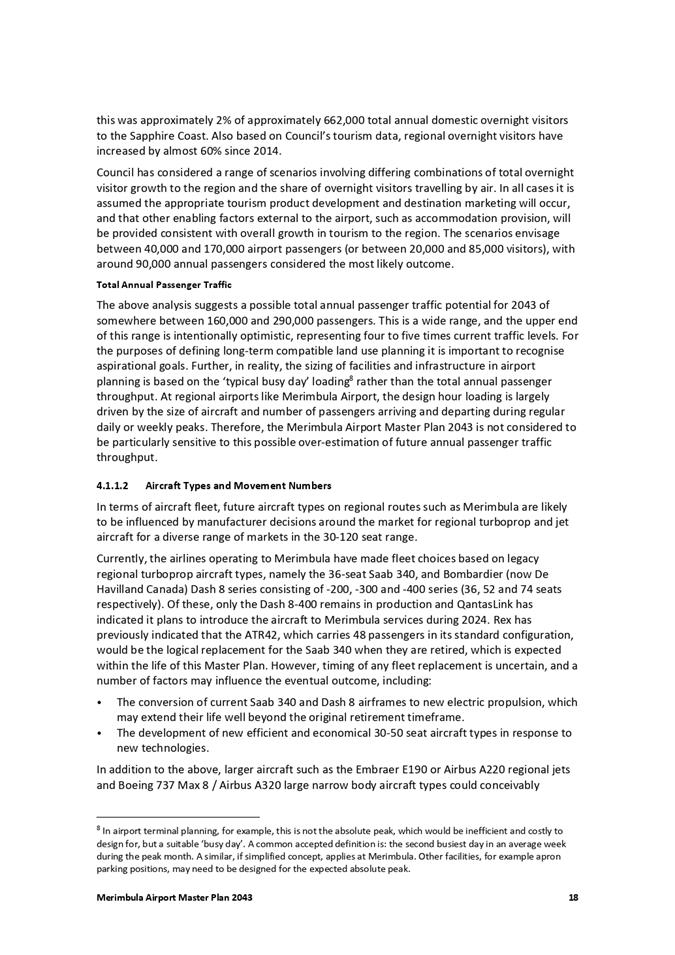
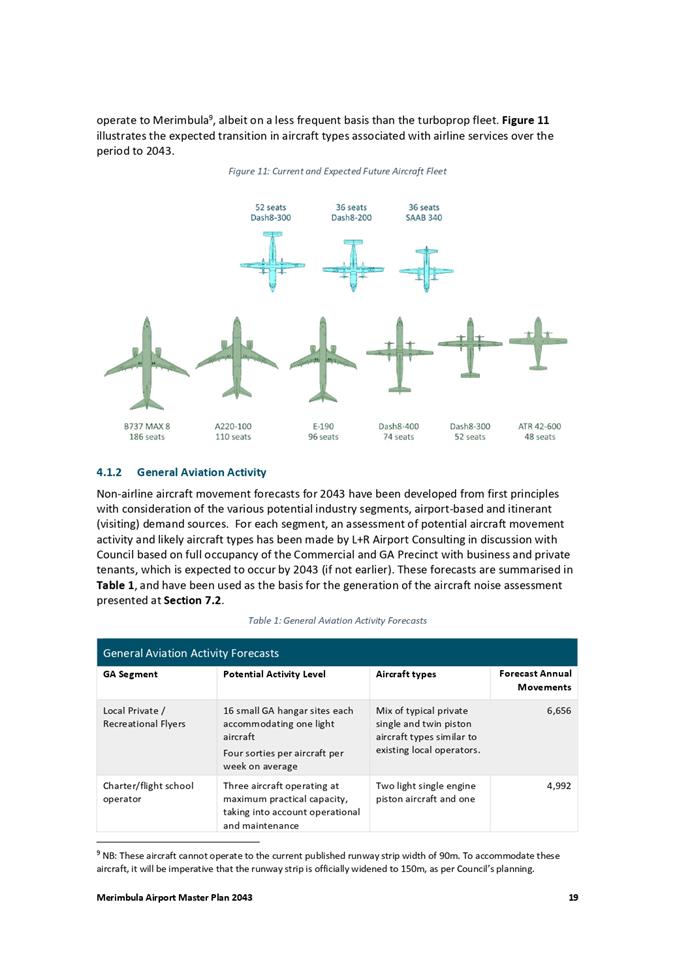
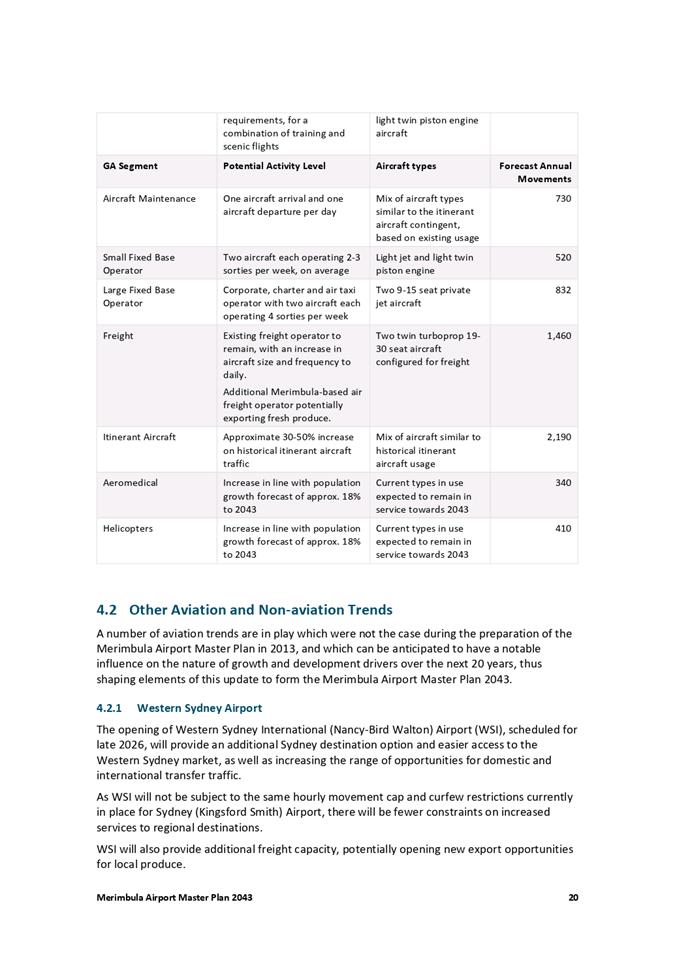
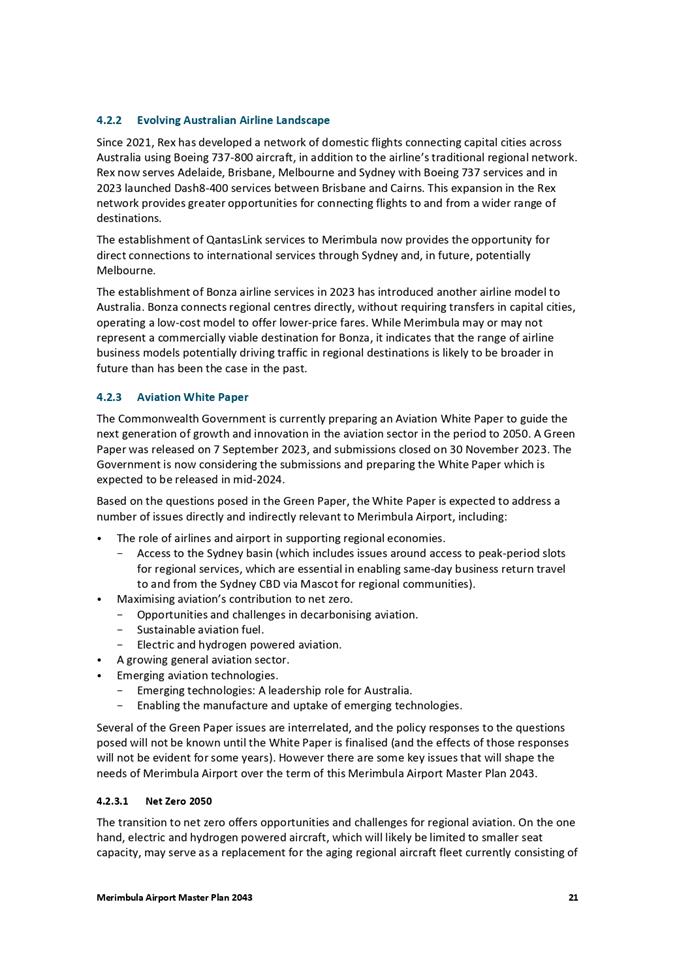
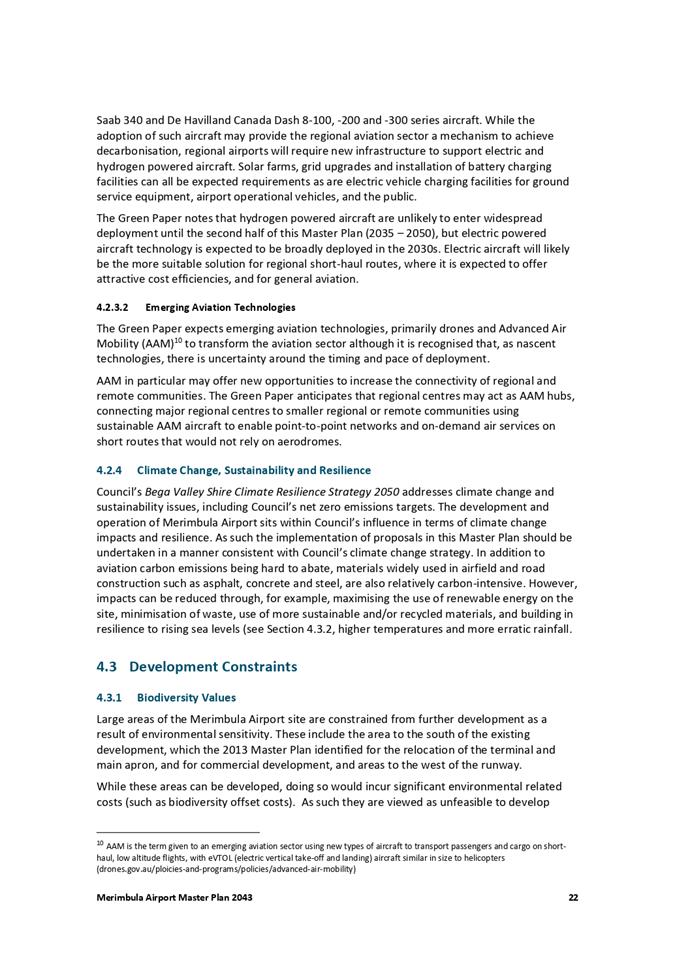
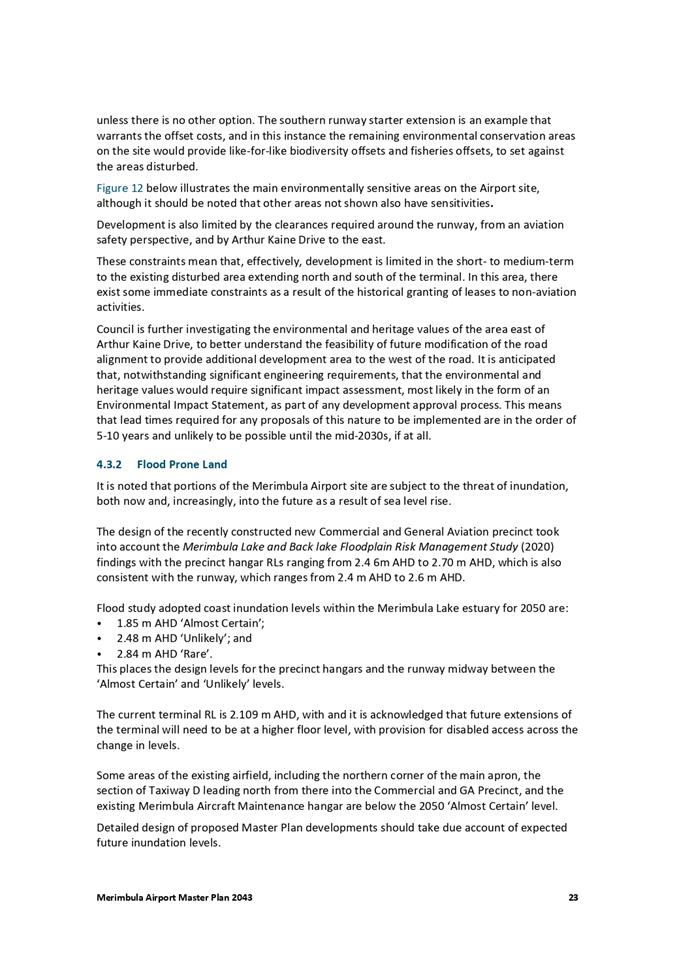
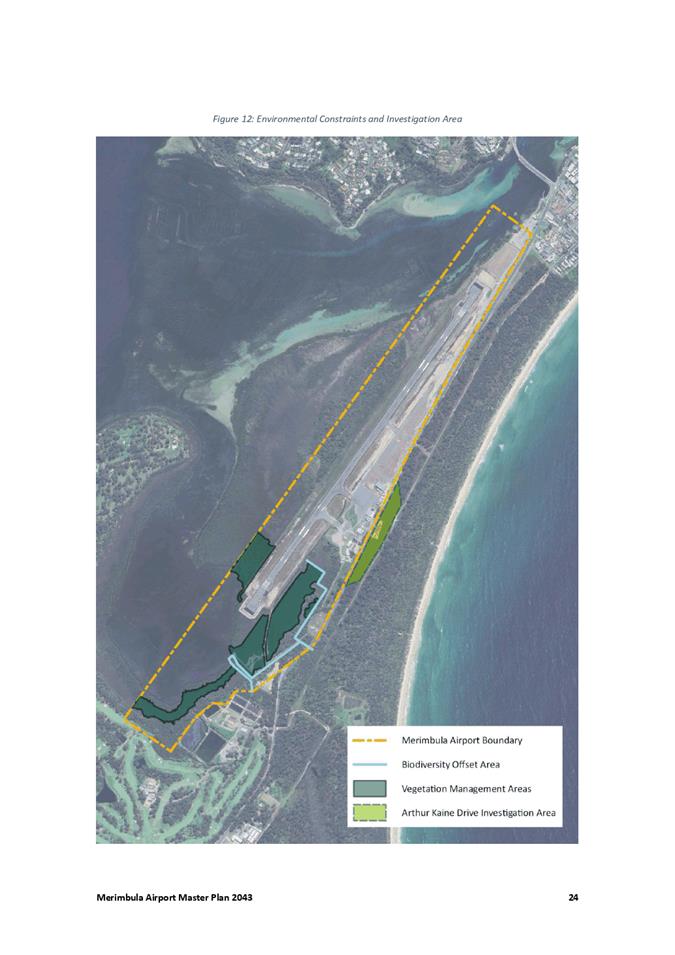
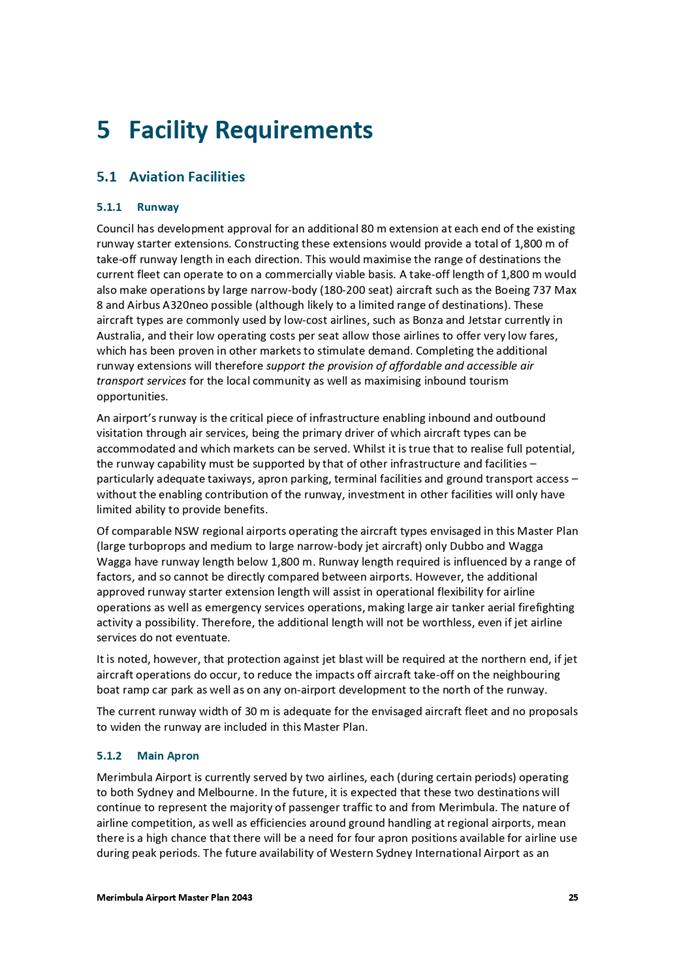
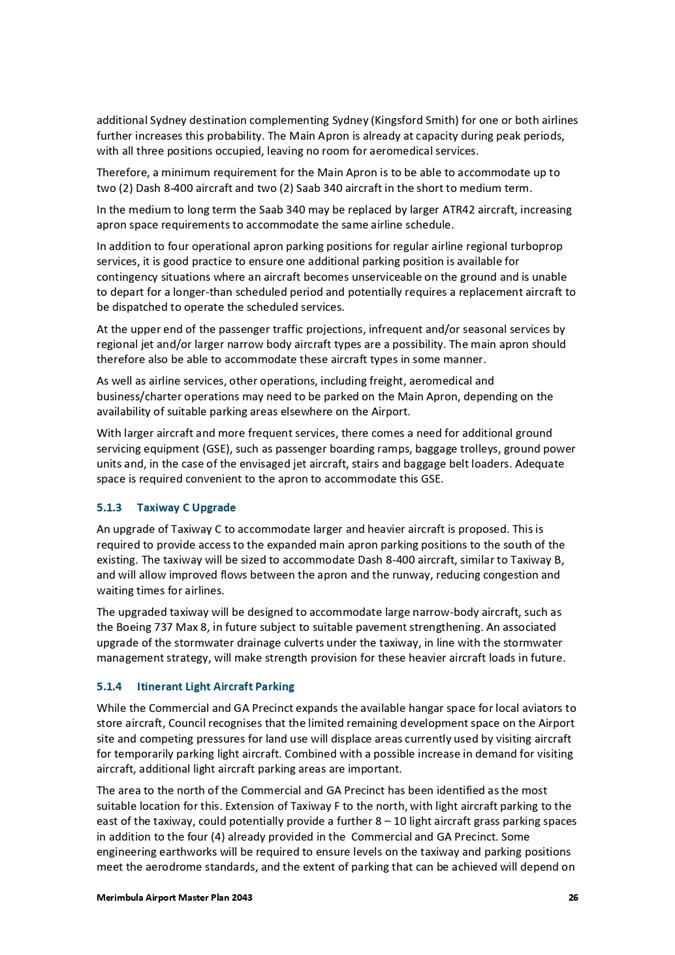
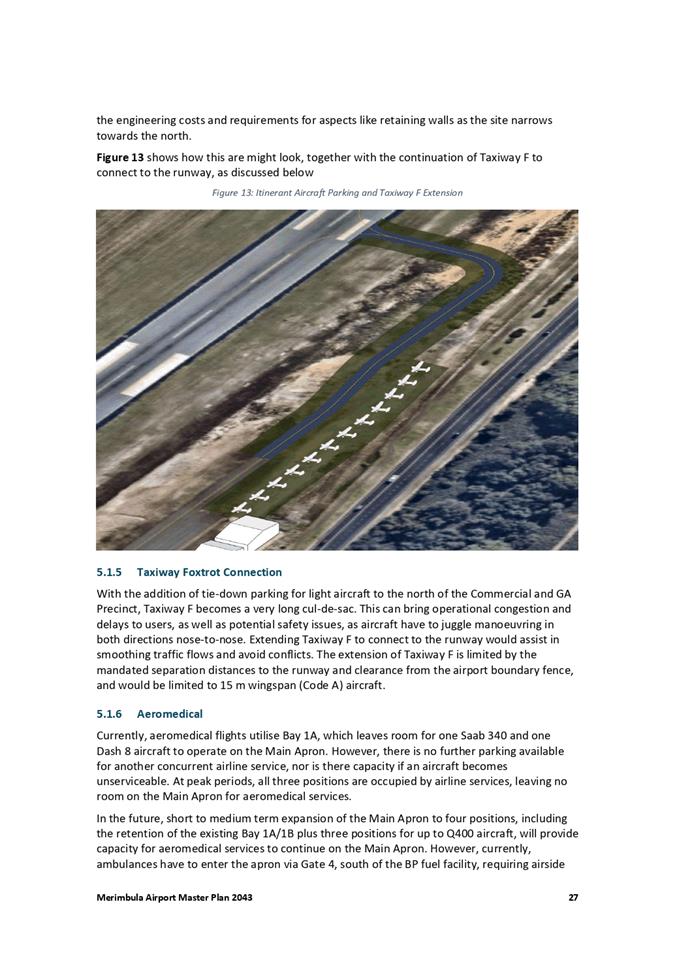
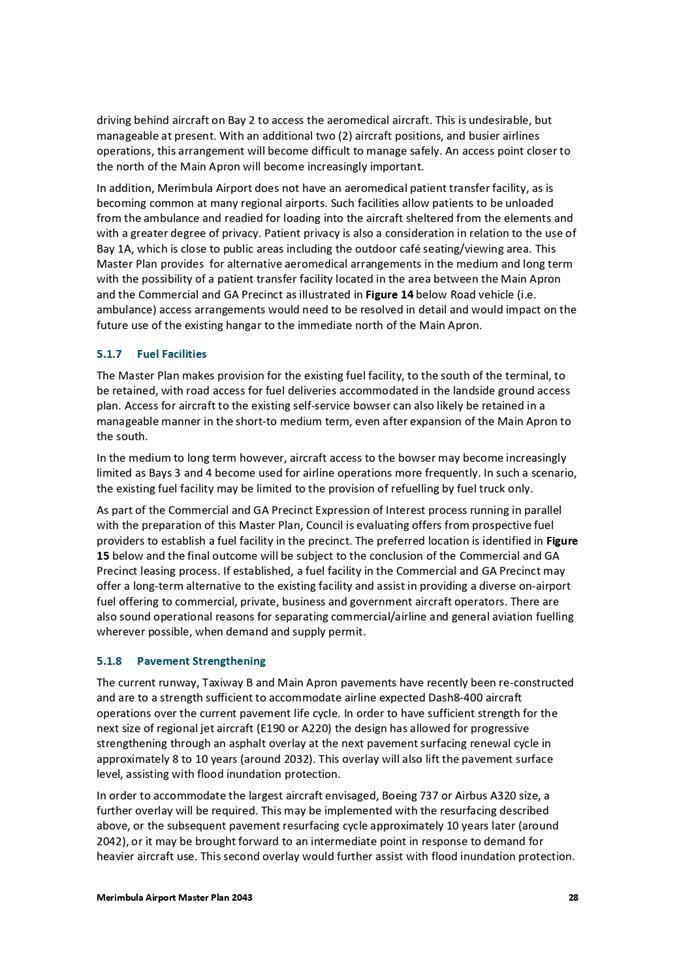
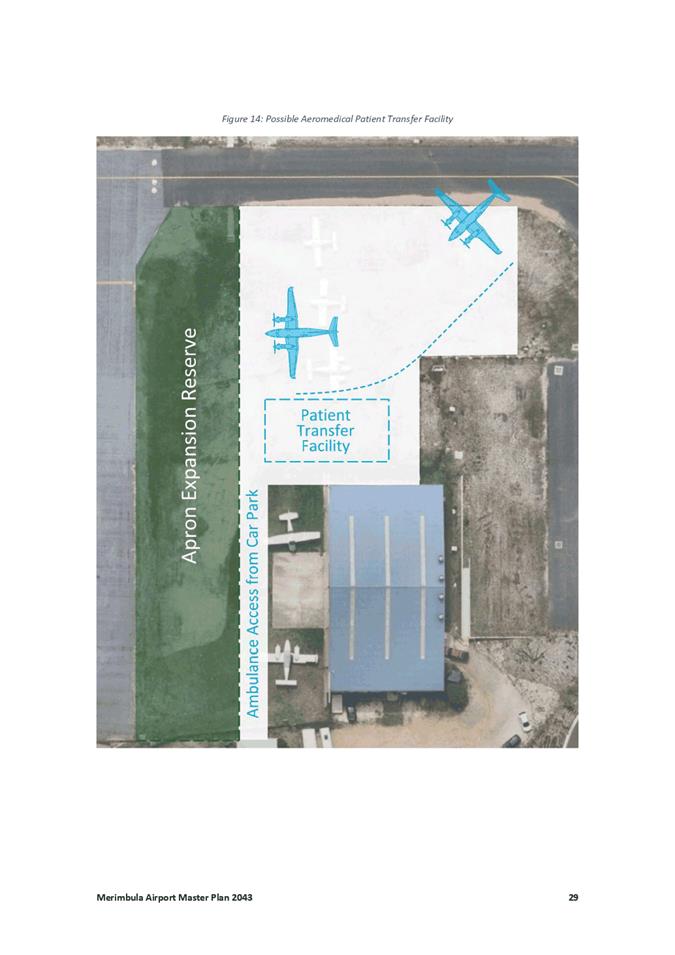
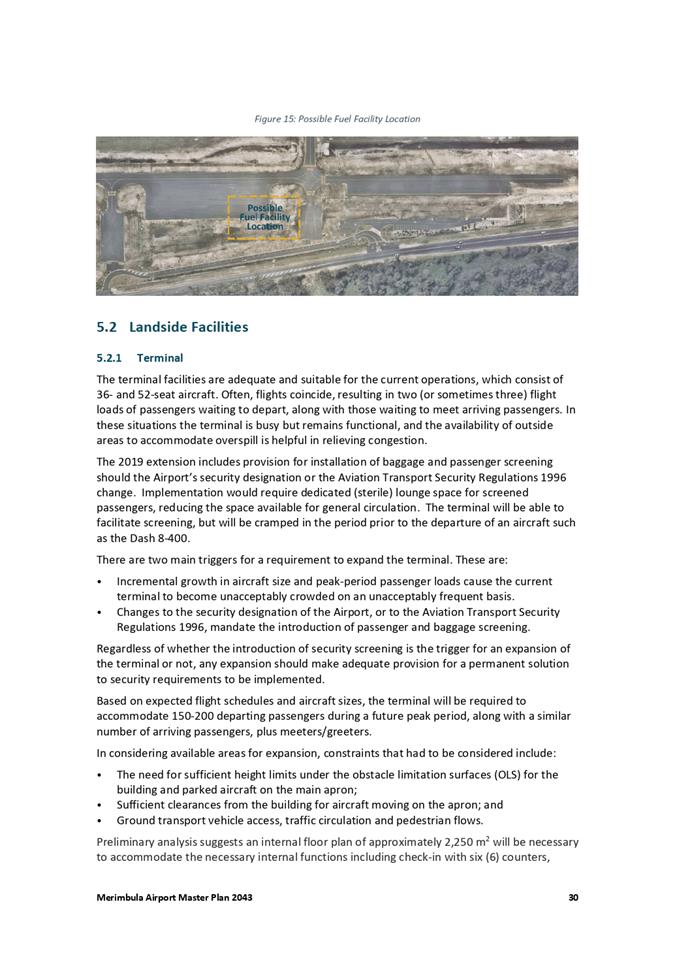
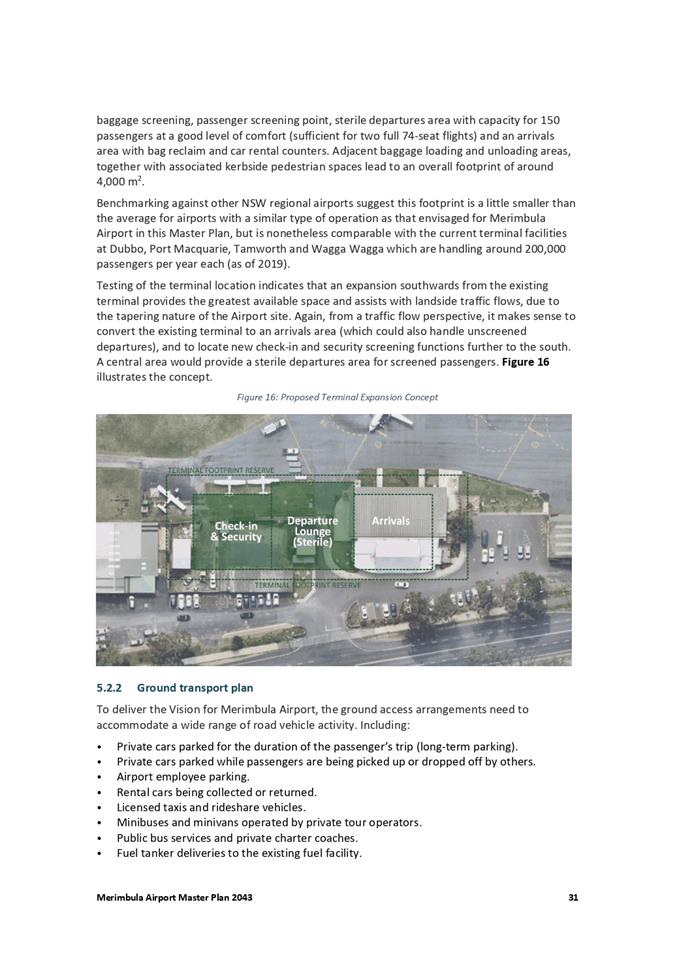
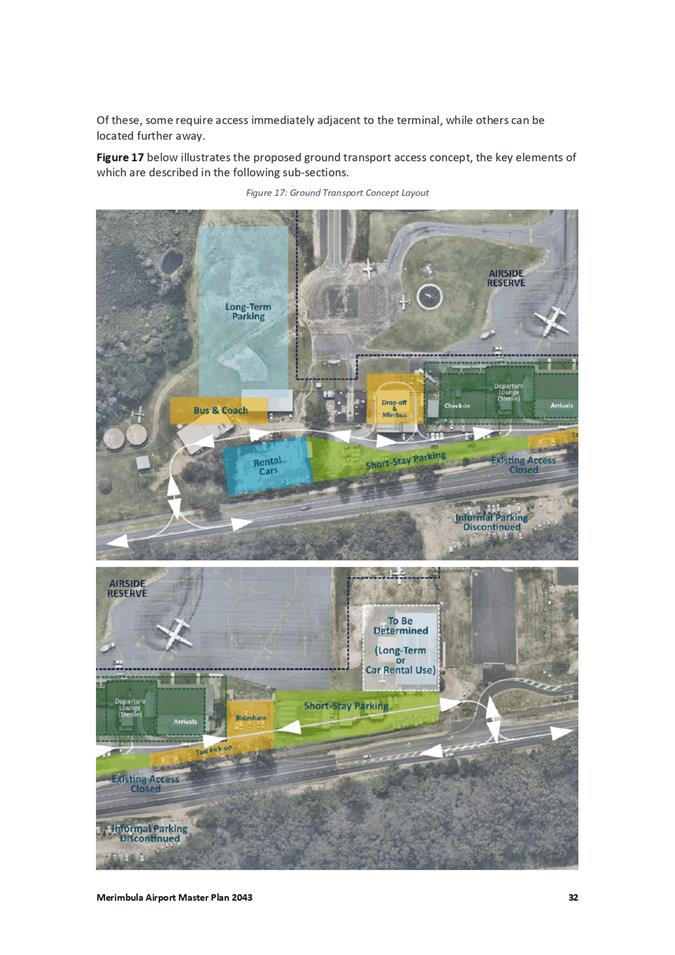
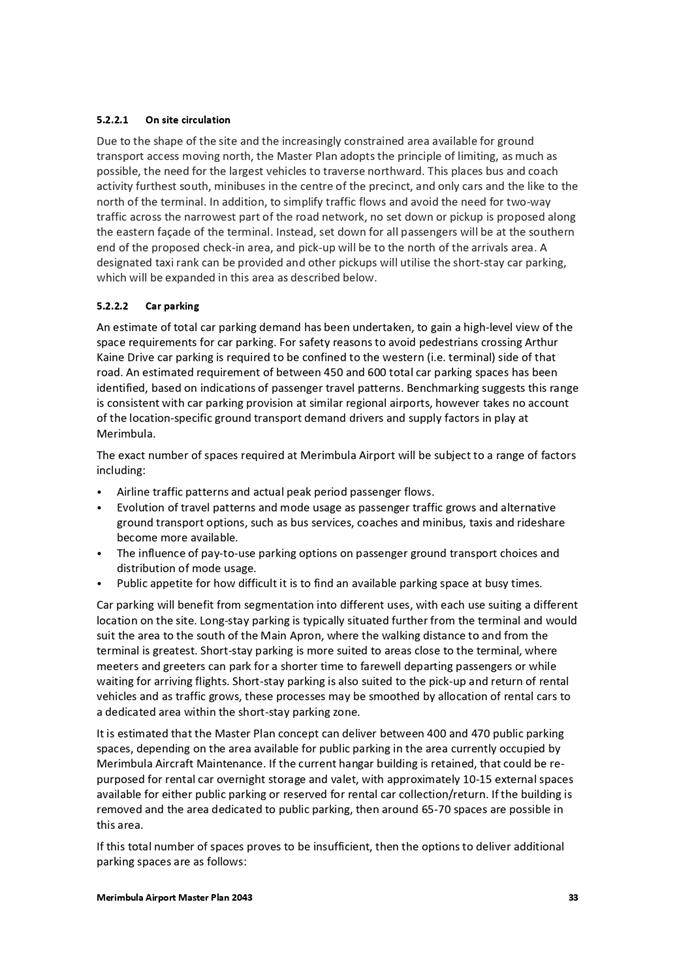
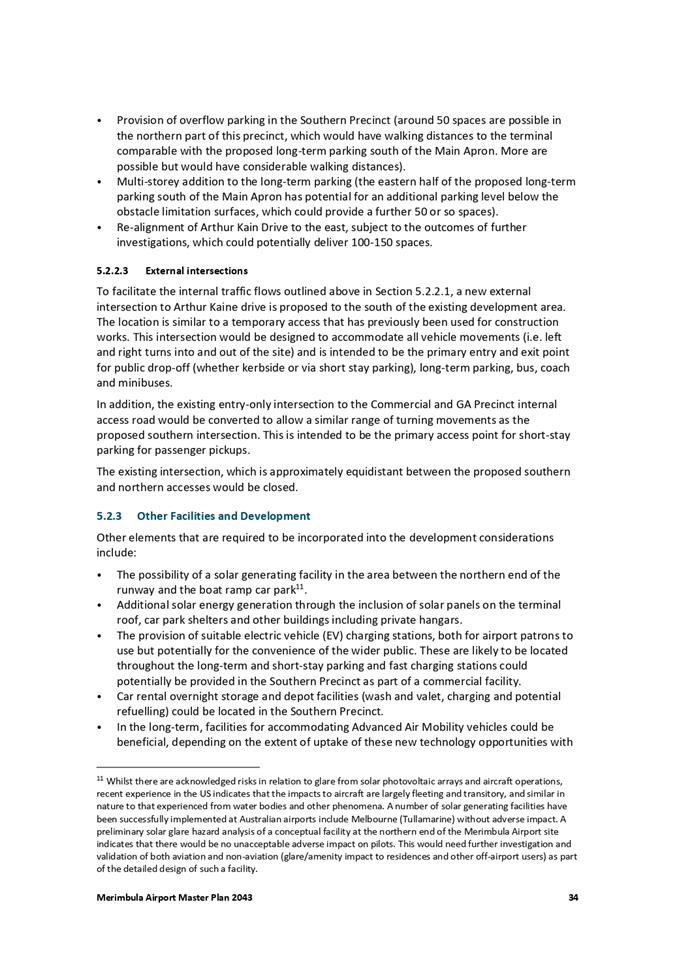
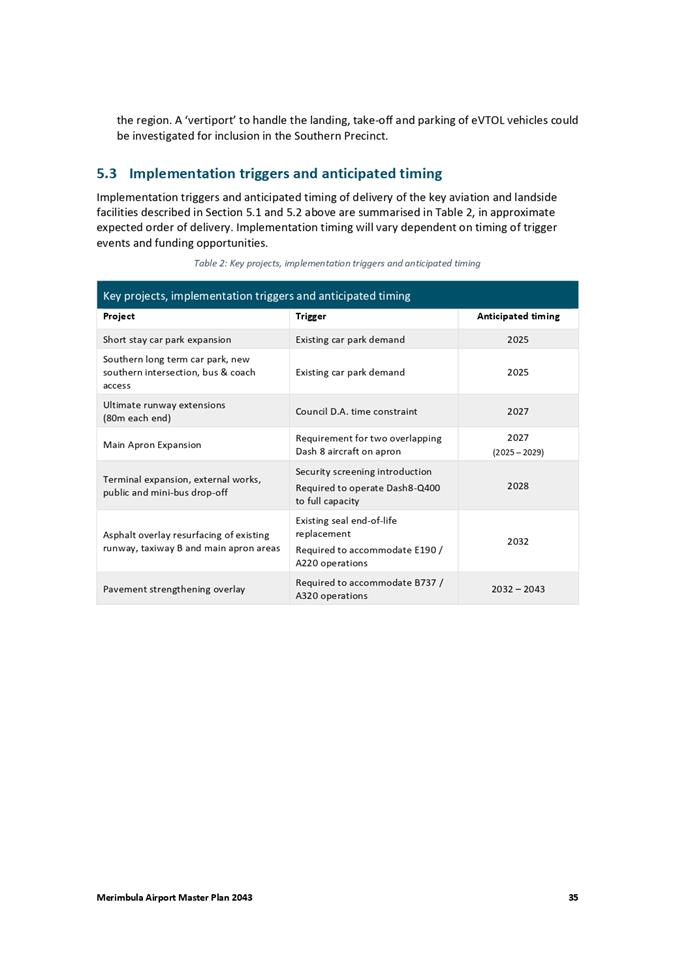
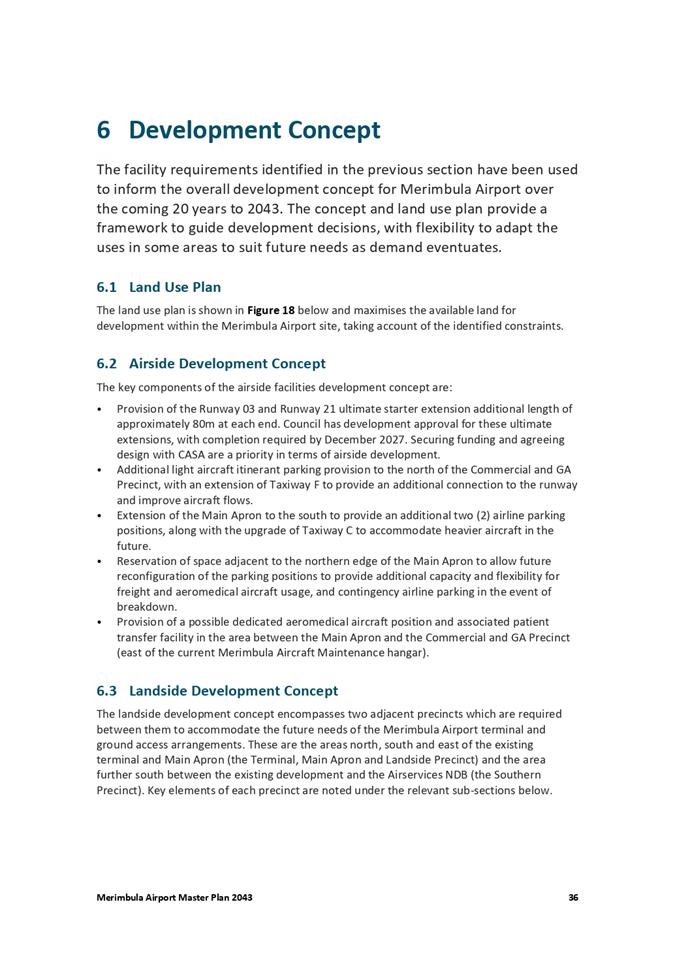
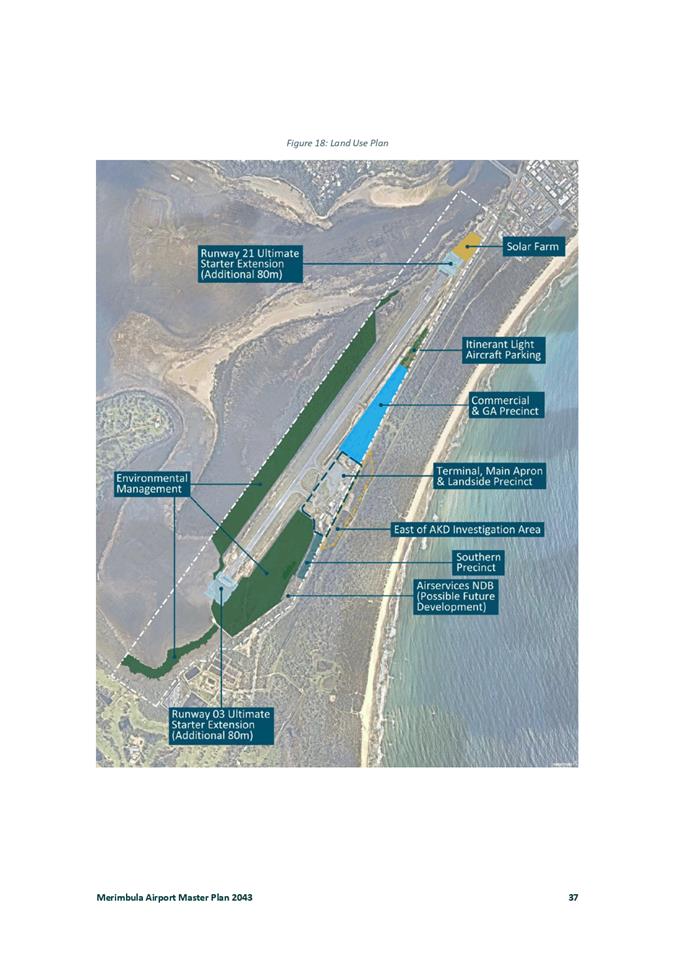
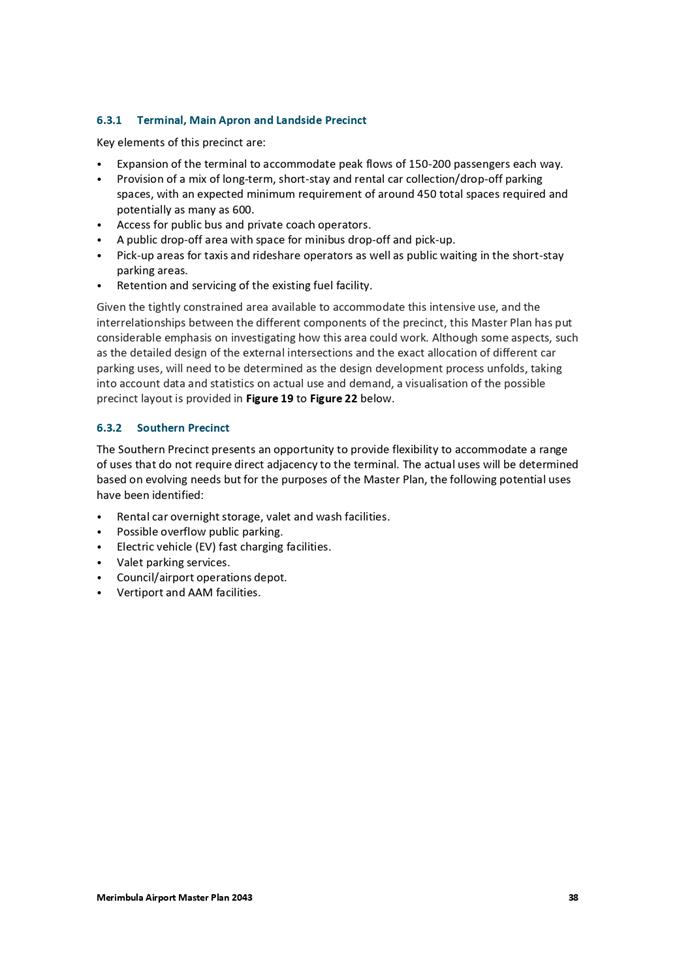
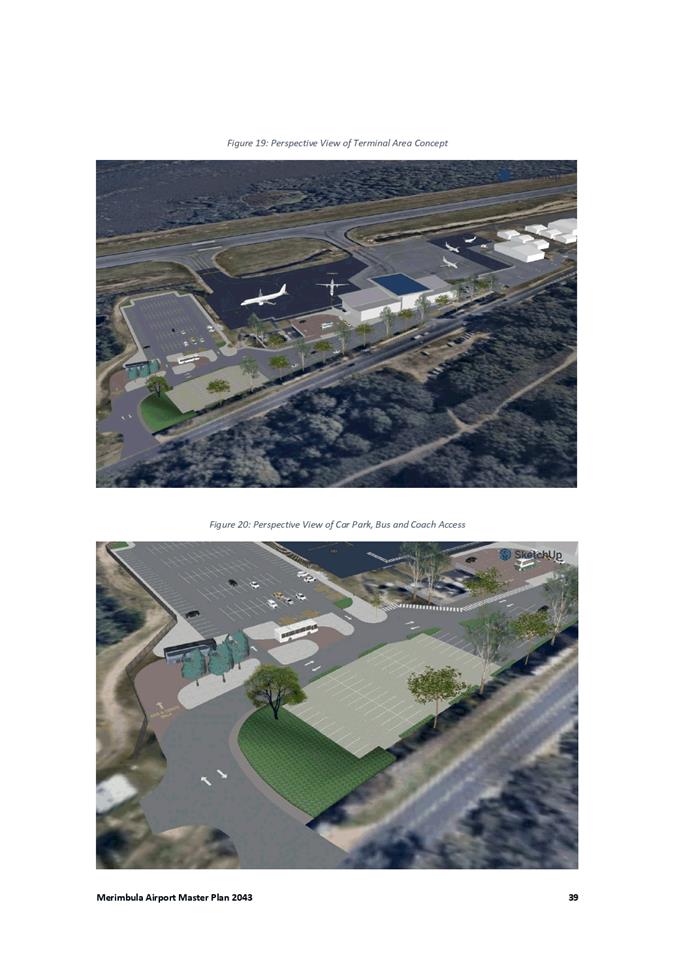

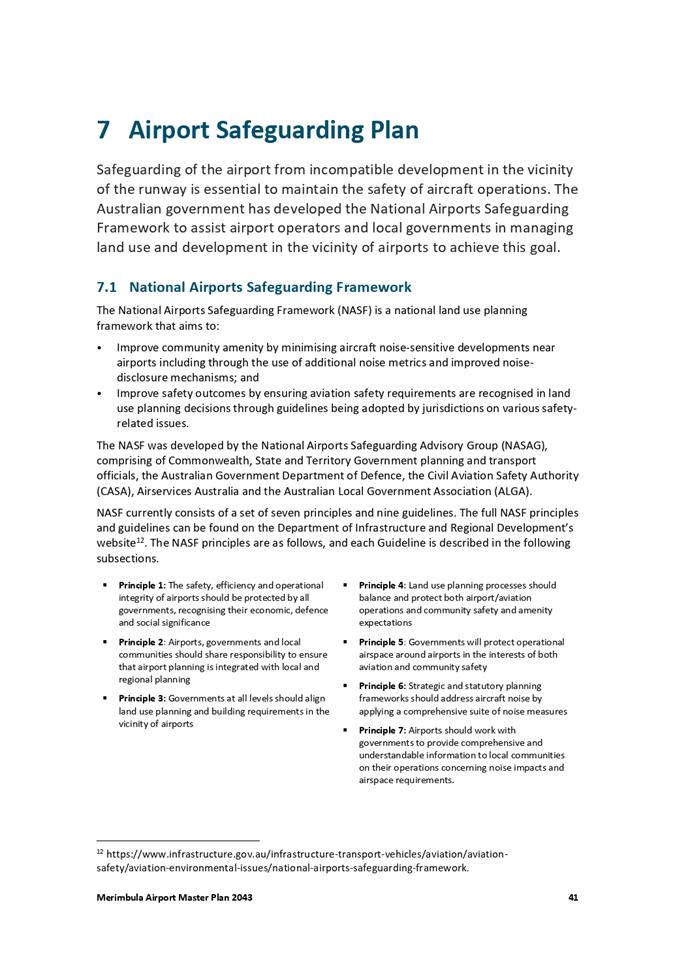
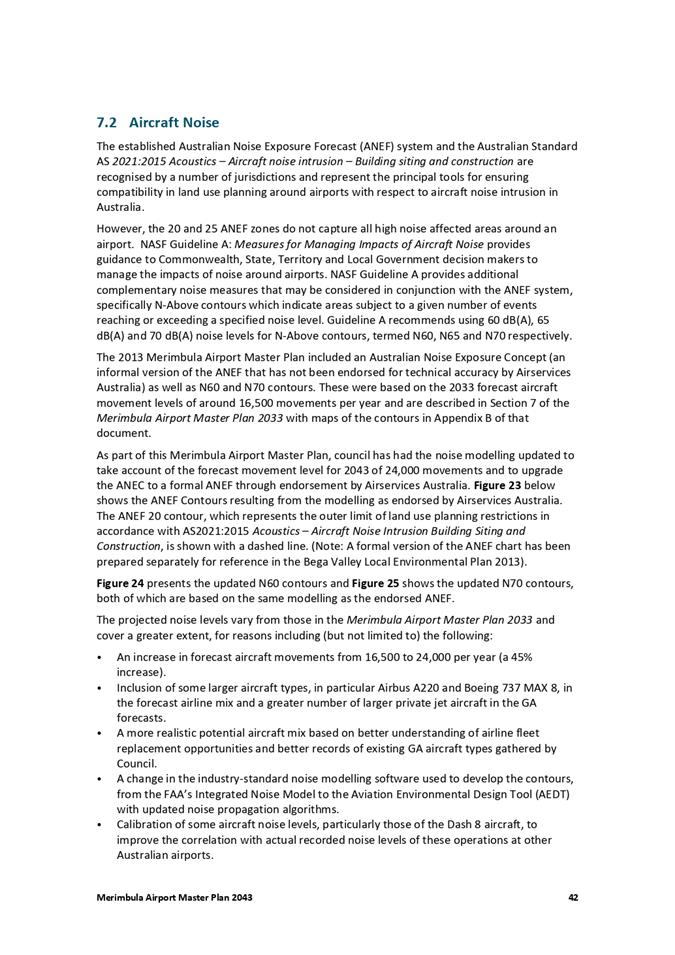
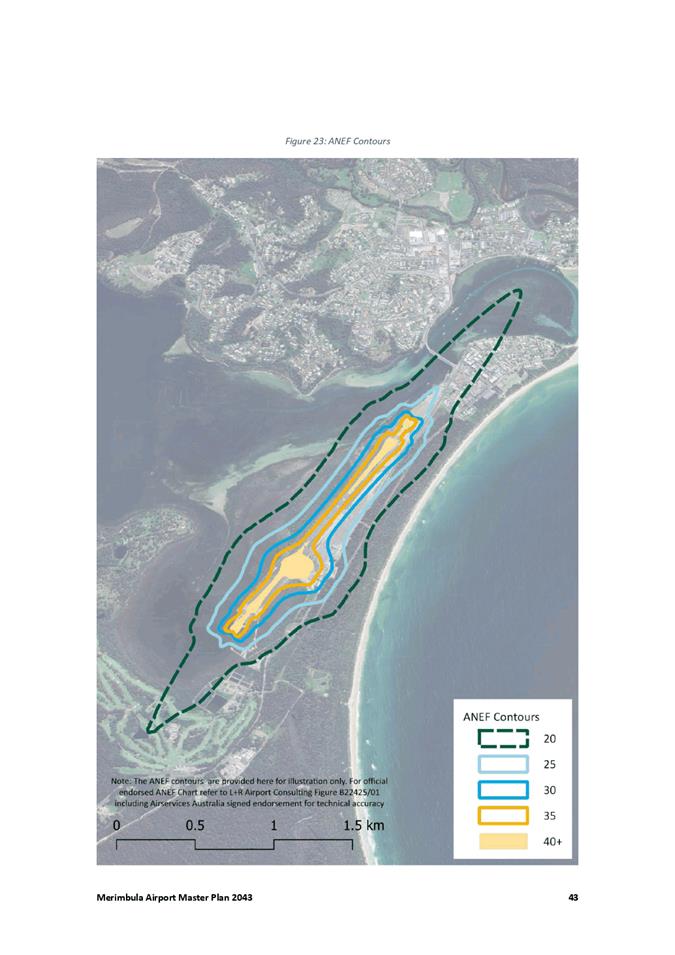
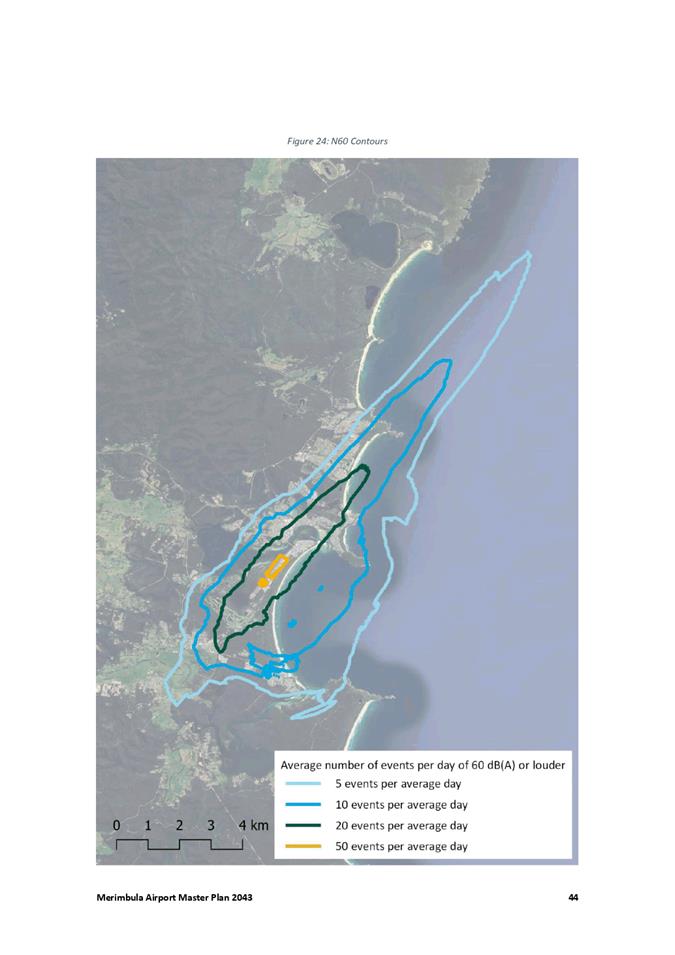
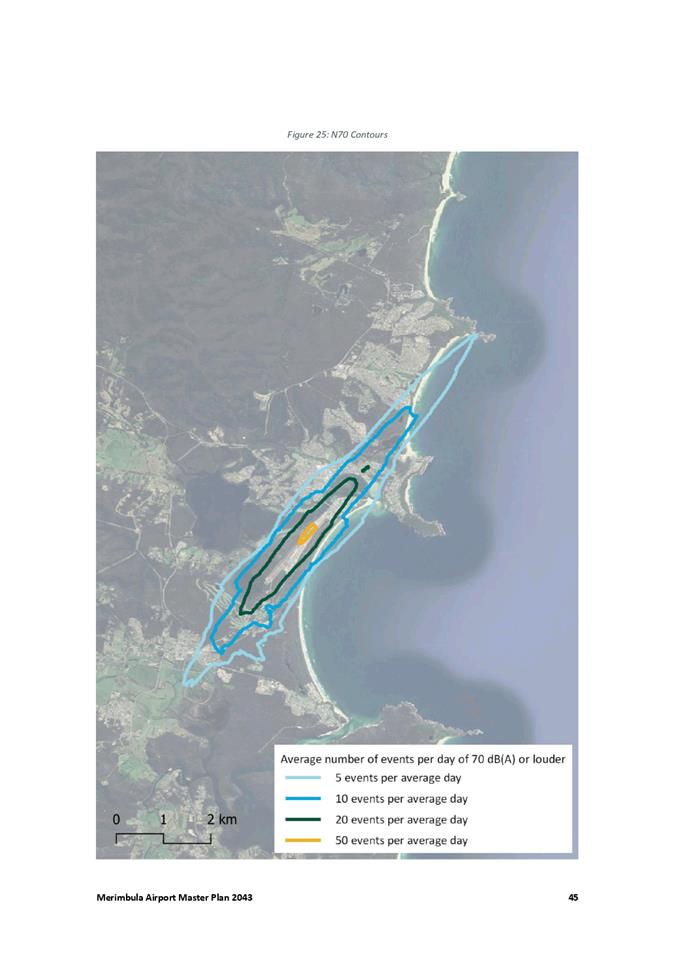
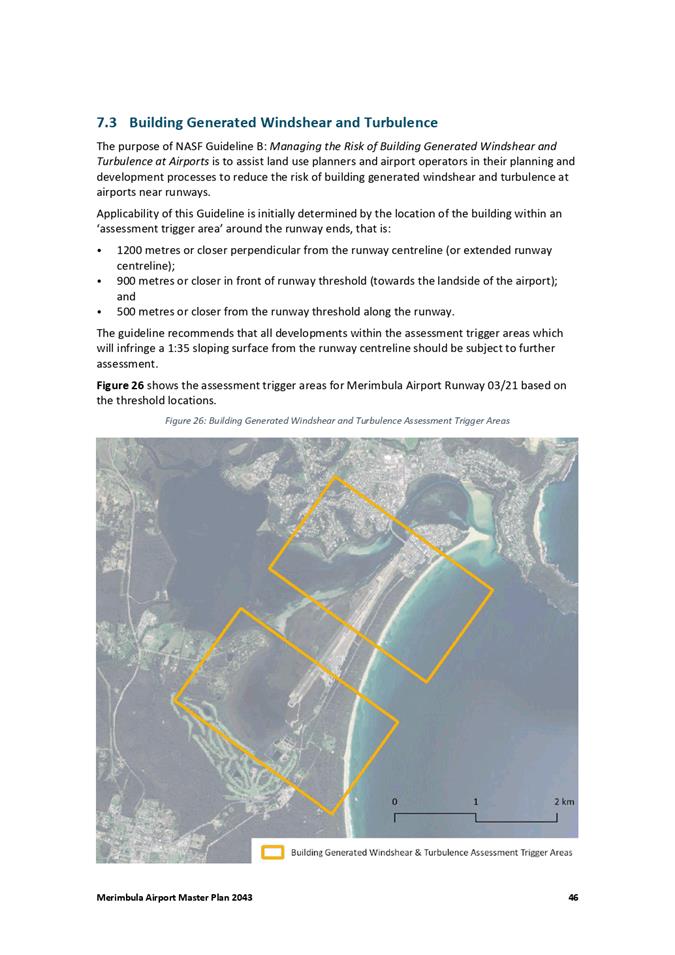
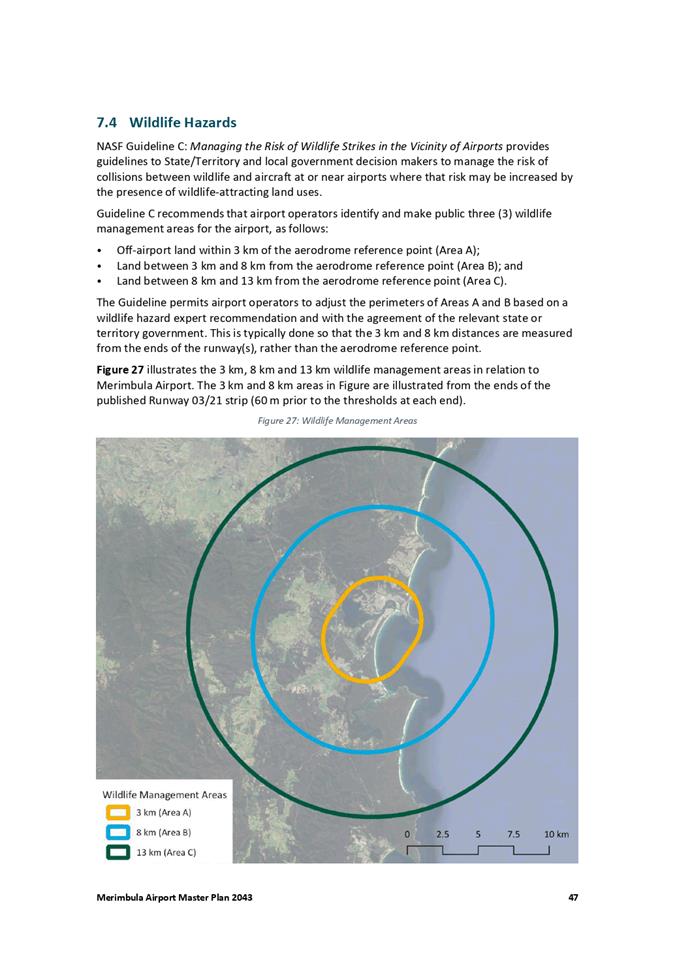
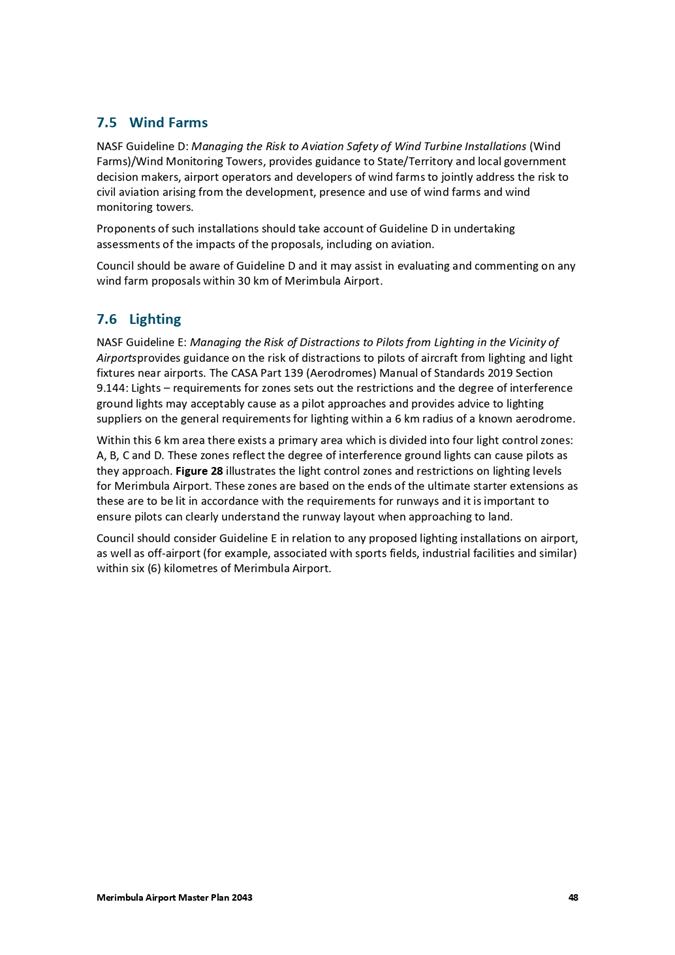
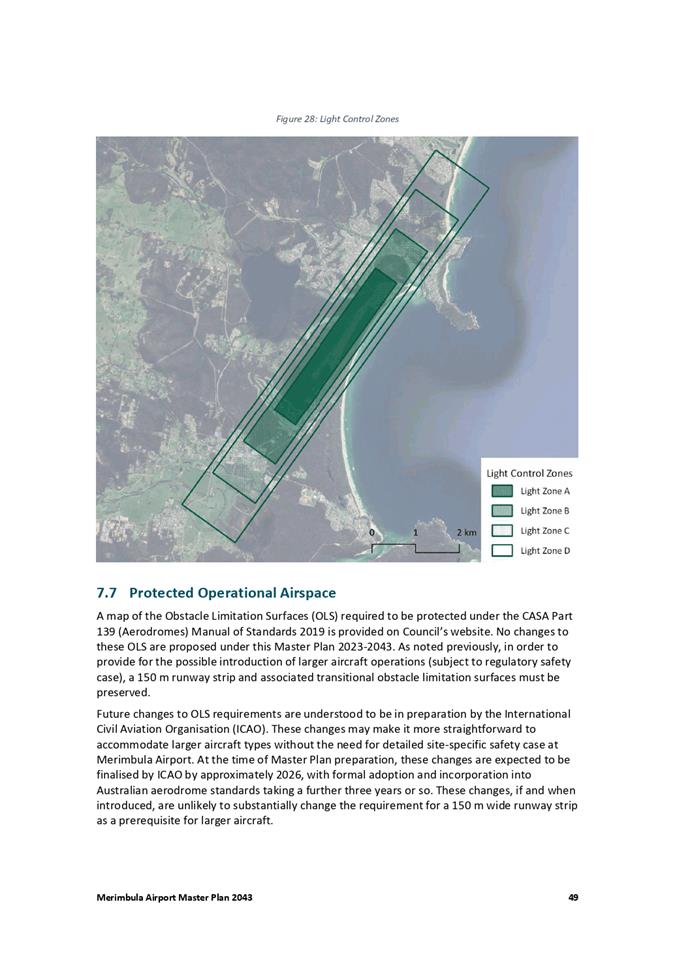
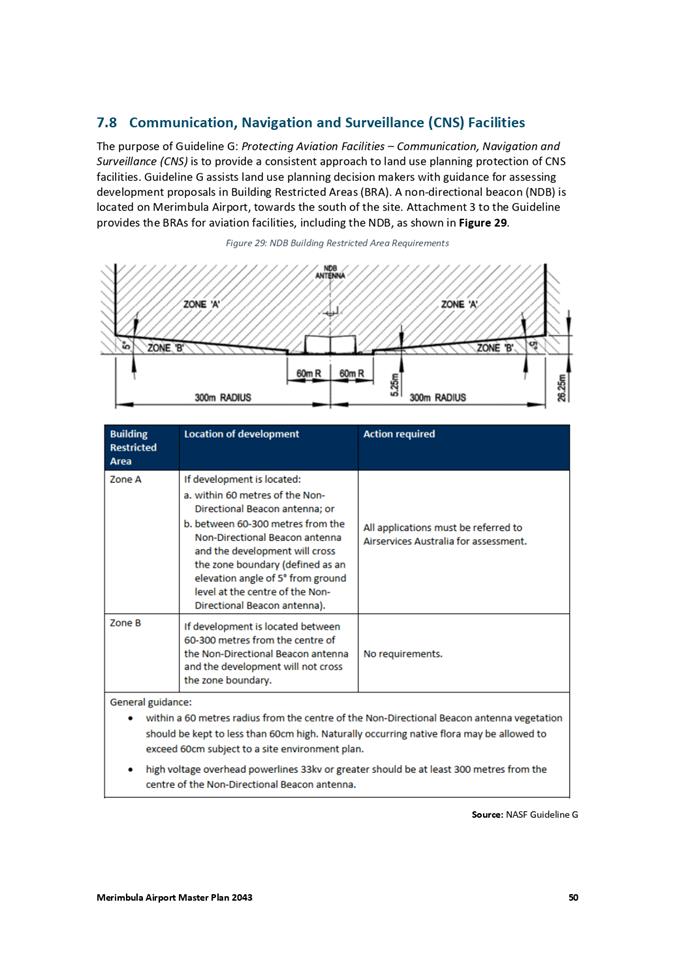
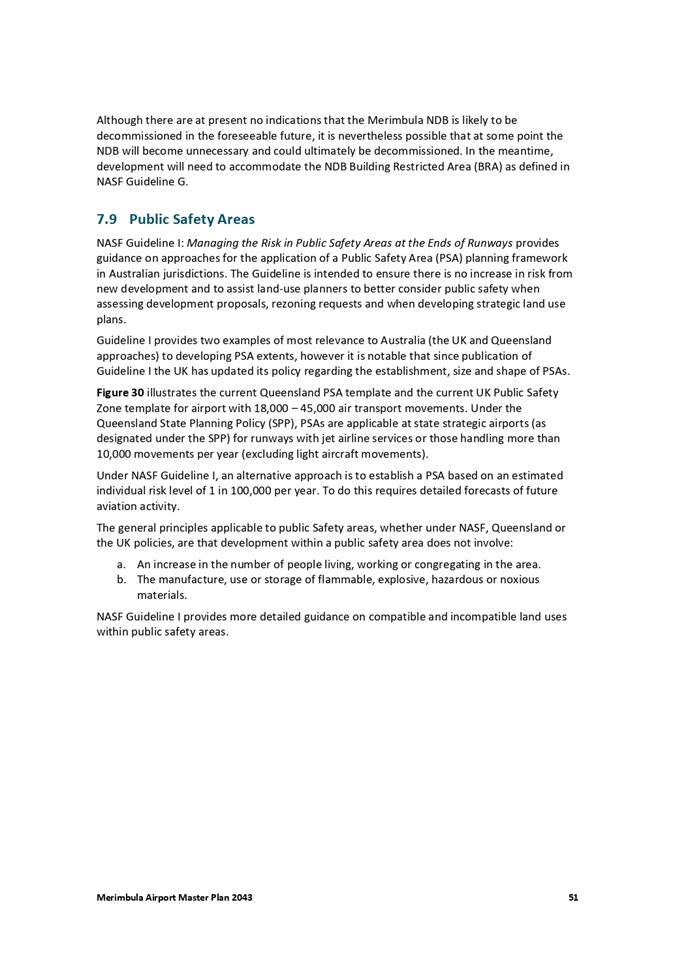
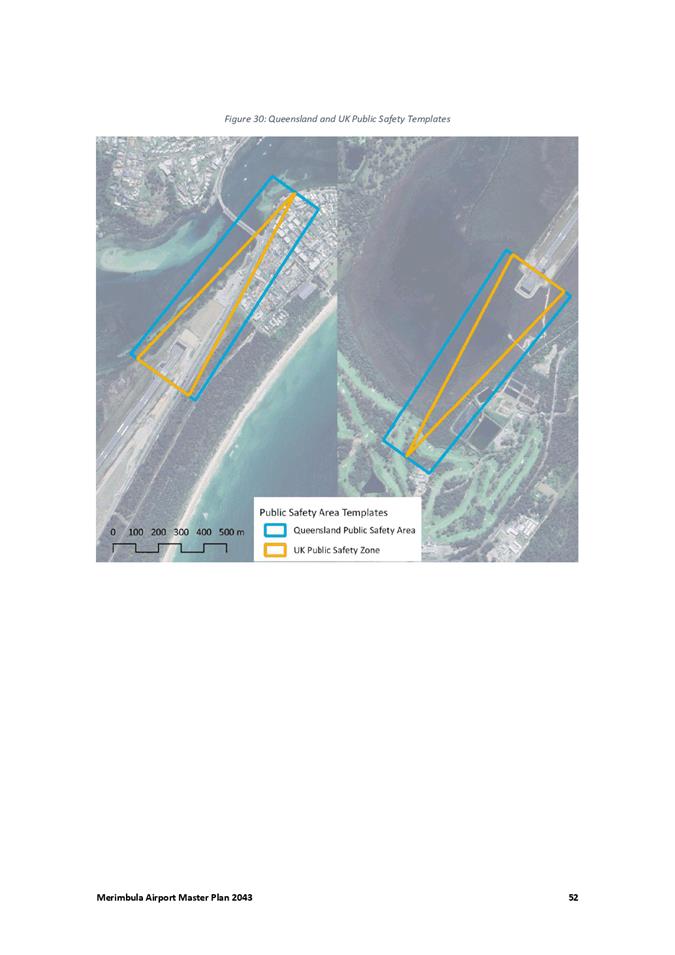
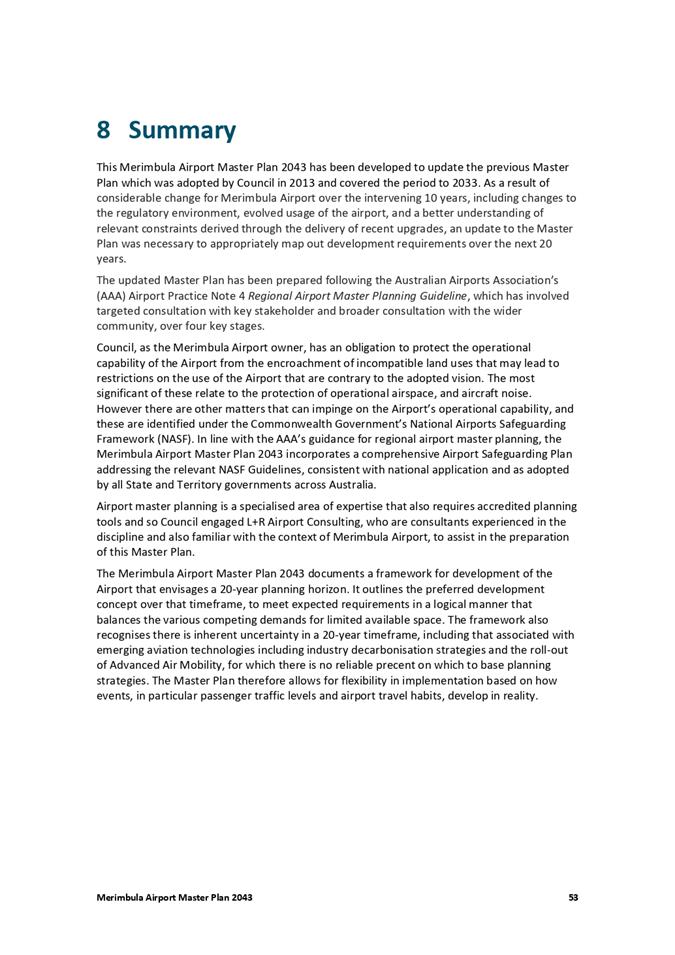

|
Council
|
12 June 2024
|
|
Item 9.1
- Attachment 2
|
Merimbula Airport 2043 Master Plan supporting documents
|



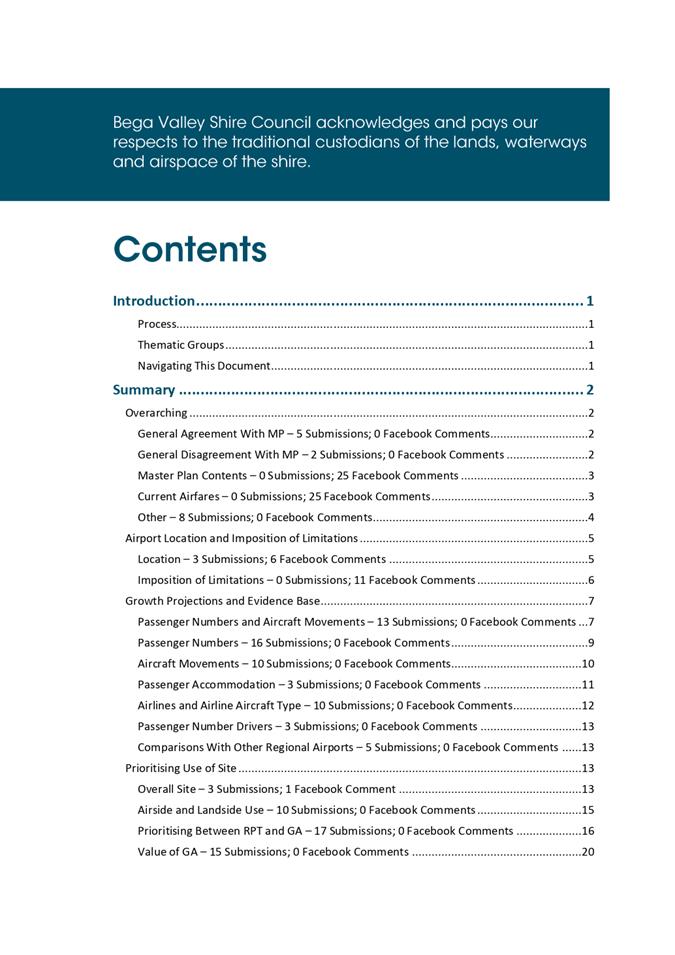
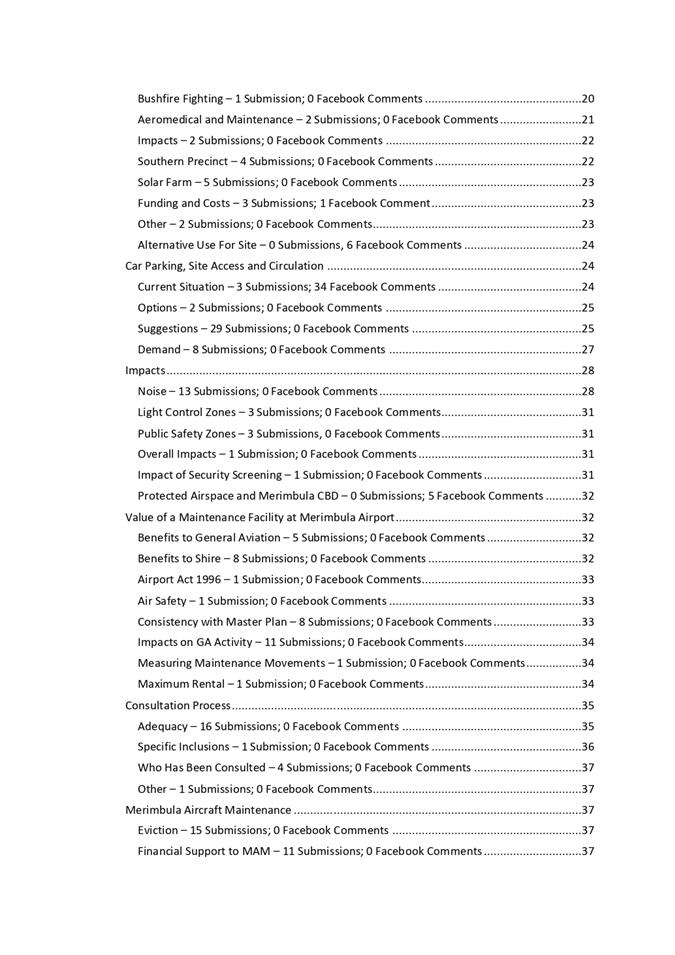
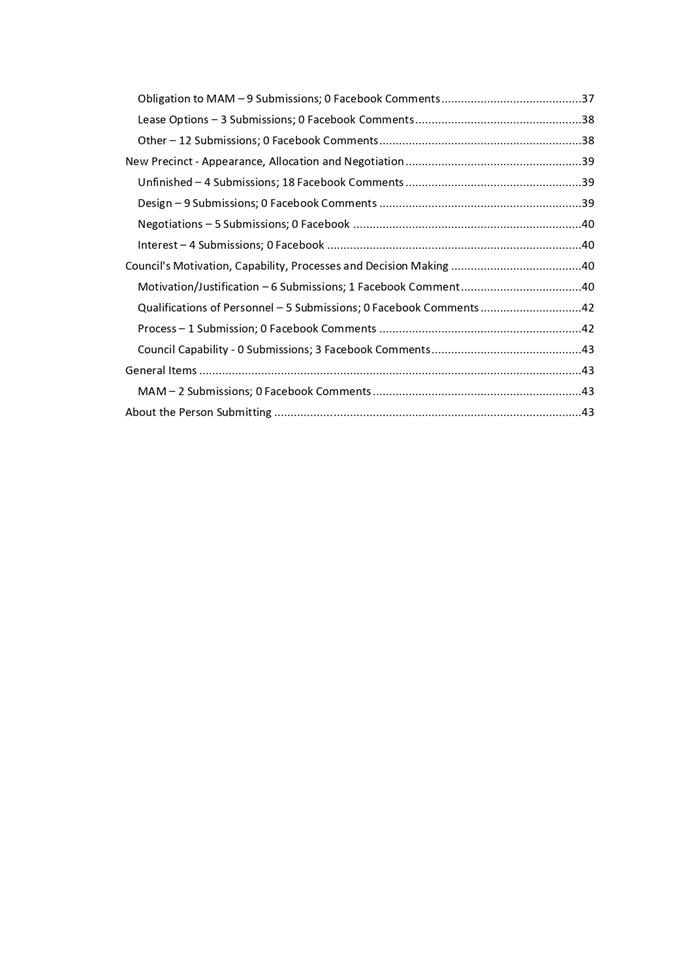
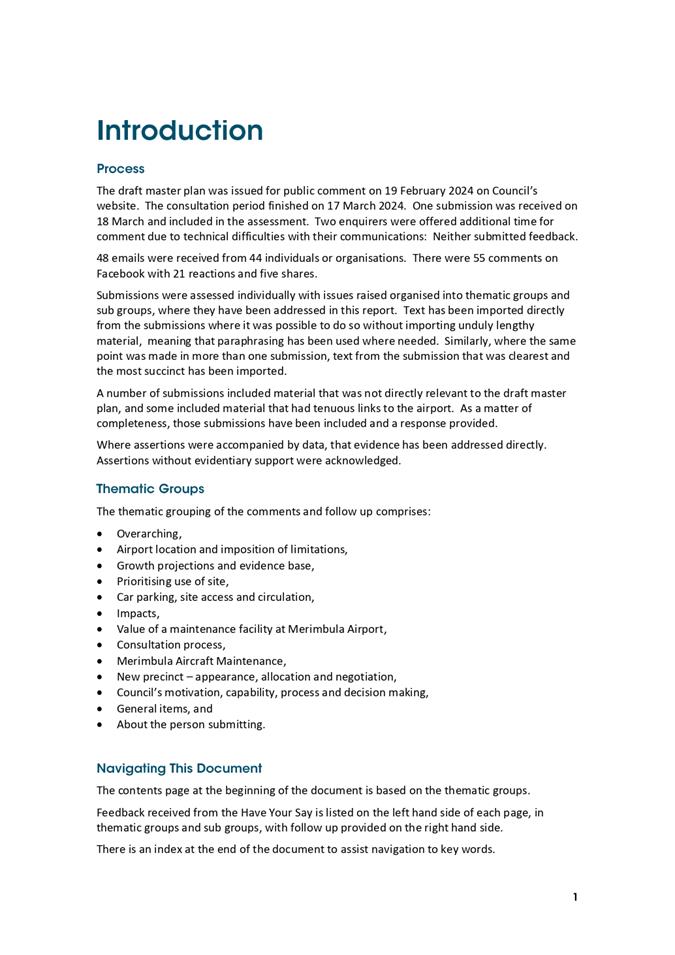
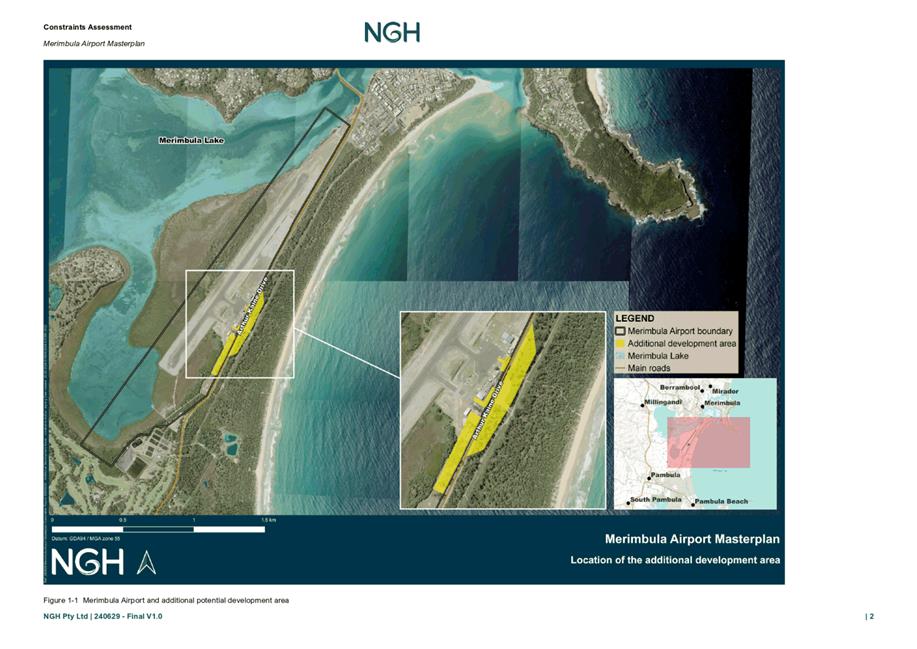
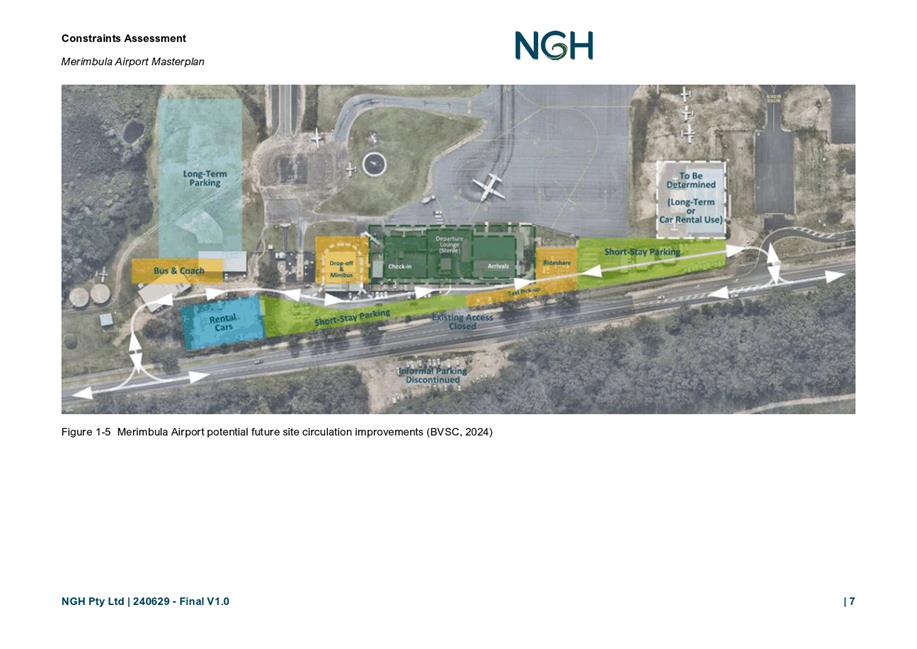
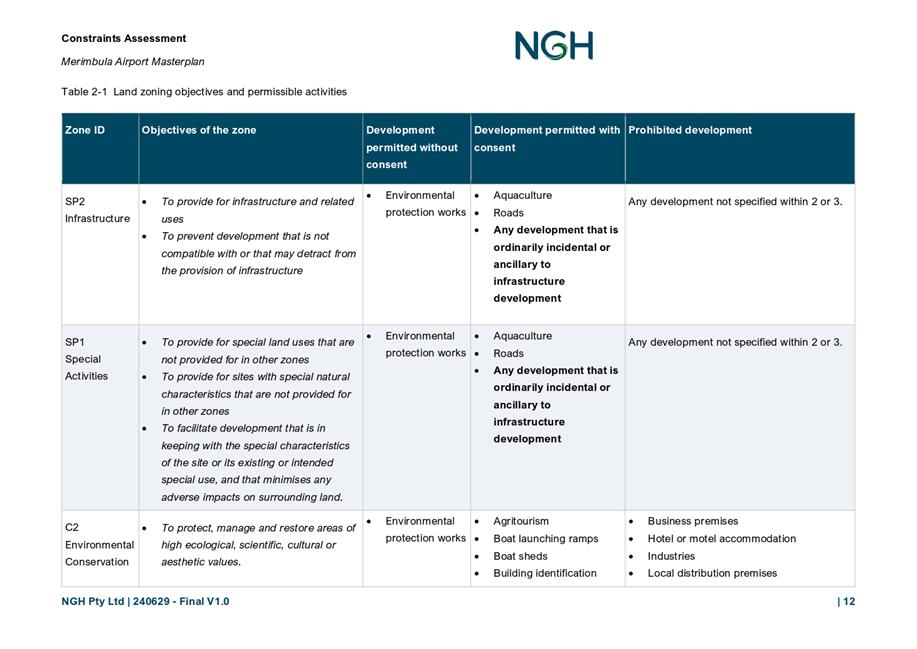
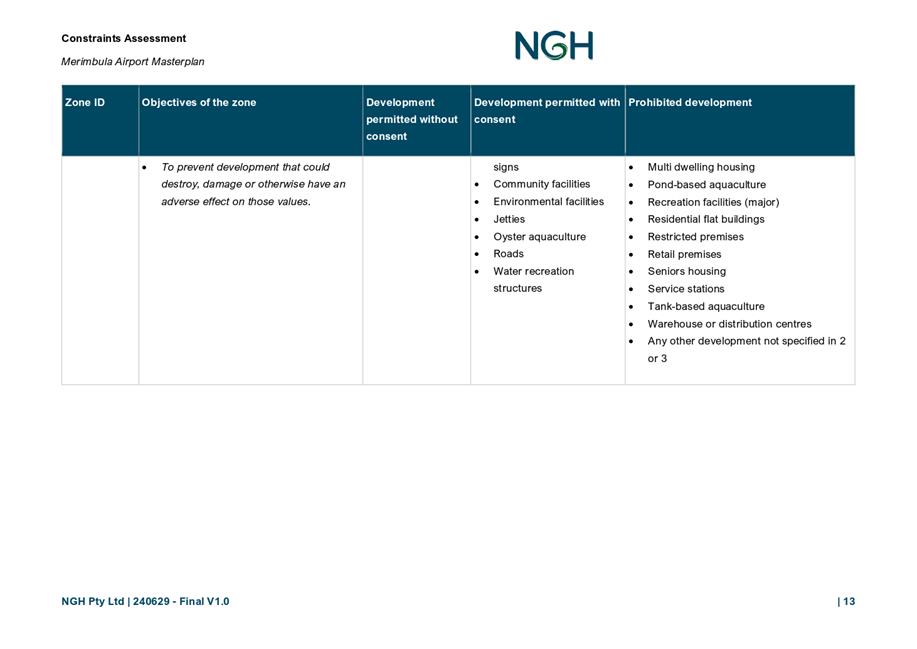
|
Council 12
June 2024
|
Item 9.2
|
9.2. Public
Exhibition of the Draft Active Transport Strategy
This
report seeks Council’s support for the public exhibition of the Draft
Bega Active Transport strategy.
Director Assets and Operations
Officer’s Recommendation
1. That Council
resolve to publicly exhibit the Draft Active Transport Strategy tabled at the
12 June 2024 Council meeting immediately following the Councillor workshop on
19 June 2024 for a period of not less than 21 days.
2. That
a further report be presented to Council following the public exhibition
detailing the outcomes of the exhibition.
Executive Summary
Council received a grant from the Transport for NSW
“Get NSW Active” program 2022/23 to deliver an Active Transport
Strategy. The purpose of the Active Transport Strategy is to set out the vision
and the high-level directions for active transport in the Shire for the coming
decade and provide a reference point for Council policy and infrastructure
decisions and will be complemented by a prioritised action plan with identified
funding streams.
This report seeks endorsement from Council to publicly
exhibit the Draft Active Transport Strategy for a minimum of 21 days.
Background
In 2012, Bega Valley Shire Council (BVSC) received state
funding to develop a Shire-wide Bike Plan, intended to communicate the
direction of cycling in the Shire and responsively plan and manage cycling
assets and associated infrastructure. This Plan was adopted in 2014 but with
the evolution and development of Council’s strategic plans and visions is
now no longer in alignment; in addition, Council has recognised the needs to
consider active transport more broadly, including walking and developing trends
in micro-mobility, as part of its goal to develop healthier, safer, and more
sustainable communities.
To this end, Council has engaged PSA Consulting to assist in
developing a Shire-wide Active Transport Strategy that will shape
Council’s strategic active transport agenda over the next 7 years,
supporting and promoting active transport as healthy, safe, fun, and a
practical choice for transport and recreation.
Due to timing constraints, a final draft of the strategy
from the consultant was not able to be attached to the business paper at the time
of publishing. To allow adequate time for public exhibition and final adoption
by Council prior to entering the caretaker period ahead of the September
Council election it is imperative to place the draft strategy on exhibition.
Options
Options
available to Council are to:
1. Place
the Draft Active Transport Strategy on public exhibition for a period of not less than 21
days following its council workshop. At the end of the exhibition period, a
further report would be submitted for Council’s consideration detailing
the results of the consultation and any recommended changes to the strategy.
This is the recommended option.
2. Do
not place the Draft Active Transport
Strategy on public exhibition following
Council workshop and continue to refine it prior to public comment. This
jeopardises having a priority list of projects for grant funding application
early in the next financial year and is not recommended.
Community
and Stakeholder Engagement
Engagement undertaken
On the project to date, stakeholder engagement has consisted
of a series of community workshops and the development and distribution of an
online survey. The purposes of these engagement activities are summarised
below.
In addition to the activities outlined below, the project
team also received a number of direct emails and letters from residents
regarding a variety of specific active transport issues within the shire. These
were reviewed and will be considered when formulating the final strategy
document.
An online survey was available on BVSC’s Have Your Say
website from 14 November to 14 December 2023. This survey was designed to
gather information on how people travel in Bega Valley Shire, and what key
values residents hold for future active transport infrastructure. The survey
received a total of 254 responses.
In addition to the main online survey, an optional map-based
survey was available to complete. This survey allowed participants to drop a
pin on a point and specify the type of issue they were reporting. In total, it
received 34 responses.
The following pop-up workshops were held in November of 2023
to inform the development of the Active Transport Strategy:
• Merimbula
- Monday 27 November
• Bermagui
- Tuesday 28 November
• Bega
- Tuesday 28 November
• Eden
- Wednesday 29 November
These workshops were attended by an estimated 40-50 people covering
a wide range of Bega Valley residents. Attendees were encouraged to markup sets
of maps showing each of the population centres and identify any issues or
opportunities.
Engagement planned
A councillor workshop for the presentation of the Active Transport
Strategy has been confirmed for the Wednesday 19 June 2024.
This report seeks endorsement from Council to publicly
exhibit the Draft Active Transport Strategy immediately following the workshop
for a minimum of 21 days, final consultation associated with the draft strategy
public exhibition will be completed through the Have Your Say process and will
be shared via Council’s newsletter and a media release.
Information about the exhibition of the draft strategy will
also be shared through social media. Members of the community will be
encouraged to provide feedback through Council’s ‘Have Your
Say’ page.
Financial
and Resource Considerations
The project is wholly funded by a $110,000 grant Transport
for NSW “Get NSW Active program 2022/23. Council’s contribution to
the project is by way of specialist staff effort and provision of available
data and existing technical studies.
Legal
/Policy
There are no legal or policy considerations based on the
recommendations of this report.
Impacts
on Strategic/Operational/Asset Management Plan/Risk
Strategic
Alignment
The draft Active Transport Strategy achieves the objectives
of the Bega Valley Community Strategic Plan 2042.
The draft Active Transport Strategy is based on the
following resilience outcomes of liveable and connected places:
• Pedestrian
friendly town layouts
• Reduction
in vehicle reliance
The draft Active Transport Strategy achieves the objectives
of the Transport for NSW Active Transport strategy, this strategy sets out
focus areas, targets and actions for active transport in NSW with the goal of
doubling active transport trips in the state by 2042. It has five goals:
• Enable
15-minute neighbourhoods
• Deliver
connected and continuous cycling networks
• Provide
safer and better precincts and main streets
• Promote
walking and riding and encourage behaviour change
• Support
our partners and accelerate change
Transport for NSW Active Transport strategy acknowledges
that active transport may not be the most viable option for people in regional
areas but also recognises potential within towns to encourage more cycling
trips, particularly for trips to work. It aims to provide more accessible
streets and footpaths for people with disabilities or older people. Transport
for NSW Active Transport strategy also aims to double the number of children
walking or riding to school in major centres in the Six Cities Region. However,
it also states that “In new neighbourhoods, a network of safe walking and
cycling routes and low-speed zones, should reach across each school’s
catchment from its day of opening.” This may be applicable to new
developments in the Bega Valley Shire, such as in South Pambula.
The draft Active Transport Strategy is consistent with the
directions of the South East and Tablelands Regional Plan 2036 and Draft
South East and Tablelands Regional Plan 2041.
NSW Department of Planning and Environment’s Draft
South East and Tablelands Regional Plan 2041 is the land use framework for the
South East Tablelands Region, including the Bega Valley Shire, with presents
different themes for planning in the area. The theme of supporting a connected
and active region, including the objective Plan for Walkable Centres. This
objective encourages the consideration of land use, transport and parking
spaces to create walkable and attractive centres, with the strategy of applying
a movement and place approach. It also sets a strategy to prioritise walking
and cycling in areas around schools, health services, aged care facilities,
sporting, cultural and recreational facilities, and employment areas.
Environment
and Climate Change
The project aims to help achieve a resilient shire by
planning for growth in a way that protects our natural systems and creates
liveable and connected places. Active transport, through mode share shift to
walking and cycling, reduces greenhouse gas emissions, decreases air and noise
pollution, conserves energy, limits land use, enhances climate resilience, and
promotes public health, social equity, and community engagement.
Economic
Active
Transport links contribute to great places, cleaner local environments, and
healthier lifestyles, they also provide economic benefits, through tourism and
commuter use.
Risk
The draft Active Transport Strategy will reduce risk by ensuring
future active transport routes in the area are strategically well planned,
connected, adequately serviced, resilient and affordable.
Social
/ Cultural
The draft Active Transport
Strategy has included actions that incorporates early consideration and
delivery of safe, integrated, reliable, accessible, and connected walking and
cycling infrastructure that will enhance the local environment, help drive
behavioural change and achieve a sustained uptake in mode share of walking and cycling.
Attachments
Nil
Staff Reports
– Business and Governance
12 June 2024
10.1 Notice
to the Minister of Council's employed native title managers............... 531
10.2 Acquisition
of land for road widening - Main Road 91..................................... 541
10.3 Classification
of land at Tathra.......................................................................... 552
10.4 Local
Government Election............................................................................... 565
10.5 Accounting
for Rural Fire-fighting Assets.......................................................... 581
10.6 Determination
of the Local Government Remuneration Tribunal - 2025 Financial Year - Mayoral
and Councillor Fees............................................................................. 591
10.7 Certificate
of Investment May 2024................................................................. 602
|
Council 12
June 2024
|
Item 10.1
|
10.1. Notice to the Minister of Council's employed native title
managers
A resolution of Council is required
to give notice to the Minister of the name and contact details of
Council’s engaged or employed native title managers.
Director Business & Governance
Officer’s
Recommendation
1. That
Council receive and note the report.
2. That Council hereby resolve and give notice to the Minister
of the names and contact details of Council’s engaged or employed native
title managers contained in the report. The notification is in accordance with
requirements of Section 8.8 of the Crown Land Management Act 2016 (NSW).
Executive Summary
Council is required to give notice to the Minister of the
name and contact details of Council’s engaged or employed native title
managers by 31 October each year.
Section 377(1)(s) of the Local Government Act 1993
(NSW) (LG Act) states that the making of an application, or the giving of a
notice, to the Governor or Minister is a non-delegable function meaning a
resolution of Council is required for such purposes.
Background
The practice of managing Crown Land in the shire has changed
significantly because of the Crown Land Management Act 2016 (NSW) (CLM
Act) which came into force on 1 July 2018. To comply with the requirements of
the CLM Act, Council is required to engage or employ at least one qualified
native title manager. Pursuant to Section 8.7 of the CLM Act written advice
from a native title manager must be obtained for any dealing by Council on
Crown Land to ensure those dealings can be validated under Native Title Act
1993 (Cth) (NT Act).
A native title manager is a person who has obtained the necessary
qualification after completing the approved training facilitated by NSW
Department of Planning and Environment. Council officers Rickee Marshall and
Rob Quick attended training on 17 November 2017, Brooke Kemp attended training
on 13 July 2022 and Natasha Bruun and Peter Fragopoulos attended training on 29
and 30 June 2023. These staff have therefore attained the native title manager
qualification for the purposes of the CLM Act.
Options
There are no options for Council to consider in relation to this
report as Council is required to give notice to the Minister of the name and
contact details of Council’s engaged or employed native title managers
each year under section 8.8 of the CLM Act.
Community
and Stakeholder Engagement
Engagement undertaken
From time-to-time Council engages the services of Craig
Barnes from Landsas to assist in navigating the complexities of dealing with
land where native title applies.
Craig Barnes is a native title manager under the CLM Act and
assists Council on the following:
· Assesses whether
native title has been extinguished over land Council owns or manages.
· Provides advice as
a native title manager and legal advice in relation to native title.
· Determines the
appropriate future act to allow an activity to be validly undertaken on land
subject to native title.
Engagement planned
Once a Council resolution has been passed Council officers
will notify Crown Lands of the nominated native title managers, as required
each year under section 8.8 of the CLM Act by no later than 31 October 2024.
Financial
and Resource Considerations
No financial implications relating to this responsibility
have been identified at this stage. It should be noted that all five staff
currently have full time roles within Council and the designation of native
title manager is a role in addition to their current workload.
Legal
/Policy
Council must employ or engage at least one native title
manager to ensure dealings with land comply with any applicable provisions of
the NT Act. Section 8.8 of the CLM Act requires each Council to give notice to
the Minister of the name and contact details of any person the Council has
engaged or employed as a native title manager. The notice must be given by 31
October of each year.
Section 377(1) of the LG Act states that the giving of a
notice to the Governor or Minister is a non-delegable function meaning a
Resolution of Council is required.
Impacts
on Strategic/Operational/Asset Management Plan/Risk
Strategic
Alignment
Providing notice to the Minister of the name and contact
details of Council’s engaged or employed native title managers, as
required, under section 8.8 of the CLM Act aligns with the requirements under
Council’s Delivery Program 2022-2025 and Operational Plan 2023-2024 to
manage Council’s property portfolio and meet statutory obligations.
Delivery Program 2022-25: E5.5 - Develop and manage
Council’s owned and managed land portfolio.
Environment
and Climate Change
There are no environment and climate change matters
associated with the recommendations of this report.
Economic
There are no economic matters associated with the
recommendations of this report.
Risk
Council will not be complying with the provisions of the CLM
Act if it does not formally nominate its engaged or employed native title
managers to the Minister prior to 31 October each year.
Social
/ Cultural
There are no social or cultural
matters associated with the recommendations of this report.
Attachments
1⇩. Native
Title Manager FAQ
2⇩. Native
Title Manager Qualification - Rickee Marshall
3⇩. Native
Title Manager Qualification - Robert Quick
4⇩. Native
Title Manager Qualification - Brooke Kemp
5⇩. Native
Title Manager Qualification - Natasha Bruun
6⇩. Native
Title Manager Qualification - Peter Fragopoulos
|
Council
|
12 June 2024
|
|
Item
10.1 - Attachment 1
|
Native Title Manager FAQ
|
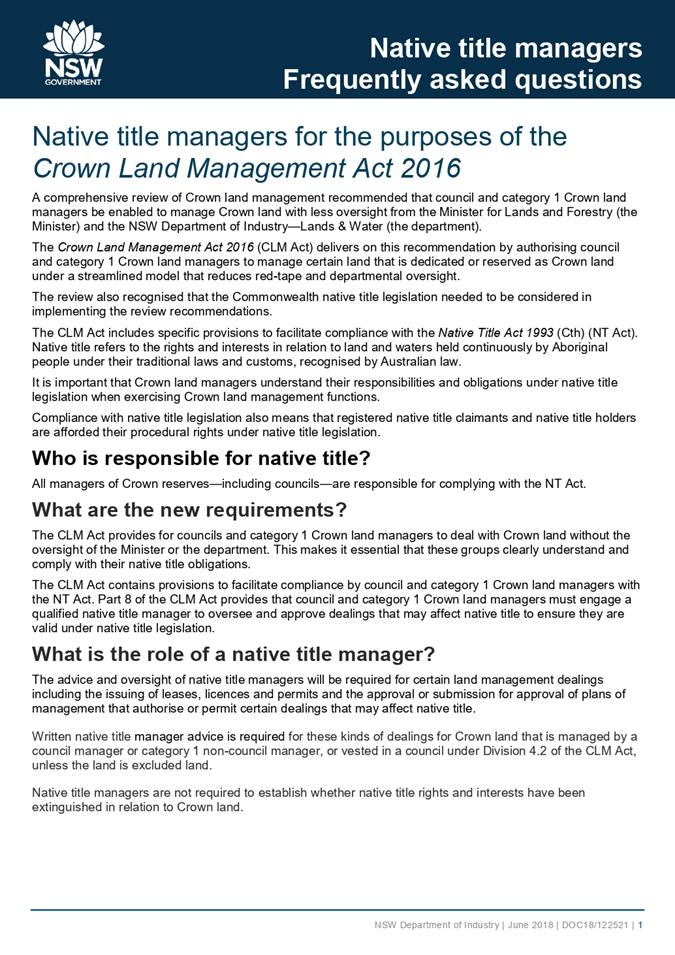
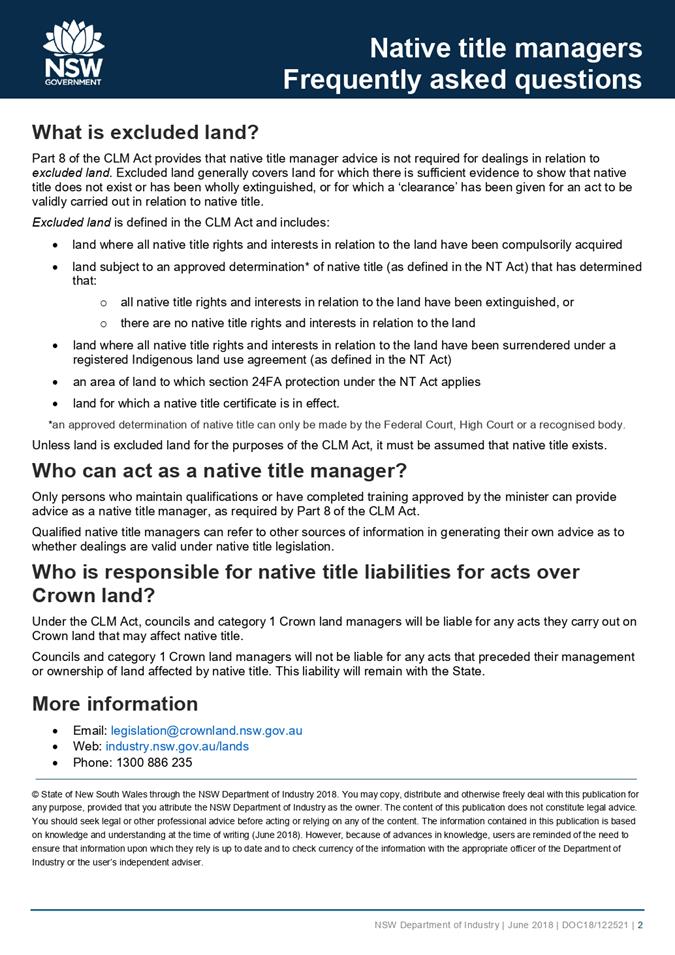
|
Council
|
12 June 2024
|
|
Item
10.1 - Attachment 2
|
Native Title Manager Qualification - Rickee Marshall
|
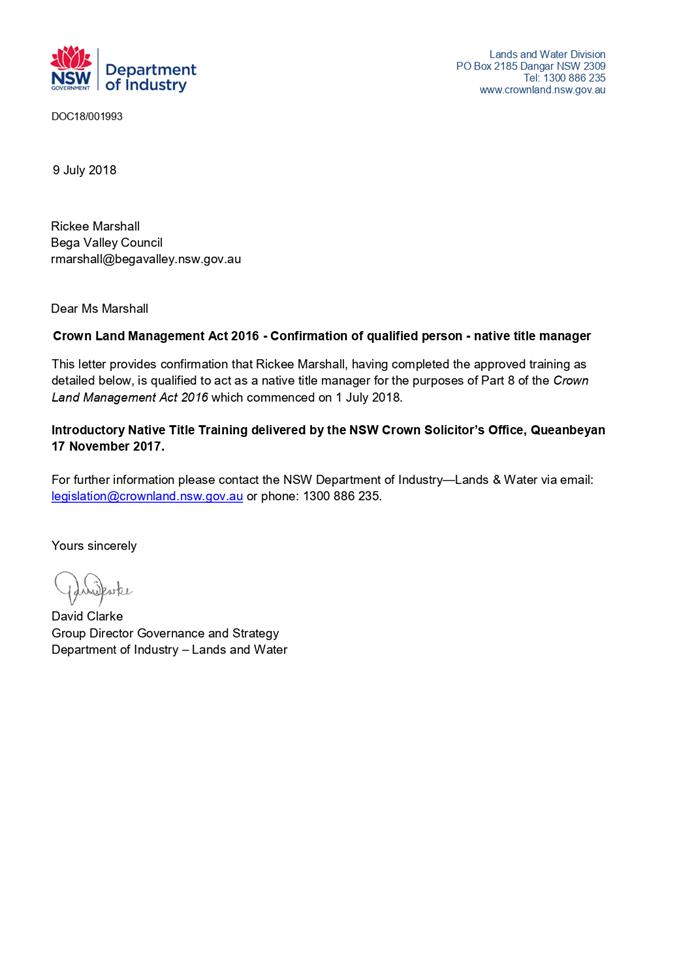
|
Council
|
12 June 2024
|
|
Item
10.1 - Attachment 3
|
Native Title Manager Qualification - Robert Quick
|
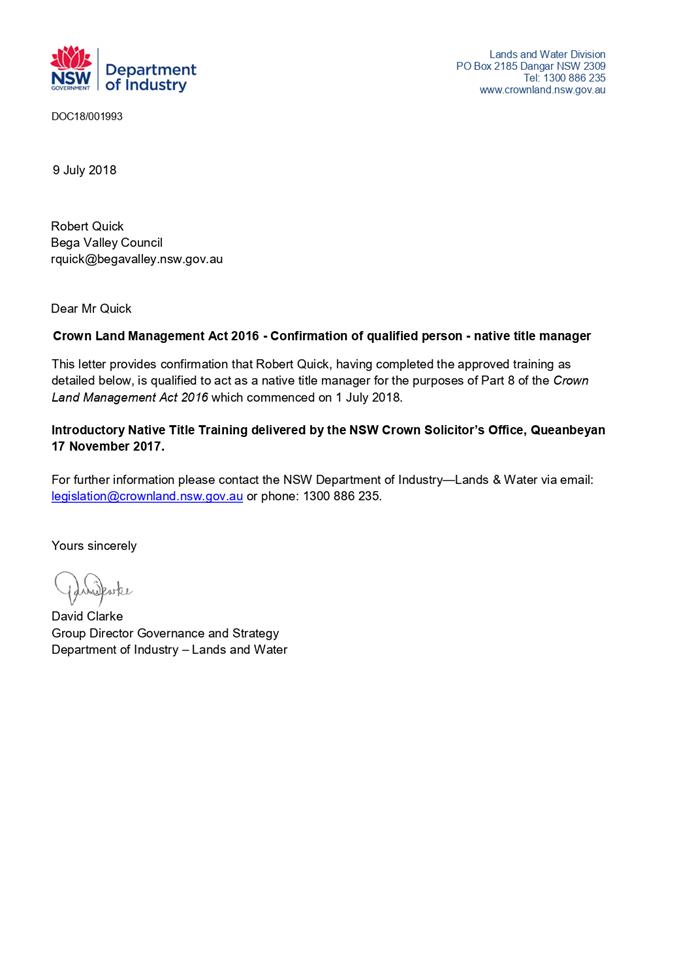
|
Council
|
12 June 2024
|
|
Item
10.1 - Attachment 4
|
Native Title Manager Qualification - Brooke Kemp
|
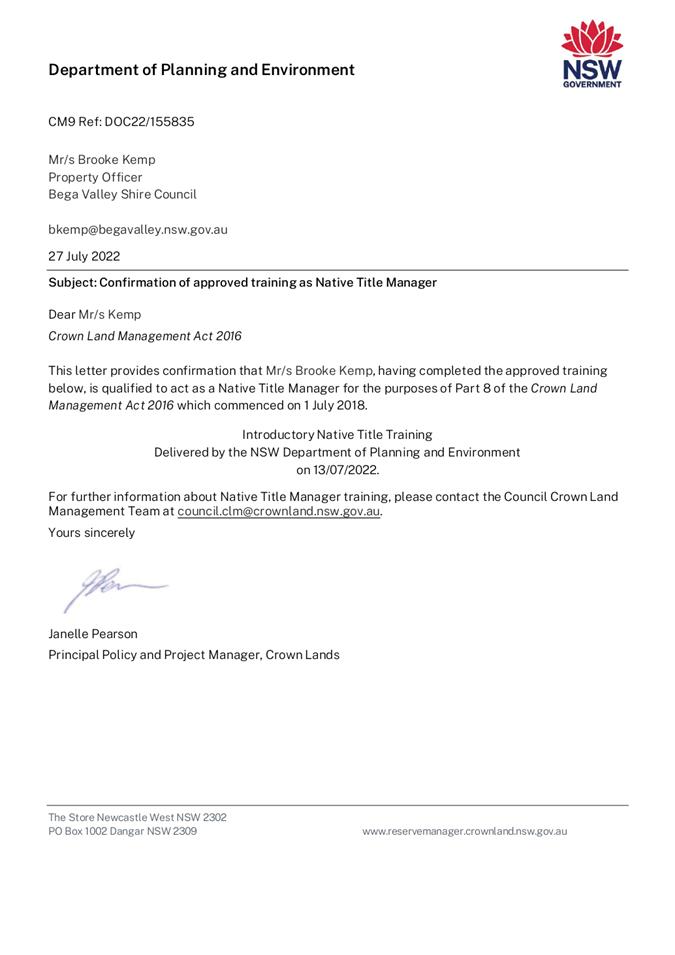
|
Council
|
12 June 2024
|
|
Item
10.1 - Attachment 5
|
Native Title Manager Qualification - Natasha Bruun
|
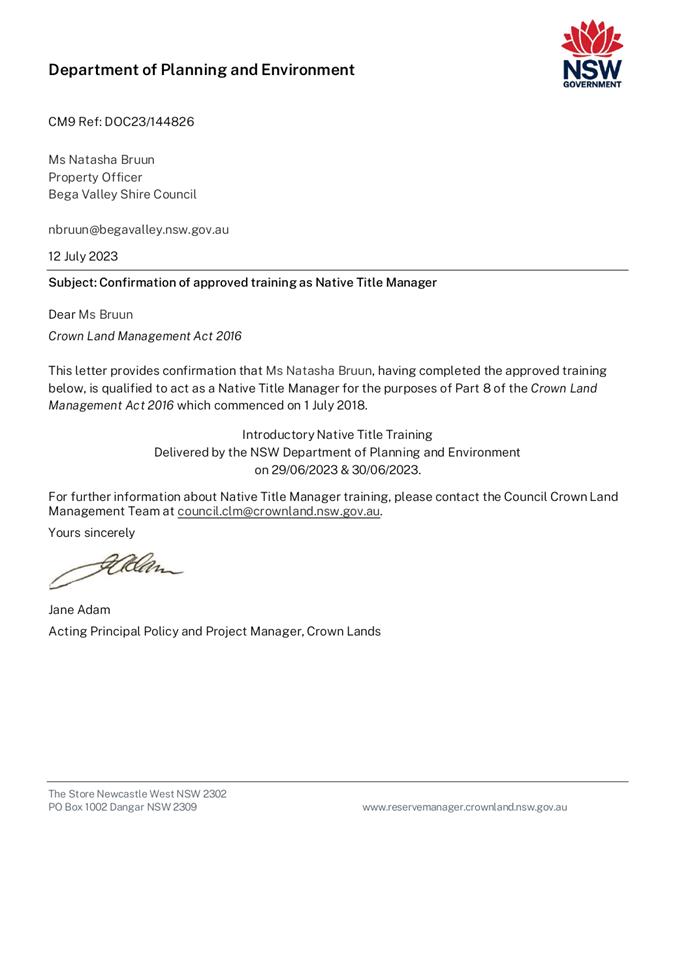
|
Council
|
12 June 2024
|
|
Item
10.1 - Attachment 6
|
Native Title Manager Qualification - Peter Fragopoulos
|
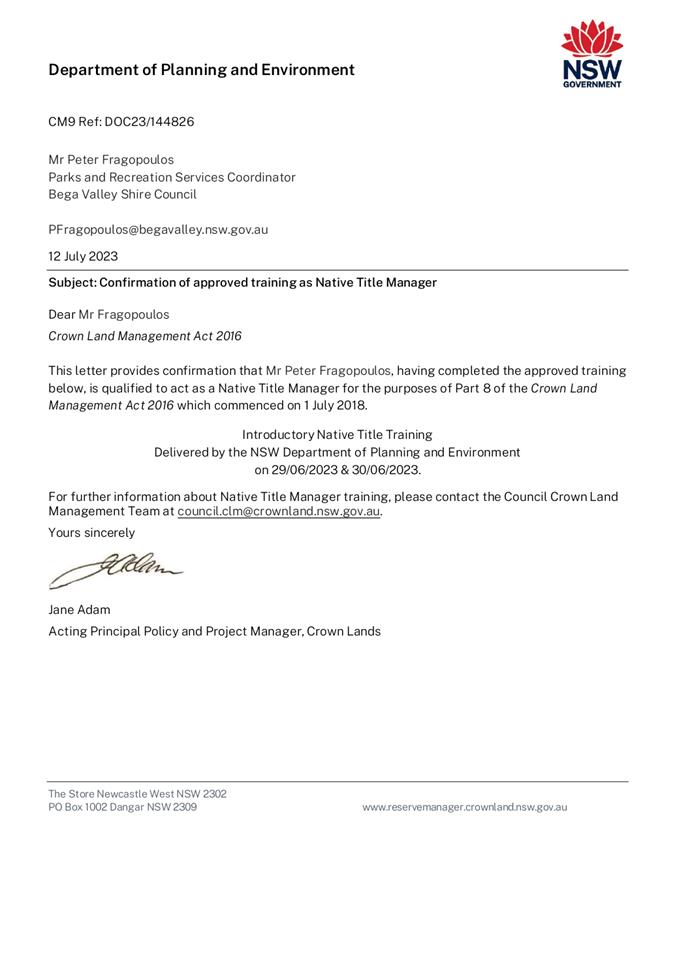
|
Council 12
June 2024
|
Item 10.2
|
10.2. Acquisition of
land for road widening - Main Road 91
Council approval is being sought to
formalise an acquisition of private land for road purposes on Mount Darragh
Road to rectify encroachments that have been identified by a private landowner.
Director Business & Governance
Officer’s
Recommendation
1. That Council enter
into a formal Deed of Agreement with the proprietor of Cobandrah Pty Ltd for
the acquisition of part Lots 14, 15 and 16 DP 32269 and Lot 14 DP 750242 shown
as lots 1, 2, 3, 4, 5, 6 and 7 on the draft plan attached to the Council report
dated 12 June 2024, for the purpose of public road pursuant to section 177 of
the Roads Act 1993 (NSW).
2. That Council
dedicates unnecessary road shown as lots 11, 12 and 13 on the draft plan
attached to the Council report dated 12 June 2024 to the proprietor of
Cobandrah Pty Ltd to offset part of the compensation associated with the
acquisition of land for road realignment purposes.
3. That compensation
payable to the proprietor of Cobandrah Pty Ltd be a total sum of $36,512.77
being the difference in value of the lots being acquired less the value of the
lots being transferred as determined by a registered surveyor.
4. That it be noted
Council intends to dedicate the land, as referred to in recommendation 1 above,
in the NSW Government Gazette as a public road under Section 10 of the Roads
Act 1993 (NSW) upon acquisition.
5. That the Chief
Executive Officer and Mayor be delegated authority to execute the necessary
documents as required.
Executive Summary
This report seeks Council approval to rectify road alignment
encroachments on Mount Darragh Road that affect private land parcels and
undertake an acquisition process to ensure public access is maintained.
Background
Council resolved, at its Ordinary Meeting of 16 November
2022, when considering an acquisition in relation to the road widening of Main
Road 91 carried out by the former Imlay Shire Council in the 1980s as follows:
1. That
Council note Crown Lands do not support the acquisition of the following land
parcels for nil compensation and no further action be taken regarding the
acquisition of these land parcels:
• Lots
47, 48, 49, 51, 53, 54, 55, 56 and 57 DP 1114462 held by the State of NSW and
dedicated as State Forest
• Lots
1, 10, 11, 12, 13, 14, 15, 16 and 17 DP 1109104 held by the State of NSW
• Lots
8, 18, 19, 20, 21, 22, 23, 25, 26 and 46 DP 1109104 held by the State of NSW
and dedicated as State Forest.
2. That
Council enter into a formal Deed of Agreement with the proprietor of Cobandrah
Pty Ltd for the acquisition of part Lots 14, 15 and 16 DP 32269 and Lot 14 DP
750242 on Mount Darragh Road, for the purpose of a public road pursuant to
section 177 of the Roads Act 1993 (NSW) for a compensation amount to be
determined by a registered Valuer.
3. That
it be noted Council intends to dedicate the land, as referred to in
recommendation 2 above, in the NSW Government Gazette as a public road under
Section 10 of the Roads Act 1993 (NSW) upon acquisition.
4. That
the Chief Executive Officer and Mayor be delegated authority to execute the
necessary documents as required.
Following the resolution of Council, officers engaged a
surveyor to prepare a formal plan to progress the acquisition of private land
referred to above for the required road widening. A copy of the draft plan of
land to be acquired for the purposes of the Roads Act 1993 (NSW) (Roads
Act) is attached for the information of councillors.
The lots proposed to be acquired for road purposes are shown
as lots 1, 2, 3, 4, 5, 6 and 7 on the plan. Lots 11, 12 and 13 are unnecessary
road that may be disposed of to the adjoining landowners. The remaining lots 8,
9 and 10 are residue lots. That is, they are the lots that have been impacted
by the proposed acquisition. Lot 8 being residue of Lot 14 DP 750242, Lot 9 being
residue of Lot 14 DP 32269 and Lot 10 being residue of Lot 16 DP 32269 which
are all owned by Cobandrah Pty Ltd so will remain in their ownership.
The intention is to transfer lots 11, 12 and 13 to the
adjoining landowner, Cobandrah Pty Ltd with the compensation being the
difference of the value of the lots being acquired less the value of the lots
being transferred.
Options
The options available to Council are:
1. Proceed
with the acquisition and transfer of land for road widening purposes as
recommended in this report to ensure the encroachments on Mount Darragh Road
onto private land are rectified. Recommended.
2. Not
proceed with the acquisition and transfer of private land to rectify the road
encroachments. Not recommended as this option may result in the landowner
fencing their land along the surveyed boundary which would impact use of Mount
Darragh Road by the public.
Community
and Stakeholder Engagement
Engagement undertaken
Since the resolution of Council on 16 November 2022 Council
officers have been liaising with the landowner, surveyor, valuer and legal
representatives regarding the matter.
Engagement planned
Council officers will continue to consult with the landowner
and legal representatives to action the resolution of Council.
Financial
and Resource Considerations
In relation to the lots being acquired for road purposes,
the Council report dated 16 November 2022 provides that the compensation
payable to the landowner will be determined by a registered valuer before
entering into the Deed of Agreement with the landowner. As such a formal
valuation has been obtained from Walsh and Monaghan Valuers which determines
compensation as follows:
Lot 1 - 7 = $42,120.17
Lot 11 - 13 = $5,607.40
Total compensation payable to the landowner = $36,512.77
Council from time to time undertakes permanent road closures
as required under the Roads Act. The legislation states that money
received by a Council from the proceeds of sale of closed road is not to be
used by the Council except for acquiring land for public roads or for carrying
out road work on public roads. As a result, all road closure funds are held in
a reserve for this purpose and are funding the costs associated with rectifying
this historical road alignment issue.
Legal
/Policy
Council officers intend to progress the acquisition and
transfer of unnecessary road via agreement with the landowner rather than
compulsory acquisition under the Land Acquisition (Just Terms Compensation)
Act 1991 (NSW). The landowner has written to Council requesting Council
rectify the road encroachments so Council legal representatives will be engaged
to facilitate consideration of the acquisition and transfer process.
Impacts
on Strategic/Operational/Asset Management Plan/Risk
Strategic
Alignment
Community Strategic Plan (CSP) objective: Our public and
private infrastructure and community services meet community needs:
· D.1 Plan for community infrastructure and services that
will meet current and future needs.
· The private land parcels are included in Council’s
Rural Residential Strategy.
· As outlined in Council’s Delivery Program 2022-25 and
Operational Plan 2023-24 the acquisition and disposal of land and easements,
road closures and road openings are core activity for the property and legal
team.
Environment
and Climate Change
As outlined in the attached Council report due to the
topography of the shire and the historical nature of the road network it is not
uncommon for physical road formations to sit outside dedicated road corridors.
As the cadastral layer in the mapping database can shift, without formal survey
work, the percentage of the road network set outside dedicated road reserves cannot
be quantified.
Due to the risks associated with road formation being on
private property, if survey evidence is provided to Council by a landowner
there is an obligation to rectify the encroachment. Council officers review
these matters on a case-by-case basis taking into consideration all options. In
most cases it is more financially viable and least disruptive to pursue an
acquisition of land for road widening as opposed to reconstructing the physical
road where it was originally intended.
Economic
There are no additional economic matters associated with
this report that are not already addressed in this report.
Risk
In determining its direction, Council should consider
several risks associated with this matter including, but not limited to:
· Effective
Civic Leadership - reputational risk in relation to the community's view if
Council does not pursue this acquisition and public access is restricted.
· Financial
Sustainability - financial risk in relation to other encroachments issues on
Mount Darragh Road that may come to light because of this process.
· Assets
and Infrastructure – Maintaining Council assets is a core function that
Council cannot avoid, including the continuation of access for the community on
the shire’s road network.
Social
/ Cultural
As outlined in the attached report
from 16 November 2022 the private land parcels are included in Council’s
Rural Residential Strategy as land suitable for consideration for rural
residential use. The Rural Residential Strategy addresses the future need for
housing and provides direction on how and where residential growth will occur
to support the growing population, ageing community, and changes in household
structures.
Attachments
1⇩. Council
report dated 16 November 2022 - Road alignment rectification - Mount Darragh
Road
2⇩. Draft
Plan of land to be acquired for the purposes of the Roads Act MR 91
3. Walsh
and Monaghan valuation report for acquisition for road realignment on Mount
Darragh Road, Lochiel (Confidential - As this attachment contains
commercial information of a confidential nature that would, if disclosed (i)
prejudice the commercial position of the person who supplied it; or (ii) confer
a commercial advantage on a competitor of the Council; or (iii) reveal a trade
secret as per Section 10A(2)(d) of the Local Government Act 1993.
Although the above relates more explicitly to the discussion
of closed business, it also forms part of the basis of justification as to why
information relied upon in informing the public decisions made by Council are
kept confidential. To consider this confidential material in open Council would
be, on balance, contrary to the public interest (as defined in Section 14 of
Government Information Public Access (GIPA) Act 2009). This meets the
requirements of Sect 10 D of the Local Government Act 1993 if
Council were to close the meeting to discuss.
|
Council
|
12 June 2024
|
|
Item
10.2 - Attachment 1
|
Council report dated 16 November 2022 - Road alignment
rectification - Mount Darragh Road
|
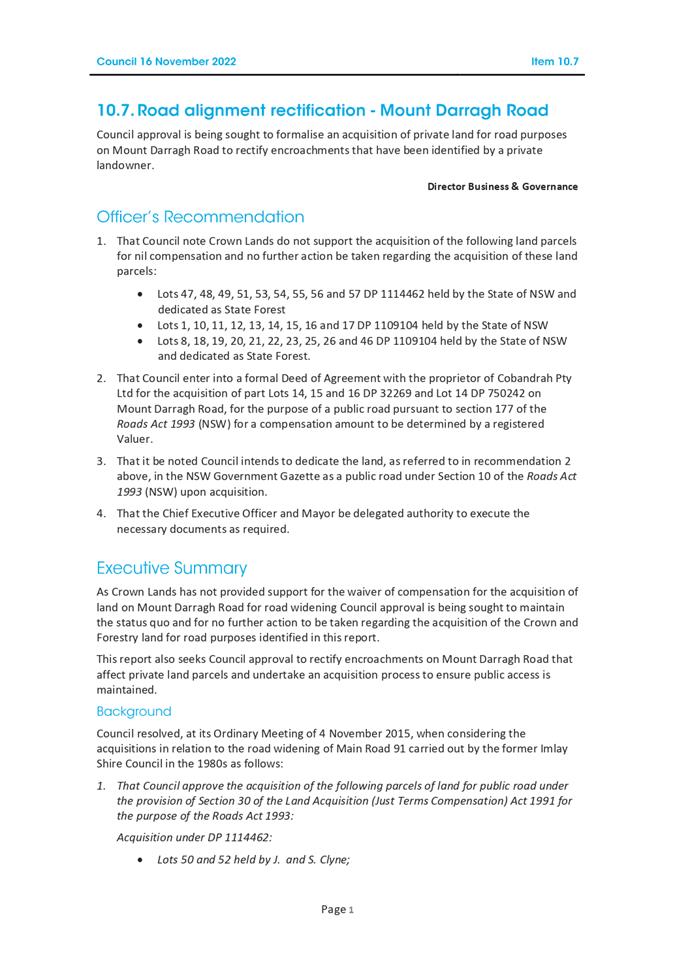
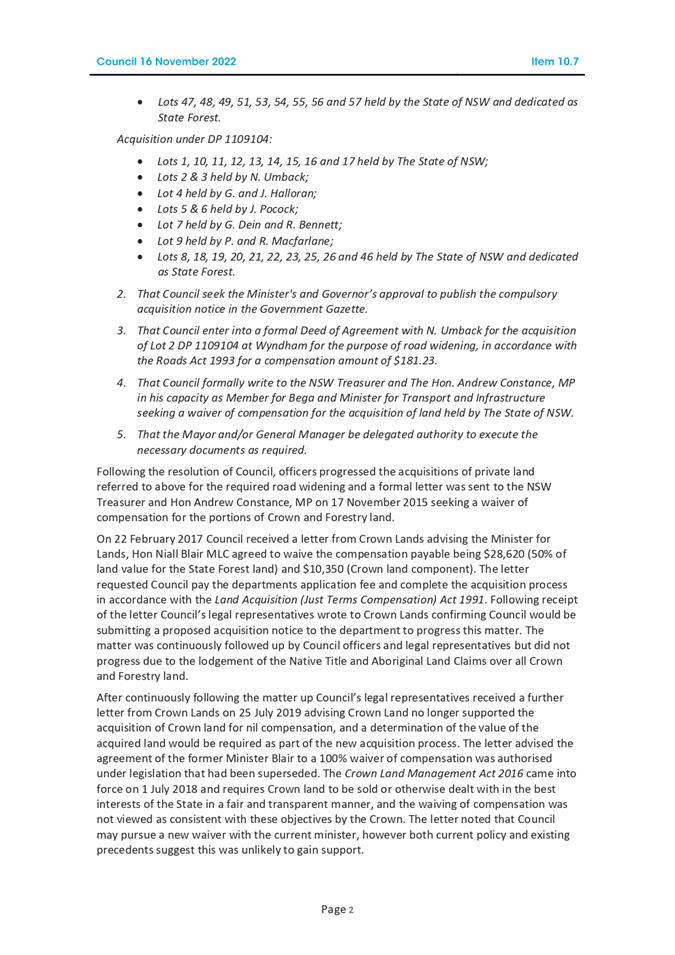
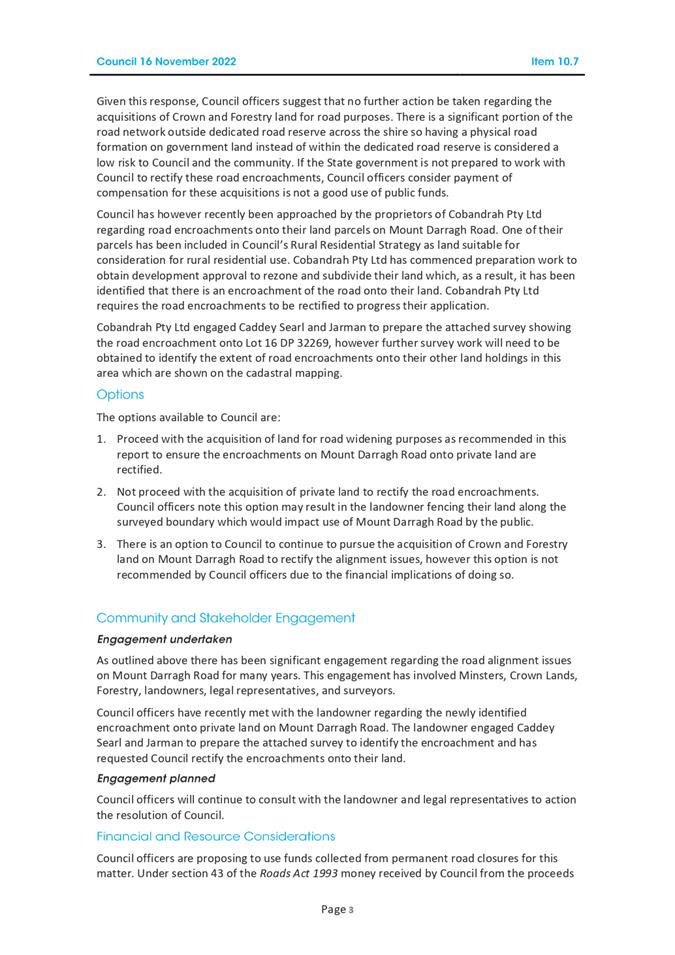
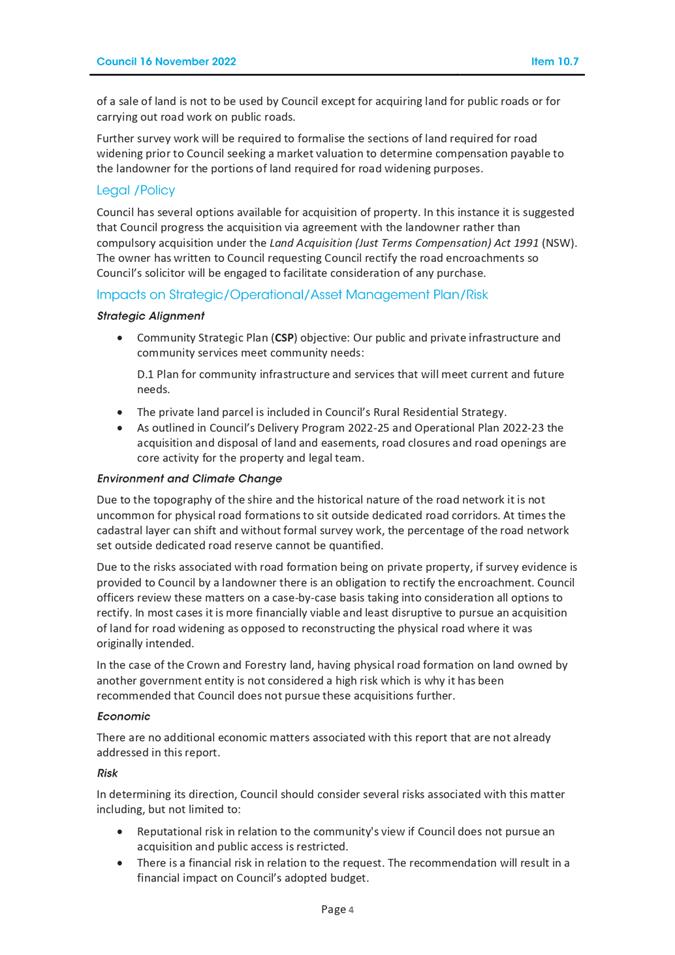
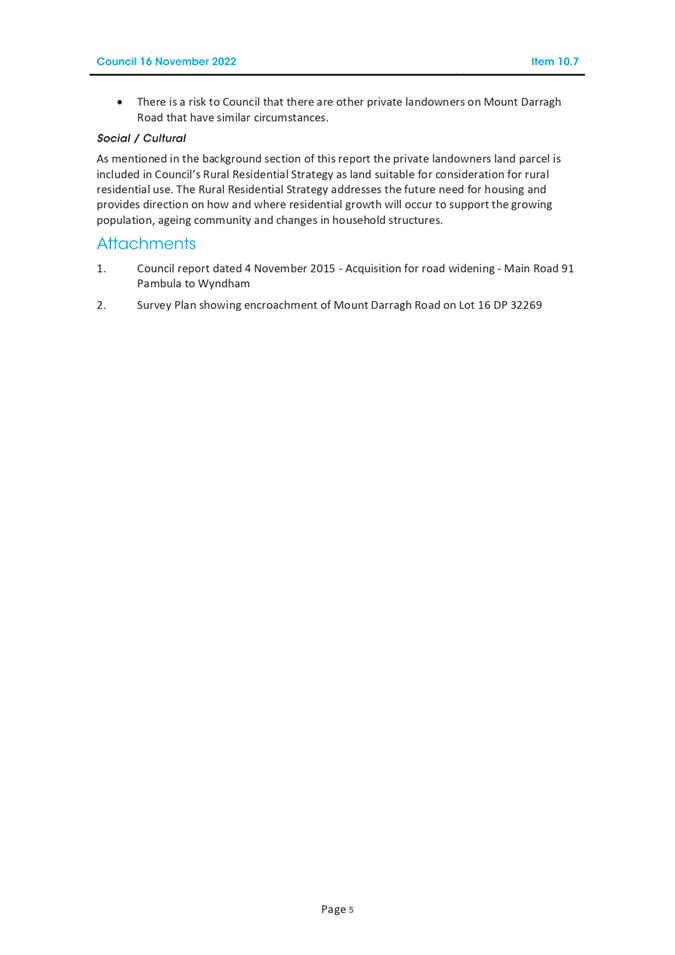
|
Council
|
12 June 2024
|
|
Item
10.2 - Attachment 2
|
Draft Plan of land to be acquired for the purposes of the
Roads Act MR 91
|
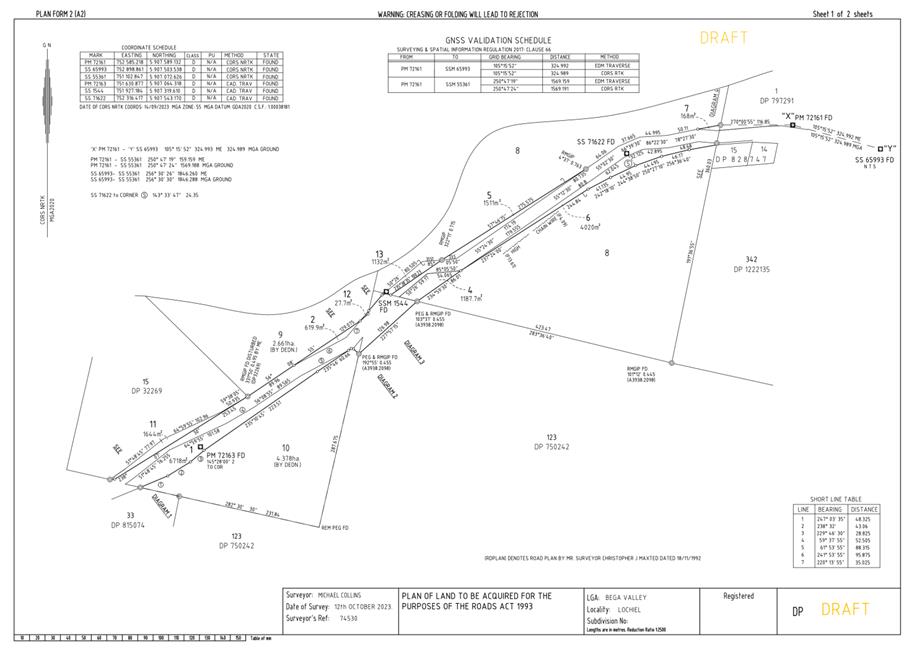
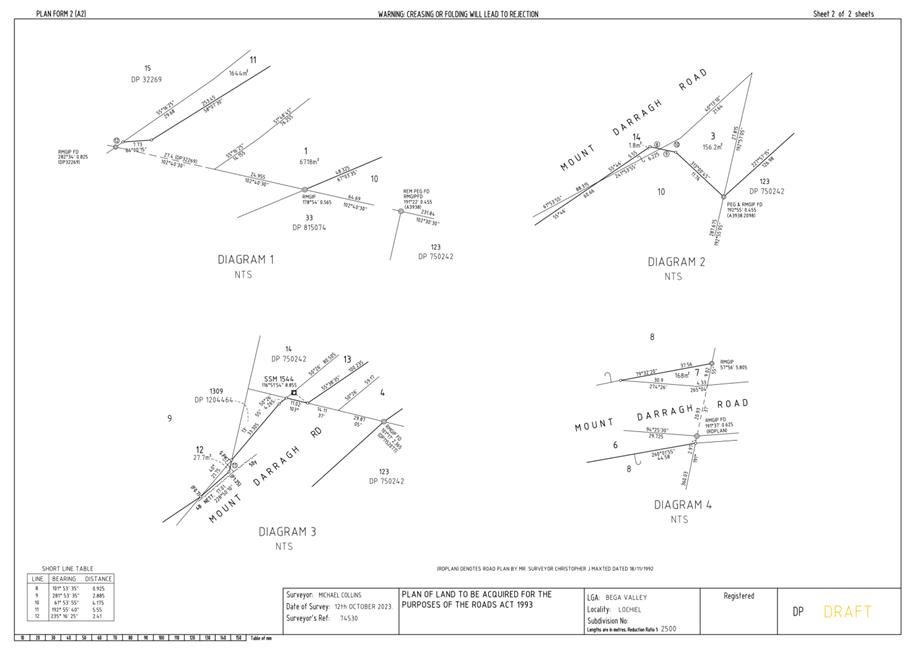
|
Council 12
June 2024
|
Item 10.3
|
10.3. Classification
of land at Tathra
This report seeks approval to
commence a public notification process to classify Council owned land that was
acquired as operational land under the Local Government Act 1993 (NSW).
Director Business & Governance
Officer’s
Recommendation
1. That
Council gives notice of its intention to classify Lot 1 DP 1282458 at Tathra as
operational land under section 34 of the Local Government Act 1993
(NSW).
2. That
Council notes no further action will be taken regarding compulsory acquisition
of the proposed easement for right of access within Lot 7010 DP 1071330.
Executive Summary
A Council resolution is being sought to commence the public
notification process required under section 34 of the Local Government Act
1993 (NSW) (LG Act) to classify Lot 1 DP 1282458 at Tathra as operational
land.
The report also seeks approval to cease action regarding the
compulsory acquisition of the proposed easement for right of access within Lot
7010 DP 1071330, being a Council managed Crown reserve.
Background
When considering the acquisition of land to guarantee ongoing
access to Council’s sewerage infrastructure, Council resolved at its
Ordinary Meeting of 13 June 2018 as follows:
1. That
Council makes an application to the Minister and/or Governor for approval to
compulsorily acquire Lot 1 DP 1241032 being a 65.8m2 section of Lot 31 DP
600836 from Walhara Pty Ltd for a value of $22,240.00, by compulsory process in
accordance with the Land acquisition (Just Terms Compensation) Act 1991 (NSW)
and under section 186 of the Local Government Act 1993 (NSW).
2. That
Council makes an application to the Minister and/or Governor for approval to
compulsorily acquire the proposed easement for right of access 5m wide and
variable `width designated as (A) in the registered deposited plan 1223026
within Lot 7010 DP 1071330 for the purpose of accessing the Sewer Pump Station
at Tathra in accordance with the Land Acquisition (Just Terms Compensation) Act
1991 (NSW) and under section 186 of the Local Government Act 1993 (NSW).
3. That
minerals are to be excluded from this acquisition.
4. That this
acquisition is not for the purposes of resale.
5. That
the General Manager and Mayor be delegated authority to make the application to
the Minister for Local Government and/or Governor for acquisition of the
interest in the above mentioned land by compulsory process under section 186 of
the Local Government Act 1993 (NSW).
Following the resolution of Council, Officers progressed the
compulsory acquisition of land with compensation paid to the adjoining
landowner on 19 June 2020 in accordance with the Valuer Generals notice of
determination (attached).
As detailed in the report of 13 June 2018 the plan of
acquisition DP 1241032 was registered on 16 March 2018 noting the intention to
acquire lot 1. A plan of subdivision was later registered on 4 July 2019 at NSW
Land Registry Services (NSW LRS) by the adjoining landowner being DP 1254683.
DP 1254683 subdivided Lot 31 DP 600836, which created a new
certificate of title for Lot 61 DP 1254683. The gazette to acquire the land was
published on 13 March 2020, however this did not enact the acquisition for land
that had been subdivided, therefore Council was required to prepare and
register a new deposited plan of acquisition over Lot 61 DP 1254683 and publish
an erratum to refer to new acquisition plan. This new acquisition plan was
registered on 23 March 2022 as DP 1282458 (attached) with Council legal
representatives confirming the certificate of title for the 65.8m2
portion of land acquired was issued on 14 May 2024 and now requires
classification as operational land.
As detailed in the report to Council dated 13 June 2018
(attached) an application to the Minister for approval to compulsorily acquire
a proposed easement for right of access to the Sewer Pump Station (SPS) at
Tathra was to be made. This has not progressed further due to the Aboriginal
Land claim and Native Title claim over the land.
In August 2019 the NSW Aboriginal Land Council (NSW ALC)
provided confirmation they had ‘no objection’ to acquisition. This
‘no objection’ response satisfies requirements to proceed with
Council’s compulsory acquisition application to the Office of Local
Government, however, is not ‘consent’ as consent cannot be provided
over land where there is an undetermined land claim. This means that any
acquisition conducted during the claim determination period may be subsequently
ruled as unlawful, resulting in the easement being removed and possible
litigation.
The land is also subject to the blanket Native Title claim
over all Crown Land in the shire so if the land is transferred to the Local
Aboriginal Land Council they will not be able to deal with the land unless the
land is subject to an approved determination of native title (i.e. a native
title claim group has made an application that is determined or makes a
non-claimant application).
Council is Crown Land Manager of Lot 7010 DP 1071330 and the
plan of proposed acquisition of easement for access within Lot 7010 DP 1071330
was registered at NSW LRS on 7 September 2016 noting Council’s
intention to acquire. Given Council’s responsibilities to manage Crown
land as if it were public land within the meaning of the LG Act,
Council’s access requirements over this land will continue as core
business under its management. For these reasons it is not considered a good
use of community funds to continue to pursue this easement currently.
Council officers have now cleared the road corridor to allow
vehicle access to the SPS site completing this matter.
Options
The options available to Council
are:
1. Recommended.
Commence the public notification process to classify Lot 1 DP 1282458 at Tathra
as operational land.
2. Not
recommended. Resolve not to commence the public notification process to
classify Lot 1 DP 1282458 as operational land. Any land parcels that are
acquired and not classified by a resolution within three (3) months, will at
the end of the 3-month period be taken to have been classified under a Local
Environmental Plan as community land. If the land parcel was to revert to
community land, the land may not be used for any purpose other than that for
which it was being used immediately before it was acquired.
Community
and Stakeholder Engagement
Engagement undertaken
As outlined in the background section of the report Council
officers have engaged with surveyors, NSW LRS and legal representatives
regarding this compulsory acquisition of Lot 1 DP 1282458 at Tathra which now
requires classification as operational land.
Council officer have also held numerous discussions and
meeting with adjoining landowners regarding the acquisition and road
construction for the purposes of accessing Council’s SPS.
Engagement planned
Section 34 of the LG Act provides
that a public notice of such a proposed resolution must be advertised giving 28
days for receipt of public submissions. A further report will be presented to
Council after the submission period, noting any submissions received and
seeking a final resolution to classify Lot 1 DP 1282458 at Tathra as
operational land.
Financial
and Resource Considerations
The compulsory acquisition has been funded by the sewer
fund, including the payment of compensation to the adjoining landowner,
valuation fees to valuers and the NSW Valuer General, survey costs and
significant legal fees to date negotiating this matter.
Advertising costs associated with the classification process
will be allocated from the adopted sewer fund. There are no ongoing servicing
costs associated with the classification of land.
Council officer time has been required to carry out the land
acquisition process and further officer time will be required to complete the
classification process.
Legal
/Policy
Under section 26 of the LG Act, Council land must be
classified as either community or operational land. Section 31 of the LG Act
provides that a property may be classified within three (3) months of
dedication by Council resolution, or it automatically defaults to community
land.
Impacts
on Strategic/Operational/Asset Management Plan/Risk
Strategic
Alignment
Delivery Program 2022-25:
· E5.5
- Develop and manage Council’s owned and managed land portfolio.
Environment
and Climate Change
Environment and Climate Change considerations are not
applicable to the classification of land.
Economic
There are no major economic benefits or impacts associated
with the classification of land.
Risk
While the land at Lot 1 DP 1282458 at Tathra remains
unclassified the land may not be used for any purpose other than that for which
it was being used immediately before it was acquired, and Council may not
dispose of any interest in the land in the future.
Social
/ Cultural
There are no relevant social or
cultural impacts associated with the classification of land.
Attachments
1⇩. Council
report dated 13 June 2018 - Compulsory acquisition of land at Tathra for access
purposes
2. Valuer
General's Notice of Determination for compulsory acquisition of land at Tathra
(Confidential - As this attachment contains commercial information of
a confidential nature that would, if disclosed (i) prejudice the commercial
position of the person who supplied it; or (ii) confer a commercial advantage
on a competitor of the Council; or (iii) reveal a trade secret as per Section
10A(2)(d) of the Local Government Act 1993.
Although the above relates more explicitly to the discussion
of closed business, it also forms part of the basis of justification as to why
information relied upon in informing the public decisions made by Council are
kept confidential. To consider this confidential material in open Council would
be, on balance, contrary to the public interest (as defined in Section 14 of
Government Information Public Access (GIPA) Act 2009). This meets the
requirements of Sect 10 D of the Local Government Act 1993 if
Council were to close the meeting to discuss the details.
3⇩. NSW
Certificate of Title- Lot 1 DP 1282458
4⇩. Deposited
Plan 1282458
5⇩. Deposited
Plan 1223026
|
Council
|
12 June 2024
|
|
Item
10.3 - Attachment 1
|
Council report dated 13 June 2018 - Compulsory acquisition of
land at Tathra for access purposes
|
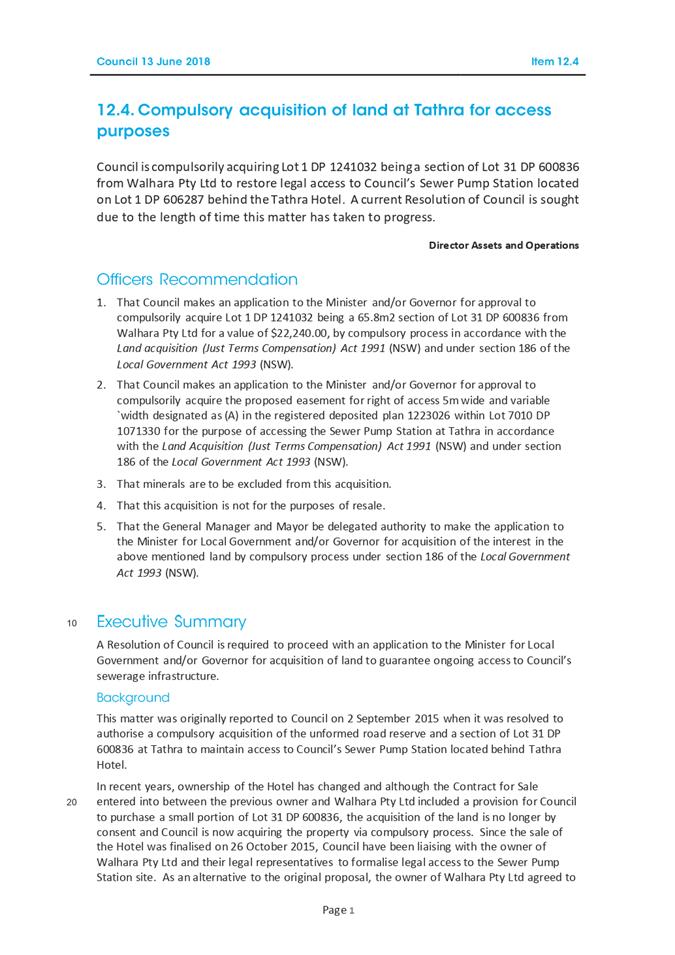
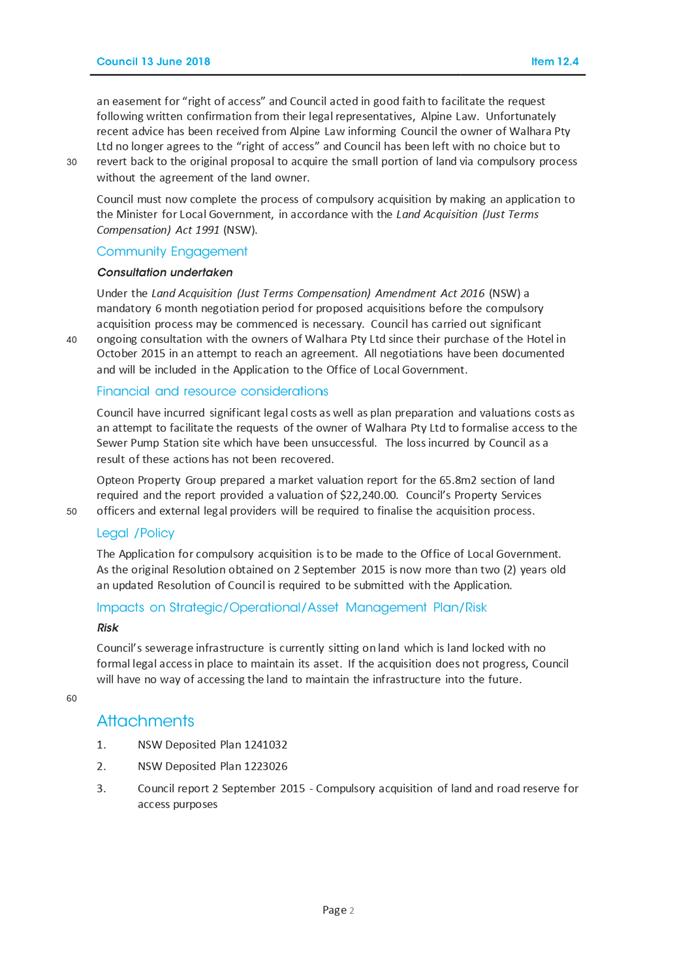
|
Council
|
12 June 2024
|
|
Item
10.3 - Attachment 3
|
NSW Certificate of Title- Lot 1 DP 1282458
|
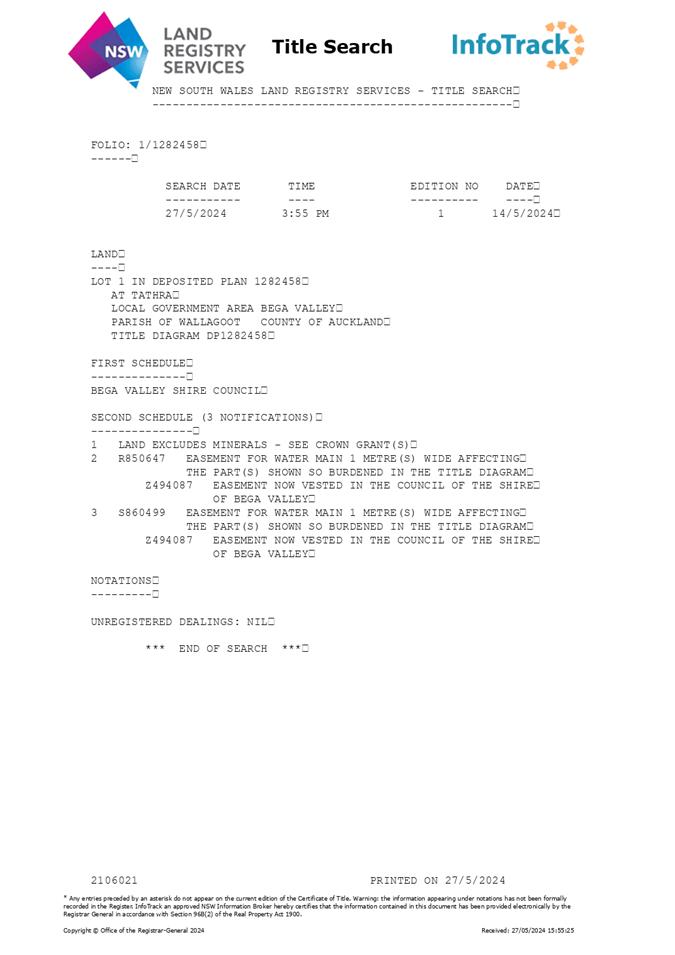
|
Council
|
12 June 2024
|
|
Item
10.3 - Attachment 4
|
Deposited Plan 1282458
|
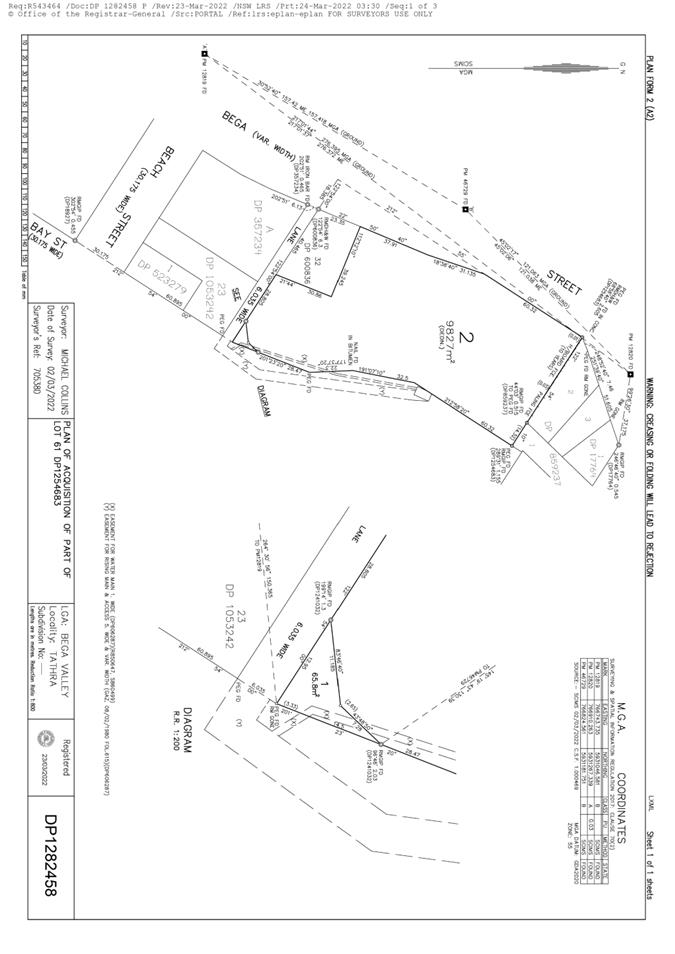
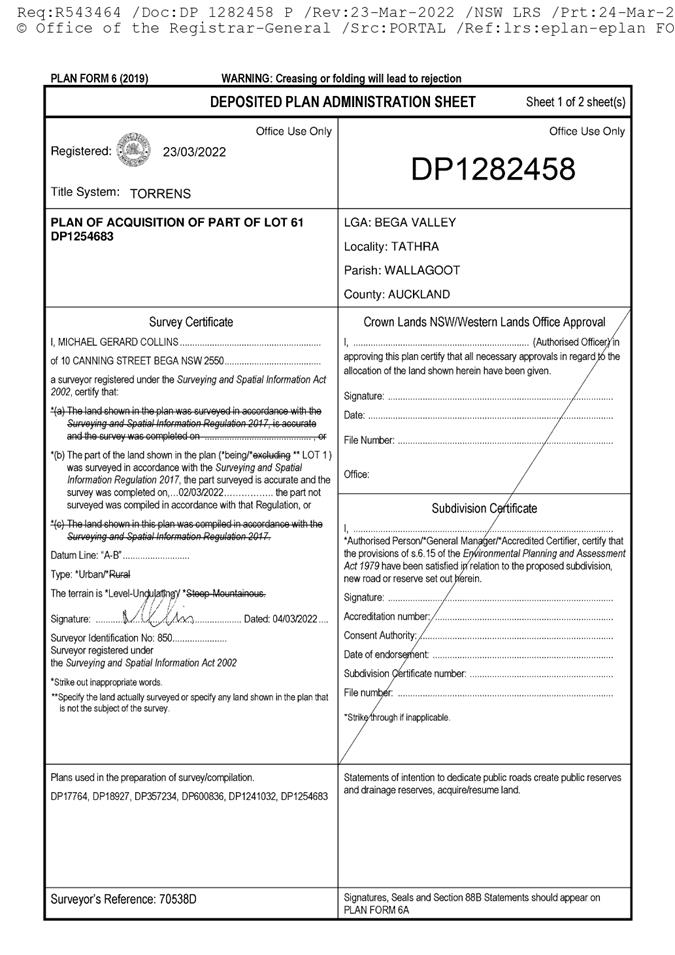
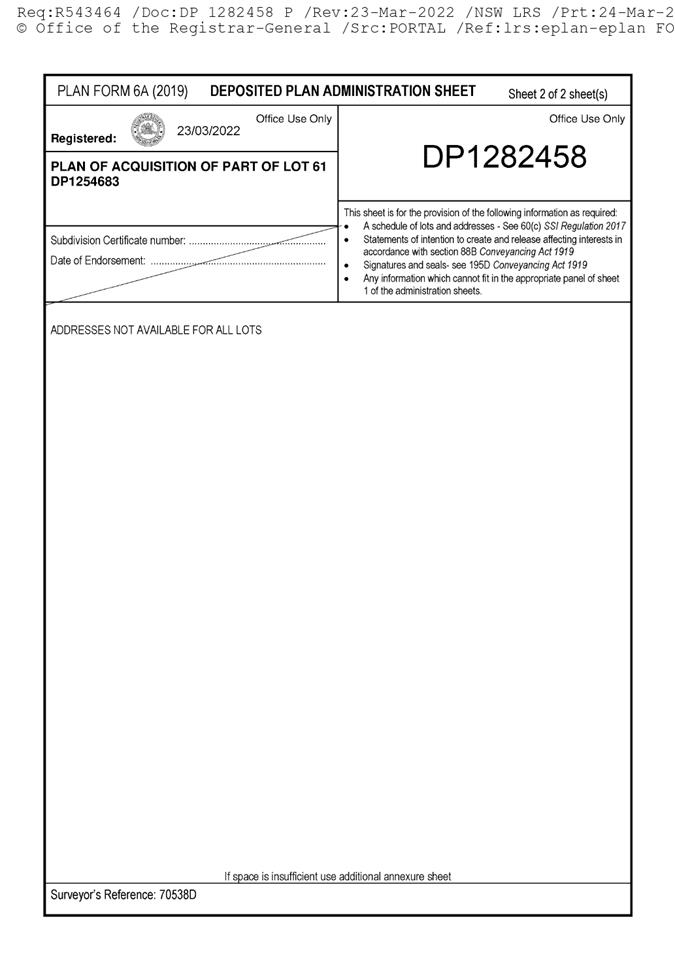
|
Council
|
12 June 2024
|
|
Item
10.3 - Attachment 5
|
Deposited Plan 1223026
|
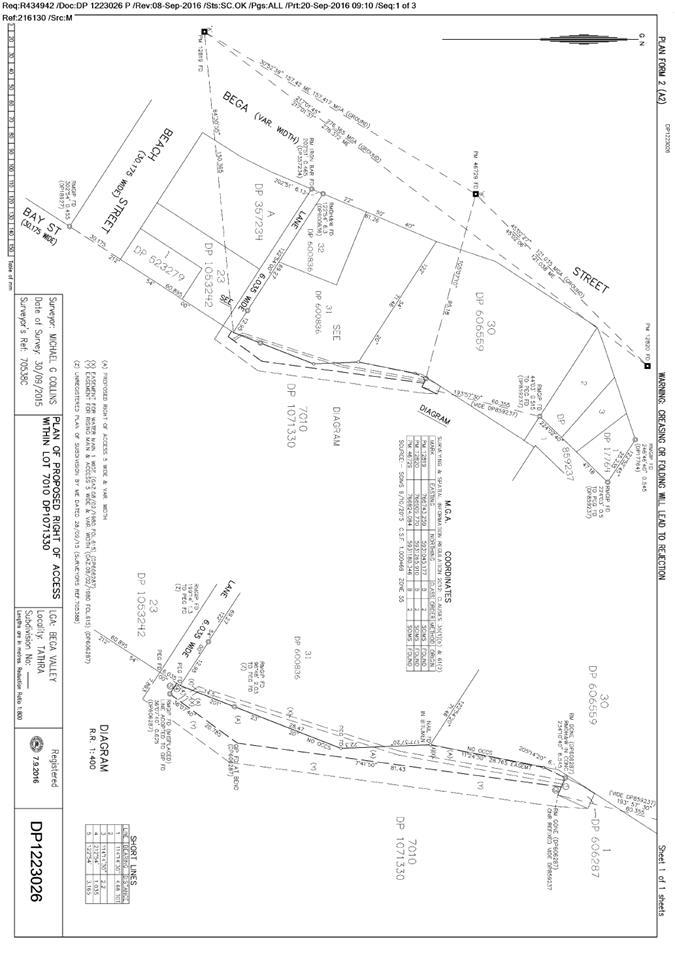
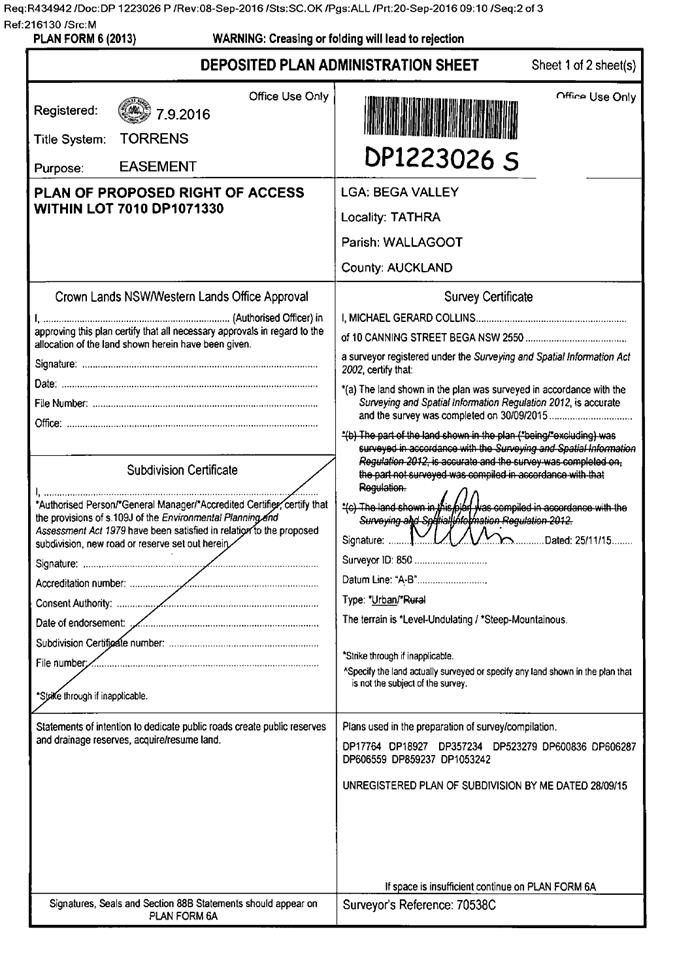
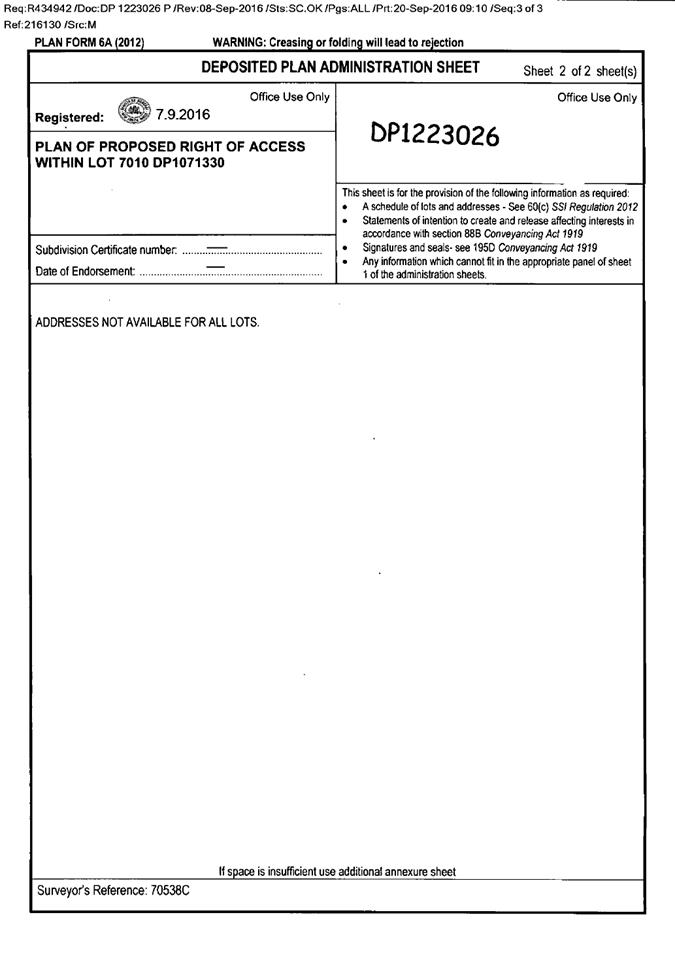
|
Council 12
June 2024
|
Item 10.4
|
10.4. Local Government
Election
This
report outlines the actions taken to prepare for the 2024 Local Government
Elections and includes details about the caretaker period leading into the
election.
Director Business & Governance
Officer’s
Recommendation
1. Note the
tracked changes in the attachment ‘Local Government Elections (caretaker
period provisions) procedure and adopt the procedure with all tracked changes
accepted.
2. Publish
the Local Government Elections (caretaker period provisions) procedure on Council’s
website.
Executive Summary
This report provides a summary of actions completed in
preparation for the 2024 Local Government Election. It also proposes the
adoption of the Local Government Elections (caretaker provisions) procedure for
Bega Valley Shire Council.
Background
On 15 February 2023, Council resolved to outsource the
coordination of the 2024 Local Government Election to the NSW Electoral
Commission (NSWEC).
Information about the election can be accessed via
Council’s website by visiting the ‘Local Government Elections 2024’
page. Information on this page has been provided by the NSWEC and Office of
Local Government (OLG), including:
· key election dates
· information about the
nomination process
· the roles and responsibilities
of an elected official in local government
· polling and pre-polling
venues and dates
· postal voting details
· details about
registering for the non-residential-roll
Candidate information session
On 3 June 2024, Council hosted a candidate information
session for prospective councillors. The recording is available on
Council’s Local Government Elections 2024
webpage.
Nominations for the 2024 election
Nominations for the election open on 5 August 2024 and will
close at 12pm on 14 August 2024. All nominations must be received by
the nominated Returning Officer being engaged by the NSW Electoral Commission.
The Returning Office will be located at 106 Auckland Street, Bega, NSW,
2550.
Caretaker period
Council will go into a caretaker period in the four weeks
leading up to the election. The caretaker period ensures major decisions are
not made which would limit or bind the actions of an incoming Council during
the declared period. The caretaker period commences on 16 August 2024 and
concludes at 6pm on 13 September 2024. Further details about the caretaker
period are included in procedure 6.01.03 Local Government Elections (caretaker
period provisions) attached to this report.
Election day and declaration of results
The election will be held on Saturday 14 September 2024.
Information about polling venues is available by visiting the ‘Local Government Elections 2024’
page on the Council website.
The progressive declaration of results is expected to occur
between 1-3 October 2024.
Oath of Office and initial council meeting
The newly elected or re-elected officials will receive a
welcome and introduction from the CEO on 7 October 2024.
On 9 October 2024, elected councillors will take the Oath of
Office, commence an induction program, and attend the first official meeting of
the new Council.
One of the first required
activities for the newly elected Councillors is to set the preferred days and
times for Council meetings and workshops. Meeting dates are currently 2:00pm on
every fourth Wednesday of the month. Workshops are held on Wednesdays when
there are no Council meetings scheduled. Workshops typically commence at
10:00am.
If changes are proposed to
the schedule, the Code of Meeting Practice will be required to be amended and
publicly exhibited for 28-days. Making a submission to proposed changes to the
Code of Meeting Practice will be available for 42-days.
Options
No options are being presented or recommended as part of
this report. Councillors are encouraged to provide feedback on the proposed
induction program based on their own experience and knowledge.
Community
and Stakeholder Engagement
Engagement undertaken
In preparation for the 2024 election, Council engaged with
relevant stakeholders from the NSW Electoral Commission (NSWEC) and the Office
of Local Government (OLG). The engagement was undertaken to collaborate on
election planning and to help inform the community, currently elected
councillors, prospective councillors, and council officers about the election
and induction processes.
To help share information, Council established a page on its
website. The content is linked directly to the NSWEC and can be accessed by
visiting the ‘Local Government Elections 2024’
webpage.
Council officers hosted a candidate information session on 3
June 2024. The session included a presentation from guest speaker, Mr Kenrick
Winchester – Mayor of Queanbeyan Palerang Regional Council. Information
was also provided to participants about Council’s operations, strategies,
and plans, as well as the election process. For more details about the session,
please view the ‘Candidate Information Session’
section on the election webpage.
Engagement planned
Council officers will continue to provide information to the
community about the upcoming election using the 2024 Local Government Elections
page on the Council website. The details included will be linked to the NSWEC
website.
Financial
and Resource Considerations
The 2024 Local Government Election has been outsourced to
the NSW Electoral Commission (NSWEC) and is budgeted for in the 2024 financial
year. The election is funded by general fund
revenue.
|
Item
|
$ Excl GST
|
|
Expenditure Detail
|
|
|
Local Government Election
contract with NSWEC
|
$441.562.00
|
|
Candidate information
session
|
$3,000.00
|
|
Governance in local government
training
|
$12,000.00
|
|
Total Expenditure
|
$456,562.00
|
|
|
|
|
Source of Funds
|
|
|
General fund (Local
Government Election)
|
|
Legal
/Policy
The items listed below have been used to inform the Local
Government Elections (caretaker provisions) procedure, as well as the proposed
councillor induction program:
· Local
Government Act 1993
· Local
Government (General) Regulations
· Procedure 6.02.01
Code of conduct
· Procedure 6.02.01a
Procedures for the administration of the Model Code of Conduct
· Procedure 6.02.02
Code of meeting practice
Impacts
on Strategic/Operational/Asset Management Plan/Risk
Strategic
Alignment
This report and its recommendations relate to the following
items within adopted Delivery Program (DP), and Operational Plan (OP):
· Delivery
Program E.8.1
Develop and implement good governance systems
· Operational
Plan Activity E8.1.3
Review council procedures in accordance with adopted policy and procedure
review schedule
· Operational Plan
Activity E8.1.4
Assist with the coordination of the 2024 Local Government Election
Environment
and Climate Change
There are no environmental and climate change considerations
related to this report and its recommendations.
Council is committed to being paperless and provides
electronic devices for accessing council information and managing meeting
agendas and documents.
Economic
There are no economic considerations related to this report
and its recommendations.
Risk
Non-compliance with provisions of the Local Government
Act 1993, the Local Government (General) Regulations, as well as the
Local Government Elections (caretaker provisions) procedure would present a
risk to Council from a legal and reputational perspective. The adoption of the
caretaker procedure as well as the proposed councillor induction program
attached to this report will mitigate these risks.
Social
/ Cultural
The planning, preparation and
hosting of local government elections is a democratic process and will have
social impacts on the Bega Valley Shire community.
Attachments
1⇩. DRAFT
procedure 6.01.03 local government elections (caretaker period provisions)
|
Council
|
12 June 2024
|
|
Item
10.4 - Attachment 1
|
DRAFT procedure 6.01.03 local government elections (caretaker
period provisions)
|
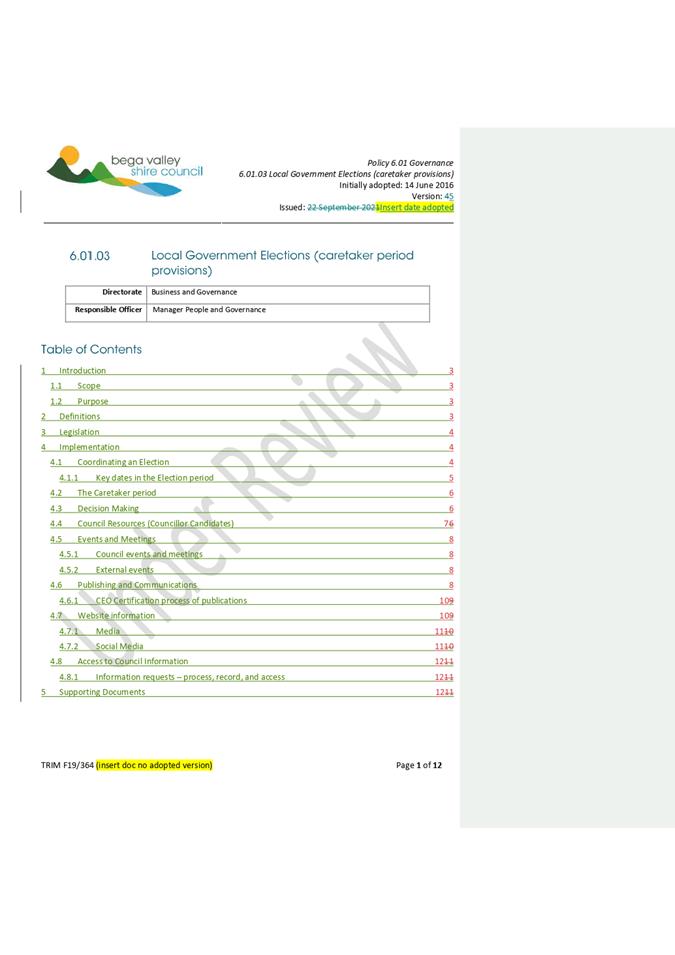
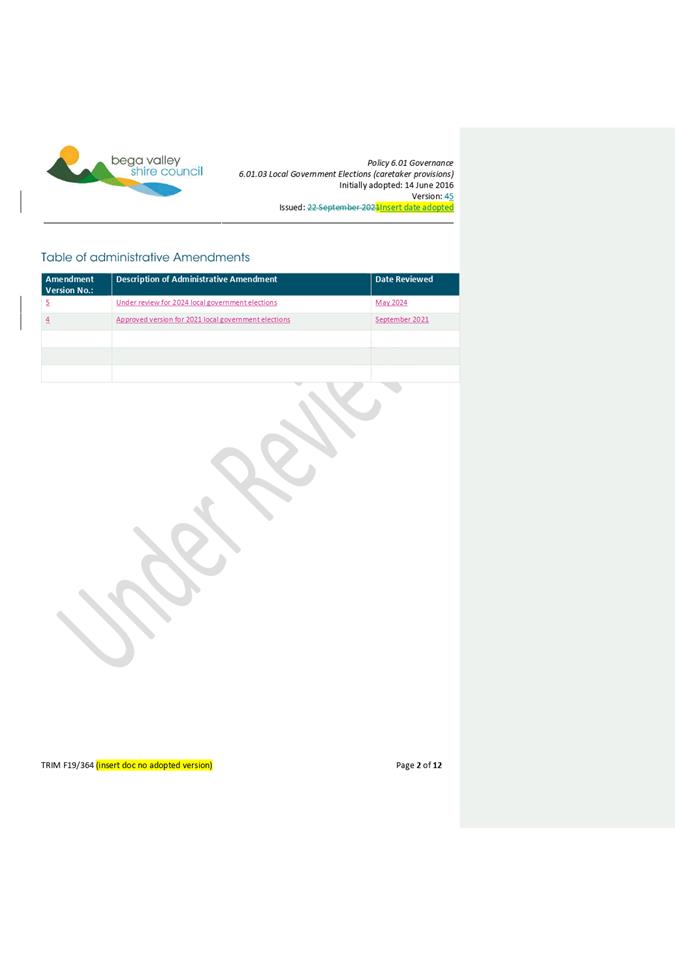
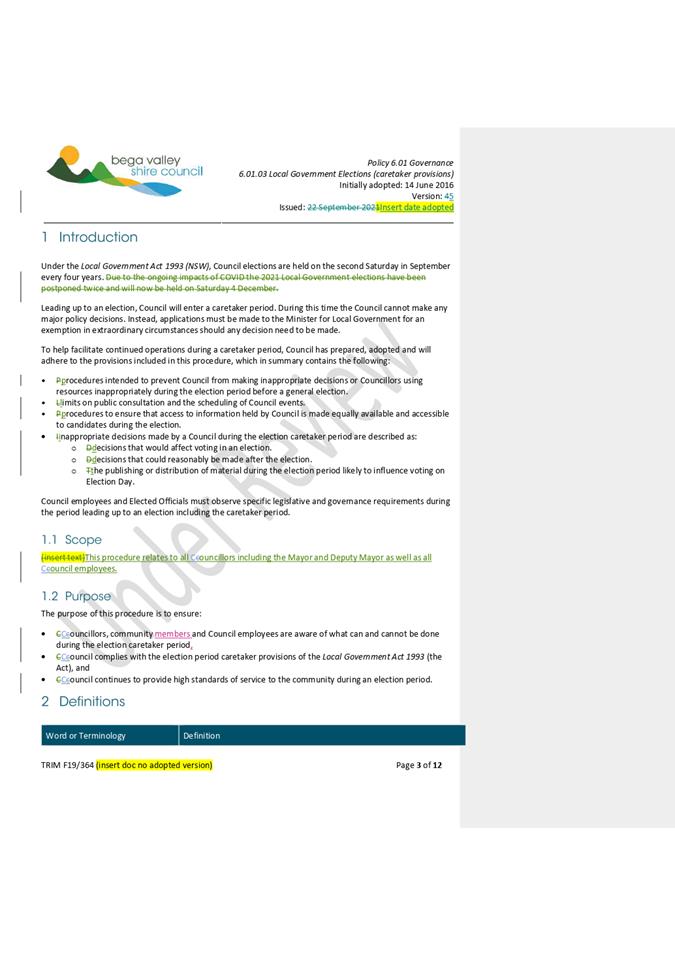
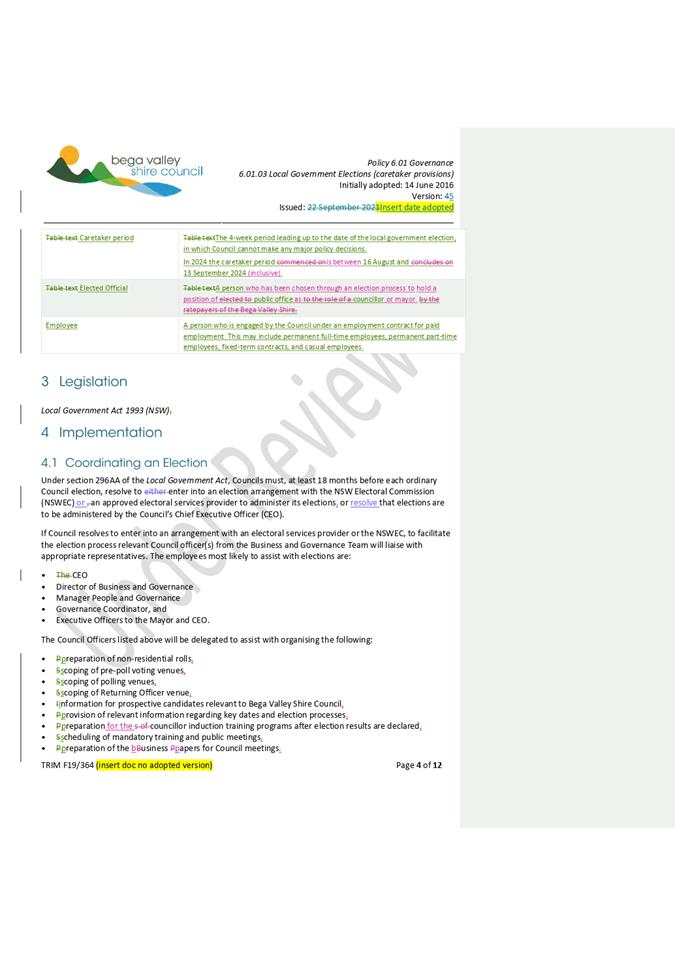
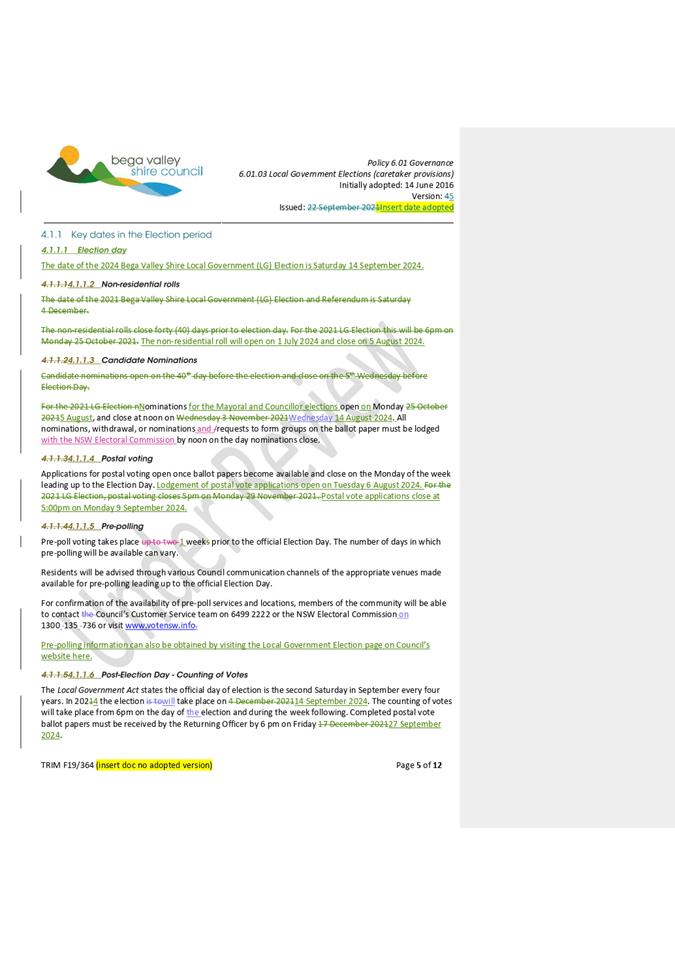
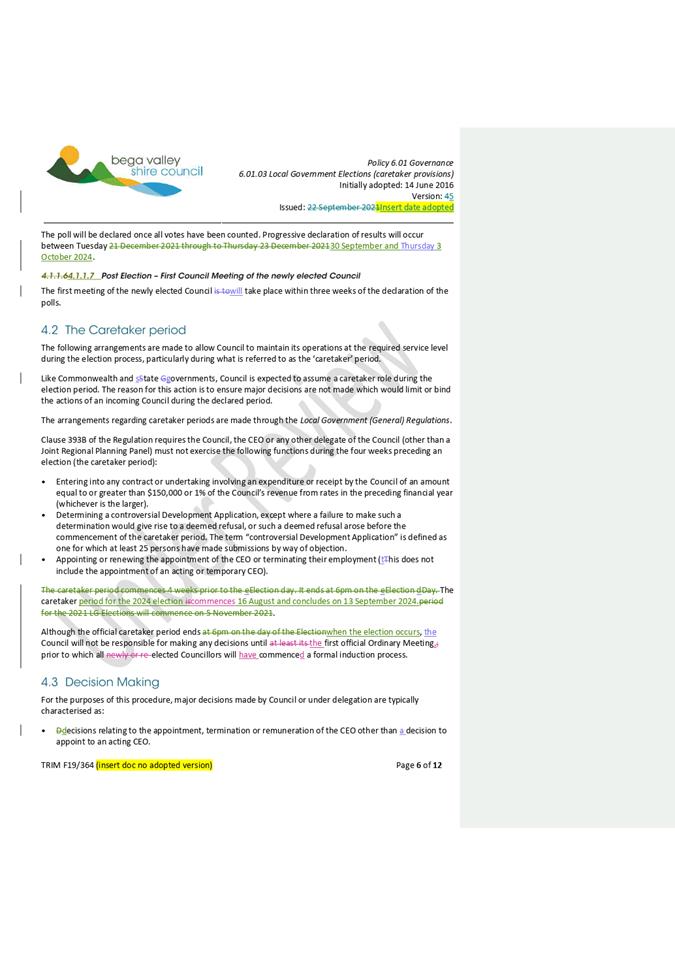
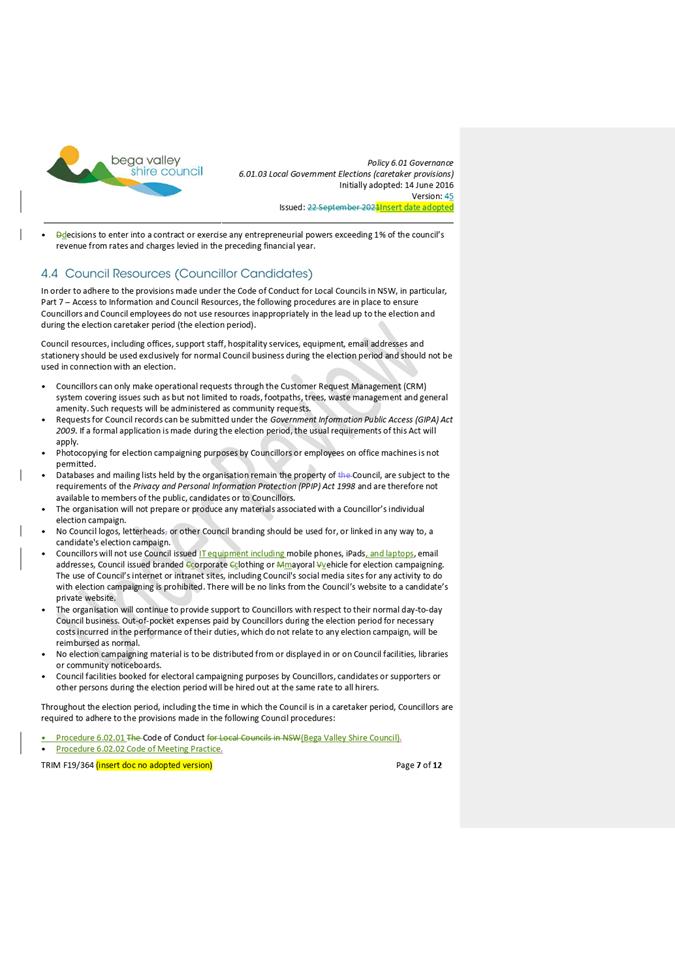
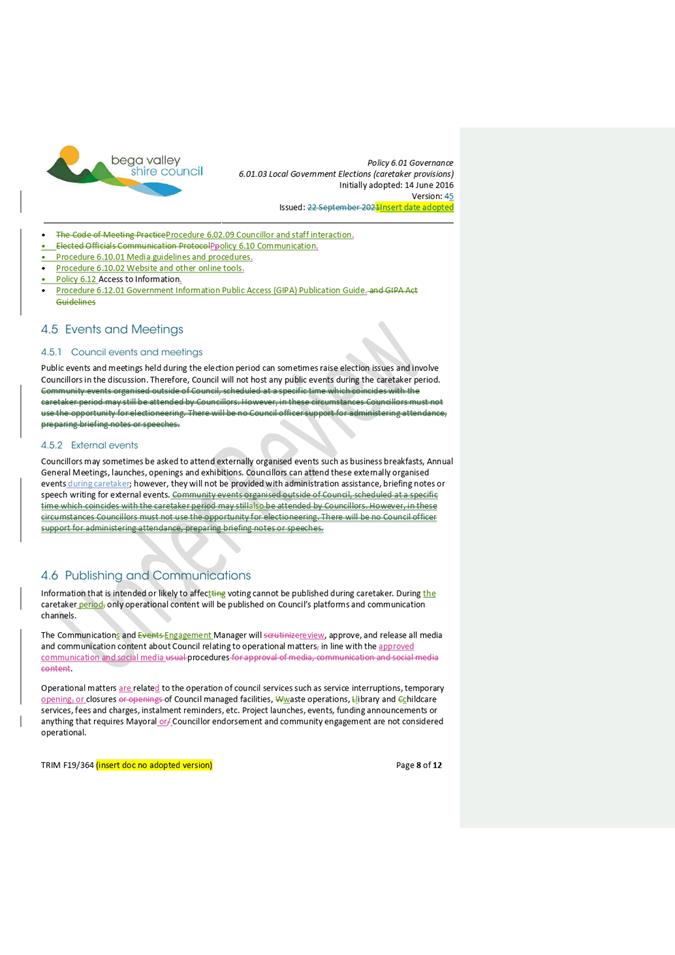
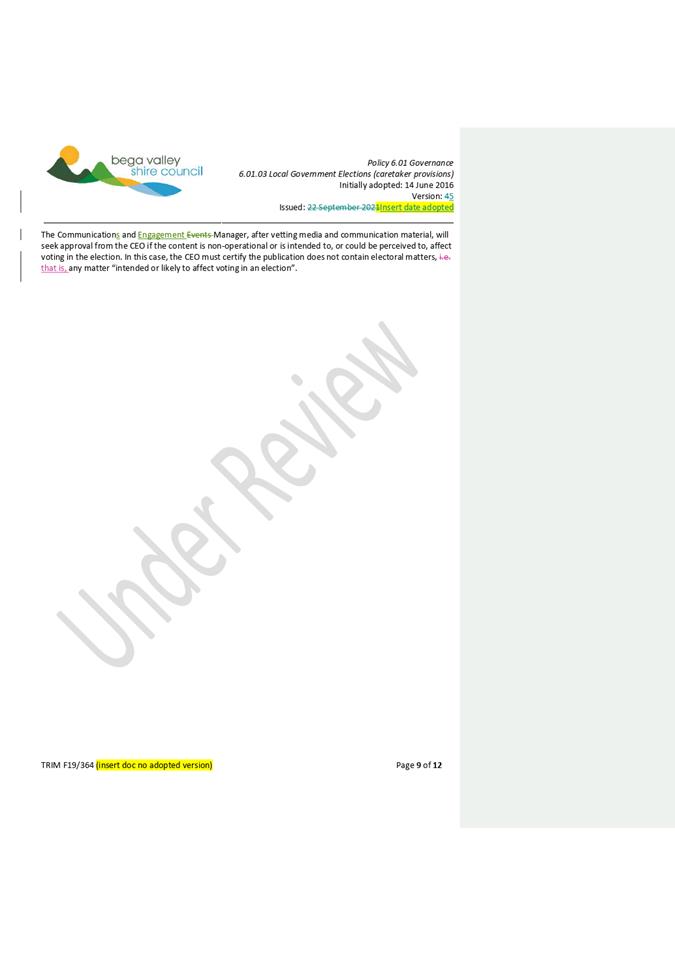
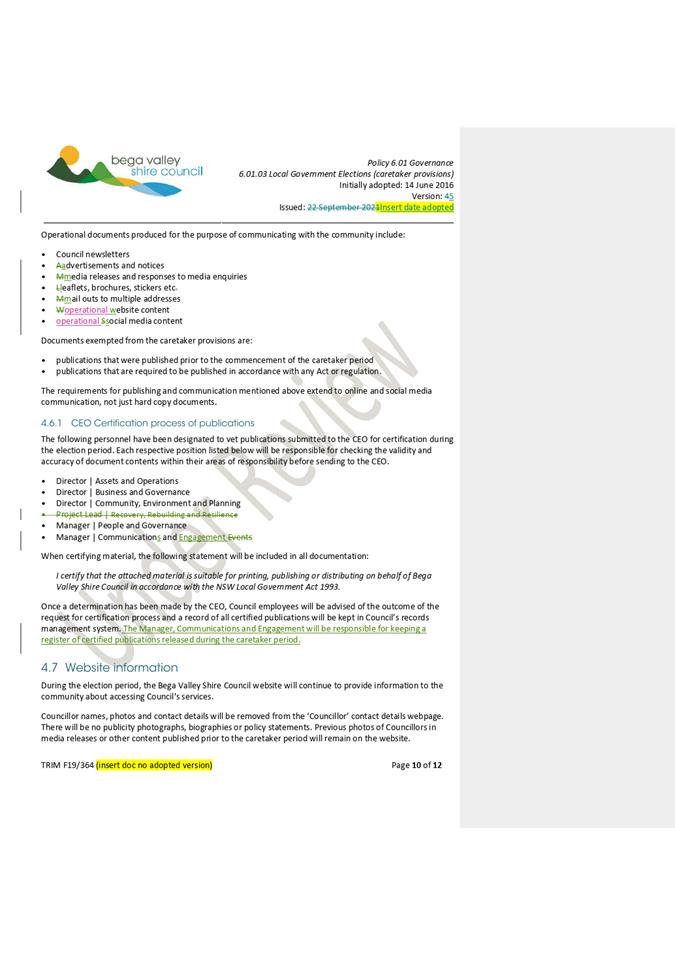
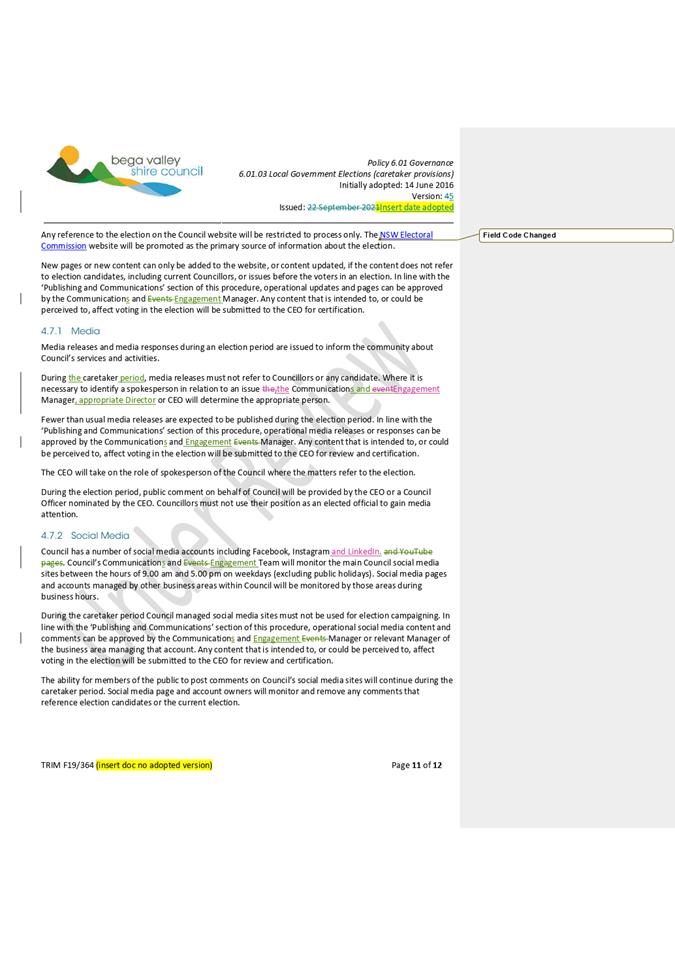
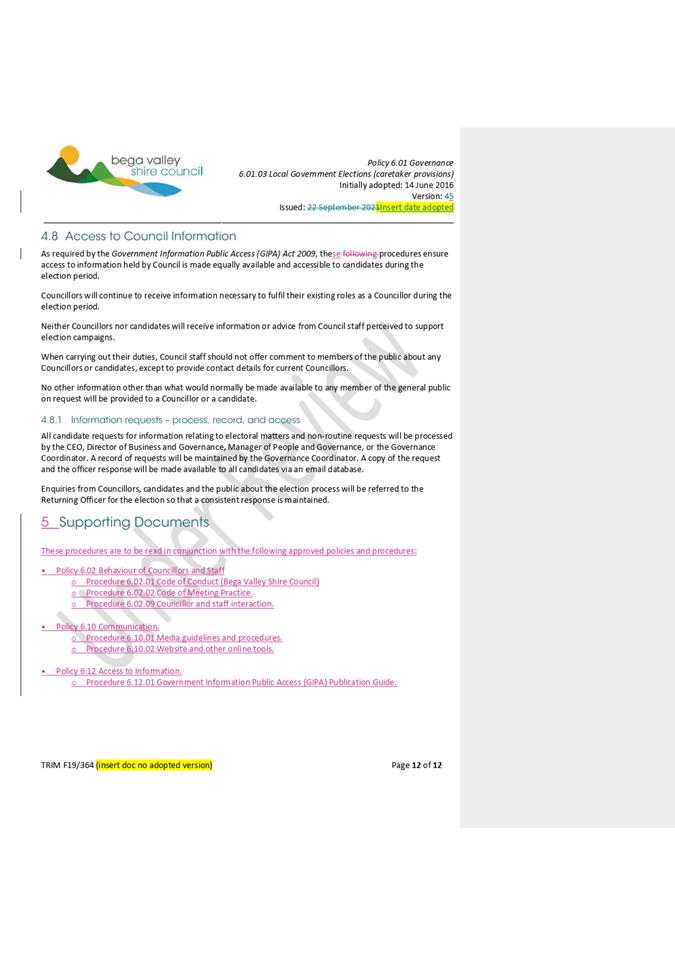
|
Council 12
June 2024
|
Item 10.5
|
10.5. Accounting for
Rural Fire-fighting Assets
This report provides an update to
changes in the Code of Accounting Practice and financial reporting in relation
to recognition of Rural Fire-fighting assets.
Director Business & Governance
Officer’s
Recommendation
1. That
Council carry out RFS stocktakes on behalf
of the NSW Government and if the value of these assets is material recognise firefighting equipment in the Financial
Statements.
2. Council writes to the local State
Member, the Hon Michael Holland MP, Treasurer the Hon Daniel Mookhey MLC,
Minister for Emergency Services and Resilience the Hon Stephanie Cook MP and
the Minister for Local Government Ron Hoenig MP:
a. Expressing
Council’s objection to the NSW Government’s determination on ownership
of Rural Fire Service assets;
b. Calling
on the NSW Government to take immediate action to permanently remove the requirement
for local government to account for Rural Fire Service (RFS) assets and acknowledging
that rural firefighting equipment is vested in, under the control of and the
property of the RFS; and
c. Review
the operating models of the State Emergency Service and Fire and Rescue NSW and
implement this as a preferred model for the Rural Fire Service.
d. Amending
s119 of the Rural Fires Act 1997 so that effect is clear and RFS assets
are not the property of councils.
3. Council writes to the Shadow
Treasurer Damien Tudehope MLC, the Shadow Minister for Emergency Services
Gurmesh Singh MP and the Shadow Minister for Local Government Wendy Tuckerman
MP, seeking commitment to support NSW Councils’ call to amend the Rural
Fires Act 1997 s119 as described in item 2(a) and 2(d) above.
4. Council notes this action is
entirely directed towards the nonsensical requirements contained in legislation
that does not reflect the reality that RFS assets are managed and controlled by
local brigades. Council considers this to be a cynical financial tactic that
abdicates the government’s responsibilities and has a negative financial
impact on our local communities.
5. Council reaffirms its complete
support and commitment to local RFS brigades.
Executive Summary
Councils is required to prepare the General Purpose
Financial Statements in accordance with
· The Local
Government Act 1993,
· The Australian
Accounting standards and other pronouncements of the Australian Accounting
Standards Board,
· The Local
Government Code of Accounting Practice and Financial reporting.
The review of the local government Code of accounting
Practice and Financial reporting (the code) was released in December
2023 and includes direction on the recording of red fleet assets (copy below)
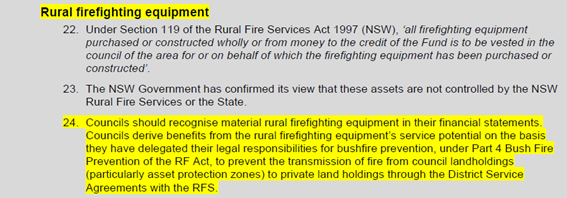
Up until December 2023, the Local Government Code of
Accounting Practice and Financial reporting allowed Councils to decide whether
to record RFS red fleet assets as council assets based on their professional
judgement.
Background
On 17 August 2022 it was resolved that Bega Valley
Shire Council would exercise discretion not include the Red Fleet assets (Fire
Fighting Equipment) in its Financial Statements. This was a position that was held by many rural and regional council’s burdened
with accounting for rural fire service assets. Each year, the Council provides
a position paper to justify this accounting treatment, as outlined in the
commentary provided by the Local Government Code of Accounting Practice for the
period ending 30 June 2021.
A long-standing dispute over the
accounting treatment of the Red Fleet came to a head with the
Auditor-General’s 2021 Report on Local Government issued 22 June 2022. The audit report emphasised the State Government
determination that RFS assets are the “property” of councils and
must be recorded in Council’s financial statements with Council required
to absorb all depreciation costs.
The Audit Office Local
Government Report continues to reinforce the notion that RFS mobile and
other fire-fighting assets can somehow be deemed to be council assets and
applies more pressure on councils and the Office of Local Government (OLG) to
conform with this determination, even though
councils do not have effective management or control of these assets.
Councils across the State and Local Government NSW (LGNSW) refute this determination. Councils do not have any say
in the acquisition, deployment, or disposal of
these assets. Comparable assets held by Fire
& Rescue NSW (FRNSW) are not vested anywhere other than with the
organisations that purchase, use, maintain and dispose of them.
Council has supported the Local
Government campaign on the financial treatment of Rural Fire services (RFS)
mobile assets known as the “Red Fleet” and Council resolved this by
Mayoral Minute on 17 August 2022. The resolution provided support for the Bega
Valley Shire Council position papers to advise the Auditor General that notwithstanding any overtures of
future qualified audits, it will not carry out RFS stocktakes on behalf of the
NSW Government and will not record RFS assets in Bega Valley Shire
Council’s financial statements. At that time the State Government’s own Local Government
Accounting Code of Practice and Financial
Reporting provided for councils to determine whether they recorded the RFS
assets as council assets or not.
The Local Government Code of
Accounting Practice and Financial reporting 2023-24 was issued in December 2023
and removes the right of Council to use its professional judgement to determine
the recognition of RFS red fleet assets with the statement “Councils
should recognise material rural firefighting equipment in their financial
statements”.
Since 2019, Council has provided
an accounting position paper each year that clearly outlines our position on
recognition of rural fire-fighting equipment based on professional judgment and
interpretation of the accounting standards and accounting definitions relating
to “what is an asset” and discussion on the term
“control” in relation to the fire-fighting assets.
The position papers have
provided sufficient evidence to support Councils position until audits for
financial period ended 30 June 2022 and 30 June 2023 resulted in Council
receiving a qualified audit opinion for non-recognition of rural fire-fighting
equipment and now the Accounting Code of Practice
has been amended to remove any discretion.
Council has provided a
submission to the Parliamentary review into Assets, premises, and funding of
the NSW Rural Fire service (attached). Included in the terms of reference from
the Public Accounts Committee is the issue of accounting for the ownership of
Rural Fire Service assets including fire-fighting equipment. Our submission has
raised these concerns for the committee’s consideration.
Options
There are no options provided with this report. Our
recommendations are presented as a result of the direction received to comply
with legislative and reporting requirements.
Community
and Stakeholder Engagement
There are no community and stakeholder engagement
requirements associated with this report regarding the notification of changes
to the Local Government Code of Accounting Practice
and Financial reporting 2023-24.
Engagement undertaken
There has been no engagement undertaken associated with this
report.
Engagement planned
This report recommends advocacy to NSW Ministers regarding
changes to legislation and should the recommendation be adopted, correspondence
to relevant Ministers and Shadow Ministers will be issued. Council staff will
continue to provide a position paper for financial audits to document the
nonsensical requirements of accounting for Rural Fire Service assets.
Financial
and Resource Considerations
Accounting for Rural Fire Service assets and equipment in
Councils financial statements has a negative impact on Councils financial
sustainability. Council records the assets in the balance sheet and the income
statement includes the depreciation of the fire-fighting equipment as an
expense that impacts Councils operating result.
In addition, given that Council does not manage or control
these assets, we will require equipment listings for all the assets held by the
Rural Fire Service and firefighting equipment replacement costs before it can
be fully accounted for in our financial statements.
Legal
/Policy
Local Government Act 1993.
Local Government Code of Accounting practice and Financial
reporting.
Rural Fires Act 1997.
Impacts
on Strategic/Operational/Asset Management Plan/Risk
Strategic
Alignment
CSP Theme Our
civic leadership – Local leadership is strong, consultative and
responsive to our community’s needs.
CSP Strategy E.4
Council has robust financial management processes to ensure ongoing viability
and value for money.
Delivery
Program E4.2 - Ensure
Council’s revenue streams are maximised.
Operational Plan Core
business: Preparation of compliant financial reports including audited annual
accounts.
Environment
and Climate Change
There are no Environment and Climate Change impacts
associated with the recommendations of this report.
Economic
Council is a major contributor to the local and regional
economy. Assessment of financial performance is a key input of decision making,
with the goal of ensuring a financially responsible and effective organisation.
The requirement that has now been formally placed on council in the accounting
code has an effect on our financial results.The financial statements provide an
opportunity to assess actual performance against strategic plans and highlight
any challenges of unexpected events that may have impacted the final result.
Accounting for assets and deprecation related to NSW Government
responsibilities has a negative impact on councils financial results.
Risk
This report minimises the risk of non-compliance with the Local
Government Act 1993.
Social
/ Cultural
Reporting of financial performance in a timely manner that
meets legislative requirements, builds confidence in the management and
leadership of the Council. The change to the Local
Government Code of Accounting Practice and Financial Reporting unnecessarily
undermines the performance of council and does not accurately demonstrate the
State Governments responsibilities for funding this emergency service agency in
local communities.
The prescribed accounting treatment of RFS assets does not
accurately reflect the important role of local RFS brigades and their
responsibilities in operating and managing their assets. We recommend that the
operating model for State Emergency Services (SES) and Fire and Rescue (FRNSW)
be applied to Rural Fire Service.
Attachments
1⇩. 2024.05.15
Submission for inquiry into the assets, premises and funding of the NSW Rural
Fire Service
|
Council
|
12 June 2024
|
|
Item
10.5 - Attachment 1
|
2024.05.15 Submission for inquiry into the assets, premises
and funding of the NSW Rural Fire Service
|

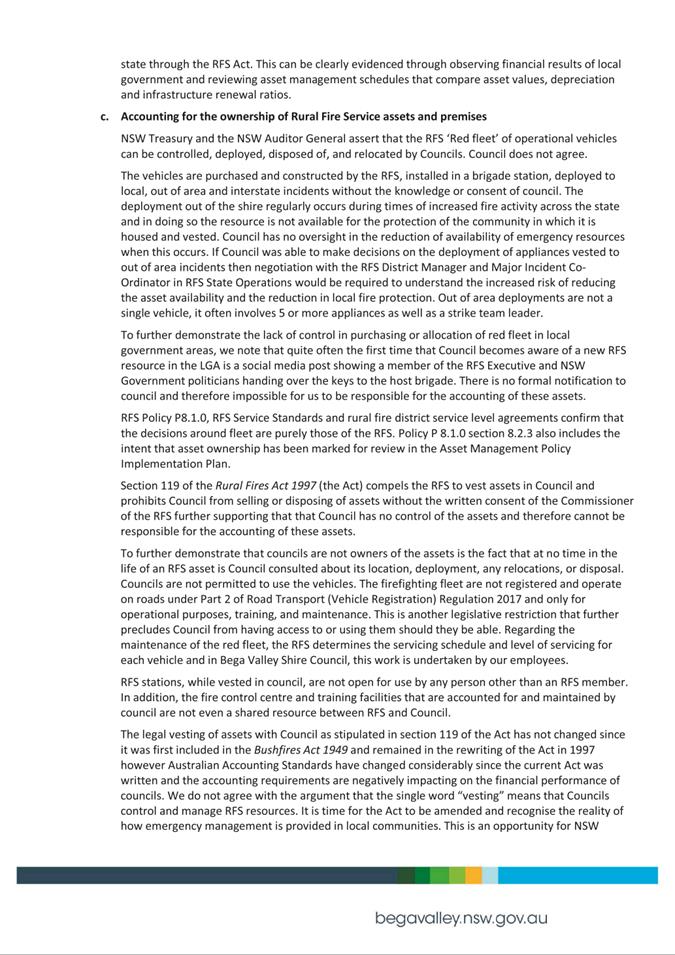
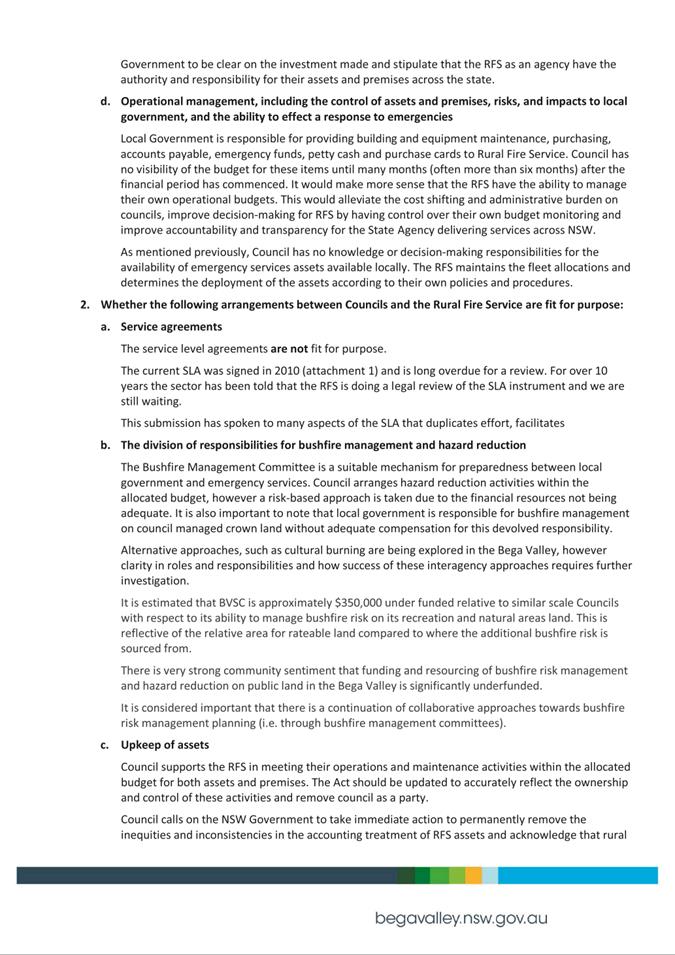
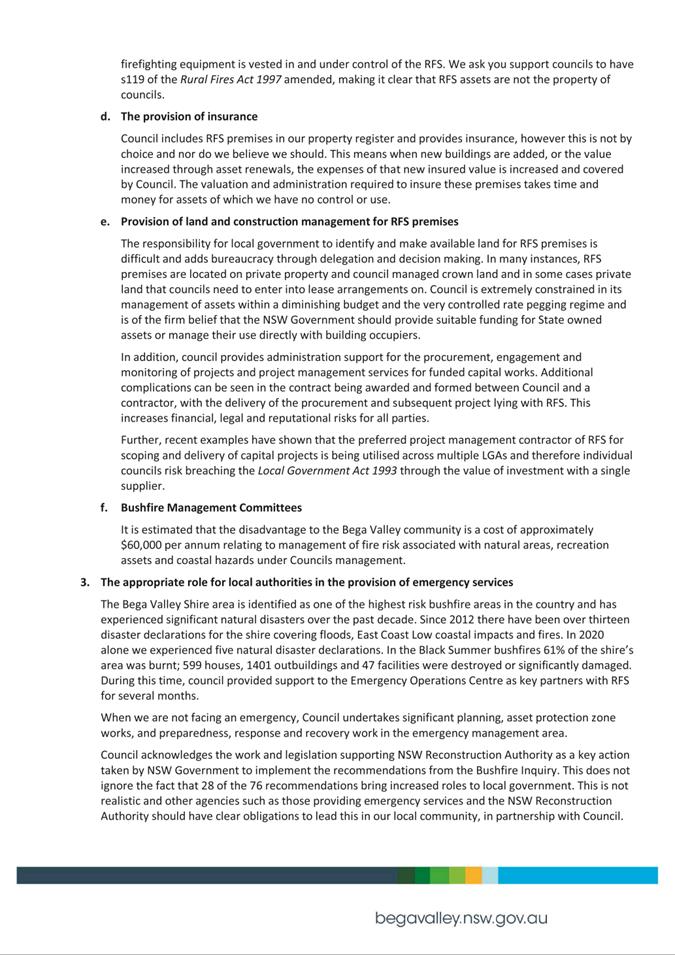
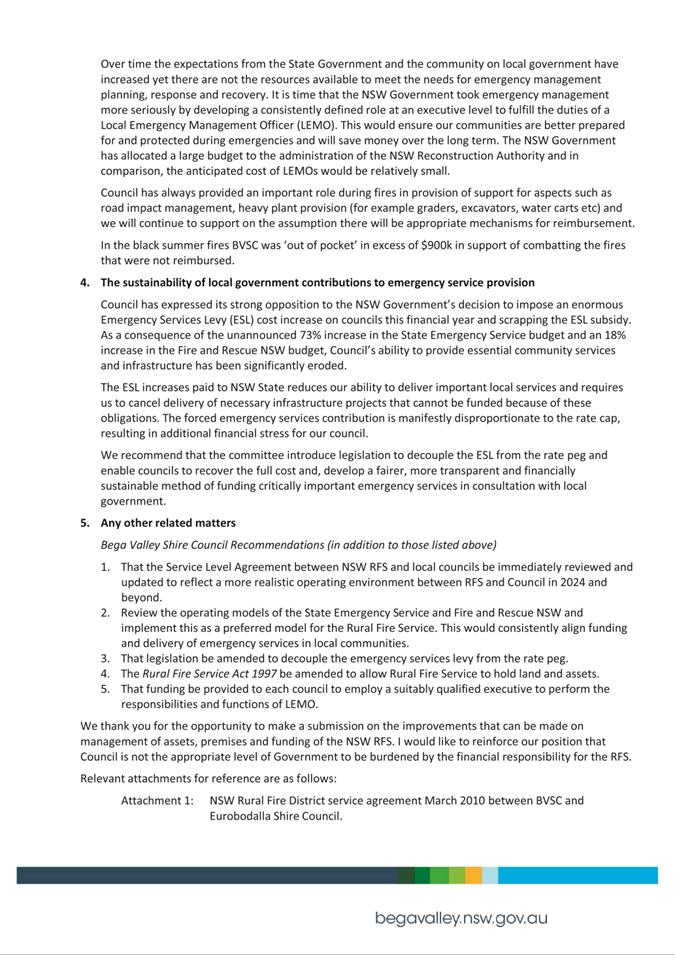
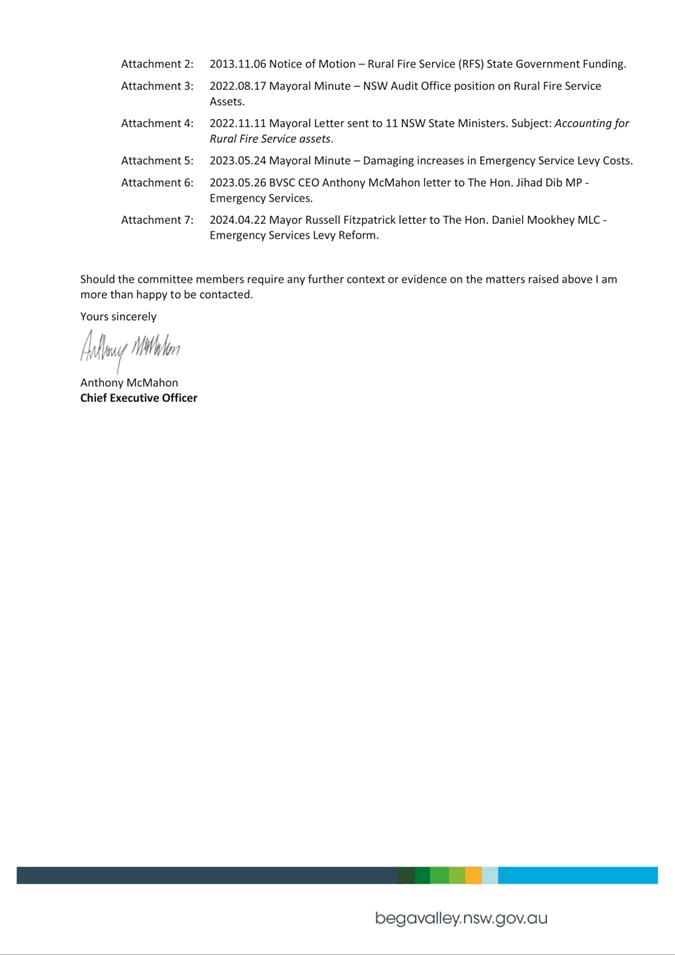
|
Council 12
June 2024
|
Item 10.6
|
10.6. Determination of
the Local Government Remuneration Tribunal - 2025 Financial Year - Mayoral and
Councillor Fees
Council is required to adopt an
annual fee payable to all Councillors and the Mayor for the 2024-25 Financial
Year.
Director Business & Governance
Officer’s
Recommendation
1. That Council
resolves the annual fee payable to Councillors, paid monthly in arrears, from 1
July 2024 to 30 June 2025 to be $22,540.
2. That Council resolves
the additional annual fee payable to the Mayor, paid monthly in arrears, from 1
July 2024 to 30 June 2025 to be $49,200.
3. That Council
resolves to pay superannuation contribution payments on the fees paid.
Executive Summary
Council requires a resolution to set the Councillor and
Mayoral fees annually. The Local Government Remuneration Tribunal (the
Tribunal) has determined that there will be a 3.75% increase in the minimum and
maximum mayoral and councillor fees for the 2024-25 financial year, effective
from 1 July 2024.
The Tribunal considers several factors before making a
determination, including things such as NSW industrial relations environment,
consumer price index, public sector wages and the rate peg.
The Officer’s recommendation is that Council sets the
fees at the maximum rate, paid in arrears. Bega Valley Shire Council is
categorised as ‘Regional Rural’.
Background
On 29 April 2024, the Local Government Remuneration Tribunal
(the Tribunal) determined a 3.75% increase in the minimum and maximum mayoral
and councillor fees for the 2024-25 financial year, effective from 1 July 2024.
A copy of the determination can be found here: Local Government Remuneration
Tribunal Annual Determination.
The Tribunal is required to determine the remuneration
categories of councils and mayoral offices at least once every three years
under Local Government Act 1993 and undertook a review of the categories
as part of its 2023 determination. The Tribunal will next consider the model,
criteria for each group, and the allocation of councils in the 2026 review. For
the purpose of determining annual fees, Bega Valley Shire Council is classified
as a Regional Rural Council.
In its determination, the Tribunal received submissions on
requests for recategorization, movement of councils within the framework,
remuneration structure and 2024 fees. These are outlined in the determination
report.
For Bega Valley Shire Council, the maximum annual fee
allowable for each Councillor (including the Mayor) is proposed and has been
determined for FY2024-25 to be $22,540 with an additional amount of $49,200
payable to the Mayor.
Councillors are also entitled to claim reimbursement for
expenses incurred in carrying out their elected duties in accordance with
Council’s Policy 6.23 Payment of expenses and provision of facilities
for Councillors. These reimbursements are in addition to the annual fees
outlined in this report.
Councillor fees are payable monthly, in arrears, and a
budget allocation has been included in the draft budget to meet the recommended
payments. Depending on the resolution of council as a result of this
report’s recommendations, the budget allocation may need to be adjusted
before adopting the budget on 26 June 2024.
Options
Councillors are required to set the fee in line with the
Local Government Remuneration Tribunal determination. The following is noted,
· A council cannot
fix a fee higher than the maximum amount determined by the Tribunal.
· If a council does
not fix a fee, the council must pay the minimum fee determined by the Tribunal.
Community
and Stakeholder Engagement
Engagement undertaken
The draft budget was placed on exhibition until 5 June 2024.
Council will resolve the budget for FY2025 at the Council meeting on 26 June
2024.
Engagement planned
No further engagement is required.
Financial
and Resource Considerations
The draft budget allocation of $280,330 for councillor and
mayor fees Including superannuation has been advertised. Should Council wish to
resolve to pay the maximum fees and superannuation contribution payments,
council will revise the proposed budget allowance to $281,047 - an increase of
$717 before the budget is adopted at the 26 June Council Meeting.
Should Council resolve not to pay the maximum fees, council
will revise the proposed budget allowance when presenting the budget for
adoption at Council Meeting on 26 June 2024.
Fees for General Purpose Councils –
Non-Metropolitan (page 26 of the
report)
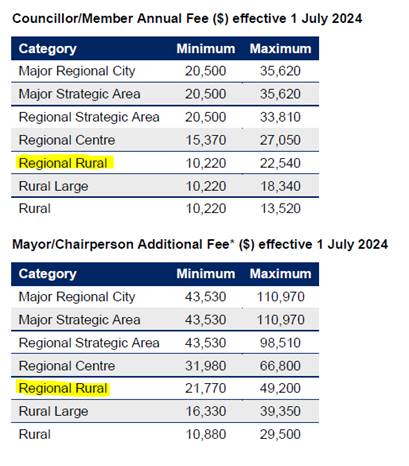
*The Mayor/Chairperson
additional fee must be paid in addition to the fee paid as a Councillor/Member
(s.249(2))
Legal
/Policy
The Local Government Act 1993, outlines how
Councillor fees are determined, fixed and paid:
Division 4 Local Government
Remuneration Tribunal:
241 Determination of fees
The Remuneration Tribunal
must, not later than 1 May in each year, determine, in each of the categories
determined under section 239, the maximum and minimum amounts of fees to be
paid during the following year to councillors (other than mayors) and mayors.
Division 5 What fees,
expenses and facilities may be paid or provided to councillors?
248 Fixing and
payment of annual fees for councillors
(1) A council must pay
each councillor an annual fee.
(2) A council may fix
the annual fee and, if it does so, it must fix the annual fee in accordance
with the appropriate determination of the Remuneration Tribunal.
(3) The annual fee so
fixed must be the same for each councillor.
(4) A council that does
not fix the annual fee must pay the appropriate minimum fee determined by the
Remuneration Tribunal.
249 Fixing and
payment of annual fees for the mayor
(1) A council must pay
the mayor an annual fee.
(2) The annual fee must
be paid in addition to the fee paid to the mayor as a councillor.
(3) A council may fix
the annual fee and, if it does so, it must fix the annual fee in accordance
with the appropriate determination of the Remuneration Tribunal.
(4) A council that does
not fix the annual fee must pay the appropriate minimum fee determined by the
Remuneration Tribunal.
(5) A council may pay
the deputy mayor (if there is one) a fee determined by the council for such
time as the deputy mayor acts in the office of the mayor. The amount of the fee
so paid must be deducted from the mayor’s annual fee.
250 At what
intervals are fees to be paid?
Fees payable under this
Division by a council are payable monthly in arrears for each month (or part of
a month) for which the councillor holds office.
Impacts on Strategic/Operational/Asset Management Plan/Risk
Strategic
Alignment
This report aligns with the following 2022-25 Delivery
Program and operational activities:
CSP Theme Our
civic leadership – Local leadership is strong, consultative and
responsive to our community’s needs.
CSP
Strategy E.8
- Council has a governance framework that promotes and guides accountability
and transparency.
Delivery Program E.8.1
– Develop and implement good governance systems.
CSP
Strategy E.1
– Lead, govern and regulate in an ethical, equitable, transparent and
accountable way.
Delivery
Program E.1.1
– Conduct day to day management of Council and support Councillors to
undertake their role
Environment
and Climate Change
There are no environmental or climate change impact relating
to the recommendations of this report.
Economic
Items 59-62 in the determination include a summary of the
submission made by LGNSW seeking a 10% increase. Four other submissions sought
increases from 3% to 5.57%. The determination includes the following:
70. The
Tribunal considered a range of factors in determining the amount to increase
minimum and maximum fees payable to Councillors and Mayors. This included
economic data, including the Consumer Price Index, Wage Price Index, full-time
adult average weekly ordinary time earnings, NSW Public Sector increases, and
Local Government State Award increases. It also considered the Base Cost Change
model used by IPART in setting the rate peg for 2024-25.
71. On
this occasion the Tribunal has determined that a 3.75% per cent increase will
apply to the minimum and maximum fees applicable to existing categories.
Risk
Council’s Annual Report includes information on
payments to Councillors and provision of facilities. Formal adoption of the
amounts in line with remuneration tribunal recommendations ensures legal
requirements are met.
Items 66-67 refer to submissions made regarding conflicts of
interest for a council to setting their own remuneration, a matter that has
been raised by Bega Valley Shire Councillors in the past. The Tribunal
reinforced the position that:
68. Currently
the Tribunal, consistent with its obligations set out in the LG Act, section
248 and section 249, determines a minimum and maximum remuneration range for
Councillors and Mayors. It is then up to individual councils, to fix the annual
fee for councillors and Mayors.
69. Furthermore,
the tribunal does not have the authority to determine a fixed mandatory fee,
section 241 of the LG Act states:
“The Remuneration
Tribunal must, not later than 1 May in each year, determine, in each of the
categories determined under section 239, the maximum and minimum amounts of
fees to be paid during the following year to councillors (other than mayors)
and mayors.”
Social
/ Cultural
Reporting on Councillor and Mayoral fees informs the
community, the Councillors and future potential councillor candidates about the
financial assistance provided to Councillors for undertaking their role as an
elected official.
Attachments
1⇩. 24-07
office of local government olg Circular to Councils 24-08 2024/25 Determination
of the Local Government Remuneration Tribunal
|
Council
|
12 June 2024
|
|
Item
10.6 - Attachment 1
|
24-07 office of local government olg Circular to Councils
24-08 2024/25 Determination of the Local Government Remuneration Tribunal
|
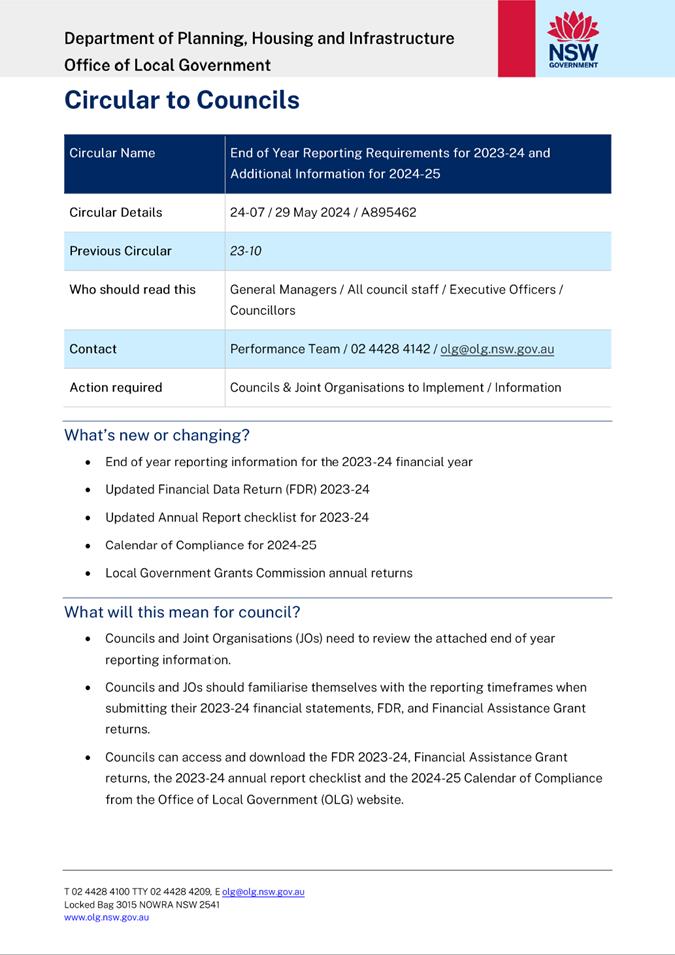
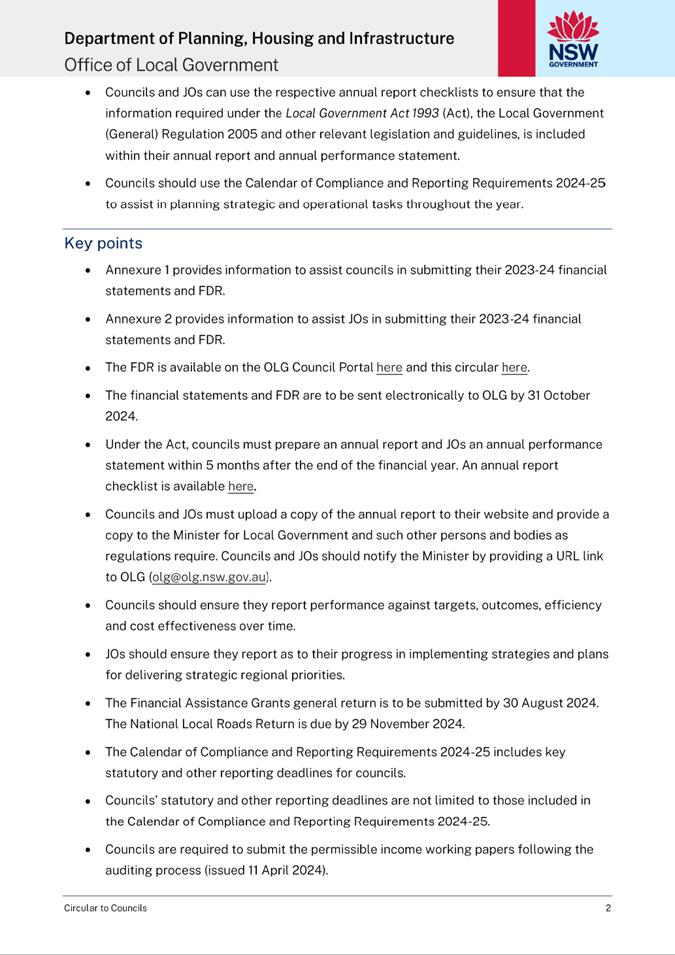
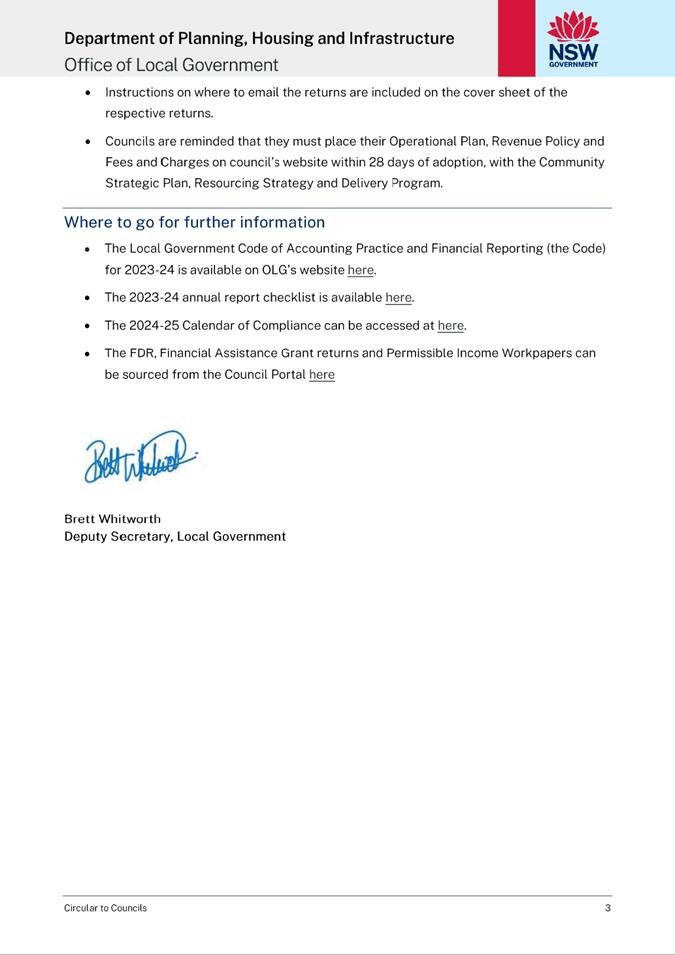
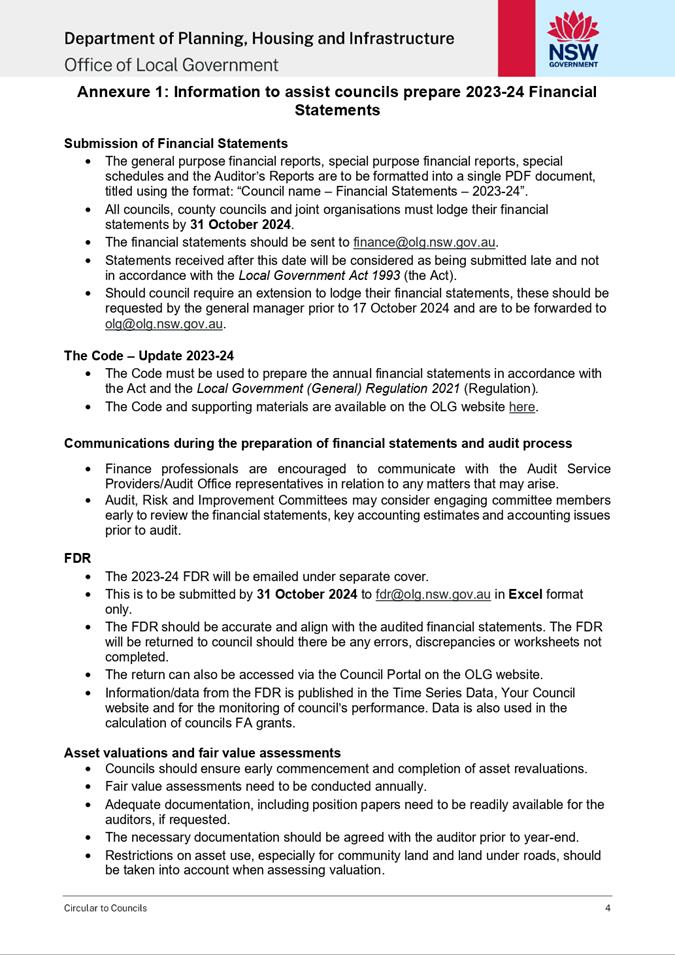
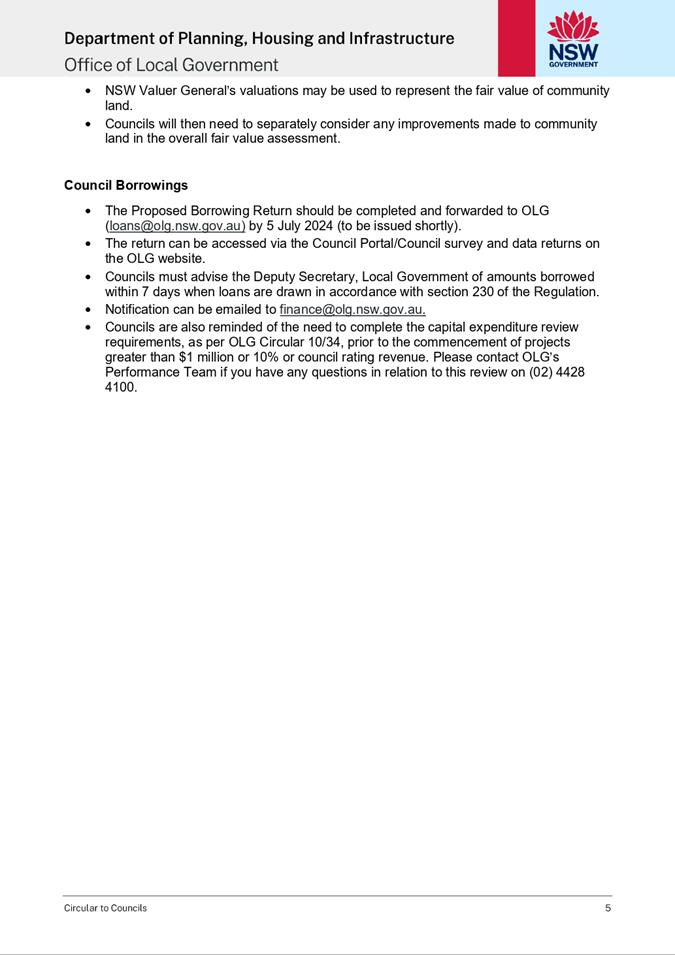
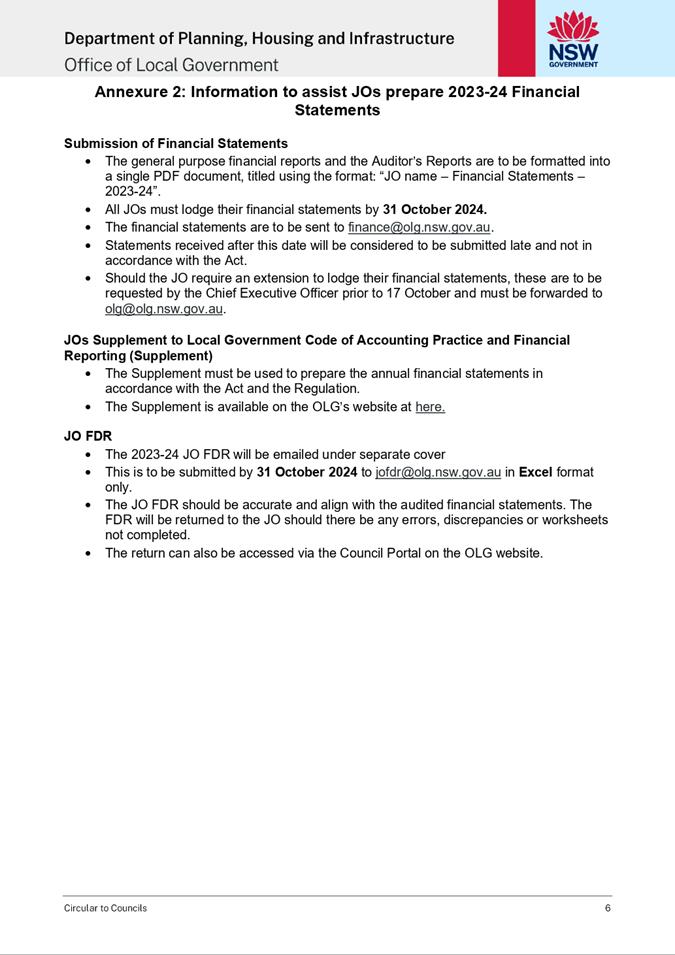
|
Council 12
June 2024
|
Item 10.7
|
10.7. Certificate of
Investment May 2024
This report details Council’s
cash and investments at 31 May 2024.
Director Business & Governance
Officer’s
Recommendation
1. That
Council receive and note the report on Council’s investment position at
31 May 2024.
2. That
Council notes the certification of the Responsible Accounting Officer.
Executive Summary
I, Judy Jordan, as the Responsible Accounting Officer of
Bega Valley Shire Council, hereby certify the investments listed in the
attached reports have been made in accordance with Section 625 of the Local
Government Act 1993 (the LG Act), clause 212 of the Local Government
(General) Regulation 2021.
On 31 May 2024 the total capital value of cash and
investments was $134,232,211.46 with 89% of Council’s investment
portfolio directed to term deposits and the remainder held in cash deposit
accounts. The following is investment information by fund:
|
Fund
|
May-2024
(‘000)
|
|
General Fund
|
49,353
|
|
Water Fund
|
30,594
|
|
Sewer Fund
|
54,285
|
|
TOTAL
|
134,232
|
All investments have been appropriately recorded in
Council’s financial records, reconciled monthly.
Background
The Local Government Act 1993 and Local Government
Regulation 2021 require that the Responsible Accounting Officer must
present to council monthly, the status of the investments held by council. The
Responsible Accounting Officer must detail the investments held, and their
compliance with both internal policy and external regulation under the
Ministerial Order of Investments.
Options
This is a receive and note report and does not require
consideration of options for decision.
Community
and Stakeholder Engagement
Engagement undertaken
There is no community or stakeholder engagement associated
with the recommendation of this report.
Engagement planned
The investment details of council are published in council
business papers and are publicly available at Council offices and on
Council’s website.
Financial
and Resource Considerations
A list of Councils cash and
investments held at 31 May 2024 is detailed below:
|
Table 1: Cash and
Investments listing
|
|
Issuer
|
Rating
|
Type
|
Purchase
|
Maturity
|
Interest Rate (%)
|
Capital Value ($)
|
|
Commonwealth
Bank
(Operating
cash account)
|
AA-
|
CASH
|
-
|
-
|
-
|
9,595,100.67
|
|
Commonwealth
Bank
(At
Call cash account)
|
AA-
|
CASH
|
-
|
-
|
-
|
5,000,000.00
|
|
NSW
Treasury Corporation
(Strategic
Cash Fund)
|
AA-
|
CASH
|
-
|
-
|
-
|
137,110.79
|
|
Australian Unity Bank
|
BBB+
|
TD
|
05/06/2023
|
05/06/2024
|
5.11
|
3,000,000.00
|
|
NAB
|
AA-
|
TD
|
24/02/2023
|
24/06/2024
|
5.00
|
2,500,000.00
|
|
NAB
|
AA-
|
TD
|
28/02/2023
|
29/07/2024
|
4.98
|
2,000,000.00
|
|
Commonwealth Bank
|
AA-
|
TD
|
10/02/2022
|
15/08/2024
|
1.75
|
5,000,000.00
|
|
NAB
|
AA-
|
TD
|
28/06/2023
|
24/09/2024
|
5.47
|
2,000,000.00
|
|
NAB
|
AA-
|
TD
|
14/12/2023
|
24/09/2024
|
5.16
|
5,000,000.00
|
|
Westpac
|
AA-
|
TD
|
30/09/2022
|
03/10/2024
|
4.78
|
2,000,000.00
|
|
Suncorp
|
A+
|
TD
|
31/10/2023
|
31/10/2024
|
5.42
|
3,000,000.00
|
|
NAB
|
AA-
|
TD
|
11/12/2023
|
12/11/2024
|
5.22
|
5,000,000.00
|
|
Suncorp
|
A+
|
TD
|
30/11/2023
|
29/11/2024
|
5.46
|
3,000,000.00
|
|
Bendigo and Adelaide
|
A-
|
TD
|
31/07/2023
|
03/12/2024
|
5.30
|
2,000,000.00
|
|
Commonwealth Bank
|
AA-
|
TD
|
15/12/2022
|
16/12/2024
|
4.59
|
5,000,000.00
|
|
NAB
|
AA-
|
TD
|
30/08/2023
|
14/01/2025
|
5.10
|
2,000,000.00
|
|
Westpac
|
AA-
|
TD
|
08/02/2022
|
10/02/2025
|
2.00
|
5,000,000.00
|
|
NAB
|
AA-
|
TD
|
11/03/2024
|
11/03/2025
|
5.07
|
5,000,000.00
|
|
Suncorp
|
A+
|
TD
|
30/11/2023
|
11/03/2025
|
5.40
|
2,000,000.00
|
|
ING
|
A
|
TD
|
15/04/2024
|
15/04/2025
|
5.19
|
5,000,000.00
|
|
Australian Military Bank
|
BBB+
|
TD
|
31/03/2023
|
16/04/2025
|
4.50
|
3,000,000.00
|
|
Suncorp
|
A+
|
TD
|
30/11/2023
|
13/05/2025
|
5.40
|
3,000,000.00
|
|
ING
|
A
|
TD
|
28/05/2024
|
28/05/2025
|
5.27
|
3,000,000.00
|
|
ING
|
A
|
TD
|
31/05/2024
|
30/05/2025
|
5.31
|
1,000,000.00
|
|
BankVic
|
BBB+
|
TD
|
28/06/2023
|
17/06/2025
|
5.65
|
2,000,000.00
|
|
Suncorp
|
A+
|
TD
|
31/07/2023
|
31/07/2025
|
5.18
|
3,000,000.00
|
|
NAB
|
AA-
|
TD
|
31/01/2024
|
26/08/2025
|
4.95
|
3,000,000.00
|
|
Westpac
|
AA-
|
TD
|
11/09/2023
|
11/09/2025
|
4.99
|
2,000,000.00
|
|
Westpac
|
AA-
|
TD
|
31/10/2023
|
31/10/2025
|
5.41
|
2,000,000.00
|
|
Westpac
|
AA-
|
TD
|
29/06/2023
|
25/11/2025
|
5.10
|
2,000,000.00
|
|
Suncorp
|
A+
|
TD
|
28/11/2023
|
28/11/2025
|
5.38
|
3,000,000.00
|
|
Westpac
|
AA-
|
TD (G)
|
29/02/2024
|
16/12/2025
|
4.88
|
5,000,000.00
|
|
Bank of Queensland
|
A-
|
TD
|
11/01/2024
|
12/01/2026
|
4.85
|
2,000,000.00
|
|
Westpac
|
AA-
|
TD (G)
|
08/02/2024
|
09/02/2026
|
4.84
|
5,000,000.00
|
|
ING
|
A
|
TD
|
11/03/2024
|
11/03/2026
|
4.85
|
5,000,000.00
|
|
Bank of Queensland
|
A-
|
TD
|
31/01/2024
|
26/05/2026
|
4.80
|
2,000,000.00
|
|
Bank of Queensland
|
A-
|
TD
|
28/05/2024
|
28/07/2026
|
5.00
|
5,000,000.00
|
|
Westpac
|
AA-
|
TD
|
06/09/2023
|
07/09/2026
|
4.88
|
3,000,000.00
|
|
Bank of Queensland
|
A-
|
TD
|
25/05/2024
|
26/11/2026
|
4.95
|
5,000,000.00
|
|
Suncorp
|
A+
|
TD
|
11/01/2024
|
11/01/2027
|
4.88
|
2,000,000.00
|
|
Total Cash and Investments
|
$134,232,211.46
|
|
Table 2: Interest from
Cash and Investments
|
|
Interest earned for May 2024
|
$454,442
|
|
Financial year to date interest
earned
|
$4,236,927
|
|
Revised Budgeted interest for
2023/2024 financial year (QBRS Q3)[1]
|
$4,200,000
|
|
Percentage of the 2023/2024 budget
earned by council
|
101%
|
Council’s investment portfolio is largely directed
towards term deposits (89%). The remainder of the portfolio is held in cash
deposit accounts with CBA and TCorp (11%).
The investments held by Council remain sufficiently liquid
with 62% of investments maturing within the next 12 months.
Council’s cash and investment portfolio has a weighted
average maturity of 347 days.
For the month of March, the cash and investments held by
Council provided a return of 4.84% p.a. exceeding the RBA cash rate of 4.35%.
The balance of Council’s cash and investments has
risen in the month of May due to rate instalment and grant revenue.
Council continues to utilise the platform Imperium Markets,
to assist in conducting, managing, and reporting on council’s
investments. This provides an automated process of sourcing quotes and
investing monies which is allowing Council to better address investment risks.
Additional to the platform, Arlo Advisory provide investment advice on the
surrounding market conditions and how council can maximise returns within the
Ministerial Order and Council’s investment policy.
|
Table 3: Investments by Fund $’000
|
|
Fund
|
March-2024
|
April-2024
|
May-2024
|
|
General Fund
|
47,916
|
40,130
|
49,353
|
|
Water Fund
|
26,181
|
30,284
|
30,594
|
|
Sewer Fund
|
52,587
|
52,658
|
54,285
|
|
TOTAL
|
126,684
|
123,072
|
134,232
|
Each Fund’s allocation can only be utilised for its
specific operations. For example, Water Fund cannot use its financial resources
on General Fund projects.
Included in the General Fund investments are amounts that
are externally restricted for specific purposes, i.e. contributions and unspent
grants. In addition, there are amounts that are internally restricted by
Council.
The value of outstanding government
grant debtors on 31 May 2024 is $2,944,196.74 with $689,306.92 aged 4+ months.
Council continues to work with our funding partners to reduce these debts.
Legal
/Policy
Section 625 of the Local Government Act 1993
determines money may only be invested in a type of investment authorised by
Order of the Minister for Local Government and published in the Local
Government Gazette. The current Ministerial Order of Investment was published
17 February 2011.
Clause 212 of the Local Government (General) Regulation
2021 determines the Responsible Accounting Officer must provide Council
with a written report setting out details of all money Council has invested
under Section 625 of the LG Act.
The report must also include a Certificate as to whether the
investments have been made in accordance with the LG Act, LG Regulations and
Council’s Investment Policy.
Council has an Investment Policy, policy number 6.07 adopted
16 November 2022. The policy was reviewed internally on 13 December 2023. This
policy is reviewed every four years by Council and annually by Council
officers.
Impacts
on Strategic/Operational/Asset Management Plan/Risk
Strategic
Alignment
This report is provided in
accordance with Council’s Community Strategic Plan (CSP), Delivery
Program (DP) and Operational Plan (OP).
CSP Theme: Our
civic leadership – Local leadership is strong, consultative and
responsive to our community’s needs.
CSP Strategy: E.4
Council has robust financial management processes to ensure ongoing viability
and value for money.
Delivery Program: E4.2
- Ensure Council’s revenue streams are maximised.
Operational Plan: Finance
- core business: Manage Council’s borrowings and investments in
accordance with council’s financial strategy.
Environment
and Climate Change
Council considers the importance of environmental, social
and governance factors in investment decision making.
As at 31 May 2024, Council’s investment portfolio
included $10 million of green certified investments.
Economic
Council’s investment policy objective is to maximise
returns by investing with the most favourable rate of return. Performance of
investments are reported monthly, quarterly, and annually.
Risk
Council policies have strict guidelines to reduce
Council’s risk to capital. The following graphs provide representation of
Councils compliance to these measures.
Risk management means our investments are made giving regard
to key criteria of counterparty, credit quality and maturity compliance.
At 31 May 2024, all cash and investments held are within the
counterparty, credit quality and maturity policy limits.
Other legal instruments, such as the Ministerial Order
referenced above, are also being used to mitigate financial risk.
Legend:
Compliant Non-Compliant
Counterparty Compliance
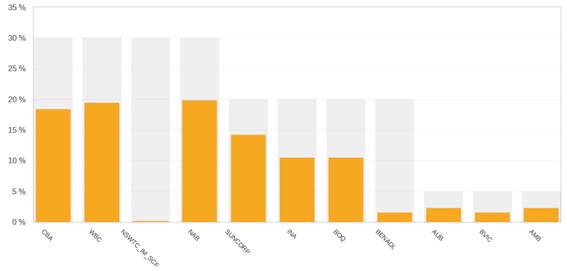
Credit Quality Compliance

Maturity Compliance

Social
/ Cultural
Maximising performance of returns enables the organisation
to leverage additional funding received as a result of investment performance
and use these towards community projects, programs and services.
Attachments
Nil
Notices of
Motion
12 June 2024
13.1 Financial
Assistance Grants............................................................................... 609
|
Council 12
June 2024
|
Item 13.1
|
13.1. Cr Russell Fitzpatrick - Financial Assistance Grants
Notice of Motion
That Bega Valley Shire Council write to the
Federal Local Government Minister and the NSW Local Government Minister and the
NSW Grants Commission and request amendments to the allocation and timing of
payment of the Financial Assistance Grants as follows:
a. Change
the population (per capita) factor in the general-purpose grant allocation from
30% down to 10%
b. Ensure
that the Objects of the Local Government (Financial Assistance) Act
1995 are being adhered to and
consider a review of the Act given the last review was in 2001
c. Ensure
that the National Principles governing the allocation of the Financial
Assistance Grants are adequate and are being met
d. Cease
prepayment of Financial Assistance Grant in the preceding financial year in which
is it due to be received
Background
Local Government Financial Assistance Grants (FA Grant) are
paid to councils to help them deliver services to their communities. The funds
are paid annually by the Federal Government under the Local Government (Financial
Assistance) Act 1995.
The FA Grant program consists of two components:
· a
general purpose component which is distributed between the states and
territories according to population (i.e. on a per capita basis), and
· an
identified local road component which is distributed between the states and
territories according to fixed historical shares.
Both components of the grant are united in the hands of
local government, allowing councils to spend the grants according to local
priorities. Local government grants commissions in each state and the Northern
Territory recommend the distribution of the funding under the FA Grant program
to local governing bodies in accordance with the Act and the National
Principles for allocating grants.
The FA Grant allocation for Bega Valley in 2023-24 was
$9,412,362. 94% of this was prepaid in last financial year.
Council has supported ongoing advocacy led by the Australian
Local Government Association to increase the FA Grant allocation to 1% of
Federal taxation revenue and restore the FA Grant funding lost in the 2014-15
indexation freeze. As part of the Federal Budget announcement in May 2024 the
FA Grant allocation has increased by $155m which is only aligned with
legislated indexation formula. With the apparent reluctance from the Federal
Government to make changes to the overall FA Grant allocation, outside of
annual indexation, this motion provides an option to improve outcomes for
Councils, particularly those in regional areas with limited revenue generating
capacity. The current requirement that each council receives 30% of its
per capita share of FA Grants is preventing state grants commissions from
redistributing to councils that require greater assistance. This motion
recommends reducing that population factor down to 10%. The 2008 Productivity
Commission Report ‘Assessing Local Government Revenue Raising
Capacity’ outlined that a number of councils, particularly in capital
cities and urban developed areas, have the means to recover additional revenue
from their communities (with stable or growing populations) sufficient to cover
their expenditures without relying on grants. However, a significant number of
councils, particularly in rural (87%) and remote (95%) areas would remain
dependent on grants from other spheres of government to meet their current
expenditure. Given the differences in the scope to raise additional revenue
across different classes of councils, there is a case to reduce the population
provision within the general purpose component of the FA Grant allocation to
ensure that rural and regional councils receive a more equitable share. The
Objects of the Local Government (Financial  Assistance)
Act 1995 are outlined below.
Assistance)
Act 1995 are outlined below.
As per the Objects of the Act, the FA Grant is provided for
the purposes of improving the capacity of local government, which it
undoubtedly does, as without the FA Grant allocation many rural and regional
Councils would be insolvent. The issue is that the total FA Grant allocation is
no longer adequate given the increasing demands placed upon Councils, the FA
Grant indexation freeze in 2014-15 and the indexation alignment with CPI which
does not accurately reflect the real costs Councils are absorbing to deliver
services. Regional Councils are barely surviving financially. This motion calls
for a review of the Objects of the Act to ensure they are being met and it
considers the contemporary context in which Councils operate. It is very
different to 20 years ago when the Act was introduced.
With the percentage drop in Federal
Taxation Revenue of the FA Grants from 2009 to 2024 from 1% to now .5% the
result has seen a number of Councils requiring large rate increases in NSW. The
below table indicates the number of Councils seeking rate increases as their
revenue sources are typically constrained whilst cost of service delivery and
expectations continue to rise. This table doesn’t include the many
Councils who have attempted to or should be pursuing the arduous special rate
variation process. This is a clear marker of the financial sustainability
issues Councils are facing.
|
2012
|
21 Councils
|
|
2013
|
13 Councils
|
|
2014
|
23 Councils
|
|
2015
|
32 Councils
|
|
2016
|
22 Councils
|
|
2017
|
10 Councils
|
|
2018
|
8 Councils
|
|
2019
|
13 Councils
|
|
2020
|
13 Councils
|
|
2021
|
1 Council
|
|
2022
|
8 Councils
|
|
2023
|
4 Councils
|
|
2024
|
17 Councils
|
|
2025
|
9 Councils
|
In most cases the rates increase requested
was over 20% with the top 10 being over 60% increases and mainly in regional
NSW. Some Councils are already going for a 2nd large increase some 3
years after they were granted a rate rise.
 Section 6 of the Act provides for the formulation of National principles governing the allocation by States among local governing bodies.
Section 6 of the Act provides for the formulation of National principles governing the allocation by States among local governing bodies.
I call particular attention to Clause 3
where the principal of full horizontal equalisation is outlined. This includes
taking into consideration the differences in the expenditure required to
deliver services and the ability of Councils to generate revenue. I would
suggest that this is not being fully adhered to and a recent presentation to
Council from the NSW Local Government Grants Commission confirmed that. The Queensland Local
Government Grant HCommission recently implemented a
new methodology that included greater focus on the difference between a
council’s potential to raise revenue and its actual capacity to raise
revenue, and inclusion of cost factors that better reflect an individual
council’s operating environment (remoteness, dispersion and
socio-economic conditions). The National Principles need to be met, with a
level of uniformity across the country.
In respect to the local road’s
component of the FA Grant allocation the National Principles state that in
assessing need consideration should include length, type and usage of roads.
There is no allowance under this assessment for heavy vehicle movements across
regional roads and merely car movements so the amount per kilometre paid to
city councils is 4 to 5 times higher than country councils. The roads
assessment also doesn’t adequately consider the population base using the
road network within an LGA. In Bega Valley we have over 1,500km of road network
to maintain, significantly more than most metro Councils.
The National Principles also fail to
consider the disadvantage factor in relation to non-rateable land. Consistently
we have stated that National Parks and State Forests should pay a rate of some
kind but that is unlikely to occur so the FA Grant allocation under the full
horizontal equalisation approach should include this factor. The National
Principles also call for the consideration of other grant funding sources
available to Councils. These grant programs are typically competitive across
the sector and are not an equitable allocation. Councils require resources to
apply for grants, deliver the projects and acquit them. The quantum of
available funding and priorities shift with the ever-changing political
landscape.
I commend the motion to you.
Cr Russell Fitzpatrick
Attachments
Nil
Questions with
Notice
12 June 2024
14.1 Cr
Fitzpatrick - Federal Budget announcement of $100m for footpaths.......... 614
|
Council 12
June 2024
|
Item 14.1
|
14.1. Cr Fitzpatrick - Federal Budget announcement of $100m for
footpaths
Cr Fitzpatrick asked with the recent Federal Budget
announcement of $100m for footpaths will council set a priority for what it may
apply for under this in line with possible funding also from the State
Government’s active transport program.
How will Council prioritise the project that it may apply funding
for noting that we do not have the conditions of the funding yet?
Cr Russell Fitzpatrick
Staff
response
Council staff have yet to see the detail behind the
announcement in the Federal Budget regarding Active Transport project funding.
Our initial understanding is simply that it is $100M allocated across all
states and territories for upgrade and construction of new bicycle and walking
paths. We are unsighted as to how this will be apportioned, whether we will
need co-contributions, and whether this could be used for maintenance
activities and not just new capital works that will increase our asset base and
incur increased ongoing operational costs. We expect to have more details
prior to 1 July 2024.
Staff are currently finalising a shire wide Active Transport
Strategy that seeks to understand the wants, needs and priorities of residents
and visitors to Bega Valley Shire into the future. If adopted by Council,
this strategy will guide staff in applications for state and federal grants
(including to this fund) for agreed priority and targeted projects.
The media releases we have seen so far are copied
below:
National Active Transport Fund
The Albanese Government is investing to
ensure our cities and regional centers across the country are more liveable,
active and connected.
At the upcoming Budget, we are committing
$100 million to a new national Active Transport Fund that will upgrade and
deliver new bicycle and walking paths.
This will support zero emissions travel,
provide a safer environment for cyclists and pedestrians, and promote active
and liveable communities.
The program guidelines will be developed in
consultation with states and territories are expected to be made public ahead
of a 1 July 2025 start.
Safe and accessible active transport
options, like walking and cycling, help boost social connection, promote
healthy choices and make our cities and regions more vibrant places to live.
That’s why the Albanese Government is
investing in the infrastructure that helps people get to school, work and local
services safely without needing to jump in the car.
We are getting on with delivering a better
future for all Australians, one made in Australia that builds economic
opportunity and thriving communities
Quotes attributable to Minister for Infrastructure,
Transport, Regional Development and Local Government Catherine King:
“We want communities to thrive whether they be
in cities or in the regions.
“We are investing to build economic opportunity
and also the opportunity for people to enjoy the spaces and places they live
in, building connection and improving safety.”
Active Transport Fund
Commitment
Australian Government Commitment: $100 million
Project Scope
The program will provide funding to upgrade and construct new bicycle and walking paths to
encourage the safe use of active transport in Australian communities.
Timeline
Guidelines for the fund are currently being developed
and further guidance will be released in due course.
Project Objectives
· increase the
safety of cyclists and pedestrians by providing dedicated, separate paths
reducing the risk of collision incidents
· provide additional
safe and healthy ways for people to move around their communities, either on
their bikes or by walking
· create more
liveable communities
· provide lower cost
transport options
· support zero
emission travel
Media release, Catherine King, Minister for
Infrastructure, Transport, Regional Development and Local Government (7 May
2024)
Attachments
Nil
Questions
without Notice
12 June 2024
15.1 Cr
Nadin - Update on Boydtown Estate Subdivision......................................... 617
|
Council 12
June 2024
|
Item 15.1
|
15.1. Cr Nadin - Update on Boydtown Estate Subdivision
At the 8 May 2024 Ordinary Council
meeting Cr Nadin asked for an update on the Boydtown Estate Subdivision.
Chief Executive Officer, Mr Anthony
McMahon took the question on notice.
Director Community Environment and Planning
Staff
response
Development Application 2020.310
was submitted to Council in August 2020 by the Lyon Group and is being project
managed by KPMG. The initial design proposed the creation of 76 residential
allotments, located to adjoin the existing Ben Boyd Parade subdivision, which contains
some 40 existing residential allotments.
Throughout the assessment, various
revisions, amended plans and supporting reports have been submitted to address
key issues relating to topography, proximity to riparian corridors, bushfire
hazard, access arrangements, cultural heritage assessment and servicing
requirements.
The latest amended plan proposes
the creation of 59 residential allotments. The reduction in the number of
allotments is in response to the various site constraints mentioned above.
At the time of writing this
response, Council’s assessment officers were awaiting final comments from
the NSW Rural Fire Service and to complete the review of the amended
documentation.
Attachments
Nil
















































































































